
- About
- Library
-
Essays
Eric Dinerstein William C. Young
- Plants
- Birds
FIELD NOTES FOR PANAMA AND BELIZE
March 23 - April 18, 2016
William Young
March 23I returned to Panama after having visited in 2012. On that trip, I visited Canopy Tower, which is in the Soberania National Park not far from Gamboa, and Canopy Lodge, in El Valle de Anton. I really enjoyed my first trip, so I decided to return. On my previous visit, the Canopy Camp in the Darien had not yet opened. On this trip, I scheduled a week at all three of the venues, plus a week at Chan Chich Lodge in Belize.
My direct flight from Dulles Airport to Panama City was uneventful. To reach Canopy Lodge, we drove through Panama City. I saw hundreds of Brown Pelicans, many of whom were plunge-diving. Some Neotropic Cormorants and Magnificent Frigatebirds were mixed in, along with Great Egrets and Laughing Gulls. I saw a lot of Great-tailed Grackles, and both Turkey and Black Vultures.
At the lodge, Plain Chachalacas were in the trees near my room. Clay-colored Thrushes were around, as was a Rufous-tailed Hummingbird. I saw a Blue-gray Tanager as well as a few Palm Tanagers and a Buff-throated Saltator. Raul Arias, the owner of the Canopy properties, joined us for dinner. I gave him a copy of my Fascination of Birds book. He said Graeme Gibson, the partner of Margaret Atwood, had been there the day before. After dinner, I heard Smoky Jungle Frogs outside my room.
March 24We left a little after six and went to Anton, Santa Clara, El Chiru, and Juan Hombron, including a lunch stop at the beach house of Raul Arias. The highlight was seeing an estimated 50,000 migrating hawks at one time. Most were Broad-winged Hawks, but there were some Swainson's as well. They were very high in the sky and looked like stars in a planetarium.
We saw a lot of other North American birds who were either migrants or birds who also are resident to Panama. A flock of Blue-winged Teal were by the shore of a lake, as were some Black-necked Stilts. We saw a Great Blue and Little Blue Heron, and Cattle, Snowy, and Great Egrets. There were considerable numbers of both Glossy and White Ibises, as well as Turkey and Black Vultures. We saw Lesser Yellow-headed Vultures, who look like Turkey Vultures with yellow-orange heads and a slightly different wing pattern. A female Northern Harrier flew low over the fields. We saw Solitary and Spotted Sandpipers together, and one each of Greater Yellowlegs, Willet, and Whimbrel. A lot of Laughing Gulls were at the beach near Raul's house, along with a Royal Tern and a bunch of Sandwich Terns. Two Mourning Doves were in a tree. An American Kestrel had caught a Plain-breasted Ground-Dove and put it in a tree before flying away. We saw about a thousand Barn Swallows, many of whom were sitting on wires. I saw a male and female Yellow Warbler. There were a couple of Eastern Meadowlarks and a male Baltimore Oriole. Great-tailed Grackles were plentiful.
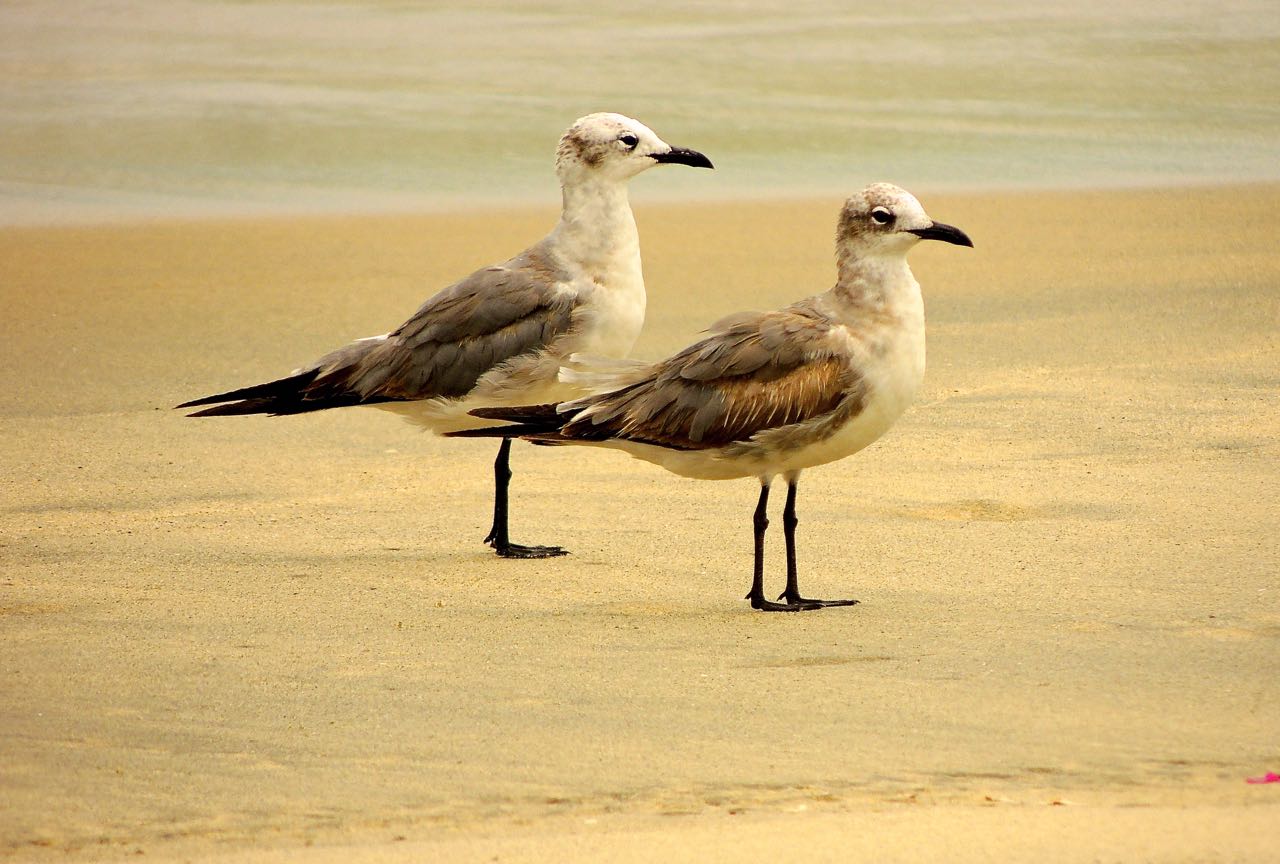 Laughing Gulls - Photo by William Young
Laughing Gulls - Photo by William Young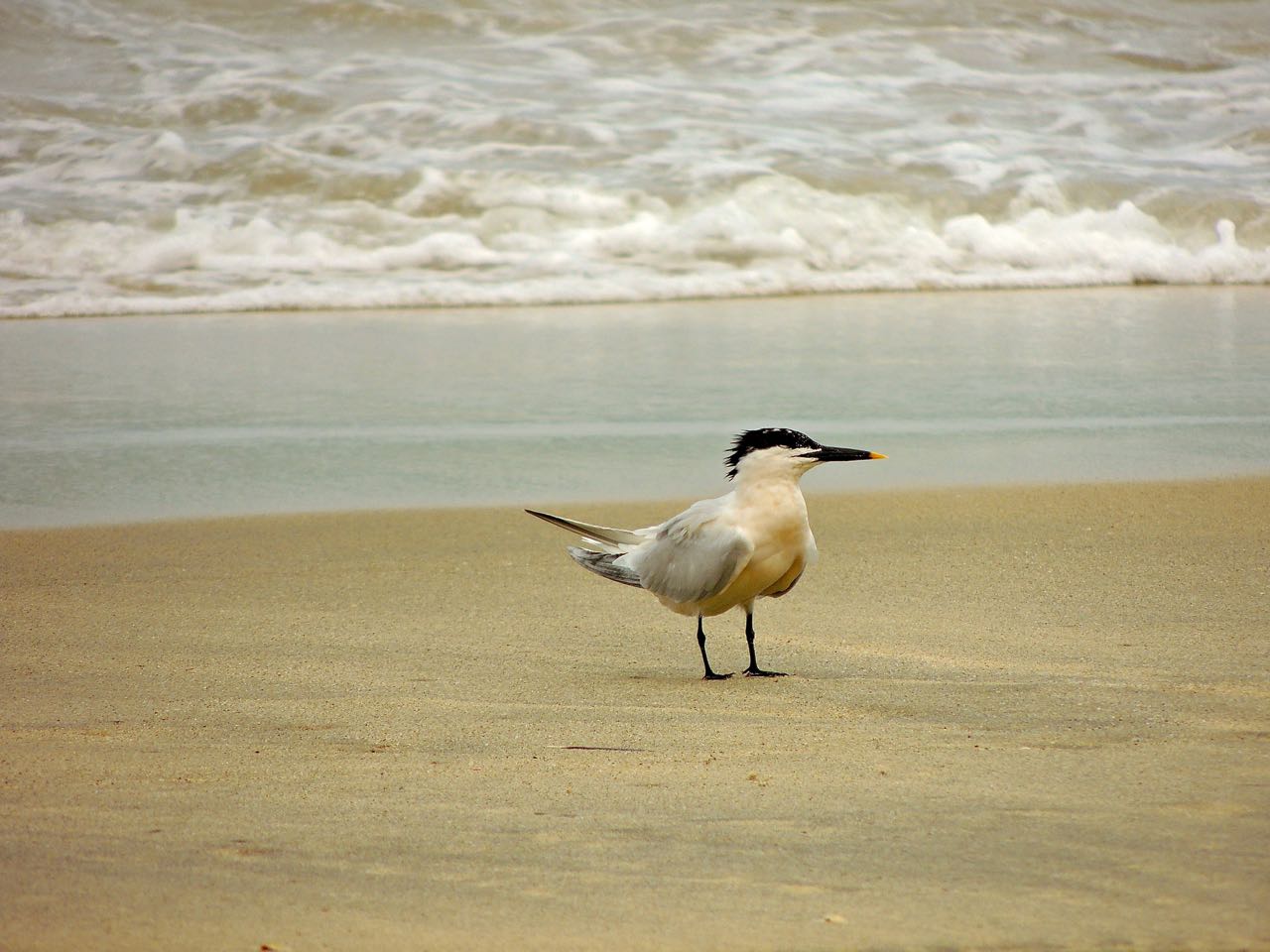 Sandwich Tern - Photo by William Young
Sandwich Tern - Photo by William Young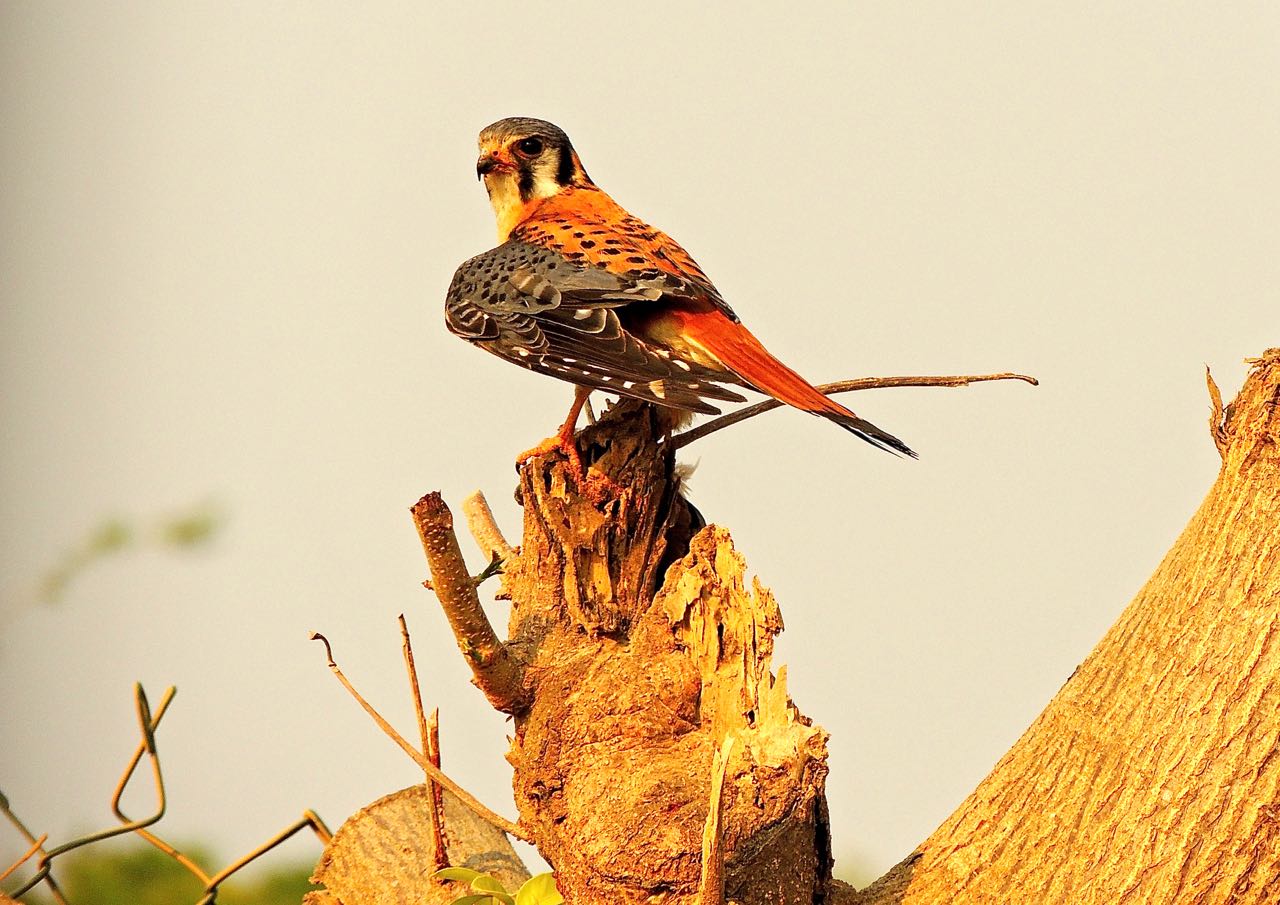 American Kestrel - Photo by William Young
American Kestrel - Photo by William Young Eastern Meadowlark - Photo by William Young
Eastern Meadowlark - Photo by William YoungAnother highlight was seeing a male Lance-tailed Manakin. He was black, with a sky-blue back, bright red crown, and orange legs. We later saw a female, who is mostly olive green. We saw both Crested and Chestnut-headed Oropendolas — the Crested is larger. One of the first birds I saw this morning was a female Hepatic Tanager while we were unsuccessfully looking for a Wedge-tailed Grass Finch. We saw a couple of Black-striped Sparrows, who are mostly green with black and gray stripes on their head. Two Variable Seedeaters were foraging in some bushes — they have a black back, white belly, and a black breastband. The Thick-billed Seed Finch is all black with a grosbeak-type bill, and the female Ruddy-breasted Seedfinch is all ruddy. There were quite a few Blue-gray Tanagers, some Palm and Crimson-backed Tanagers and a Red-legged Honeycreeper. We saw a cashew tree and a Crimson-patched Longwing butterfly.
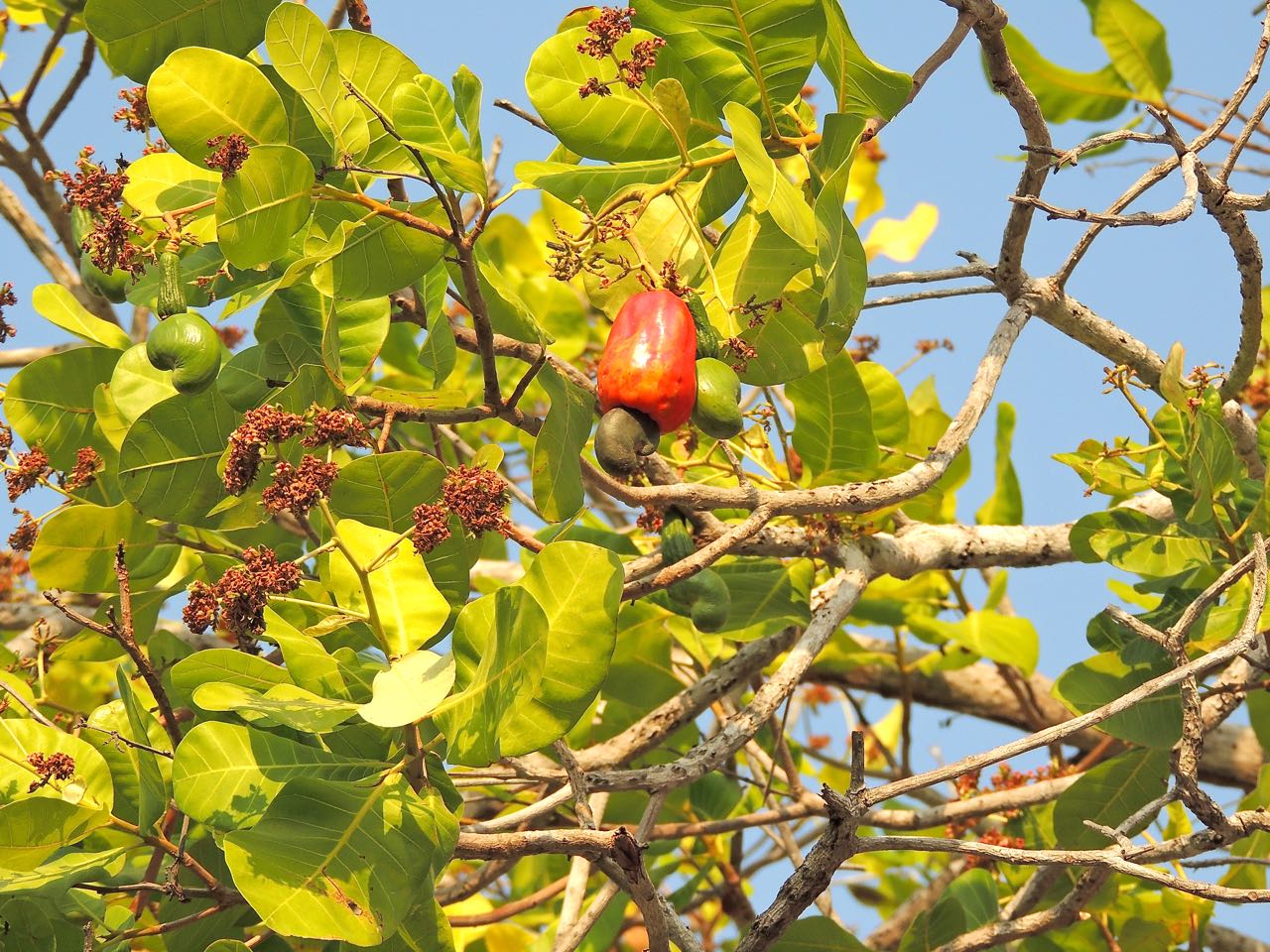 Cashew Tree - Photo by William Young
Cashew Tree - Photo by William Young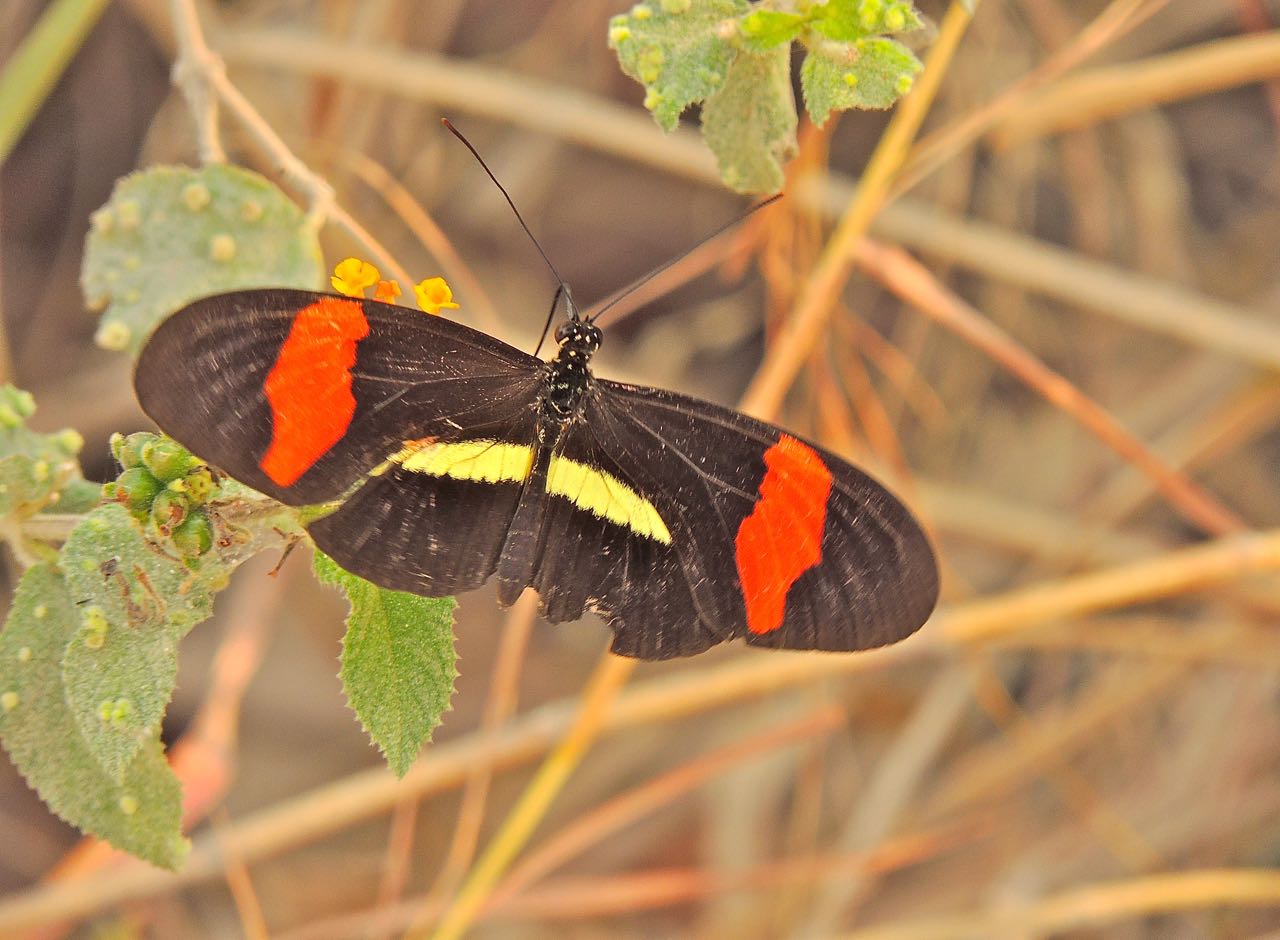 Crimson-patched Longwing - Photo by William Young
Crimson-patched Longwing - Photo by William YoungI saw a Tropical Mockingbird after lunch. Clay-colored Thrushes were common, and I heard one singing right outside my door this morning — they sound like American Robins. Scrub-Greenlets are yellow underneath and have a gray cap, while the Yellow-green Vireo looks like a Red-eye who is yellowish underneath. The Yellow Tyrannulet is a small bird who is yellow below and has wingbars. Southern Beardless Tyrannulets are small drab birds. The Yellow-bellied and Lesser Elaenias have a little more color, but not much. The Common Tody-Flycatcher is small, with a black cap and yellow underparts. Panama Flycatchers are Myiarchus flycatchers who have a more slender appearance than a Great Crested. I saw the huge bill on a Boat-billed Flycatcher. Tropical Kingbirds were everywhere, and I enjoyed seeing Fork-tailed Flycatchers.
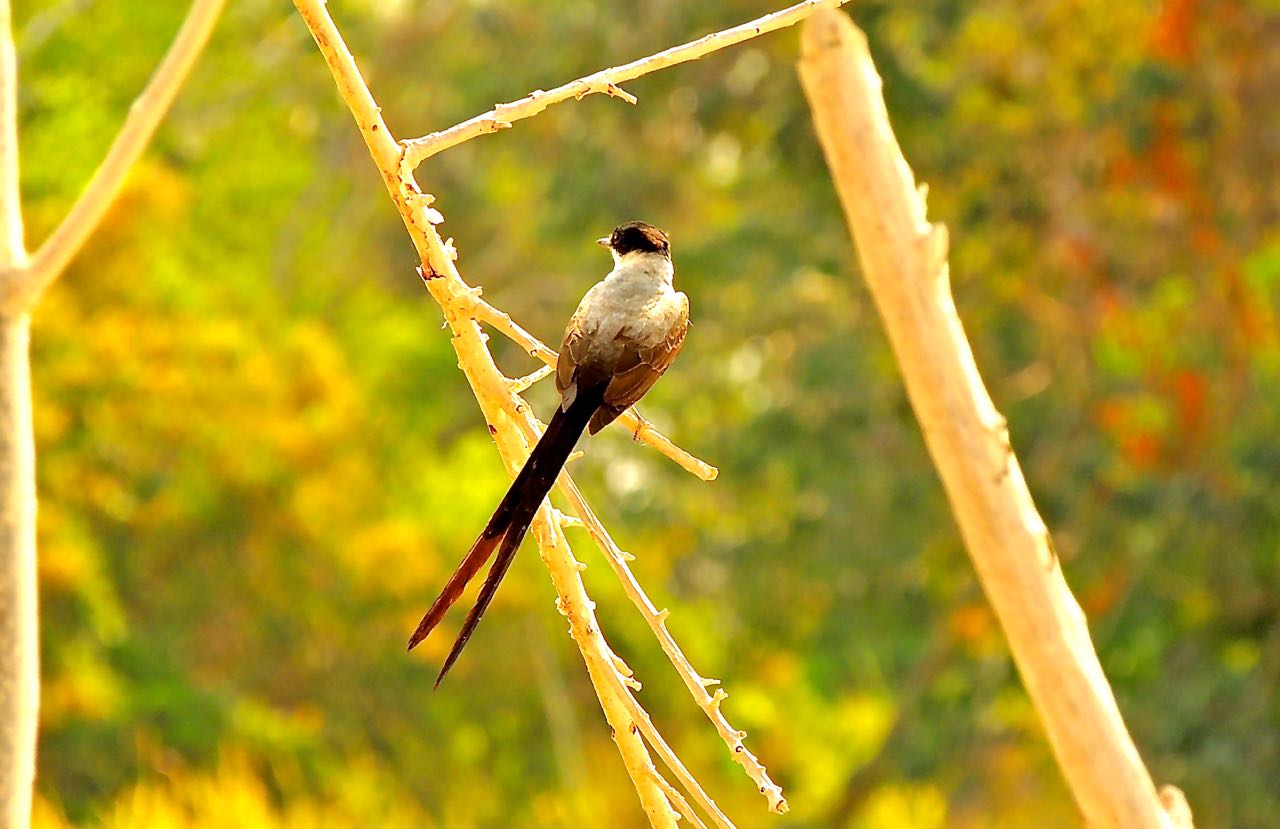 Fork-tailed Flycatcher - Photo by William Young
Fork-tailed Flycatcher - Photo by William YoungWe had a close look at a Straight-billed Woodcreeper, who has a light bill. A Lineated Woodpecker flew across a road we were standing on — it looks like a Pileated. We had close looks at Red-capped Woodpeckers, who look like Red-bellies. We saw quite a few Orange-bellied Parrots, although it is difficult to get a close look — they seem skittish. We saw a pair of Crested Caracaras in a tree and one in the road. Some Yellow Headed Caracaras were flying. One of the best birds of the day was an Aplomado Falcon perched in a tree. Savannah Hawks are buffy, with black wingtips and a black trailing edge to their wings. A Roadside Hawk was perched in a tree — it had a gray head rather than the less common chocolate-brown head that I saw on one in Buenos Aires.
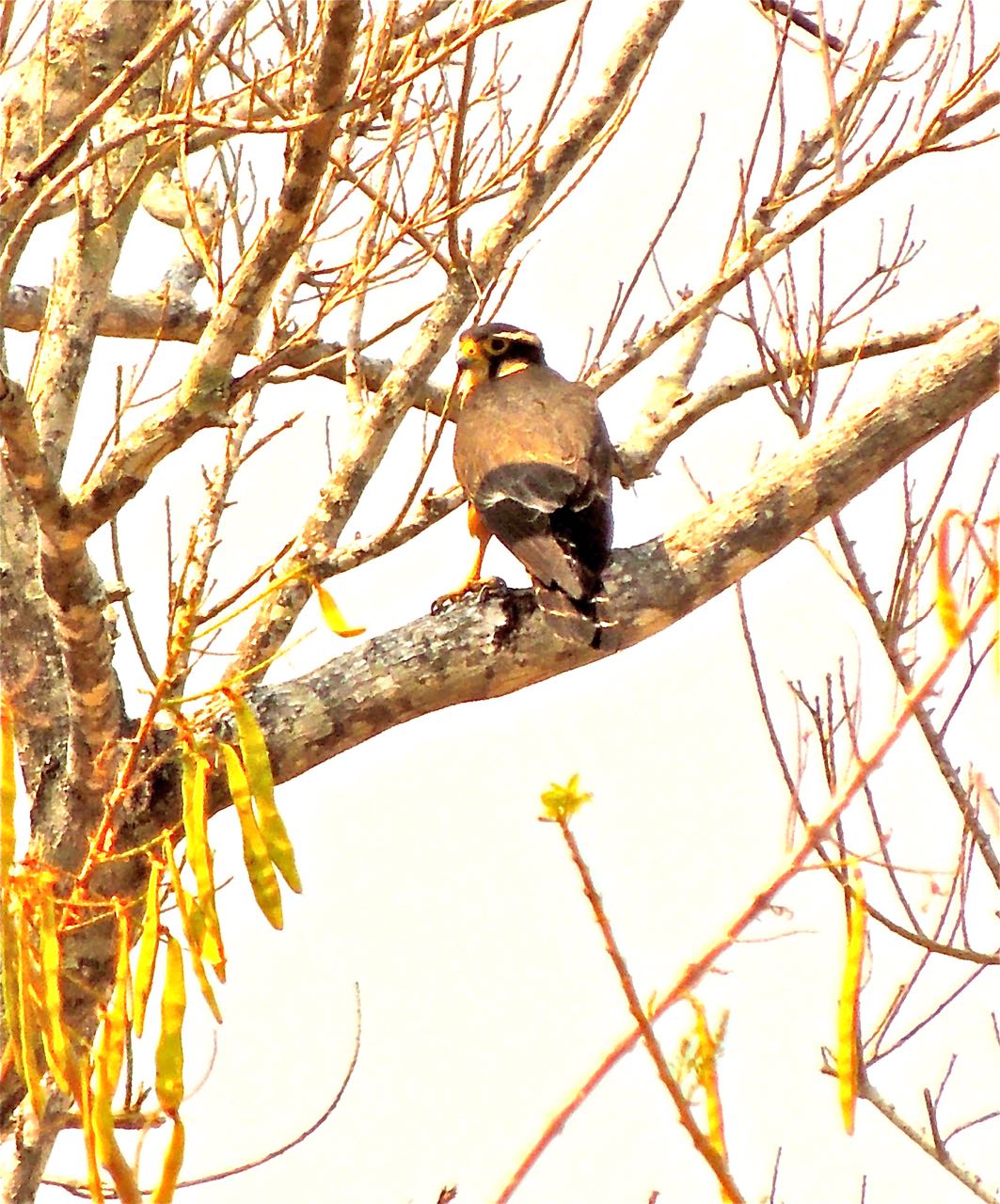 Aplomado Falcon - Photo by William Young
Aplomado Falcon - Photo by William YoungNot long after we started, we saw and heard a Whooping Motmot, who is the former Blue-crowned Motmot. One was in a tree, and I could see the racquets on the tail. We saw a few Veraguan Mangos, who used to be considered a Panama endemic until one was found in Puerto Rico. I also had a scope view of a Sapphire-throated Hummingbird. I had nice looks at both Groove-billed and Smooth-billed Anis — they are difficult to tell apart. In one spot this morning, we saw a Striped and a Squirrel Cuckoo very close to each other. I saw White-tipped Doves in a few places and could see the white tips on the tail when they flew. Ruddy Ground-Doves were in numerous places. This morning, we saw a male and female Plain-breasted Ground-Dove on the ground. Two Scaled Pigeons flew by, but I did not get a good look. We saw Wattled Jacanas in a few places, including two in the road, and I saw their long spindly toes. Southern Lapwings were common. Gray-headed Chachalacas were in the trees.
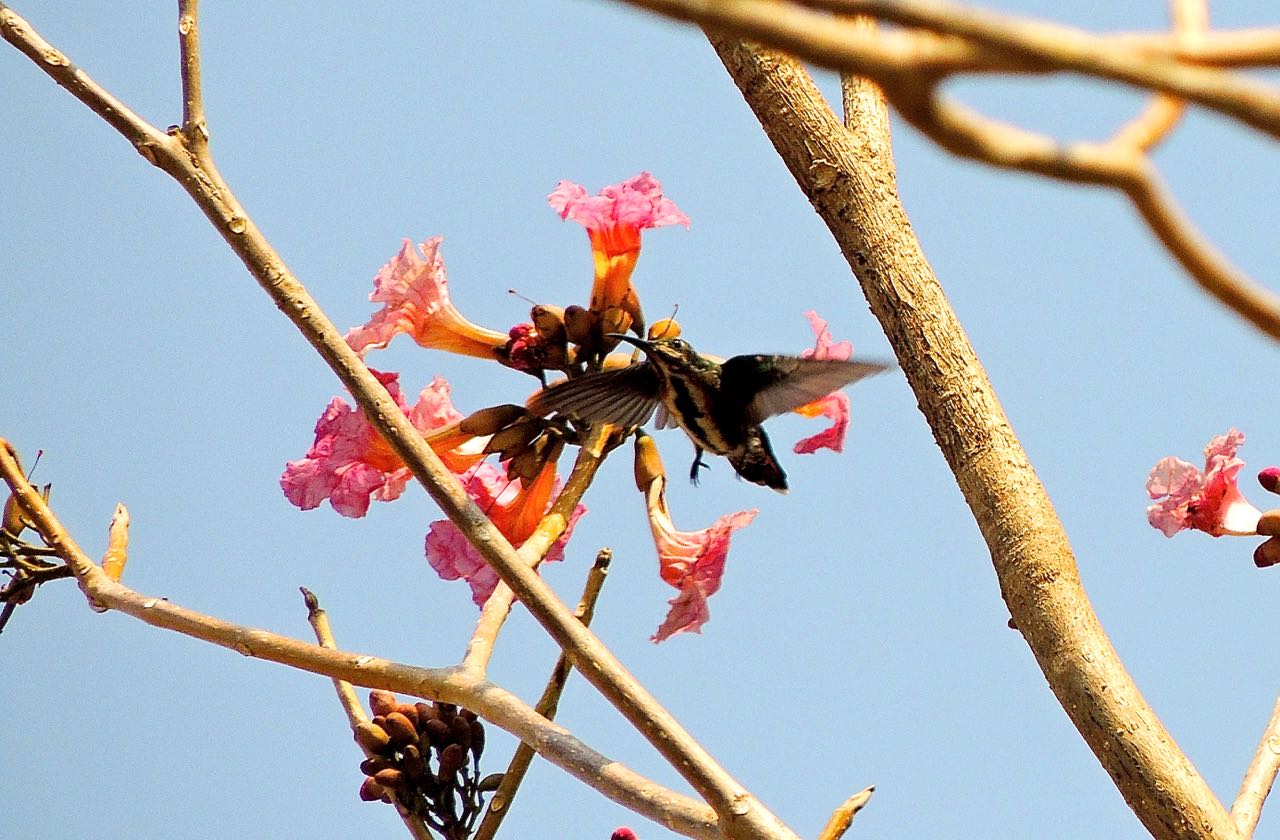 Veraguan Mango - Photo by William Young
Veraguan Mango - Photo by William Young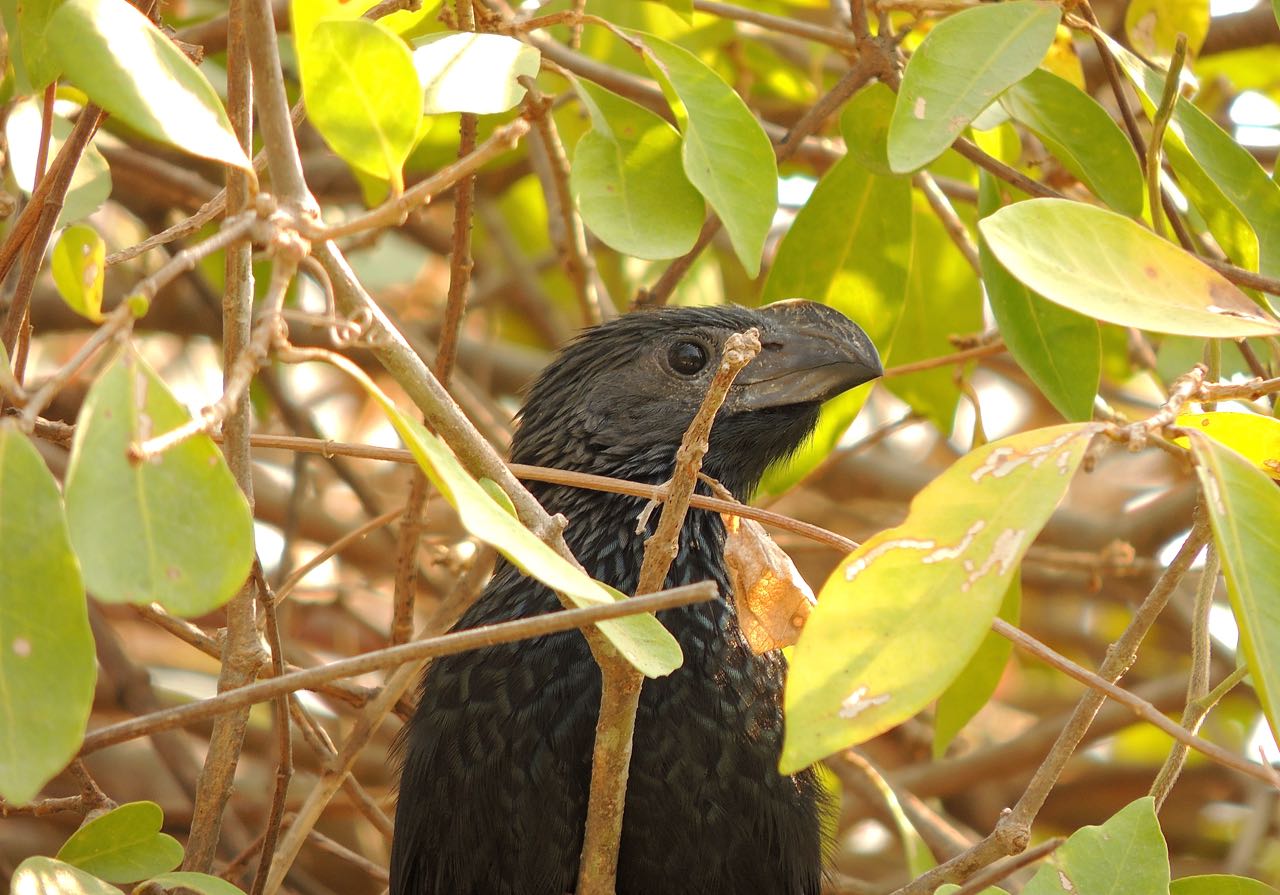 Groove-billed Ani - Photo by William Young
Groove-billed Ani - Photo by William Young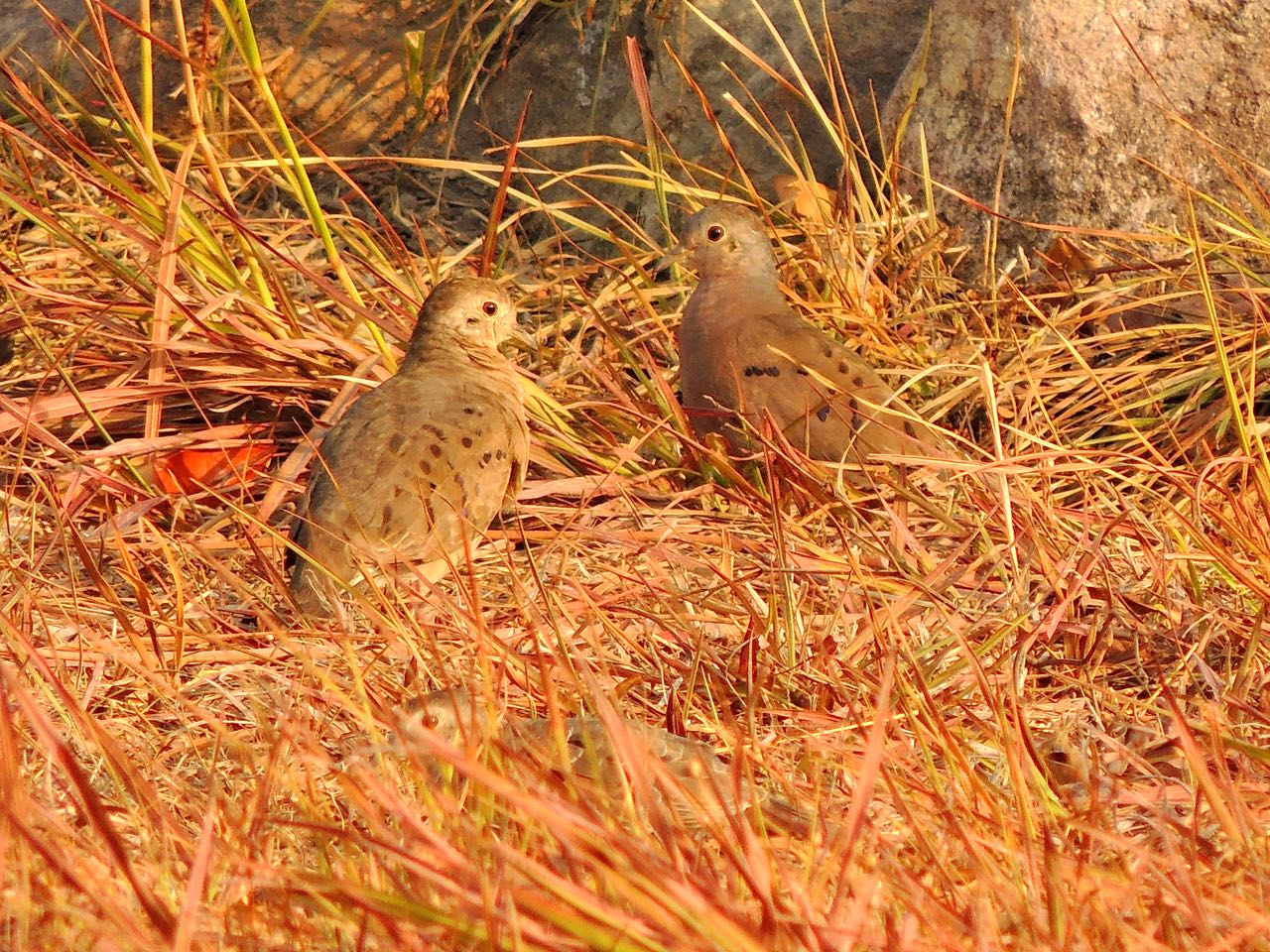 Plain-breasted Ground-Doves - Photo by William Young
Plain-breasted Ground-Doves - Photo by William Young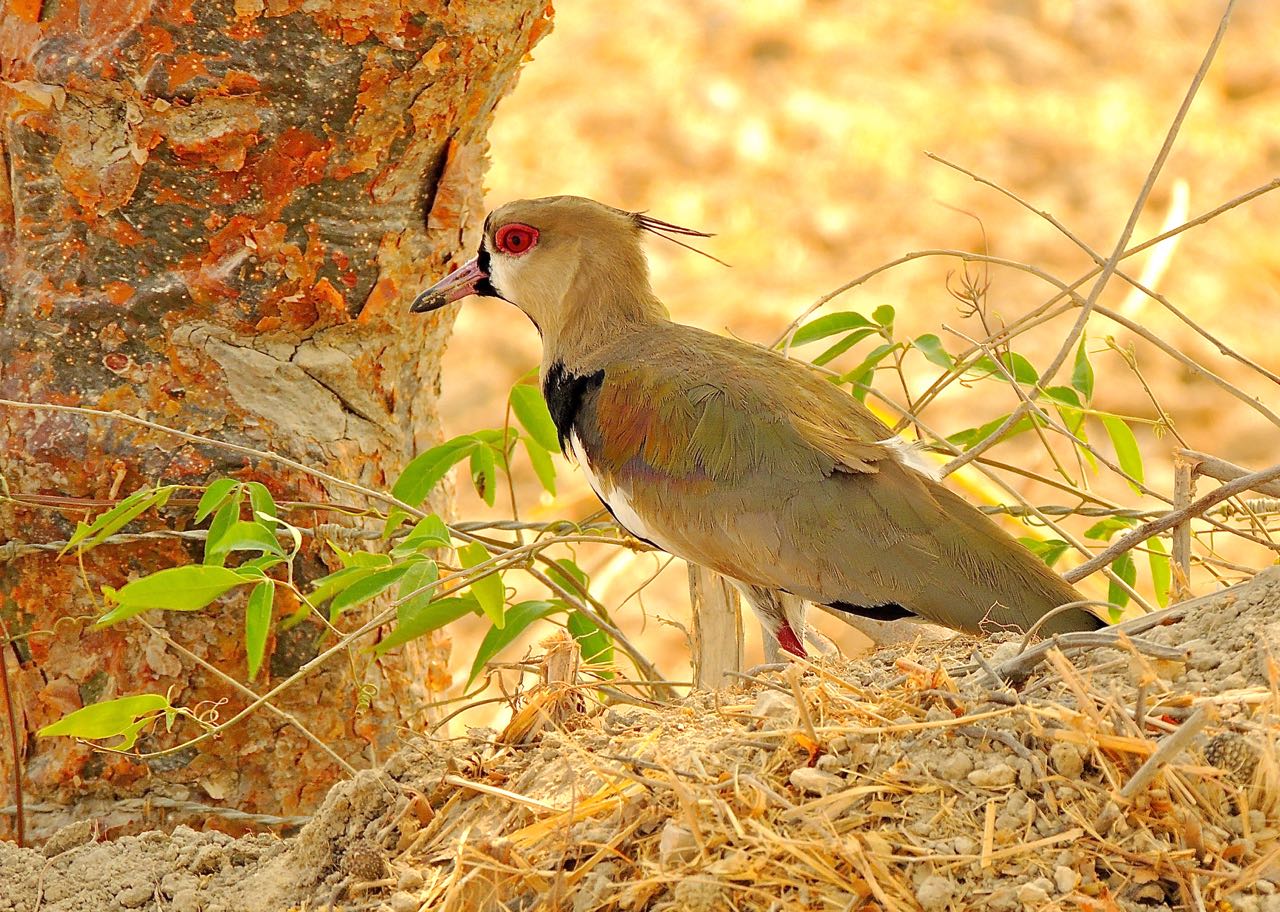 Southern Lapwing - Photo by William Young
Southern Lapwing - Photo by William YoungThe beach by Raul's house where we ate lunch had about 200 Brown Pelicans and a lot of Magnificent Frigatebirds. On a piling, we saw a group of Blue-footed Boobies, and one Brown Booby was among them.
March 25This morning, we went to Canopy Adventure and La Mesa. We saw a Sunbittern with a bird in it, but we could see only the top of its head. We later had really good looks at a Sunbittern along the stream. I never saw the wing pattern when it flew. In the same area was a Hoffman's Two-toed Sloth in a tree. Shortly before we went, we saw a Black-faced Antthrush walking around the lodge property. It is rufous, with a black face and a stubby tail that it cocks. A Gray-necked Wood-Rail was in the same area.
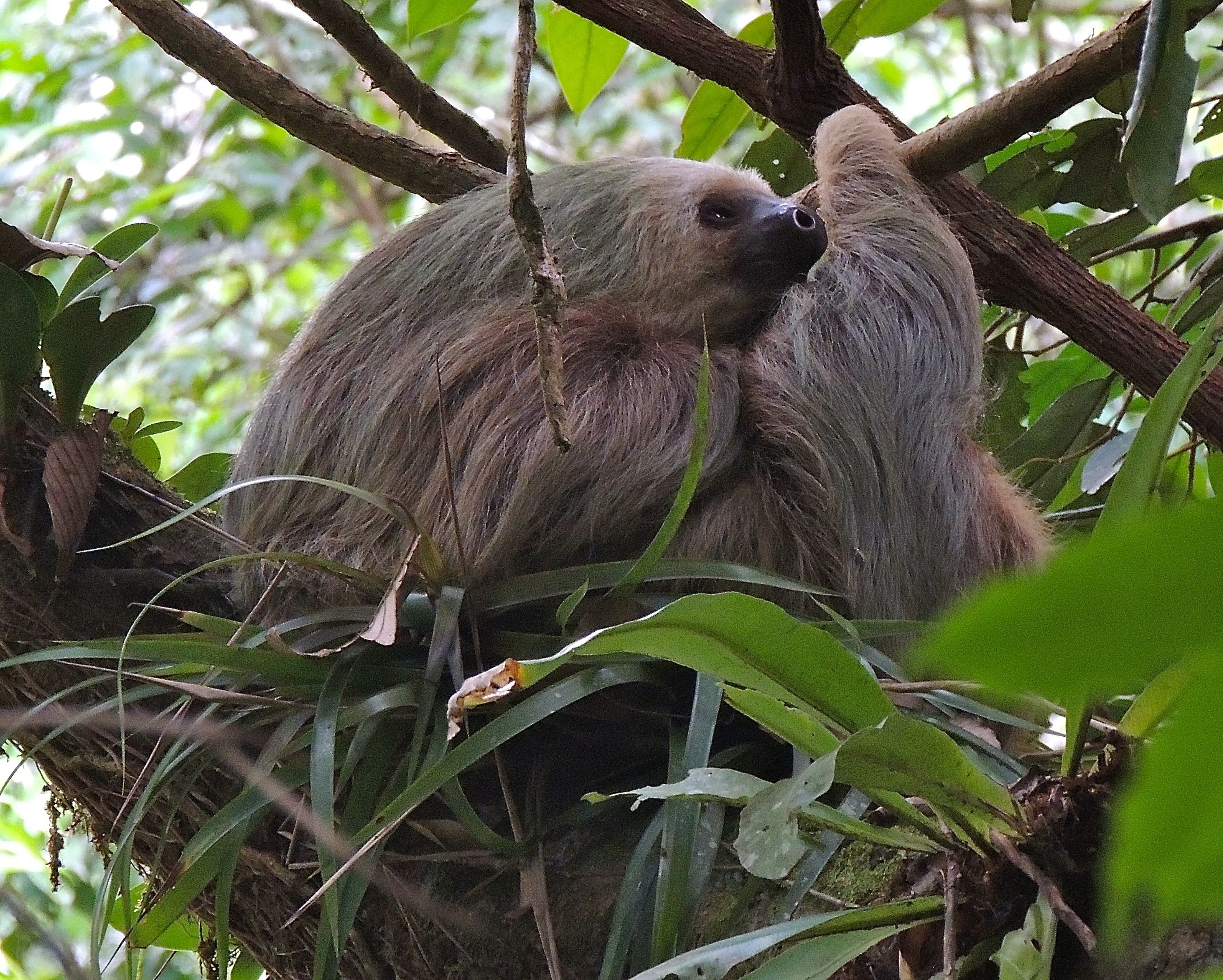 Hoffman's Two-toed Sloth - Photo by William Young
Hoffman's Two-toed Sloth - Photo by William YoungI saw a lot of warblers today. I was especially glad to see about 4 Golden-winged Warblers, because I rarely see them in the US anymore. We found an ant swarm this afternoon, and I saw a young male Mourning Warbler. Other warblers I saw today included Black-and-white, Chestnut-sided, Tennessee, Canada, and Northern Waterthrush, as well as Rufous-capped and Buff-rumped. The Rufous-capped sometimes hopped on the road, and I saw the Mourning right next to the road. At the ant swarm, we also saw two White-bellied Antbirds and a pair of Red-crowned Ant-Tanagers. The male antbird is chestnut with a dark face, while the female lacks the black face. A Black-striped Sparrow sang incessantly, and a number of wrens were nearby, including Bay and Plain. Earlier, I had seen Rufous-breasted Wrens. Most of these wrens sing loudly. A Long-billed Gnatwren was in the tangle of a tree — they seem to like tangles. A new thrush for today was the Pale-vented, who is mostly rufous. And a new dove was the Gray-chested, whom I saw in a scope.
I saw a lot of tanagers. A bright red Scarlet Tanager was in a tree. I had nice looks at White-lined Tanagers, who are mostly black. Bay-headed Tanagers are quite beautiful, with their bay head and blue-and-green body. It contrasted the three monochrome Plain-colored Tanagers. I saw a Silver-throated Tanager, but the light was not great. Quite a few Crimson-backed and Flame-rumped Tanagers were around. I saw both Green and Red-legged Honeycreepers — including a great look at the red legs on the latter. I saw my first Bananaquits of the trip, including one climbing in a banana flower. I had close looks at Yellow-faced Grassquits, who are tiny. We went past a field that had three Shiny Cowbirds and two Giant Cowbirds, along with an Eastern Meadowlark and a House Wren. I saw a couple of Baltimore Orioles and about eight Chestnut-headed Oropendolas. I saw a female Lesser Goldfinch perched in a tree. I had nice looks at Tawny-capped Euphonias, and Thick-billed Euphonias are common around the lodge.
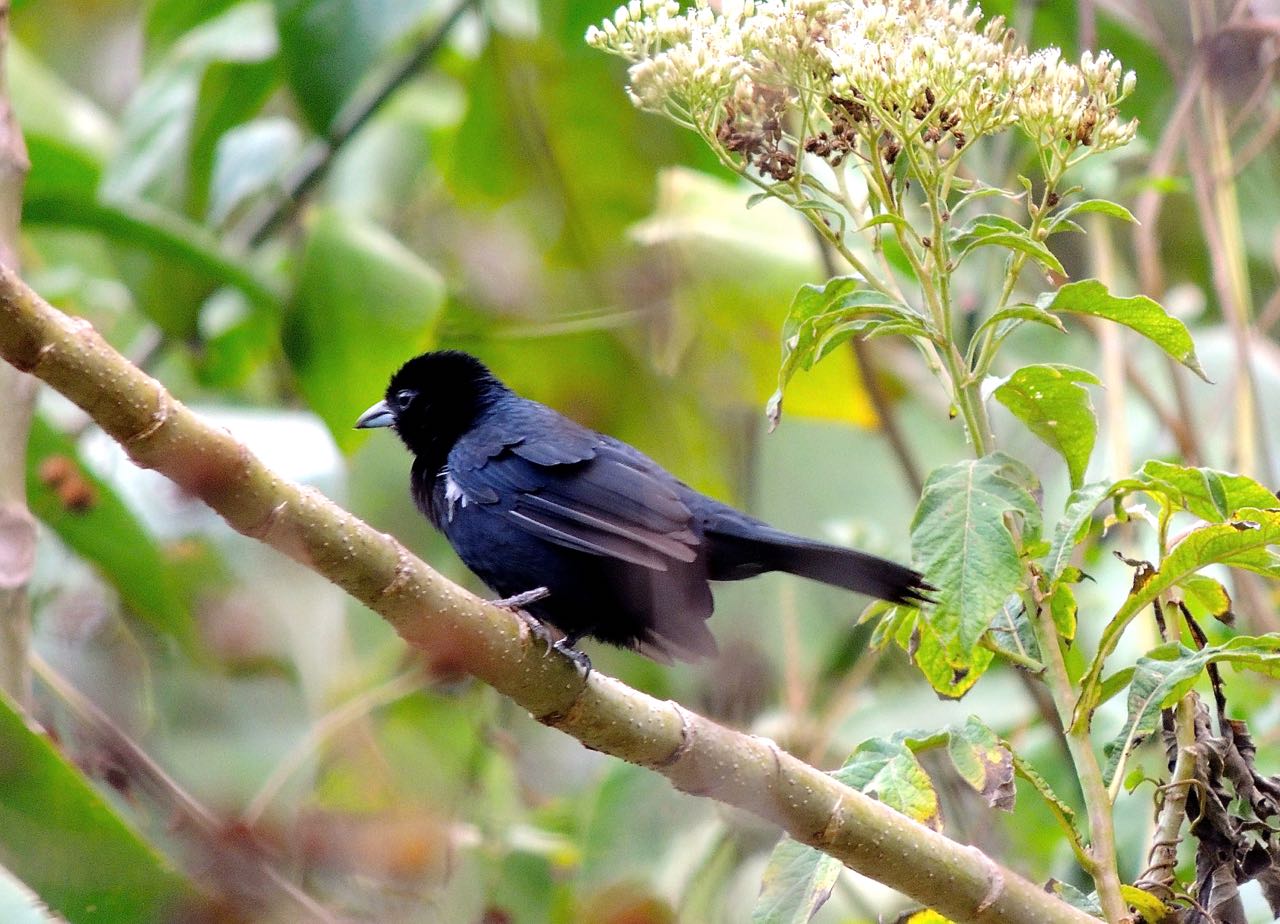 White-lined Tanager - Photo by William Young
White-lined Tanager - Photo by William Young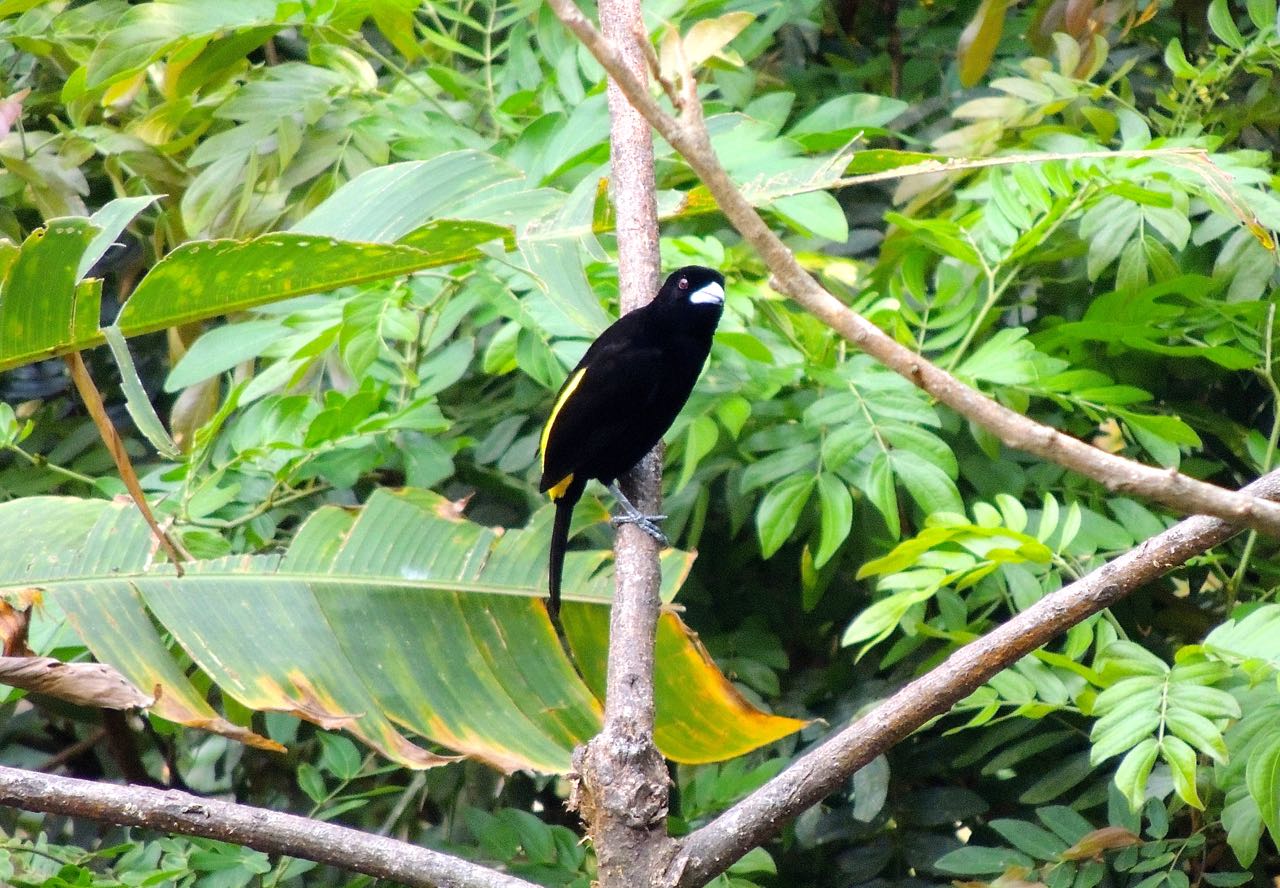 Flame-rumped Tanager - Photo by William Young
Flame-rumped Tanager - Photo by William Young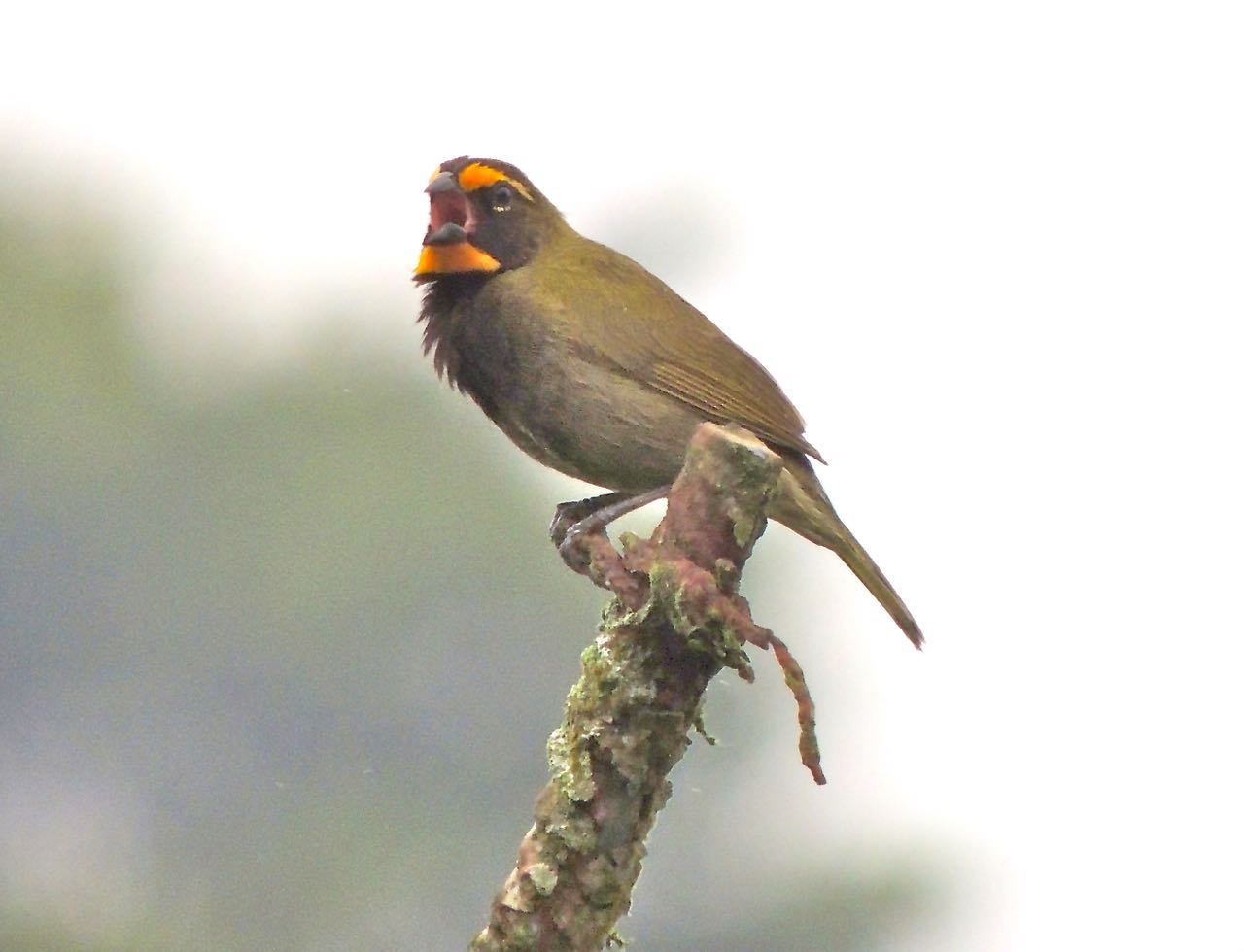 Yellow-faced Grassquit - Photo by William Young
Yellow-faced Grassquit - Photo by William YoungI had a good look at a Black-chested Jay and could see the light eye. We saw Masked Tityras, who are mostly white, with a black mask. The Yellow-margined Flycatcher is about the size of an Empidonax and quite yellow below. Near where the lodge vehicles are parked, we saw both a Wedge-billed Woodcreeper and a male and female Fasciated Antshrike. A number of Blue-headed Parrots flew over — they are medium-sized, with a slow wingbeat. A Keel-billed Toucan flew over, with its long sickle-billed flight appearance. Among the first birds we saw this morning were a male and female Spot-crowned Barbet, who are not very large. We saw a Rufous Motmot at close range before we left. We heard a Whooping Motmot, and we failed to get a look at a Tody Motmot at the end of the day.
We had good luck with hummers. I saw a Blue-throated Hummingbird feeding in a tree. I had nice looks at a perched female Garden Emerald, with her black mask. I saw a Crowned Woodnymph, which used to be called a Violet-crowned Woodnymph until it got lumped. We saw a Long-billed Starthroat through a scope while it perched. It stayed faithful to one spot in a tree. And we saw Green, Long-tailed, and Stripe-throated Hermits. We had good luck with raptors. I had nice looks at a flying Swallow-tailed Kite. A Short-tailed Hawk flew over — I saw the black hood. And I had nice looks at a soaring and perched White Hawk. We saw a few Broad-wings, but no huge concentrations of migrating birds. After lunch, we stopped in El Valle and walked around the town.
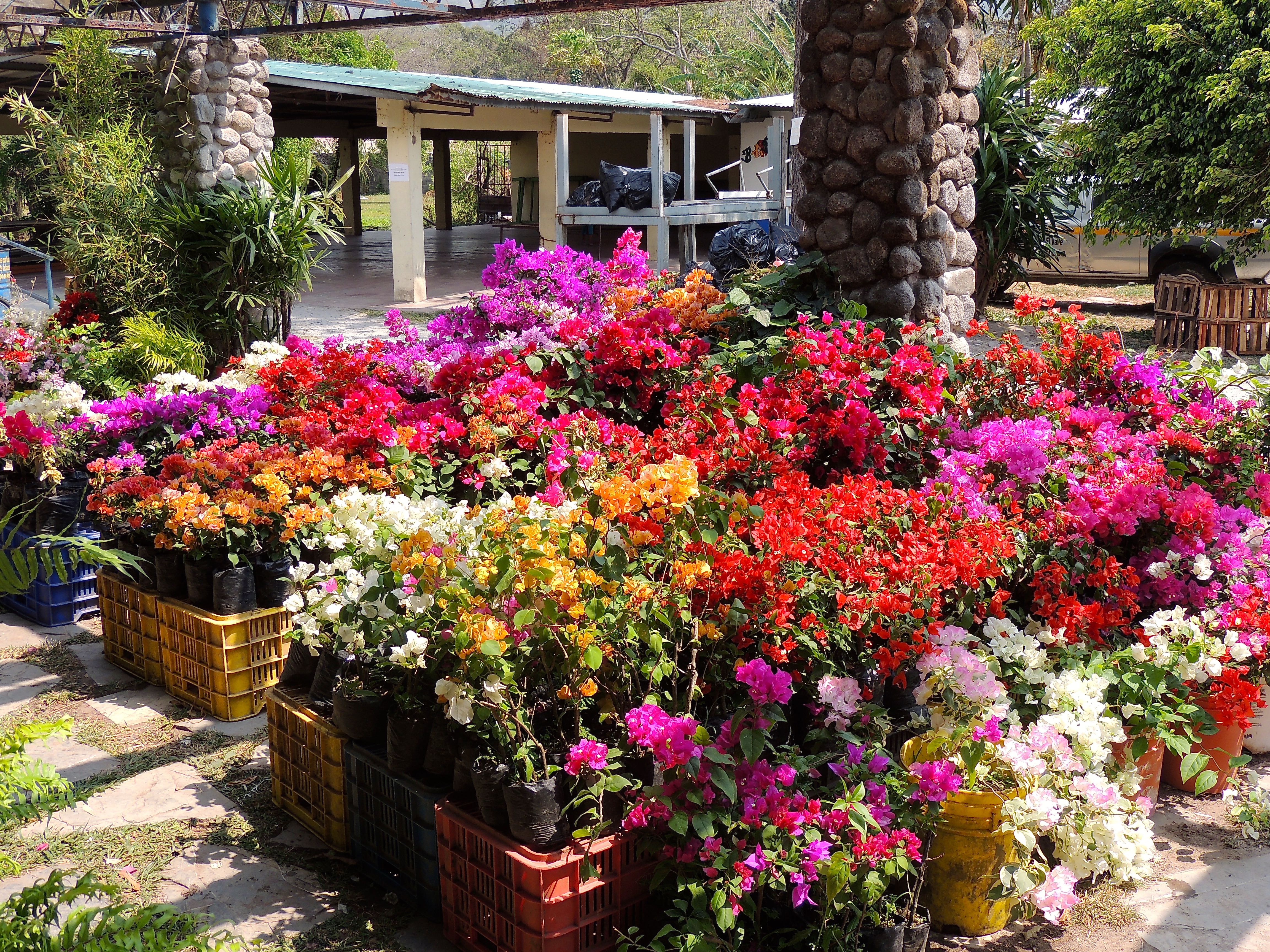 El Valle - Photo by William Young
El Valle - Photo by William YoungA Striped Basilisk lizard came to one of the feeding tables, took a bite of banana, and spit it out. Another Basilisk sunned itself on one of the rocks in the river. I found a Central American Whiptail Lizard in one of the gardens — they are very small.
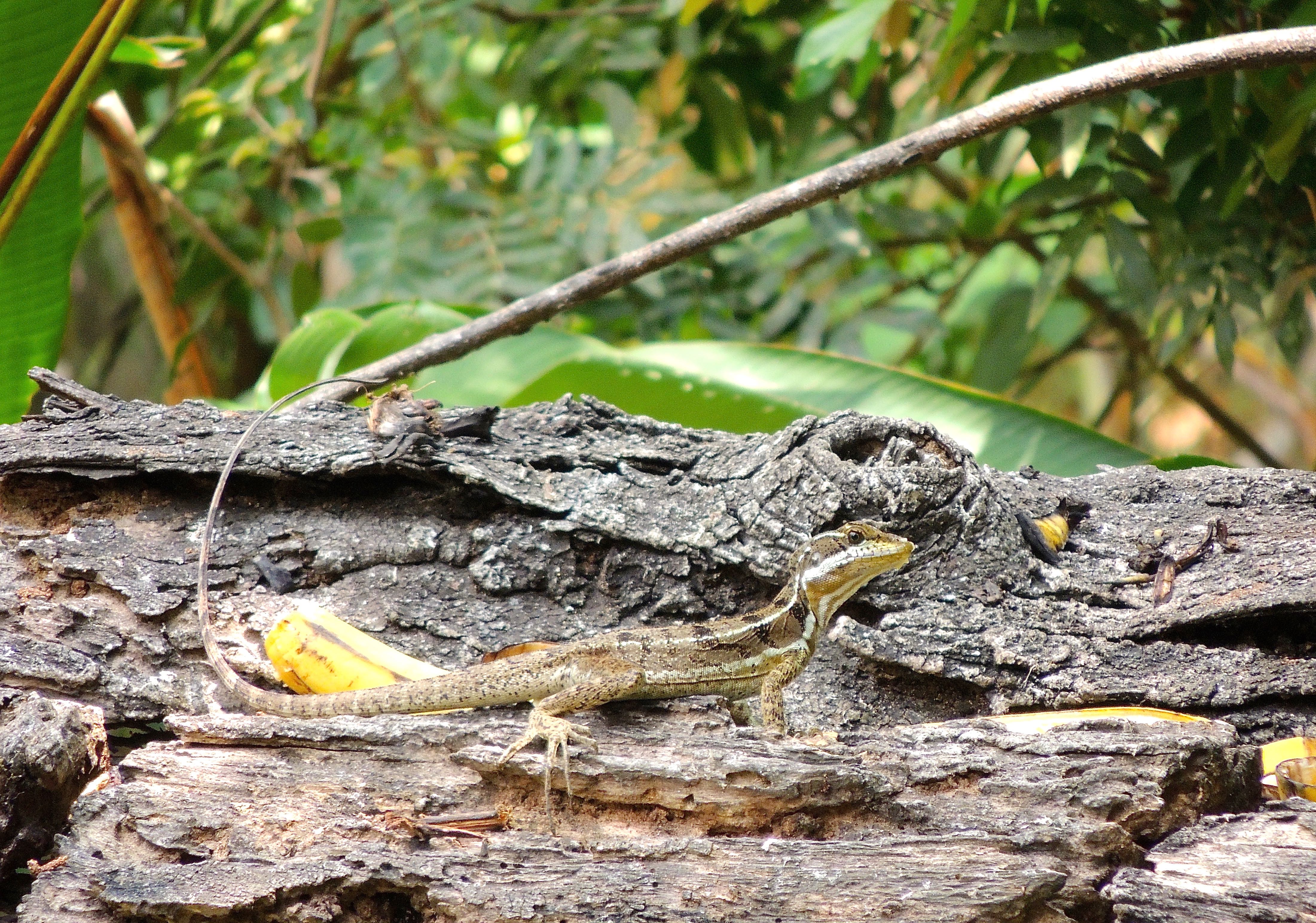 Striped Basilisk - Photo by William Young
Striped Basilisk - Photo by William Young
March 26We went to Rio Indio and Jordanal on the Caribbean Slope, driving on some hilly roads. We saw a couple kettles of hawks, with Swainson's and Broad-wings. In a couple of places, we saw Plumbeous Kites, and I saw the rufous on their wings. We also saw Swallow-tailed Kites. We saw White-collared Swifts, who are larger than the Band-rumped Swifts we saw. A Squirrel Cuckoo was at one of our stops after lunch, and a couple of times, it flew over our heads. We saw a male and female Gartered Trogon — the male is dark blue, and the female is black. Both sexes have yellow bellies. A Broad-billed Motmot sat in plain view, and a larger Rufous Motmot was at the feeders at the lodge.
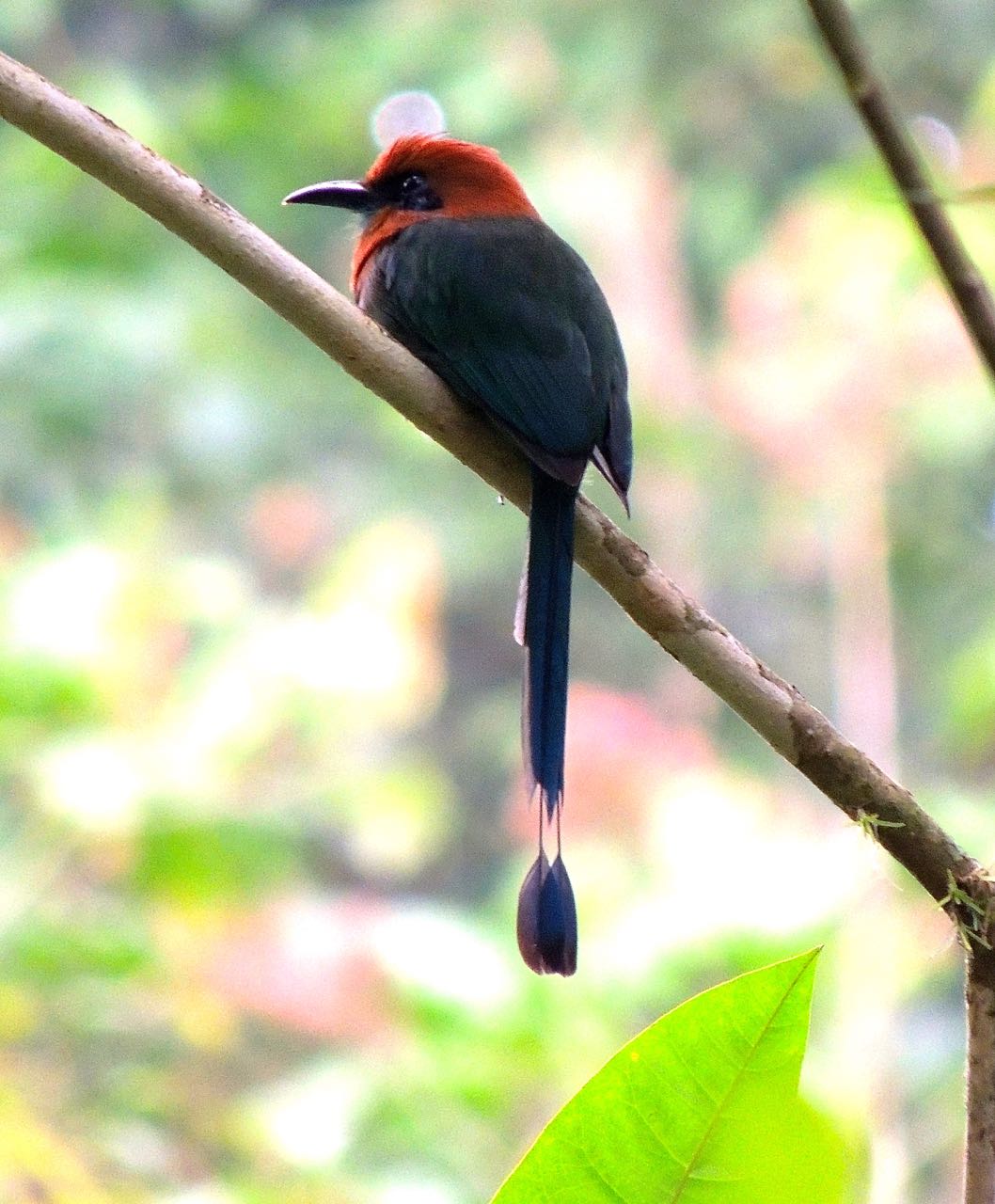 Broad-billed Motmot - Photo by William Young
Broad-billed Motmot - Photo by William YoungWhile we were near a stream, a Belted Kingfisher flew by. We saw two Barred Puffbirds at relatively close range. They are brown with bars and have a very large bill. A pair of Spot-crowned Barbets were making a nest hole. We scoped both Collared Aracaris and Keel-billed Toucans. The vocalization of the toucans sounds like a loud cricket. We saw Black-cheeked Woodpeckers, and one tried to chase a Lineated Woodpecker who was in the same tree. I later saw a closer Lineated and could see the heavy barring on the underparts, which is very different from the white underparts of a Pileated. We scoped Blue-headed Parrots in a tree. The colors did not seem vibrant. We saw a White-flanked Antwren, who is black with white spots on the wings and white flanks which show in flight; the female is rufous). We also saw a pair of Spot-crowned Antvireos and a female Checker-throated Antwren, who did not appear to have a checkered throat.
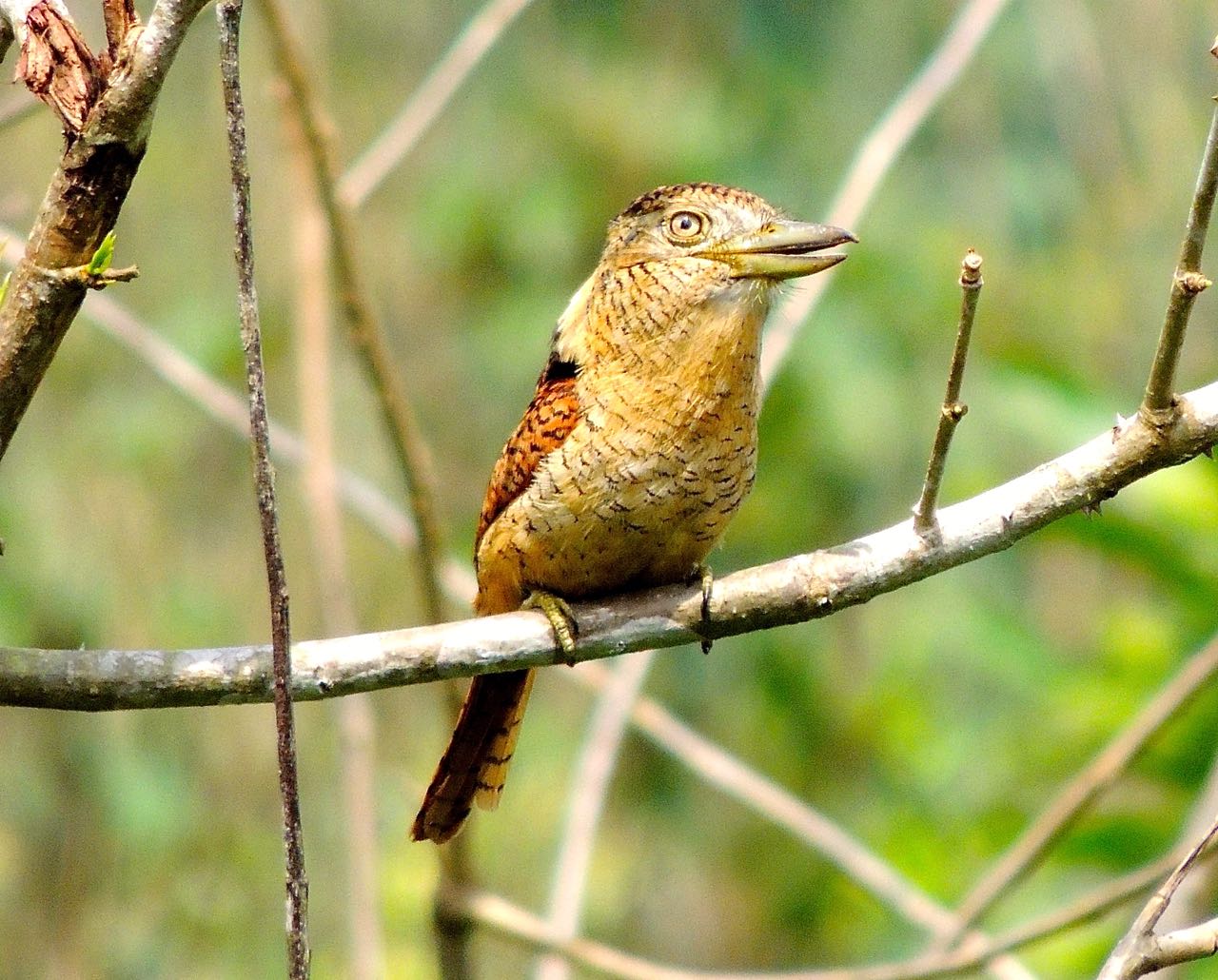 Barred Puffbird - Photo by William Young
Barred Puffbird - Photo by William YoungWe saw a perched male White-necked Jacobin and a perched female White-vented Plumeleteer. We saw single representatives of a number of flycatcher species. I saw the belly on an Ochre-bellied Flycatcher, which is distinctive. The Yellow-olive Flycatcher appeared to have vertical streaks on its breast. I saw the yellow margins on the wings of a Yellow-margined Flycatcher. A Long-tailed Tyrant was in a tree and was raising its long tail feathers in a vee above its head. I had a nice look at a Streaked Flycatcher, who is large, with a brown back and a white breast with heavy vertical streaks. We found a Paltry Tyrannulet nest. They eat mistletoe berries and spread them in a style similar to the Mistletoebird in Australia. We saw quite a few Tropical Pewees, including one on a fence near where we ate lunch.
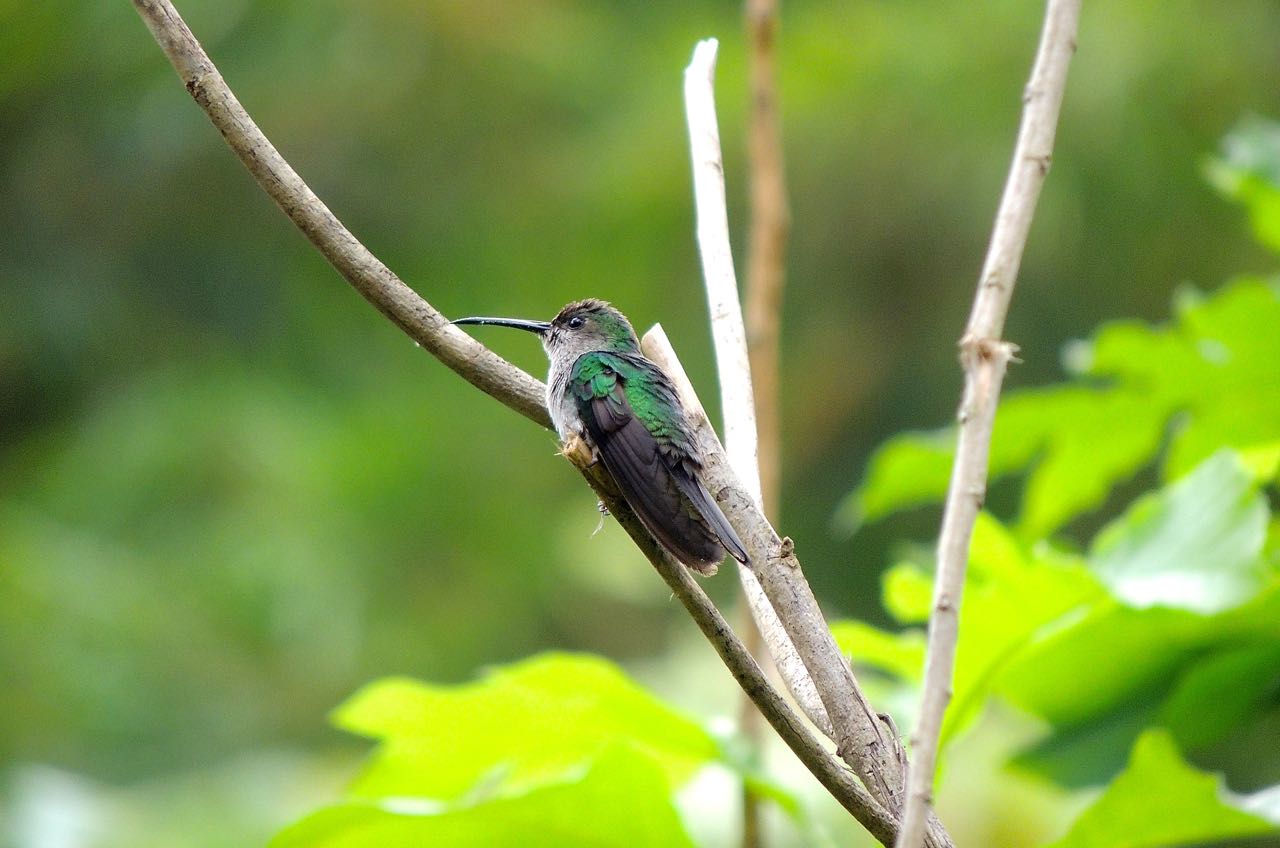 White-vented Plumeleteer Female - Photo by William Young
White-vented Plumeleteer Female - Photo by William Young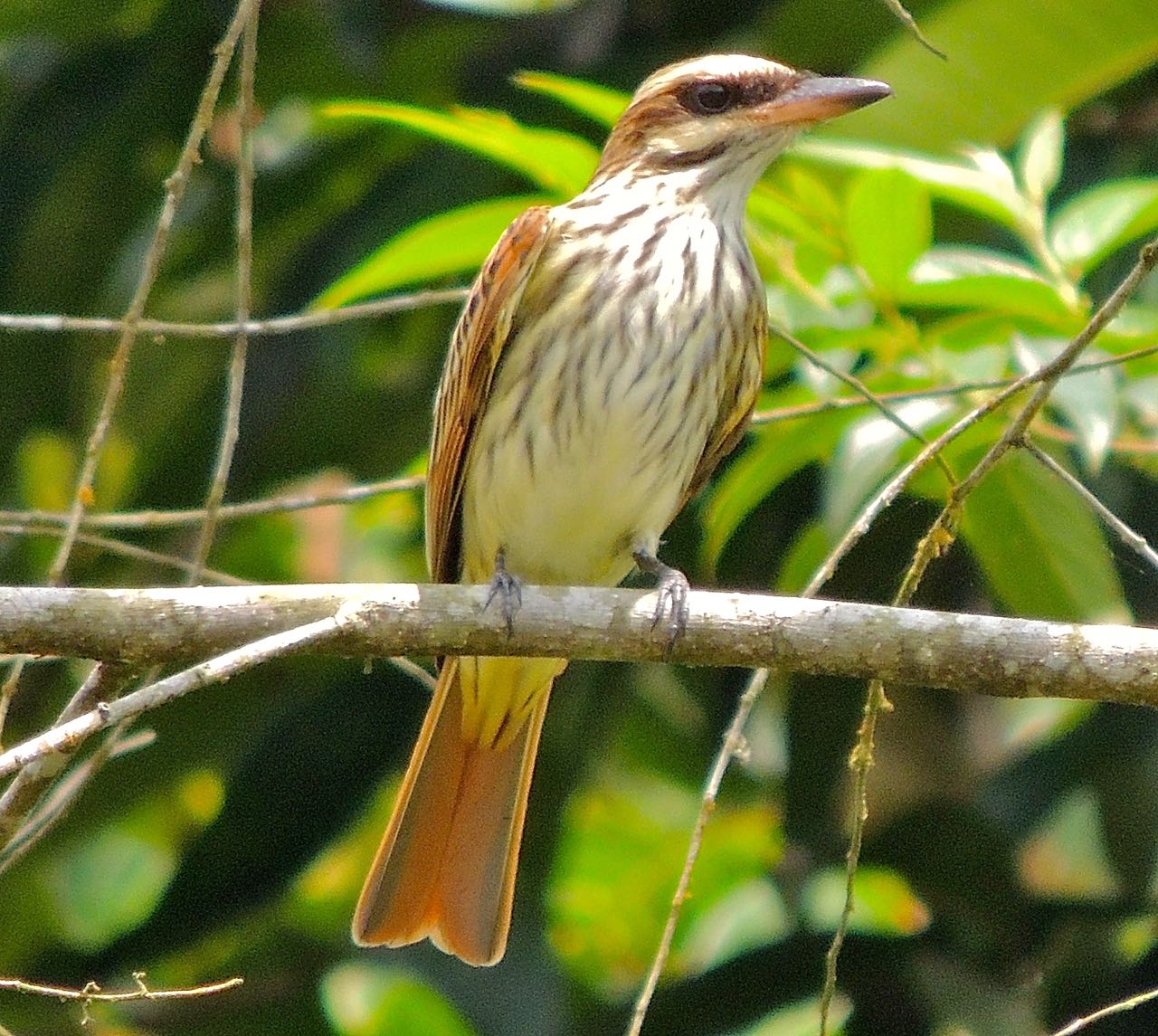 Streaked Flycatcher - Photo by William Young
Streaked Flycatcher - Photo by William Young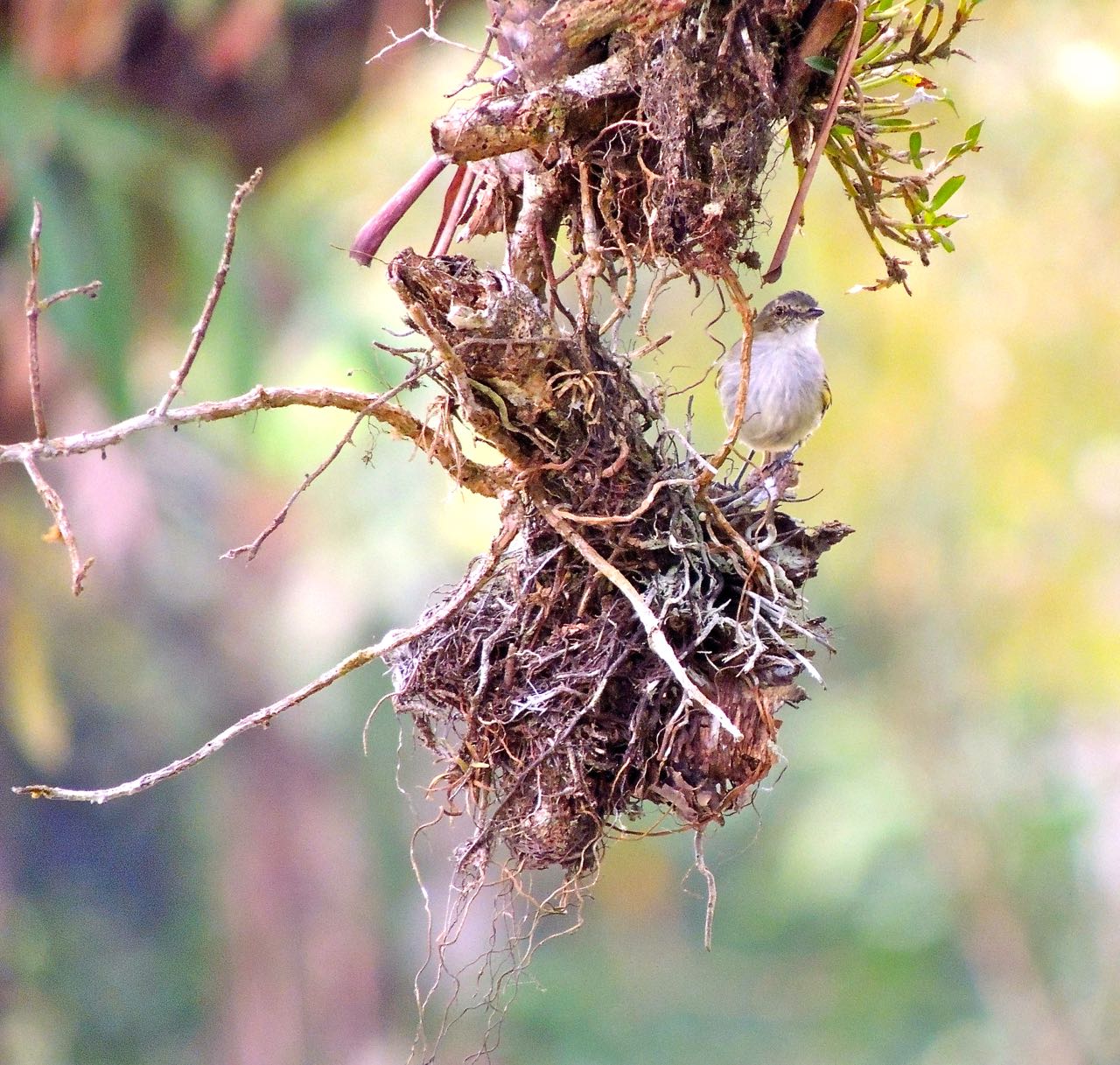 Paltry Tyrannulet at Nest - Photo by William Young
Paltry Tyrannulet at Nest - Photo by William YoungWe scoped a Golden-collared Manakin. The male is black-and-green, with a bright golden collar. We heard them displaying, making a sound like snapping sticks, but I was not able to see them.
Southern Rough-winged Swallows in a tree looked large. We saw both a Rufous-and-white Wren and some Bay Wrens. Bay Wrens are around the lodge, and they are very loud. Someone in the group saw a Swainson's Thrush, but I did not. I saw both Mourning and Golden-winged Warblers — it seems odd to see those two so easily here. A young Chestnut-sided was near the lodge. I saw a lot of tanagers. One was the Sulphur-rumped, which apparently is not all that common. It was perched high in a bare tree. Golden-hooded Tanagers came down and put on a bit of a show near where the Barred Puffbirds were. They are quite beautiful, as are the Bay-headed Tanagers who flitted in the open. I could see the scarlet thighs on a Scarlet-thighed Dacnis, and a Green Honeycreeper was in the bare branches of a tree along with a few Bay-headed Tanagers. I saw both Scarlet and Summer Tanagers. The male Red-throated Ant-tanager has a bright red throat. I saw a Black-headed Saltator, who has a white throat.
A Central American Agouti was on the grounds of the lodge. And we saw a Nine-banded Armadillo on a hill.
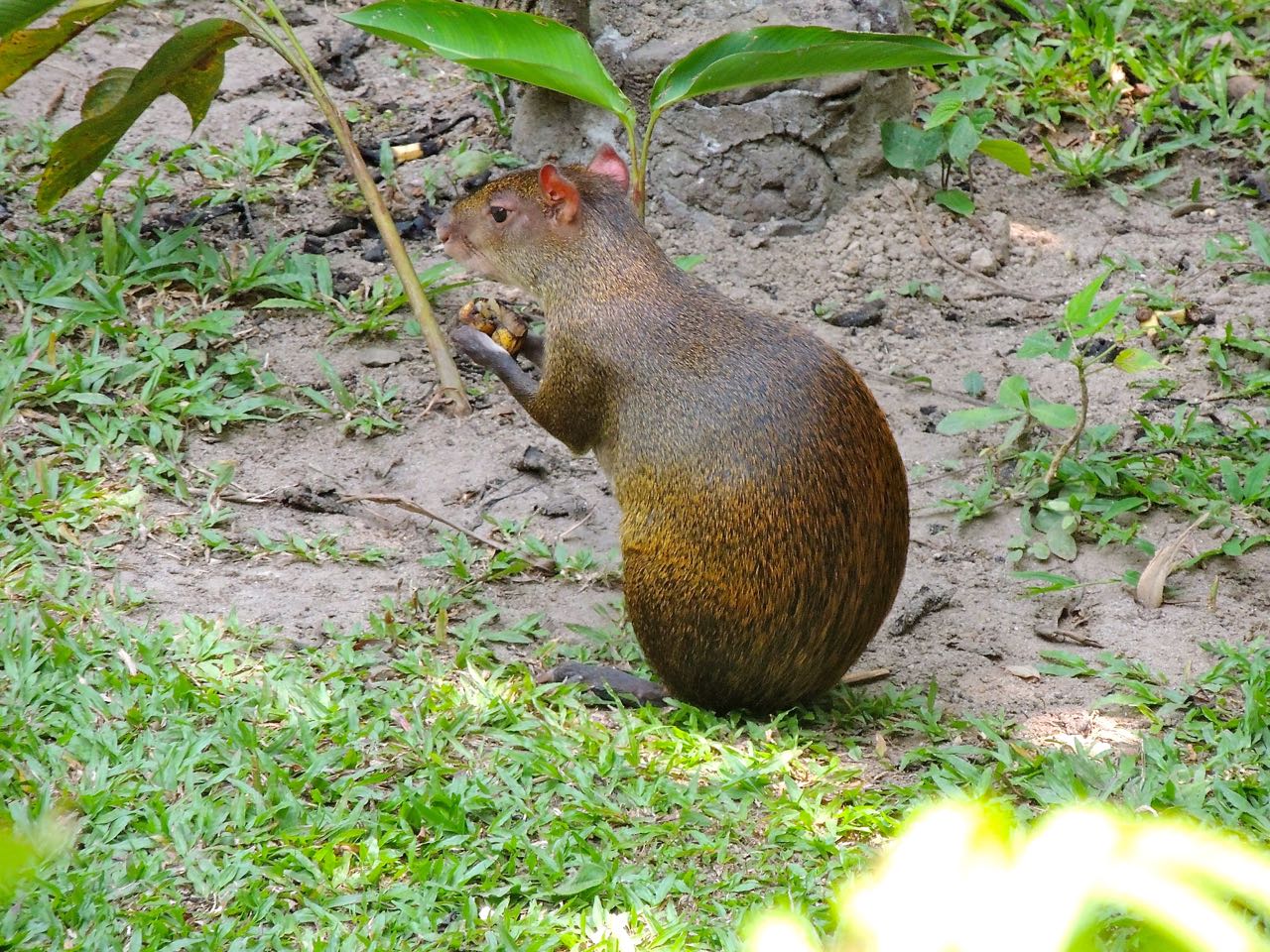 Central American Agouti - Photo by William Young
Central American Agouti - Photo by William Young
March 27When I left for this 4-week trip to Panama and Belize, there were three birds I especially wanted to see. One was a Harpy Eagle. Another was a Great Curassow. And the third was a Rufous-vented Ground-Cuckoo. This morning, we found a ground-cuckoo at Canopy Adventure. The bird was cooperative and stood in the same place for awhile. It is almost 20 inches long and much more colorful than it appears in the field guide. When it stood on a branch, I could see its big feet and long toes. A lot of marauding army ants were in the area where we stood to view the bird. We then walked up the trail a short distance and saw a Mottled Owl perched in a tree. It is a mid-sized owl — about 12 inches — with vertical streaking on its underparts. We also had a close look at an Eye-ringed Flatbill, a greenish flycatcher with an eyering and a flat bill.
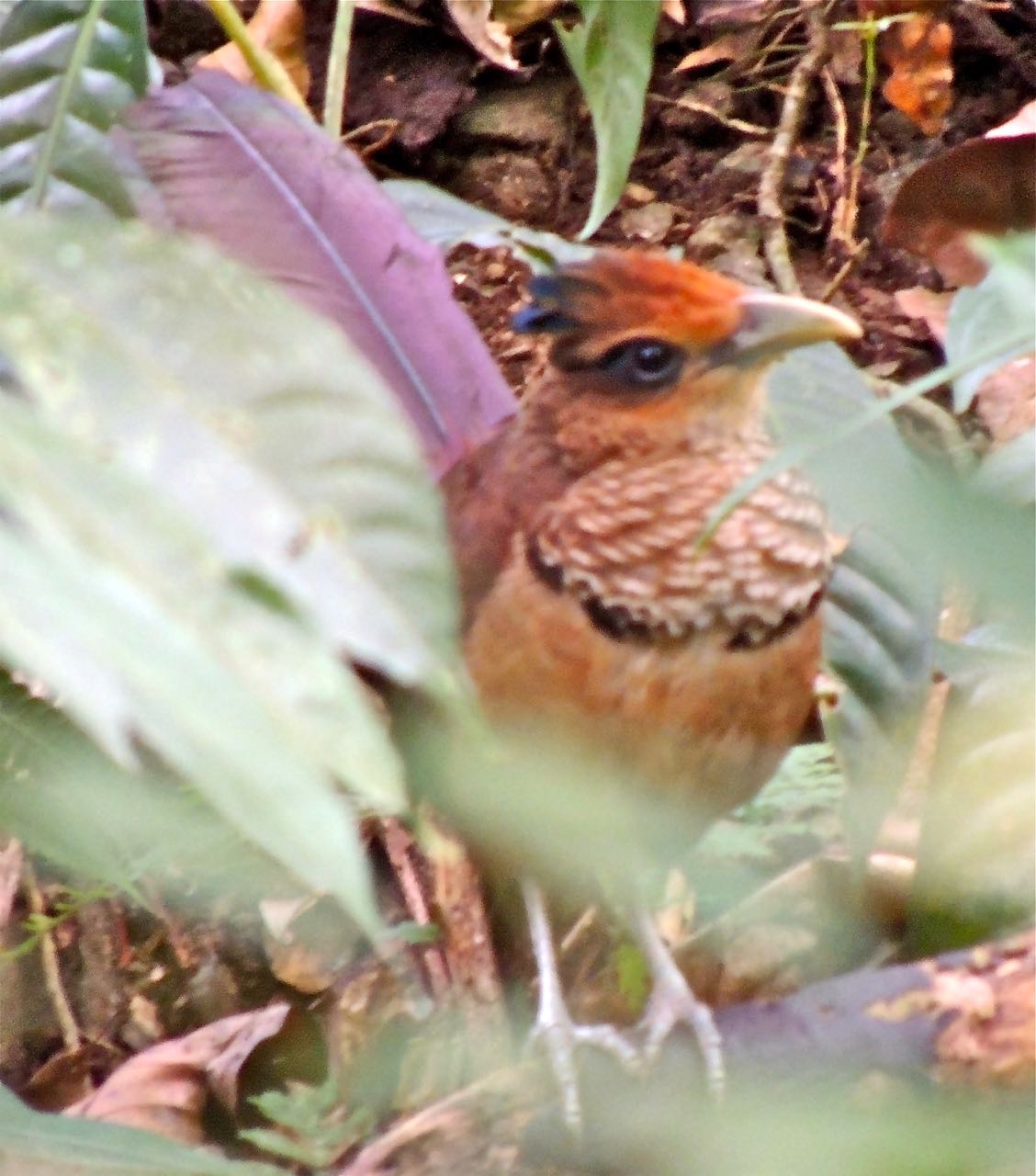 Rufous-vented Ground-Cuckoo - Photo by William Young
Rufous-vented Ground-Cuckoo - Photo by William Young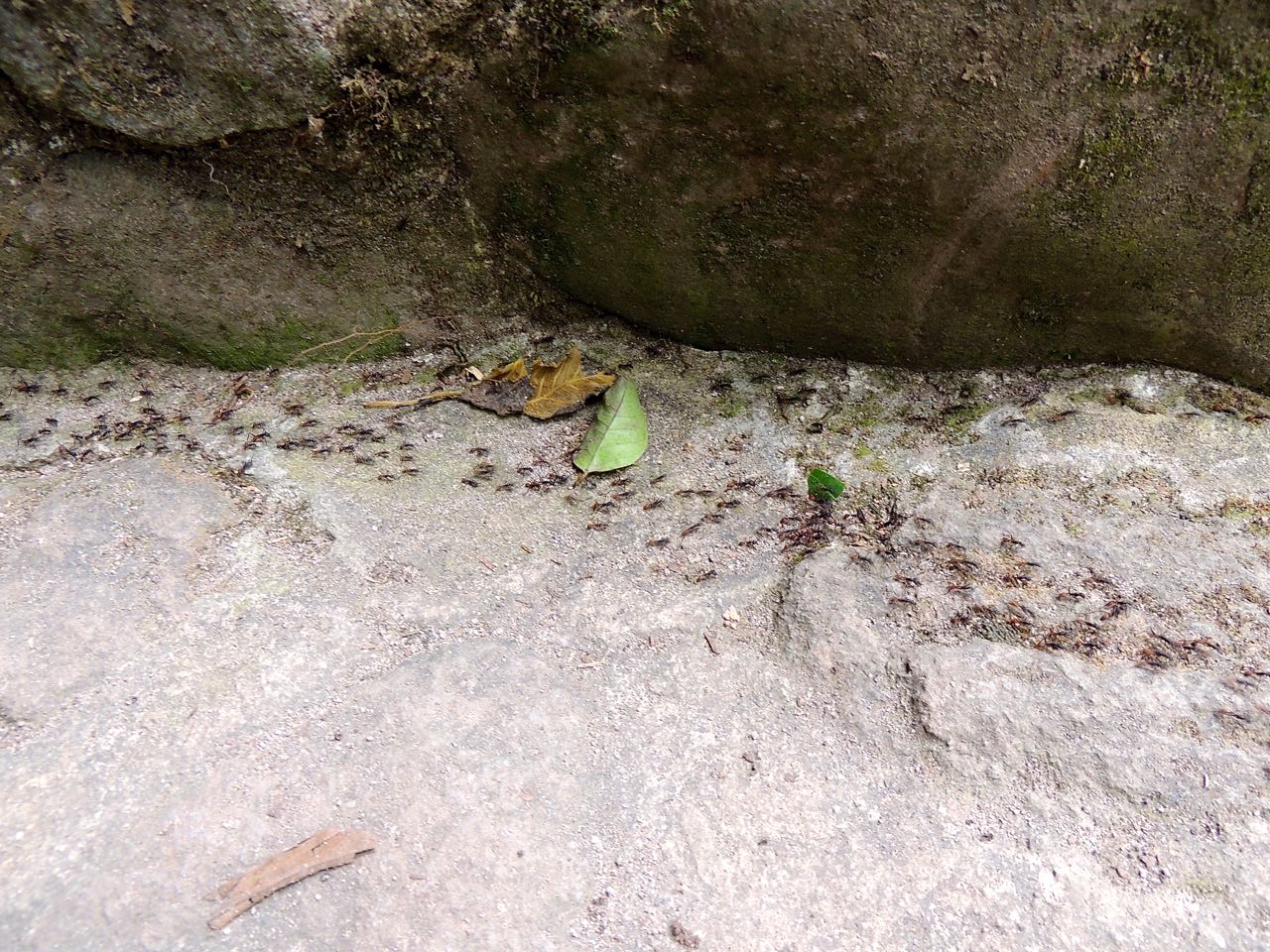 Army Ants - Photo by William Young
Army Ants - Photo by William YoungWe later went to the Candelario Trail, which has rain forest habitat. On the way, we saw a group of Smooth-billed Anis at the side of a road. When we arrived, Silver-throated Tanagers were flitting in a tree. We saw a field with about 30 Southern Lapwings. An Immature Little Blue Heron flew by. In the forest, I saw a female Black-throated Trogon, who is brown above and has a yellow belly. We had close looks at a Spotted Antbird nearby. A female White-ruffed Manakin was in a tree. We had good looks at an Orange-billed Nightingale-Thrush, who is brown with orange soft parts — bill, legs, and eyering. I saw a Tawny-crested Tanager, whose crest appeared to be more golden than tawny. Bay-headed Tanagers were fairly common. The most common migrant warbler this morning was the Tennessee, and I later saw one at the feeders at the lodge. A Garden Emerald worked the flowers around the lodge feeders, and I saw a male White-vented Plumeleteer. I finally saw a Dusky-faced Tanager, who made a brief appearance at the feeders.
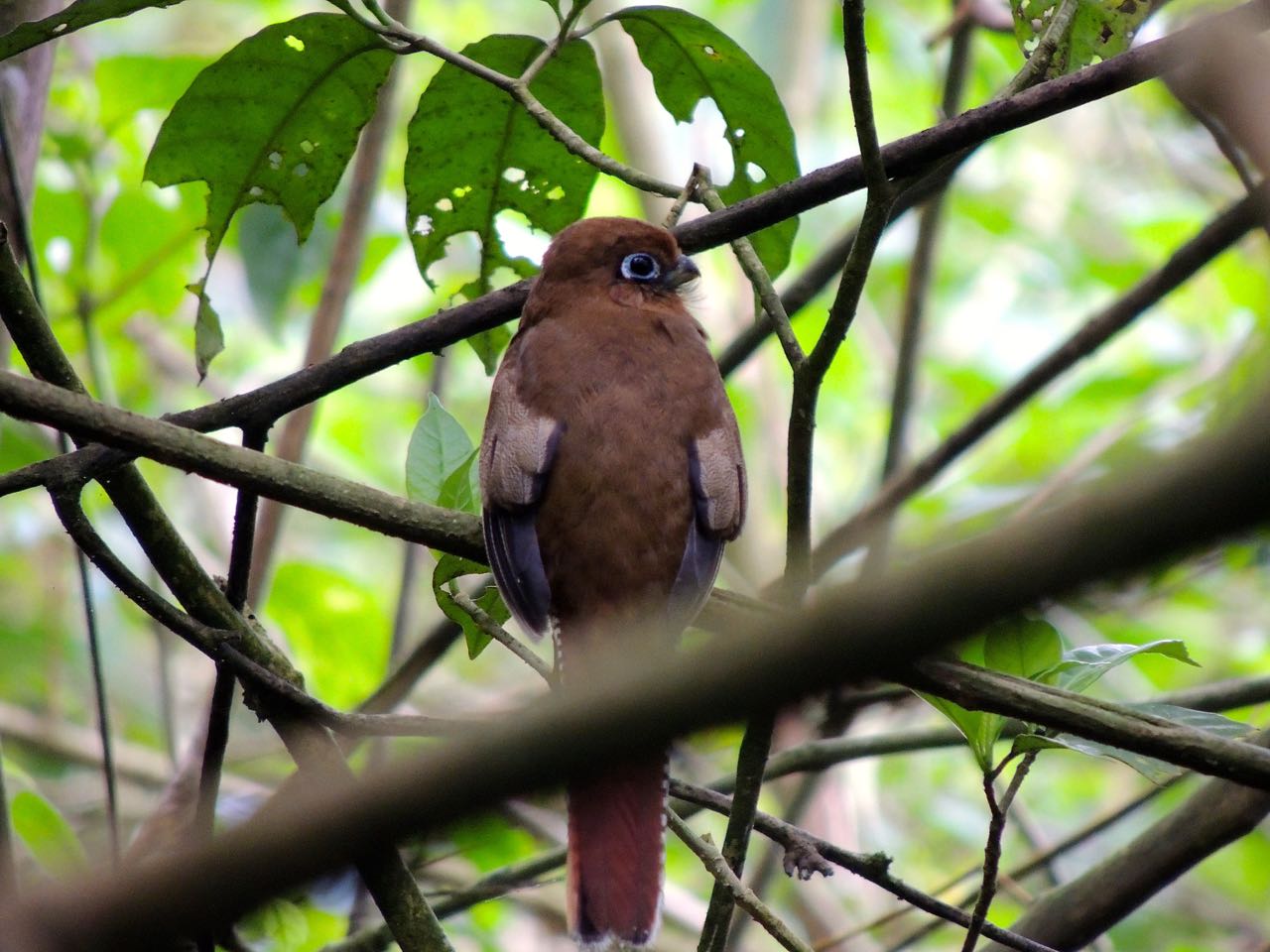 Black-throated Trogon Female - Photo by William Young
Black-throated Trogon Female - Photo by William Young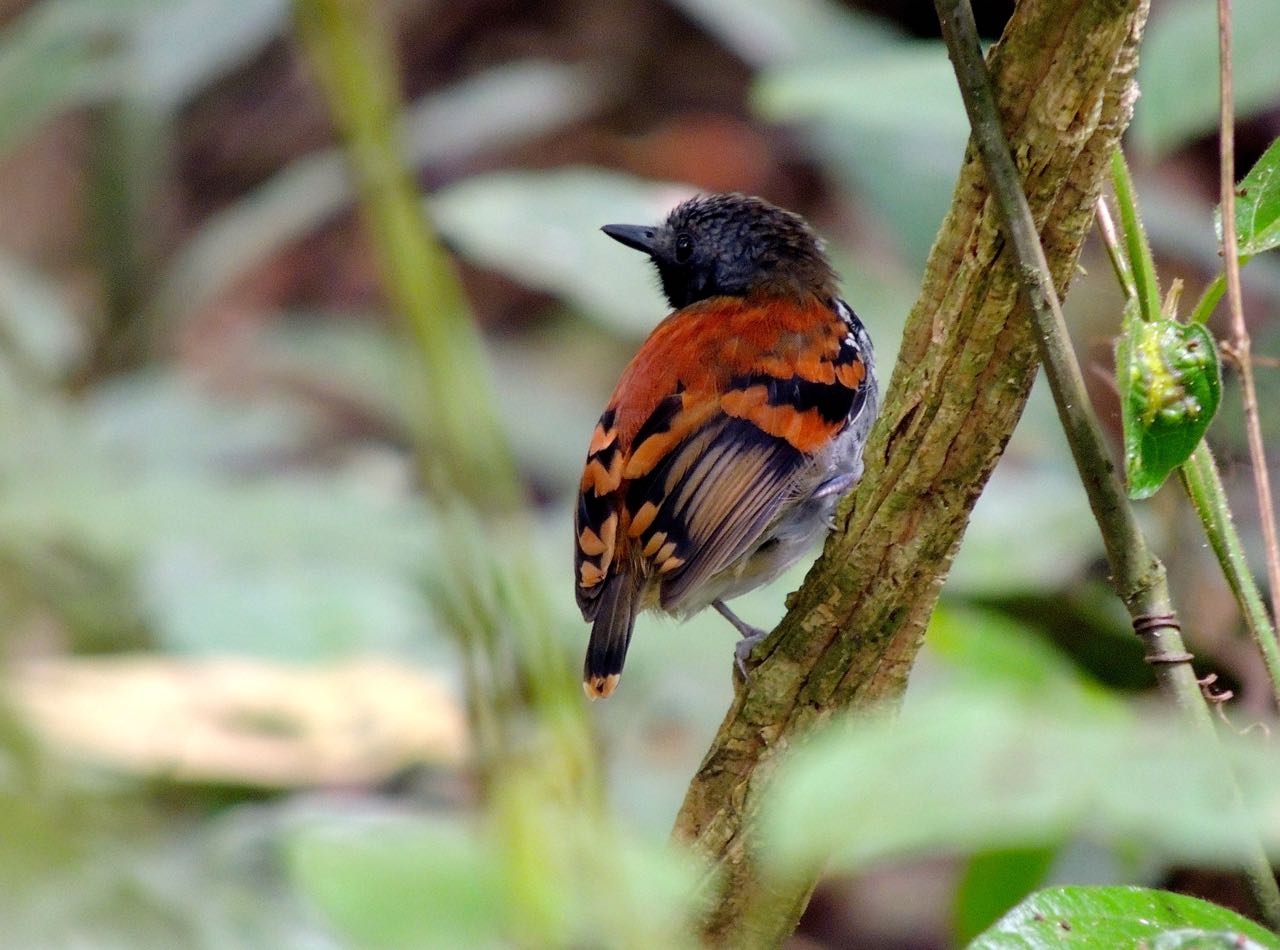 Spotted Antbird Male - Photo by William Young
Spotted Antbird Male - Photo by William Young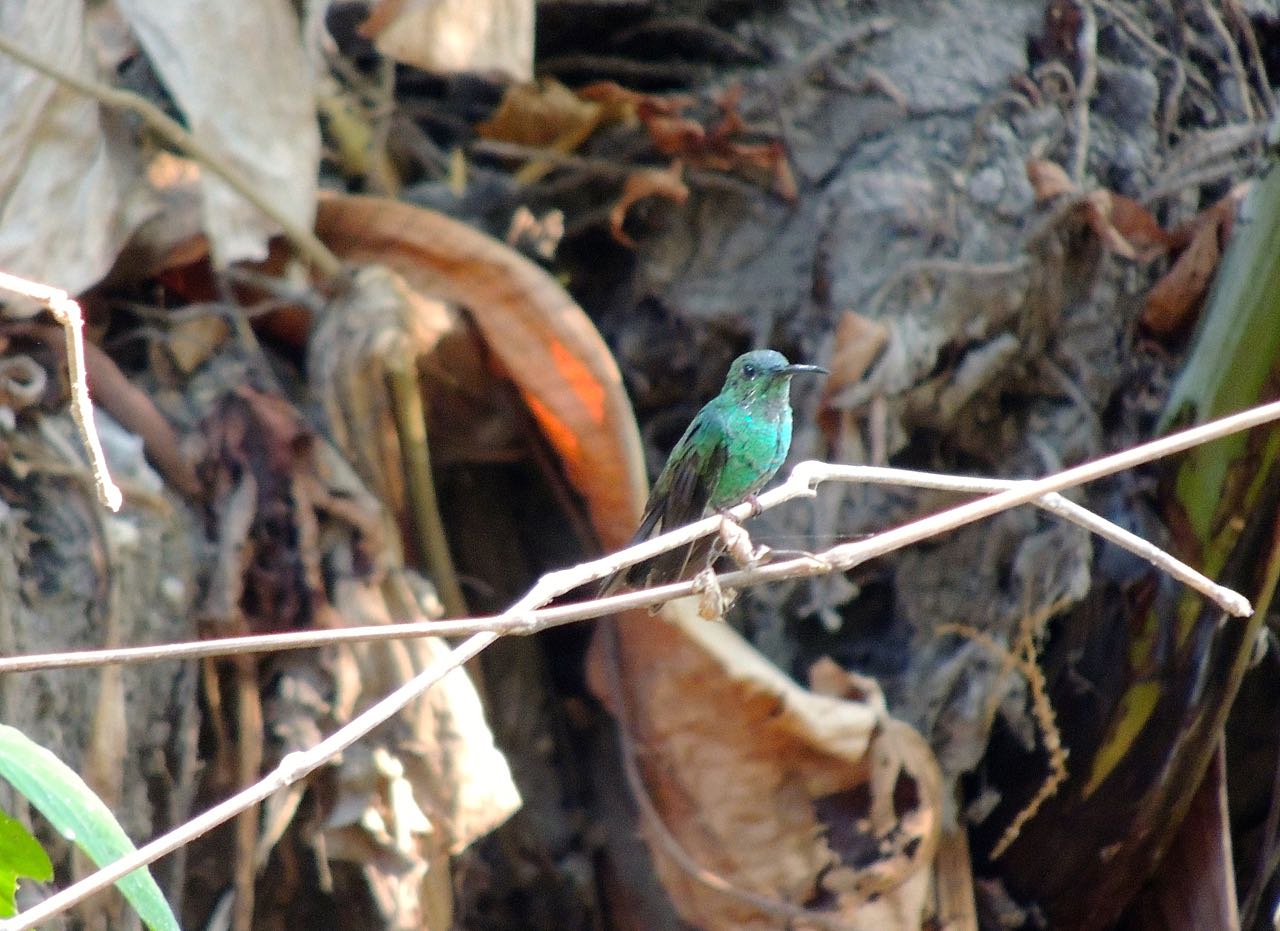 White-vented Plumeleteer Male - Photo by William Young
White-vented Plumeleteer Male - Photo by William YoungThis afternoon, we went to an area with a Chestnut-headed Oropendola colony. The oropendolas are large birds in the blackbird family. When displaying, the males make strange and funny noises that do not resemble bird sounds. A Double-toothed Kite flew over. I saw a Stripe-throated Hermit, who is brown and much smaller than the large hermits. A Piratic Flycatcher was up in a tree. It looks a bit like a Streaked Flycatcher, being large and having vertical streaks on its white breast. A male Barred Antshrike vocalized, and we saw him come out. He was not far from an avocado tree and a breadfruit tree. We saw a Royal Palm Tree that had been completely engulfed by a strangler fig. We heard a Golden-collared Manakin, who sounds like a joy buzzer. A Plain Xenops foraged in some brush, looking for insects. Some White-thighed Swallows flew over. They are small and appear to be all dark. A female Rose-breasted Grosbeak was in a tree. A female Magnificent Frigatebird flew over. On the way back to the lodge, I saw a Green Heron near a pond.
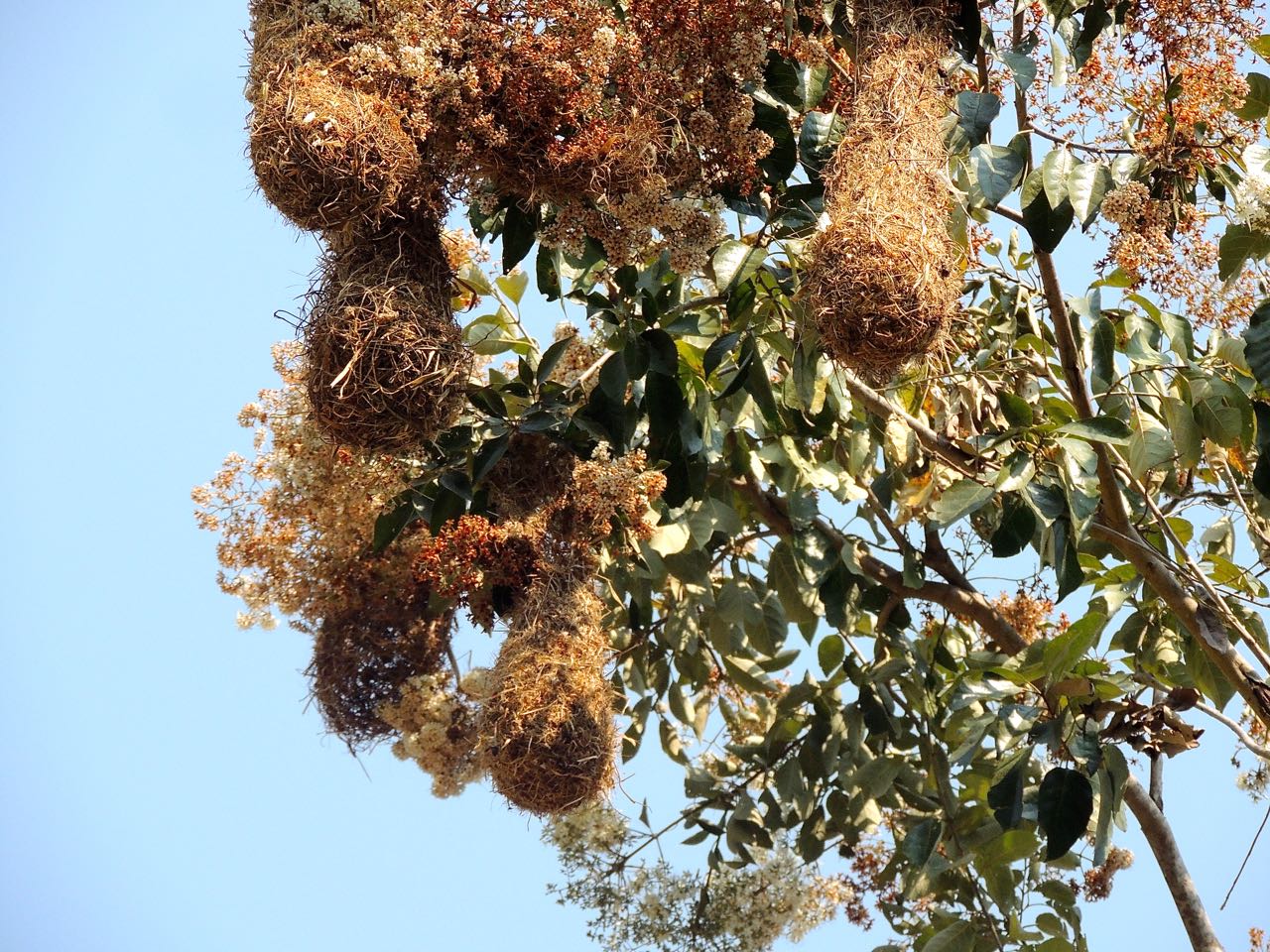 Chestnut-headed Oropendola Colony - Photo by William Young
Chestnut-headed Oropendola Colony - Photo by William YoungAt the feeders near the lodge, I saw Blue-gray, Palm, and Crimson-backed Tanagers. Some Clay-colored Thrushes were there, along with Tennessee Warblers. A Chestnut-headed Oropendola came down to eat a banana.
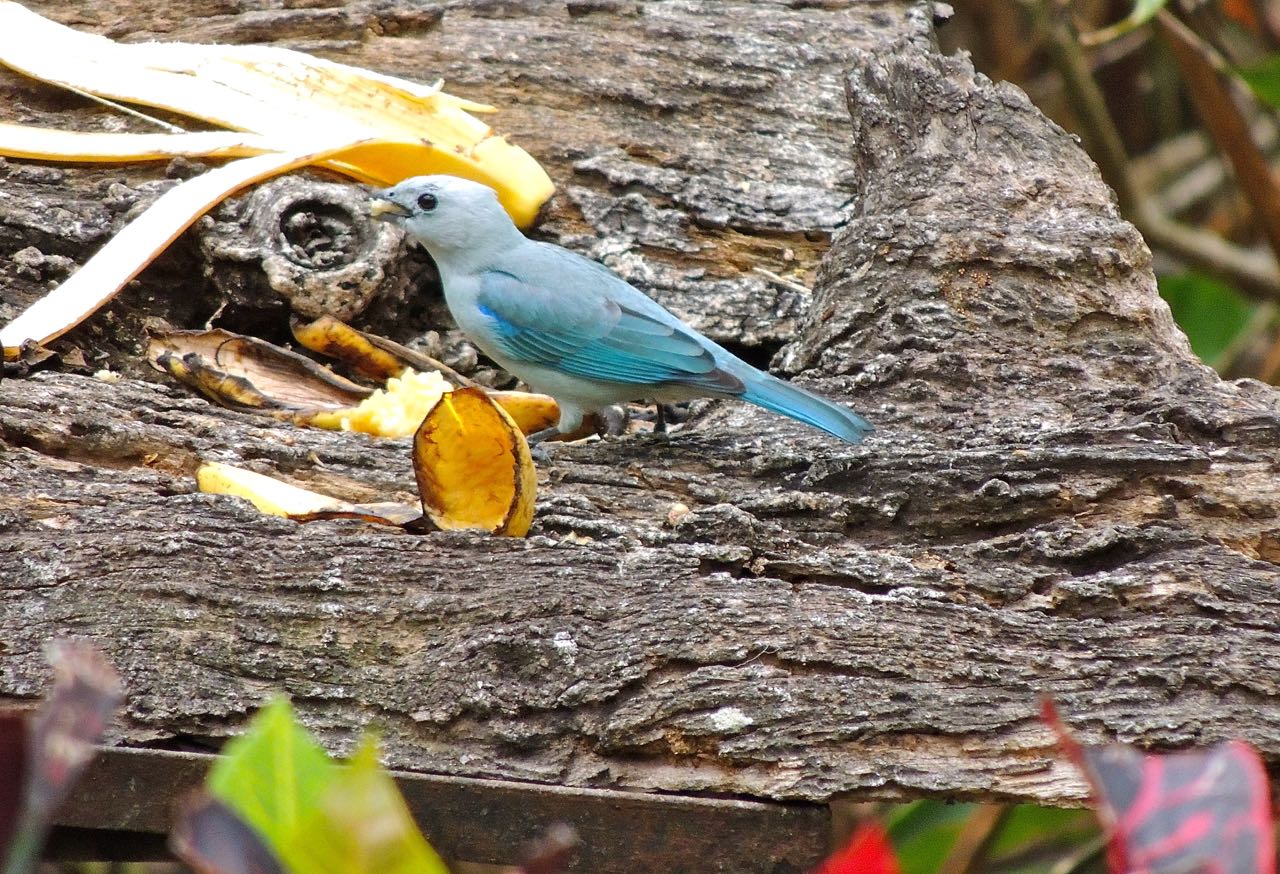 Blue-gray Tanager - Photo by William Young
Blue-gray Tanager - Photo by William Young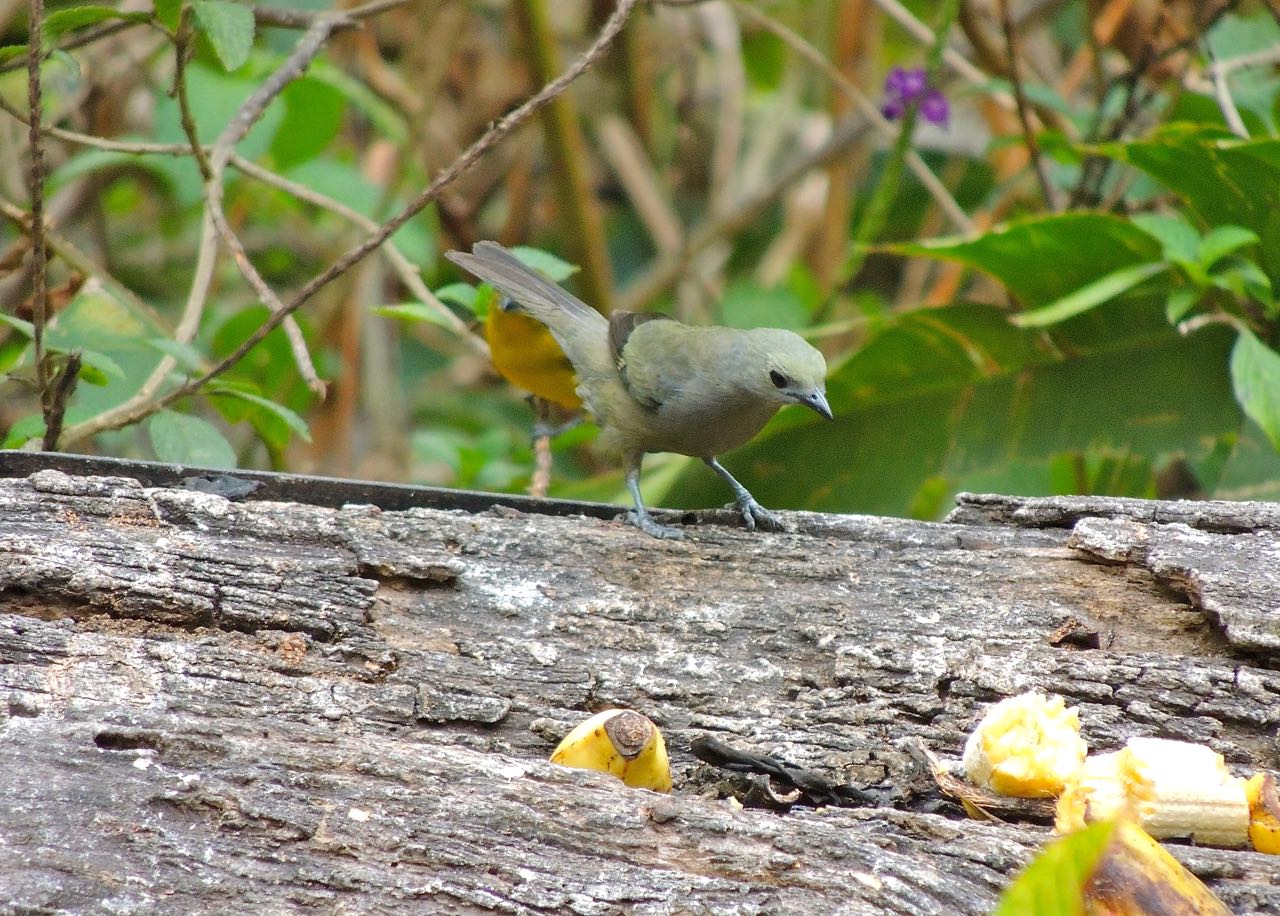 Palm Tanager - Photo by William Young
Palm Tanager - Photo by William Young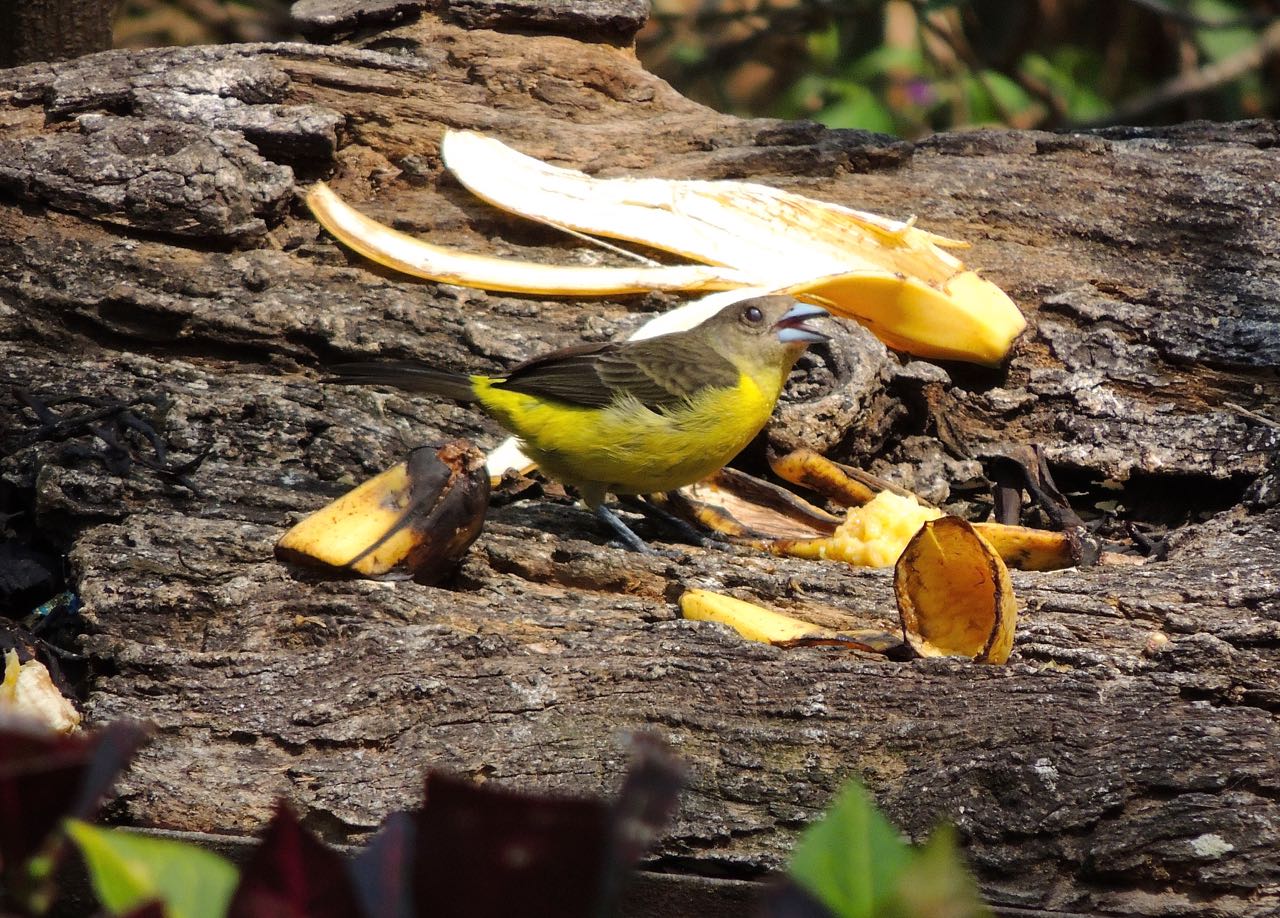 Flame-rumped Tanager Female - Photo by William Young
Flame-rumped Tanager Female - Photo by William Young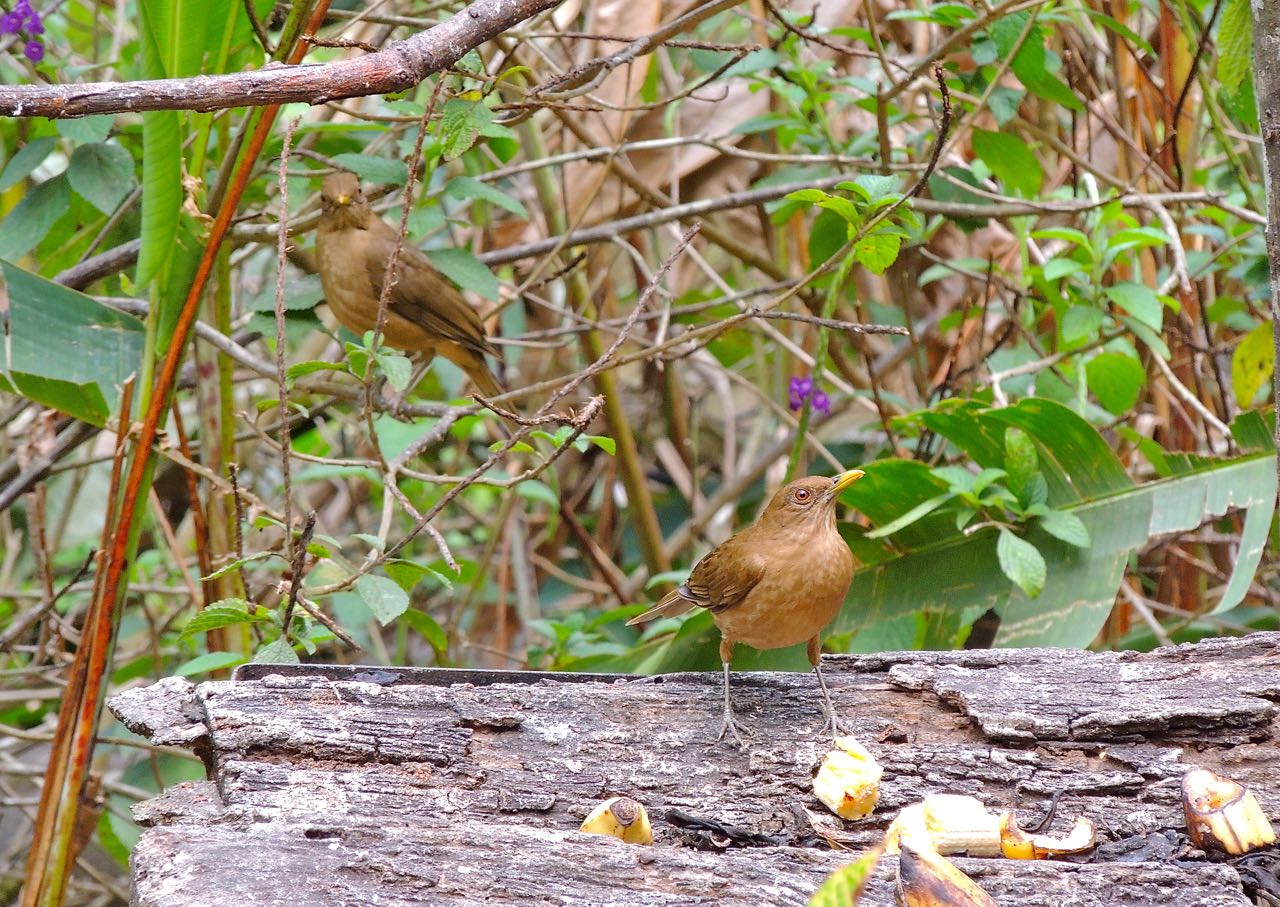 Clay-colored Thrushes - Photo by William Young
Clay-colored Thrushes - Photo by William Young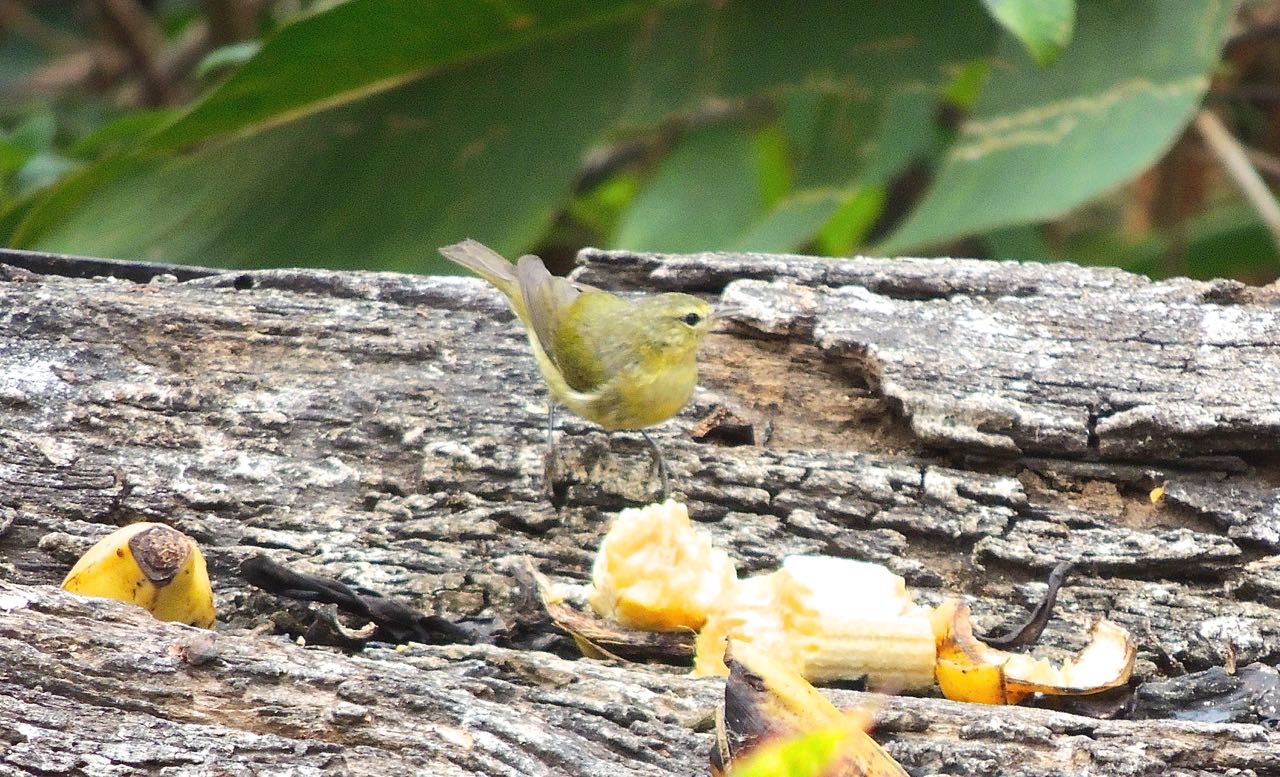 Tennessee Warbler - Photo by William Young
Tennessee Warbler - Photo by William Young Chestnut-headed Oropendola - Photo by William Young
Chestnut-headed Oropendola - Photo by William Young
March 28On my last full day at the lodge, we started out at Las Minas, which has dry rainforest. I saw a perched White-tailed Kite. It flew and showed its long narrow wings. We also saw a Zone-tailed Hawk, who looks like a Turkey Vulture. It is all black and has a dihedral, but the tail looks a little longer and narrower, and the jizz is not quite right. We had a scope look at a perched Scaled Pigeon, a large ruddy bird with a red bill and a black-and-white collar. In the same tree were Blue-headed Parrots. A Ruddy Ground-Dove was on a wire. We saw a male Spot-crowned Antvireo, and I saw the crown spots. We saw a Chestnut-backed Antwren. It skulked on the forest floor. It is a dark bird, with a chestnut back and a blue eyering. The White-breasted Wood-Wren is another skulker who required a lot of effort to see. I saw the white throat on a Chestnut-capped Brush-Finch, but I never had a look at the entire bird as it skulked on the forest floor.
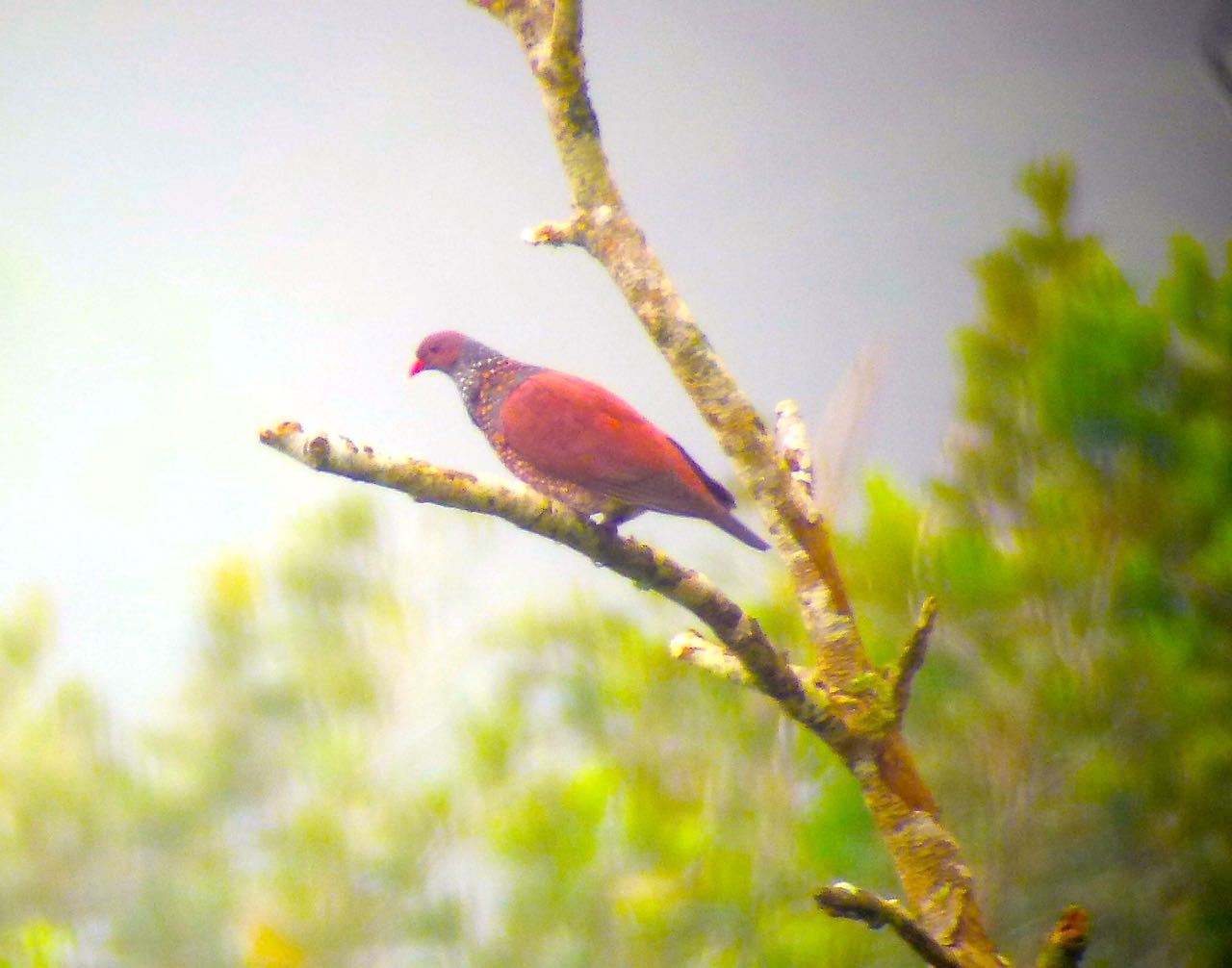 Scaled Pigeon - Photo by William Young
Scaled Pigeon - Photo by William Young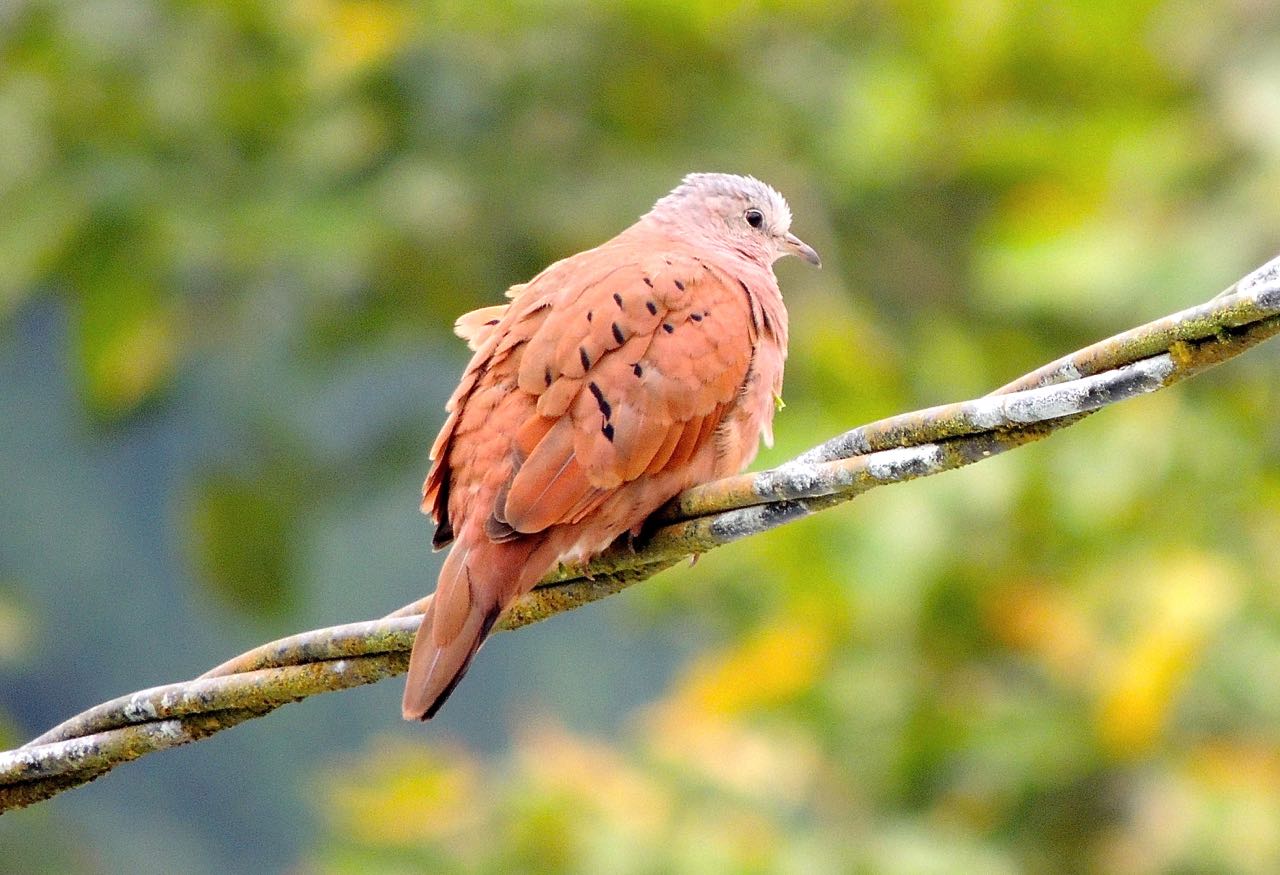 Ruddy Ground-Dove - Photo by William Young
Ruddy Ground-Dove - Photo by William YoungWe had great looks at a young male Orange-bellied Trogon. It is green on the back, orange below, with a black face and yellow bill. A white line separates the orange from the green, and the undertail has narrow black-and-white bars. Nearby, a Plain Xenops worked one of the trees like a woodcreeper. We scoped an Olive-striped Flycatcher, who was about the size of an Empidonax, but darker below. We also saw a pair of Blue-throated Toucanets, who used to be called Emerald Toucanets. These toucanets disappear into the top of green leafy trees and can be difficult to find. They wear a coat of many colors. We earlier had seen a Keel-billed Toucan, who is slightly larger and has a larger bill. We saw a Piratic Flycatcher in a tree. I saw a Tropical Kingbird who was missing its tail. Among the wood warblers we encountered were a Mourning, Chestnut-sided, Tennessee, a couple of Bay-breasted, and a Northern Waterthrush. Bay-headed Tanagers were surprisingly common, and Silver-throated are as well. The Bananaquit has a white handkerchief like a Black-throated Blue Warbler.
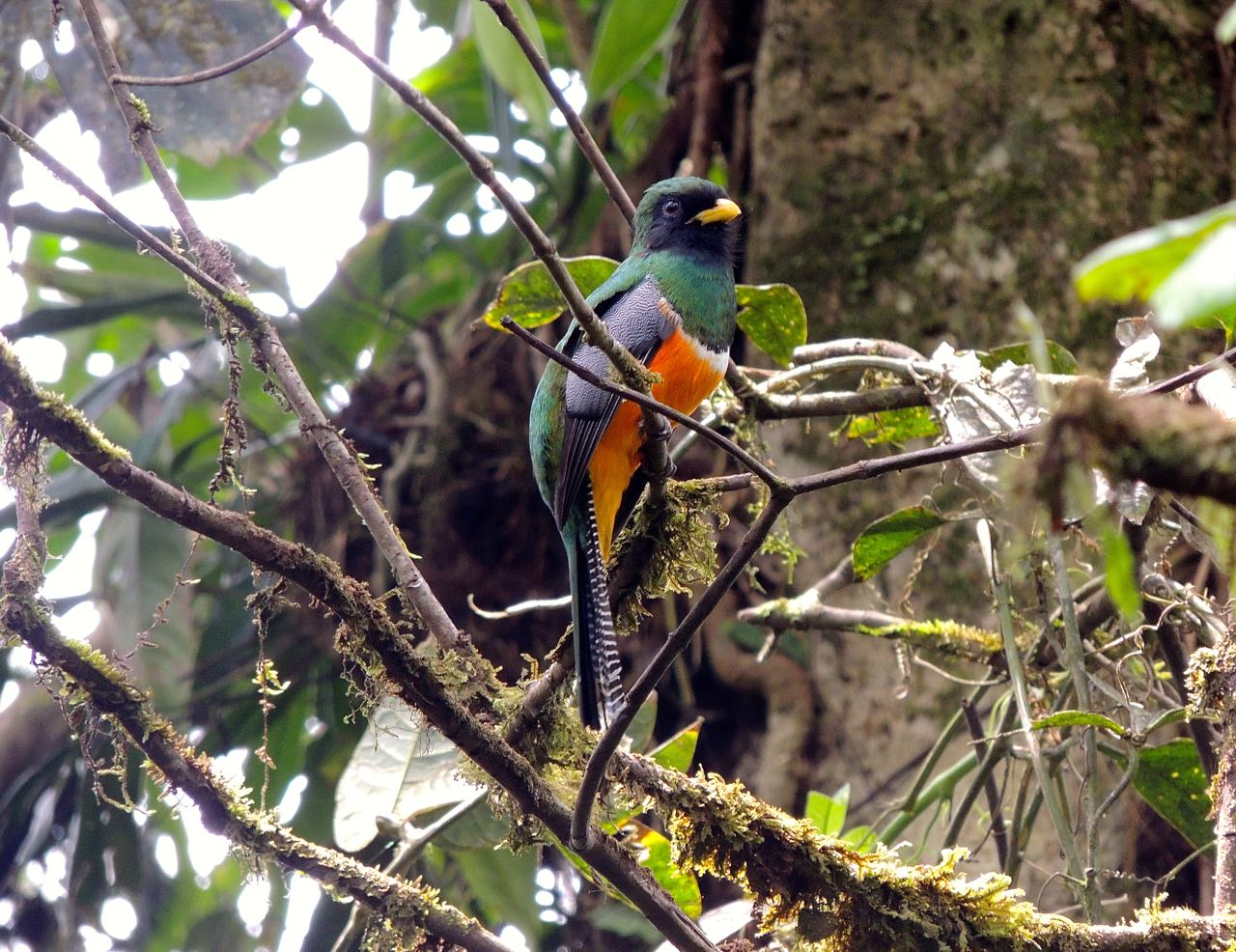 Orange-bellied Trogon Male - Photo by William Young
Orange-bellied Trogon Male - Photo by William Young Plain Xenops - Photo by William Young
Plain Xenops - Photo by William Young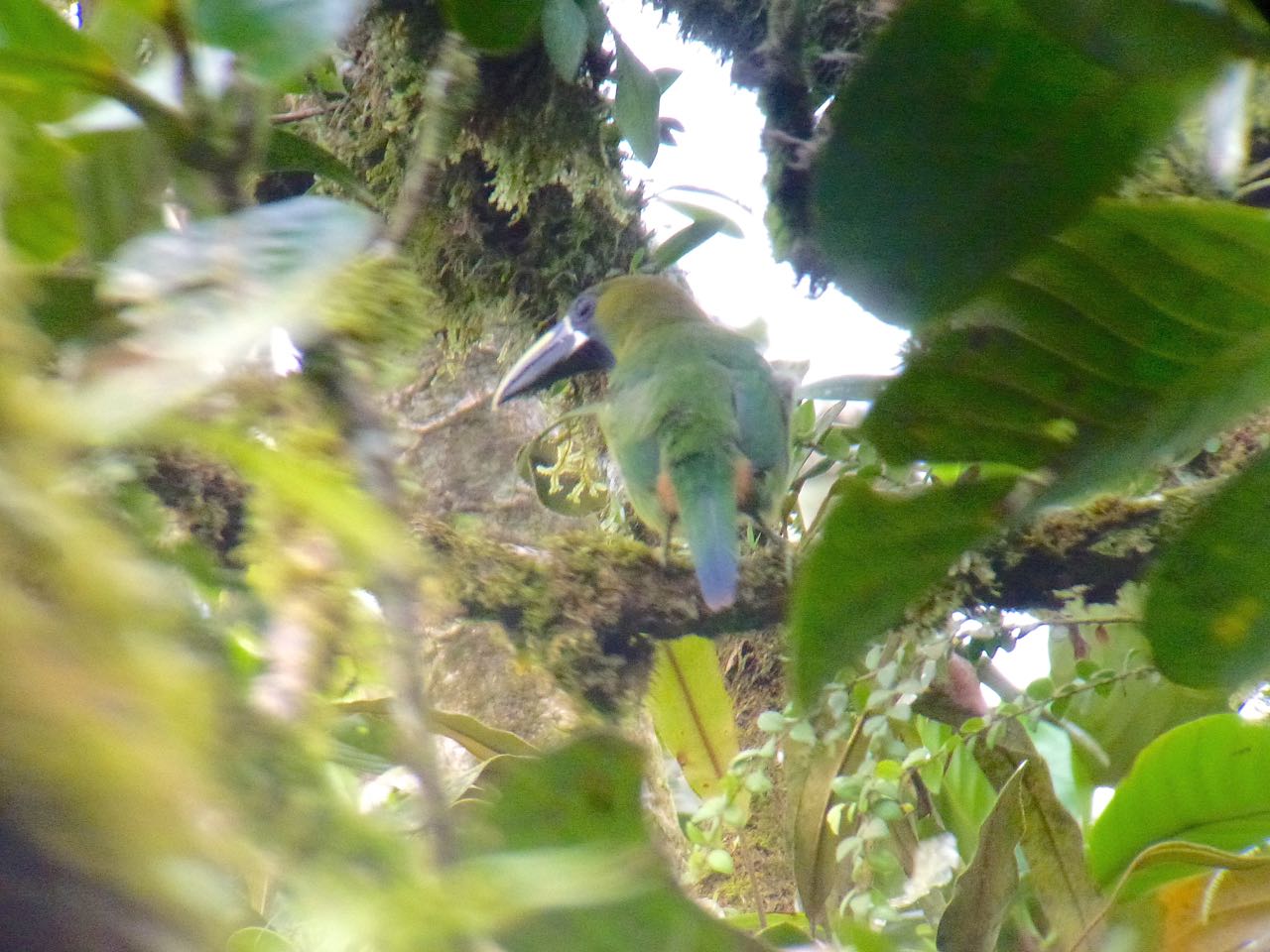 Blue-throated Toucanet - Photo by William Young
Blue-throated Toucanet - Photo by William Young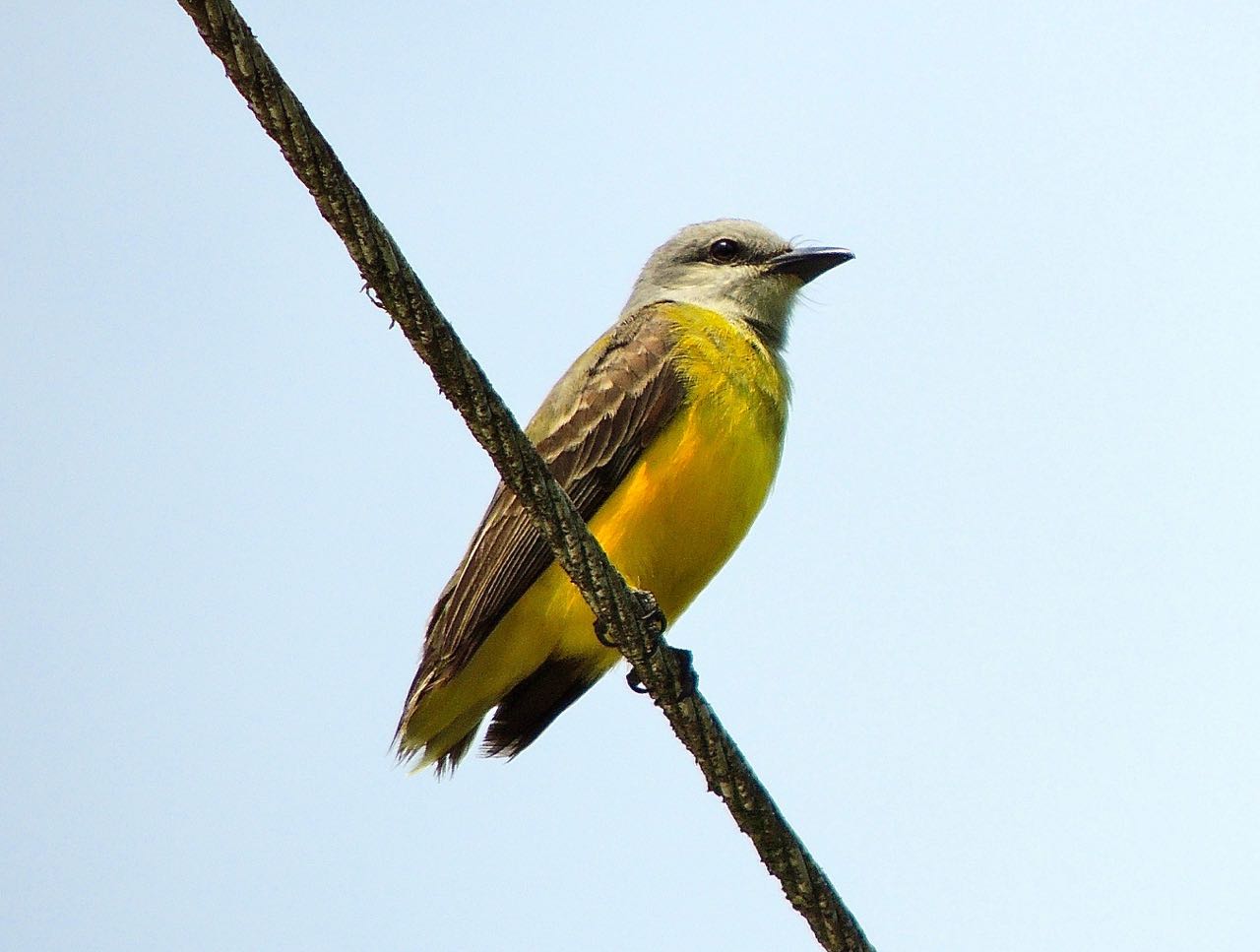 Tropical Kingbird Without Tail - Photo by William Young
Tropical Kingbird Without Tail - Photo by William YoungThis morning before we drove off, I saw an Orange-billed Sparrow, who is green, with black-and-white on the head and an orange bill. The Garden Emerald hangs around on the branches near the feeder, but it often gets chased by the Snowy-bellied Hummingbirds. A House Wren is often on the ground near the feeders. I found a Common Tody-Flycatcher and could see the large bill. A Rufous Motmot hangs around the lodge, and I saw one perched not far from the entry gate. Tonight after we did the list, two Gray-necked Wood-Rails came to the feeders and jumped up on them to eat bananas. That seems like strange behavior for a rail. A Three-banded Crescent butterfly was on the wall of the eating area.
This afternoon, we went to Cara Iguana Trail and had great luck. The highlight was seeing a very cooperative Spectacled Owl who sat on a nearby branch. It is a black owl, with buff underparts and large white broken circles around its large yellow eyes. We saw a Tody Motmot, who is much smaller than the other motmots and not as easy to find. It has a green back, a dark eyeline, and a large bill. I later saw a Whooping Motmot, who was out in the open with its tail racquets blowing in the wind. We heard cicadas, who sound like a dentist's drill.
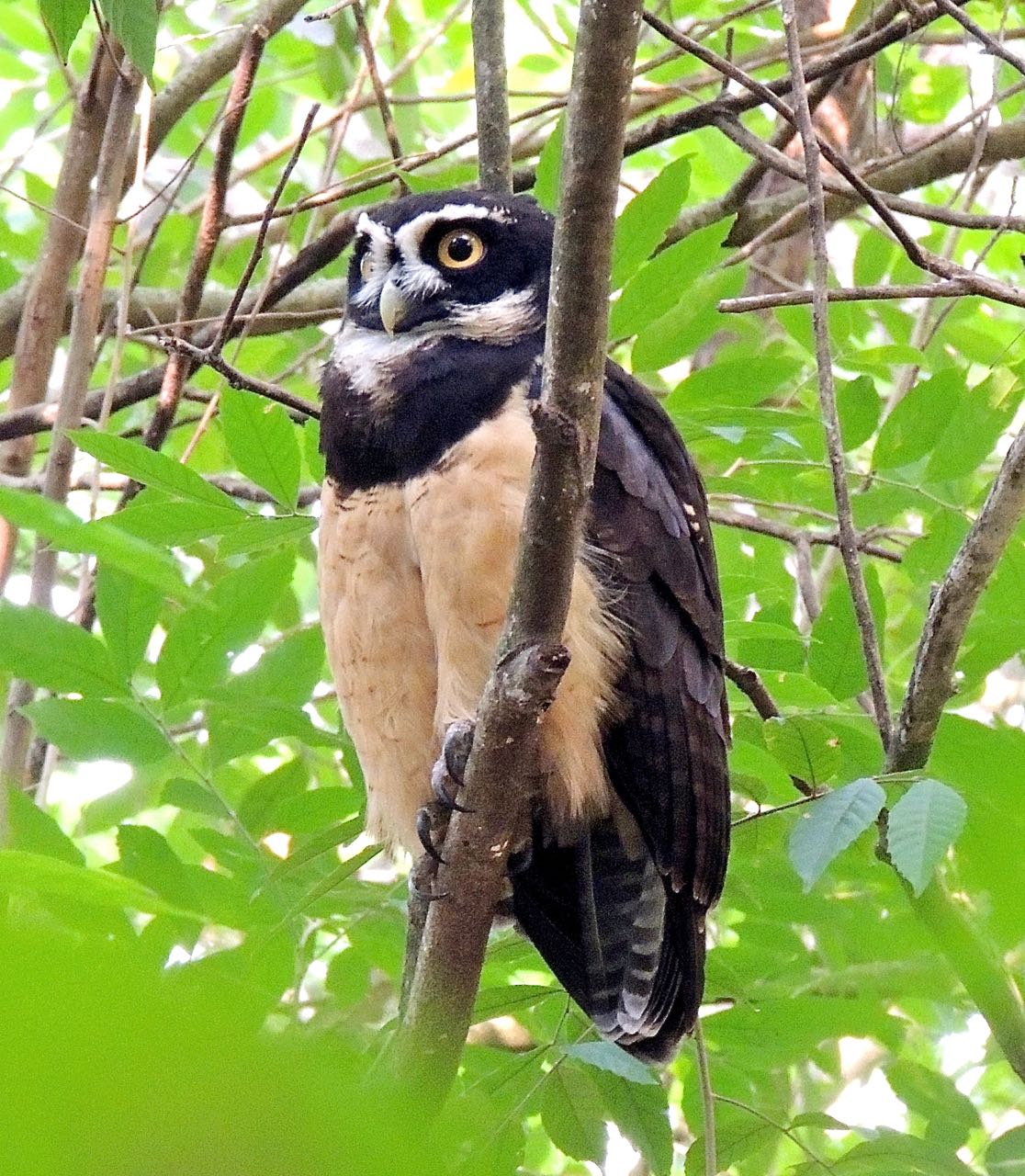 Spectacled Owl - Photo by William Young
Spectacled Owl - Photo by William Young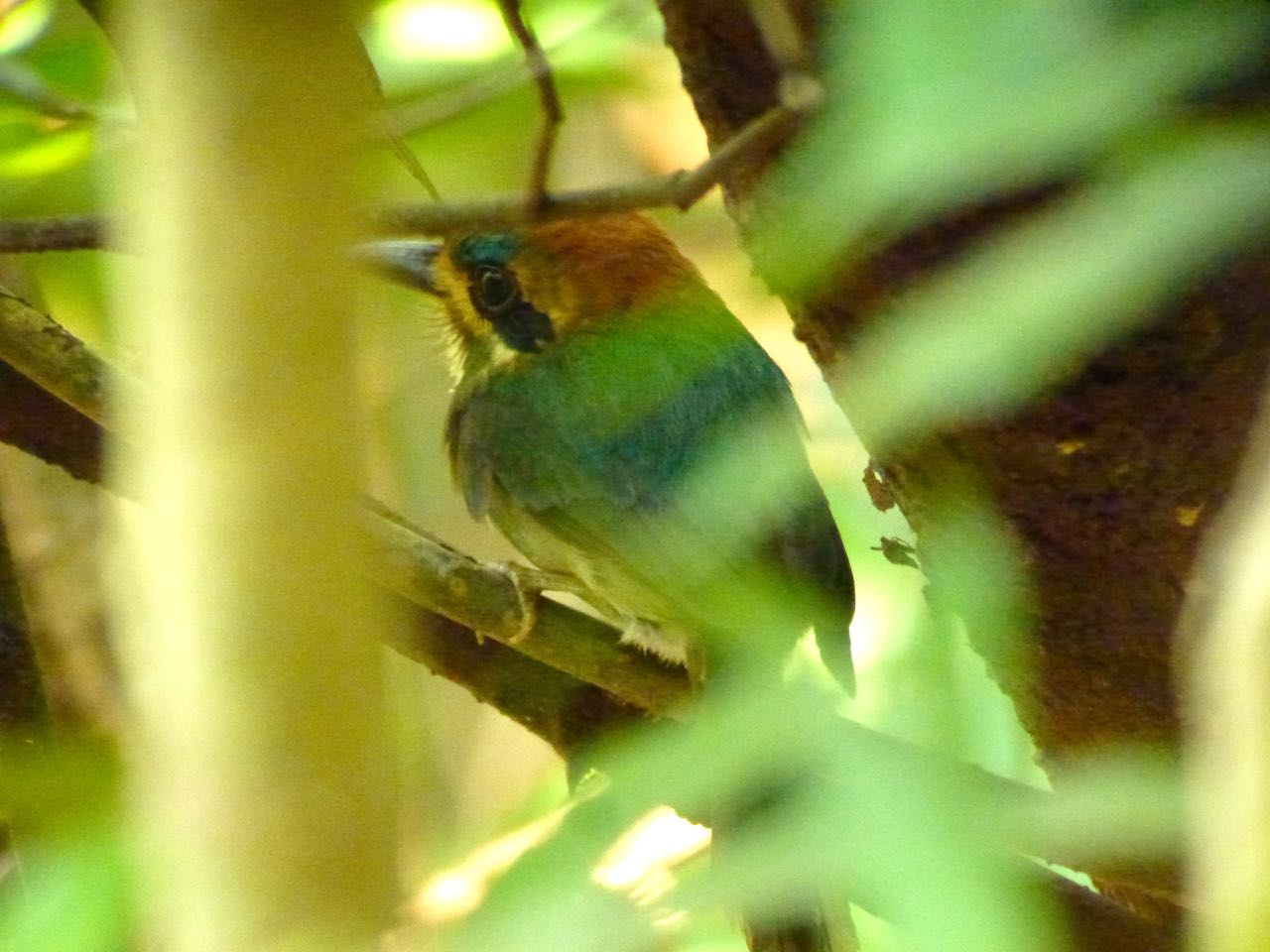 Tody Motmot - Photo by William Young
Tody Motmot - Photo by William Young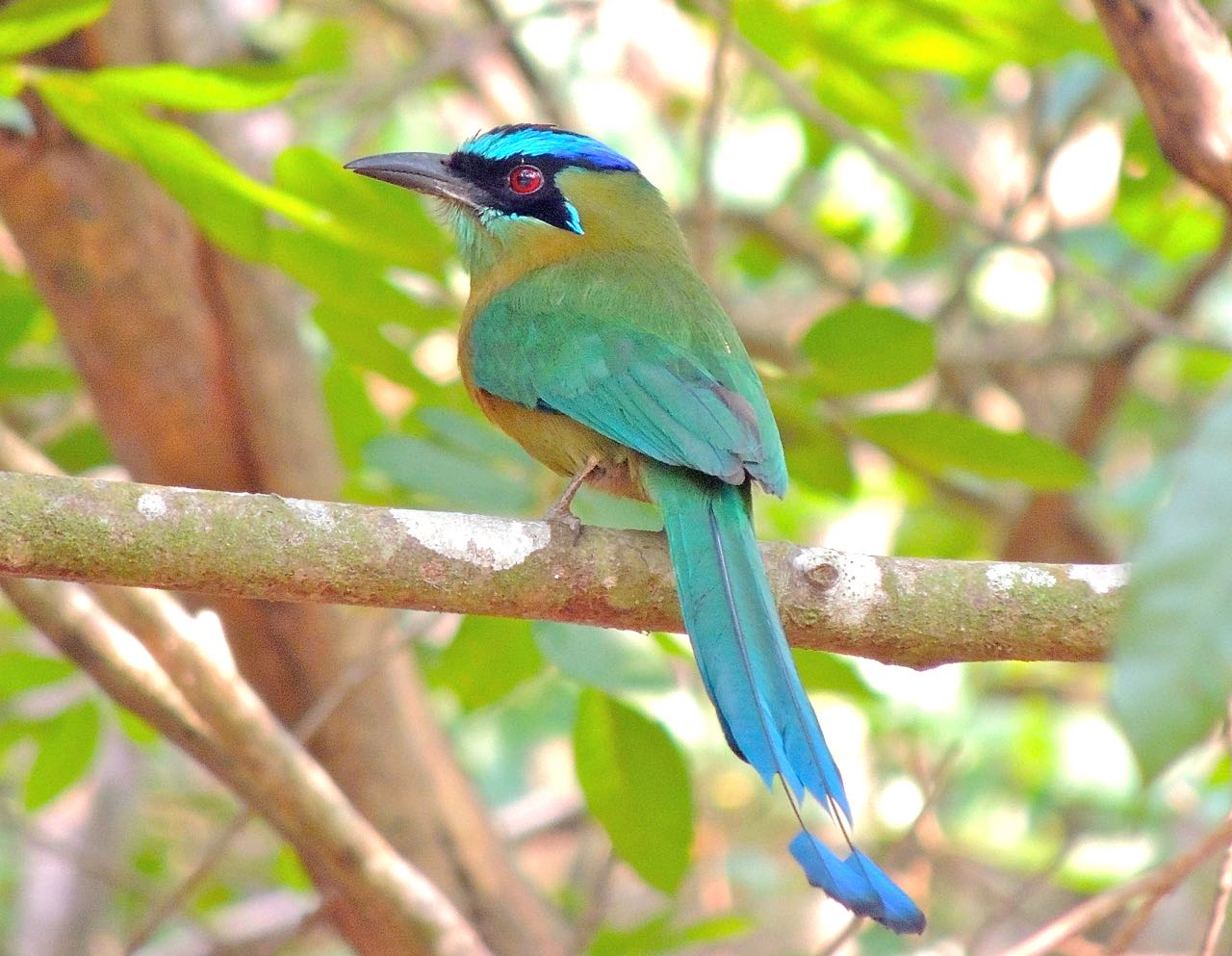 Whooping Motmot - Photo by William Young
Whooping Motmot - Photo by William YoungI also saw some migrant who will soon travel north. A male Scarlet Tanager was almost in the same binocular field with a male Summer Tanager. A couple of adult male Indigo Buntings were with a young male and a female. They foraged on the ground with a lot of Yellow-faced Grassquits. In the same area were a pair of Blue-black Grassquits. I saw my first Eastern Wood-Pewee of the trip. Our guide said he was not seeing many, and he also had seen very few Red-eyed Vireos. We saw a Yellow-green Vireo. We saw a female Lineated Woodpecker, and while I was watching, a Squirrel Cuckoo flew over my head. A Red-crowned Woodpecker was making a nest hole in a dead tree that already had a lot of large holes and crevices. We had good looks at Streaked, Boat-billed, and Social Flycatchers. The Streaked had a white line on ita side of the head that looked like a crown. We saw a Streaked Saltator, who is smaller and lighter below than both the Buff-throated and Black-headed. The Yellow-crowned Euphonia has a dark throat, unlike the Thick-billed who does not.
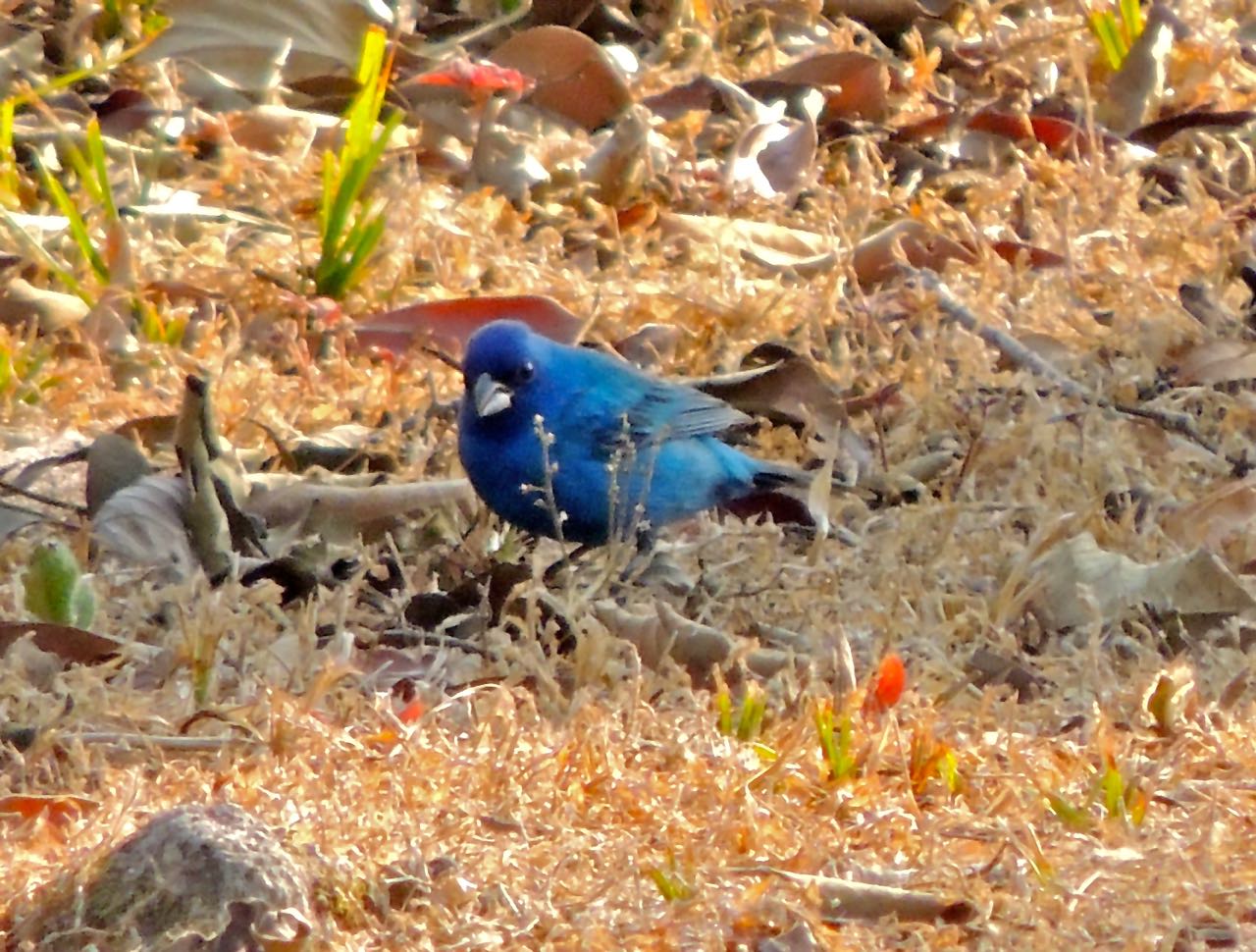 Indigo Bunting Male - Photo by William Young
Indigo Bunting Male - Photo by William Young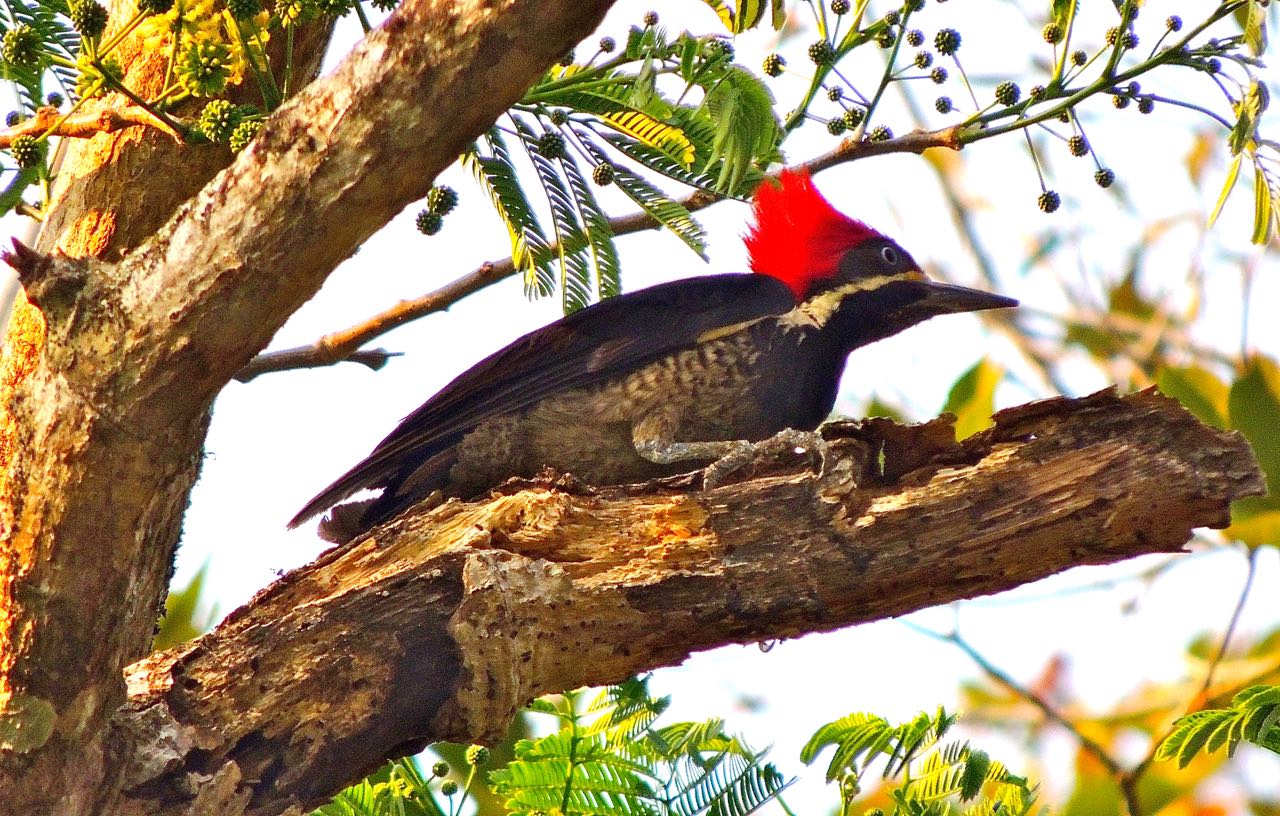 Lineated Woodpecker Female - Photo by William Young
Lineated Woodpecker Female - Photo by William Young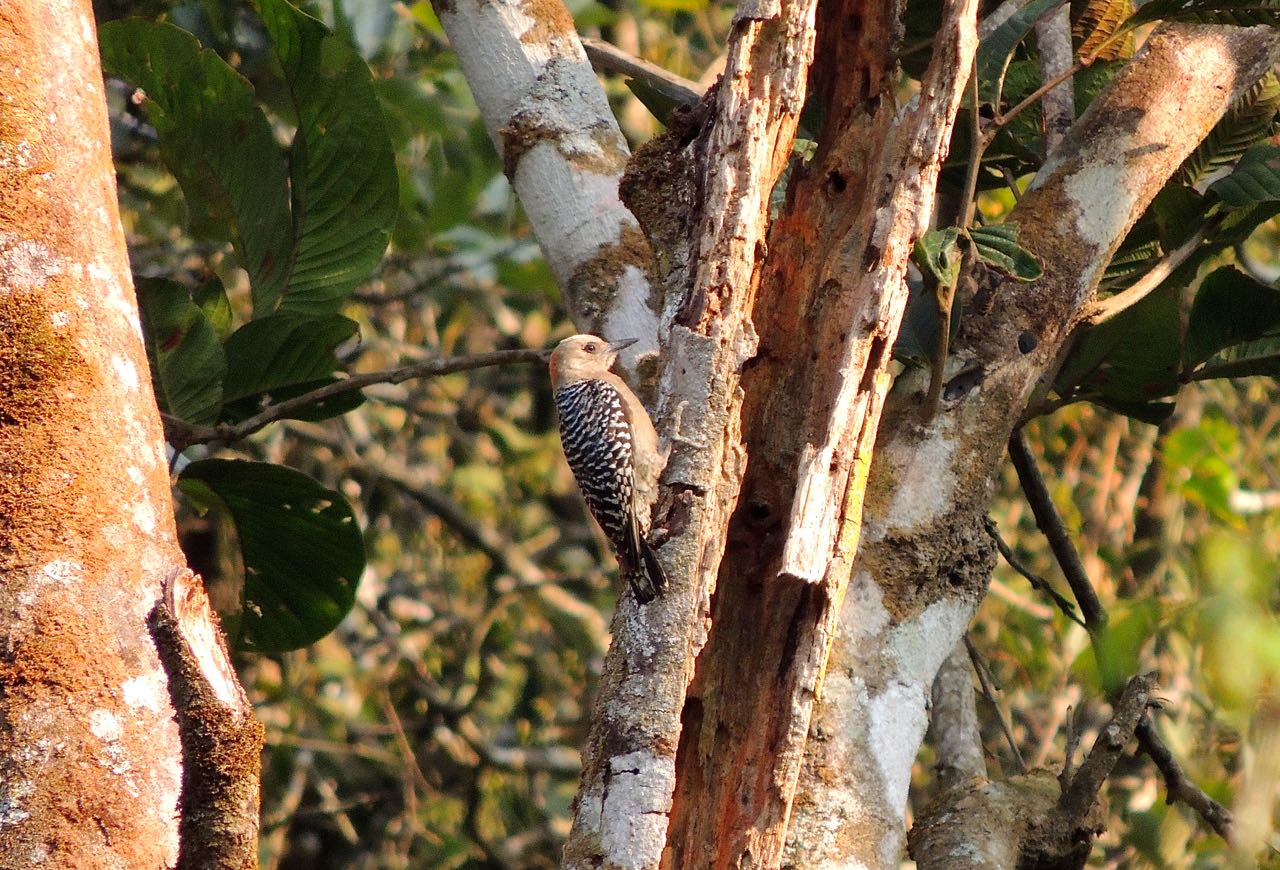 Red-crowned Woodpecker Female - Photo by William Young
Red-crowned Woodpecker Female - Photo by William Young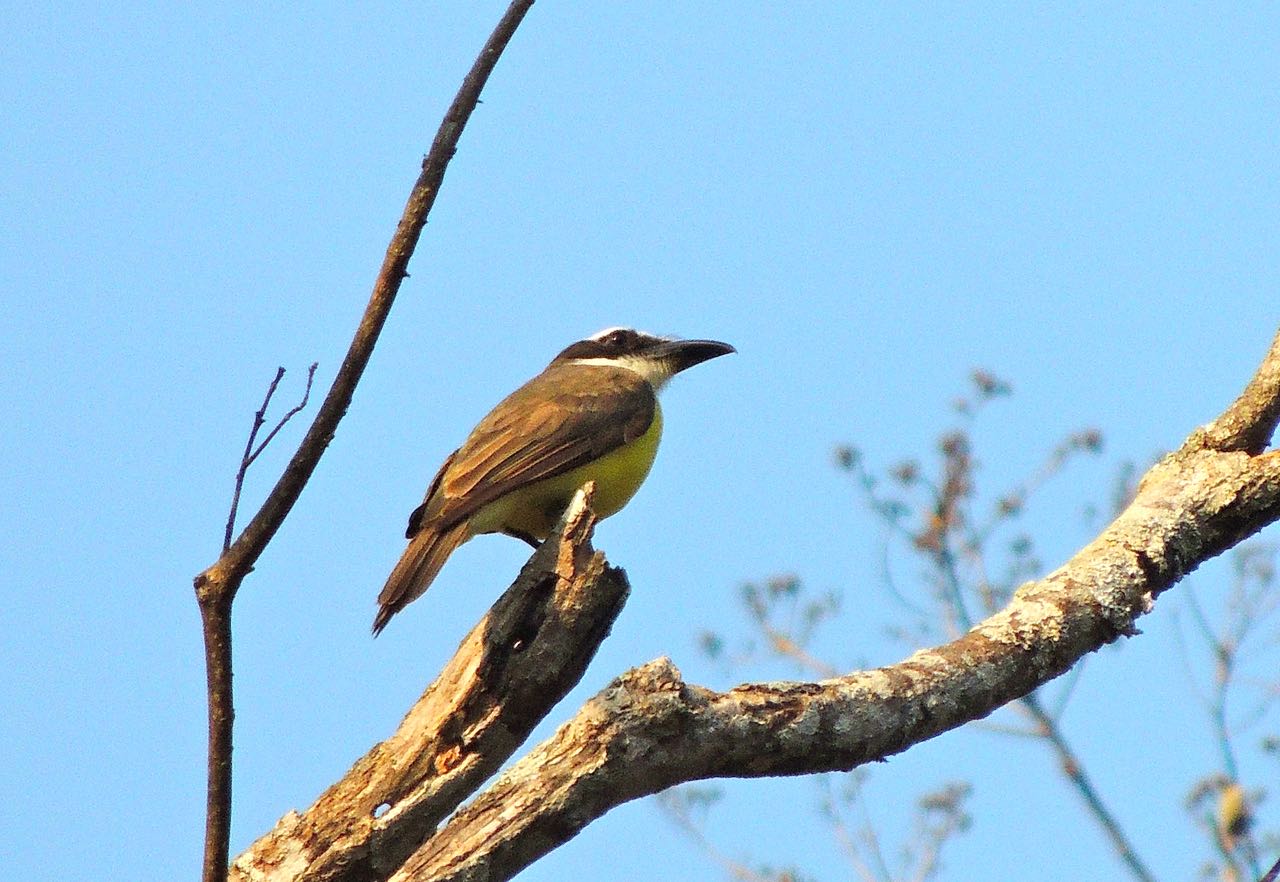 Boat-billed Flycatcher - Photo by William Young
Boat-billed Flycatcher - Photo by William Young
March 29I got up early this morning and said good-bye to a number of people. A Bay Wren found a spot that made its call reverberate in the dining area. I walked along the river, and I heard a Sunbittern calling. I also had a nice look at an Orange-billed Sparrow, who was close to the path.
My driver showed up just before 8:30 to take me from Canopy Lodge in El Valle to Canopy Tower, which is not far from the canal. When I got to the Tower, I saw Jenn Sinasac, who is a naturalist and the communications manager for the Canopy Family, and Jerry and Linda Harrison, whom I met on my 2012 trip. We mostly watched butterflies, and there were a lot of them flitting in the trees. Some butterflies are referred to as “cheaters,” because they perch on the windows inside the tower rather than staying outside, therefore making them easier to photograph. One of the cheaters was a metalmark called a White-patched Emesis. Another was a Yellow-tufted Prepona, which was old and beaten up. I took some photos, and Jenn and Linda said that Canopy Tower did not have a photo of one on their list. They rushed down and took more photos of it. I saw a Multesima Metalmark outside. Canopy Tower publishes lists of the various types of wildlife. When I was last here, the butterfly and moth list was simply a text list of all the species seen at and near the Tower and Lodge. Now, the document includes a great many photos, and it can be used as a field guide. While we were watching, I had a nice look at a Lesser Greenlet, a small vireo with a grey head. Linda found a Black-breasted Puffbird deep in the leaves.
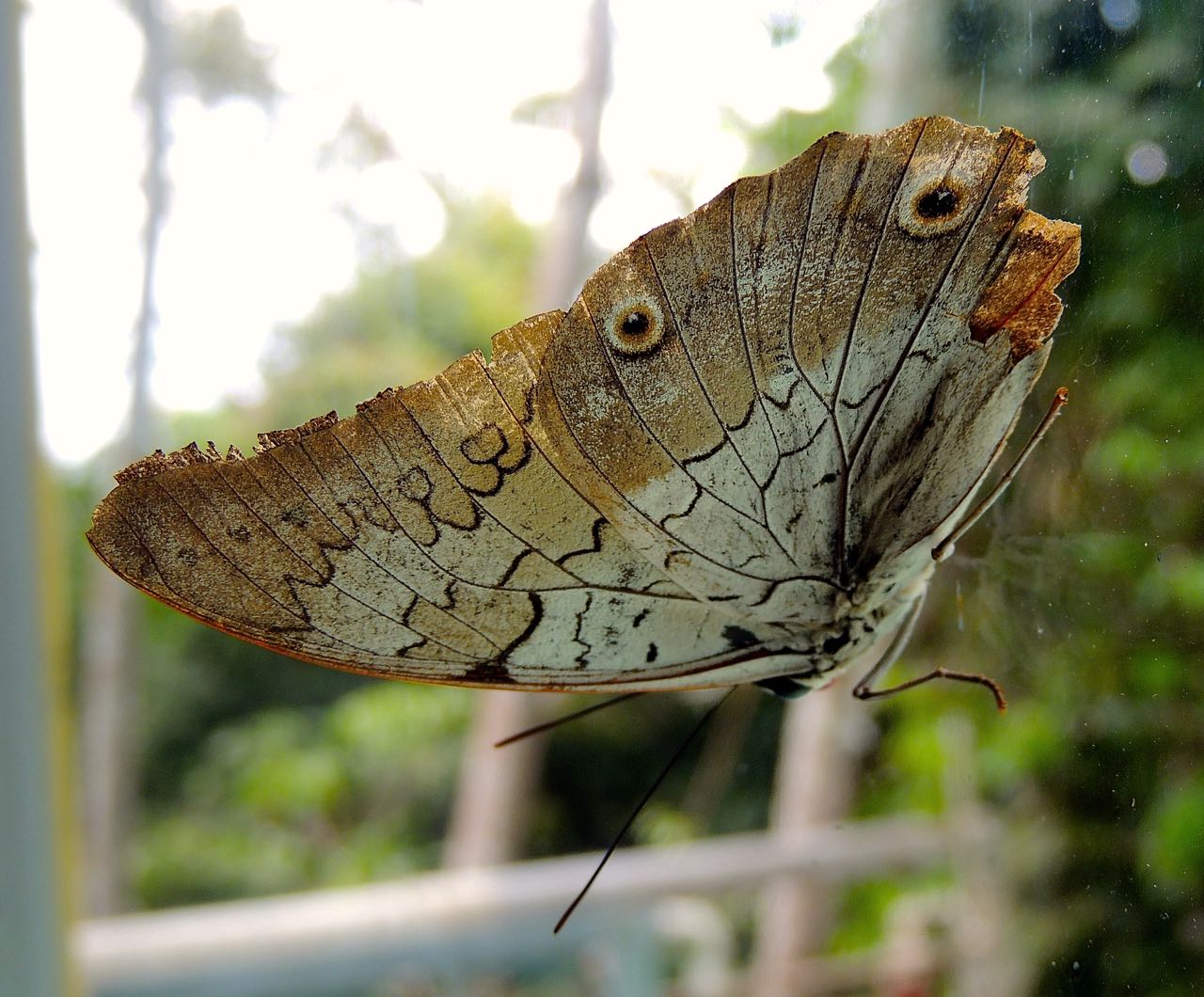 Yellow-tufted Prepona - Photo by William Young
Yellow-tufted Prepona - Photo by William Young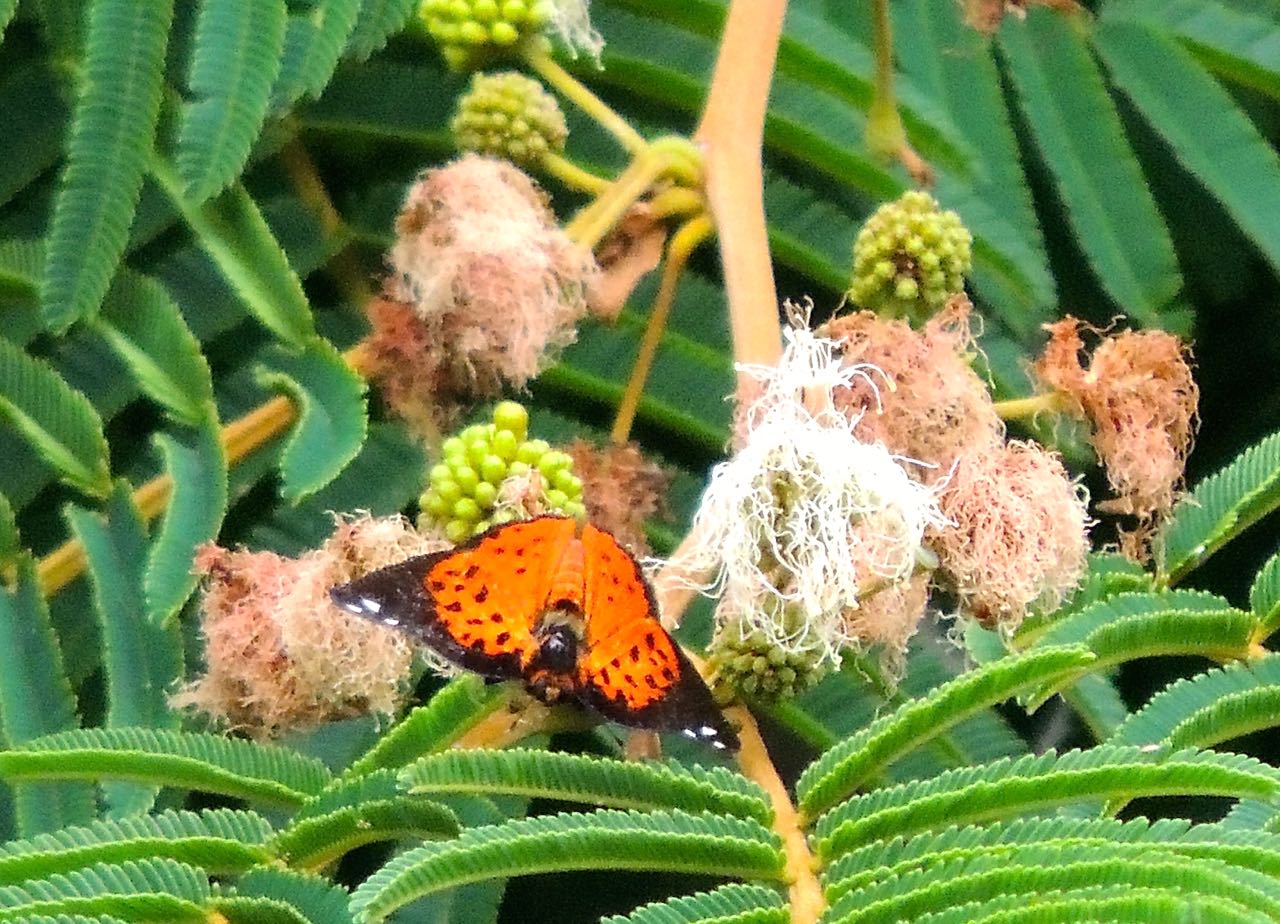 Multesima Metalmark - Photo by William Young
Multesima Metalmark - Photo by William YoungThis afternoon, I went birding with Michael Castro and three other people. Michael is a great guide whom I met when I was in Panama in 2012. We went to the Summit Gardens, just down the road from Canopy Tower. In addition to having a lot of wild birds, it also is a combination zoo and rehabilitation facility for birds and animals of Panama. I saw the two other birds I most want to see on the trip, but they were not wild — the Harpy Eagle and the Great Curassow. The Harpy Eagle is the national bird of Panama. The bird we saw today was between three and four years old and was born in the San Diego Zoo to Panamanian parents. Curassows have become uncommon in Panama. We also saw a Baird's Tapir, a Jaguar, some peccaries, and some Capybaras, all in captivity.
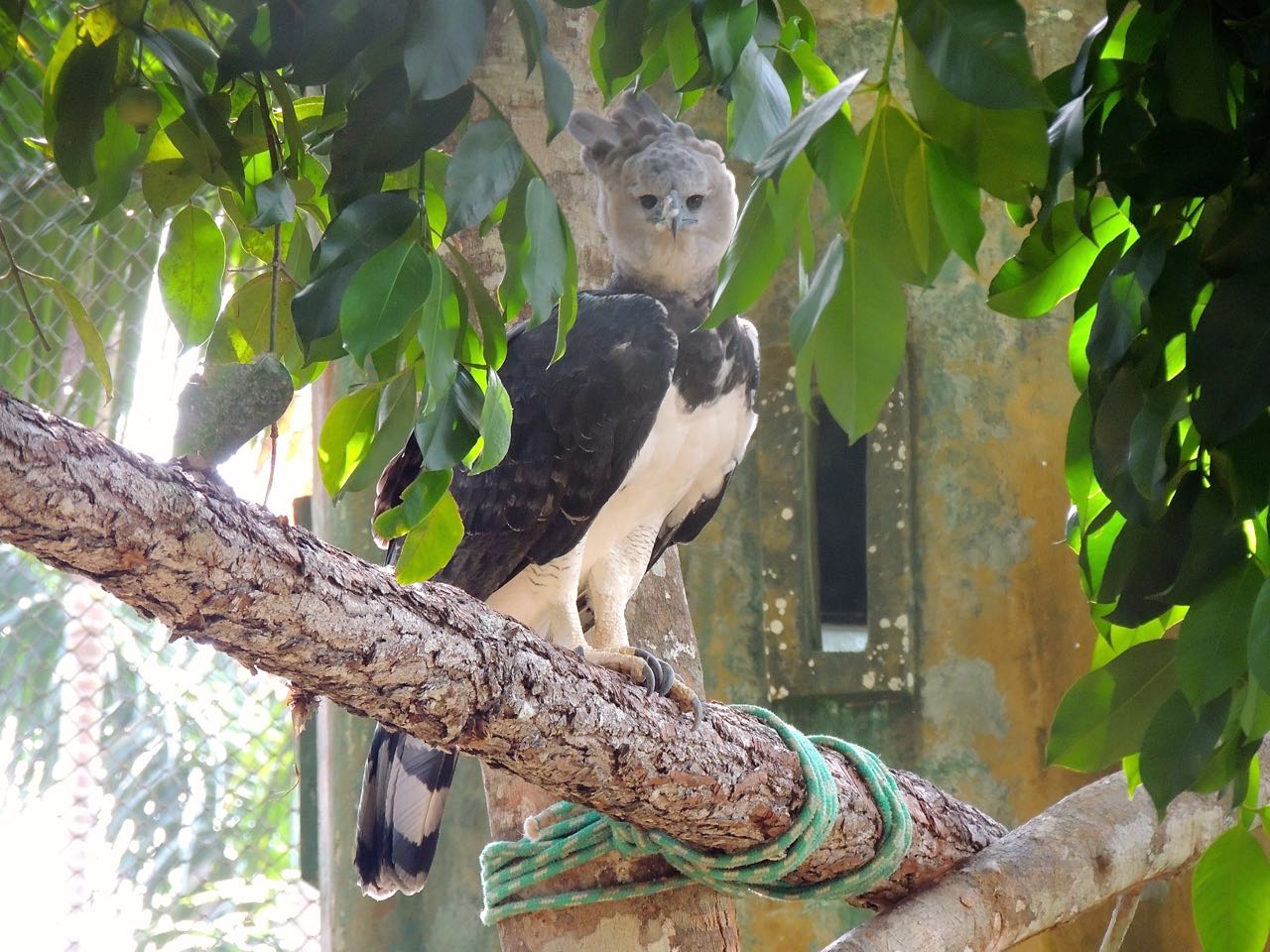 Harpy Eagle - Photo by William Young
Harpy Eagle - Photo by William Young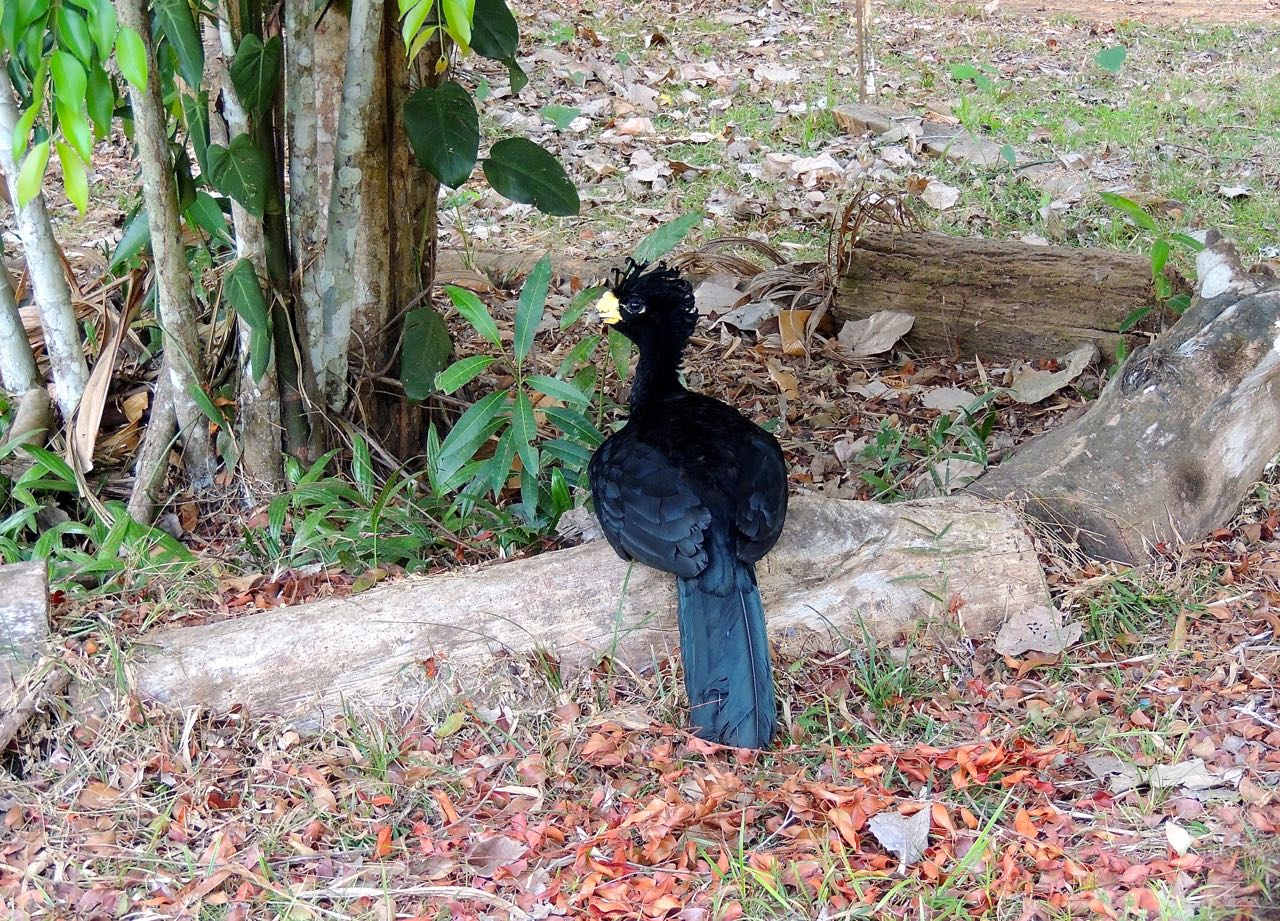 Great Curassow - Photo by William Young
Great Curassow - Photo by William Young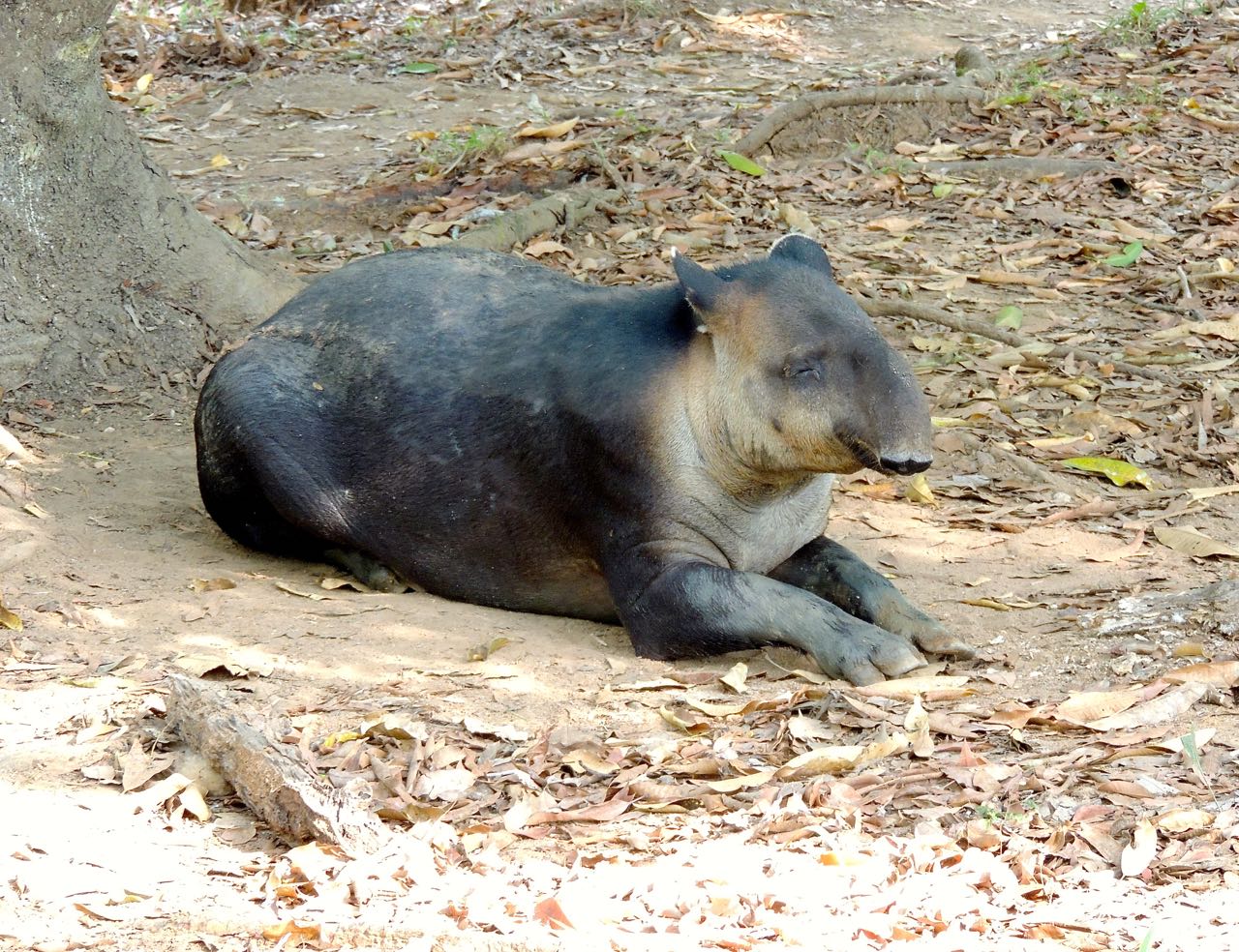 Baird's Tapir - Photo by William Young
Baird's Tapir - Photo by William Young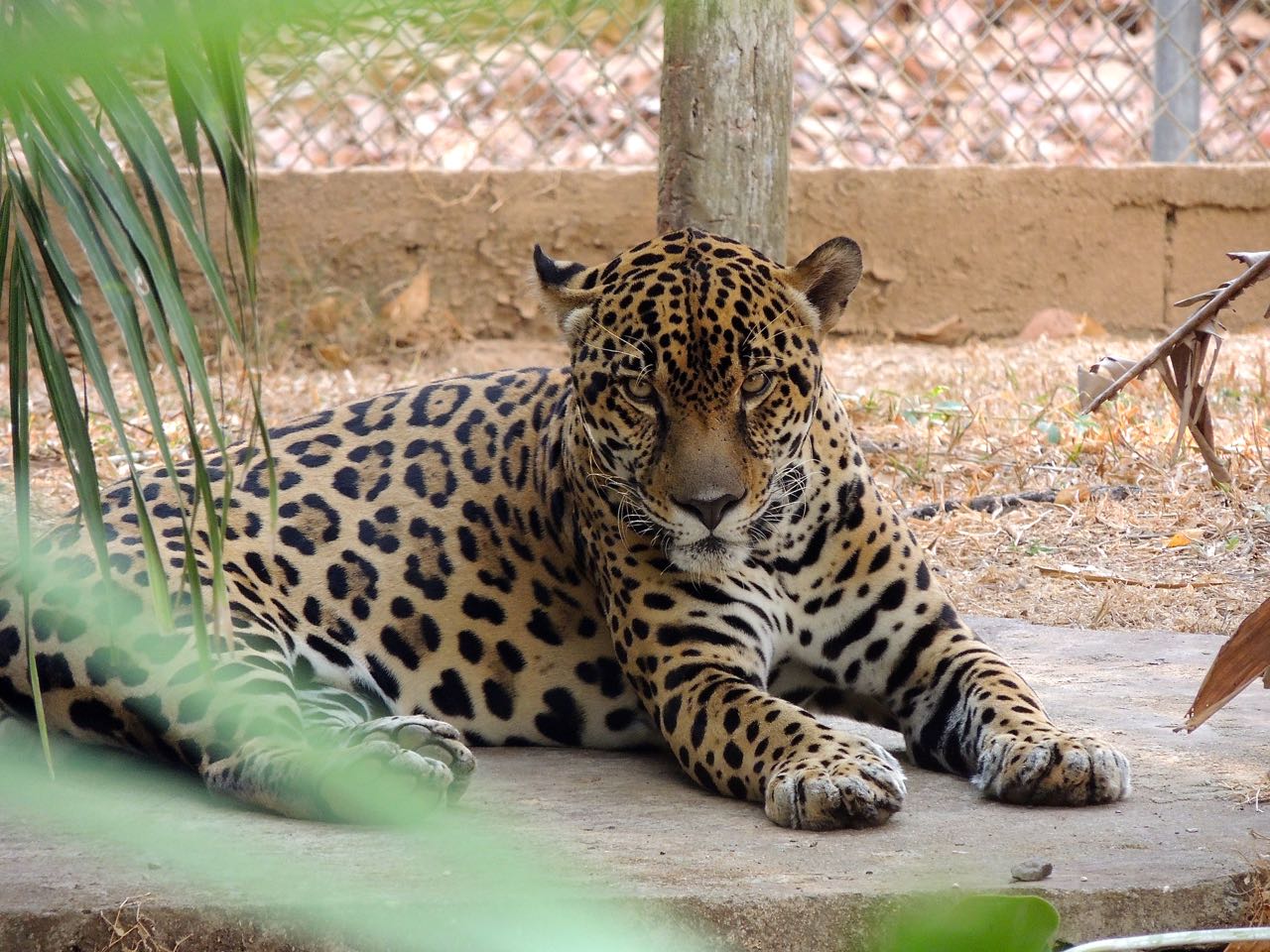 Jaguar - Photo by William Young
Jaguar - Photo by William YoungAmong the wild birds we saw were a pair of Lesser Nighthawks. They have excellent camouflage and look like the bark of a tree. I also had a chance to study three flycatchers who look alike — the Rusty-margined Flycatcher, and the Great and Lesser Kiskadees. The Rusty-margined has a rufous patch on the lower wing. A Piratic Flycatcher called from a tree. We saw a couple of hundred migrating Turkey Vultures flying high. A Great Black Hawk was on a nest, and a few Yellow-headed Caracaras flew around. Band-rumped Swifts flew over — they look small. A couple of Tropical Mockingbirds flew around, and a Northern Waterthrush was bobbing near a bench. The park also had a Cannonball Tree and many plants, including a Venezuela Rose.
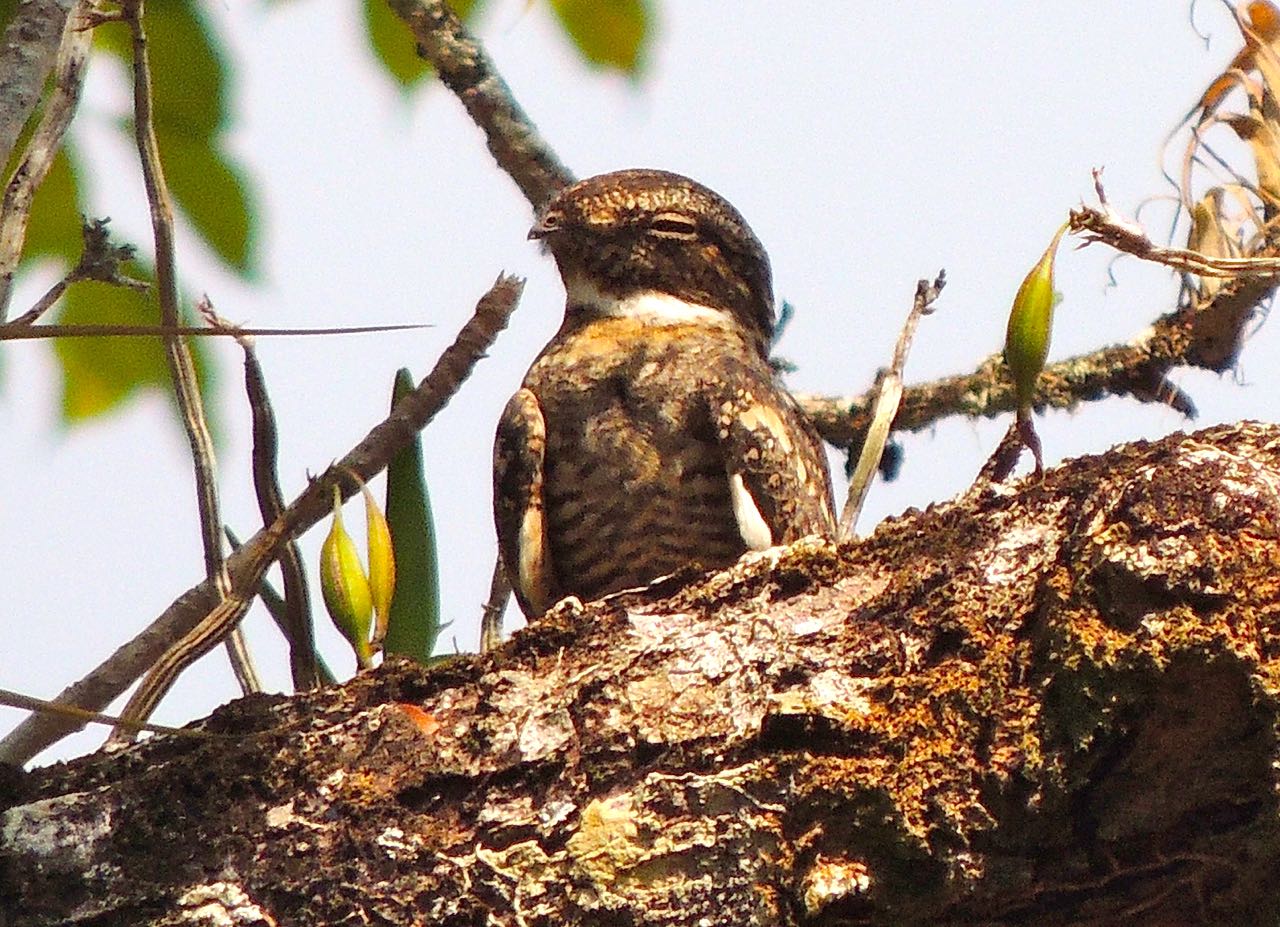 Lesser Nighthawk - Photo by William Young
Lesser Nighthawk - Photo by William Young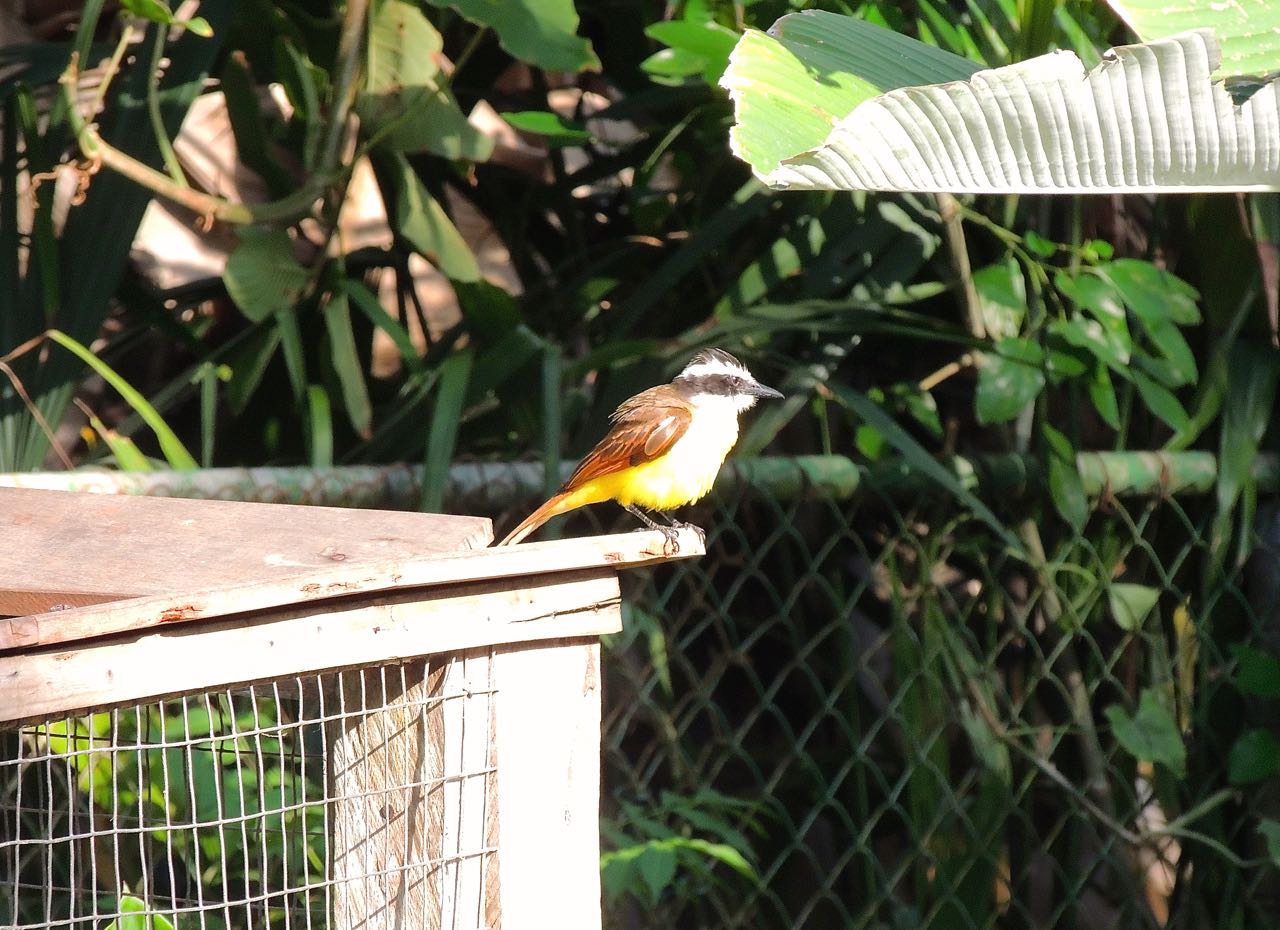 Rusty-margined Flycatcher - Photo by William Young
Rusty-margined Flycatcher - Photo by William Young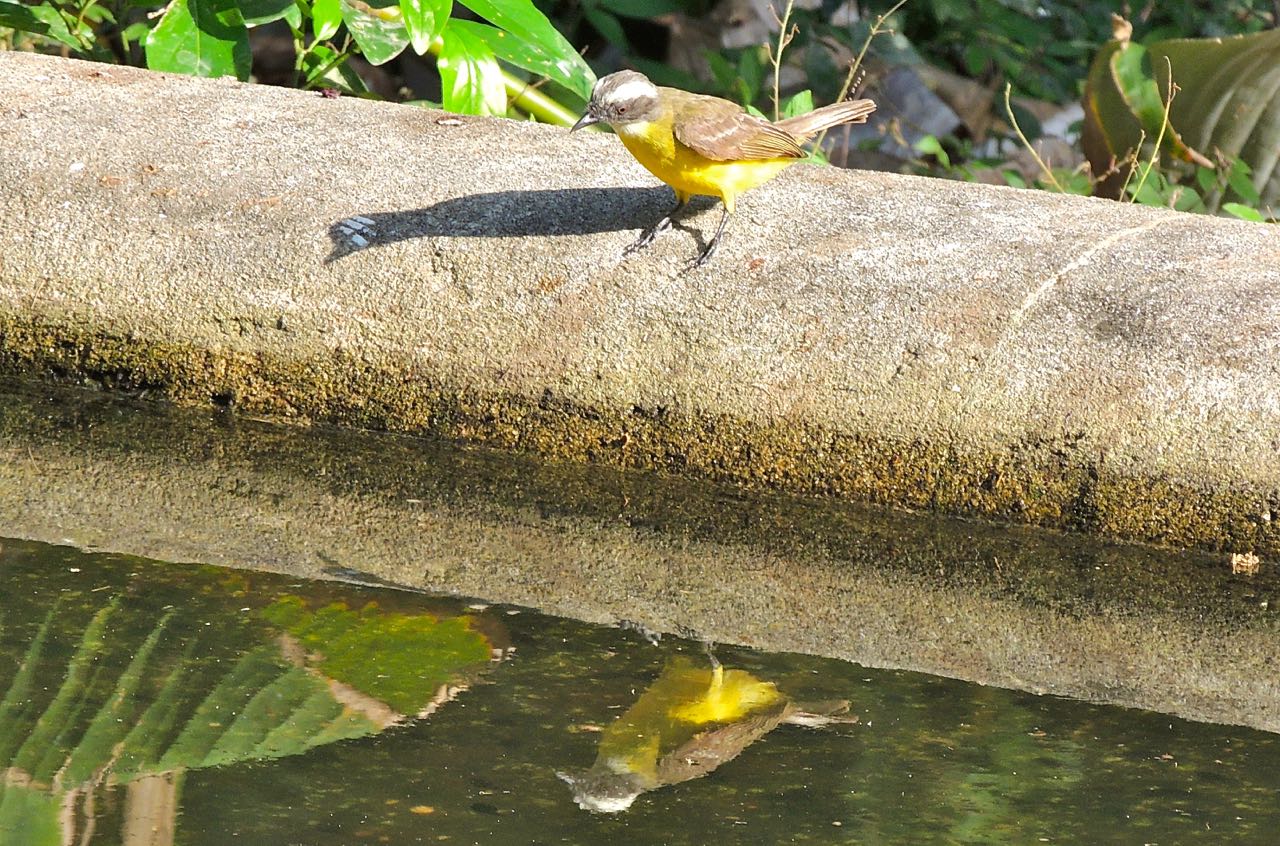 Rusty-margined Flycatcher - Photo by William Young
Rusty-margined Flycatcher - Photo by William Young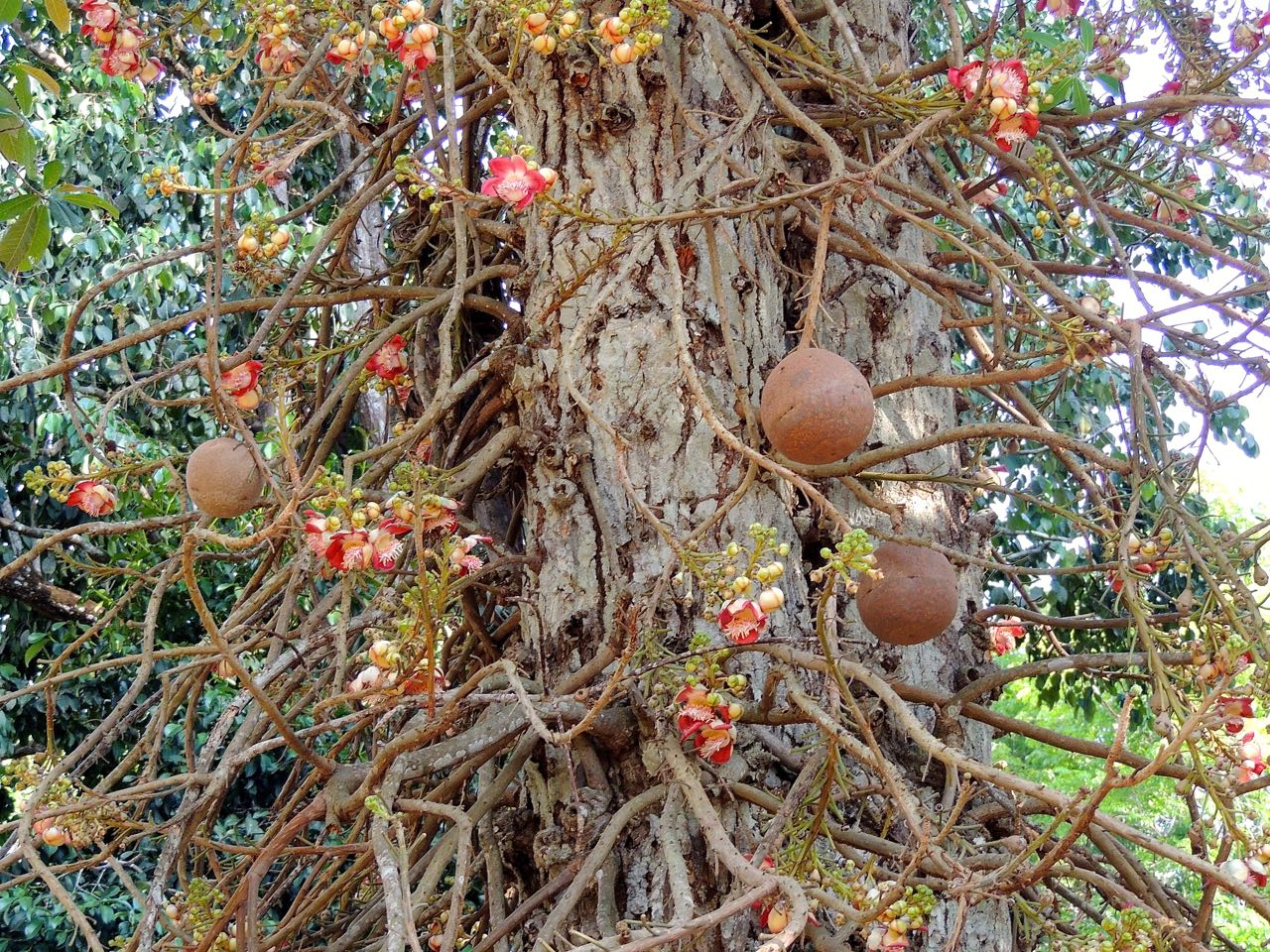 Cannonball Tree - Photo by William Young
Cannonball Tree - Photo by William Young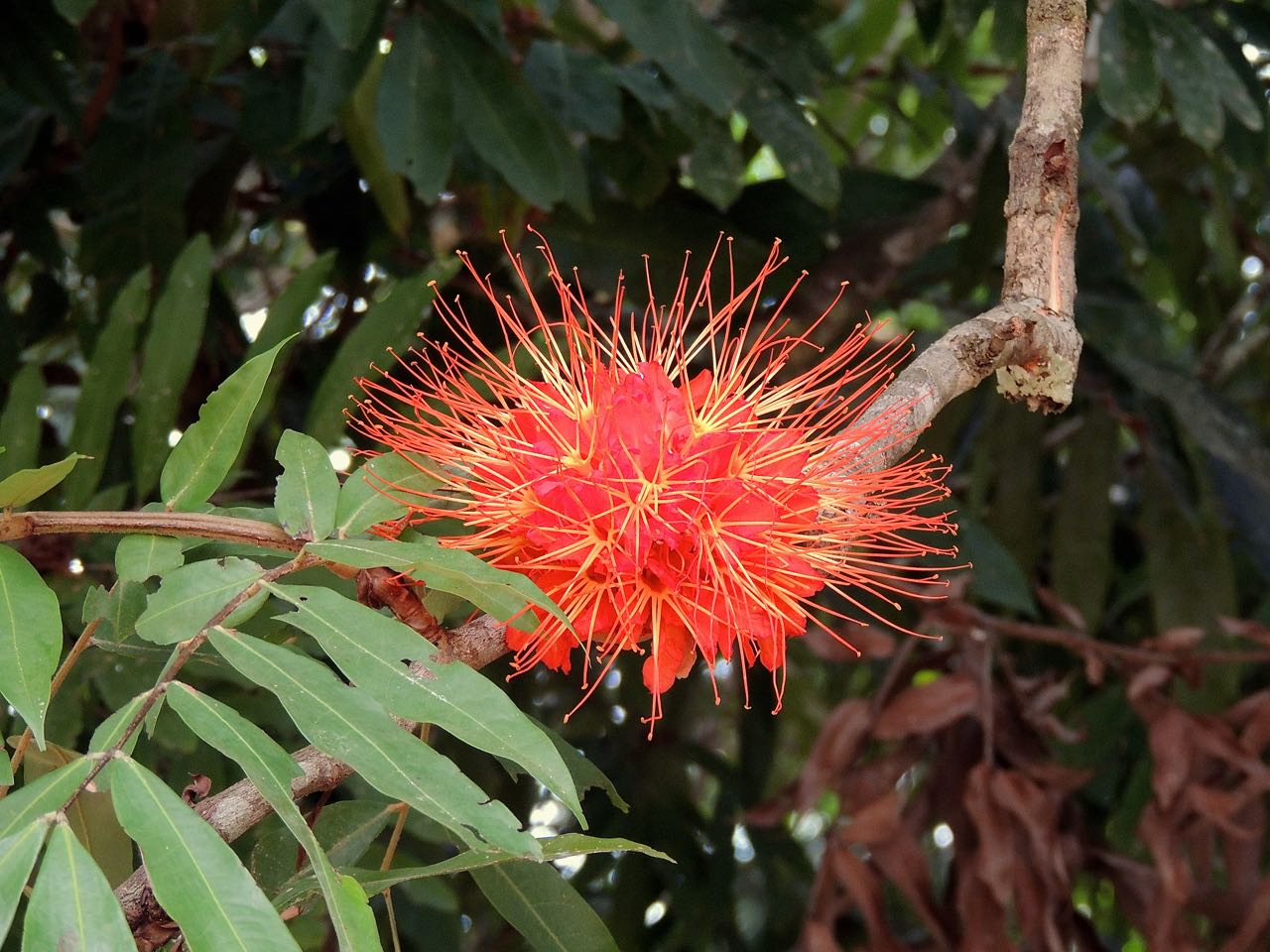 Venezuela Rose - Photo by William Young
Venezuela Rose - Photo by William YoungDriving down Semaphore Hill Road, I saw my first Howler Monkey. I could hear Great Tinamous calling. When we got back to the Tower, I watched hummingbirds around the feeder, including White-necked Jacobins, Blue-chested Hummingbirds, a Long-billed Hermit, and White-vented Plumeleteers.
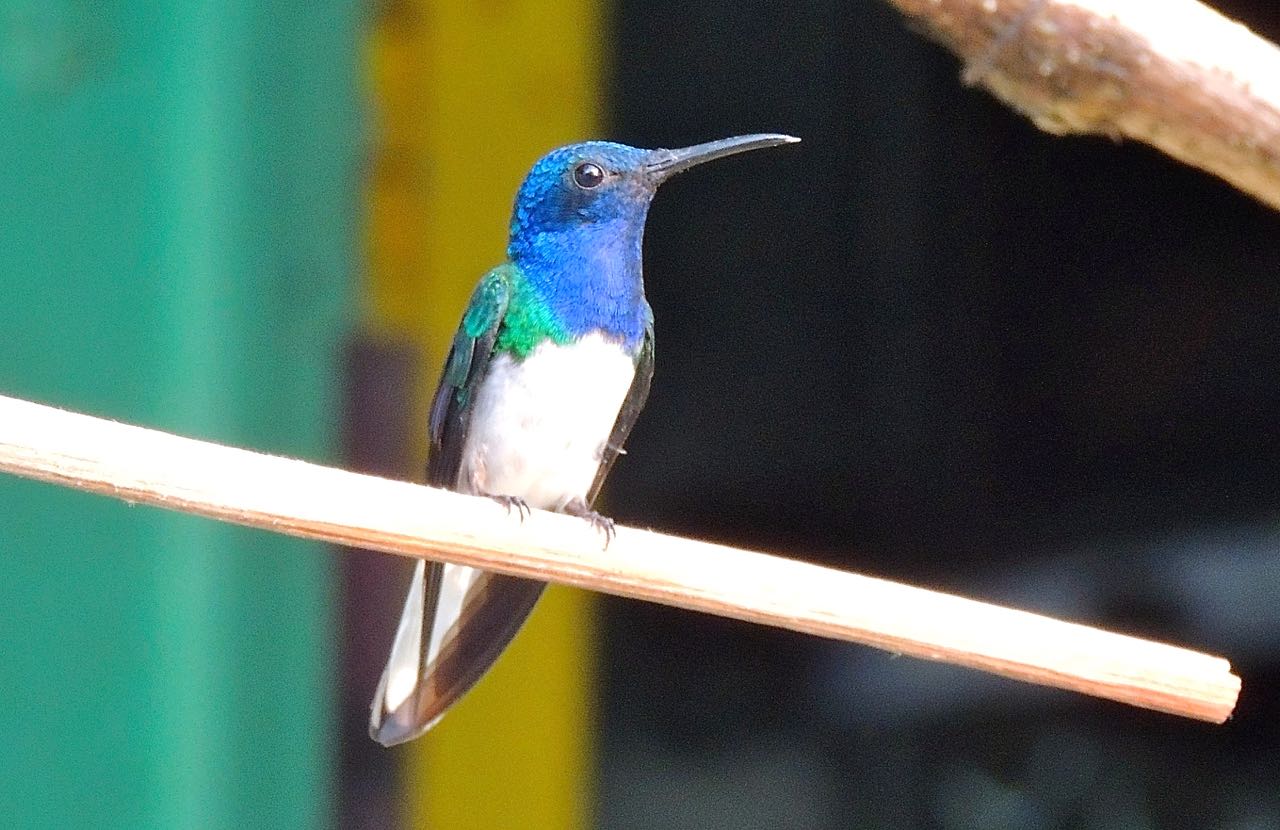 White-necked Jacobin - Photo by William Young
White-necked Jacobin - Photo by William Young
March 30We left the tower at 6:45 and stopped at the Ammo Ponds. We saw a White-throated Crake, but I did not see the underparts — only the solid brown back. There were about 30 Wattled Jacanas and one young Purple Gallinule, who looked blue-gray rather than purple. I saw a Mangrove Swallow, who has a white rump. A lot of Barn Swallows sat on a wire with one Gray-breasted Martin. Frigatebirds flew over the canal across the road. We saw a couple of Great Egrets, a Little Blue Heron, and a Rufescent Tiger-Heron. A Striated Heron popped up. An Amazon Kingfisher perched in a nearby tree. A couple of Red-lored Parrots flew over.
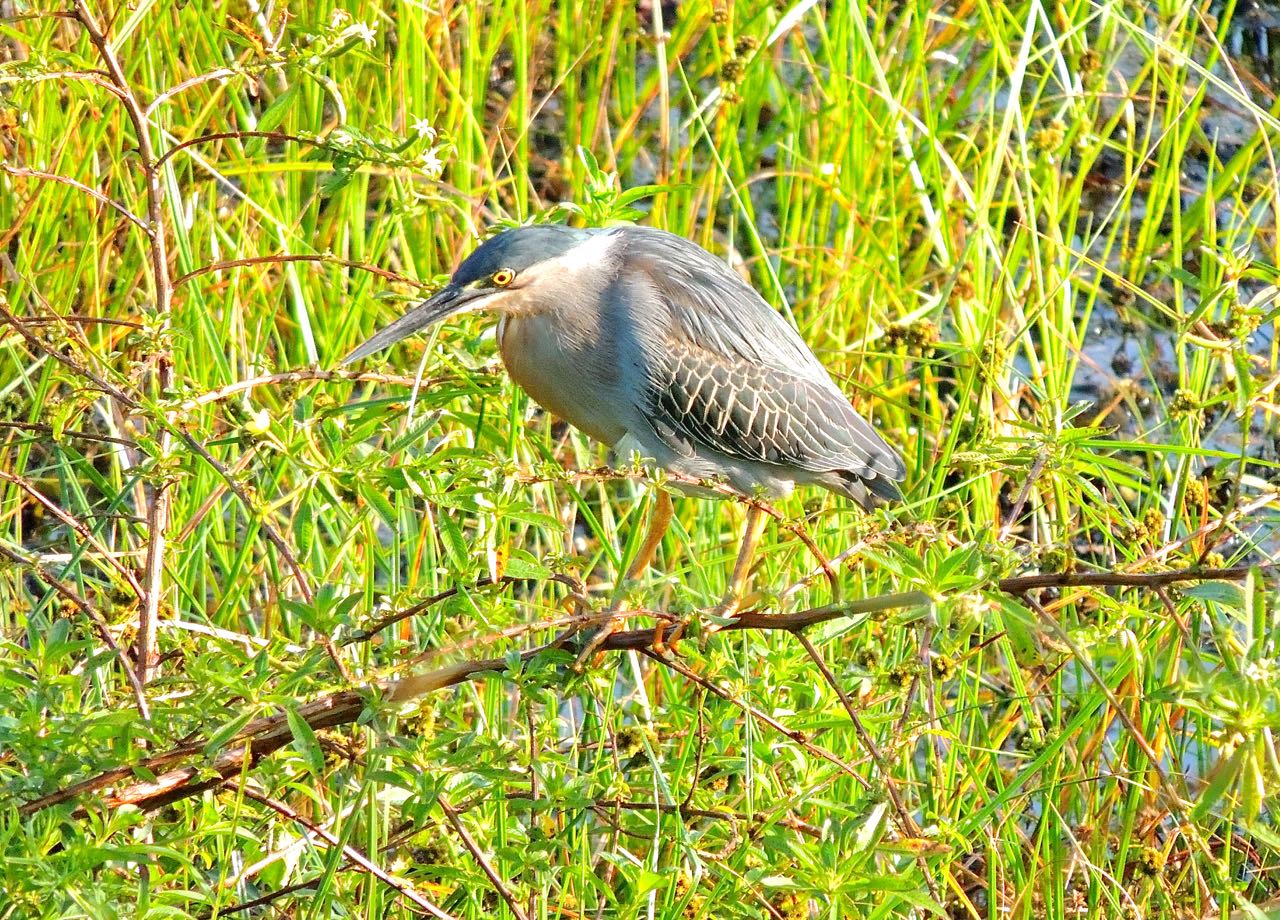 Striated Heron - Photo by William Young
Striated Heron - Photo by William YoungWe then headed to the Pipeline Road. A young Gray-chested Dove was in the road. We saw a couple of female White-tailed Trogons, who are blackish with yellow underparts and a large bluish eyering. We later saw a male, who is blue rather than blackish and has a blue eyering. The male called frequently. We saw a female Slaty-tailed Trogon, the only Panama trogon with a red bill. We had nice looks at both a Black-breasted Puffbird, who is black-and-white, and a White-whiskered Puffbird, who is brown and smaller. We also saw a Whitened Crescent butterfly.
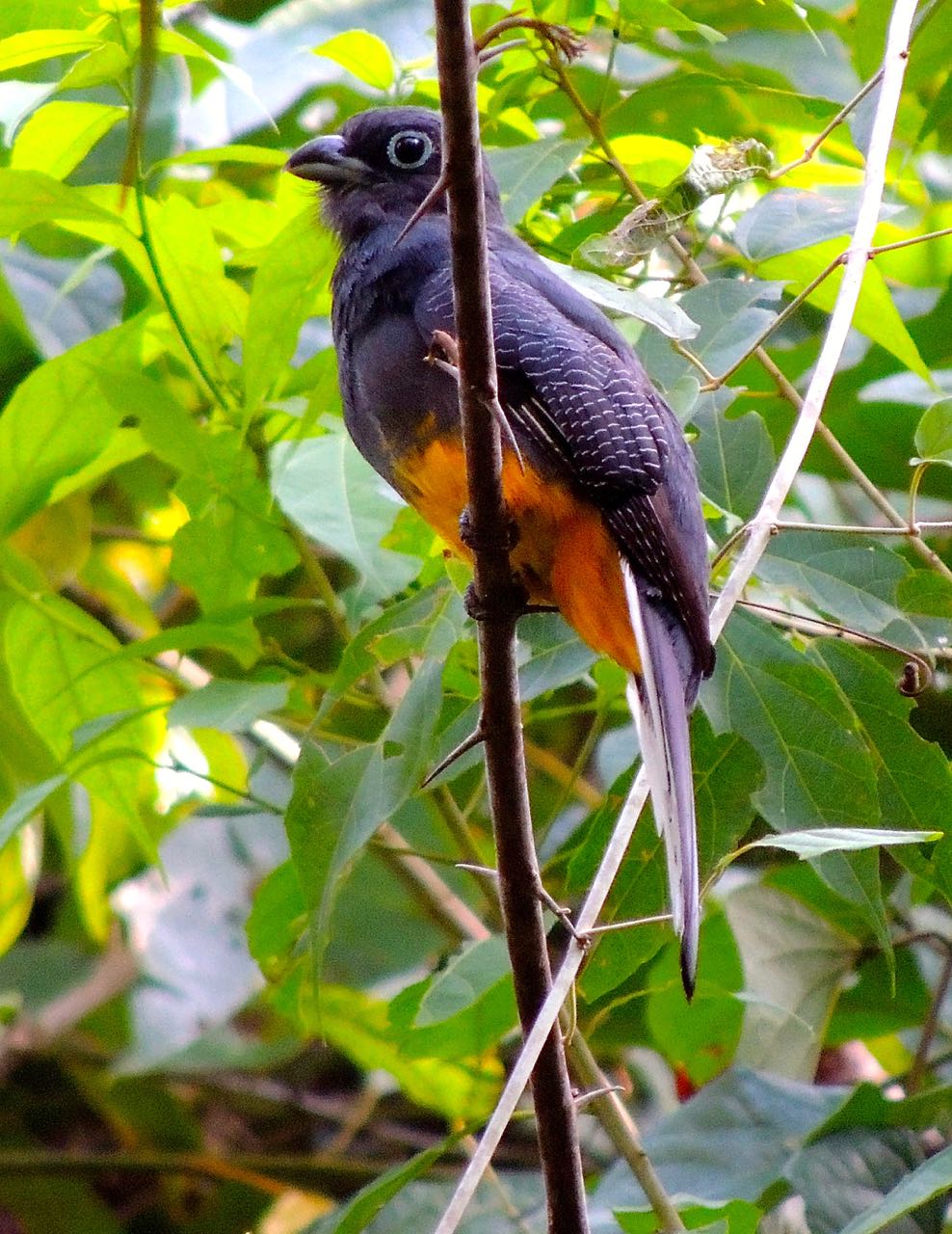 White-tailed Trogon Female - Photo by William Young
White-tailed Trogon Female - Photo by William Young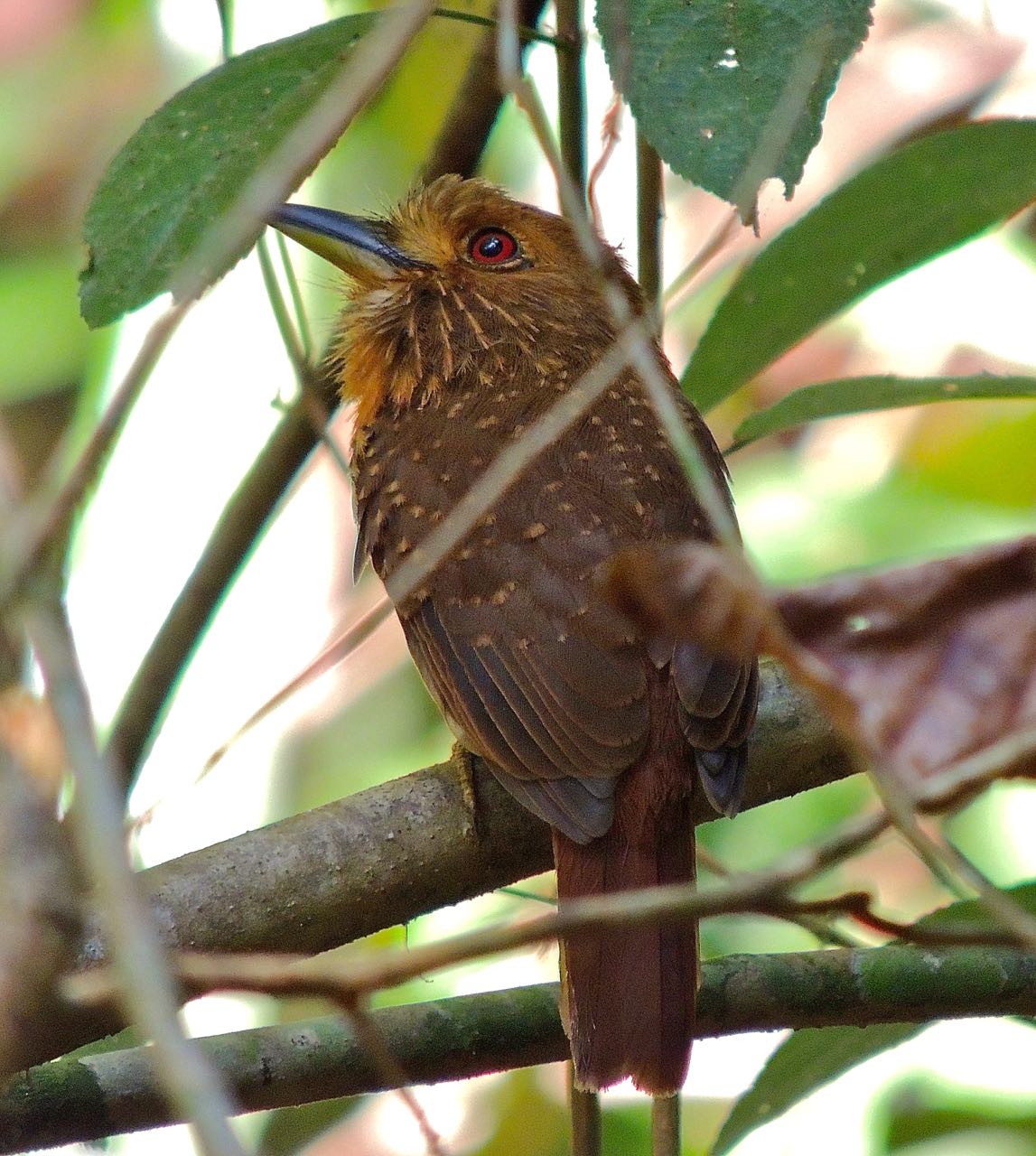 White-whiskered Puffbird - Photo by William Young
White-whiskered Puffbird - Photo by William Young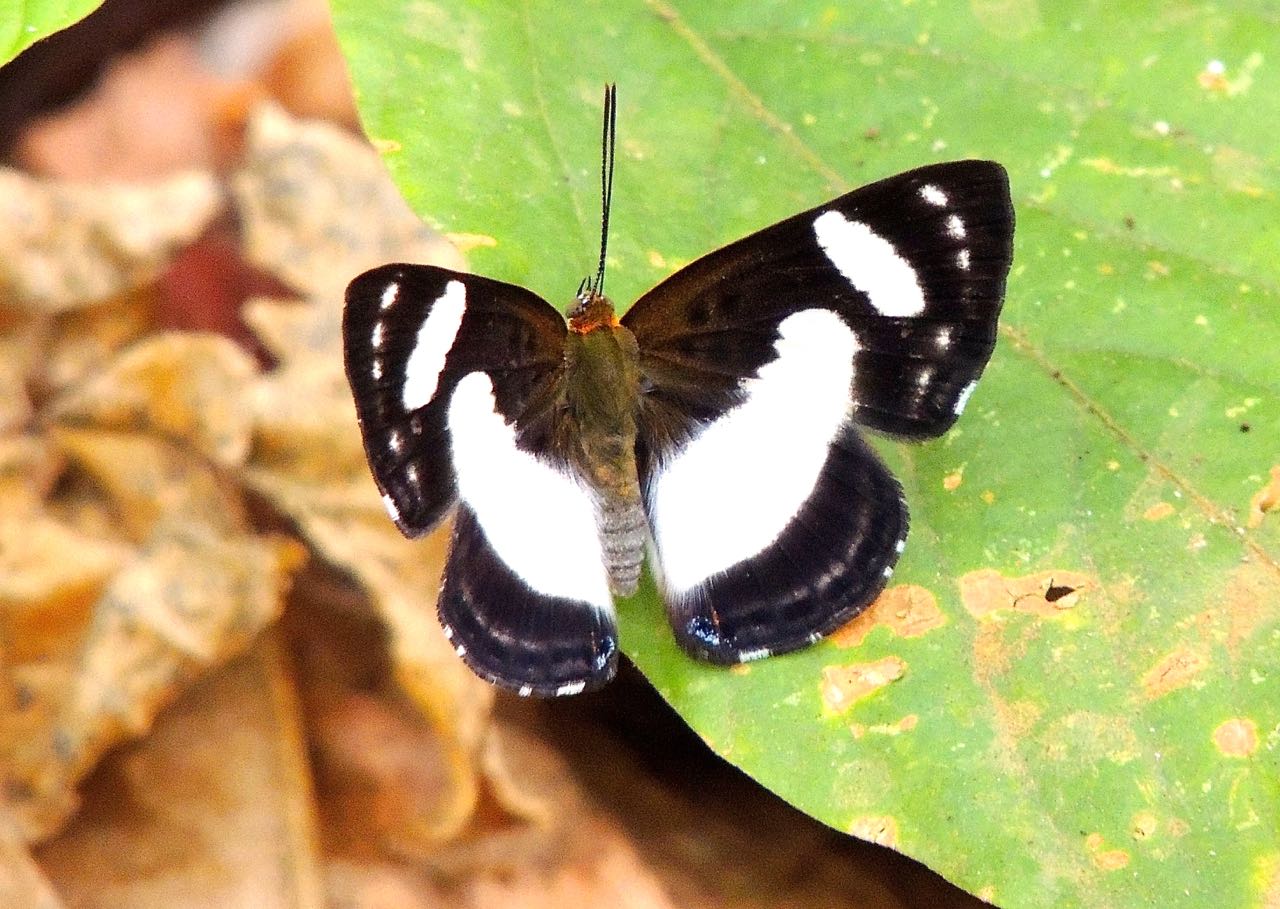 Whitened Crescent - Photo by William Young
Whitened Crescent - Photo by William YoungOne of the highlights was seeing a Great Potoo sitting erect on a branch, with a chick who appeared to be less than a week old. The adult kept her eyes closed but let her head sway, both to detect what was going on around her and to act like a branch in the wind. A Streak-chested Antpitta foraged in the leaf litter. I did not hear the bird vocalize, but I saw it inflate its body a few times. Nearby were a pair of Tawny-faced Gnatwrens, who are beautiful, with a rufous cheek and a white throat. Tropical Gnatcatchers were in the trees, behaving like the Blue-gray. A female Blue Cotinga was in a tree — she is brown and spotted. I had a nice look at a White-breasted Wood-Wren and could see the black-and-white cheek pattern. I was excited to see Song Wrens, who look like a House Wren from behind, but have a rufous throat and bare skin around the eye. We did not hear much of the haywire cuckoo-clock song. We heard a Rufous Piha, who sang a one-note song, and we saw a Rufous Mourner, who is a large rufous flycatcher. We saw a perched Brownish Twistwing, but it was not twisting its wings. The Southern Bentbill is a small flycatcher with a long curved bill. A Grayish Elaenia was in a tree and looked like a monochrome version of an elaenia. We saw a Spotted Antbird, a Black-crowned Antshrike (formerly the Western Slaty Antshrike), and a Checker-throated Antwren. The Dot-winged Antwren has white spots under its tail like a Yellow-billed Cuckoo. We saw two male White-flanked Antwrens chasing a female. One male seemed exhausted after the chase, and I watched him while he rested. After lunch, we were walking across a bridge over Rio Frijoles (Beans River) when we saw a Sunbittern. I did not see any in 2012, and already I had seen three.
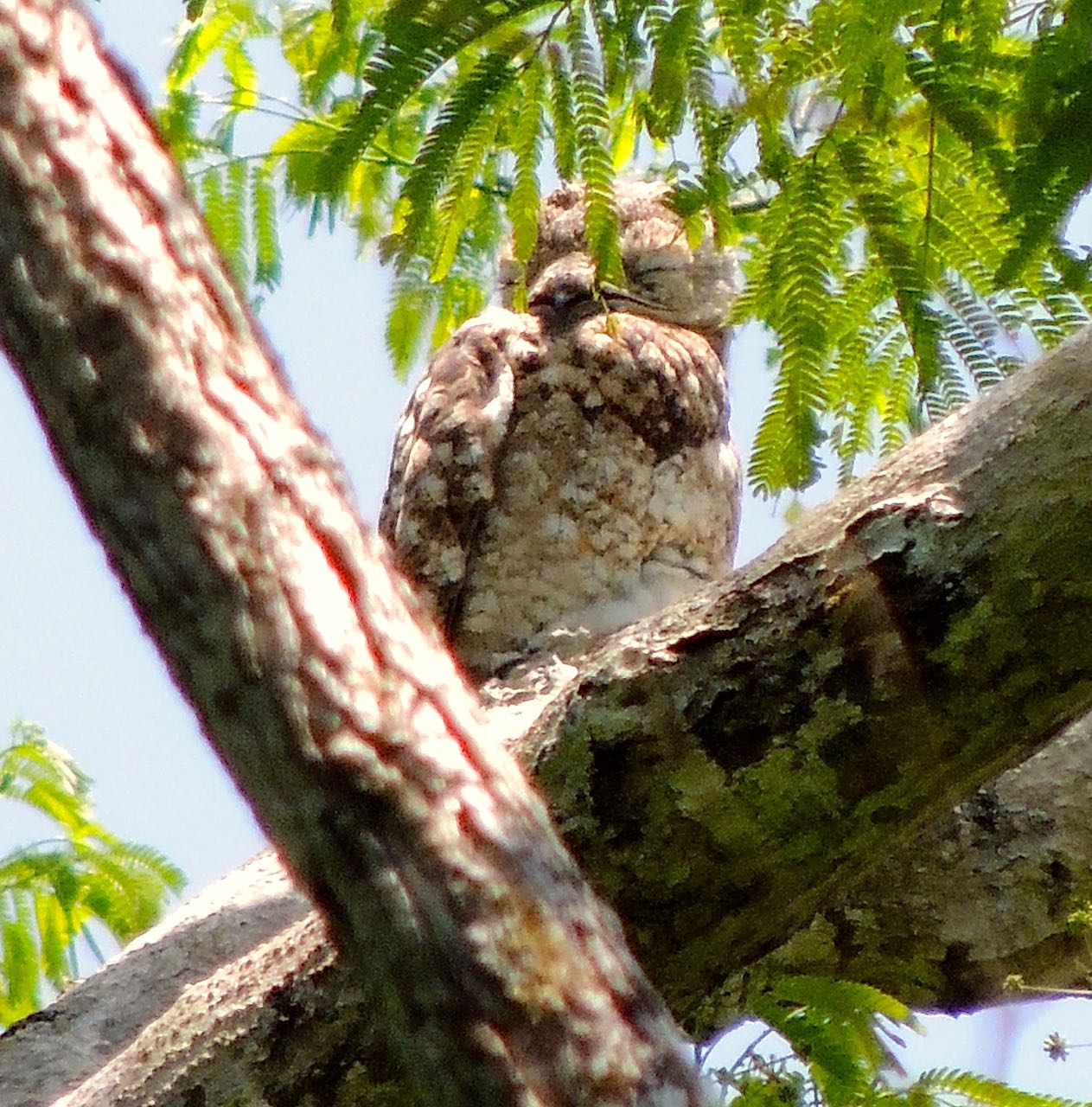 Great Potoo with Chick - Photo by William Young
Great Potoo with Chick - Photo by William Young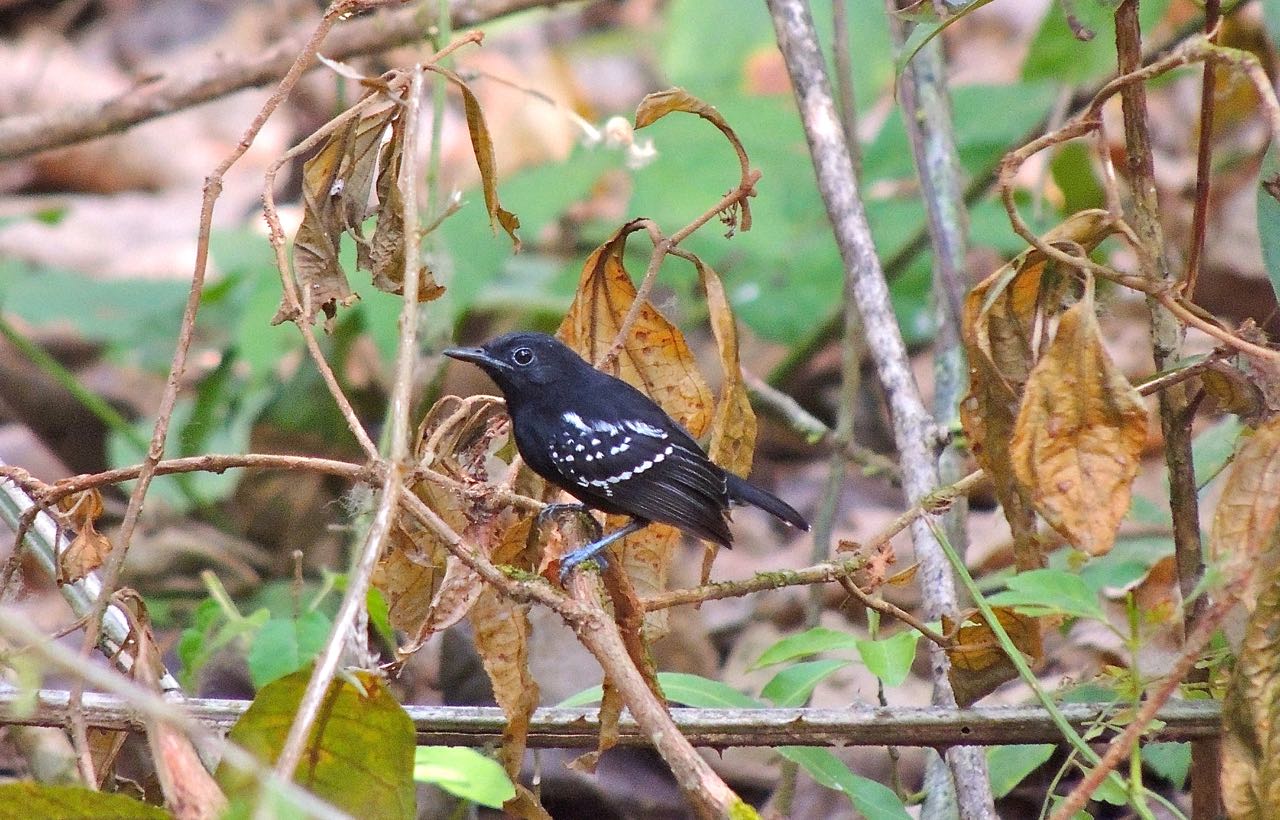 White-flanked Antwren Male - Photo by William Young
White-flanked Antwren Male - Photo by William YoungWe saw a few warblers, and I watched a Kentucky foraging for about five minutes. I have not had such a long look at a Kentucky in a long time. A couple of Chestnut-sided Warblers were in breeding plumage, but a Bay-breasted and Black-and-white were not. We saw a Great Crested Flycatcher and heard an Acadian. The Slate-colored Grosbeak is slate-gray, with a large red bill. Both Scarlet-rumped and Yellow-rumped Caciques were in the trees. So were White-shouldered Tanagers.
I heard a lot of Mantled Howlers and saw a group of White-faced Capuchins, who are smaller. The jacaranda tree has purple flowers, and the May tree has yellow flowers. I saw a Panamanian Whiptail Lizard, who was near the Kentucky Warbler. I went up on the roof at sunset and saw a tree with four Keel-billed Toucans.
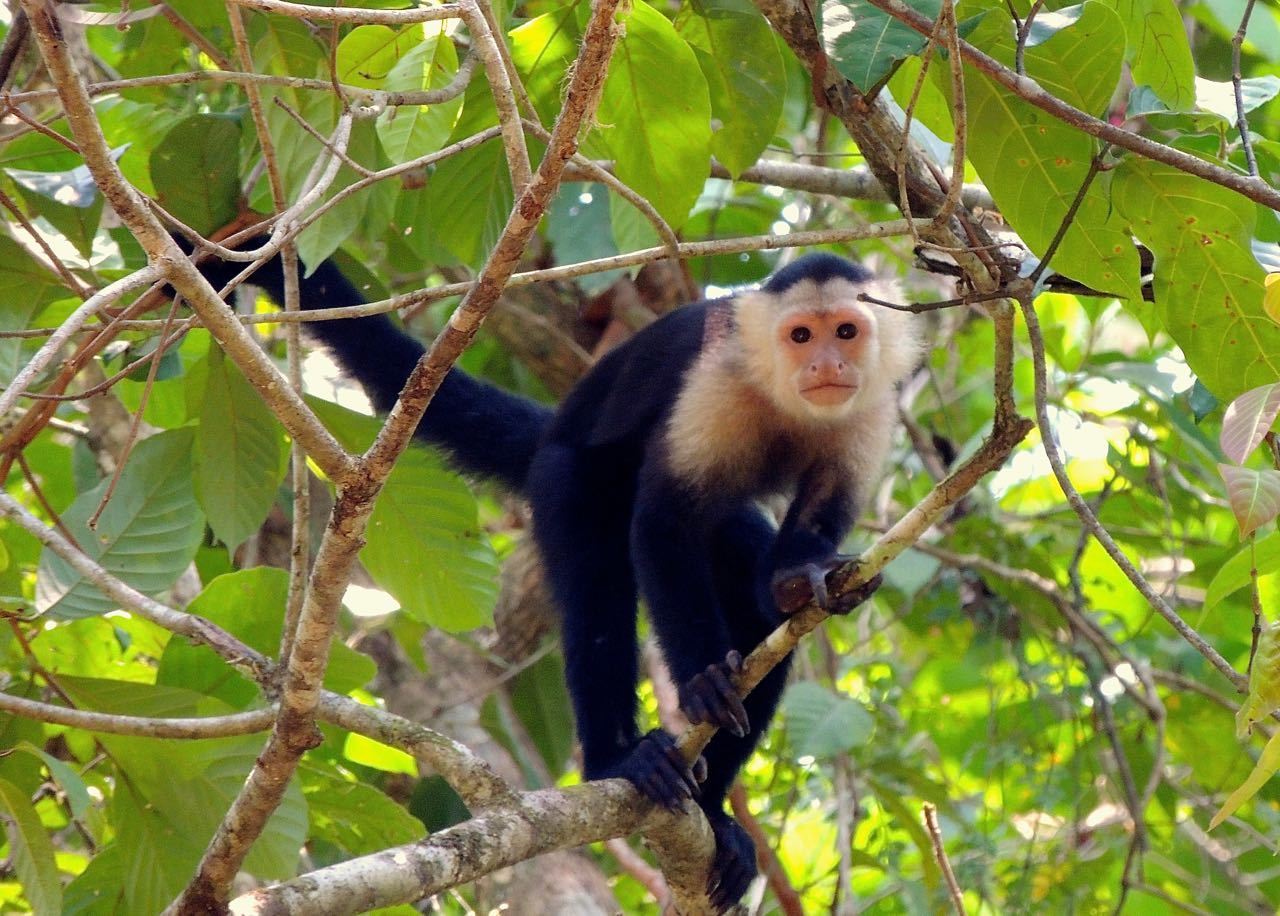 White-faced Capuchin - Photo by William Young
White-faced Capuchin - Photo by William Young
March 31This morning, I went onto the roof deck of Canopy Tower at sunrise. A lot of birds were singing and flitting in the trees. One tree had five Scarlet Tanagers and a Tennessee Warbler. A Keel-billed Toucan was in a tree not far from the deck. Nearby were two Brown-capped Tyrannulets. Two Black-breasted Puffbirds were perched on bare branches. A small group of Geoffroy's Tamarins climbed through the branches. These primates are related to marmosets and are found only in Panama and Colombia. I saw a pair of Cinnamon Woodpeckers working a tree not far from the deck. I saw some distant Scaled Pigeons. We could not locate a Green Shrike-Vireo, but we saw one close at eye level during breakfast.
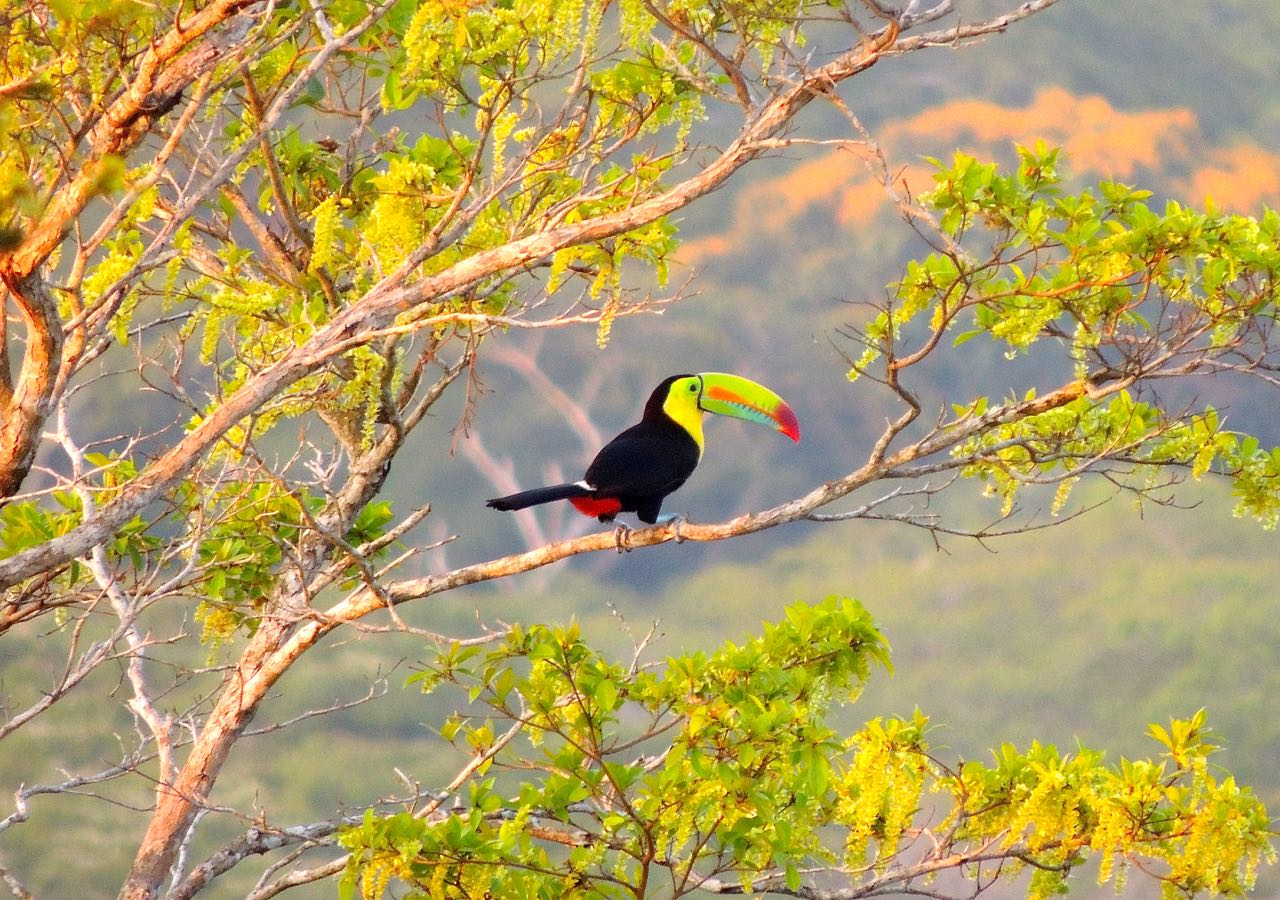 Keel-billed Toucan - Photo by William Young
Keel-billed Toucan - Photo by William Young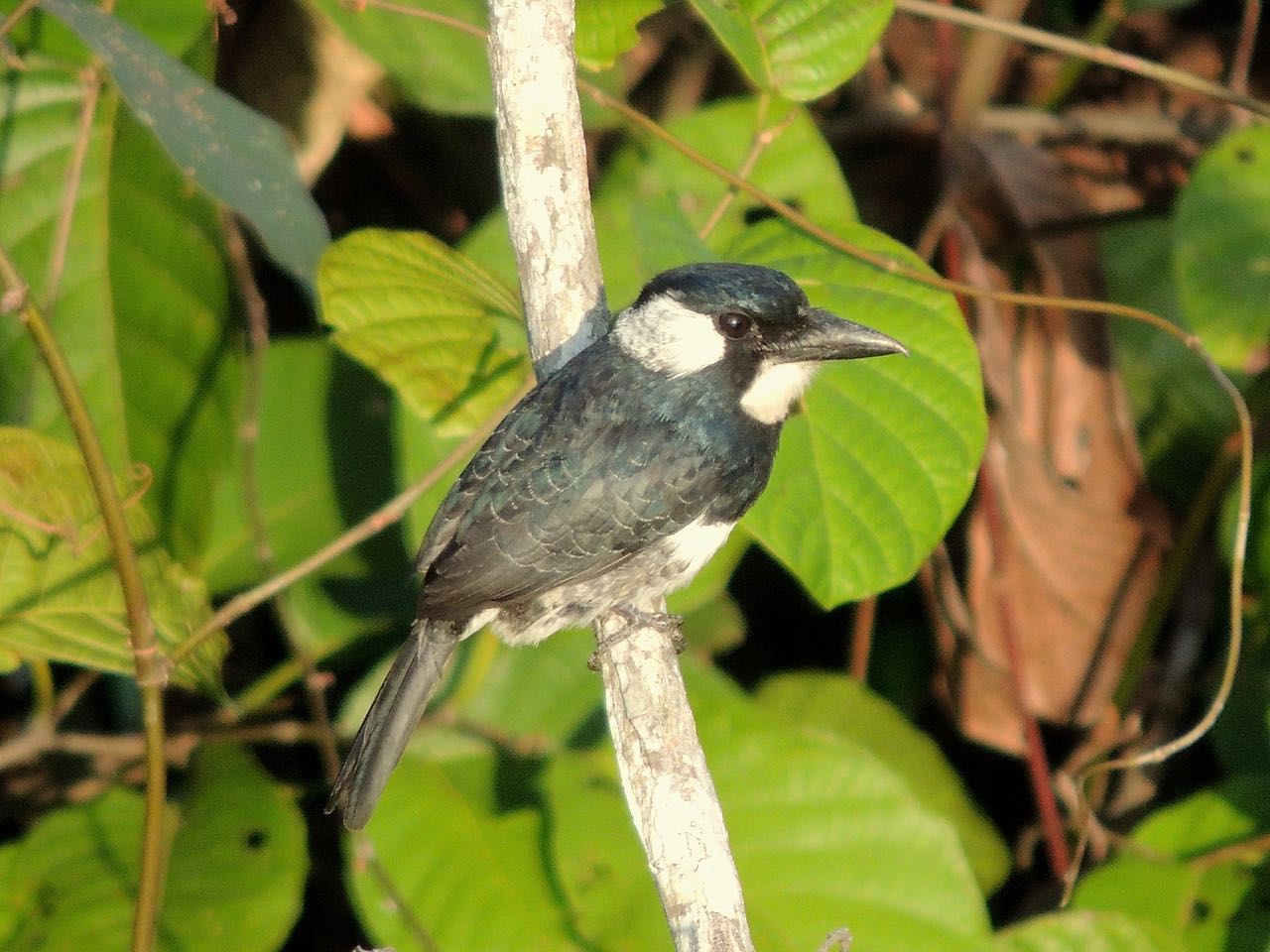 Black-breasted Puffbird - Photo by William Young
Black-breasted Puffbird - Photo by William YoungAfter breakfast, we hiked down the Plantation Trail, which has rain forest habitat. It is at the base of Semaphore Hill Road, on which Canopy Tower is located. We could see the white flanks on a Double-toothed Kite, who flew near the entrance. We saw North American migrants such as Swainson's Thrushes, a Great Crested Flycatcher, a Chestnut-sided Warbler, and a Red-eyed Vireo. In the same area with the Great Crested was a Dusky-capped Flycatcher, which provided a good comparison — the Dusky-capped has a dark cap and no cinnamon on the tail. The Olivaceous Flatbill has a large flat bill. Quite a few White-shouldered Tanagers were in the trees. We saw a Northern Barred Woodcreeper working on a tree. I had a nice look at a White-breasted Wood-Wren. We saw females of both Red-capped and Blue-crowned Manakins — both are fat little olive-green birds. Near the entrance to the trail was a nest of a Black-capped Pygmy-Tyrant, who has the distinction of being either the smallest or one of the smallest passerines in the world. We did not see the bird, who at 2.5 inches is smaller than all but one of the hummingbird species in Panama. It is not much larger than the Bee Hummingbird of Cuba, who is the smallest bird and the smallest homeothermic creature in the world. There were a lot of antbirds. We saw a Chestnut-backed Antbird with a pair of Spotted Antbirds. We saw a female Fasciated Antshrike along with a pair of Black-crowned Antshrikes. We saw White-flanked, Checker-throated, and Dot-winged Antwrens. These are all small birds. We saw a Colombian Spider Monkey high in a tree. It was probably someone’s pet who either escaped or was let loose.
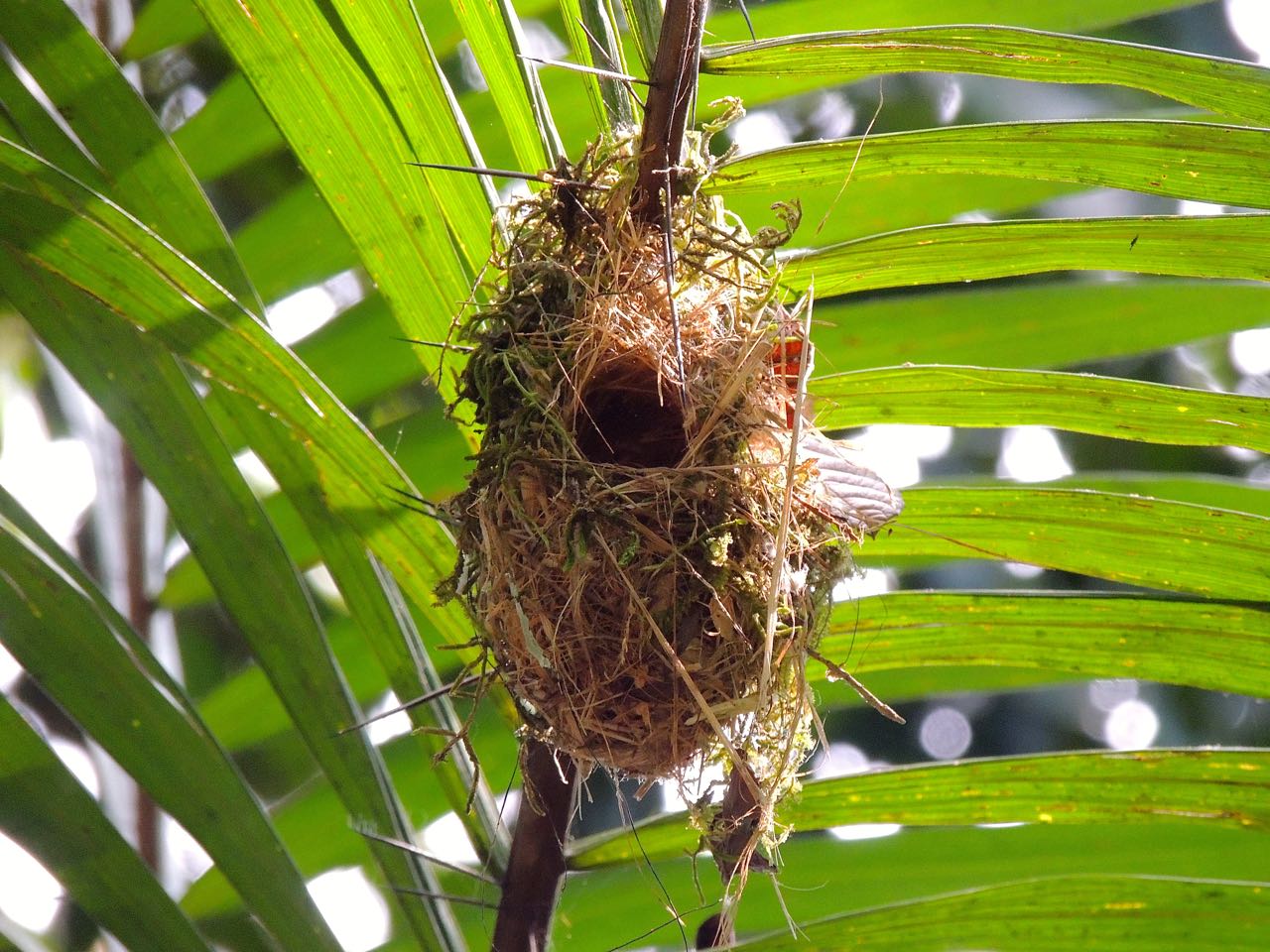 Black-capped Pygmy-Tyrant Nest - Photo by William Young
Black-capped Pygmy-Tyrant Nest - Photo by William YoungThis afternoon, we went to the Summit Ponds and the Old Gamboa Road, about ten minutes from Canopy Tower. My favorite birds were a pair of Yellow-backed Orioles, who are yellow-and-black. The yellow plumage looks electric. We saw males of both a Lance-tailed and Golden-collared Manakin — the latter gave us extended looks. Two Boat-billed Herons were near a nest. Green, Striated, and Little Blue Herons were near the shore. An Anhinga was drying its wings. We saw both Amazon and Ringed Kingfishers. A couple of Greater Anis were near the shore. We heard Pale-vented Pigeons and saw a few. A Crimson-crested Woodpecker, who resembles a Pileated, was working hard at a section of a tree. We saw some North American migrants, including a Baltimore Oriole, Chestnut-sided, Yellow, and Blackpoll Warblers, Rose-breasted Grosbeak, and a bunch of Eastern Kingbirds. A Golden-fronted Greenlet landed right over my head. Quite a few Mangrove Swallows flew over the water. A Squirrel Cuckoo was moving through one of the trees — they get their name because they move through branches like a squirrel. I had a quick look at a Fulvous-vented Euphonia. A few Yellow-billed Caciques foraged in the reeds. They are not like the other caciques — they don't make much noise, and they do not nest in colonies. A Blue-black Grosbeak was in the reeds near the parking area at eye level. Unlike the Slate-colored, whose bill is red, its bill is dark, but it is still a smart-looking bird. Today, we saw both Red-legged Honeycreepers and Shining Honeycreepers — the Shining has bright yellow legs, but both birds are purplish. We saw a White-necked Puffbird, who is larger than the Black-breasted and does not have as much black on its head. A Blue Dacnis was near the entrance. A large group of Turkey Vultures appeared to be migrating over, with some Broad-winged Hawks mixed in. In the water, we saw a swimming Spectacled Caiman. Two Tropical Sliders were sunning on a log. As we were about to leave, a pair of Orange-chinned Parakeets were ripping open a seed pod in a tree.
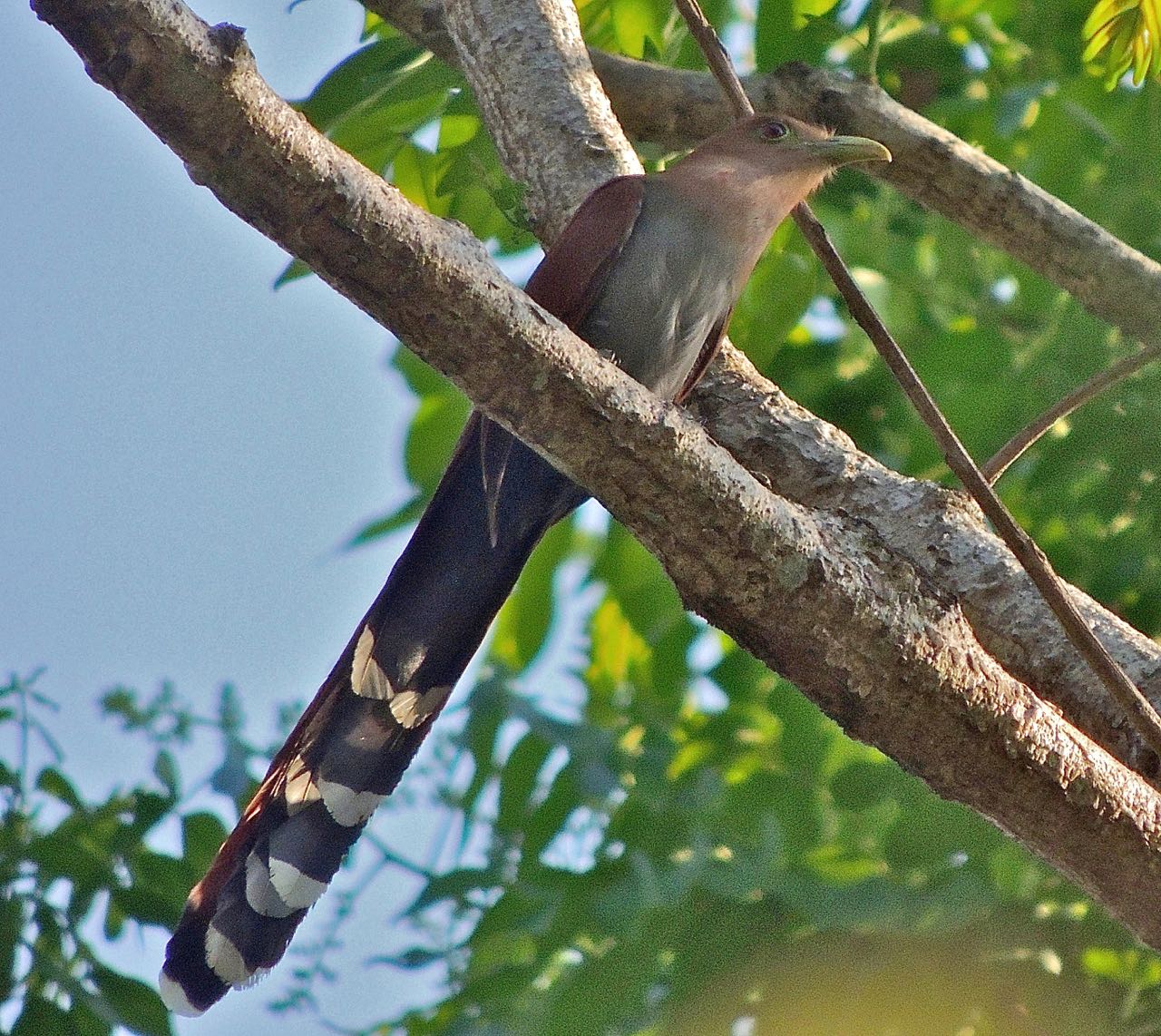 Squirrel Cuckoo - Photo by William Young
Squirrel Cuckoo - Photo by William Young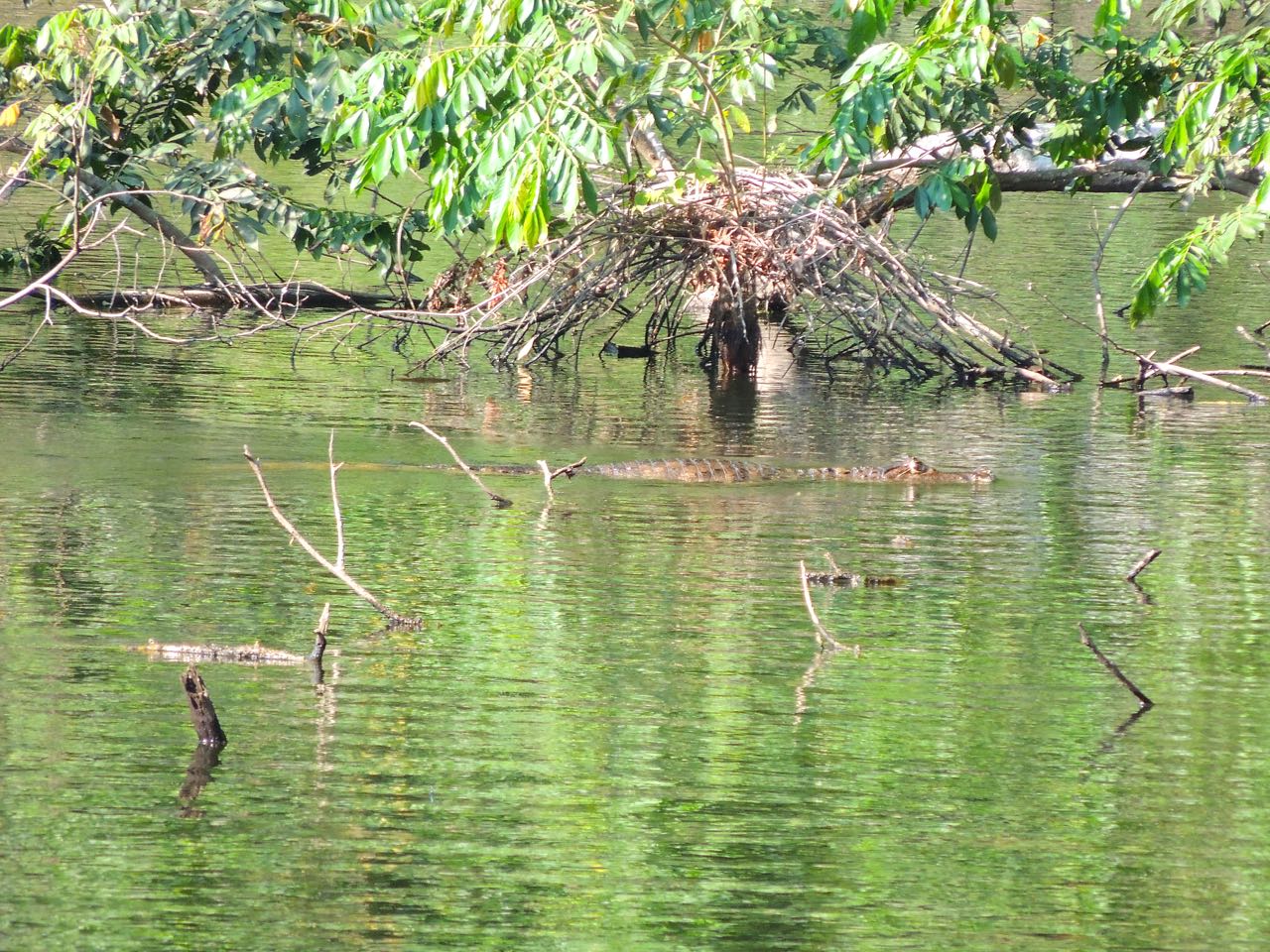 Spectacled Caiman - Photo by William Young
Spectacled Caiman - Photo by William Young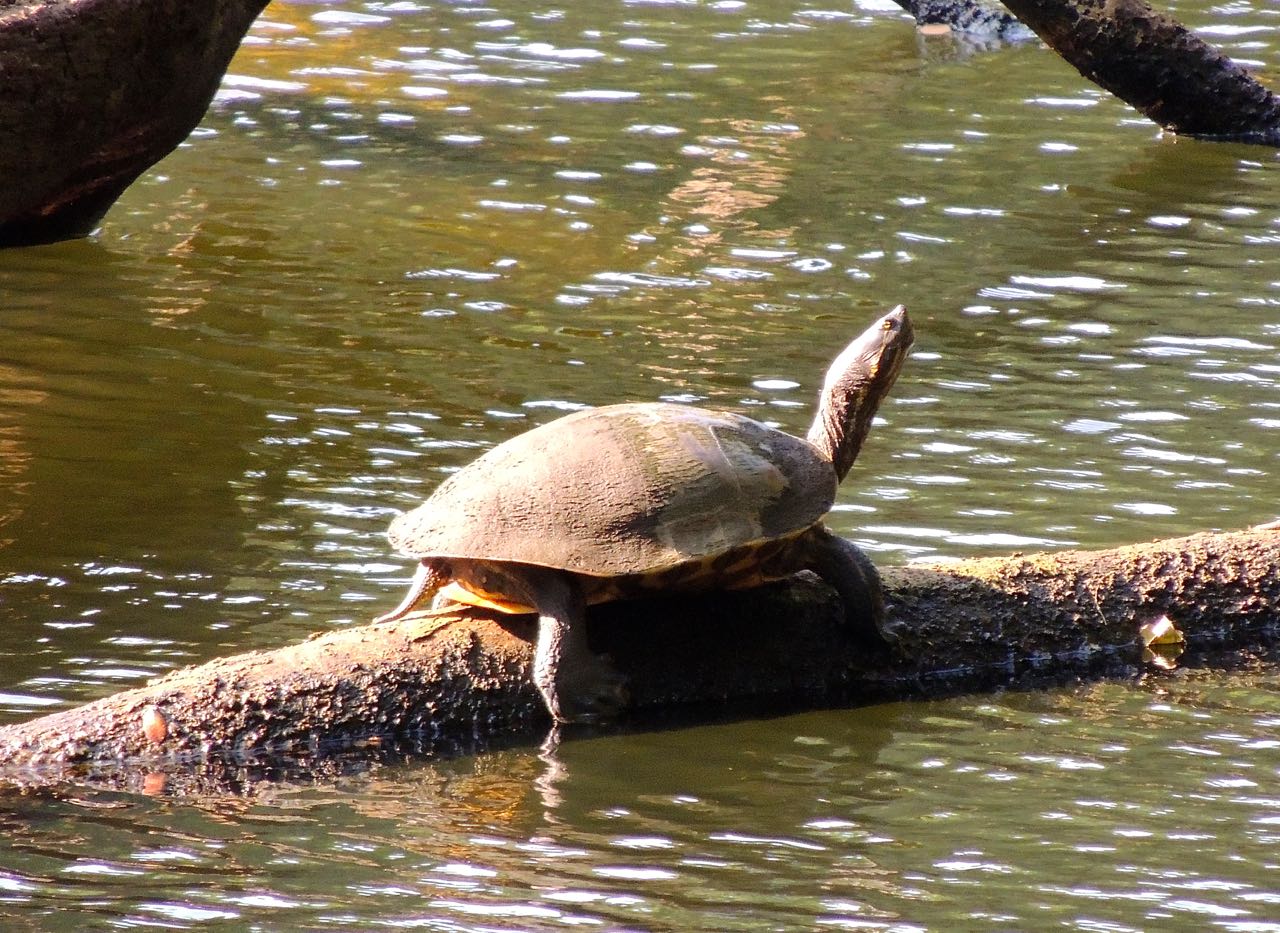 Tropical Slider - Photo by William Young
Tropical Slider - Photo by William YoungTonight, we had a barbecue outside. While we sat in the barbecue area, about ten Mississippi Kites circled over the tower, and I saw one grab a moth out of the air. A pair of Red-lored Parrots flew back and forth over our heads, as if lost.
April 1I had breakfast at 5, and we left a bit after 5:30 to go to Cerro Jefe (Boss Mountain) and Cerro Azul (Blue Mountain). As we drove through the town of Tocumen, I saw my first Rock Pigeons of the trip. The elevation in the mountains was higher than at Canopy Tower, so we spent most of the day out of the heat.
At Cerro Jefe, we found three Stripe-cheeked Woodpeckers, a Panama endemic. The male was feeding a young bird. We drove past Golden Orb-weaver webs that stretched more than 100 yards. A bird I missed seeing on my previous trip to Panama was the Rufous-winged Tanager. There is a page in the field guide with some of the most beautiful tanagers in the genus Tangara, and this species is on the page. We saw quite a few of them very well. They have a rufous head, yellow nape, rufous on the wings, and a blue belly. A bit later, we saw some in a tree with a Bay-headed Tanager, who has a bay head, blue underparts, and a green back. A third tanager on the same page is the Speckled, who is lime-green with black speckling. These tanagers are not in the same family as the North American tanagers, who are related to cardinals. When we were looking at the first group of Rufous-winged Tanagers, a male Blackburnian Warbler hopped up on a bare branch. It is a black-and-white bird with a bright orange throat, and even though I sometimes see them when they are migrating through the DC area, they still take my breath away. I saw a male Scarlet Tanager, who has a similar effect on me, even though I see them more frequently than I see Blackburnians. We then went to Cerro Azul. We found about eight Yellow-eared Toucanets. They foraged in the canopy, but I eventually had good looks at both a male and a female. In the same area, we saw a White-ruffed Manakin. This round little bird is jet black with a white throat. I had a nice look at a Carmiol's Tanager, a mostly olive bird who has a large bill and is related to the grosbeaks. We saw both the Rufous and Speckled Mourner. The Speckled Mourner is a rufous becard with an eyering and faint streaking below. The Rufous Mourner is a flycatcher who is all rufous and about the same size as the Speckled. We saw a Spotted Woodcreeper, but I never saw the underparts, which were against the tree it was climbing up. I saw the rachis on the tail feathers of a Squirrel Cuckoo.
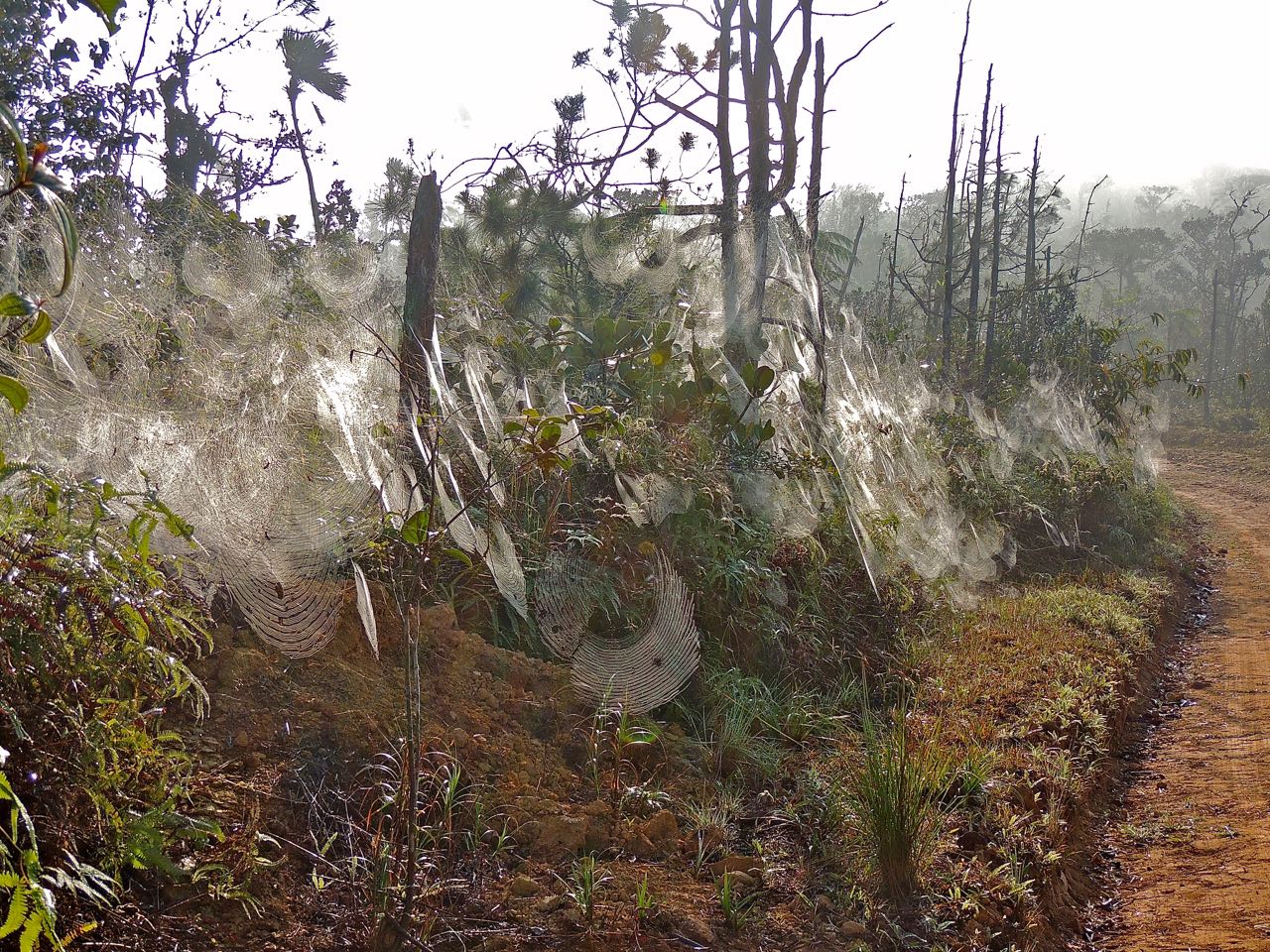 Golden Orb-weaver Webs - Photo by William Young
Golden Orb-weaver Webs - Photo by William Young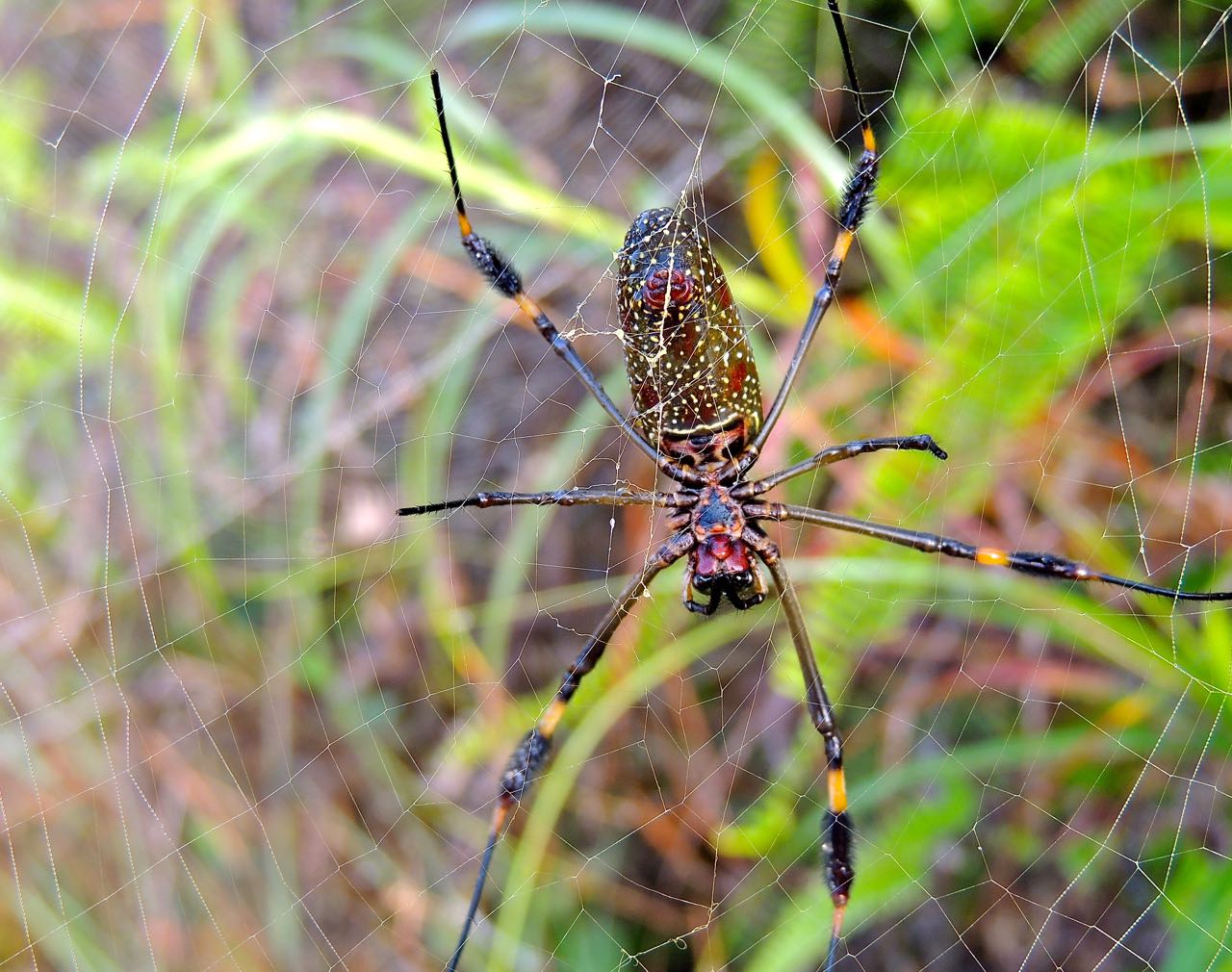 Golden Orb-weaver - Photo by William Young
Golden Orb-weaver - Photo by William YoungOn the day I arrived at the Tower, I had lunch with Jerry and Linda Harrison, who used to work as naturalists at Canopy Tower. They are retired and live in Cerro Azul, and they invited me to visit their house. We went over just before lunch, and the place is remarkable. There are eleven hummingbird feeders relatively close to each other, and they are visited by hummers and other birds who eat nectar, such as honeycreepers. They attract Shining Honeycreepers, who are blue with yellow legs, and Red-legged Honeycreepers, who are also blue. The Green Honeycreeper is larger than both of these, and the female, who is almost entirely one shade of green, is larger and has less color variation than the other two. A male and female Black-cheeked Woodpecker came to the bird table and ate rice. One of the really special hummingbirds in Panama is the Rufous-crested Coquette. We tried to find one at Canopy Lodge, but had no luck. Jerry and Linda have a male and female who hang around their yard. The male fed clockwise around a flower. The female lacks the male’s crest. These hummingbirds measure only 3 inches. Jerry and Linda have feeders with food other than sugar water, and I saw a male Hepatic Tanager with a Male Green Honeycreeper. A female Crimson-backed Tanager came to the feeders. I wish I could have spent more time at the Harrison house, because in addition to all of the bird feeders, they also have a vast array of plants, including orchids.
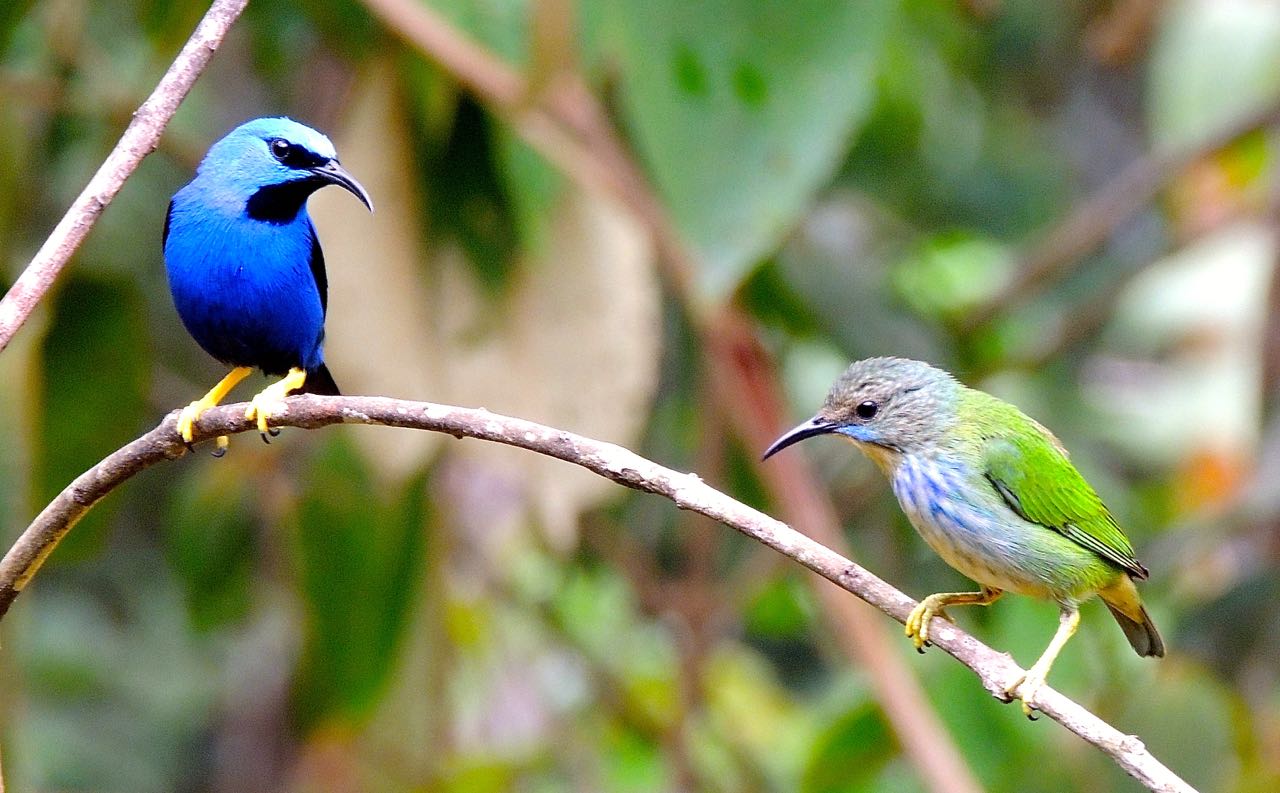 Shining Honeycreeper Male and Female - Photo by William Young
Shining Honeycreeper Male and Female - Photo by William Young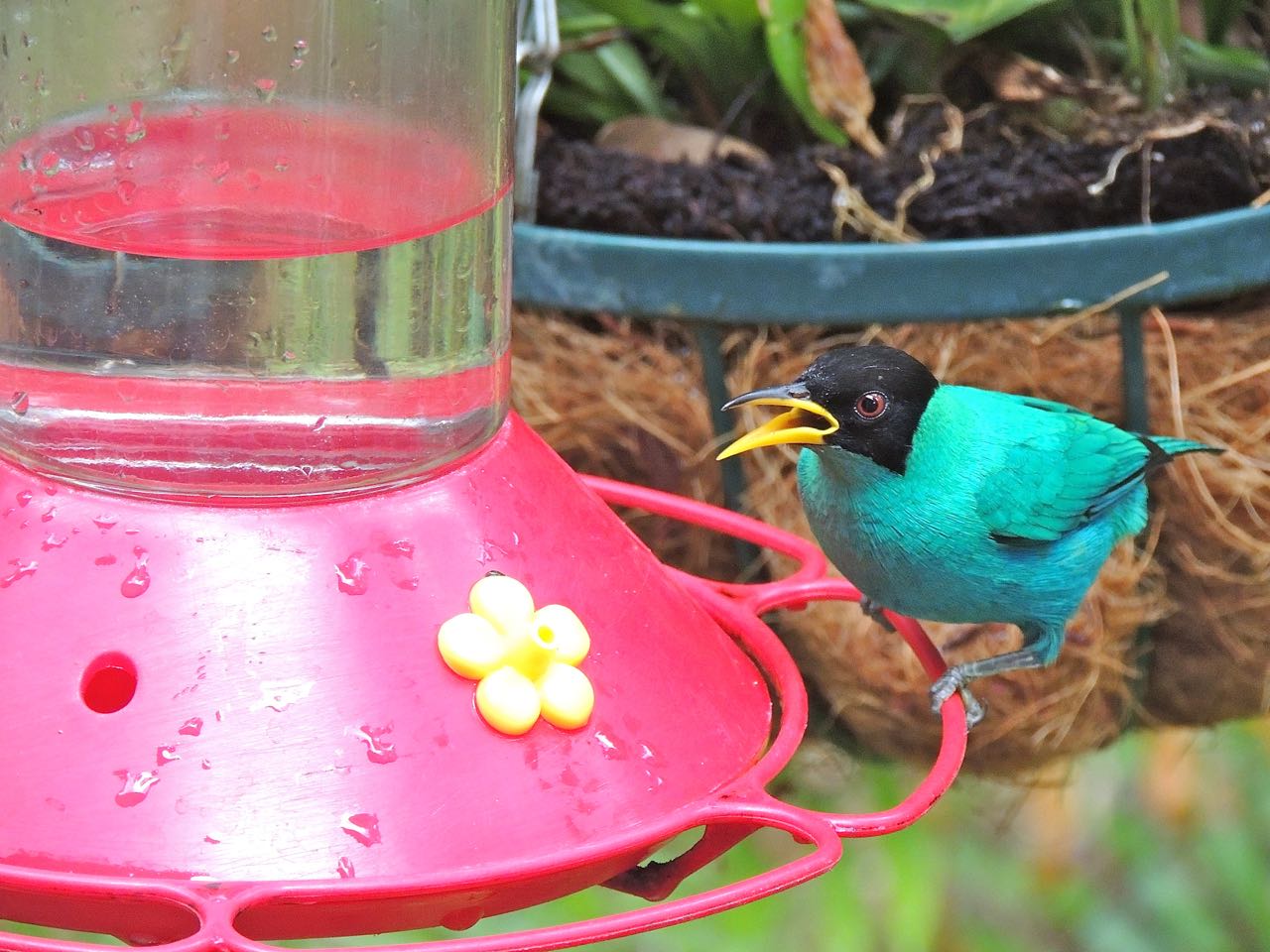 Green Honeycreeper Male - Photo by William Young
Green Honeycreeper Male - Photo by William Young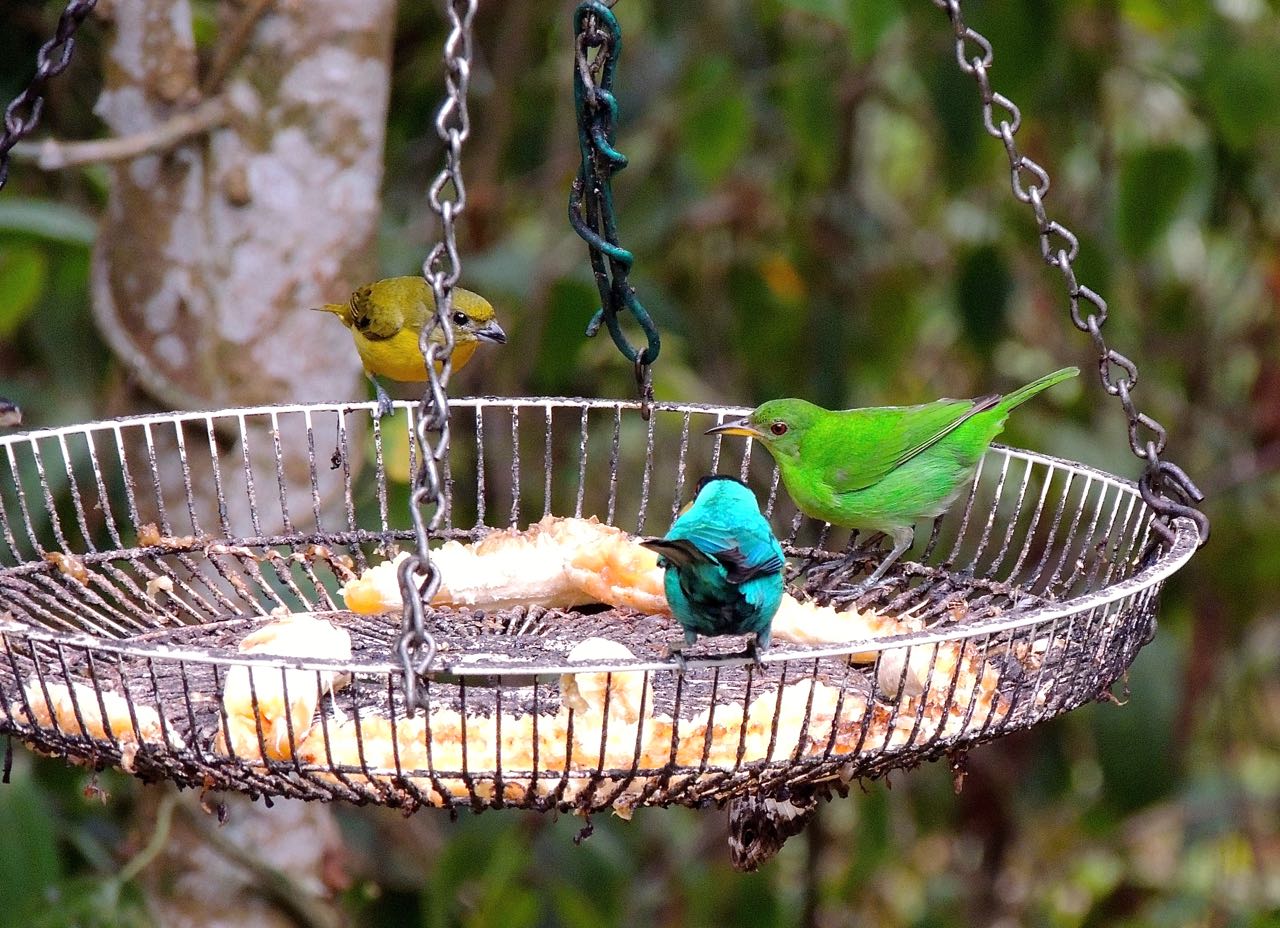 Thick-billed Euphonia and Green Honeycreeper Male and Female - Photo by William Young
Thick-billed Euphonia and Green Honeycreeper Male and Female - Photo by William Young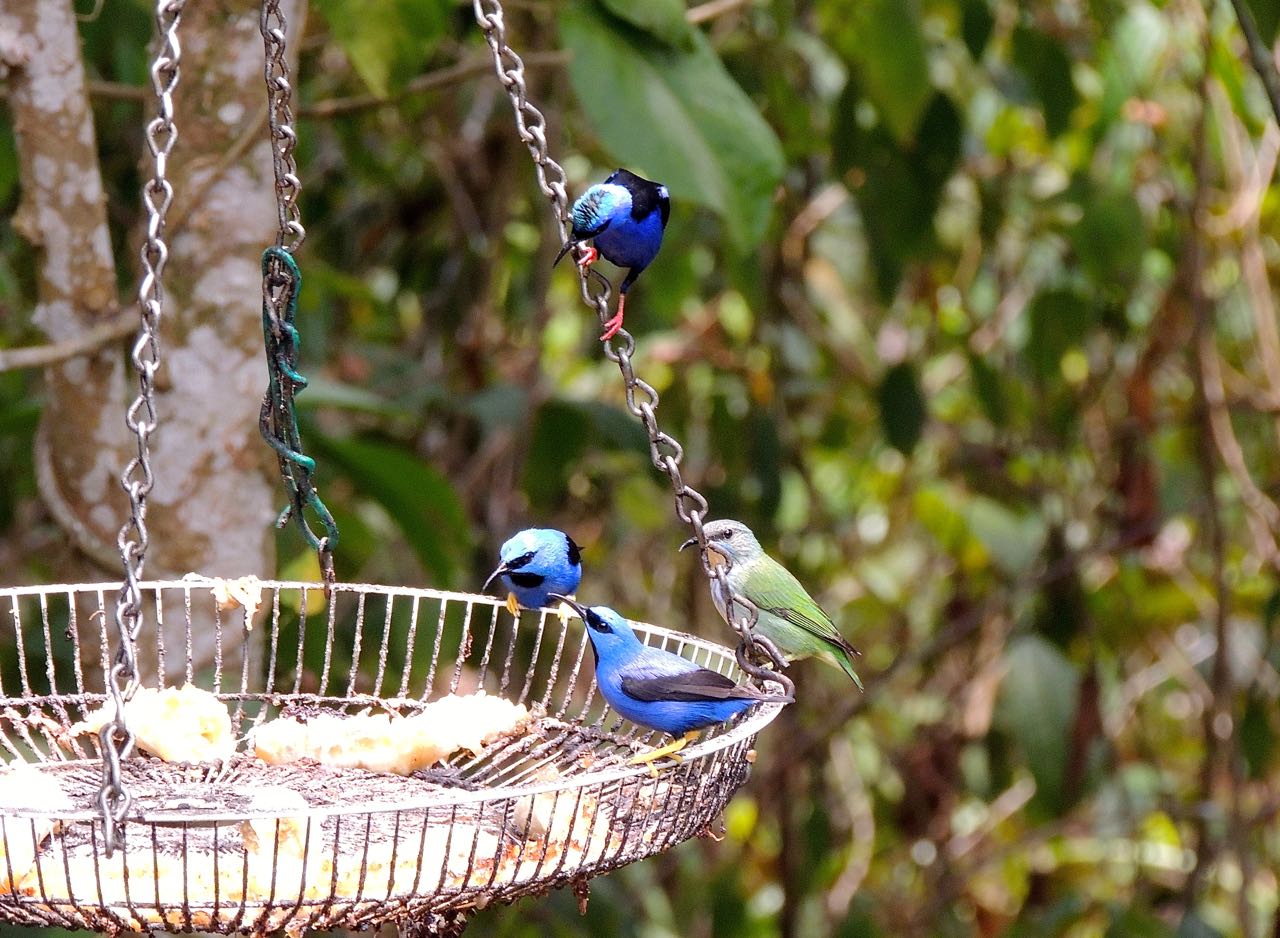 Shining, Red-leged, and Green Honeycreepers - Photo by William Young
Shining, Red-leged, and Green Honeycreepers - Photo by William Young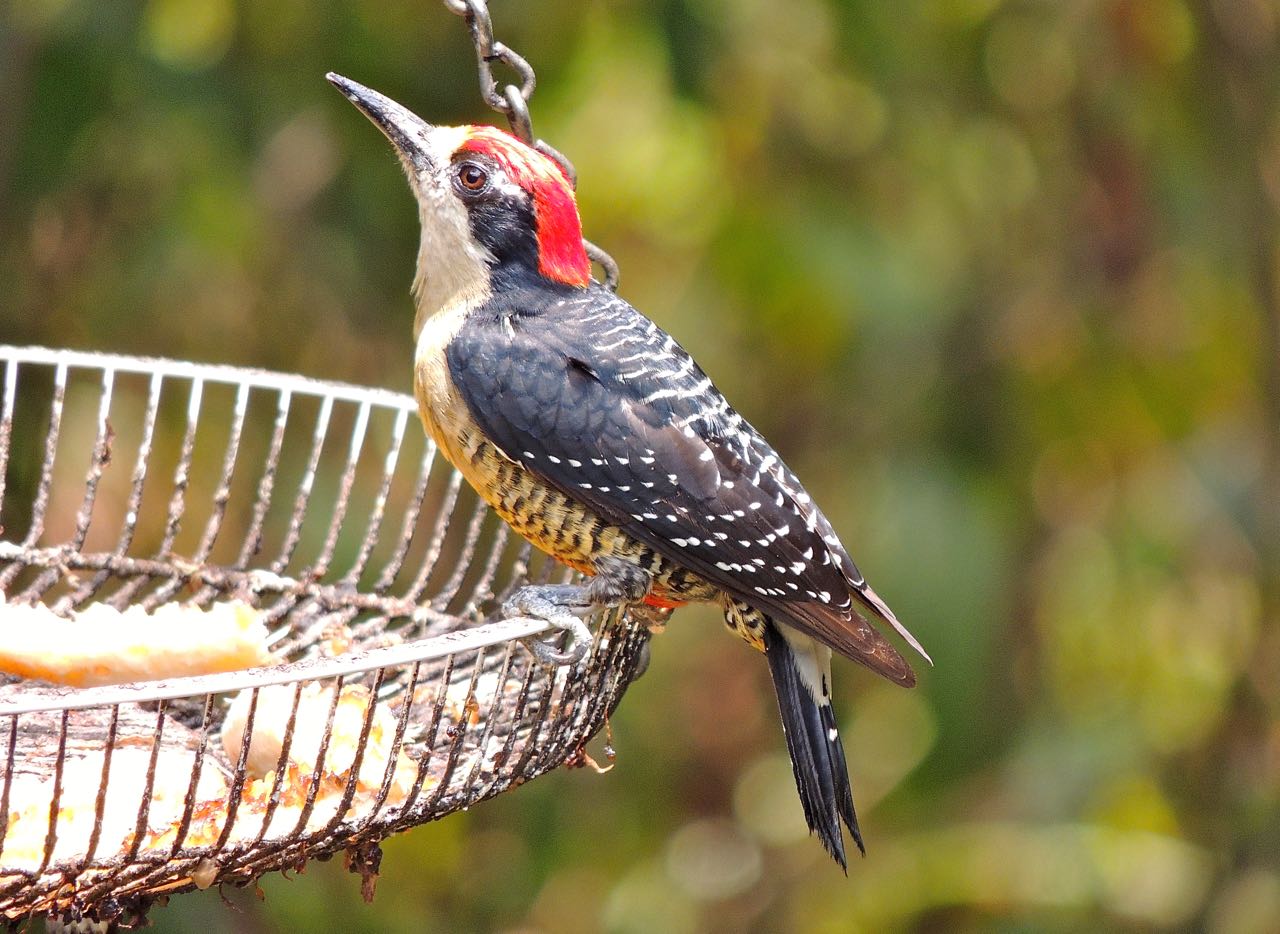 Black-cheeked Woodpecker Male - Photo by William Young
Black-cheeked Woodpecker Male - Photo by William Young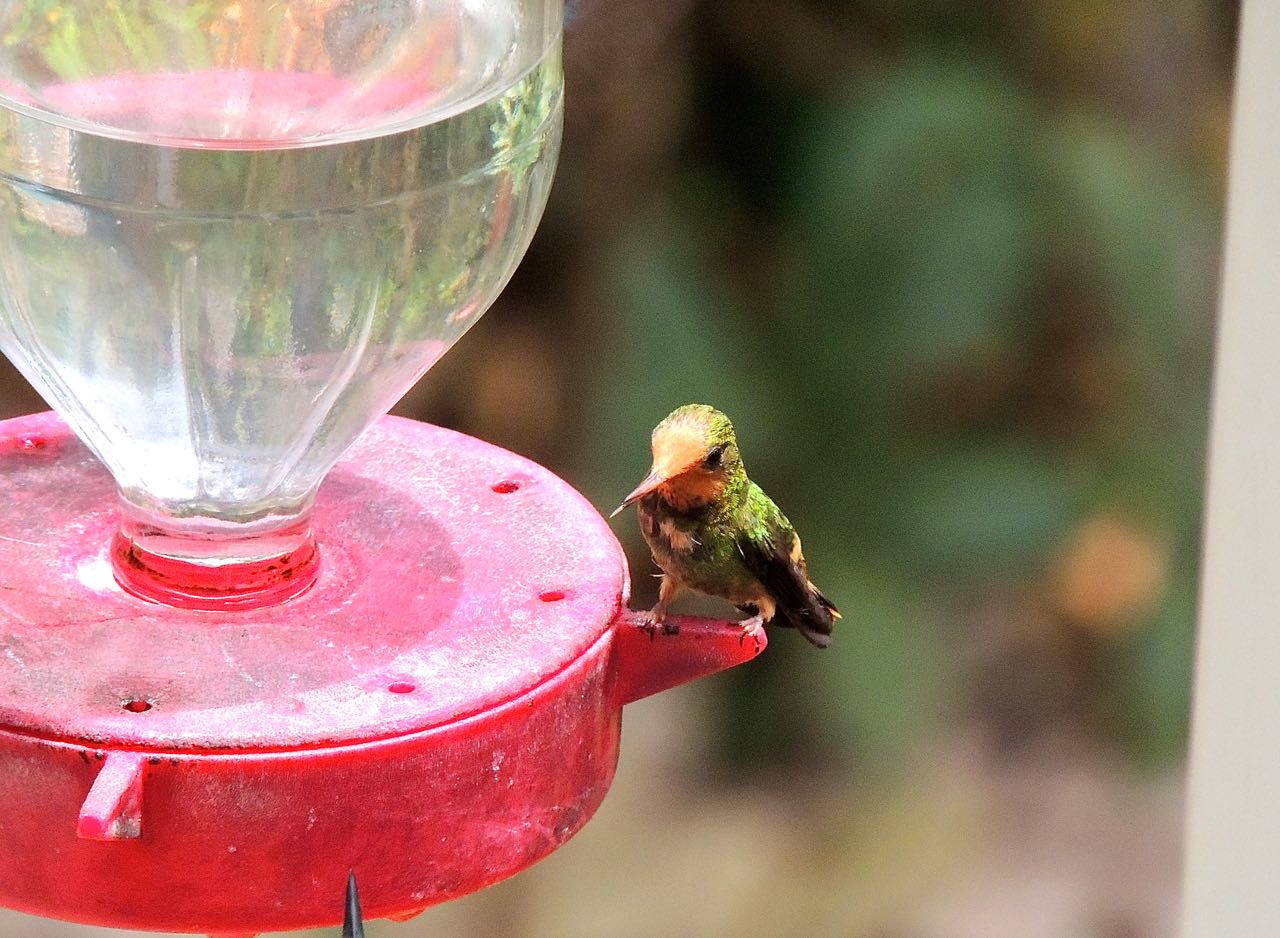 Rufous-crested Coquette Female - Photo by William Young
Rufous-crested Coquette Female - Photo by William Young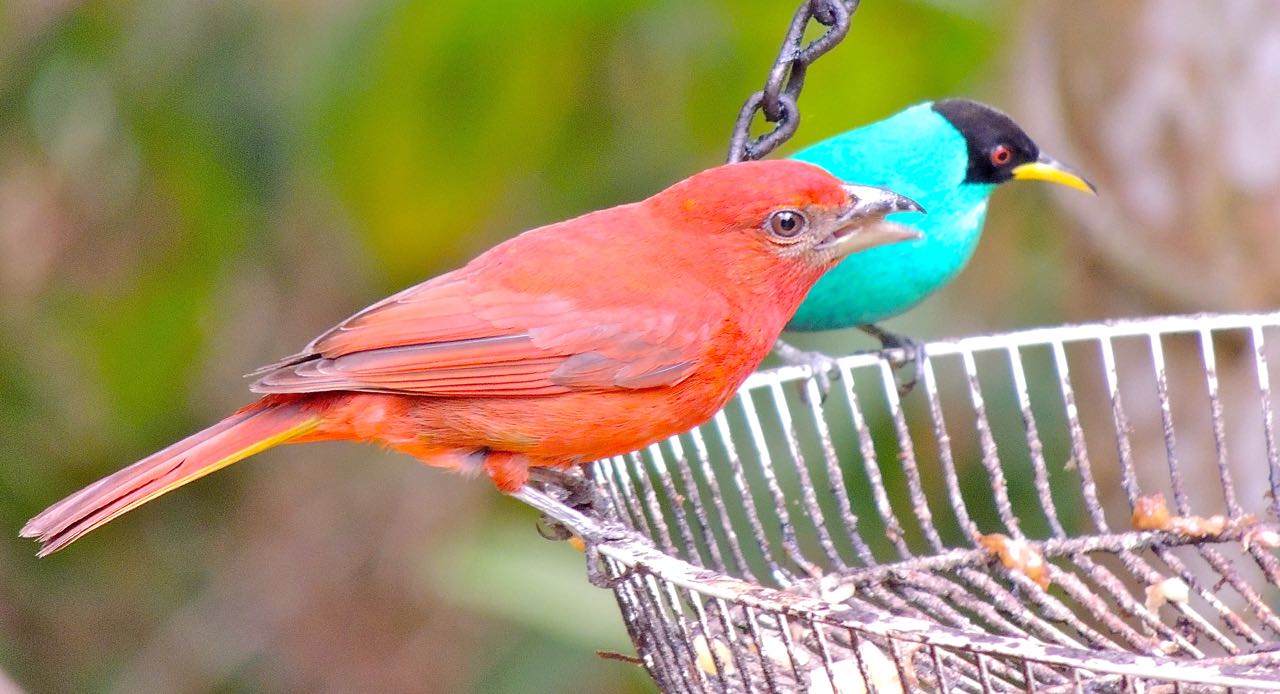 Hepatic Tanager Male and Green Honeycreeper Male - Photo by William Young
Hepatic Tanager Male and Green Honeycreeper Male - Photo by William Young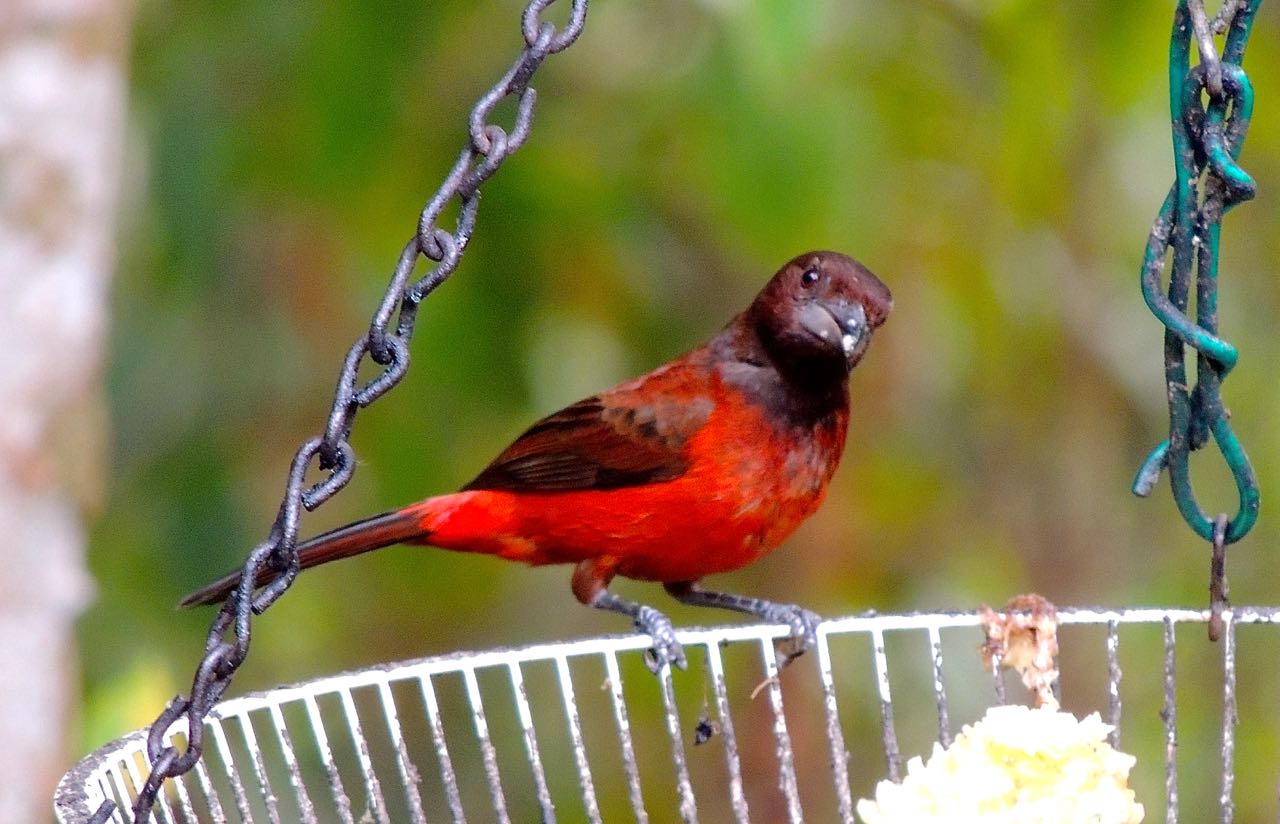 Crimson-backed Tanager Female - Photo by William Young
Crimson-backed Tanager Female - Photo by William YoungWe then went to another hummingbird haven at a home owned by Rosabel Miro, who is the president of the Panama Audubon Society. I had lunch on the patio, and the patio sounded a bit like a motor speedway because of the constant loud hum of hummingbird wings. I also heard a lot of little hummingbird squeaks. The White-necked Jacobin was the primary species, but there were also numerous other species, including a Rufous-crested Coquette, Crowned Woodnymph, Bronze-tailed Plumeleteer, and Long-billed Hermit. A Violet-capped Hummingbird sat in a bush with the plumeleteer. The plumeleteer would perch in the same spot and occasionally rush at any other hummer who was nearby. The Snowy-bellied Hummingbird seemed aggressive and chased larger hummingbirds. The Jacobins do a lot of chasing and sometimes get chased. The hermits are the largest birds I saw at the feeders, and they frequently were chased. They appear to be vulnerable when they stick their long bill into a feeder hole.
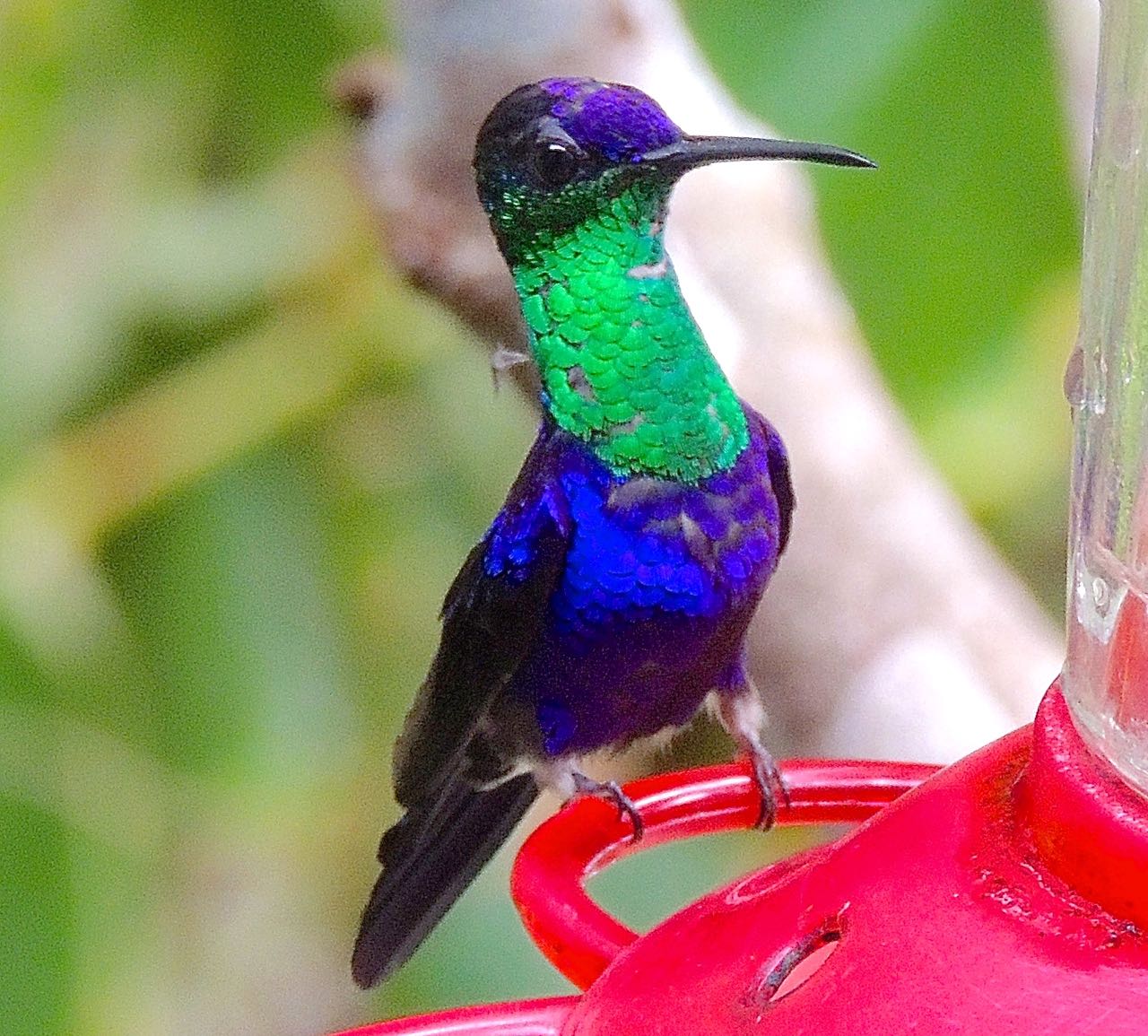 Crowned Woodnymph - Photo by William Young
Crowned Woodnymph - Photo by William Young Bronze-tailed Plumeleteer - Photo by William Young
Bronze-tailed Plumeleteer - Photo by William Young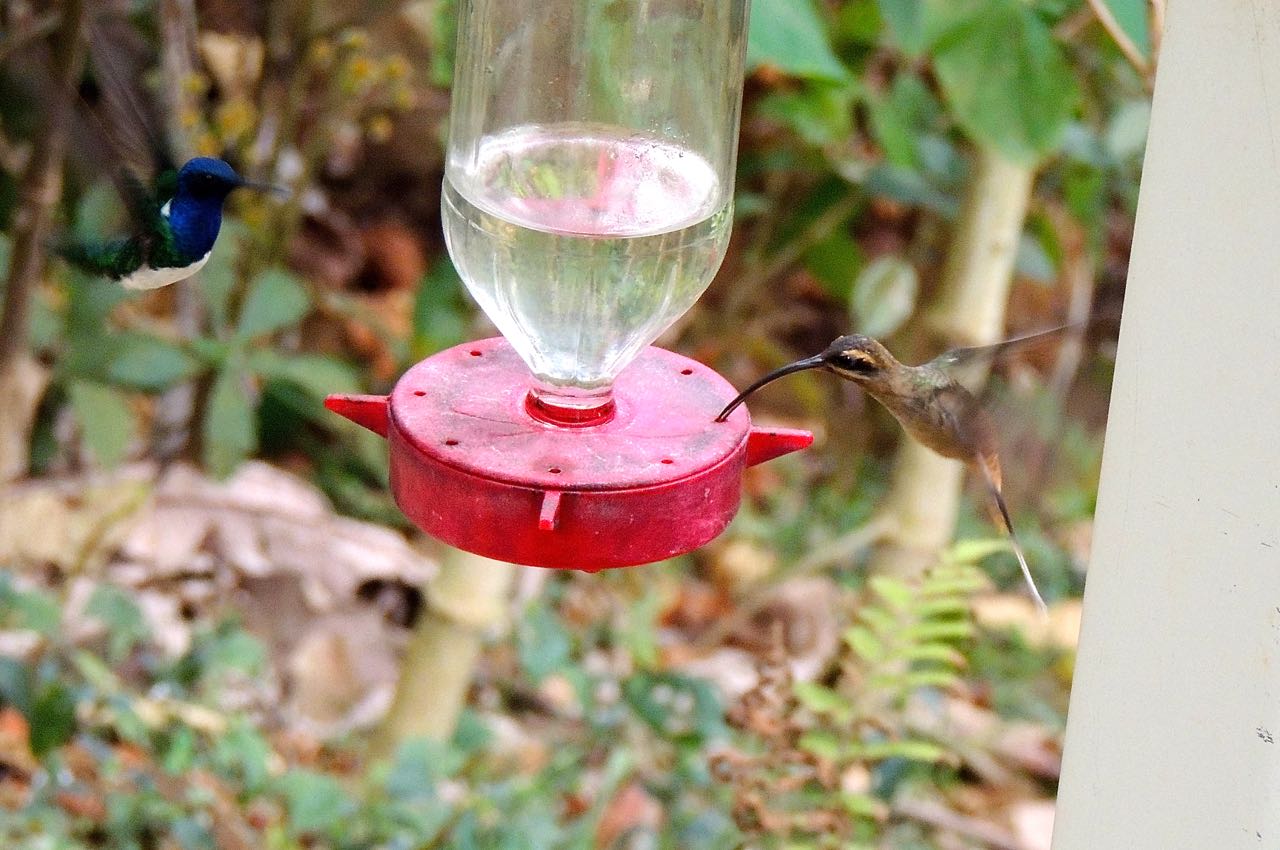 White-necked Jacobin and Long-billed Hermit - Photo by William Young
White-necked Jacobin and Long-billed Hermit - Photo by William Young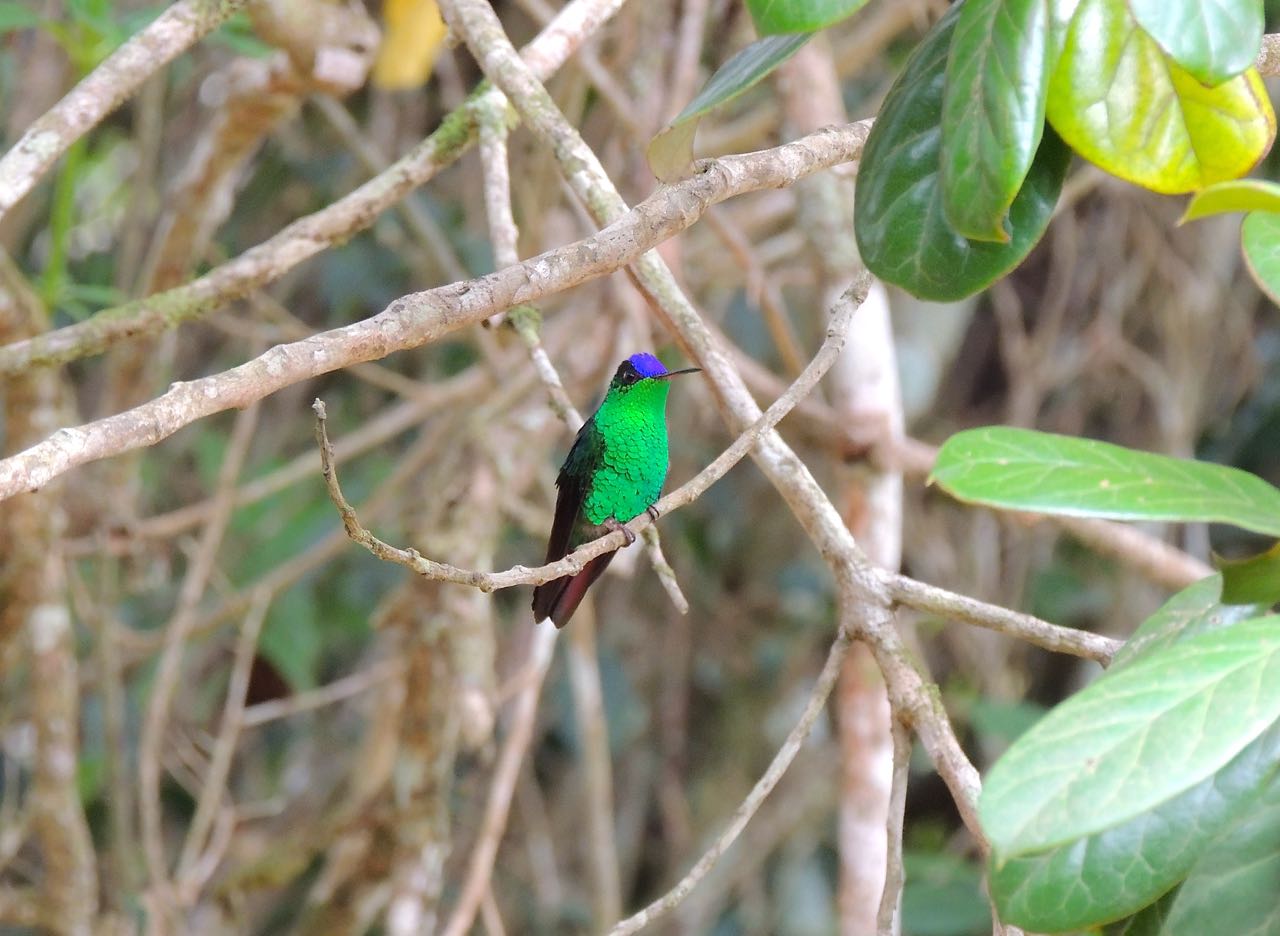 Violet-capped Hummingbird - Photo by William Young
Violet-capped Hummingbird - Photo by William Young Snowy-bellied Hummingbird - Photo by William Young
Snowy-bellied Hummingbird - Photo by William YoungWe made a couple more stops after lunch. We saw a few Swallow-tailed Kites, who are migrating through the area. In the top of a tree, we saw a perched Olive-sided Flycatcher, but it was not uttering its QUICK THREE BEERS call. As we were leaving, we saw a very light-colored Variegated Squirrel. We also saw Blue-black Grassquits, whom Michael called "yo-yo birds", because the males jump more than a foot in the air, apparently when other males are around. I saw them doing this. Grassquits are tiny birds and appear to be the size of a kinglet. I saw a Lesser Goldfinch on the road, and when it flew, it showed white in the wings and tail. On the way home, we saw a heron flying whom Michael said was a Capped. I saw the bird but did not see any fieldmarks. I also saw a flying Fork-tailed Flycatcher.
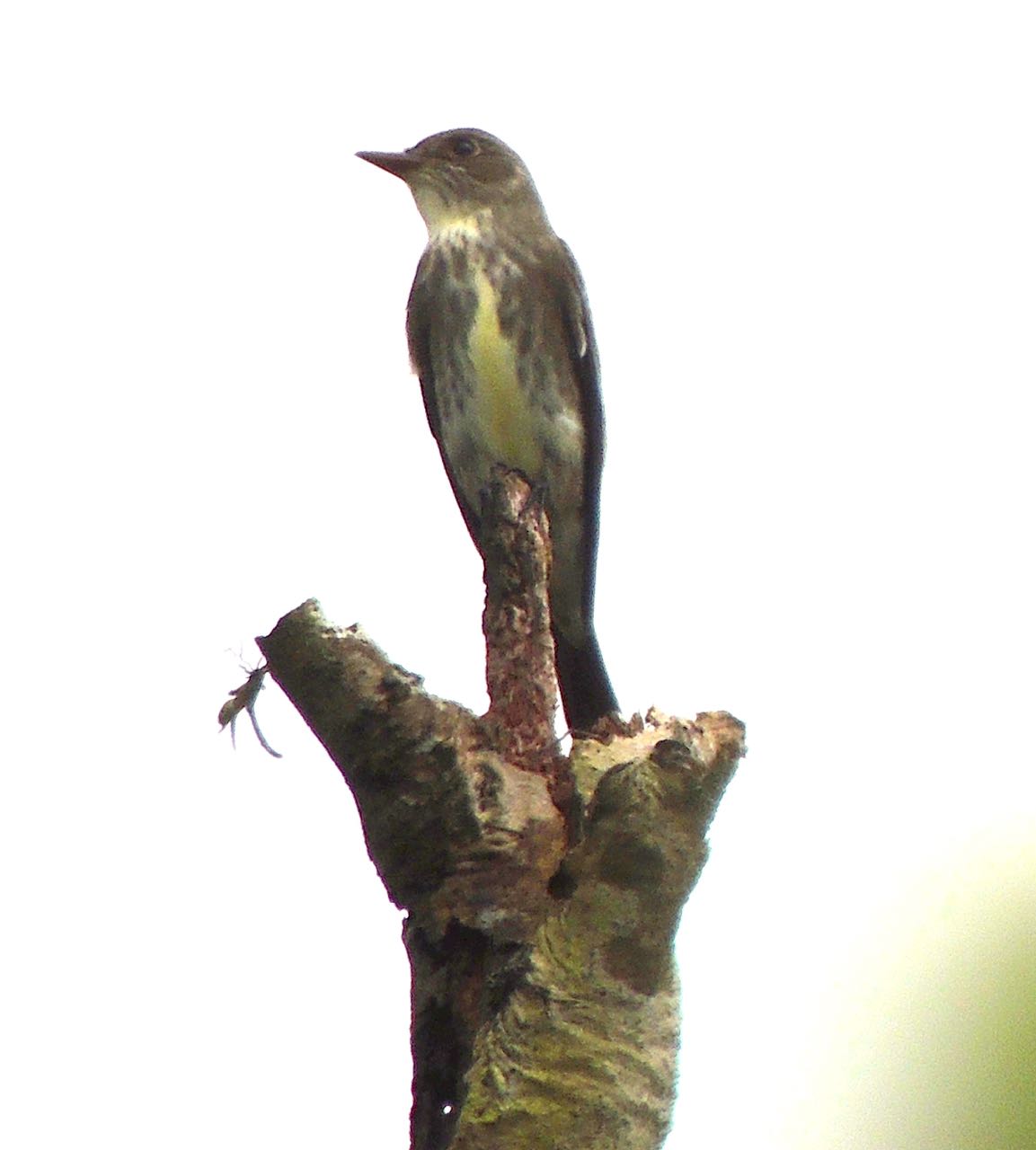 Olive-sided Flycatcher - Photo by William Young
Olive-sided Flycatcher - Photo by William Young
April 2This morning, we left for the Rainforest Discovery Center at about 6:45. As we drove down Semaphore Hill Road, a Black-faced Antthrush ran across the road with its tail cocked. When we got to the Discovery Center, we went to the 40-meter observation tower that allowed us to look into the canopy. We climbed to the top of the tower and observed a group of Mantled Howlers feeding, including a very young one. These monkeys sound loud and powerful when they howl, but they move slowly. They eat mostly leaves, which do not give them much energy. Some Blue Cotingas flitted in distant trees. These birds are electric blue. We also saw a Blue Dacnis, whom Michael calls a "baby cotinga" because the male is likewise a stunning blue. We saw a perched Purple-throated Fruitcrow. A Cinnamon Woodpecker was working one of the trees, and a Tropical Gnatcatcher hopped on some branches. A Red-throated Ant-Tanager perched on a low branch. I saw two Red-lored Parrots in the scope. One can differentiate flying parrots by their wingbeats. The Mealy flutters its wingtips, the Red-lored has a shallow wingbeat, and the Blue-headed has a deep wingbeat. Red-lored sometimes fly as if they don't know where they are going. A Yellow-throated Toucan was in the same spot. Its bill is mostly dark, with yellow on top of the upper mandible. We could see all the way to the canal, and three Brown Pelicans flew in the distance. A migrating Broad-winged Hawk flew by, as did a Lesser Swallow-tailed Swift.
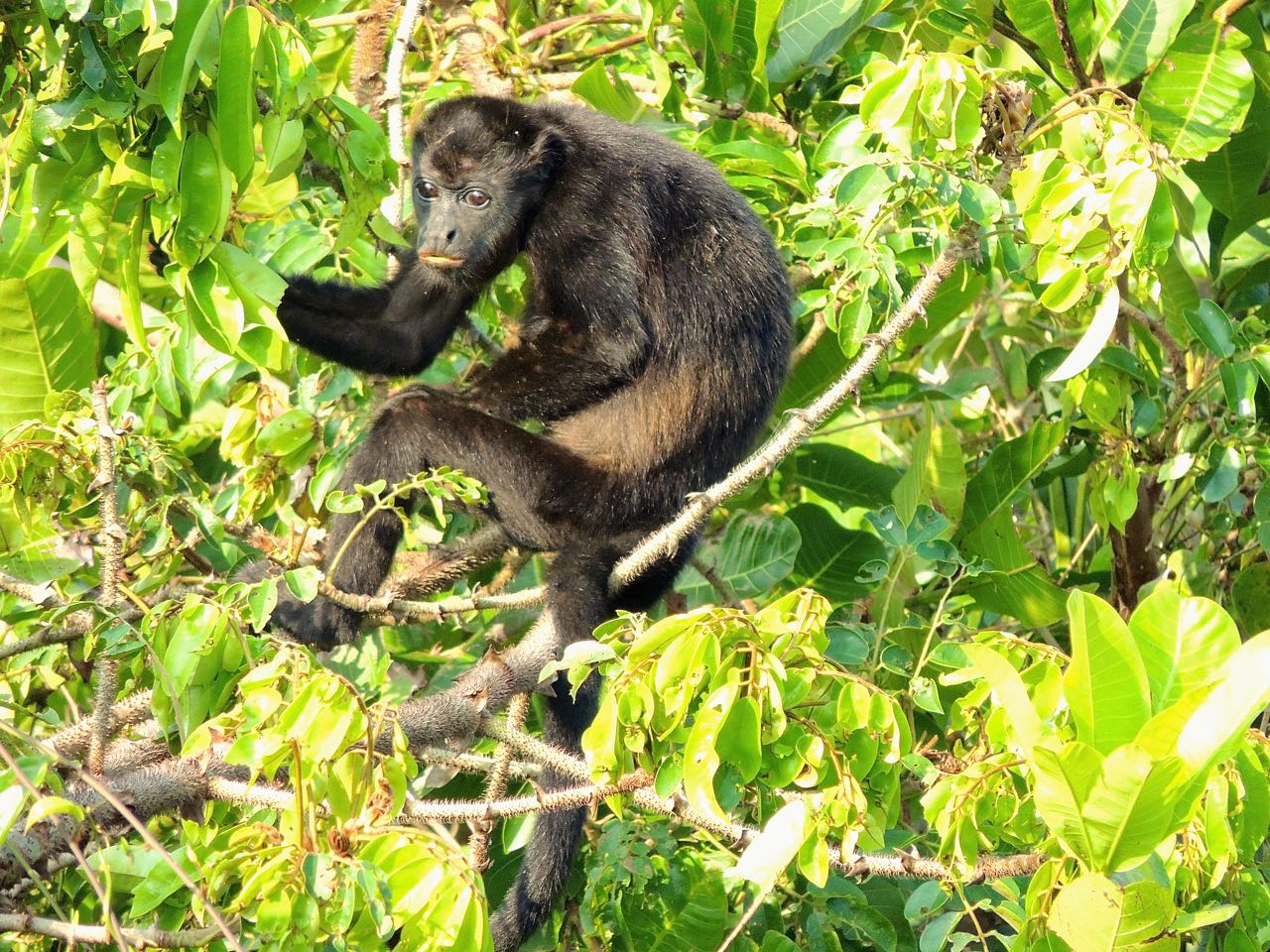 Mantled Howler - Photo by William Young
Mantled Howler - Photo by William Young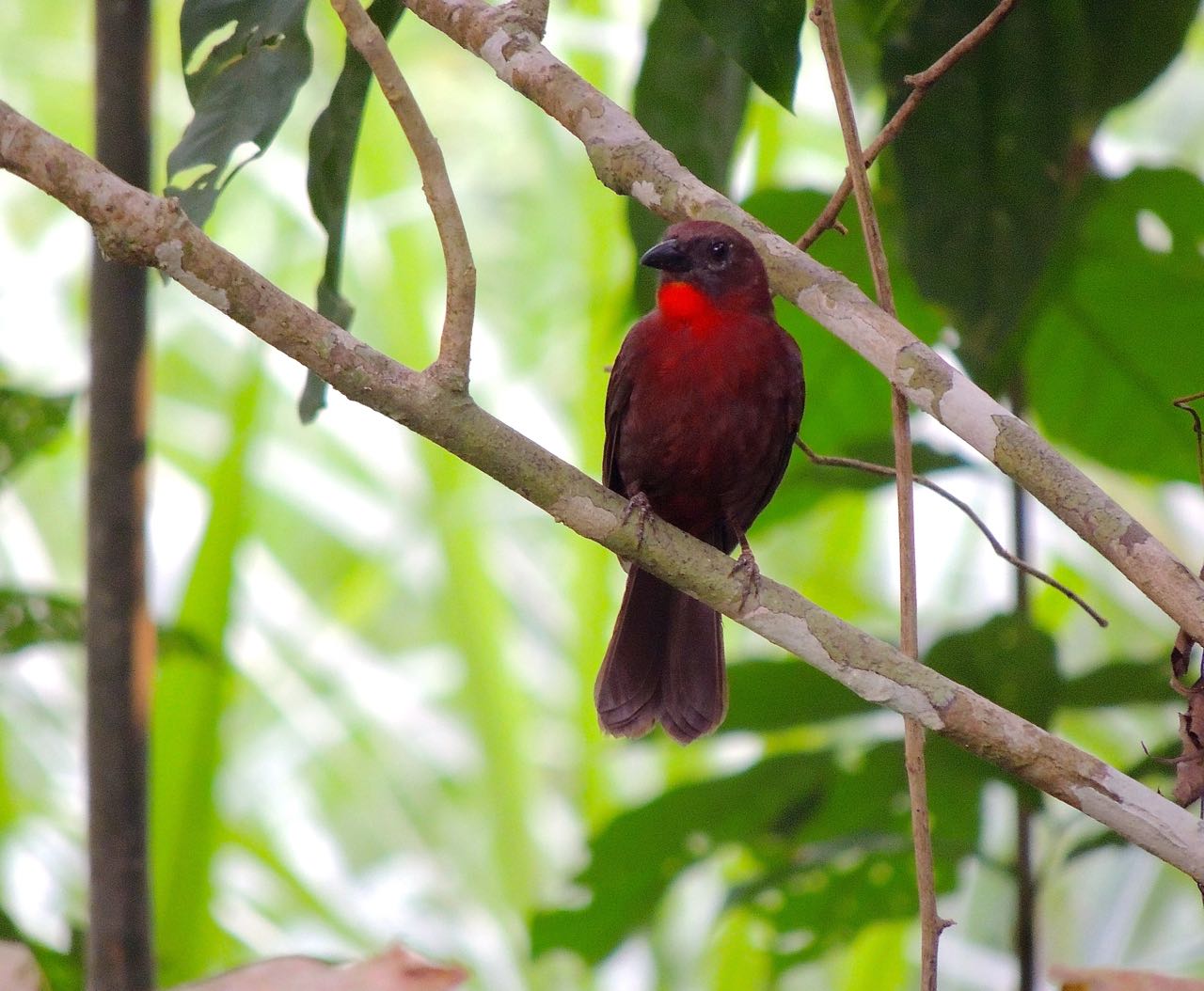 Red-throated Ant-Tanager - Photo by William Young
Red-throated Ant-Tanager - Photo by William YoungWe later went to a wetland area that had a lot of Wattled Jacanas and Common Moorhens. Some of the jacanas were among water hyacinths. We saw both a Green and a Striated Heron. We watched a Great Black Hawk catch a young Purple Gallinule and start to eat it. We saw both a male White-tailed Trogon and a female Gartered Trogon. A pair of Cinnamon Becards was near the water. I saw a Scarlet-rumped Cacique and later saw a Yellow-rumped. Both have blue eyes and a light bill. Blue Morpho butterflies were wobbling around, and a few landed near to us. I also saw a Banded Longwing.
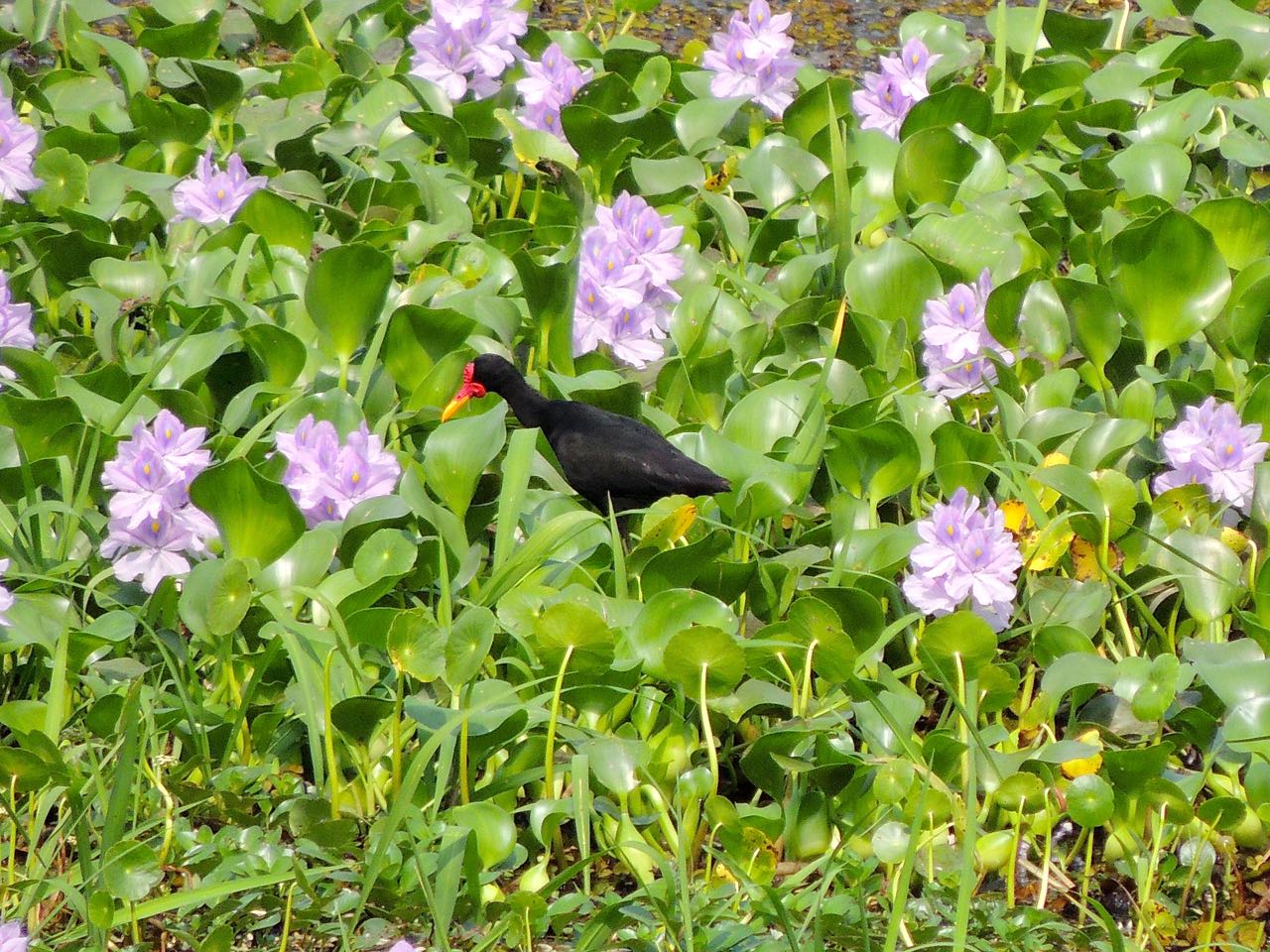 Wattled Jacana Adult - Photo by William Young
Wattled Jacana Adult - Photo by William Young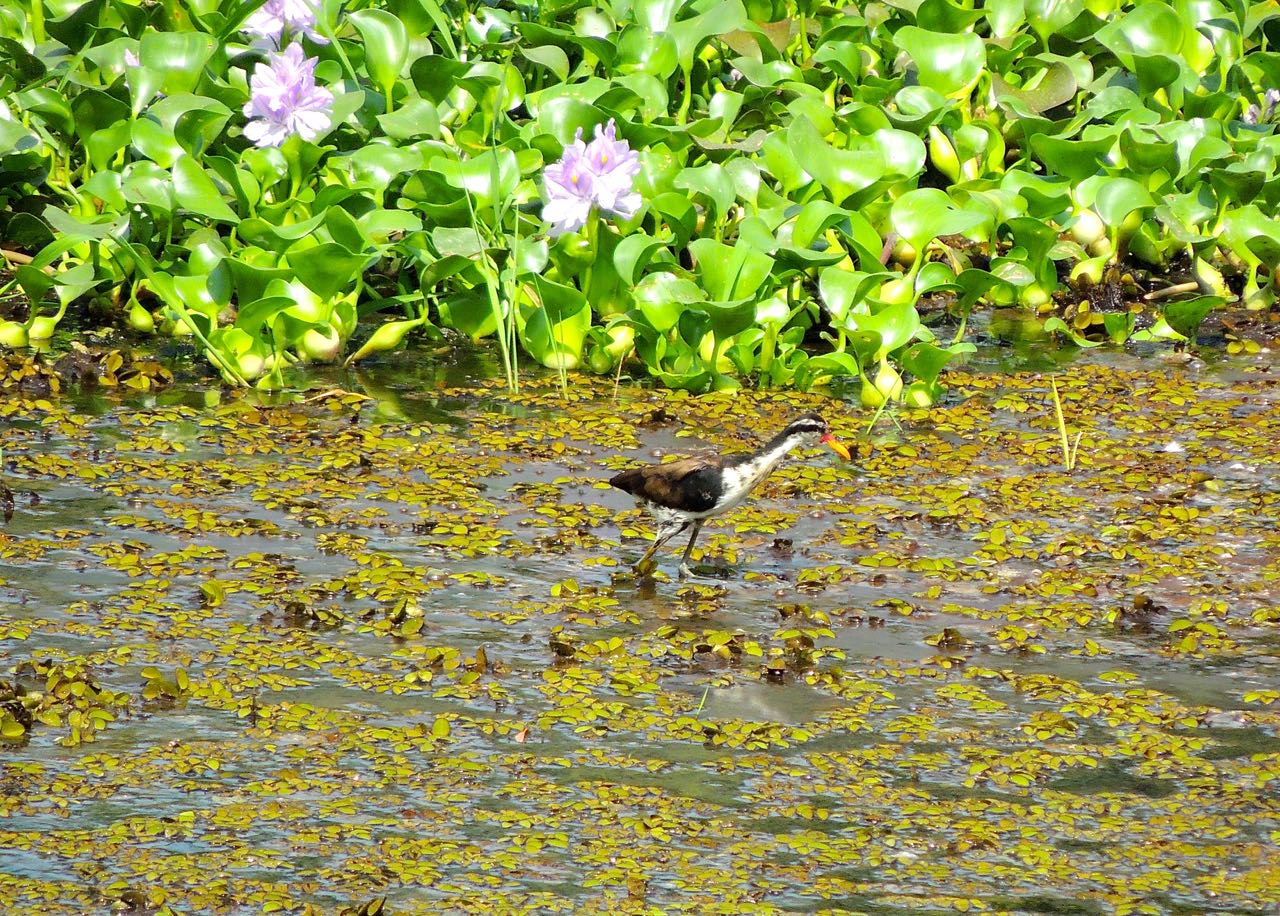 Wattled Jacana Juvenile - Photo by William Young
Wattled Jacana Juvenile - Photo by William Young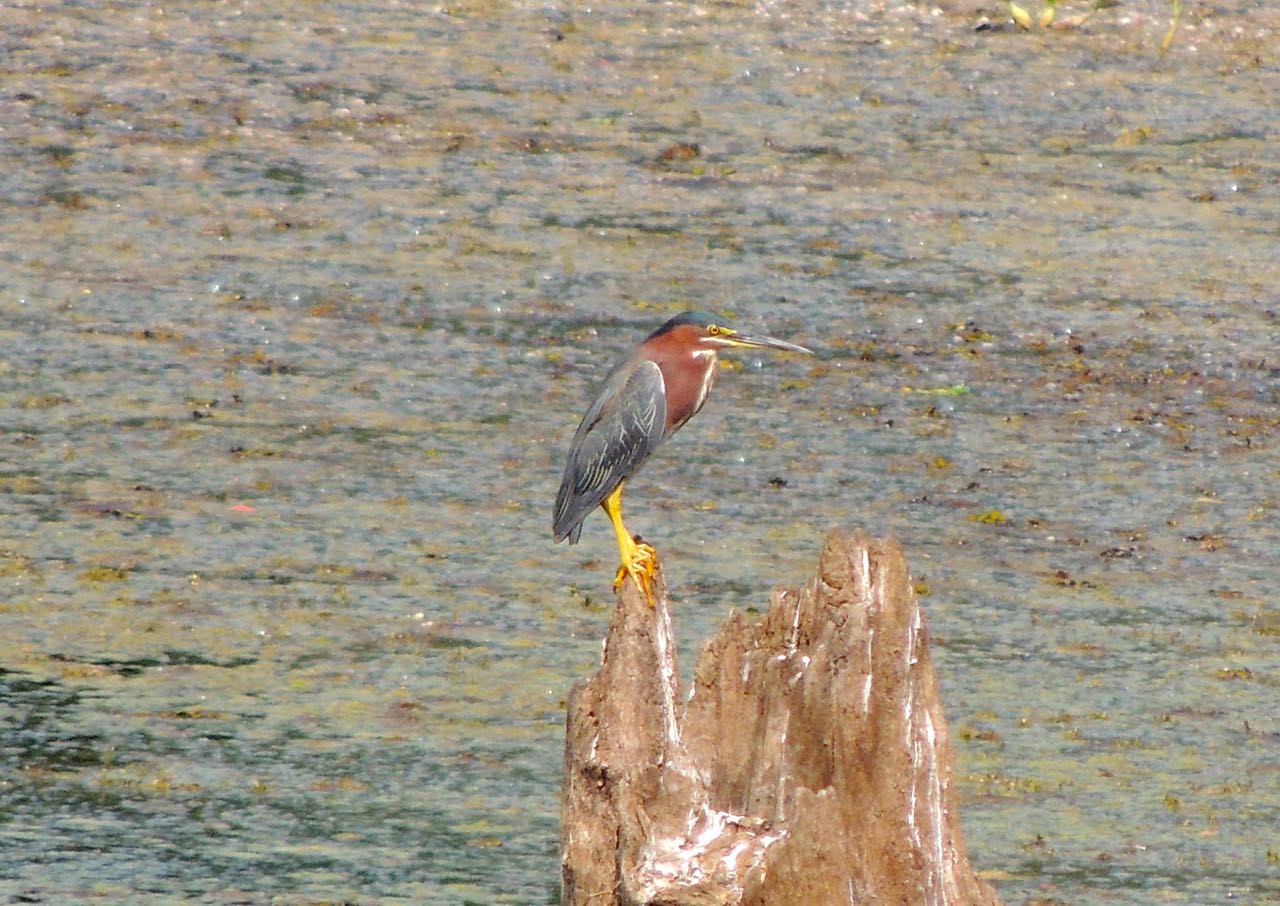 Green Heron - Photo by William Young
Green Heron - Photo by William Young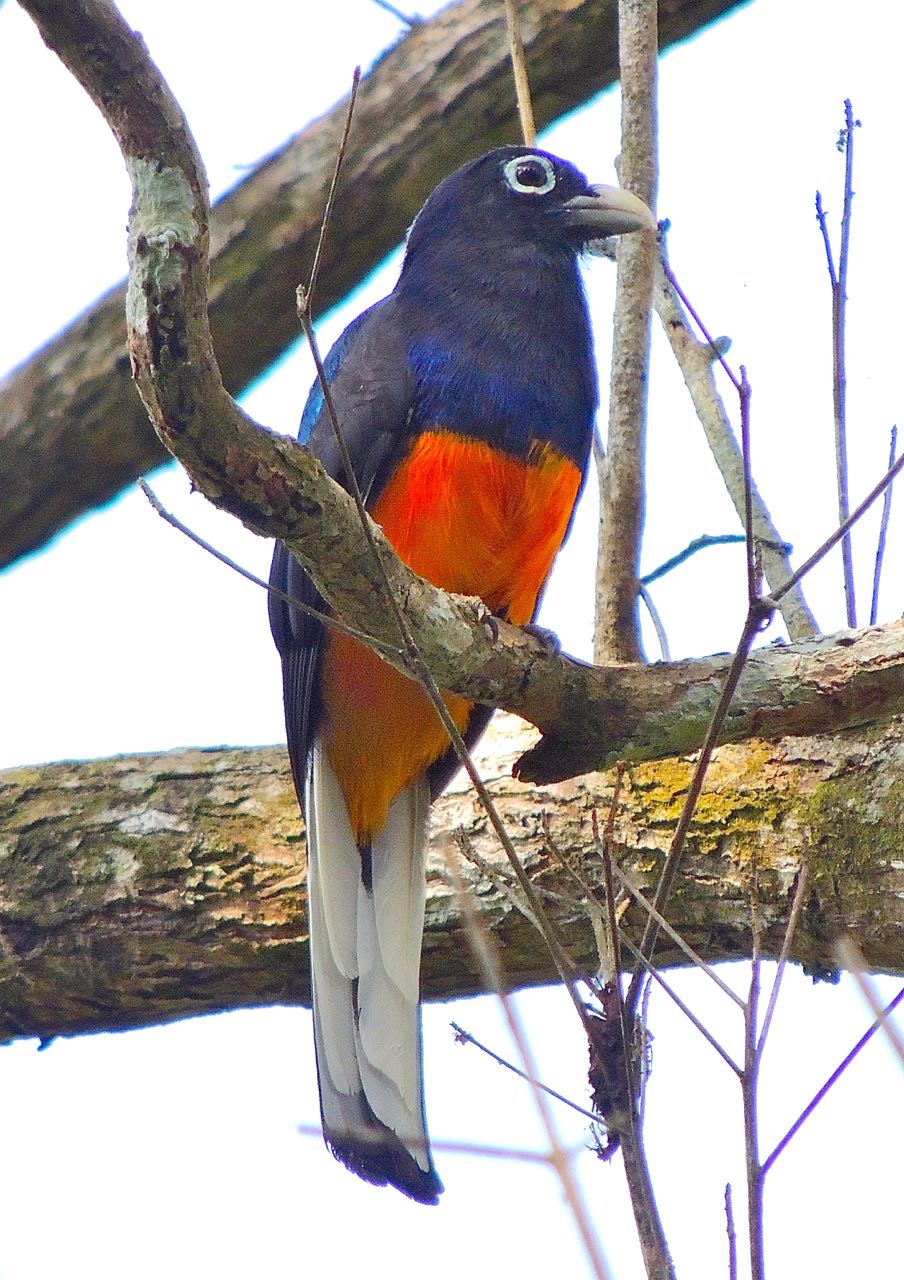 White-tailed Trogon Male - Photo by William Young
White-tailed Trogon Male - Photo by William Young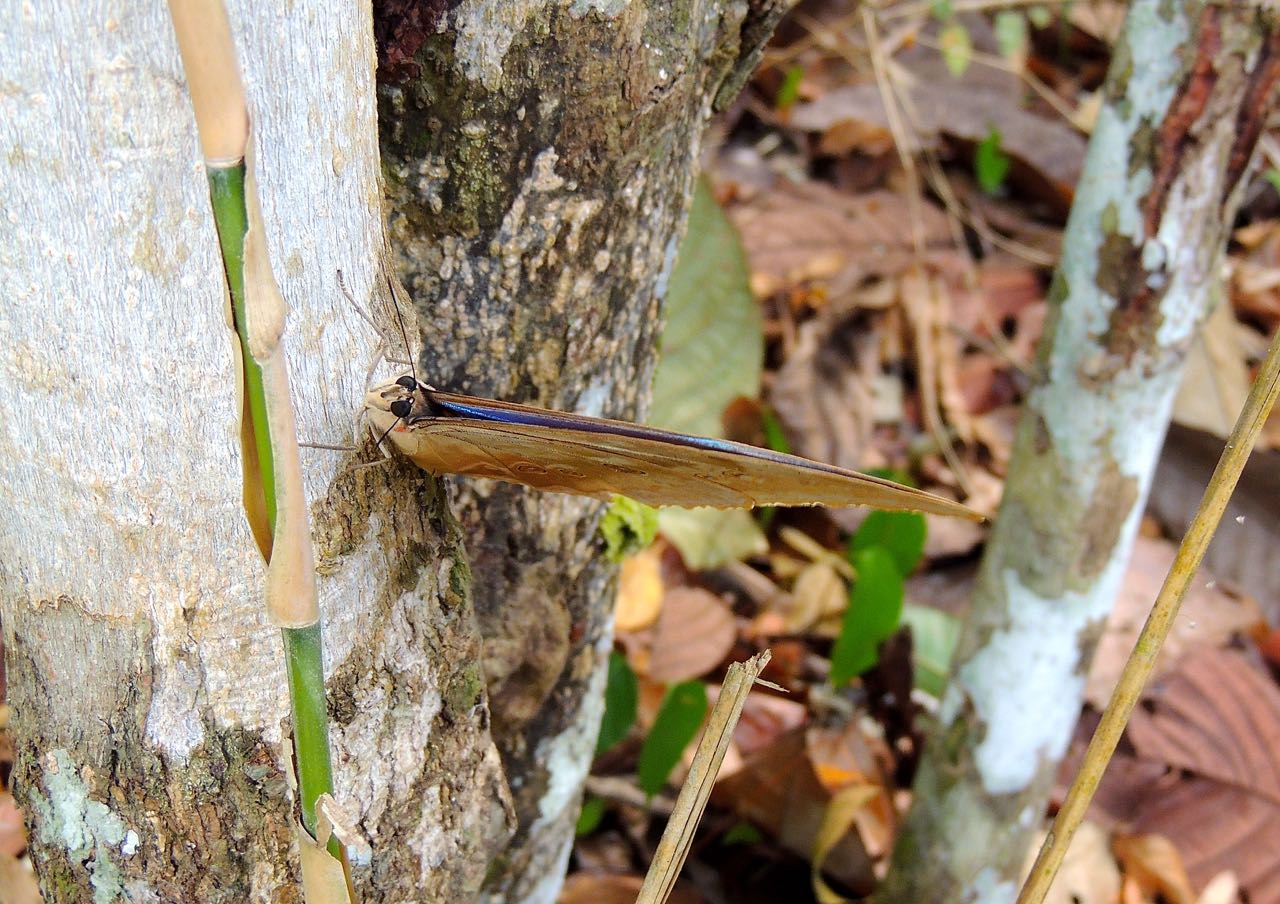 Blue Morpho - Photo by William Young
Blue Morpho - Photo by William Young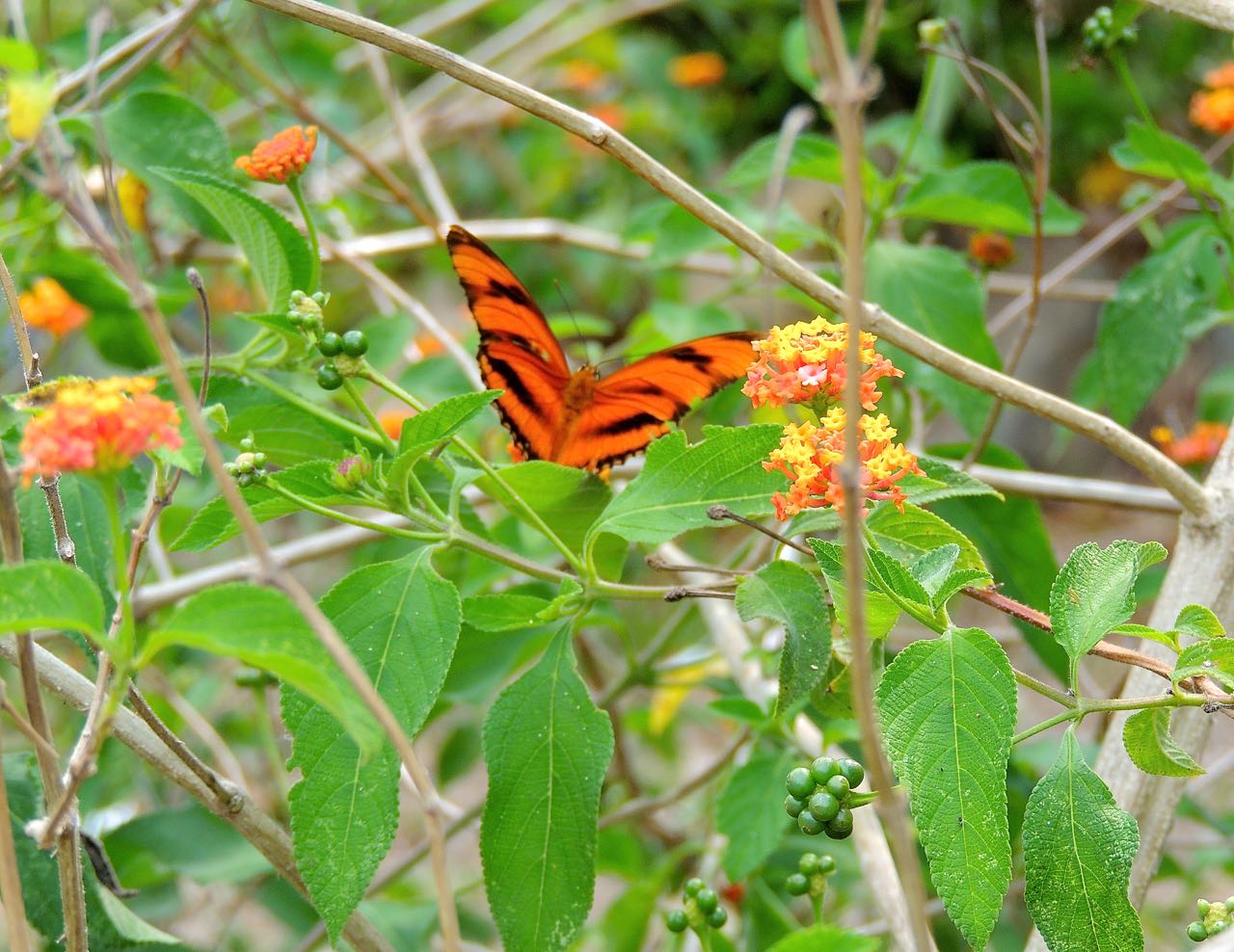 Banded Longwing - Photo by William Young
Banded Longwing - Photo by William YoungThe Discovery Center has an area with hummingbird feeders. Most of the hummingbirds in the area are White-necked Jacobins. They are aggressive and sometimes hovered about a foot in front of us. Other times, they were inches from my face. From the hummingbird area, I had a quick view of a male Blue-crowned Manakin, a stunning jet-black little bird with a bright blue cap. In the same area was a male Scarlet Tanager. A Black-cheeked Woodpecker was excavating a nest hole. We could hear a Golden-collared Manakin, who makes a noise like a joy buzzer. We found him perched near the rainforest floor.
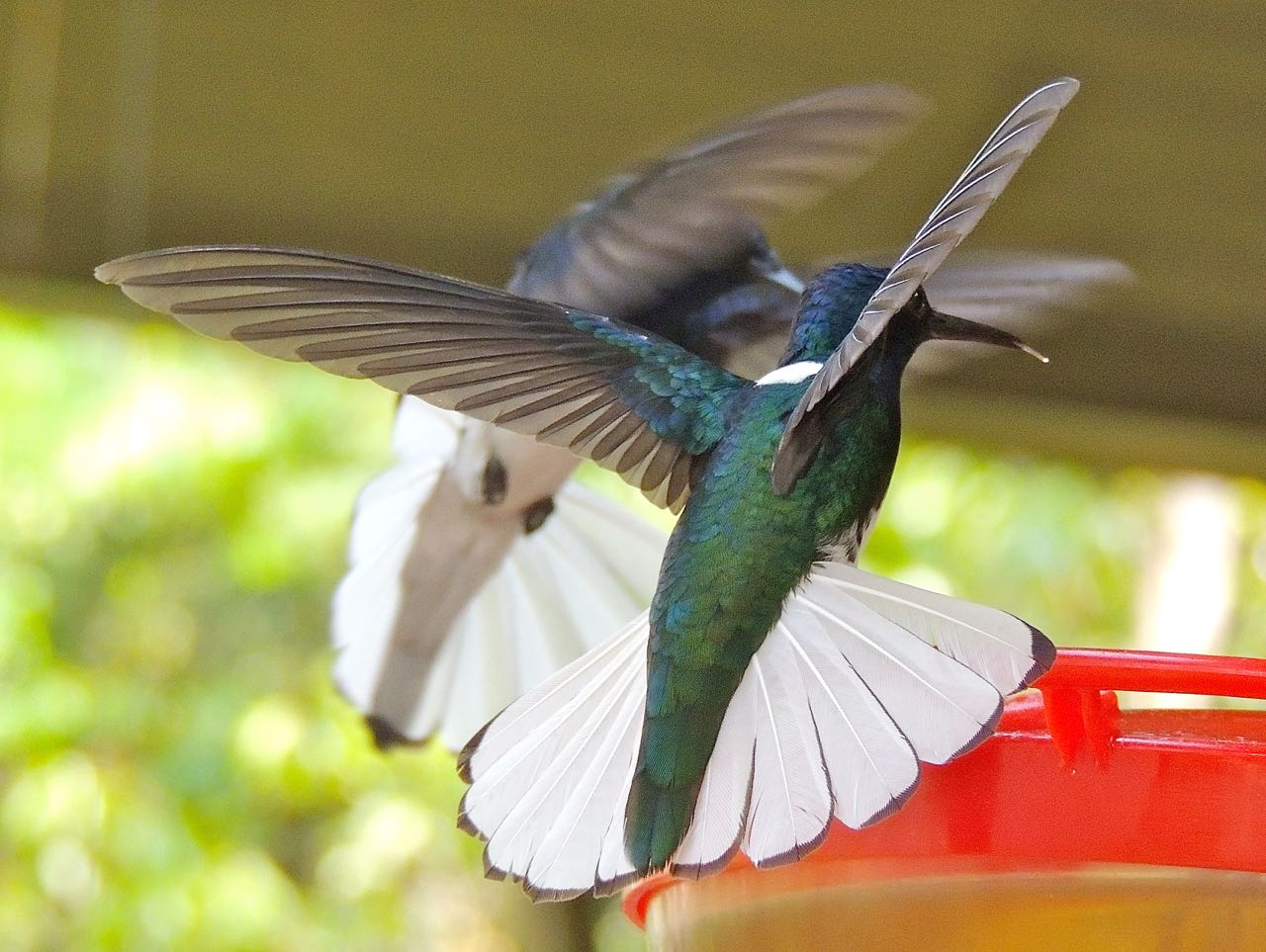 White-necked Jacobin - Photo by William Young
White-necked Jacobin - Photo by William YoungThis afternoon, we went to the Gamboa resort. Gamboa is the town where a lot of workers lived while they built the Panama Canal. The area is very birdy, and one of the highlights was watching a group of different species flying into the spray from a lawn sprinkler. One was a male Yellow Warbler, who was getting wet with some Plain-colored, Palm, and Blue-gray Tanagers. We found a Great Kiskadee nest with three chicks. It was near the top of a wooden utility pole, out in the open. A young Yellow-headed Caracara perched in a palm, sometimes begging to be fed. In front of a building was a garden with a pair of Garden Emeralds, as well as a male Sapphire-throated Hummingbird molting into breeding plumage. In the same garden was a Banded Longwing butterfly. Nearby, a pair of Common Tody-Flycatchers was building a nest. A pair of Spotted Sandpipers was on one of the lawns. A lot of Pale-vented Pigeons were calling. I saw both Great Crested Flycatchers and Eastern Kingbirds. A stunning Yellow-tailed Oriole hopped on some branches, and we also saw a male Baltimore Oriole. At one point, we encountered a huge feeder flock that contained numerous species. It included a Green Shrike-Vireo (who was scratching itself), both Chestnut-sided and Bay-breasted Warblers, and two Black-headed Saltators. Among the non-bird species we saw were: a White-nosed Coati, who is in the raccoon family; a Lesser Capybara, who is like a giant guinea pig; and a Green Iguana high in a tree.
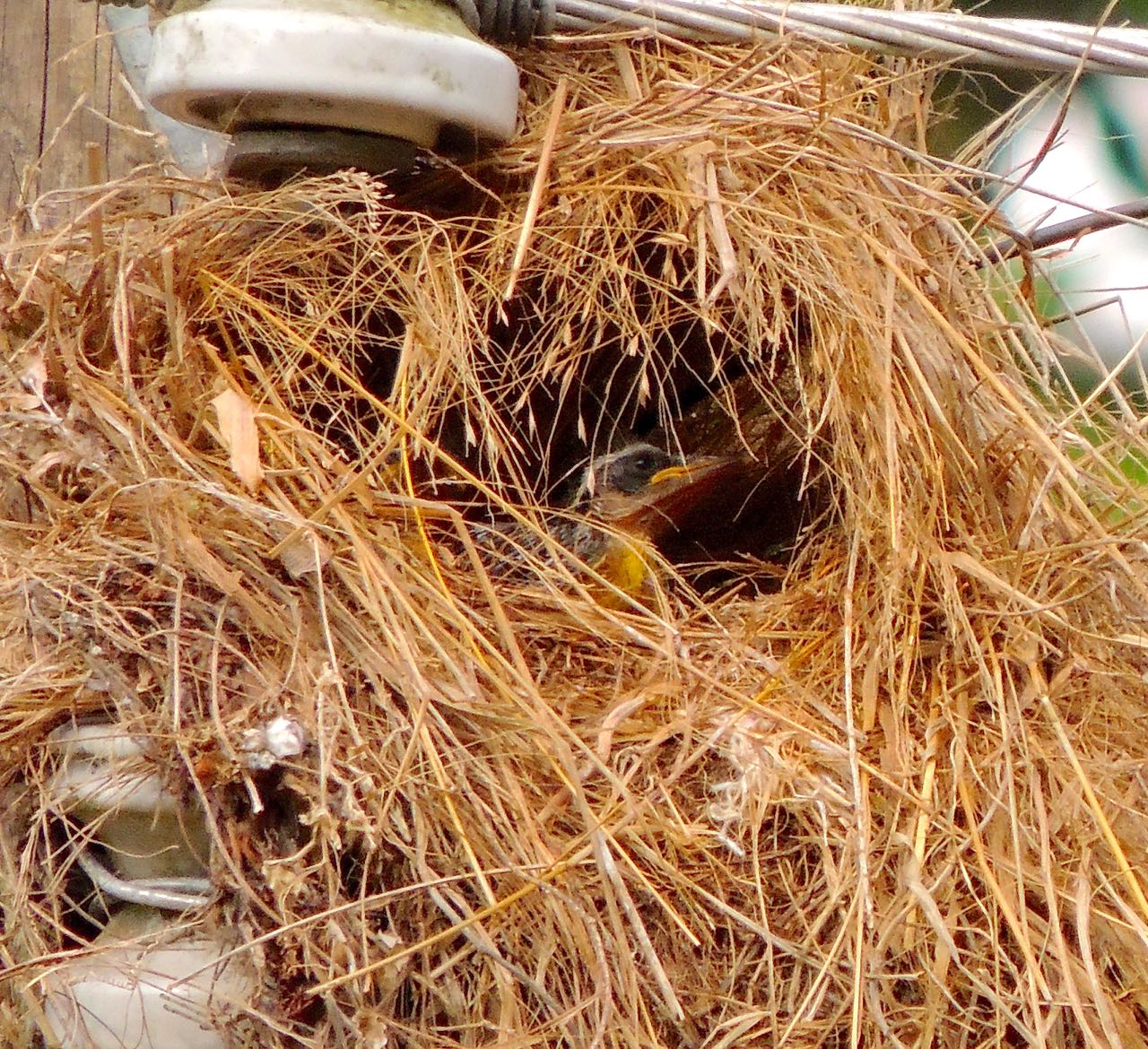 Great Kiskadee Chick in Nest - Photo by William Young
Great Kiskadee Chick in Nest - Photo by William Young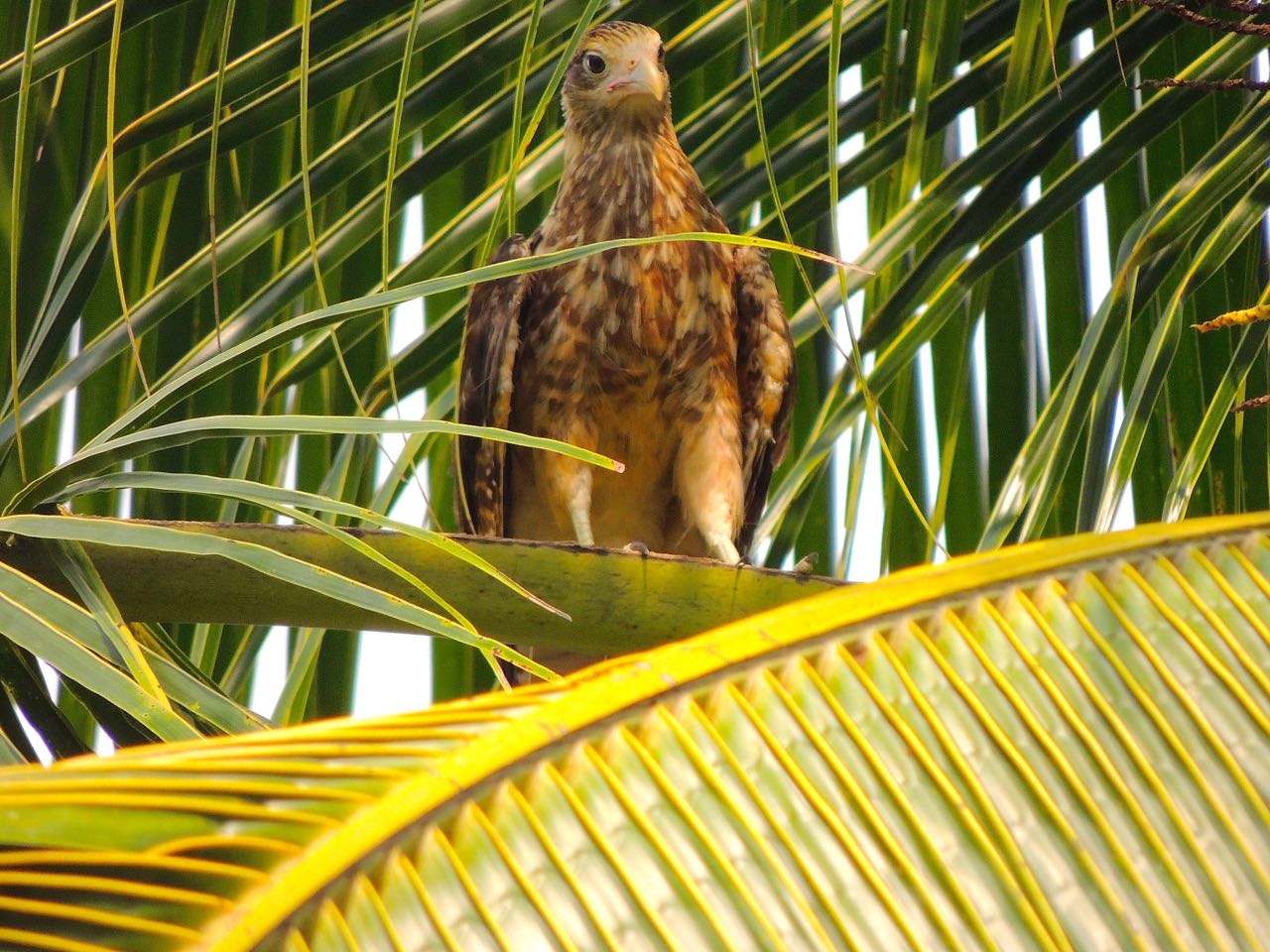 Yellow-headed Caracara Juvenile - Photo by William Young
Yellow-headed Caracara Juvenile - Photo by William Young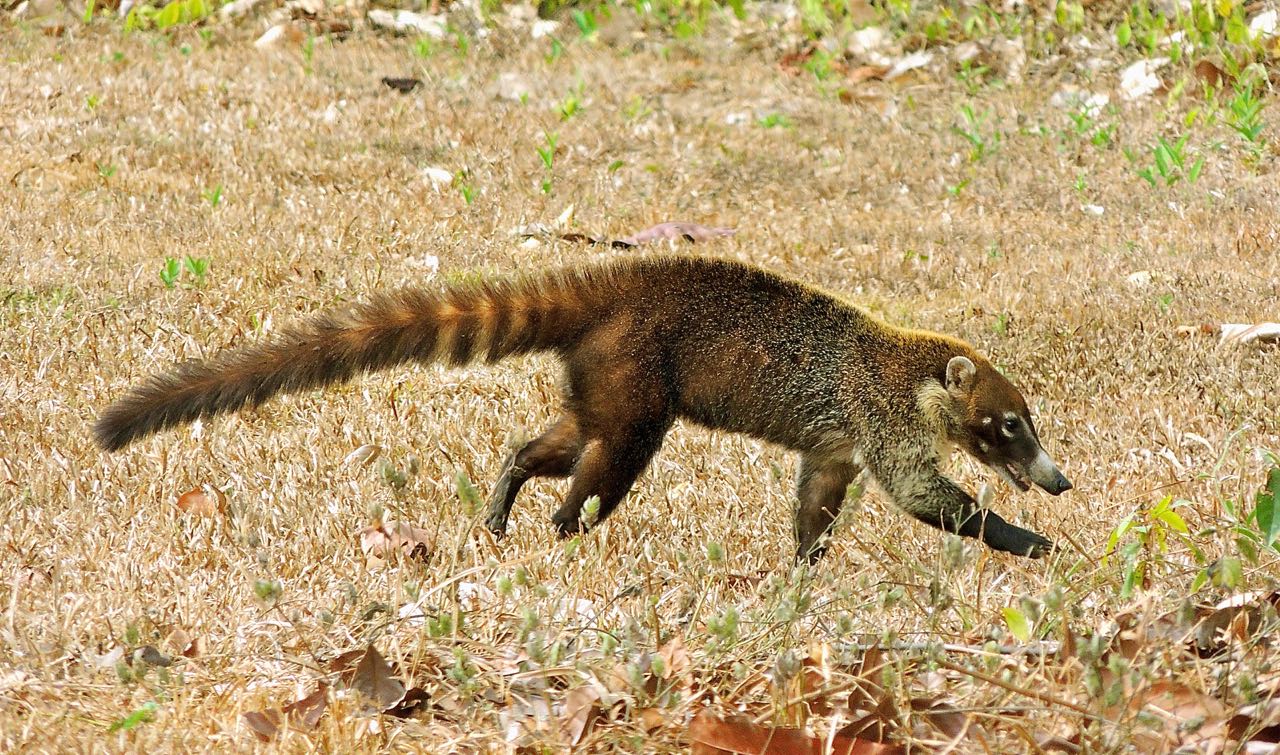 White-nosed Coati - Photo by William Young
White-nosed Coati - Photo by William Young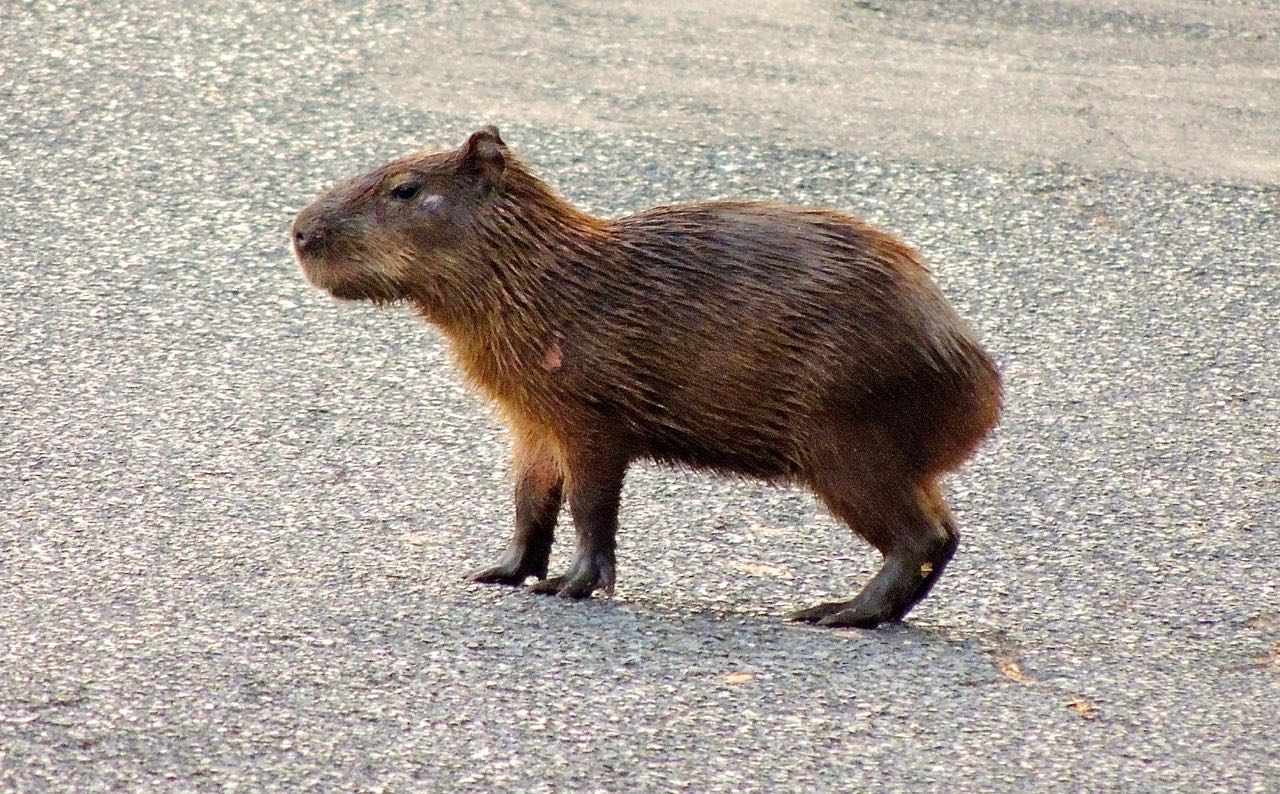 Lesser Capybara - Photo by William Young
Lesser Capybara - Photo by William Young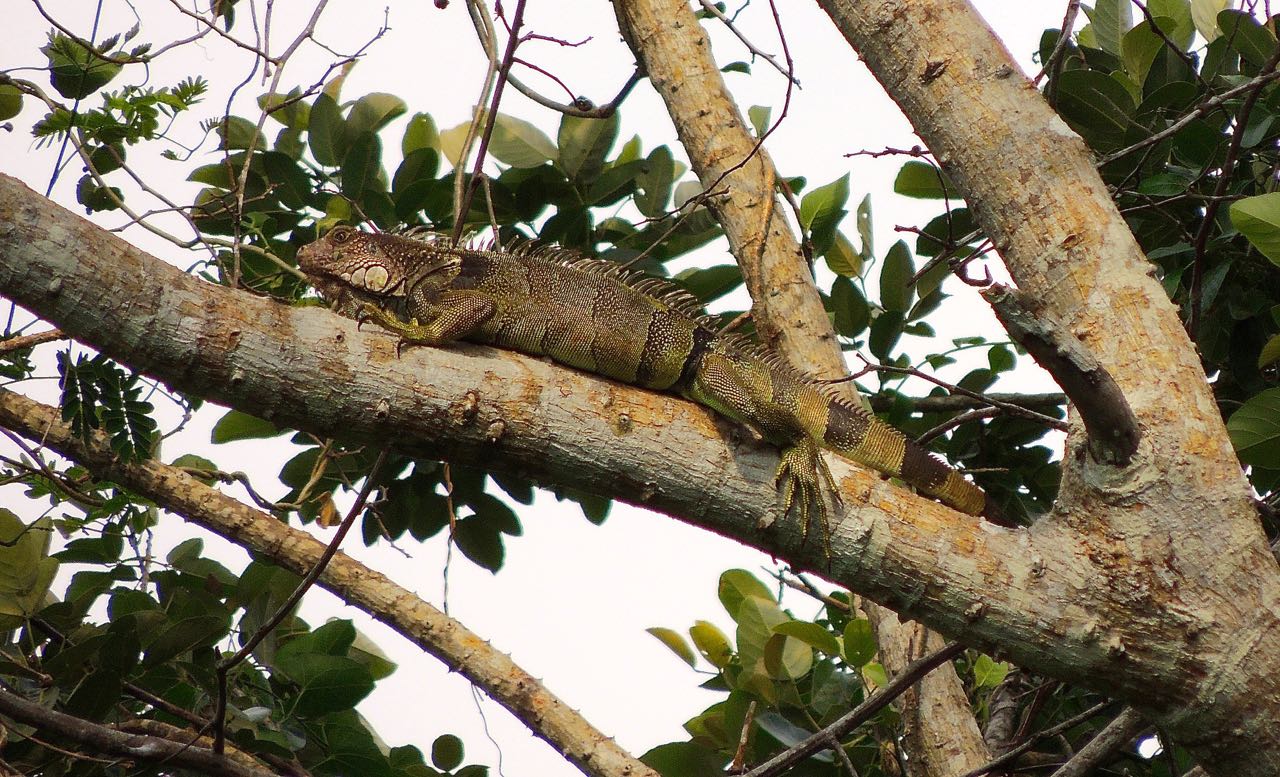 Green Iguana - Photo by William Young
Green Iguana - Photo by William YoungAt night, I could hear geckos vocalizing. They sound like someone making five consecutive kissing noises.
April 3This morning, we drove along the Panama Canal toward the Metropolitan Park in Panama City. On the way over, I saw Laughing Gulls over the canal. We also saw a fly-by Fork-tailed Flycatcher. The park has dry forest, and we had trouble moving more than 100 yards from where we parked because we were seeing so many birds near the entrance. A White-tipped Dove was walking near us while we were looking at a Blue-headed Parrot in the trees. We saw Orange-chinned Parakeets, who are smaller than the Blue-headed and fly faster. A Southern Beardless Tyrannulet hopped above us, and a male Lance-tailed Manakin popped into the open. I later saw a young male, who is green with a red cap. We walked about 50 yards and saw another feeder flock that included White-shouldered Tanagers, Yellow-backed Orioles, a Blue Dacnis, a number of different flycatchers, and a Whooping Motmot. The female White-shouldered Tanager looks like a miniature Gray-headed. We has been hearing the incessant song of the Bright-rumped Attila, and one eventually made an appearance. Three Bay-breasted Warblers came down to eat seeds on the ground, and one was a male in breeding plumage — the first I had seen like this. Both Red-eyed and Yellow-green Vireos were in the trees. We heard a lot of Rufous-breasted Wrens and saw a couple, including one hopping around with a female Dot-winged Antwren. A lot of Squirrel Cuckoos were flying around. A White-necked Puffbird snatched a large grasshopper out of the air and tried to swallow it. A non-bird highlight was seeing a brown helicopter damselfly. While we were eating lunch near the top of the tower, a large Green Iguana hopped onto a branch at eye level, and I could hear him chewing leaves — they are vegetarian.
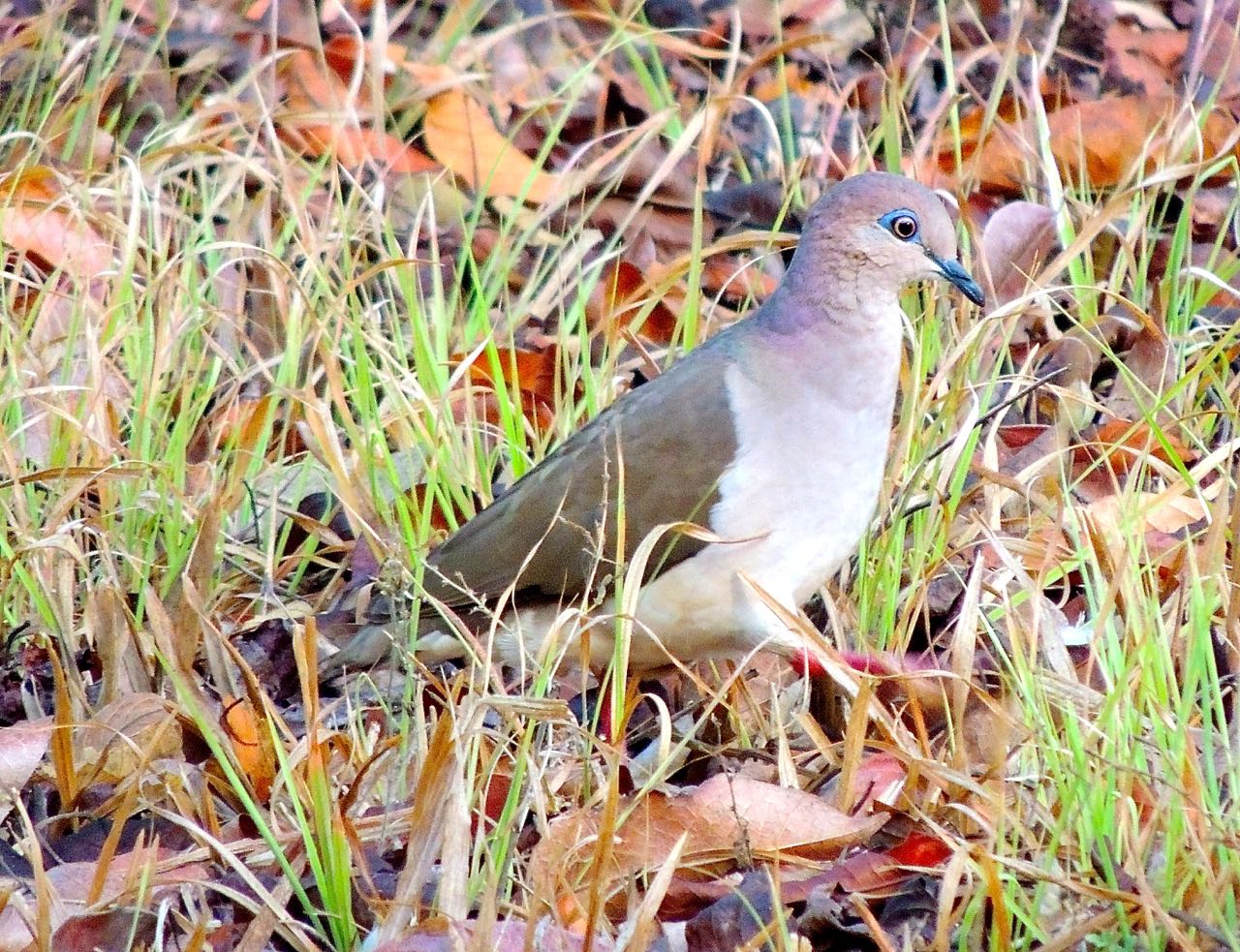 White-tipped Dove - Photo by William Young
White-tipped Dove - Photo by William Young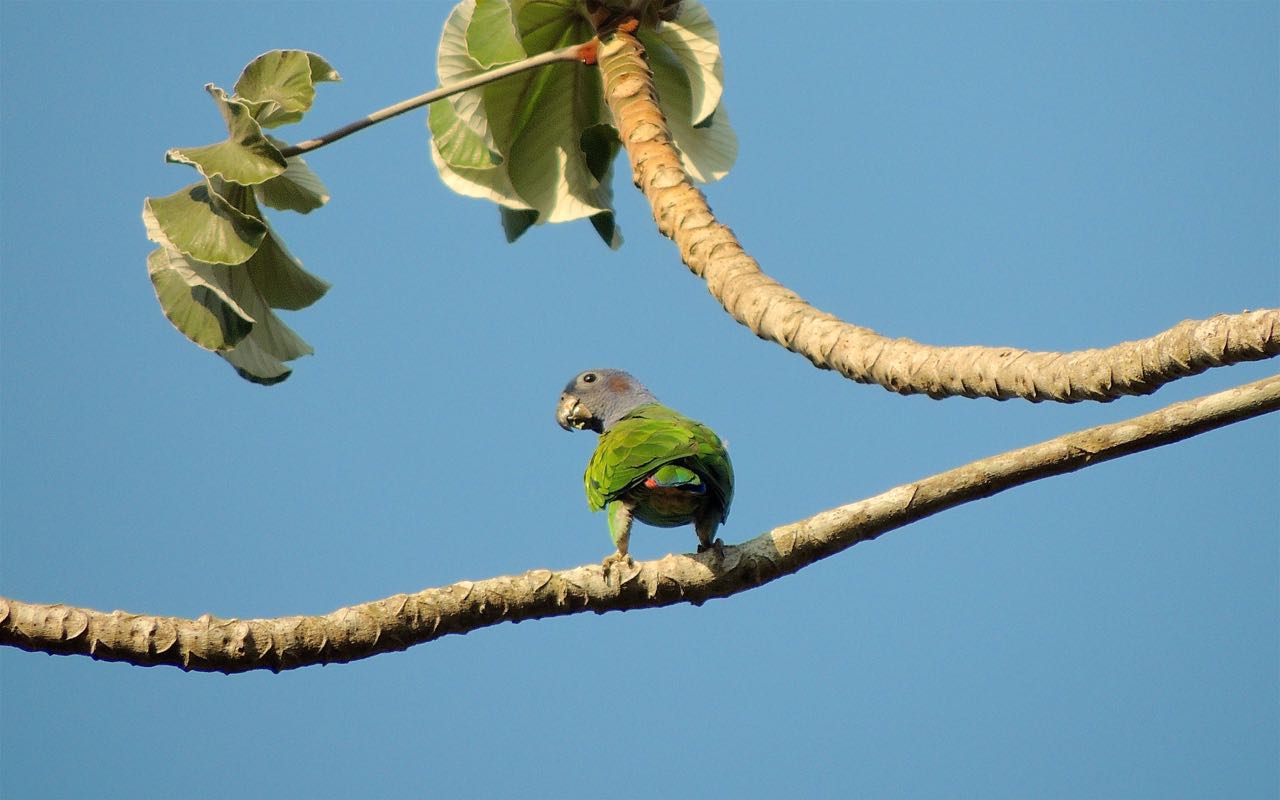 Blue-headed Parrot - Photo by William Young
Blue-headed Parrot - Photo by William Young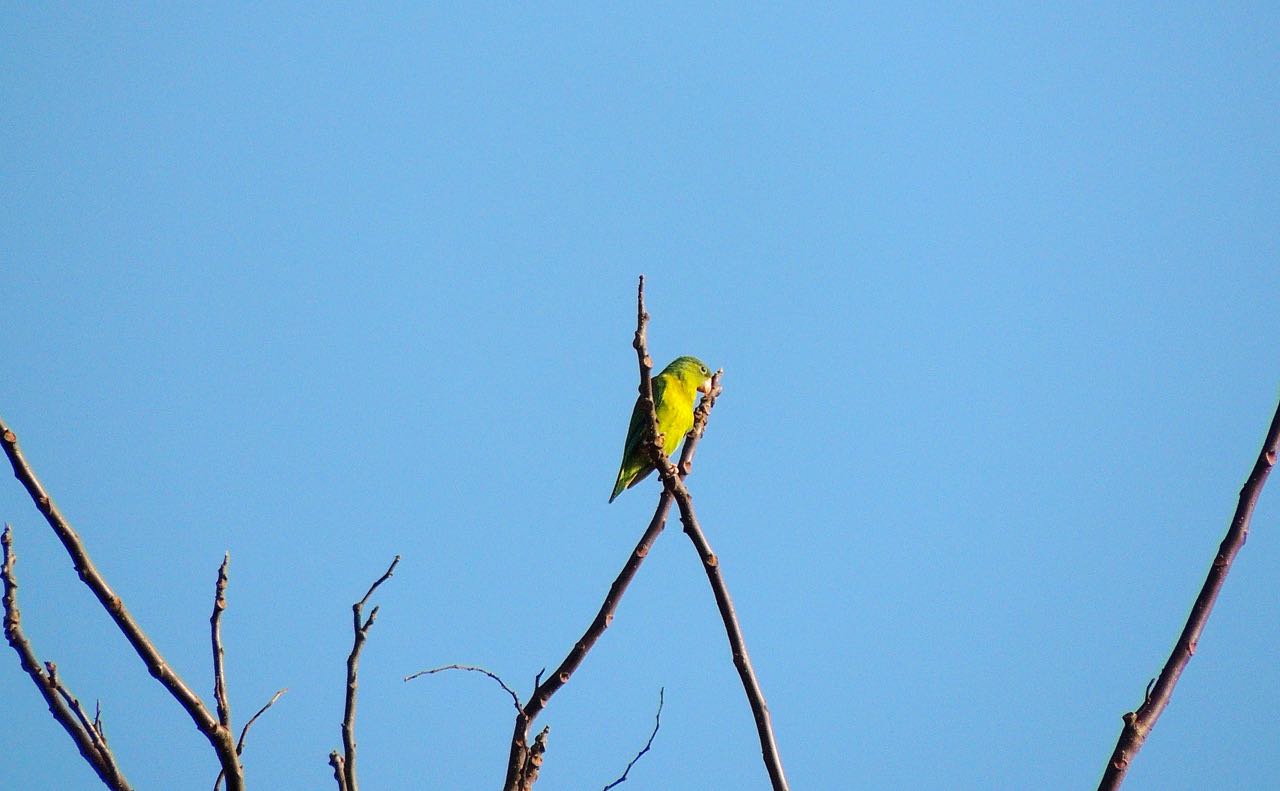 Orange-chinned Parakeet - Photo by William Young
Orange-chinned Parakeet - Photo by William Young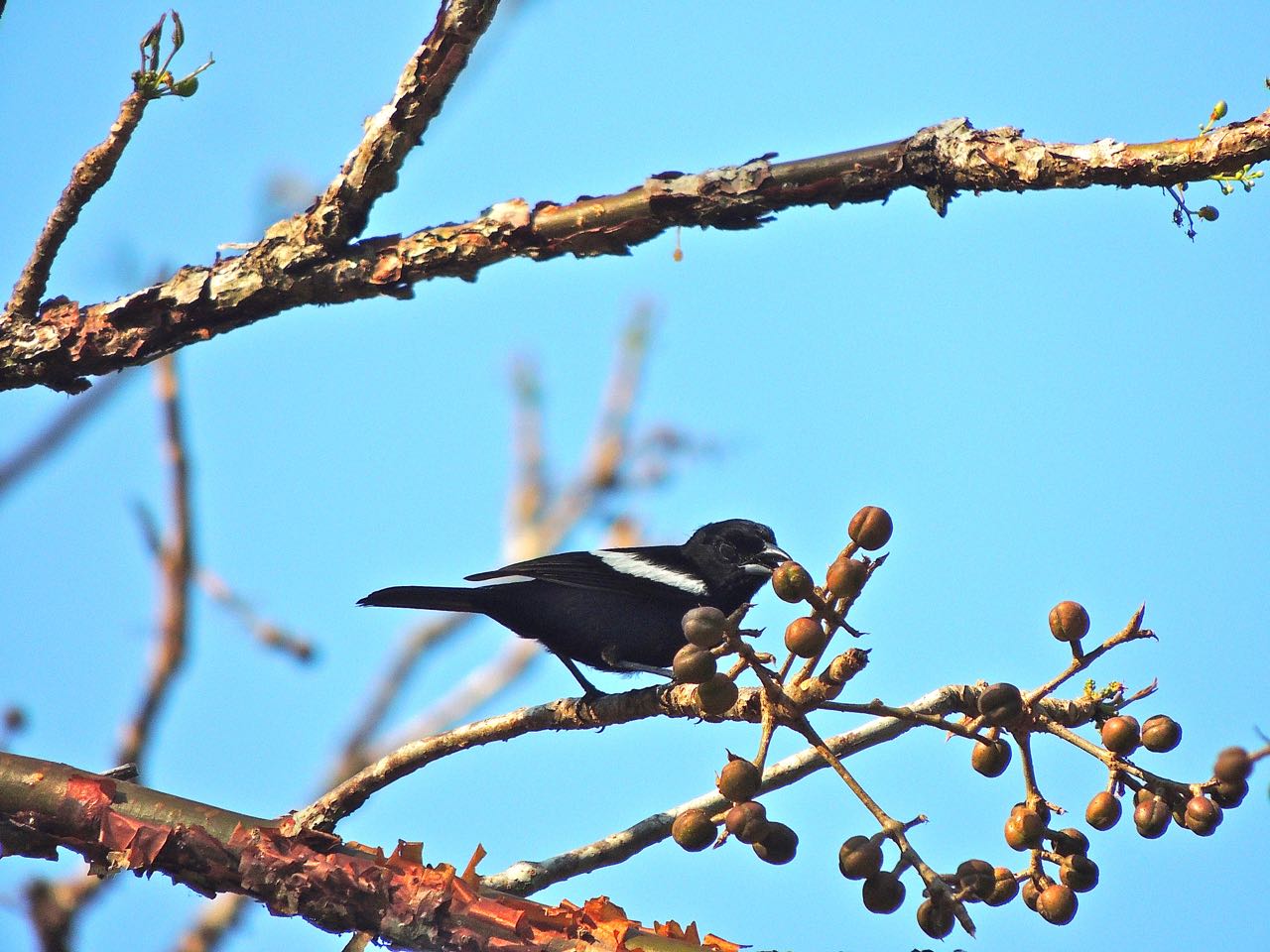 White-shouldered Tanager Male - Photo by William Young
White-shouldered Tanager Male - Photo by William Young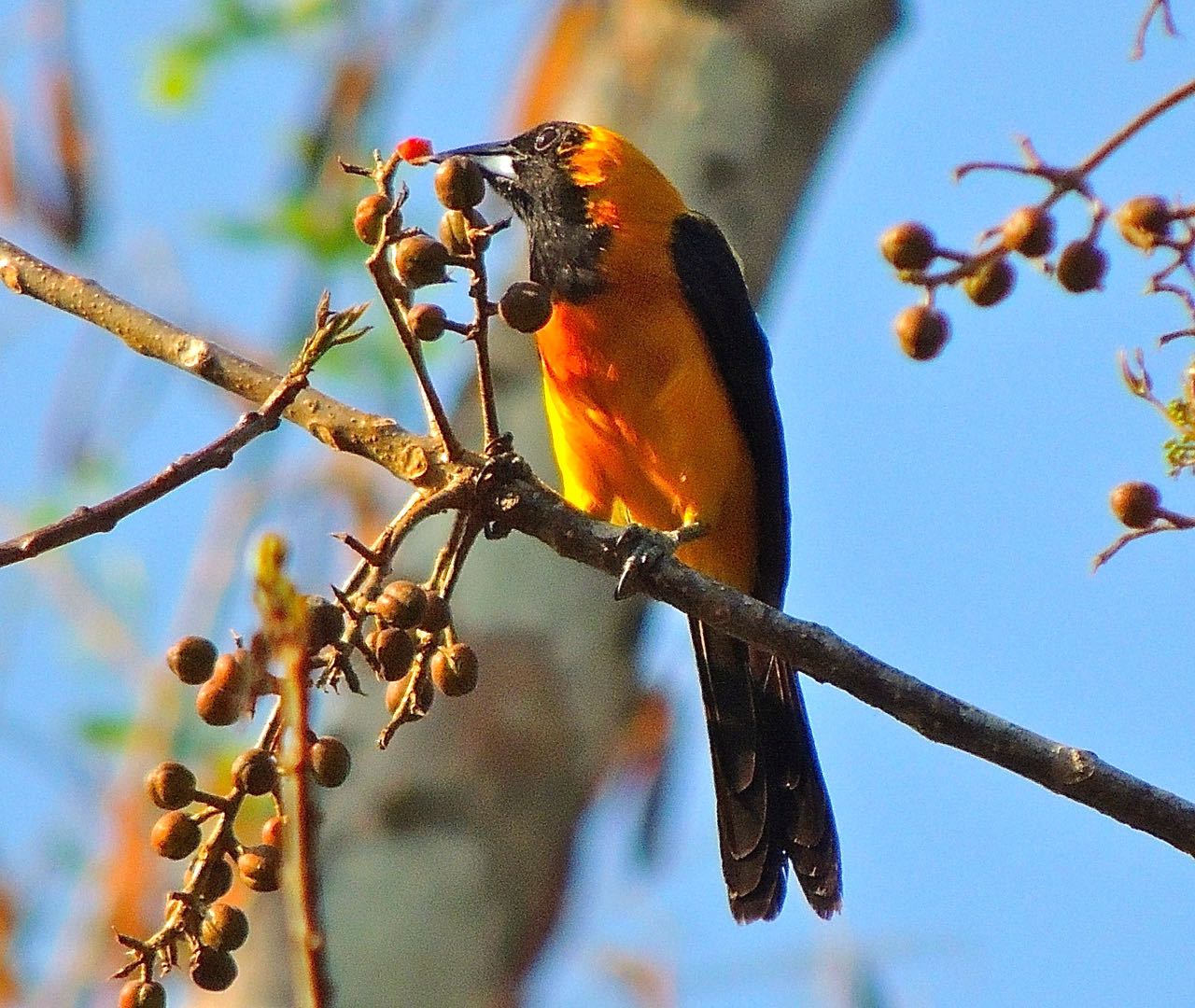 Yellow-backed Oriole - Photo by William Young
Yellow-backed Oriole - Photo by William Young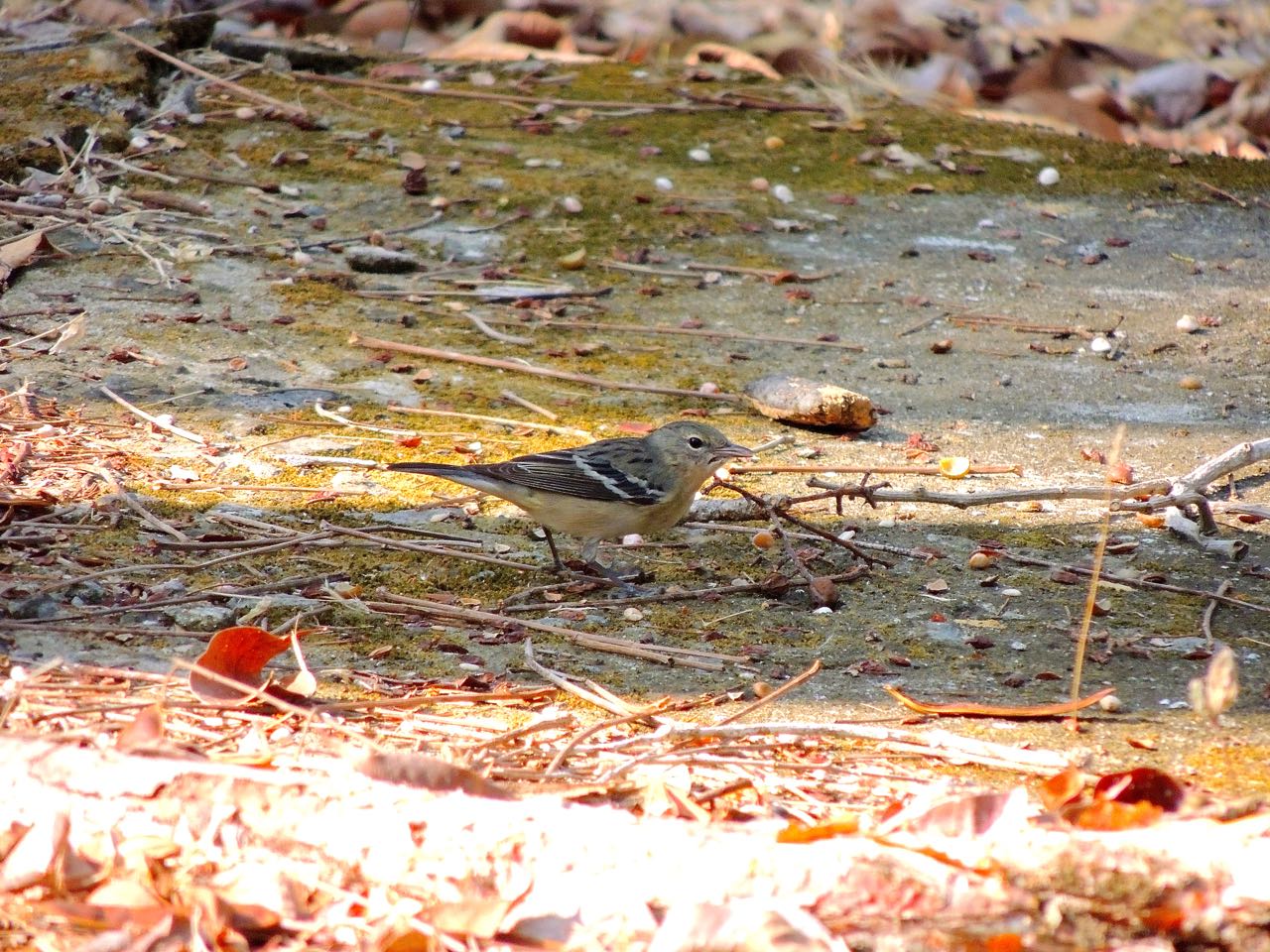 Bay-breasted Warbler Female - Photo by William Young
Bay-breasted Warbler Female - Photo by William Young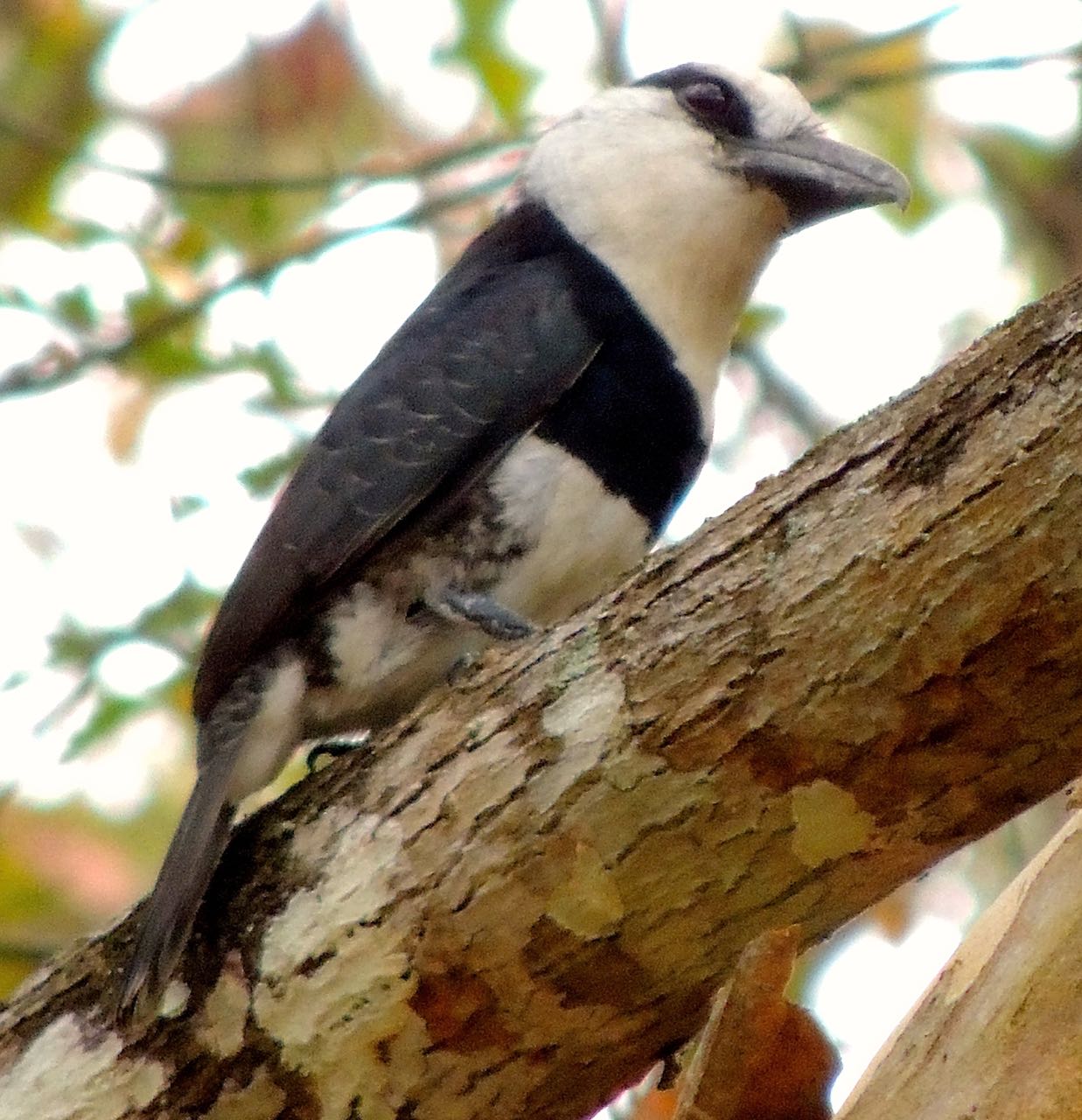 White-necked Puffbird - Photo by William Young
White-necked Puffbird - Photo by William YoungThis afternoon, we went to the Ammo Ponds in Gamboa. They are near a facility where explosives were stored when the canal was being built. We saw both adult and young Purple Gallinules, Great Egrets, and Little Blue, Green, Striated, and Rufescent Tiger-Herons. A young Rufescent Tiger-Heron had caught a long eel. An Anhinga flew across the pond, and an Osprey hovered over it. A White-tailed Kite had caught a White-throated Crake and was eating it in a tree — the crake is usually difficult to see while skulking in the reeds. A young Snail Kite was perched in the reeds. We scoped a preening Black-throated Mango perched in a tree. We saw a male and female of both Barred and Fasciated Antshrikes. The males are dark, while the females are brownish or rufous. I watched a male White-bellied Antbird singing on the forest floor. It has a rufous back and a black face. Pale-vented Pigeons perched on a wire, as did a Ringed Kingfisher and a Tropical Kingbird. We saw a Cinnamon Woodpecker, and a Cocoa Woodcreeper appeared to be nailed to a tree. This morning, we heard one singing loudly near the front of the park as if on territory. We saw a Common Tody-Flycatcher nest, which is a very large structure for such a small bird. Most of the swallows were Barns, Southern Rough-winged, and Gray-breasted Martins, but I did see a Northern Rough-winged and a Cliff Swallow. I saw a male Yellow Warbler in the same binocular field as a male Scarlet Tanager. In the same tree was a male Rose-breasted Grosbeak. I later saw a male Summer Tanager. A pair of Blue Dacnises were hopping in a tree near the pond. I had nice looks at a male Yellow-crowned Euphonia. On the ground and on the fence near the railroad tracks were Variable, Yellow-bellied, and Ruddy-breasted Seedeaters, along with a young Blue-black Grassquit. These birds are small and require patience to sort out. A lot of Black Vultures were around. We saw a Variegated Squirrel, who looked all black, unlike the light grayish one I had seen previously.
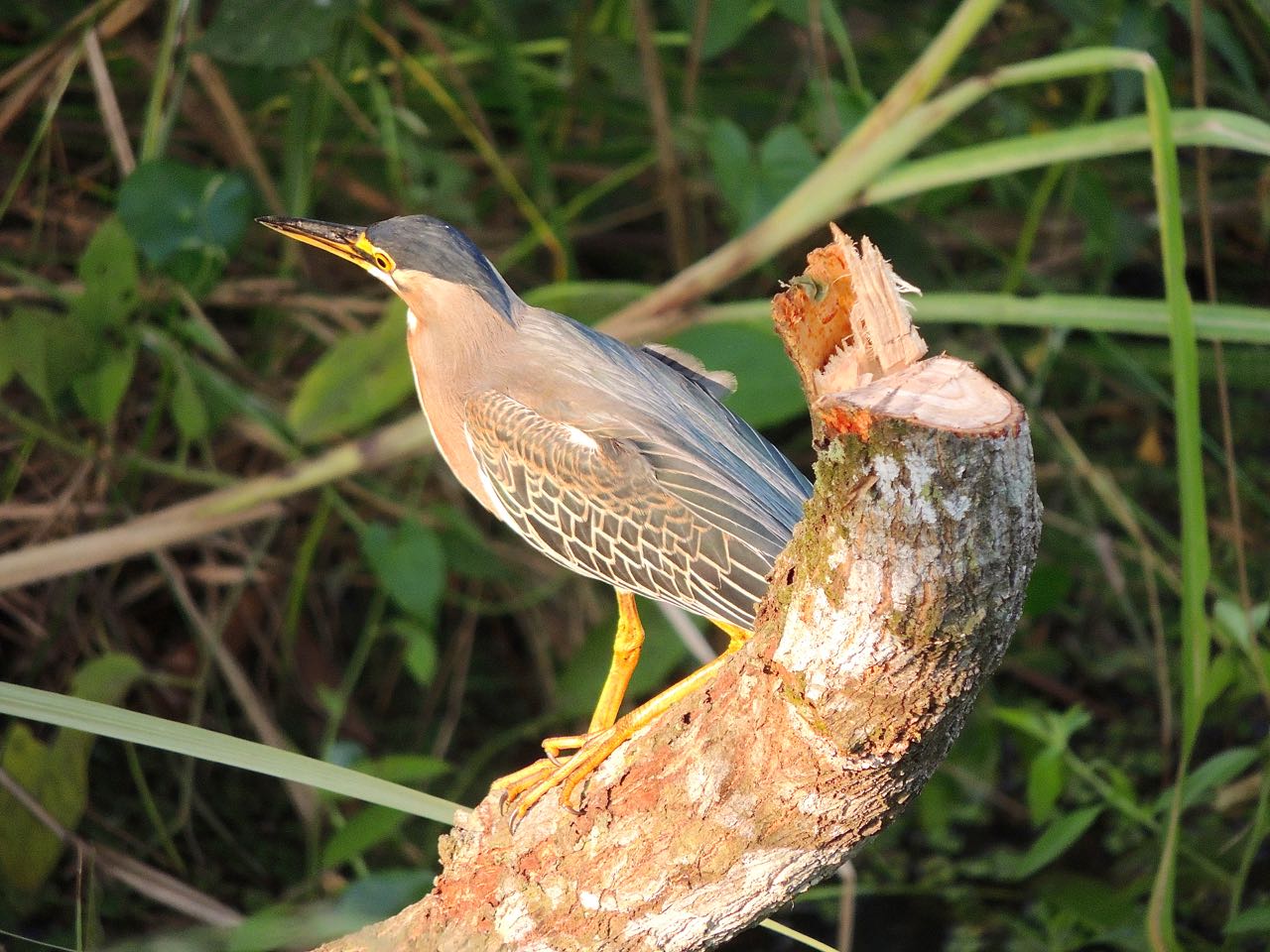 Striated Heron - Photo by William Young
Striated Heron - Photo by William Young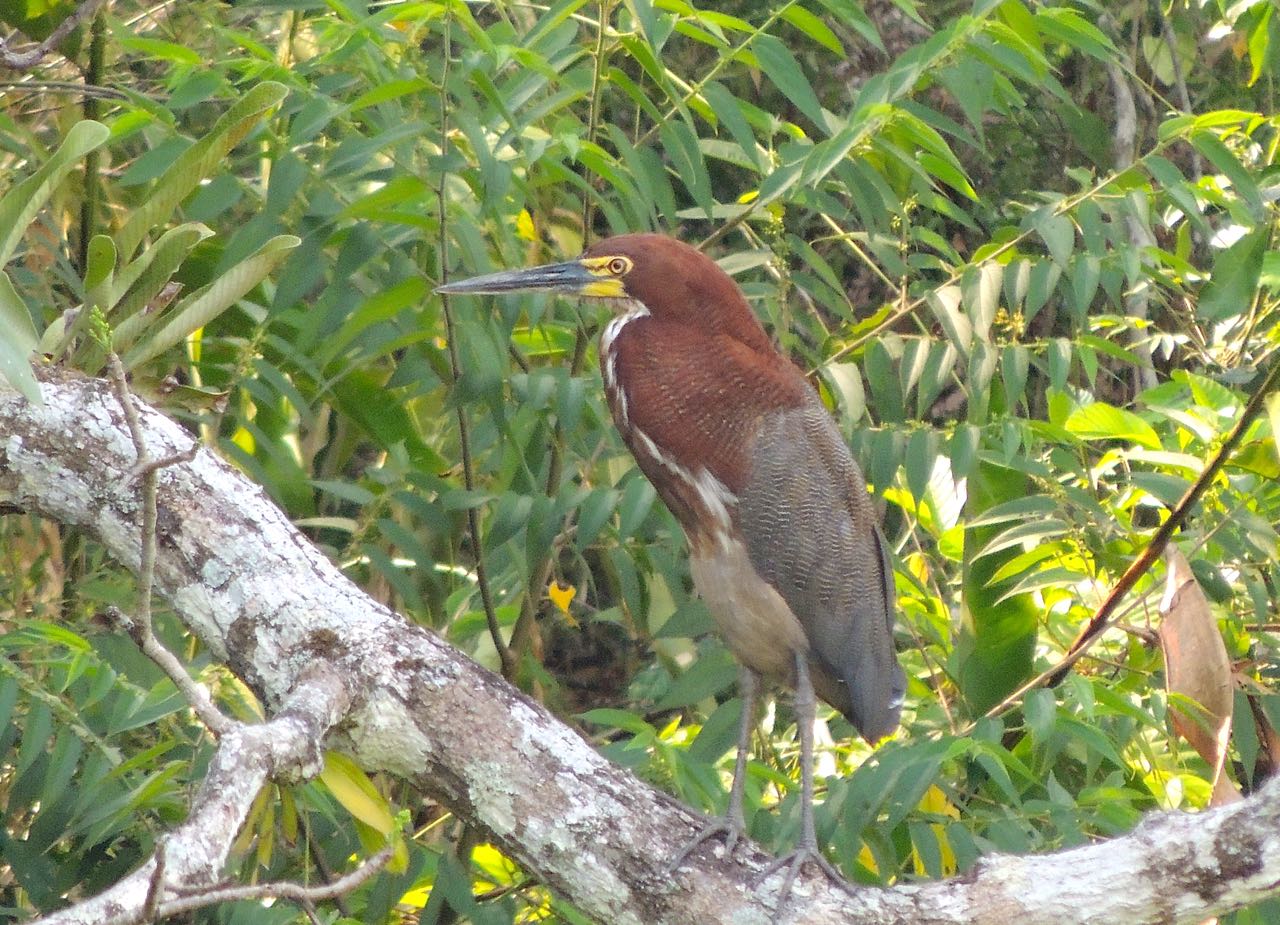 Rufescent Tiger-Heron - Photo by William Young
Rufescent Tiger-Heron - Photo by William Young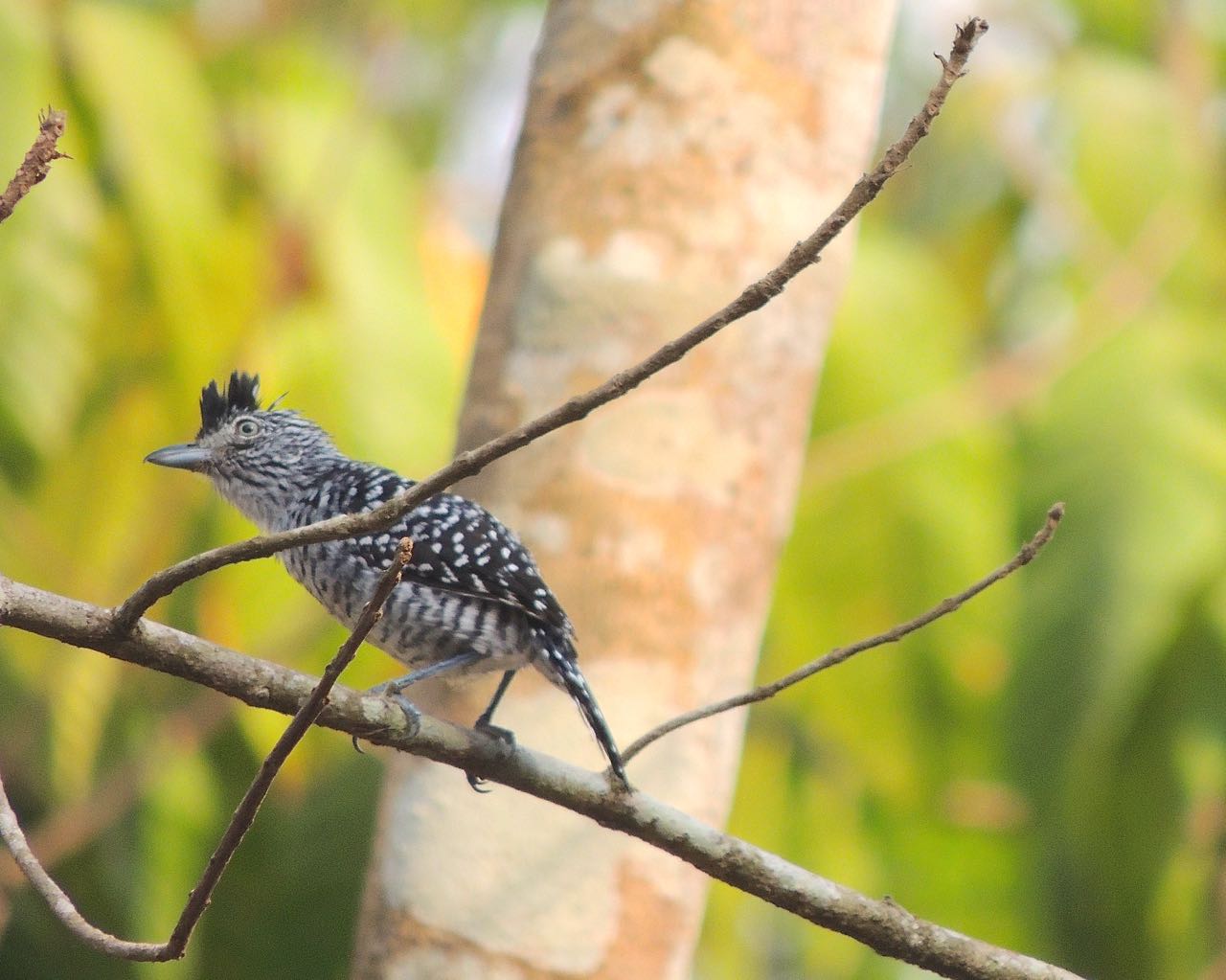 Barred Antshrike Male - Photo by William Young
Barred Antshrike Male - Photo by William Young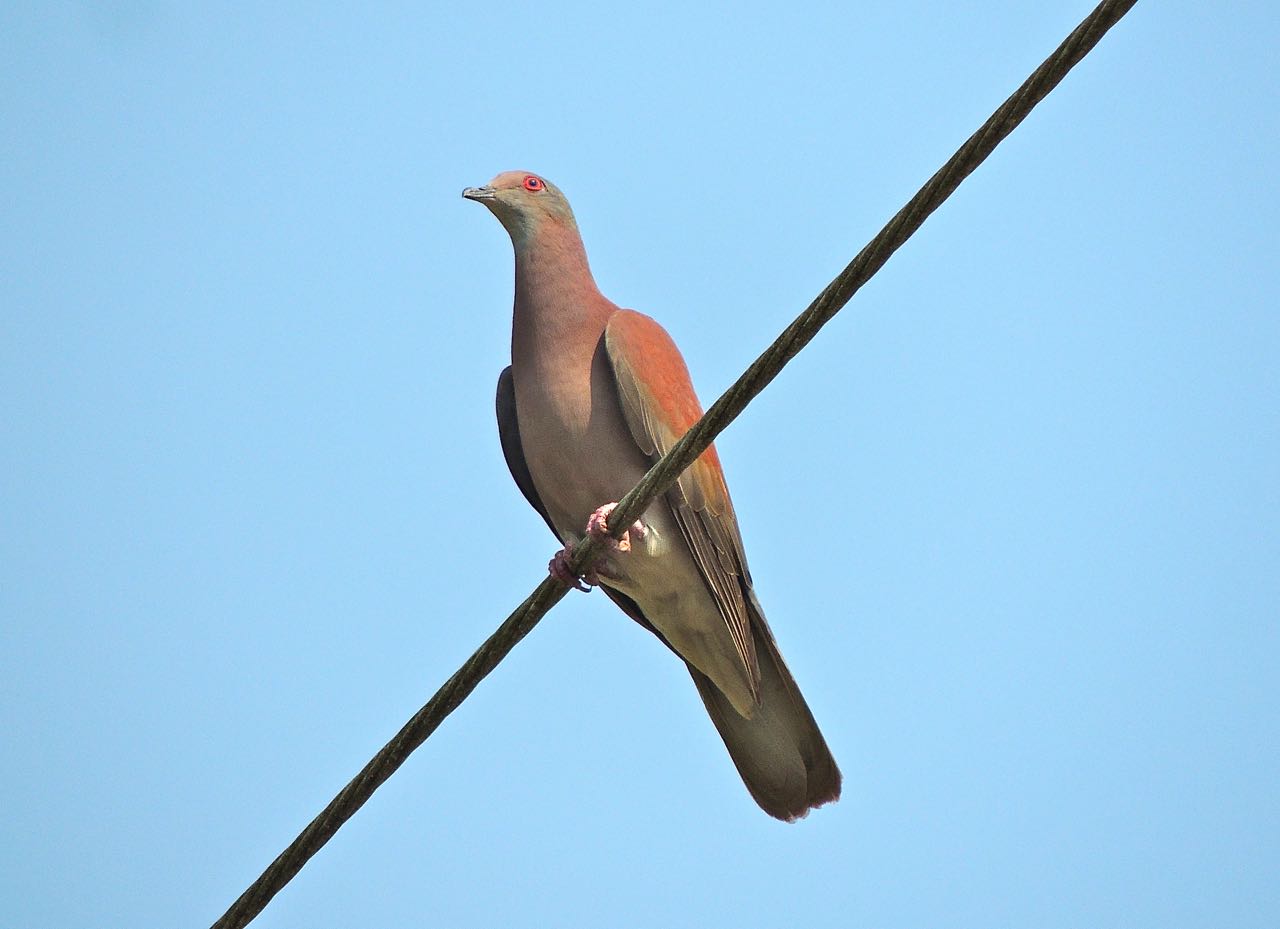 Pale-vented Pigeon - Photo by William Young
Pale-vented Pigeon - Photo by William Young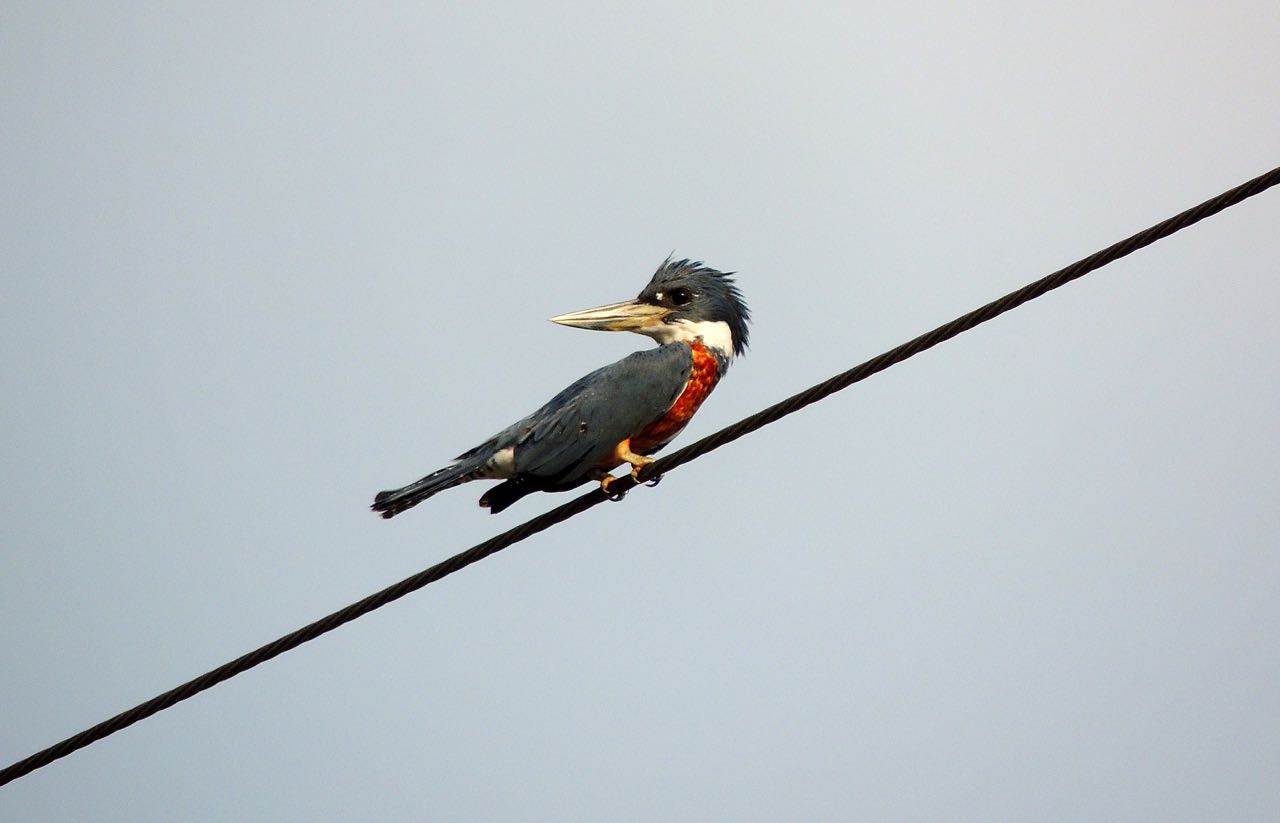 Ringed Kingfisher - Photo by William Young
Ringed Kingfisher - Photo by William Young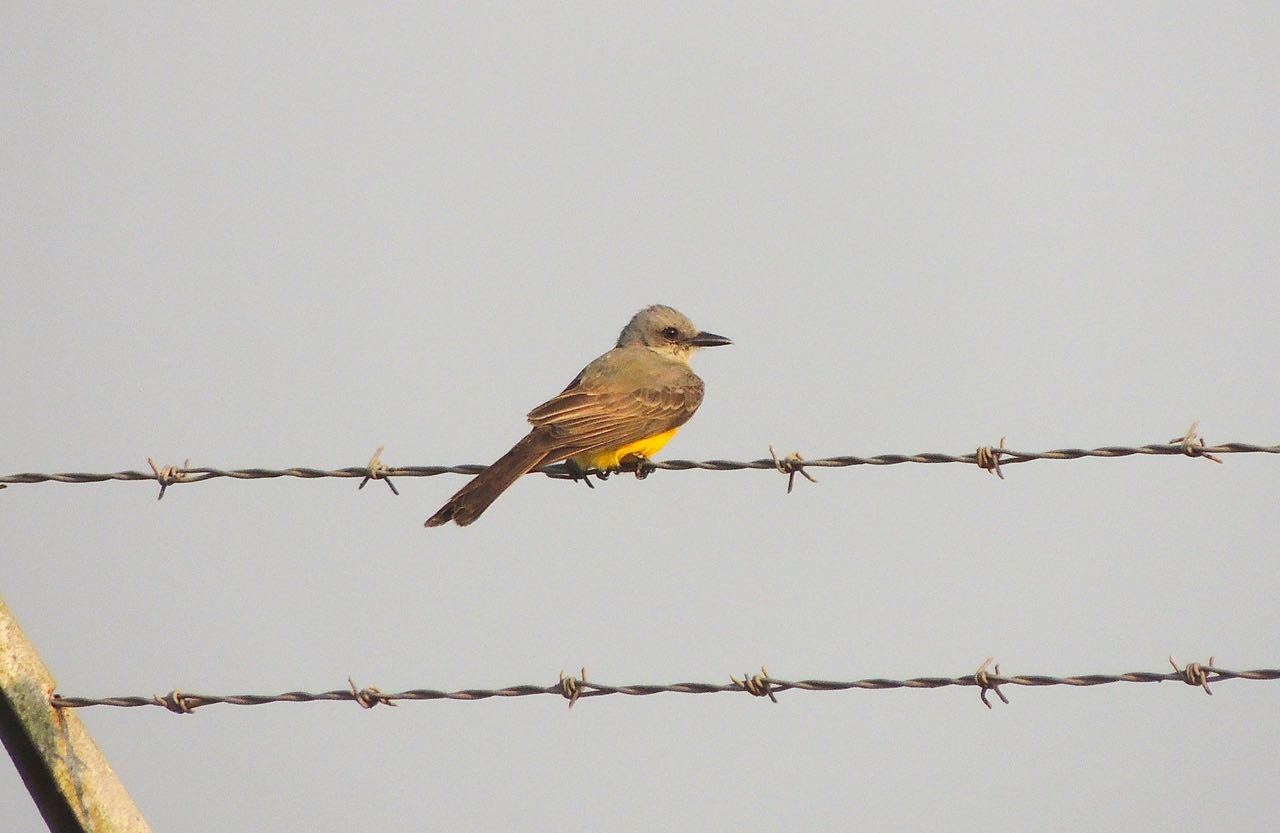 Tropical Kingbird - Photo by William Young
Tropical Kingbird - Photo by William Young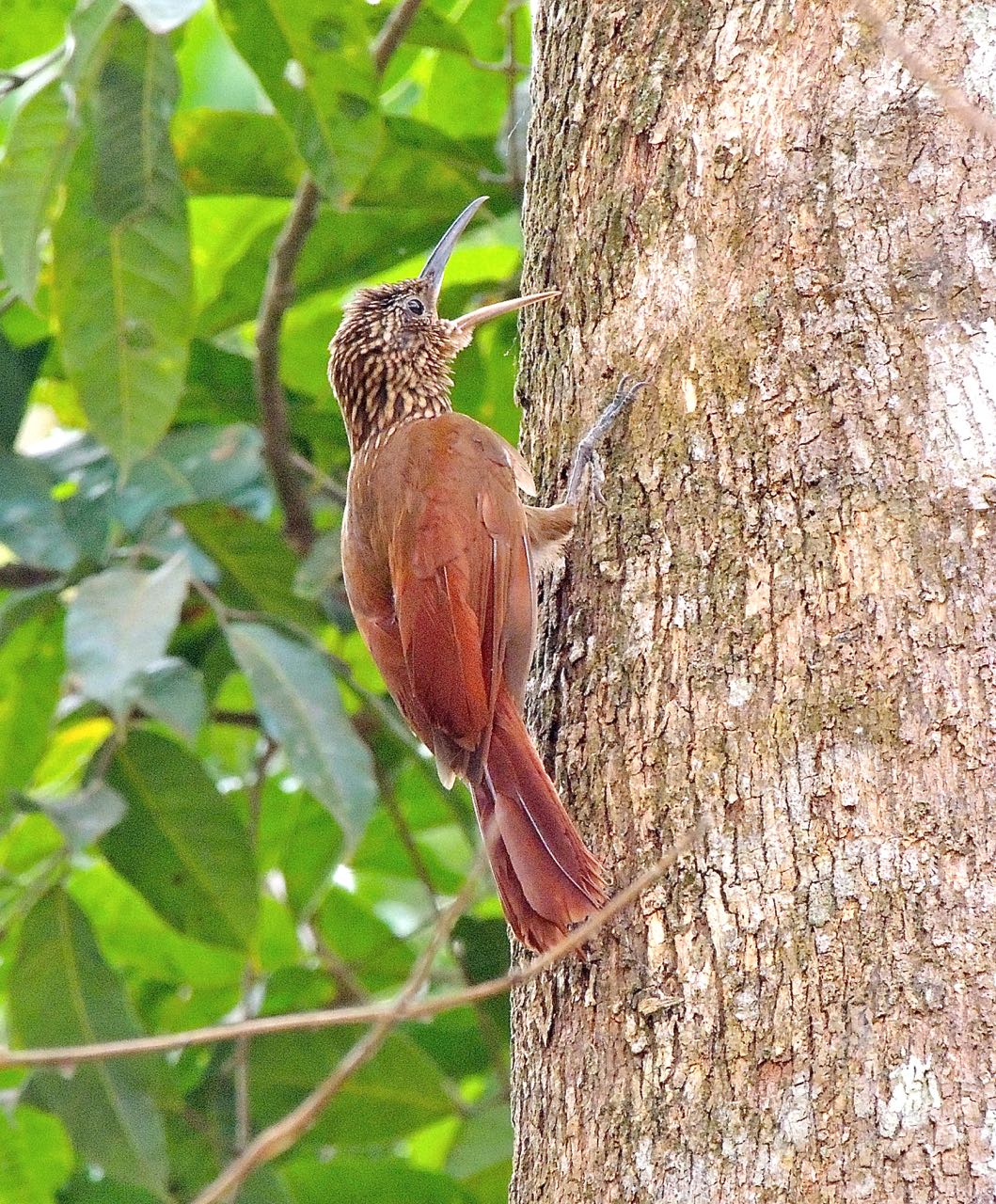 Cocoa Woodcreeper - Photo by William Young
Cocoa Woodcreeper - Photo by William Young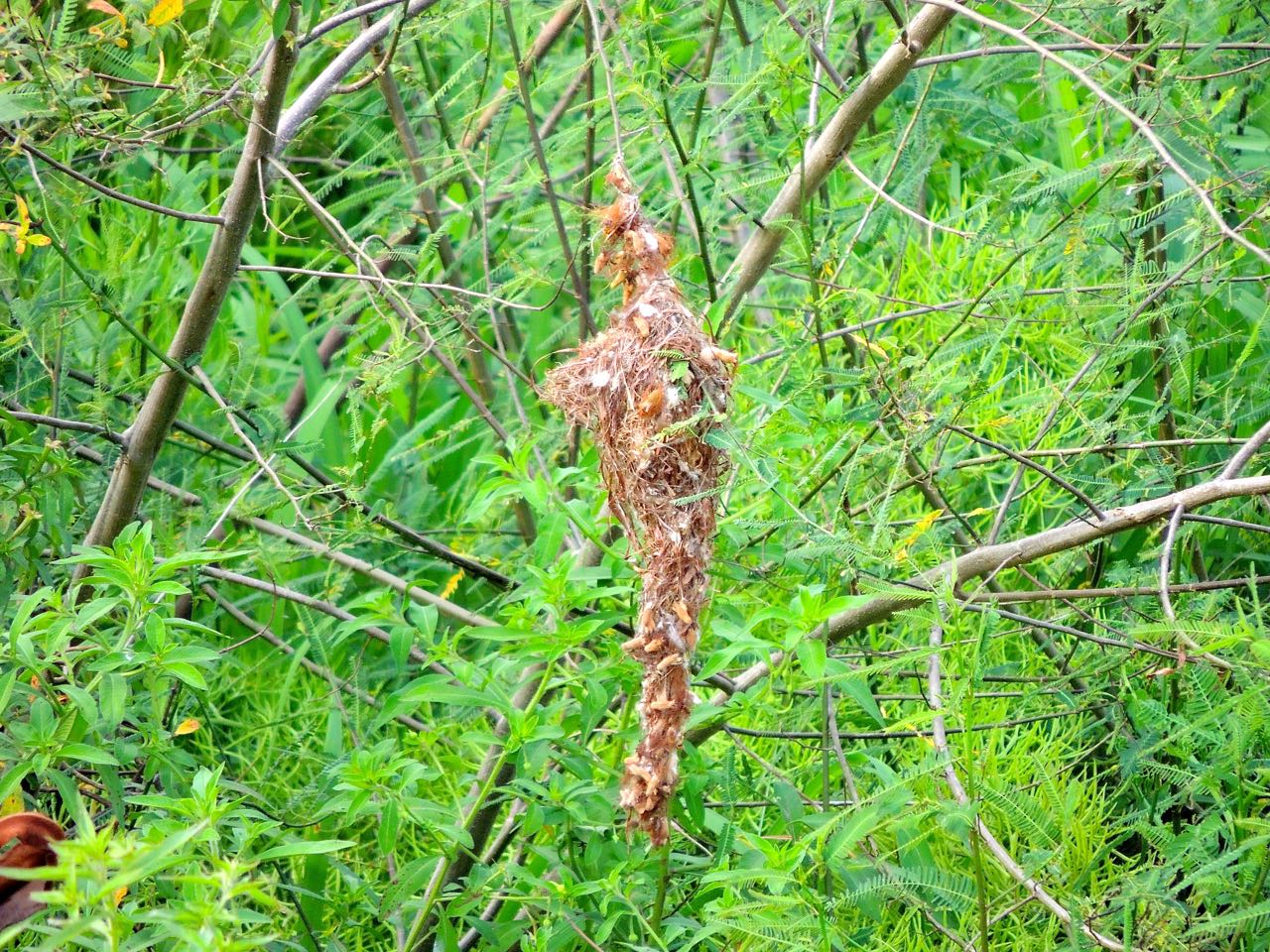 Common Tody-Flycatcher Nest - Photo by William Young
Common Tody-Flycatcher Nest - Photo by William Young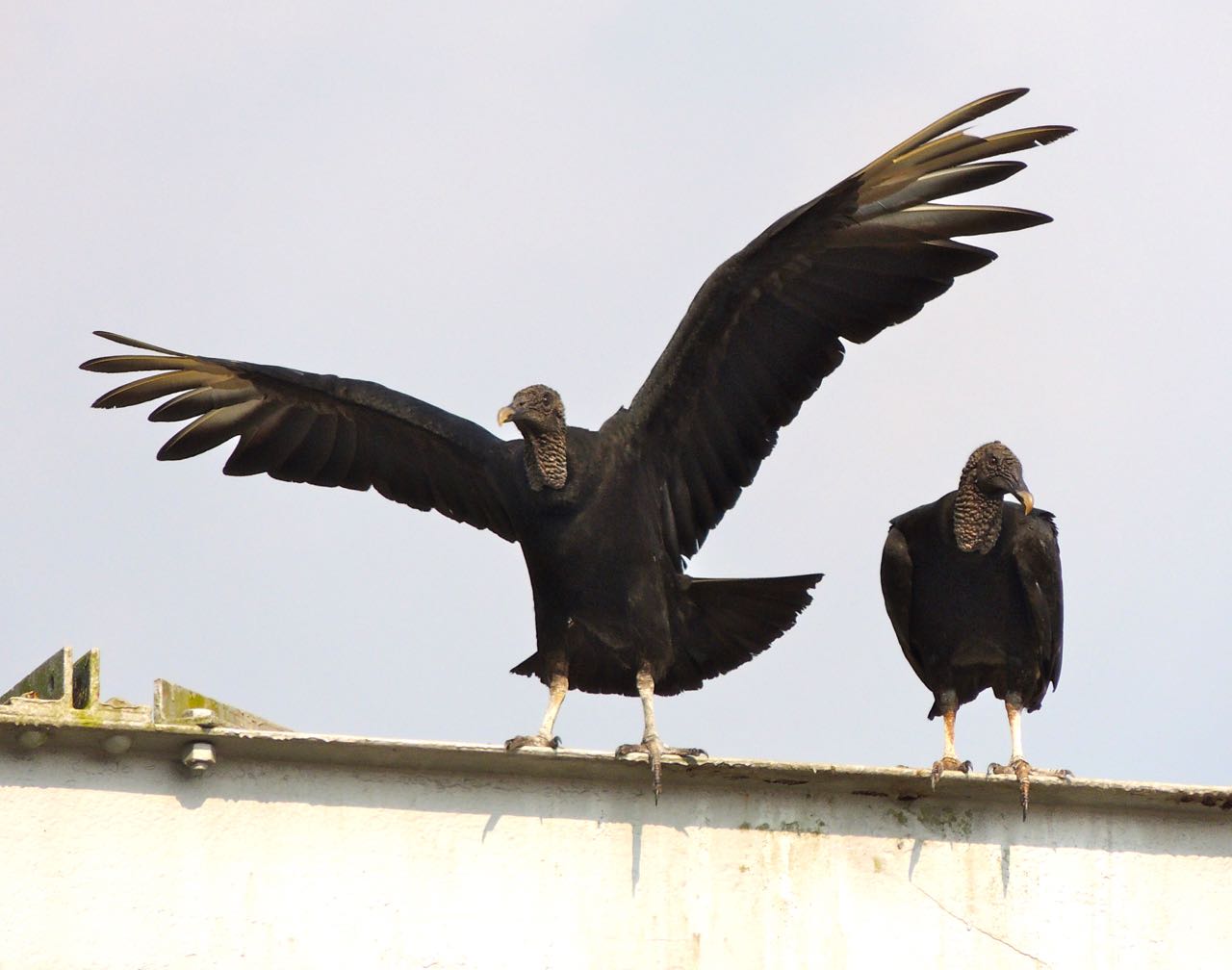 Black Vultures - Photo by William Young
Black Vultures - Photo by William Young
April 4I left Canopy Tower at 5:30 this morning to begin the long drive to the Darien in Eastern Panama. We stopped in an elevated area of rainforest called Nusagandi to look for a Sapayoa. The scientific name is Sapayoa aenigma, with the "aenigma" part referring to the questions about how it should be classified. We hiked down a long steep trail, but did not see the bird. We saw a Dull-mantled Antbird, a Carmiol's Tanager, and White-tailed and Black-throated Trogons. Next to this trail were some Hot Lips plants. Nusagandi is on a road off the Pan American Highway. On our way out, I found a Bay Wren moving in the bushes. On the way back to the Pan American Highway, we found a perched Plumbeous Kite, a perched American Kestrel, and a couple of Geoffroy's Tamarins in the trees.
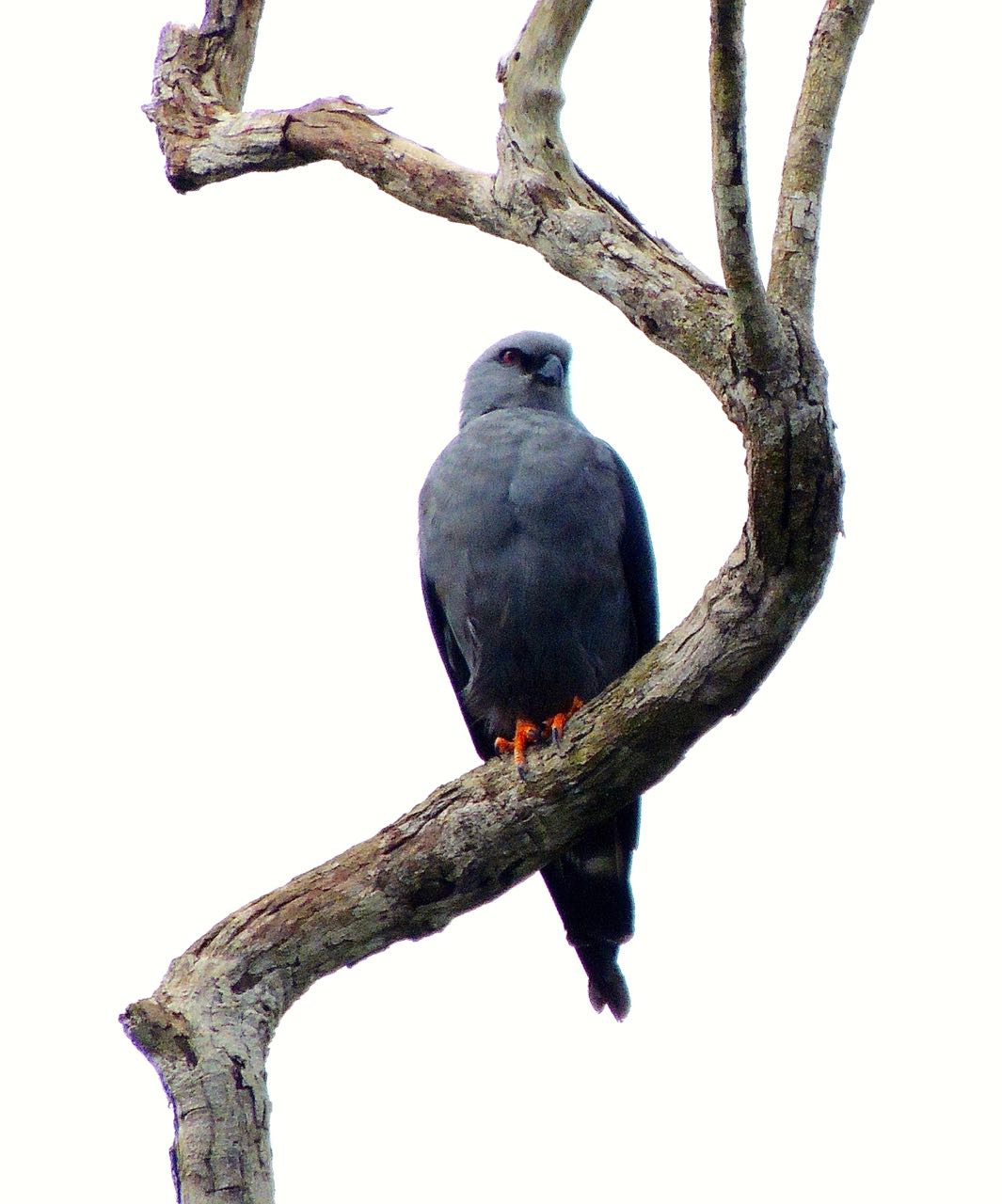 Plumbeous Kite - Photo by William Young
Plumbeous Kite - Photo by William YoungWe stopped for lunch in a town called Torti. The restaurant had hummingbird feeders that attracted numerous species of hummingbirds, including Snowy-bellied, Rufous-tailed, Sapphire-throated, and Scaly-breasted. The Scaly-breasted is a large hummer with a red-and-black lower mandible and white tips to its outer tail feathers. I saw male and female Black-throated Mangos. The female has a black line down her breast. The male is all dark, but if you look at one in good light, you can see a variety of colors. The Sapphire-throated Hummingbird is small.
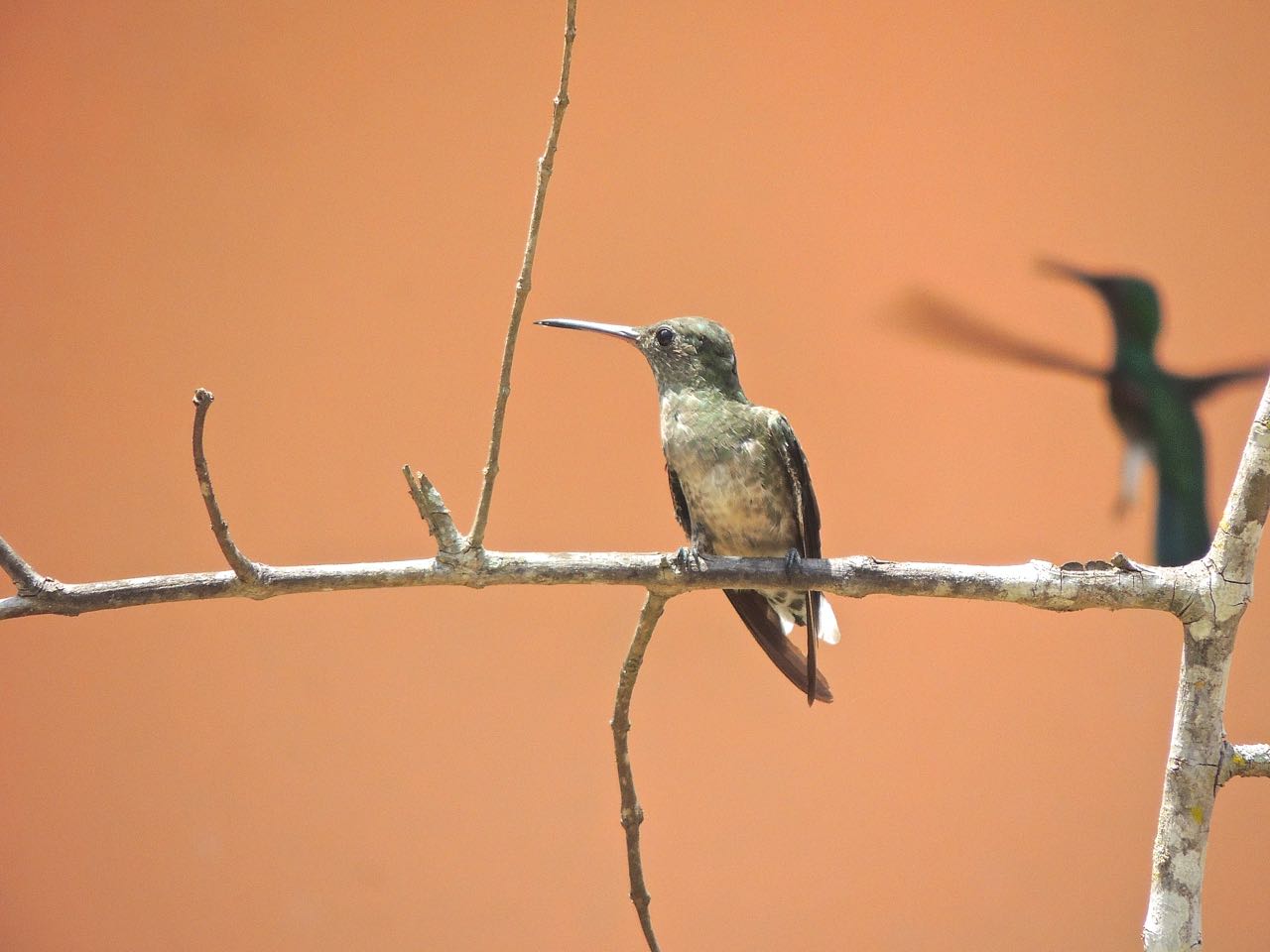 Scaly-breasted Hummingbird - Photo by William Young
Scaly-breasted Hummingbird - Photo by William Young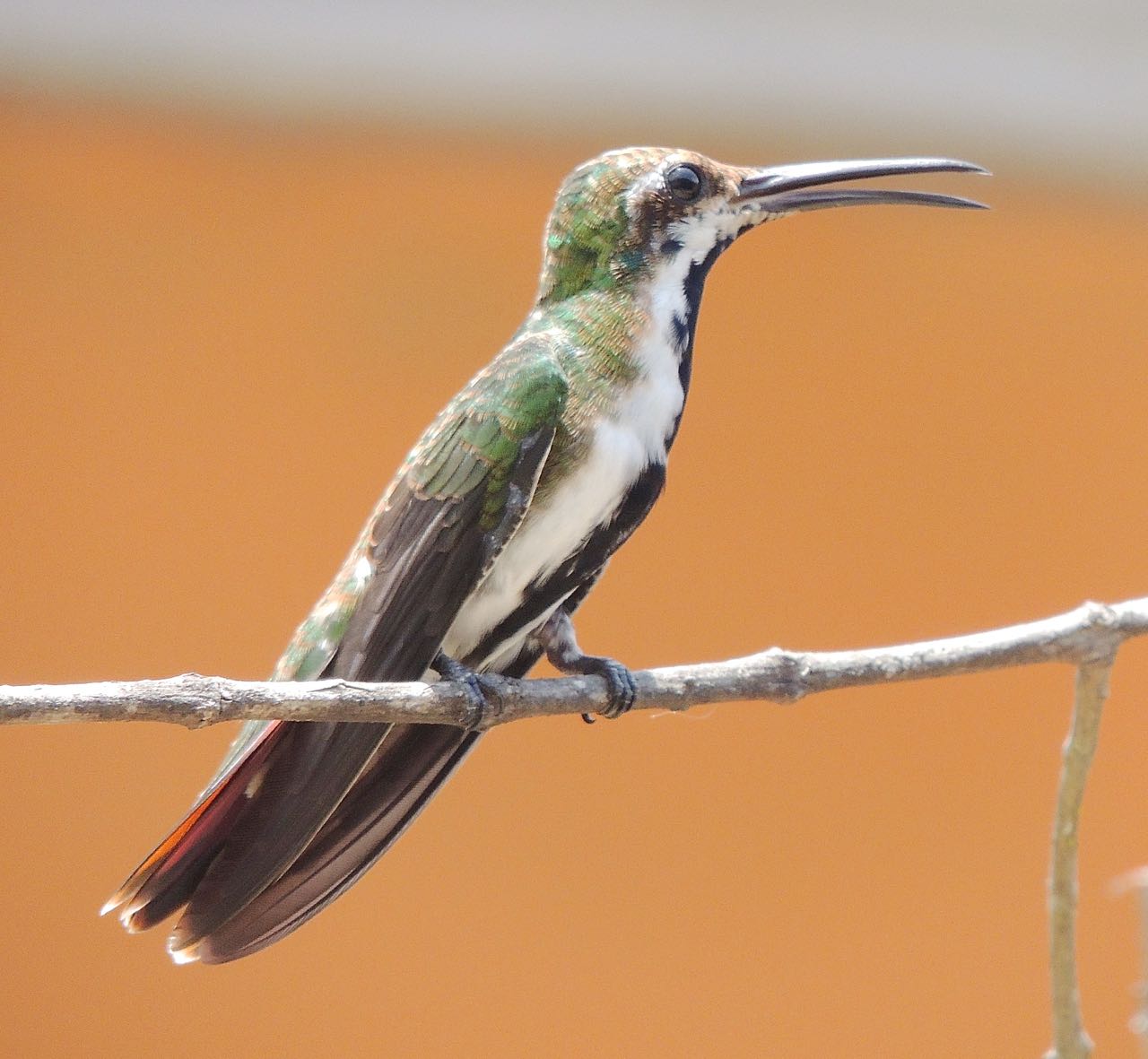 Black-throated Mango Female - Photo by William Young
Black-throated Mango Female - Photo by William YoungWe drove another two hours and made it to the Canopy Camp in the Darien just before 4:00. Shortly before we arrived, I had a quick look at a Red-throated Caracara, who is all black above, with a white belly. A lot of hummingbirds come to the feeders here, including a Pale-bellied Hermit, who is a Darien specialty. I also saw a Long-billed Starthroat. White-vented Plumeleteers are common. Many other species are in the trees and bushes around the outdoor lounge and dining room. In one tree, I watched two male Bay-breasted Warblers in almost full breeding plumage. A Short-tailed Hawk flew over, as did a pair of Chestnut-fronted Macaws. Both an Ochre-bellied Flycatcher and a Cinnamon Becard were in the trees.
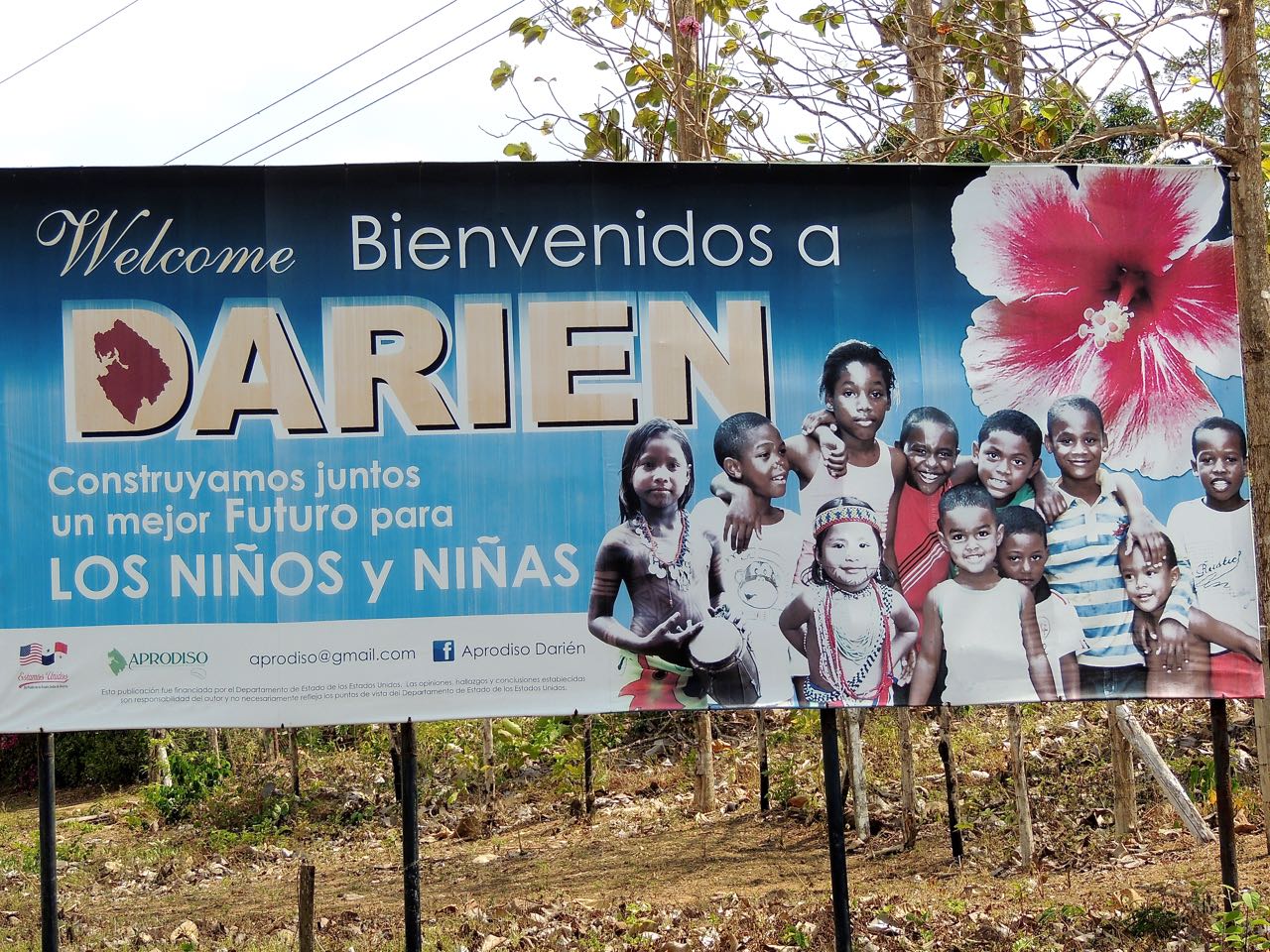 Darien Sign - Photo by William Young
Darien Sign - Photo by William YoungThe sky here is very dark. Tonight is clear, and the sky looks like a planetarium. Just before dinner, we saw a Great Potoo perched in a tree not far from the kitchen. Right before I went to the dining area, a Mottled Owl was calling near my tent.
April 5We watched for birds this morning between the dining area and my tent, which is about 75 yards away. A pair of Laughing Falcons were calling loudly. They landed in a tree near the kitchen. The laugh sound more uneasy than happy. I saw a Blue-black Grassquit male, and he jumped a little, even though there were no other birds around. A Northern Waterthrush was on the lawn, and a Summer Tanager, Yellow Warbler, and Bay-breasted Warbler were in a tree. The Bay-breasted seems to be the most common migrant warbler here. We later saw an Eastern Wood Pewee. A Cinnamon Becard came closer than it did last night. A number of Mealy Parrots flew around. Quite a few Chestnut-headed Oropendola nests had fallen down — I am not sure why. Crimson-crested, Black-cheeked, and Red-crowned Woodpeckers are here. We saw a Black-headed Tody-Flycatcher, who has a black cap and a white throat. We saw a perched Gray-cheeked Nunlet. It is a small rufous bird with a gray cheek and cap and a large bill. A lot of hummingbirds buzzed around, including a Violet-bellied and a Long-billed Starthroat. Two Short-tailed Hawks flew relatively low, and I saw a perched Plumbeous Kite. We visited the area where the solar energy for the camp is produced (called the "solar system"). The campgrounds have a lot of fruit trees, including Soursop, Mango, Avocado, Orange, and Lemon. The oranges and lemons have a rougher skin than the ones in the supermarket.
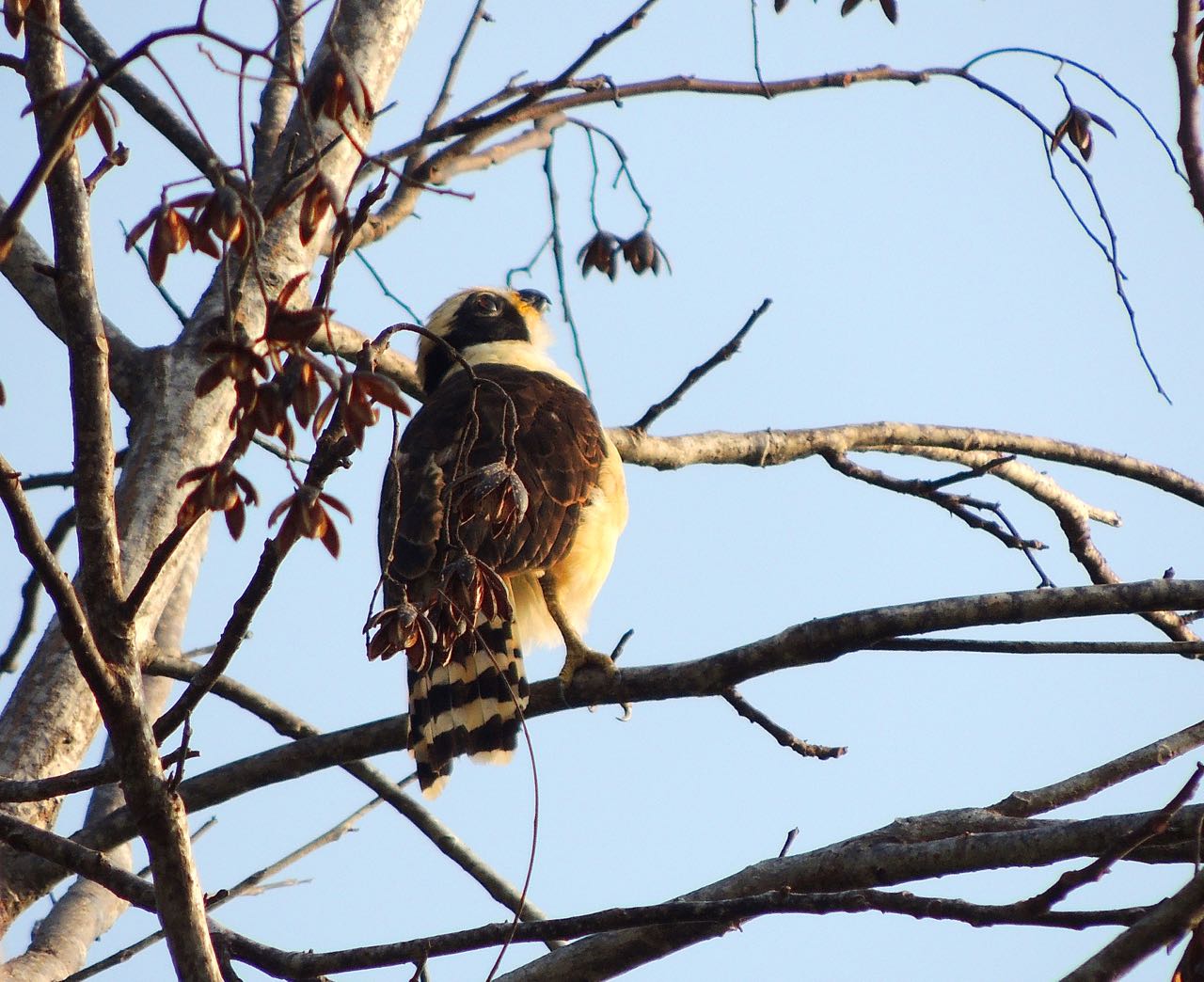 Laughing Falcon - Photo by William Young
Laughing Falcon - Photo by William Young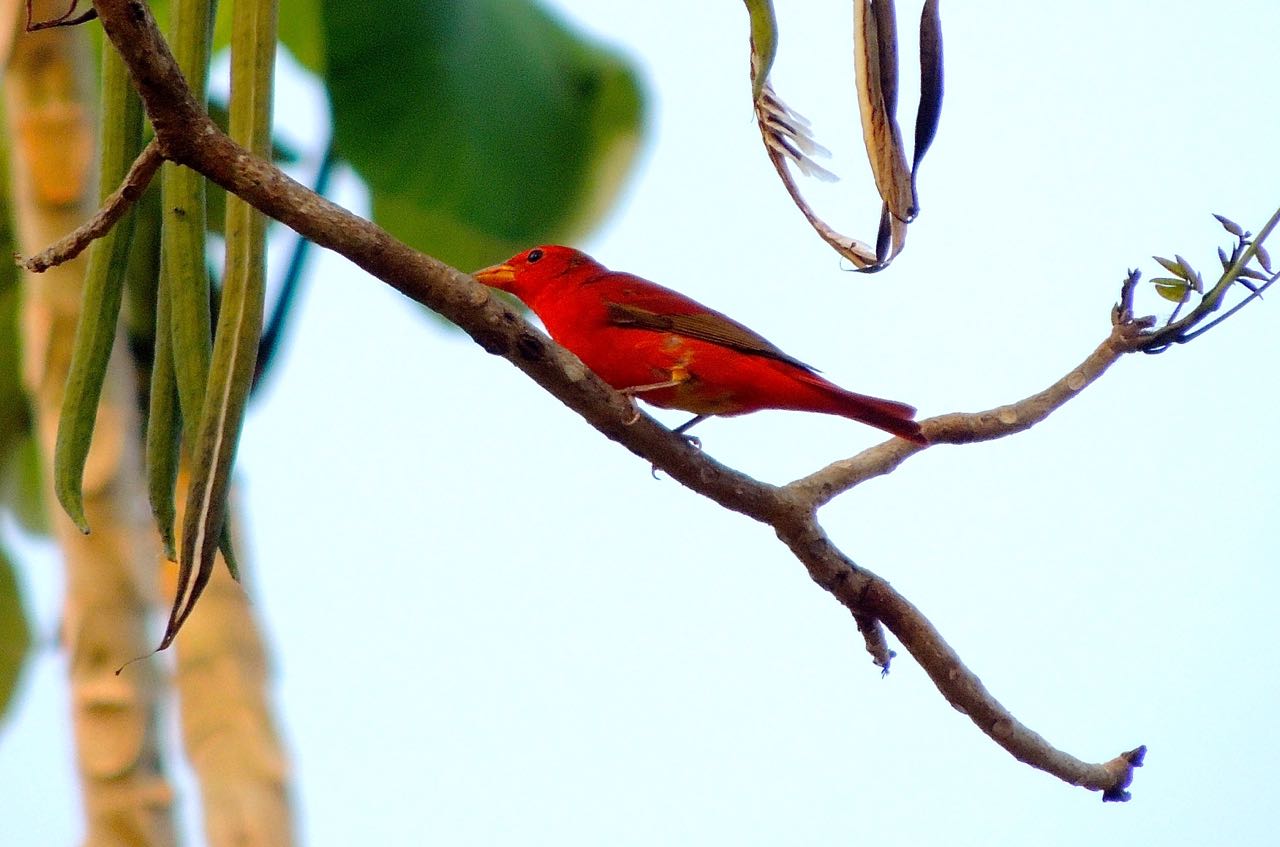 Summer Tanager - Photo by William Young
Summer Tanager - Photo by William Young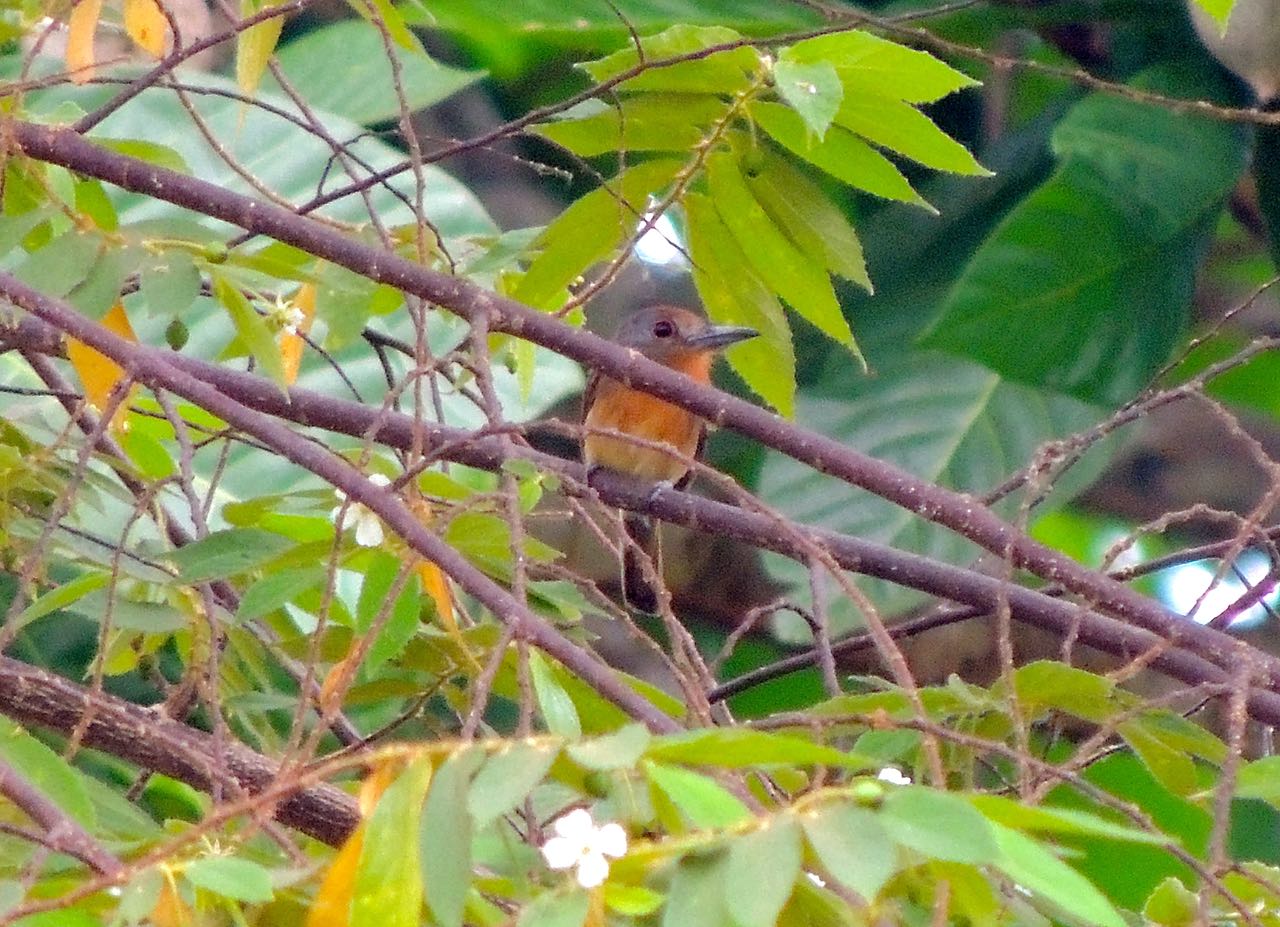 Gray-cheeked Nunlet - Photo by William Young
Gray-cheeked Nunlet - Photo by William Young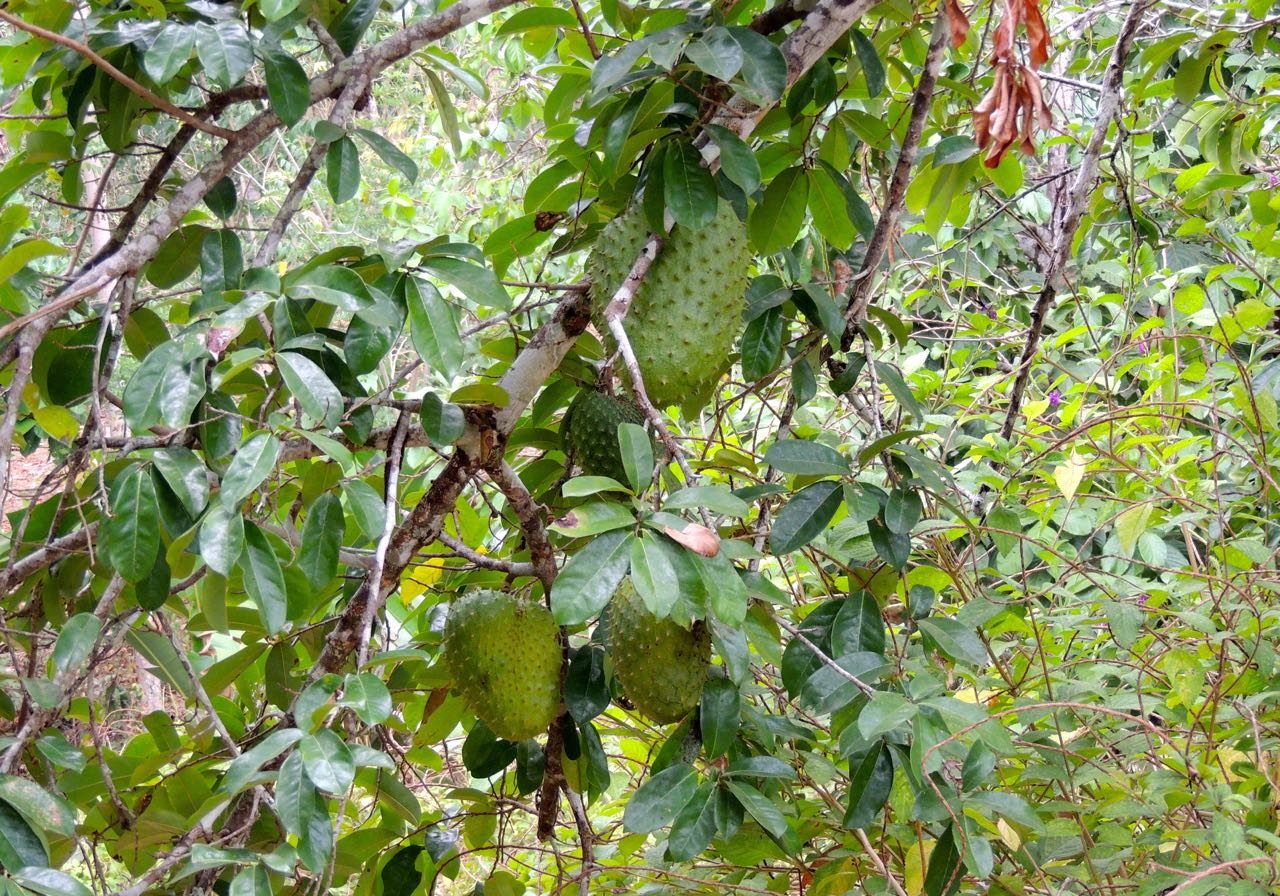 Soursops - Photo by William Young
Soursops - Photo by William Young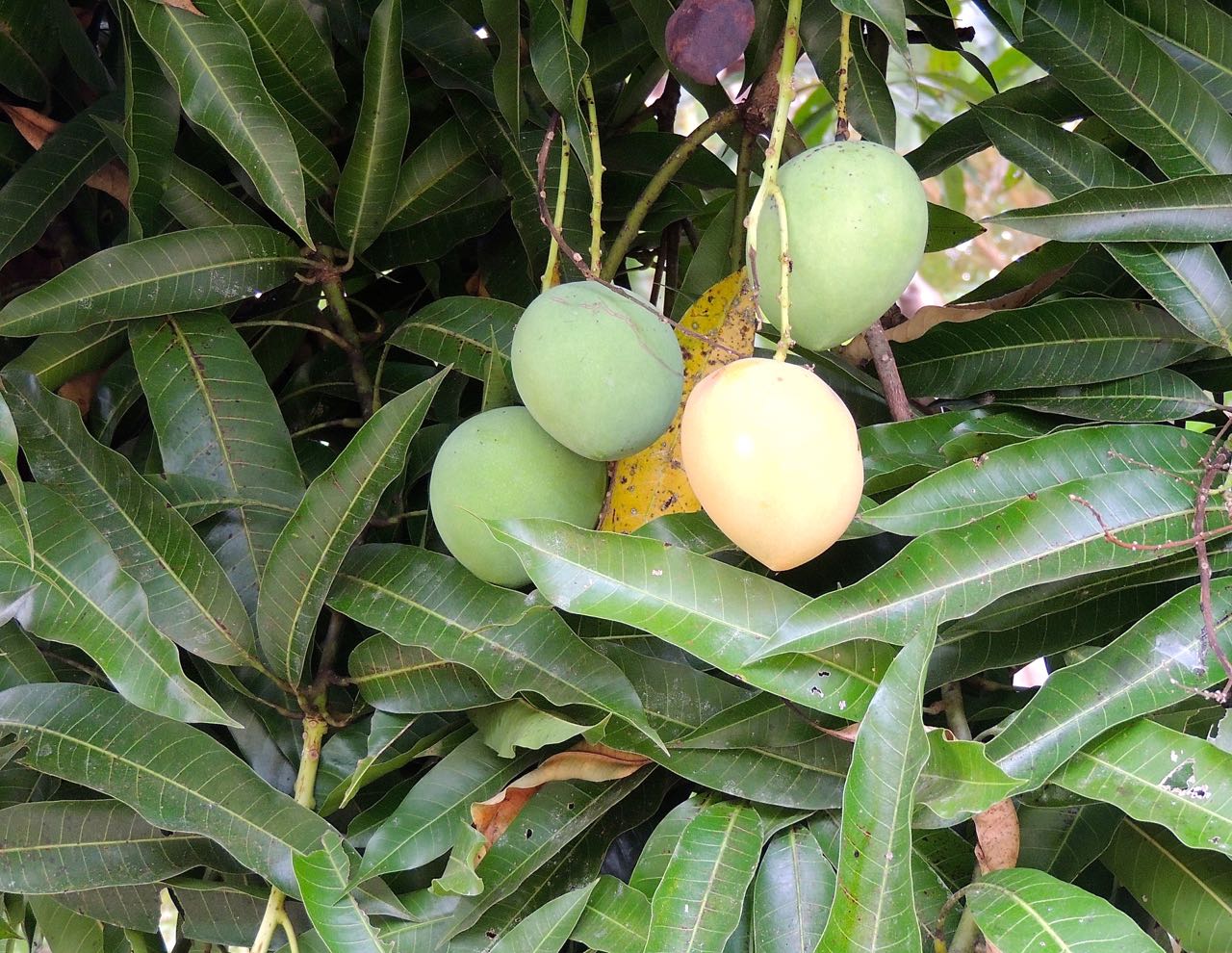 Mangos - Photo by William Young
Mangos - Photo by William Young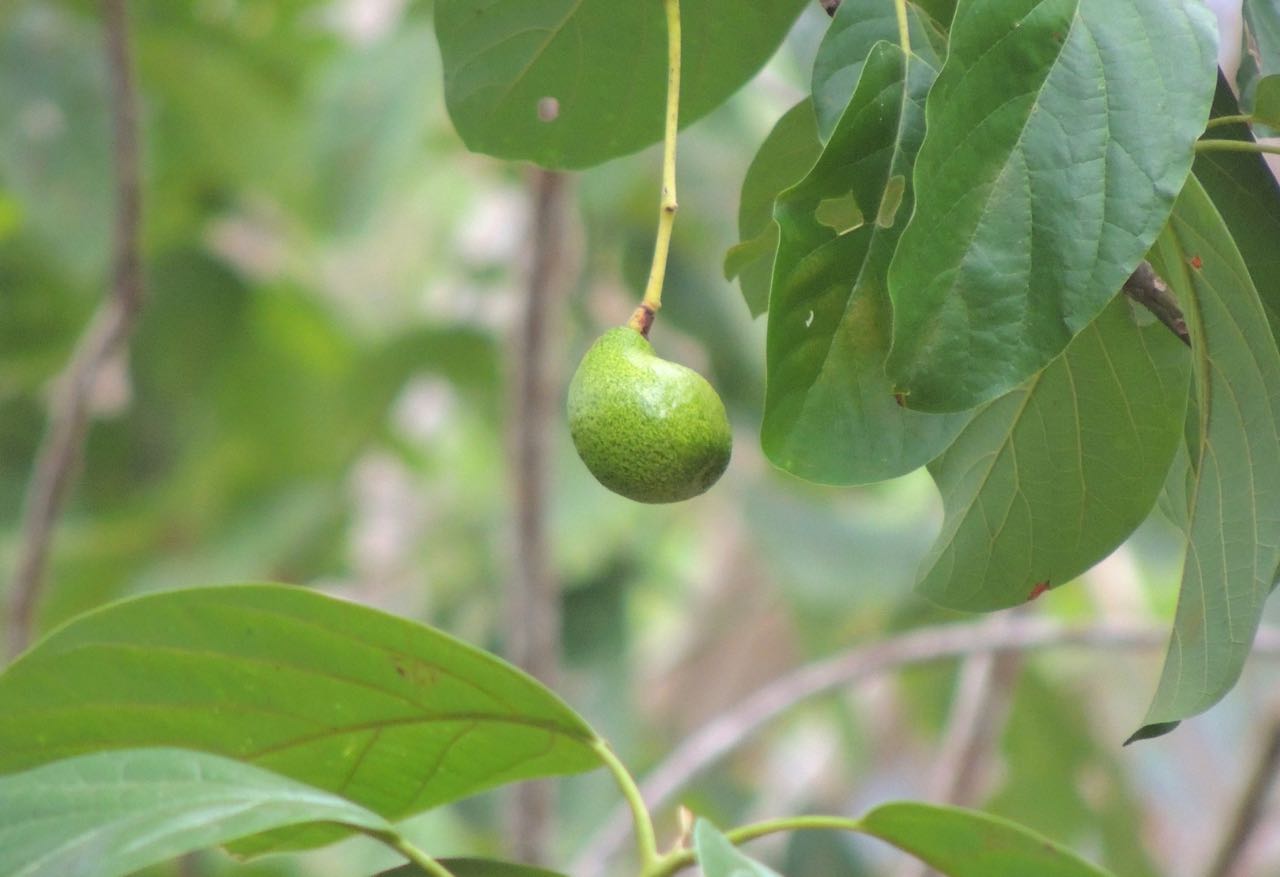 Avocado - Photo by William Young
Avocado - Photo by William Young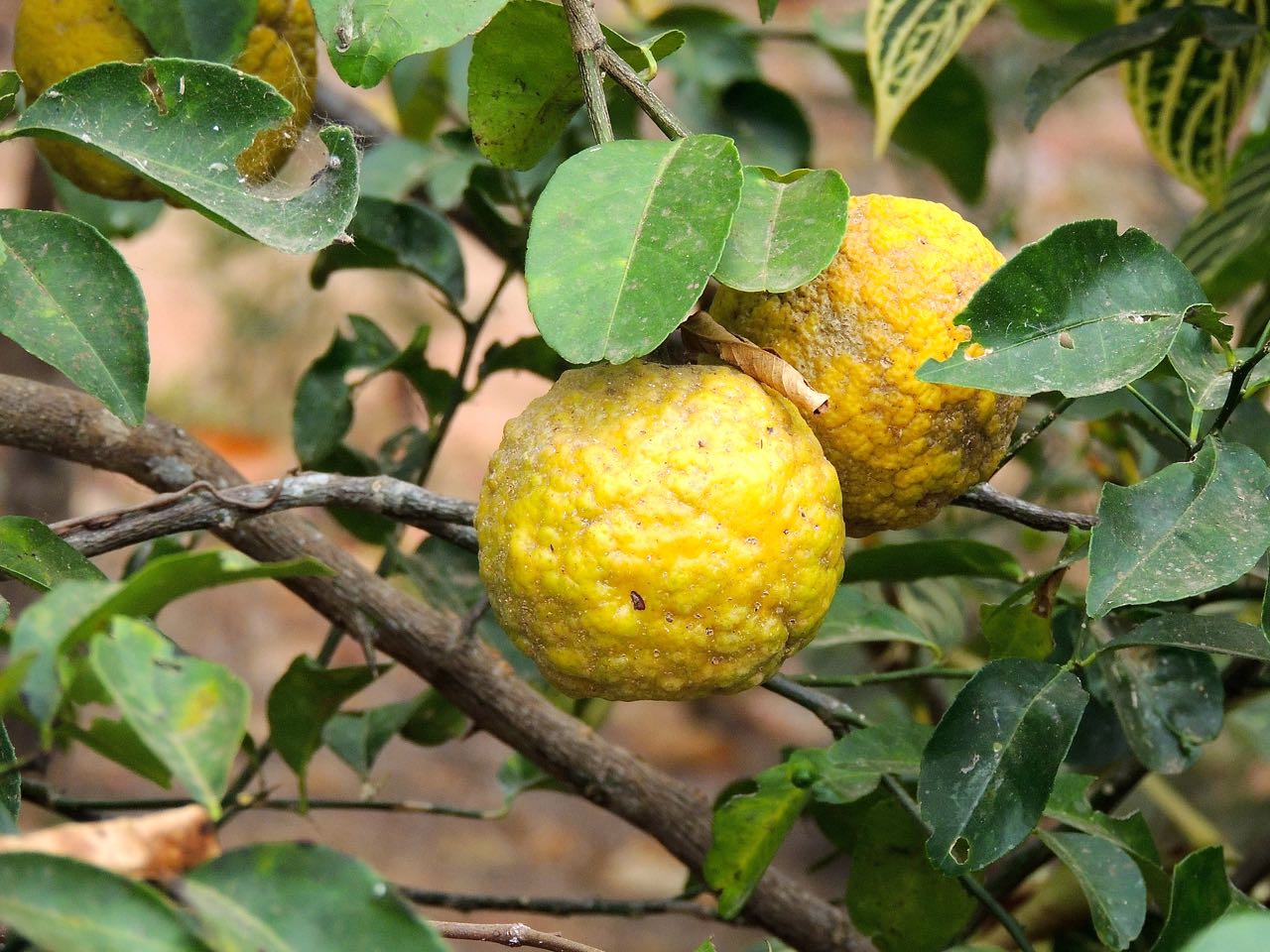 Lemons - Photo by William Young
Lemons - Photo by William YoungWe walked around the Nando Trail, named after our guide Nando. We walked past a Golden-collared Manakin lek and saw some of the manakins. One of the highlights was seeing a Semiplumbeous Hawk. Nando said the last one he had seen here was in December. Its red bill has a dark tip, and it has large yellow eyes. We had a nice look at a Yellow-throated Toucan. The bill is mostly dark, with some yellow on the top. I saw two Geoffroy's Tamarins with their tails hanging down. A pair of White-eared Conebills were eating berries high in the trees. I saw some white on their head. We saw a Black-tailed Flycatcher, who has a yellow rump patch and behaves like the fantails in Australia.
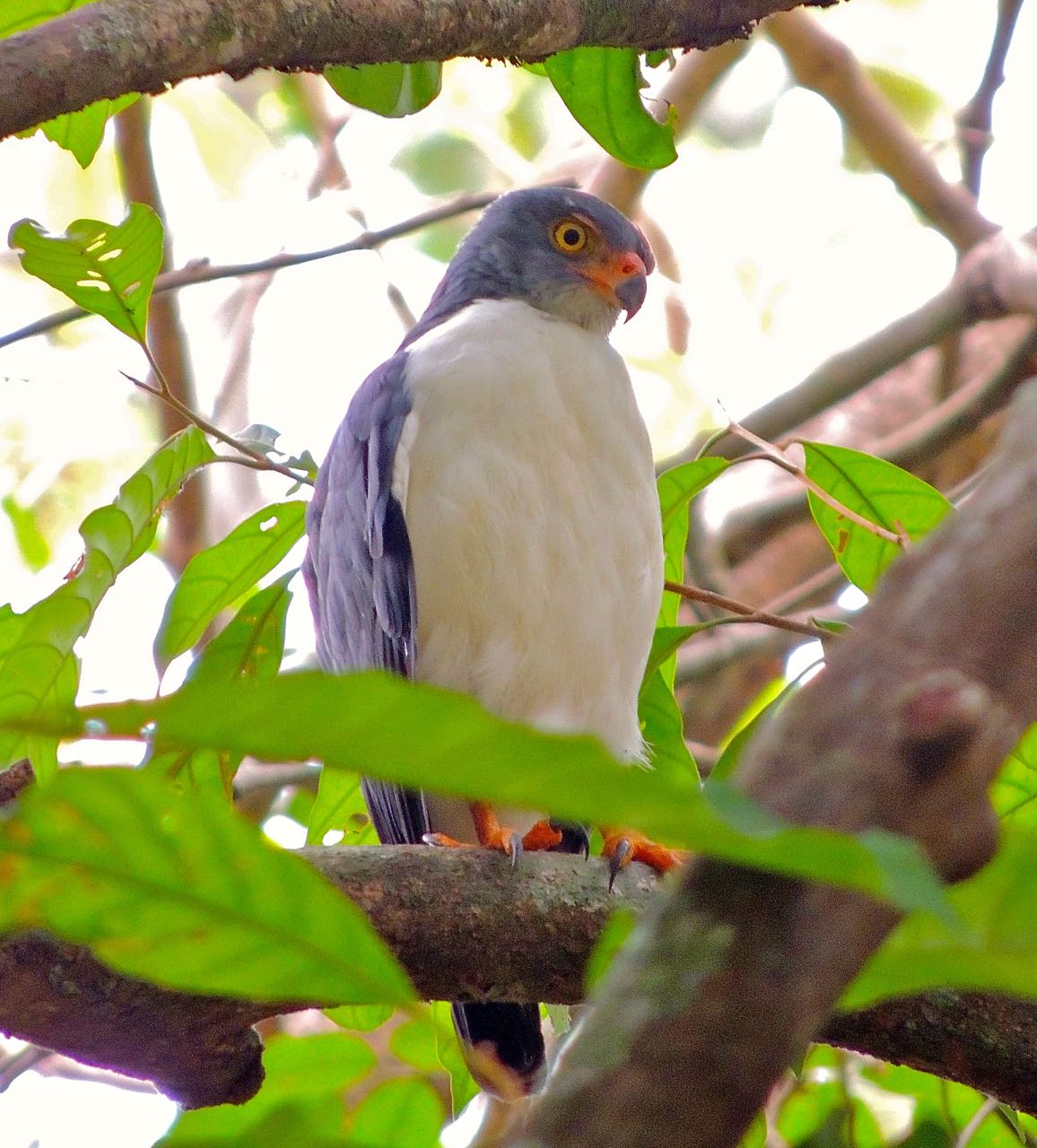 Semiplumbeous Hawk - Photo by William Young
Semiplumbeous Hawk - Photo by William Young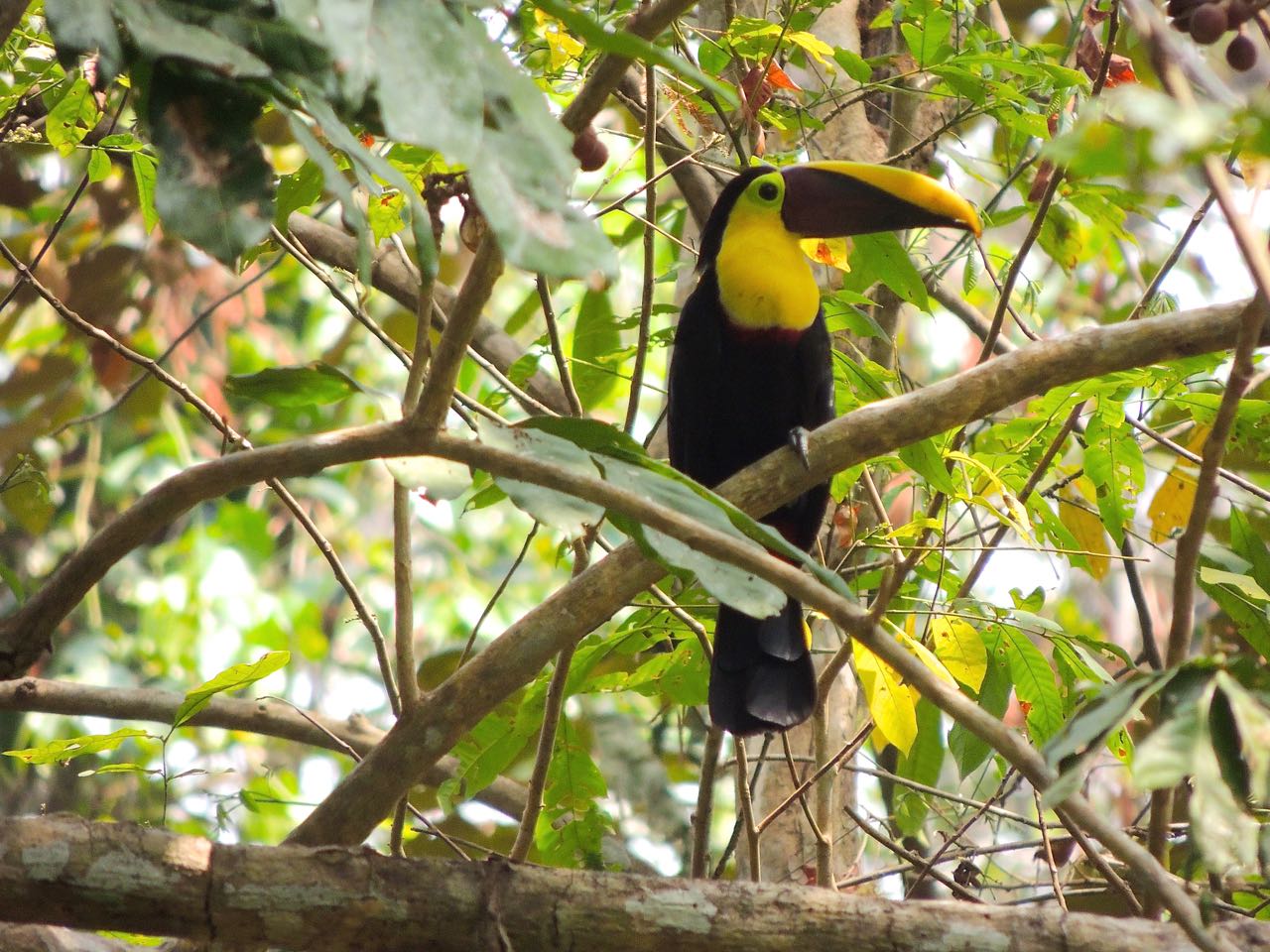 Yellow-throated Toucan - Photo by William Young
Yellow-throated Toucan - Photo by William Young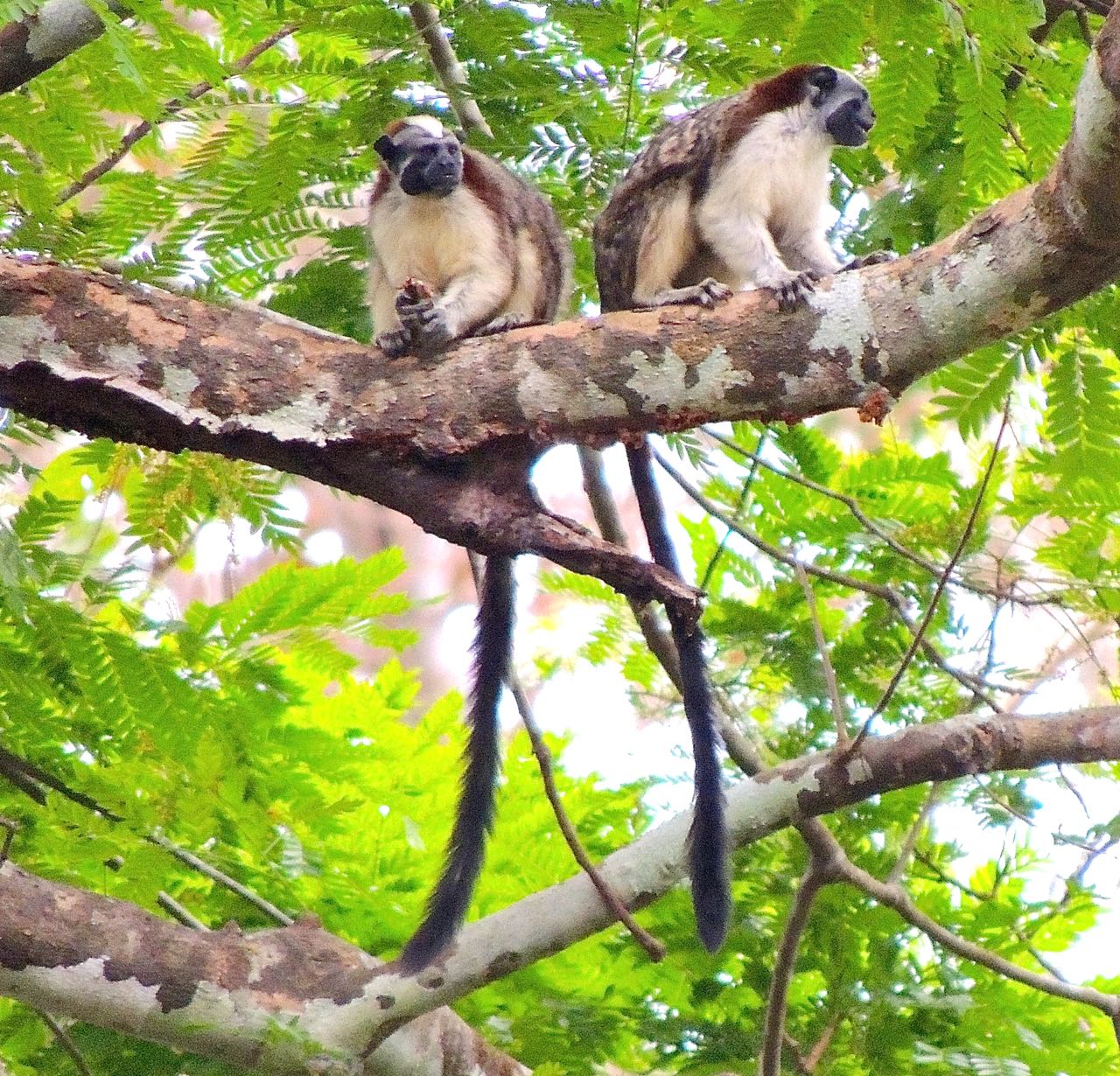 Geoffroy's Tamarins - Photo by William Young
Geoffroy's Tamarins - Photo by William YoungThis afternoon, we drove to where the Pan American Highway stops in Yaviza. We were 12,850 kilometers (about 8,000 miles) from the northern endpoint of the highway in Alaska and about 30 miles from the Colombian border. Before we got out of the Canopy Camp area, we stopped to see a roosting Common Potoo. It was perched on a stick about ten feet off the ground. We spotted a flying Zone-tailed Hawk, who has a dihedral. We later saw a Lesser Yellow-headed Vulture. Along the highway, we stopped at an agricultural area and saw a Pied Water-Tyrant, a lovely black-and-white bird hopping in the mud. In the same area was a Wood Stork, a few Great Egrets, and a Little Blue Heron. We saw two Spot-breasted Woodpeckers — a male and female who were bill-to-bill. We saw a group of Red-breasted Meadowlarks, who used to be called Red-breasted Blackbirds. They reminded me of the gonoleks in Africa. Mixed in the group was a female Yellow-hooded Blackbird. Some Smooth-billed Anis perched behind them, and what appeared to be young Fork-tailed Flycatchers were in the area. We stopped near a small water hole and saw two swimming Spectacled Caimans. A lot of streams and waterholes have little or no water because of the drought. Some Swallow-tailed Kites flew over relatively low, and we saw a couple of perched Roadside Hawks. At one point late in the afternoon, we saw a huge kettle of about a thousand Mississippi Kites. I saw other large groups of birds migrating, including Turkey Vultures and Barn Swallows. We waited by some plantain trees for Black Oropendolas to show up, but they did not come. We saw a White-necked Puffbird and about 40 Greater Anis in one of the places we looked for the oropendolas. On the way back, we saw a Common Pauraque in the road leading to the camp.
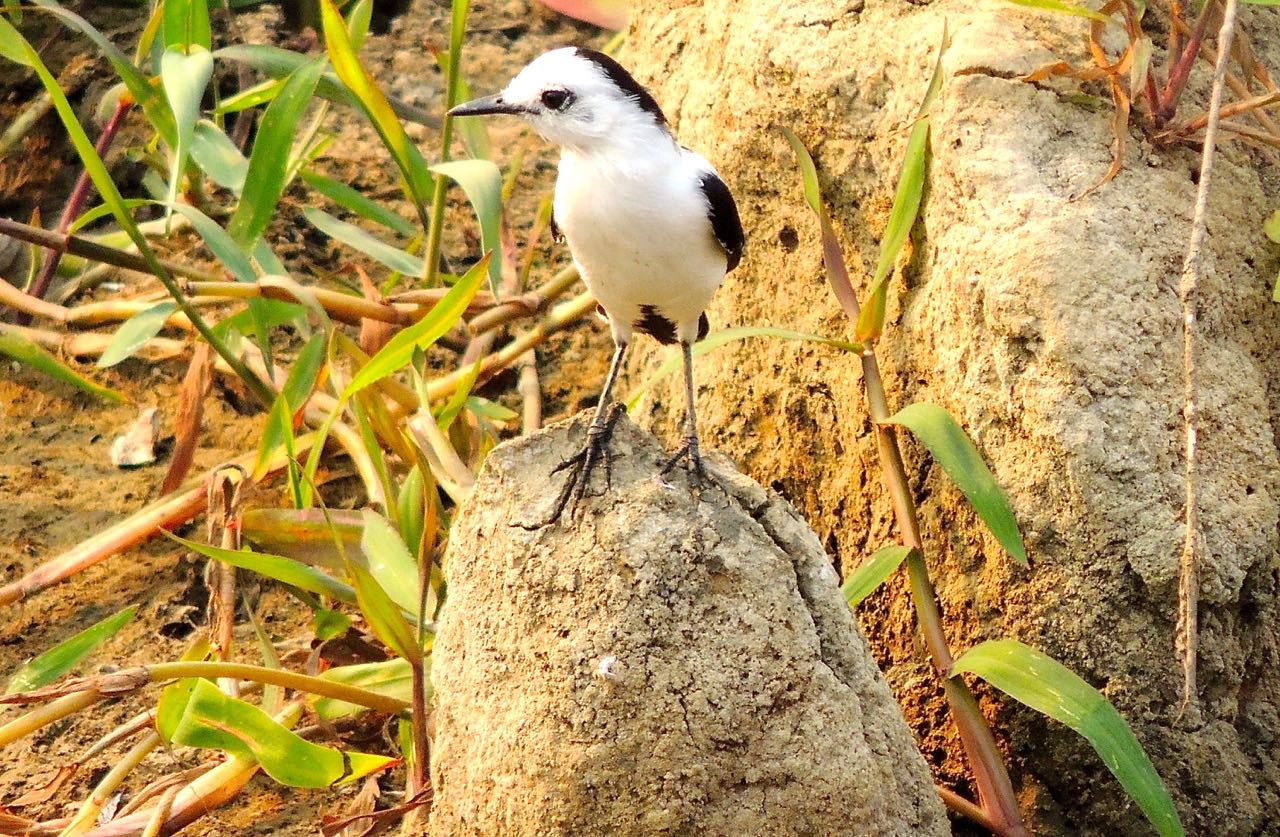 Pied Water-Tyrant - Photo by William Young
Pied Water-Tyrant - Photo by William Young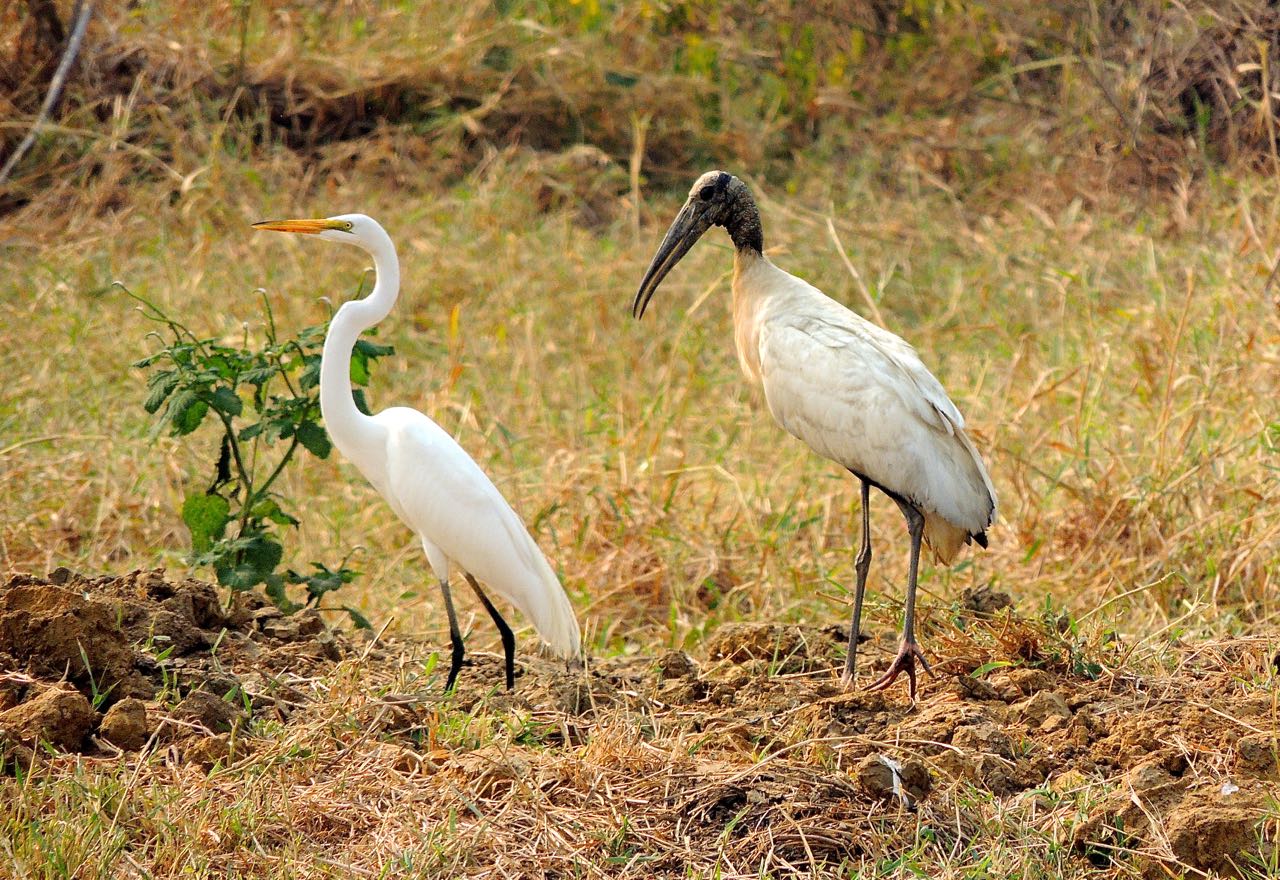 Great Egret and Wood Stork - Photo by William Young
Great Egret and Wood Stork - Photo by William Young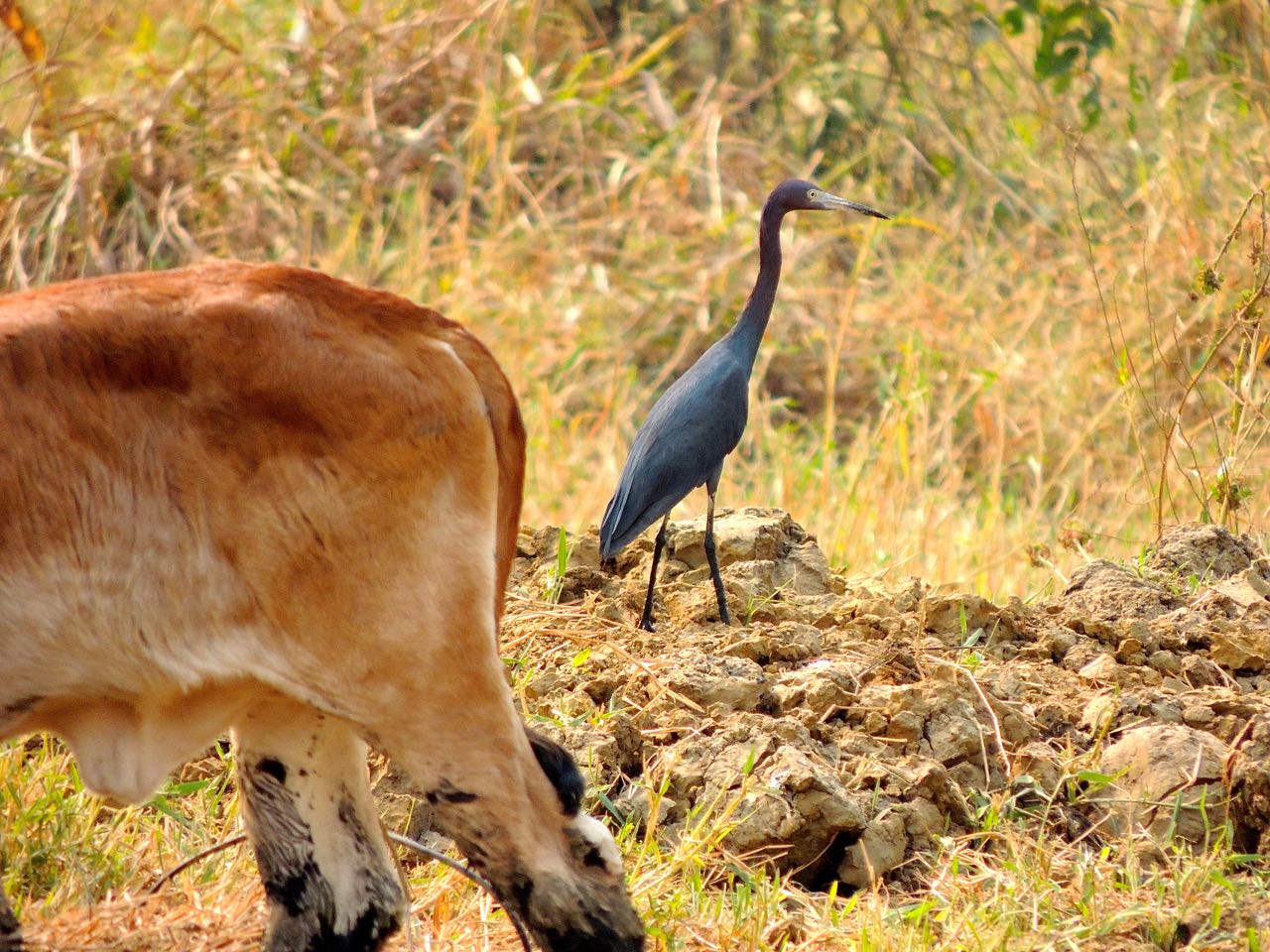 Little Blue Heron - Photo by William Young
Little Blue Heron - Photo by William Young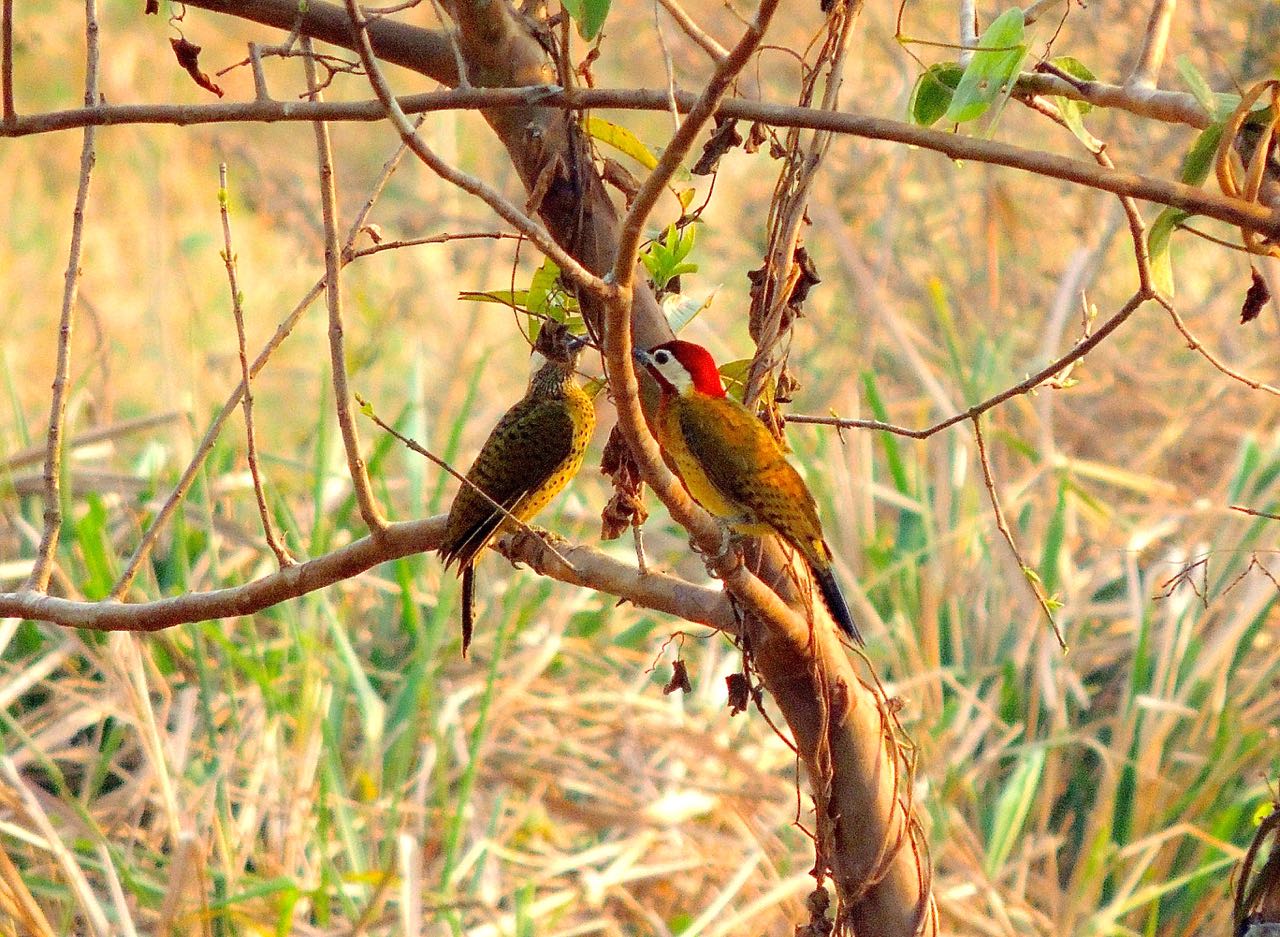 Spot-breasted Woodpeckers - Photo by William Young
Spot-breasted Woodpeckers - Photo by William Young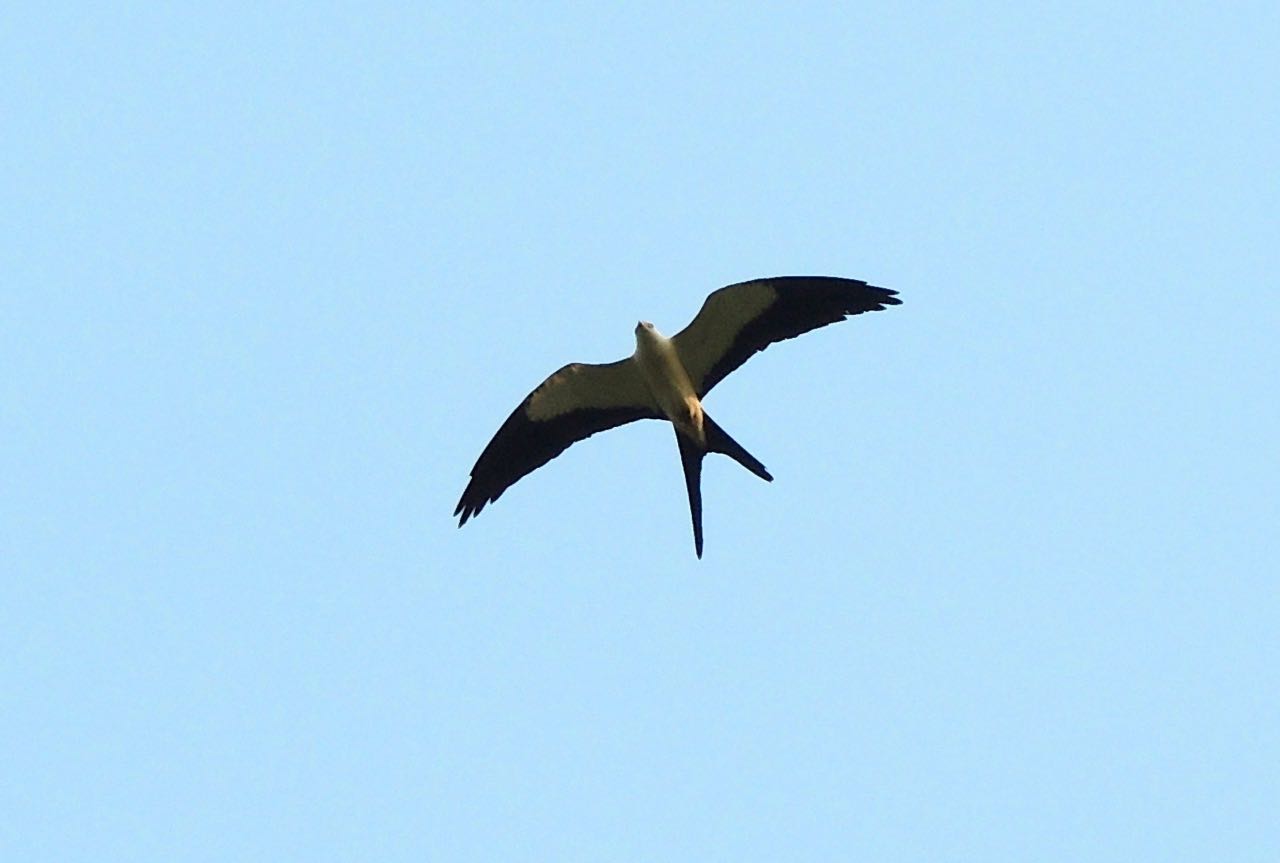 Swallow-tailed Kite - Photo by William Young
Swallow-tailed Kite - Photo by William Young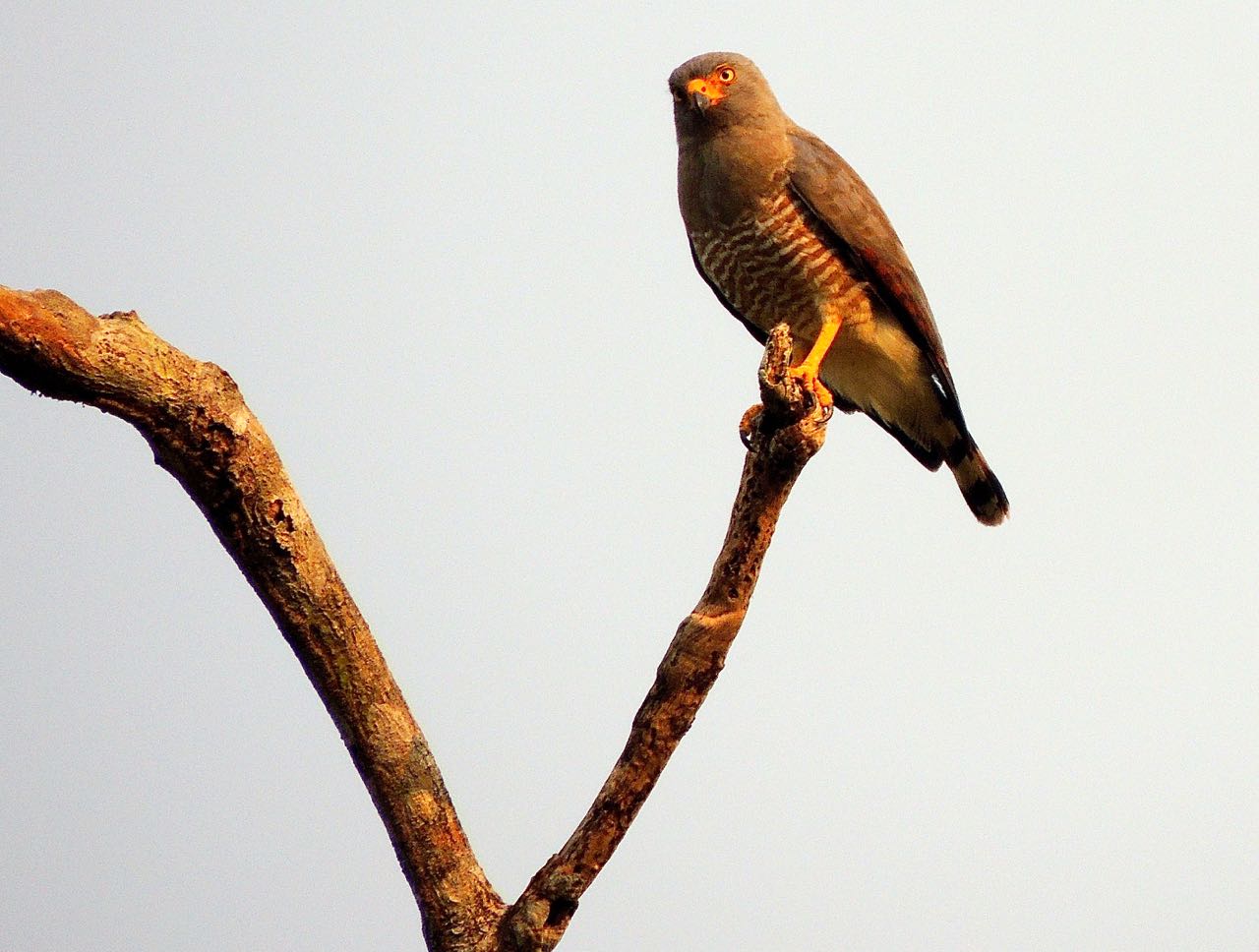 Roadside Hawk - Photo by William Young
Roadside Hawk - Photo by William Young
April 6This morning, I heard a lot of movement in the woods next to my tent. A group of White-faced Capuchins was moving through the trees. I could hear both Great and Little Tinamous calling, and I also heard a Bright-rumped Attila. A House Wren flew out from one of the steps near the dining area — I don't know if it had a nest under there. After breakfast, we went to the Reserva H. Filo Del Tallo. The area has a great number of birds. We saw a perched Pearl Kite, and I saw white and a trace of yellow on the face. We later saw a Gray-lined Hawk, who was split from the Gray Hawk — Costa Rica is the dividing line for the two species. Quite a few Mealy Parrots squawked loudly while feeding in the trees. Two breeding male Bay-breasted Warblers worked the bushes in the parking area. I saw a Blackpoll Warbler in a tree above the bushes. This species is not currently on the list for the Canopy Camp and was a life bird for Nando. An Olive-sided Flycatcher perched in the same tree. We saw a young One-colored Becard, who appeared to have rufous on the wings and is not one-colored. A Red-rumped Woodpecker fed in the trees. It has an olive back and a red cap, but I could not see the red rump. We later saw a female Golden-green Woodpecker. The female has a golden crest that is quite attractive. When we returned to camp, I saw a Green Vine Snake in one of the other tents; it is small and thin.
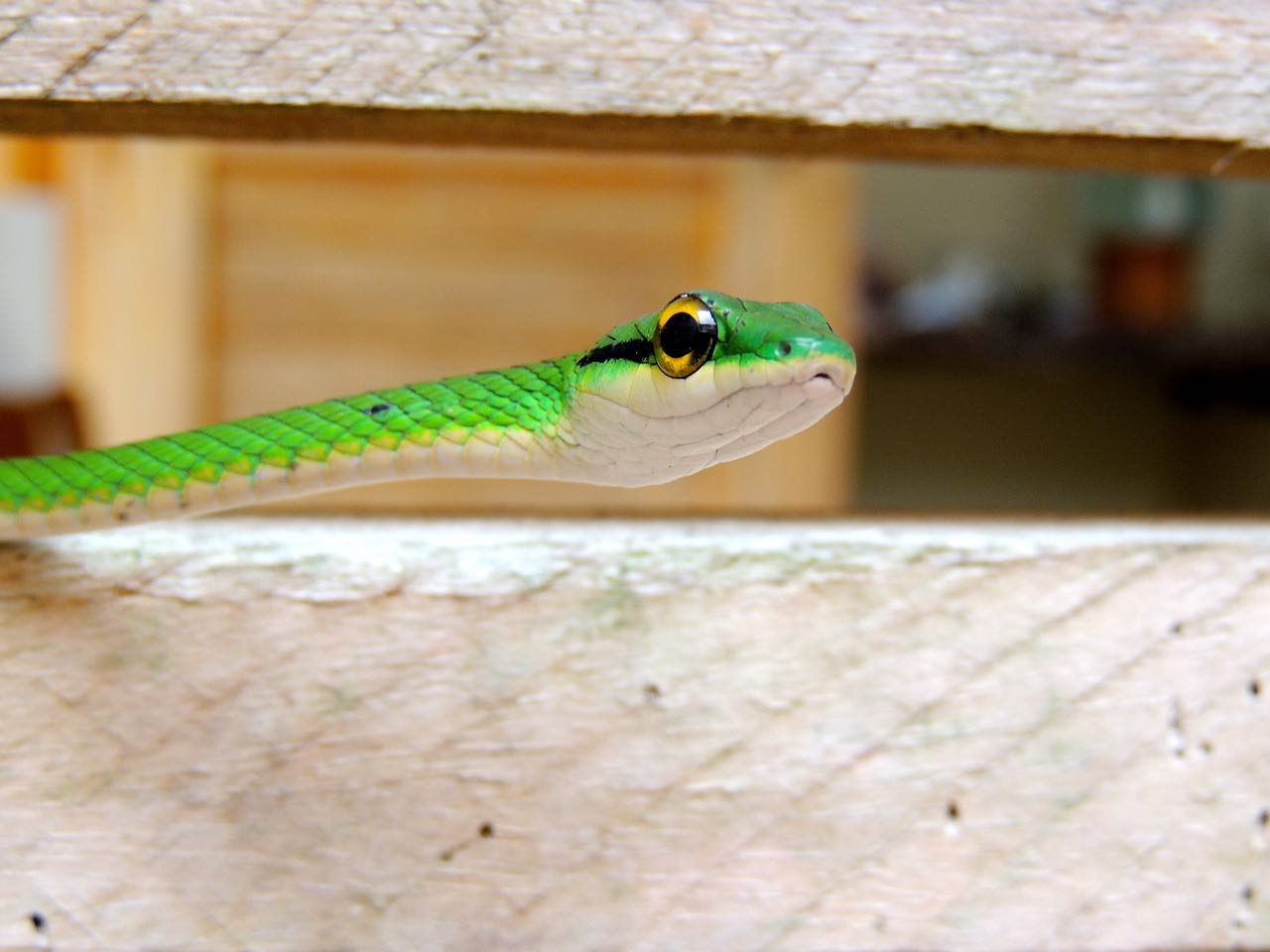 Green Vine Snake - Photo by William Young
Green Vine Snake - Photo by William YoungInside the forest, I saw a Royal Flycatcher, a large brown flycatcher with a golden tail and a hammerhead appearance. We later saw one building a nest. One of my favorite bird names is the Scaly-throated Leaftosser. It is in the ovenbird family, but is not related to the warbler called the Ovenbird. It is a small brown bird with a scaly throat, and it spends most of its time on the forest floor, tossing leaves while looking for food. One of the most exciting sightings was a pair of Ocellated Antbirds. They are one of the most beautiful antbirds, and they usually skulk in low vegetation. "Ocellated" means having eyelike spots. I saw the blue facial skin and the scalloping on the back. A male Bicolored Antbird was on the forest floor. A male Black-tailed Trogon perched a short distance from us. We saw both a White-whiskered Puffbird and a White-fronted Nunbird. On the nunbird, I saw the red bill and the white on the face. A stream runs through the forest, but without much water in it. In one area with water, I saw a Louisiana Waterthrush, with its bubble-gum pink legs and wide eyestripe — they have not all migrated north yet. A Purple-crowned Fairy worked the flowers near the stream. We found a young male Golden-headed Manakin, who was olive and has a yellow cap. I saw a great many butterflies, including a Pale Owl. I also saw a damselfly who might have been a Blue-winged Helicopter.
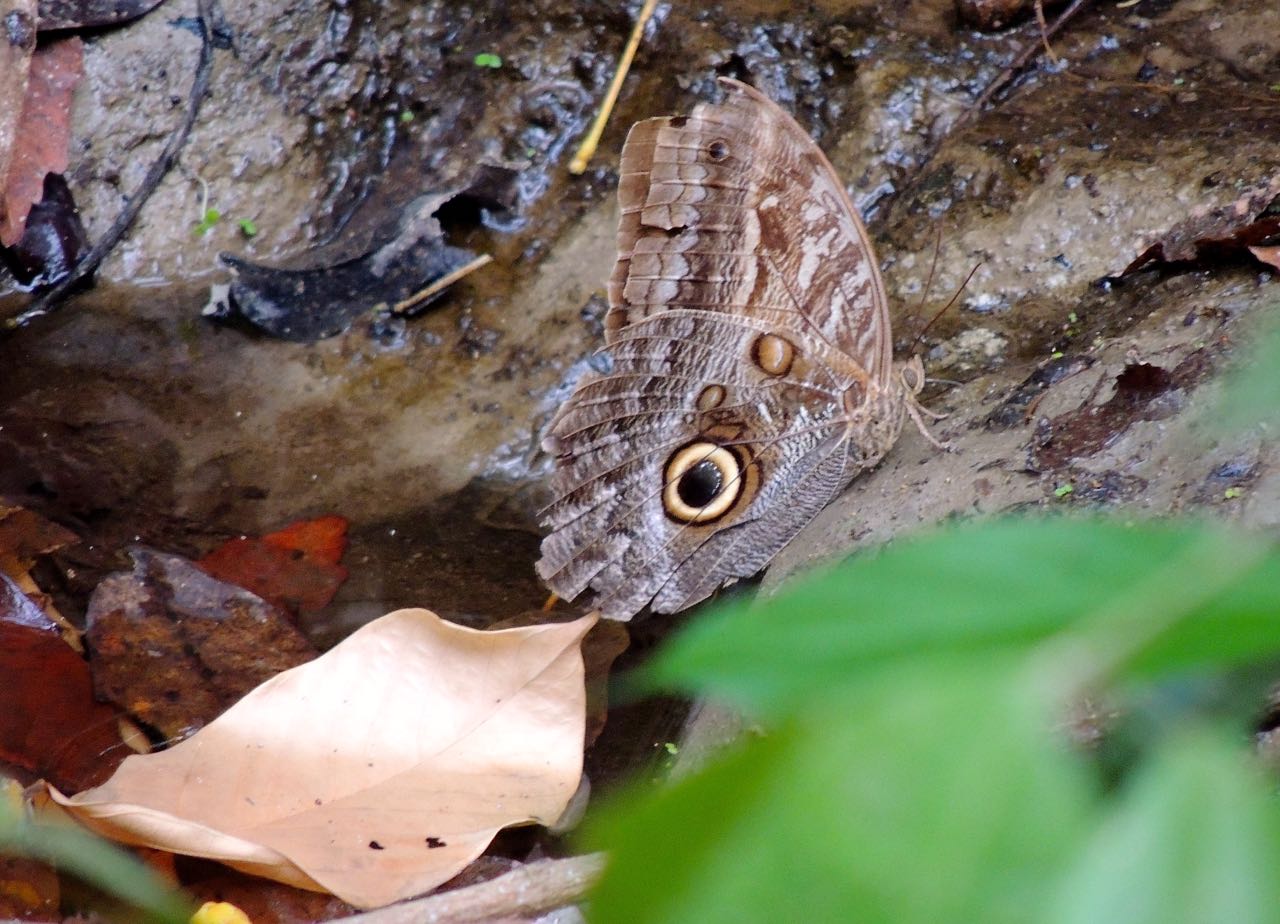 Pale Owl - Photo by William Young
Pale Owl - Photo by William YoungThis afternoon, we stopped at the site where a Common Potoo roosts. This is a young bird who is less than a year old. We then stopped at the home of someone who has a female Great Curassow who is three years old. Someone found the curassow in the forest when it was only a week old, and it is like a pet. We then tried to go to Lajas Blanco, which is an area where indigenous people live. We never got to our destination, because the forest where we wanted to go was on fire. Vast chunks of land have been burned, and more continue to be burned. We headed back and saw a pair of Double-banded Graytails at a nest. They are small gray birds with a white eyeline. A Neotropic Cormorant flew by. We saw a Solitary and a Spotted Sandpiper fly by and land just past where a Little Blue Heron was feeding. An Amazon Kingfisher perched on a wire, and a Ringed Kingfisher perched further back. We saw a Fork-tailed Flycatcher perched on a fence next to the road.
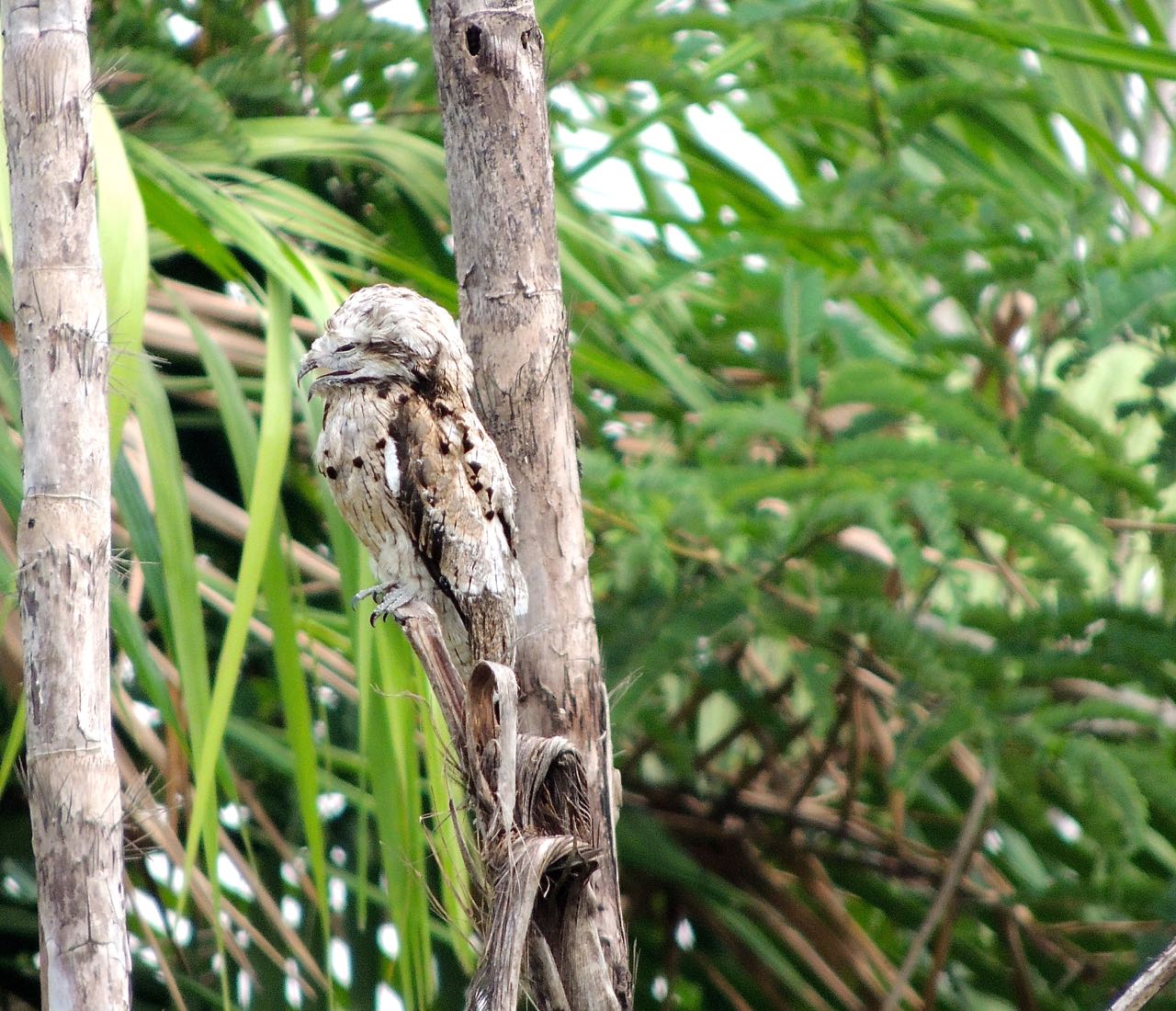 Common Potoo - Photo by William Young
Common Potoo - Photo by William Young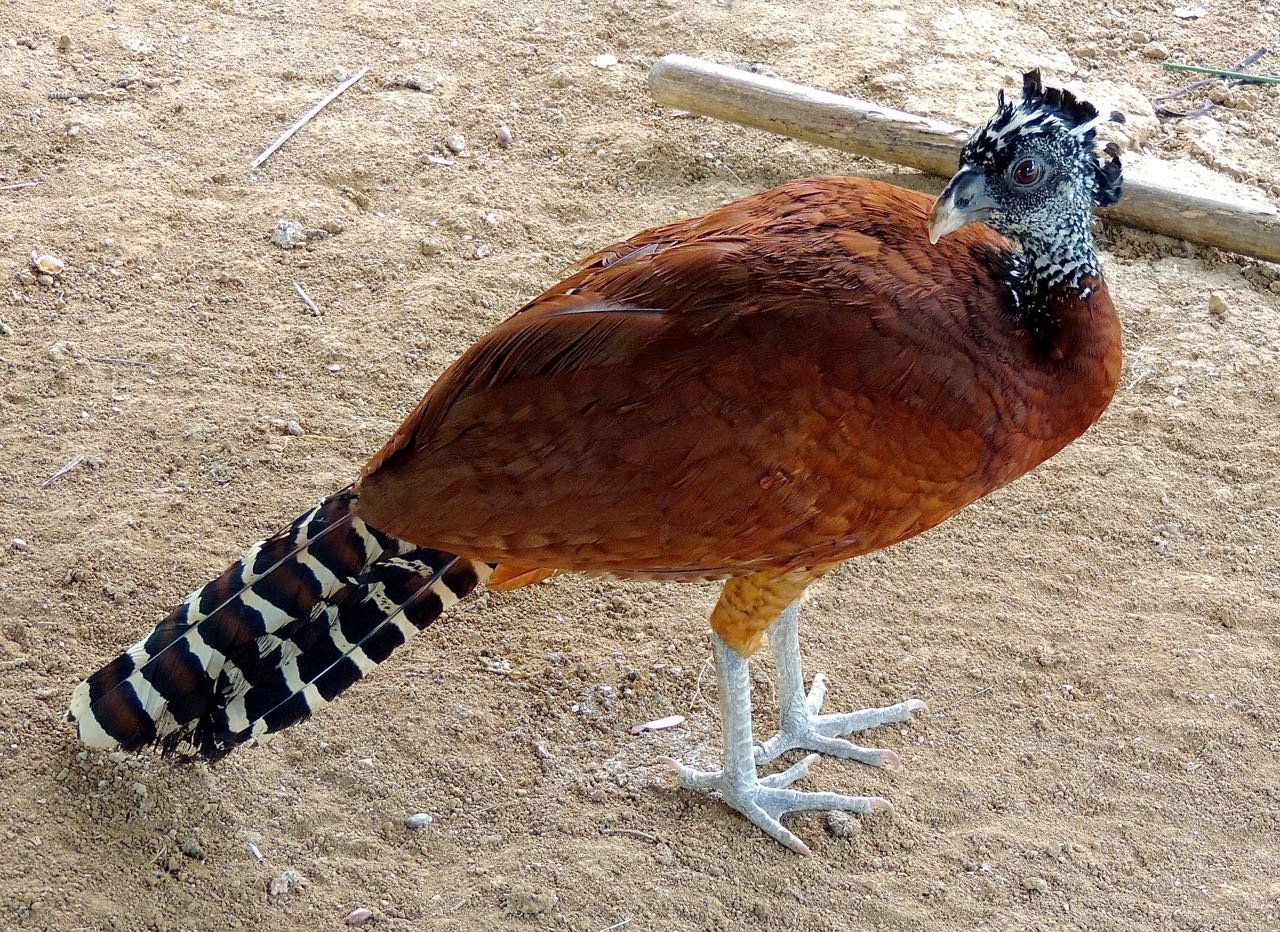 Great Curassow Female - Photo by William Young
Great Curassow Female - Photo by William YoungWe came back early watched birds come down to drink after five along the Nando Trail. An Ochre-bellied Flycatcher drank from the stream — It looked really tiny. We saw an adult male Golden-headed Manakin and possibly a female, who was all green, came down to drink in front of us. She had the huge headlight eyes. Two Thick-billed Seed-Finches came down. They were all black, with traces of white and a large bill. Up in the trees, I saw the underside of a White-headed Wren.
April 7We left at 6 this morning and headed toward El Salto Road. One of the first birds we saw was a Bicolored Wren, the second largest wren species in the world at 8.5 inches. It looks a little like a Carolina Wren on steroids — it has a white eyeline. It is a South American species who was discovered for the first time in Panama two years ago in Saviza (where we went yesterday afternoon). We saw three White-headed Wrens, who used to be the largest wren species found in Panama. They were fairly far away on the road, bathing in dust. Both of these wrens are in the same genus as the Cactus Wren. We saw Black-bellied Wrens, who are very attractive with their white throat, black face, and barred underparts. We found a small group of tiny woodpeckers called Olivaceous Piculets, who looked like little round brown balls, as well as the much larger Cinnamon Woodpecker. I saw a Red-rumped Woodpecker, and occasionally when it twitched its tail, I could see the red rump. We saw another female Golden-Green Woodpecker. A lovely male Gartered Trogon popped into view. He is blue-and-yellow, with a large yellow eyering. We saw a perched Double-toothed Kite and a fly-by Bat Falcon. We saw a couple of Roadside Hawks, as well as a Roadside Hawk nest, which is quite small and made out of sticks.
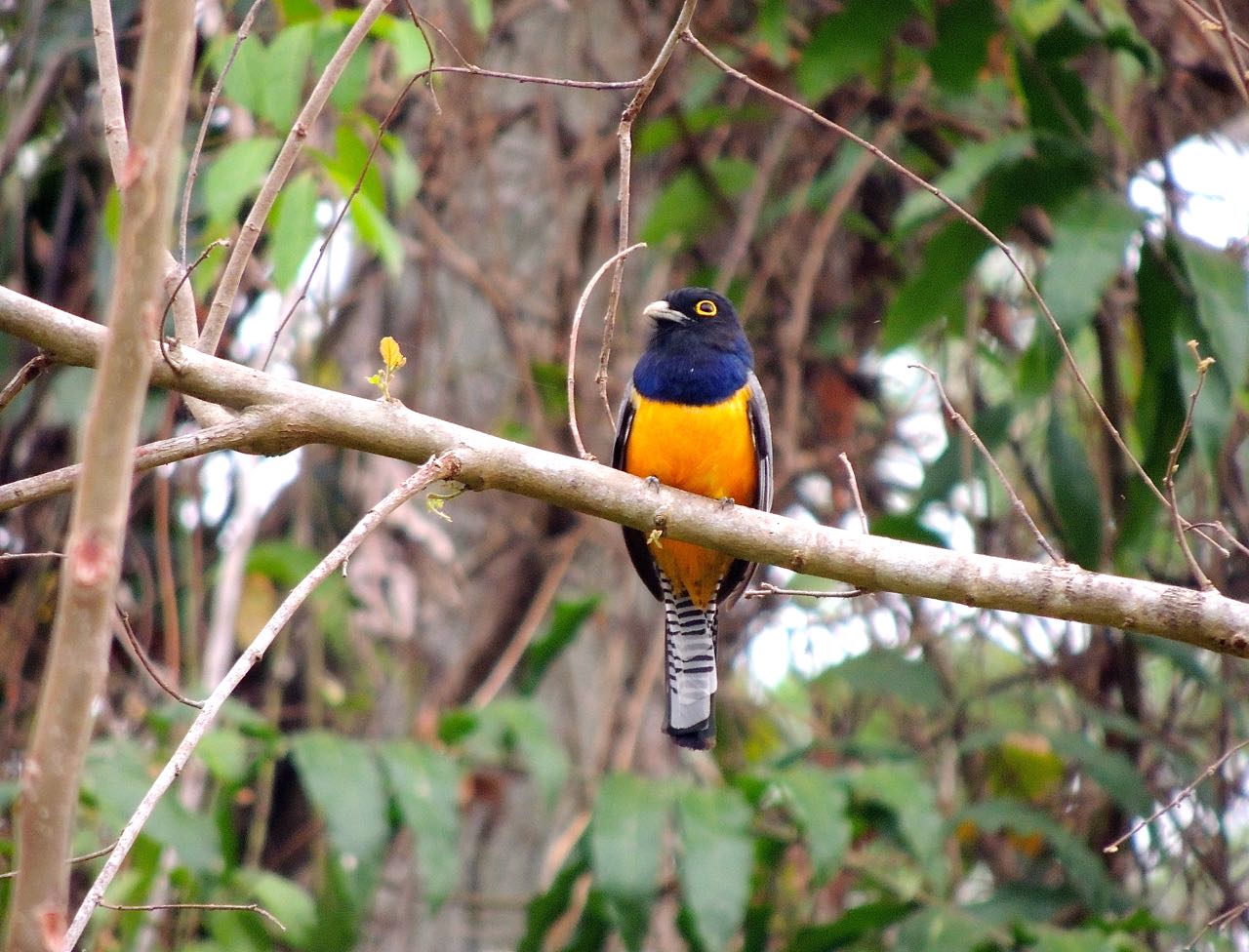 Gartered Trogon - Photo by William Young
Gartered Trogon - Photo by William Young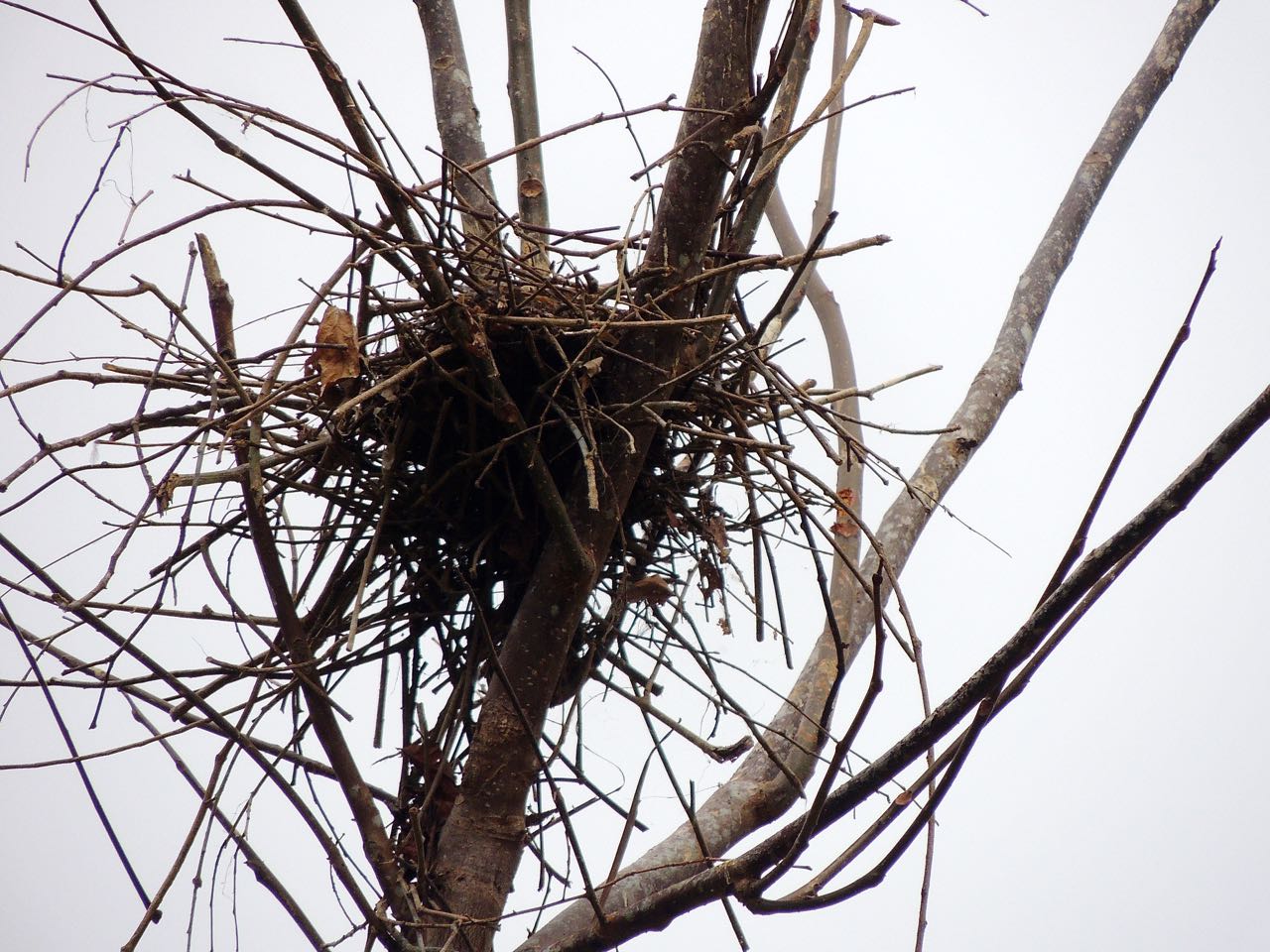 Roadside Hawk Nest - Photo by William Young
Roadside Hawk Nest - Photo by William YoungTwo Spot-crowned Barbets were excavating a nest hole at an area near the end of the road. I saw a female Black-crowned Antshrike, who was hopping in a bush near the road. I saw the spots on her wings and the tiny white hearts on her black tail. I had a fleeting look at a female Black Antshrike, who is an all rufous bird. I missed the Moustached Antwren, who was backlit in a tree. I had a nice look at a Streak-headed Woodcreeper, who appeared to be smaller than the Cocoa. I saw the white eyeline on a Yellow-crowned Tyrannulet. Among the migrants were Eastern Wood Pewee, Great Crested Flycatcher, Red-eyed Vireo, and Bay-breasted Warbler. I was surprised to see a flock of Eastern Kingbirds — I was not aware that they travelled in flocks. We saw a female White-winged Becard with a male Cinnamon Becard. I saw some Black-chested Jays. Tropical Gnatcatchers behave like a Blue-gray. We saw a Gray-headed Tanager, who looks like a large version of the female White-shouldered. I had close looks at a male White-shouldered. We scoped two White-eared Conebills in a tree, and I saw the white ear. Among the birds we heard but did not see were the Red-billed Scythebill and Bare-crowned Antbird. We also did not find a Black Oropendola. I saw my first Brown-throated Three-toed Sloth of the trip. I saw a few Mantled Howlers and was close enough to some Geoffroy's Tamarins that I could see them baring their teeth at us.
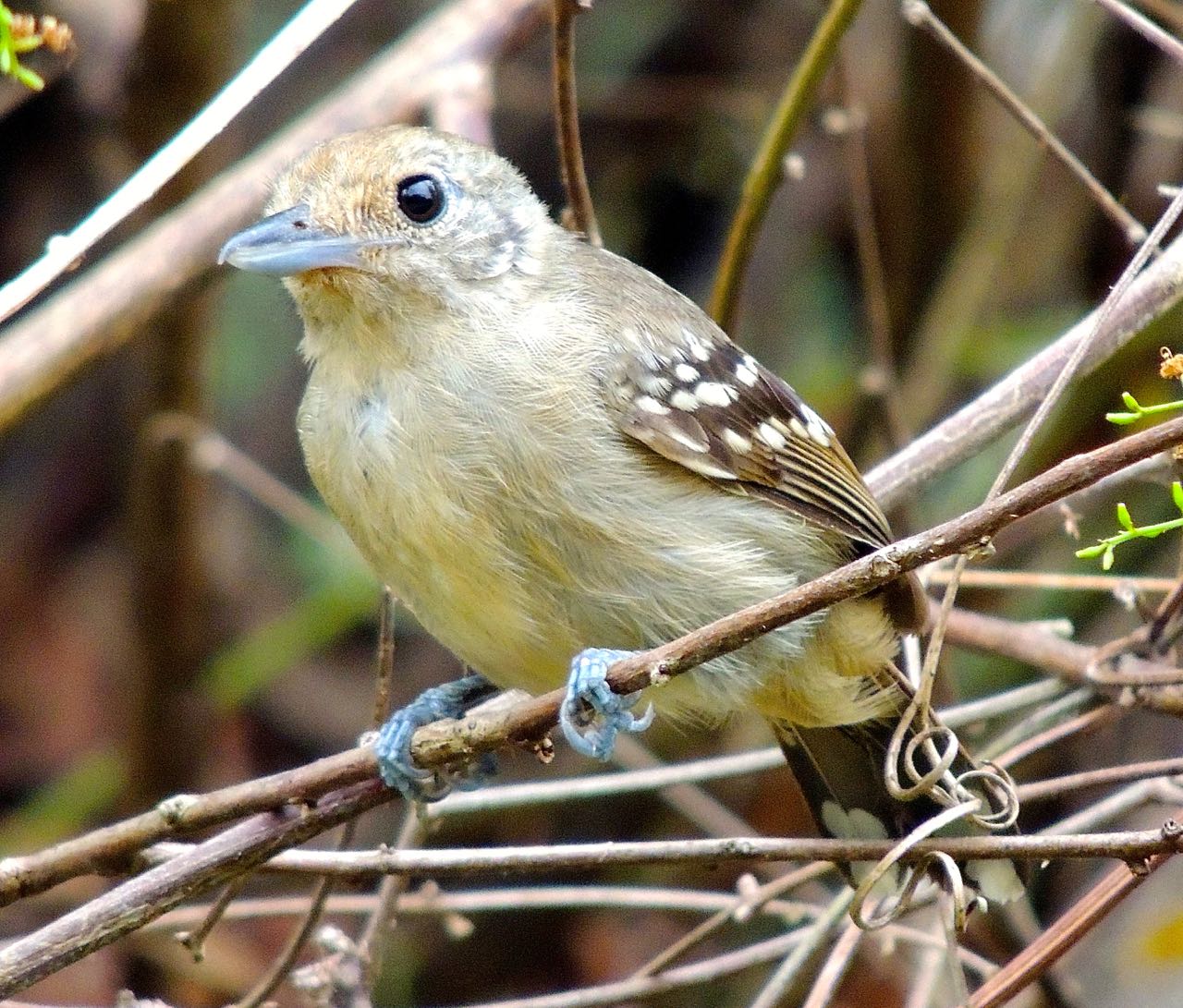 Black-crowned Antshrike Female - Photo by William Young
Black-crowned Antshrike Female - Photo by William YoungWhile I was in the shower at midday, I saw both a male Summer and Scarlet Tanager. At the hummingbird feeders, I saw a Pale-bellied Hermit and a Long-billed Starthroat at the same time. After lunch, we went to a private farm called Las Domcellas in the Aligandi region. We rode through areas filled with smoke from the numerous fires. A lot of the road we visited this morning had extensive burned areas also. Most of this burning has occurred fairly recently, some within the past week. A lot of American Kestrels were in the area. We saw two Plain-breasted Ground-Doves on a wire. We saw a pair of Black Antshrikes. The male is all black, while the handsome female is rufous, with a black head that looks striated. I saw a Black-chested Jay with a feather in its bill. These jays look larger than Blue Jays. At one point, we stopped at a stream, and a male Golden-headed Manakin came down to drink. It is only 3 inches long, and it uttered a sound resembling the peent of an American Woodcock. Golden-headed Manakins are manic birds who seem to do everything very quickly. We stopped near someone’s home and scoped a distant Great Green Macaw nest hole, and I could see the head of a macaw in it. While we waited for the macaw to appear, I watched as a Gray-breasted Martin flew around and inadvertently buzzed a chicken, who did not appreciate it. In the same area was a large sleeping Green Iguana. We stayed in the area and looked for night birds. We saw two Black-and-white Owls, who are very large. They vocalized a lot. We also saw a Common Pauraque resting on the road.
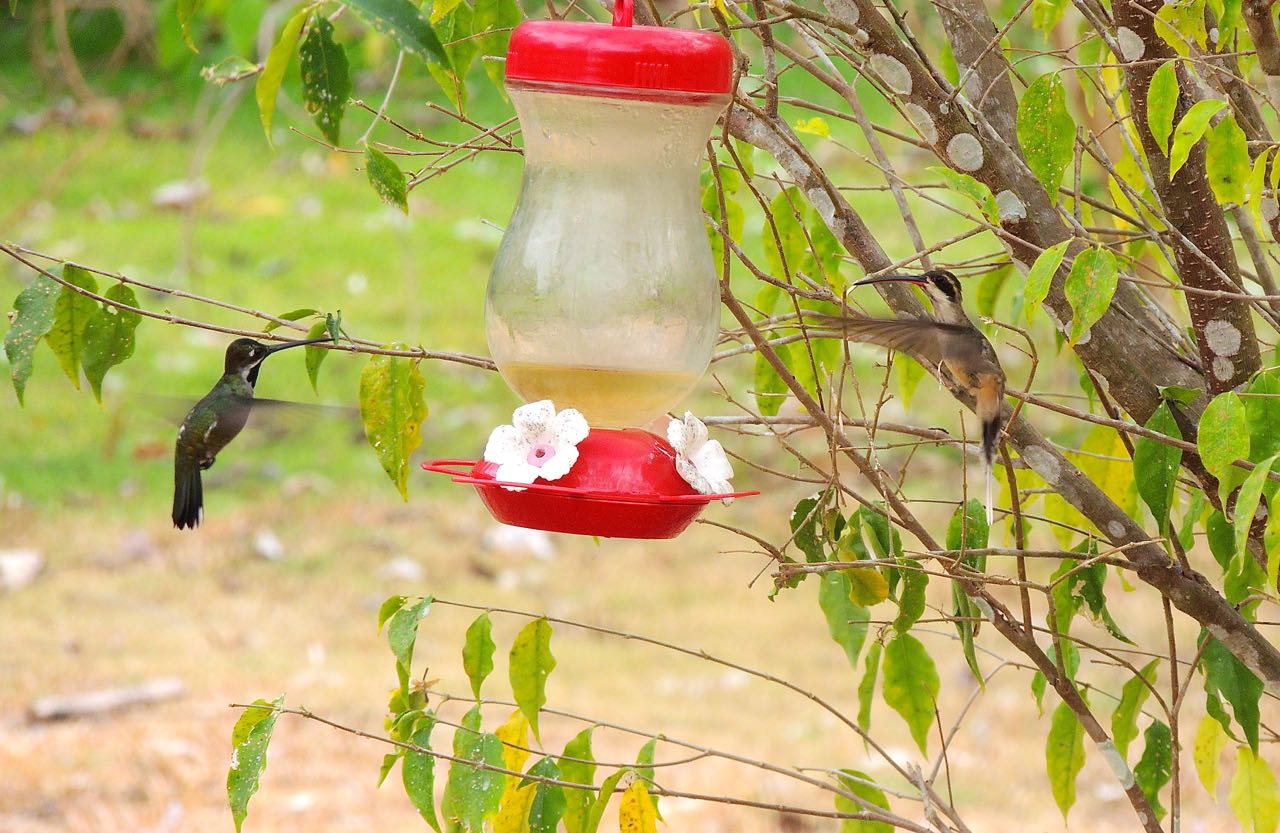 Long-billed Starthroat and Pale-bellied Hermit - Photo by William Young
Long-billed Starthroat and Pale-bellied Hermit - Photo by William Young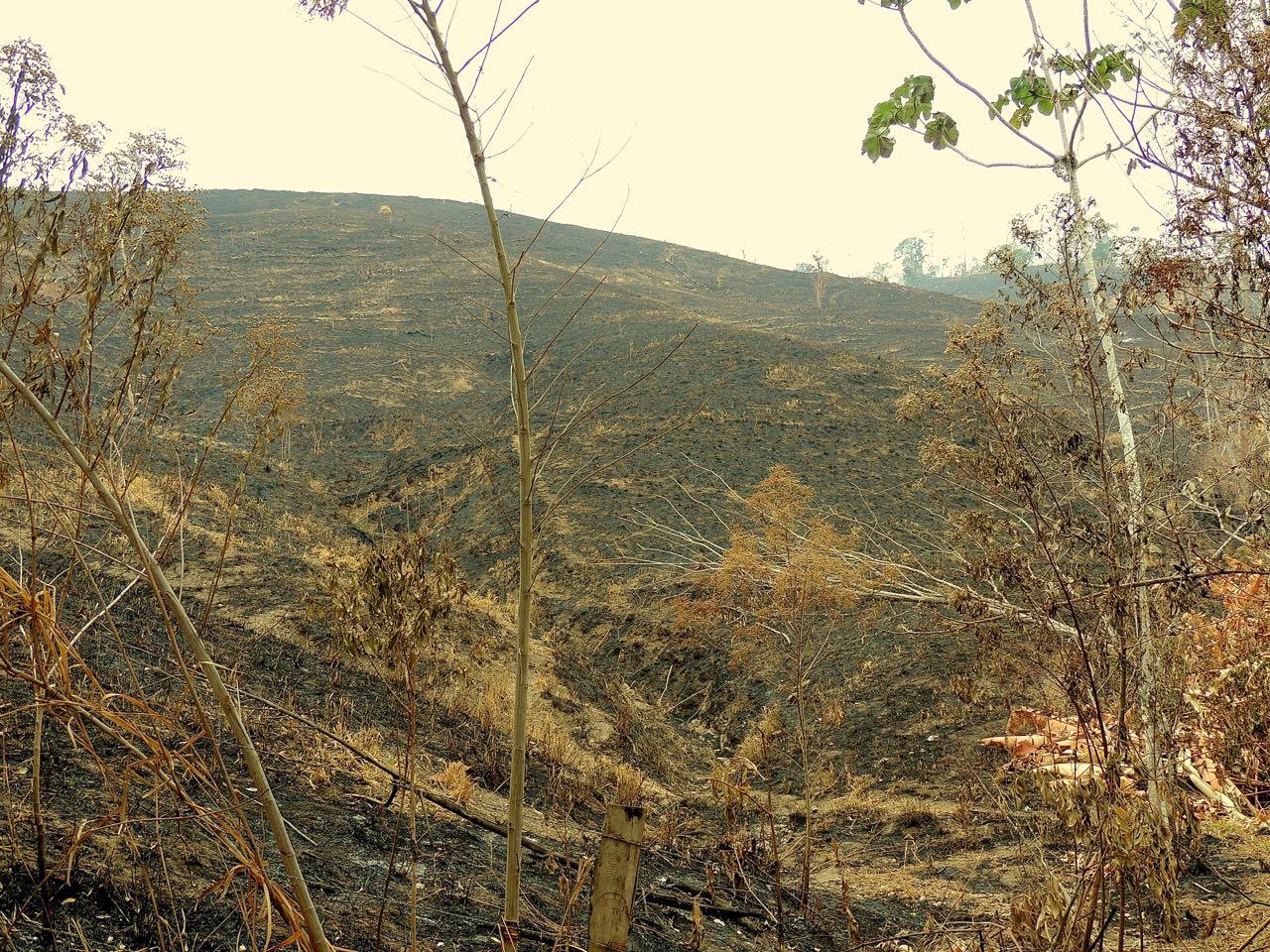 Burned Hillside - Photo by William Young
Burned Hillside - Photo by William Young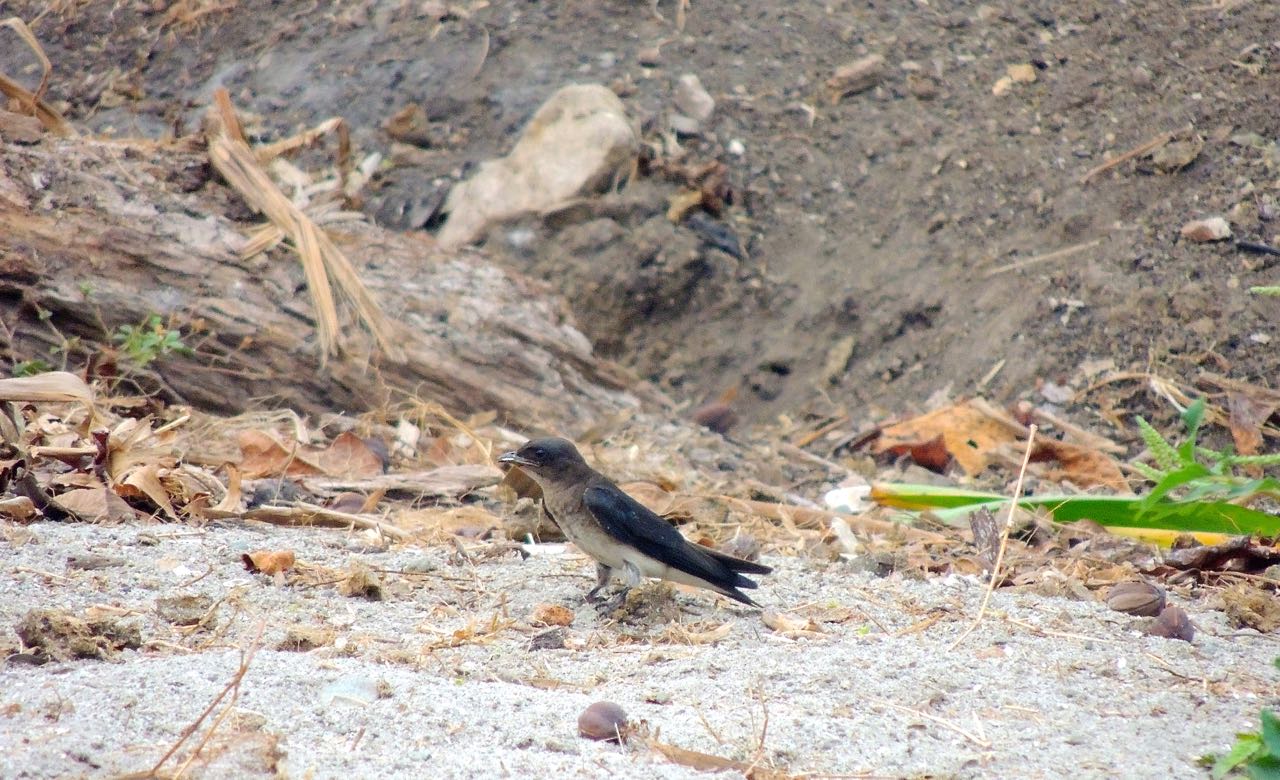 Gray-breasted Martin - Photo by William Young
Gray-breasted Martin - Photo by William Young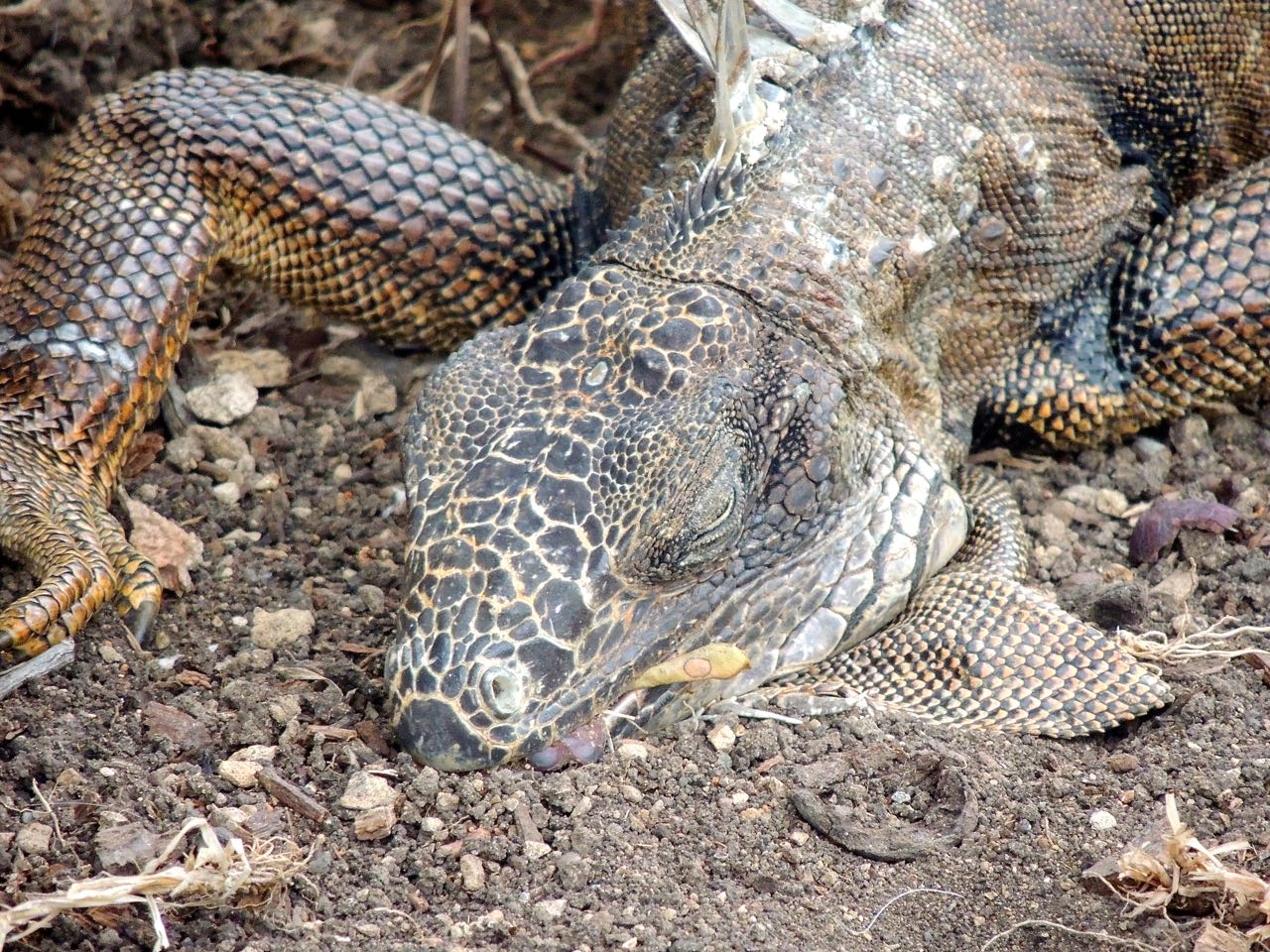 Green Iguana - Photo by William Young
Green Iguana - Photo by William Young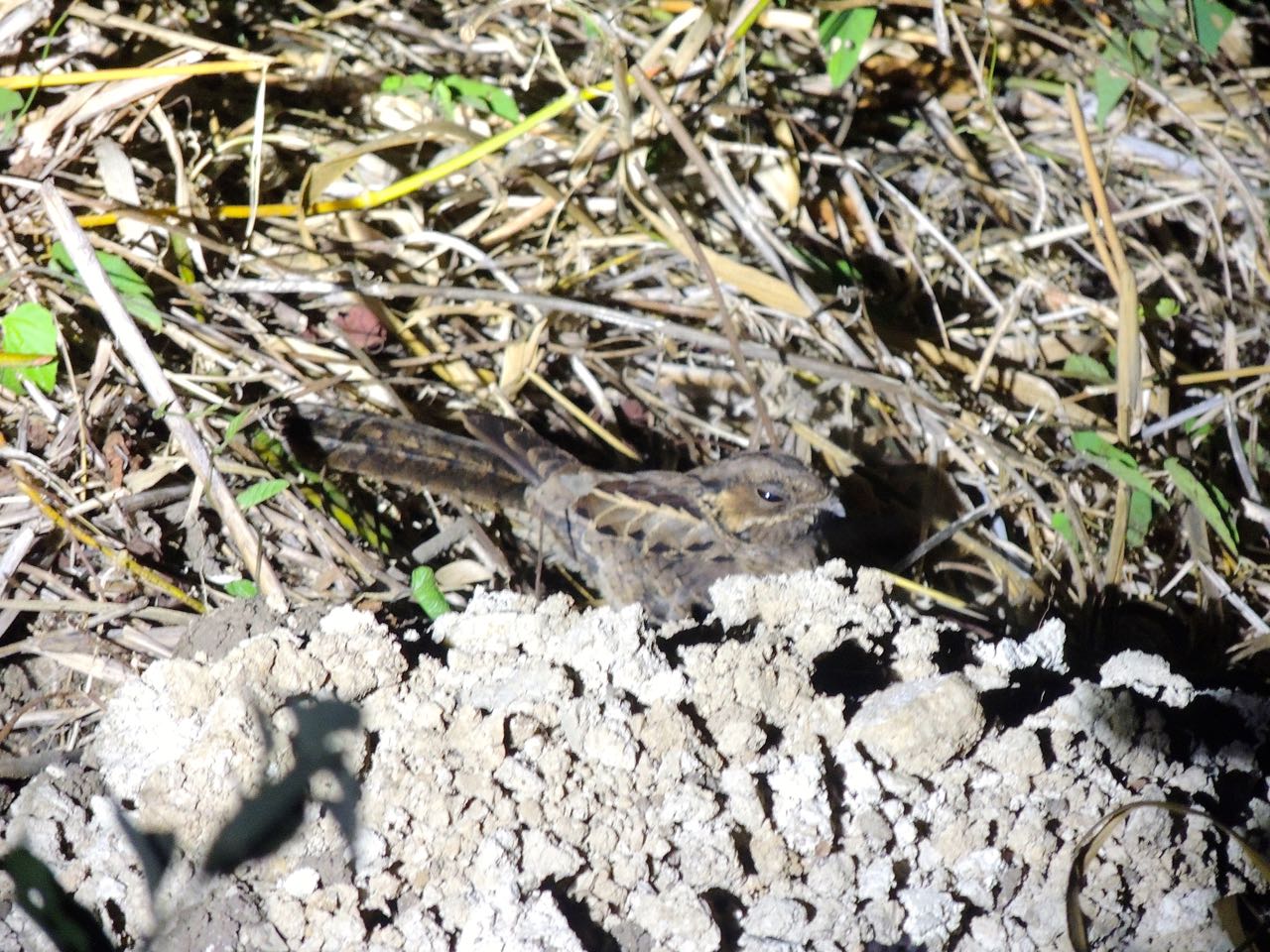 Common Pauraque - Photo by William Young
Common Pauraque - Photo by William Young
April 8This morning, the Howler Monkeys began to roar about a minute before my alarm went off. I could hear tinamous calling outside my tent. A Chestnut-headed Oropendola displayed near the breakfast area. After breakfast, we went to an area called Little Bahia. We stopped near some water and saw a Green Ibis, who looked dull because we could not see the iridescence of its plumage. We also saw a brown-and-stripy juvenile Rufescent Tiger-Heron. The oddest thing we saw was a Purple Gallinule raiding the nest of two Tropical Kingbirds. The gallinule jumped up into a bush to do this. We then went to look for a Dusky-backed Jacamar. This species is found only in eastern Panama and parts of Colombia. Jacamars look like large hummingbirds. We found the jacamar almost immediately. It has a dark back and breast, is rufous below, and has a white throat. It is quite small. A Baltimore Oriole was behind it. When I downloaded photos I took at the site, I discovered that there were two jacamars there. In a nearby tree was a Spectacled Parrotlet, who is small and green with some blue around the eye. We later saw the slightly larger Rufous-tailed Jacamar, who has iridescent green plumage and a rufous belly. A Mangrove Swallow perched near the shore between trips to look for food. Lesser Kiskadees were near the shore — they are typically found near water. A Gray-chested Dove flew along the river — it is a large dove with a dark back.
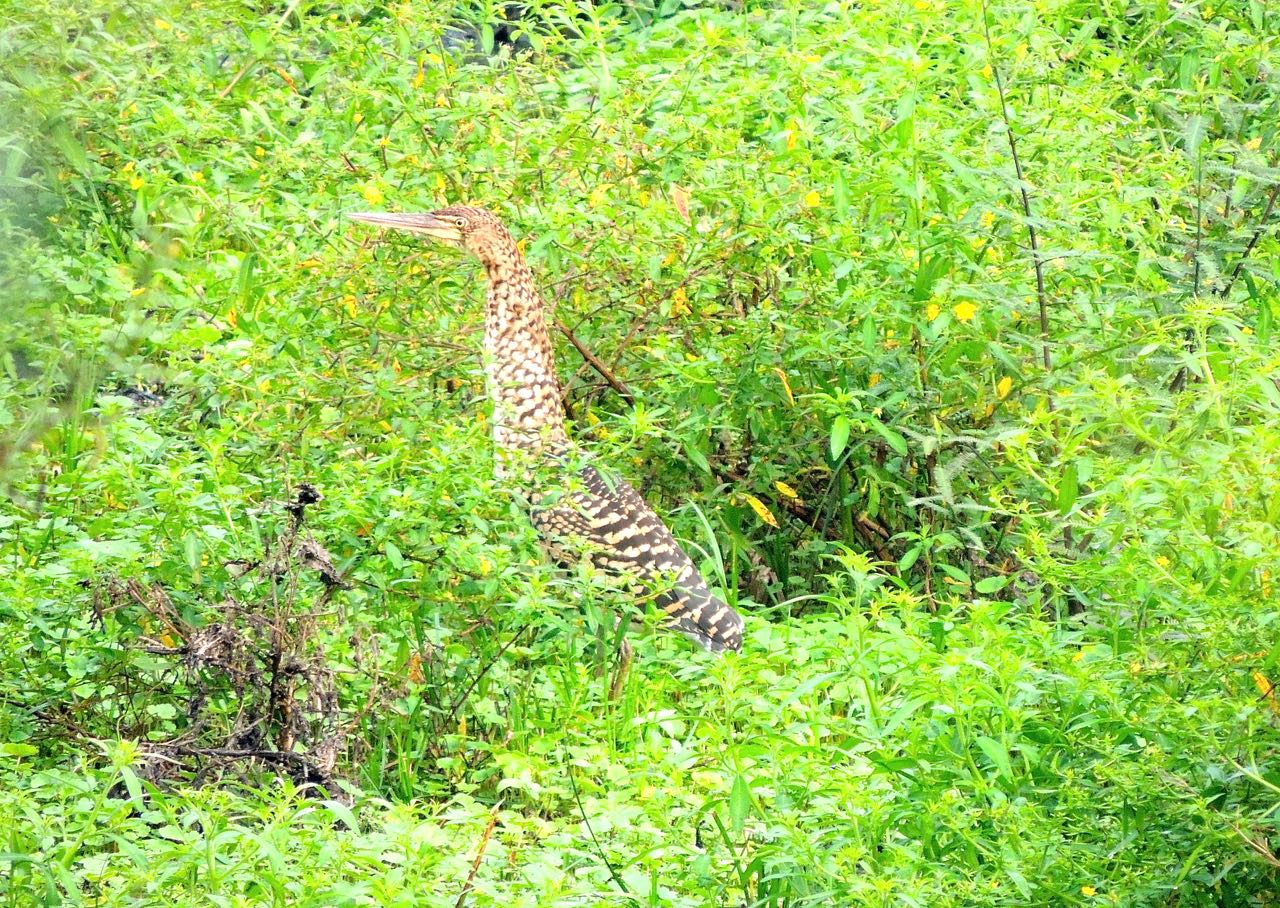 Rufescent Tiger-Heron Juvenile - Photo by William Young
Rufescent Tiger-Heron Juvenile - Photo by William Young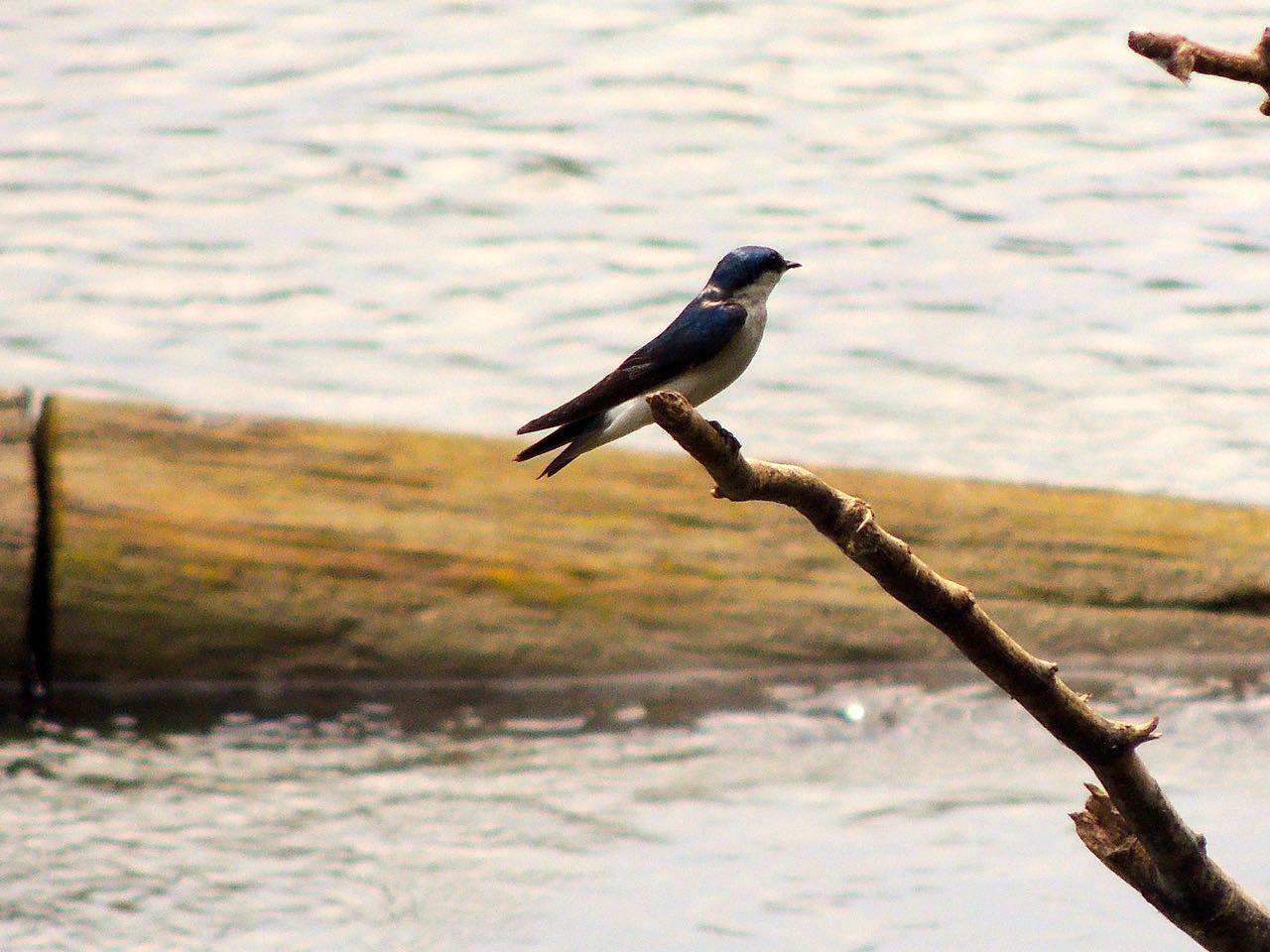 Mangrove Swallow - Photo by William Young
Mangrove Swallow - Photo by William YoungWe hiked along a trail and found an ant swarm. Among the birds there were a pair of Bare-crowned Antbirds. The male is almost all black, with bare blue skin around the eye and on his forehead. The female is rufous, with pale blue skin around the eye. A Spotted Antbird was in the same area close to the path, as was a Black-chested Jay. A little further down was a Gray-headed Tanager. A Gray-headed Kite was perched in a tree. It has very clean lines, with a gray head, dark back, and white underparts. We saw Amazon, Ringed, and American Pygmy Kingfishers. We scoped a Long-tailed Tyrant in a tree. We saw both Plain Brown and Northern Barred Woodcreepers. I saw a female Pacific Antwren, who is very small and buffy below. The best bird of the morning was a male Agami Heron. The species is usually shy, but this one gave us long looks at his beautiful breeding plumage, which is blue-and-maroon, with many blue-gray breeding plumes. Nearby was a young Spectacled Caiman on a log. As we were about to leave, we saw a King Vulture perched in a tree. One tends not to see them up close, but it came down to survey a dead fox on the road. As we were about to reach the camp, we saw cattle with Cattle Egrets standing on them. We also saw a group of Black Vultures eating avocados. I was not aware that vultures eat avocados, but I also was not aware that gallinules ate eggs in kingbird nests.
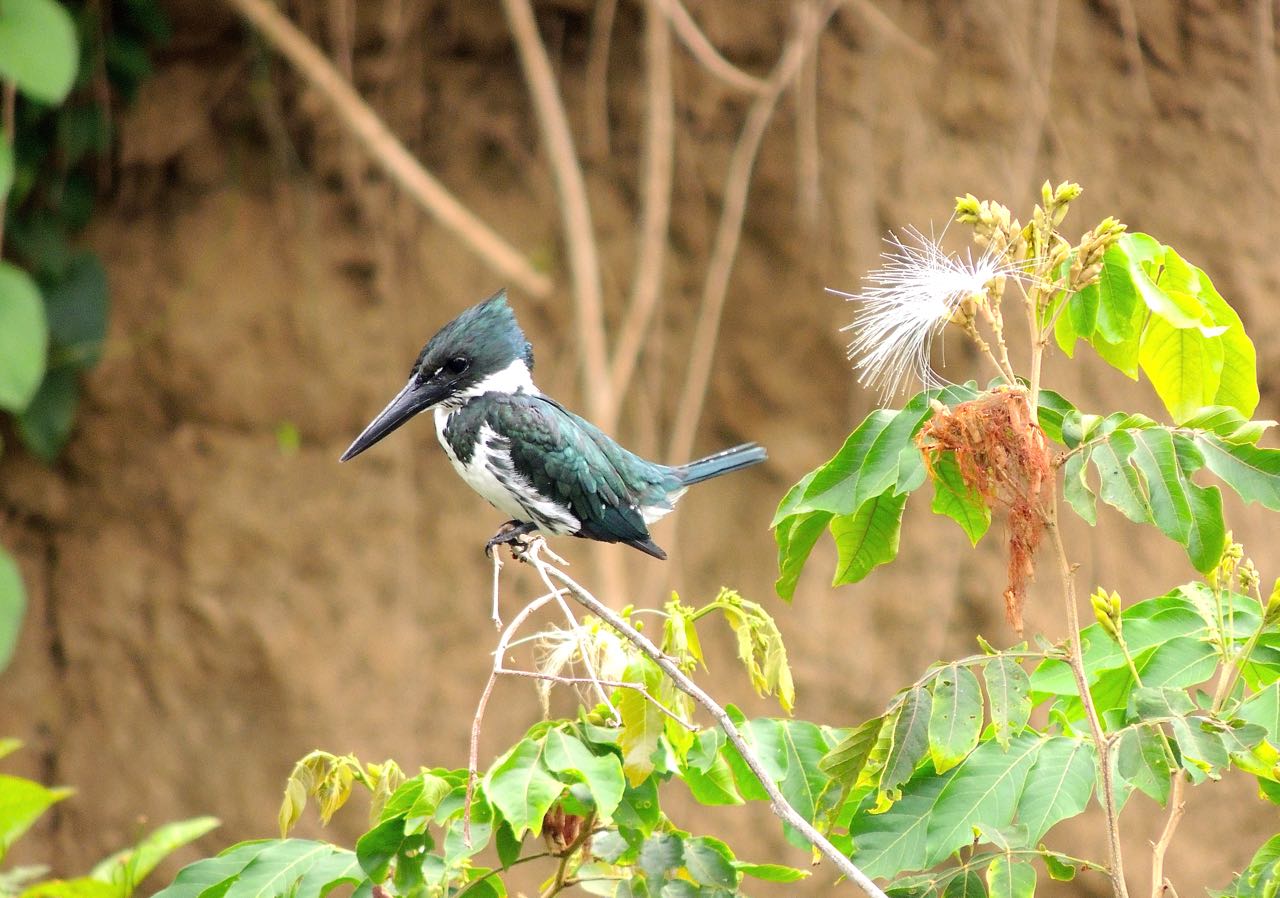 Amazon Kingfisher - Photo by William Young
Amazon Kingfisher - Photo by William Young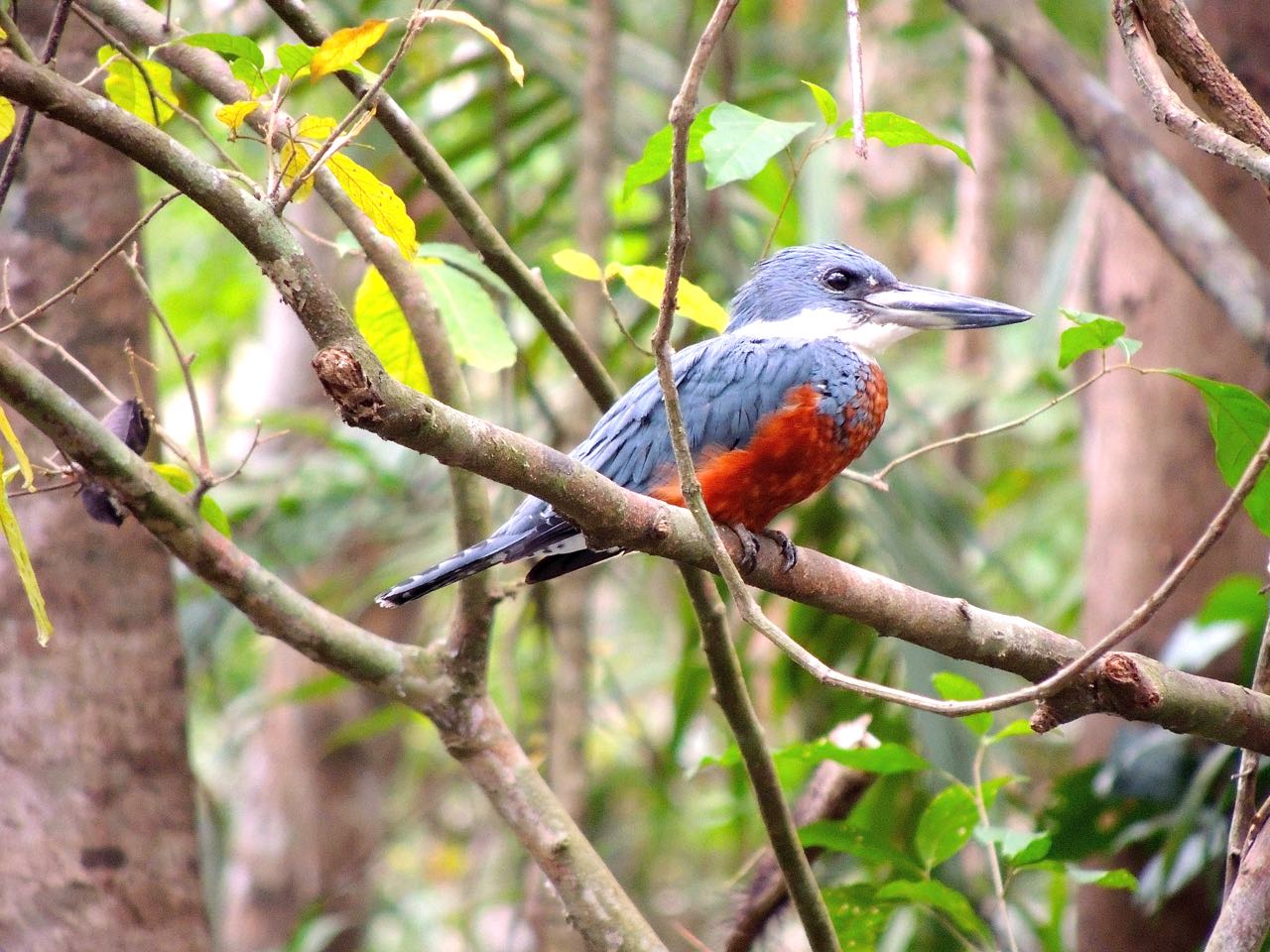 Ringed Kingfisher Male - Photo by William Young
Ringed Kingfisher Male - Photo by William Young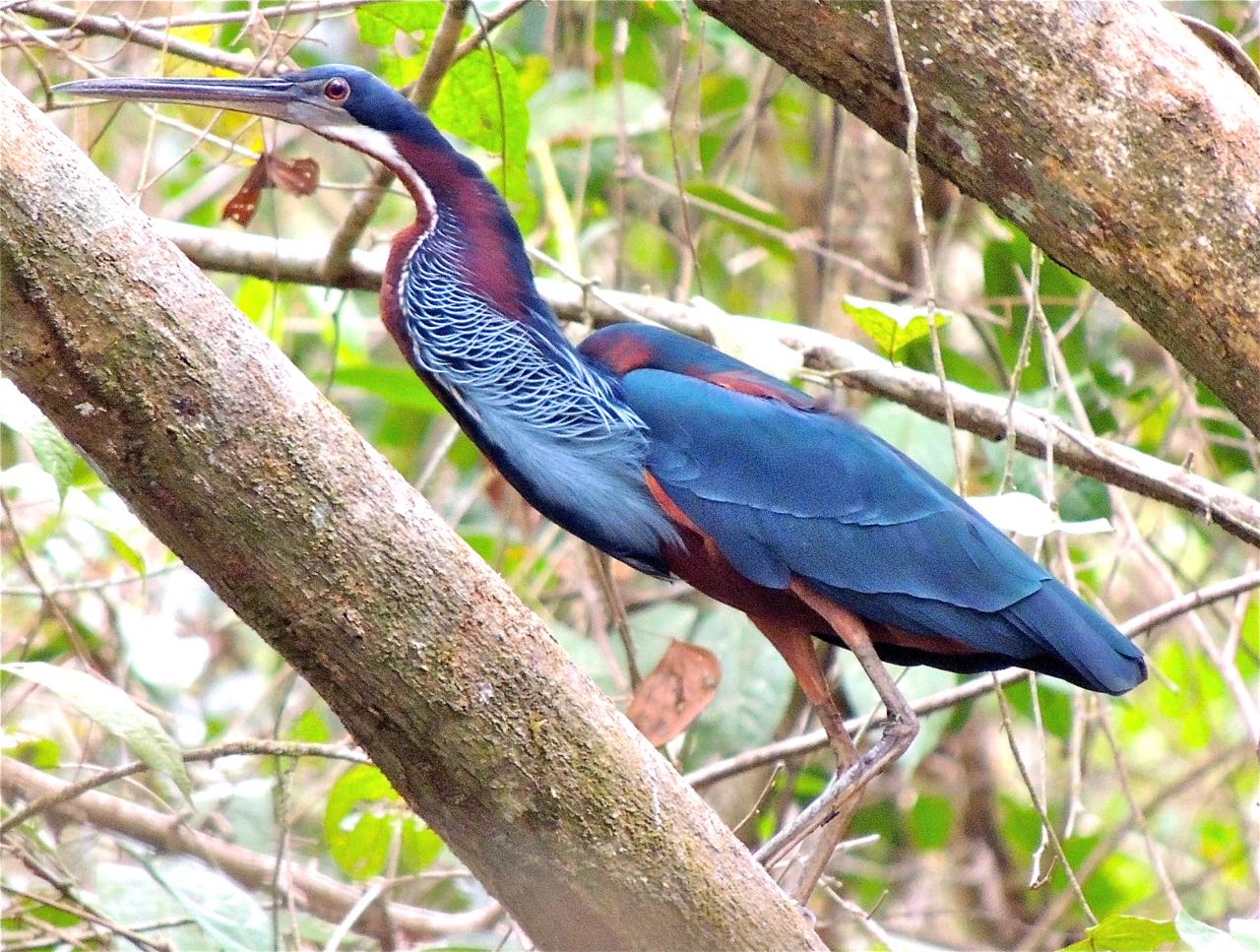 Agami Heron - Photo by William Young
Agami Heron - Photo by William Young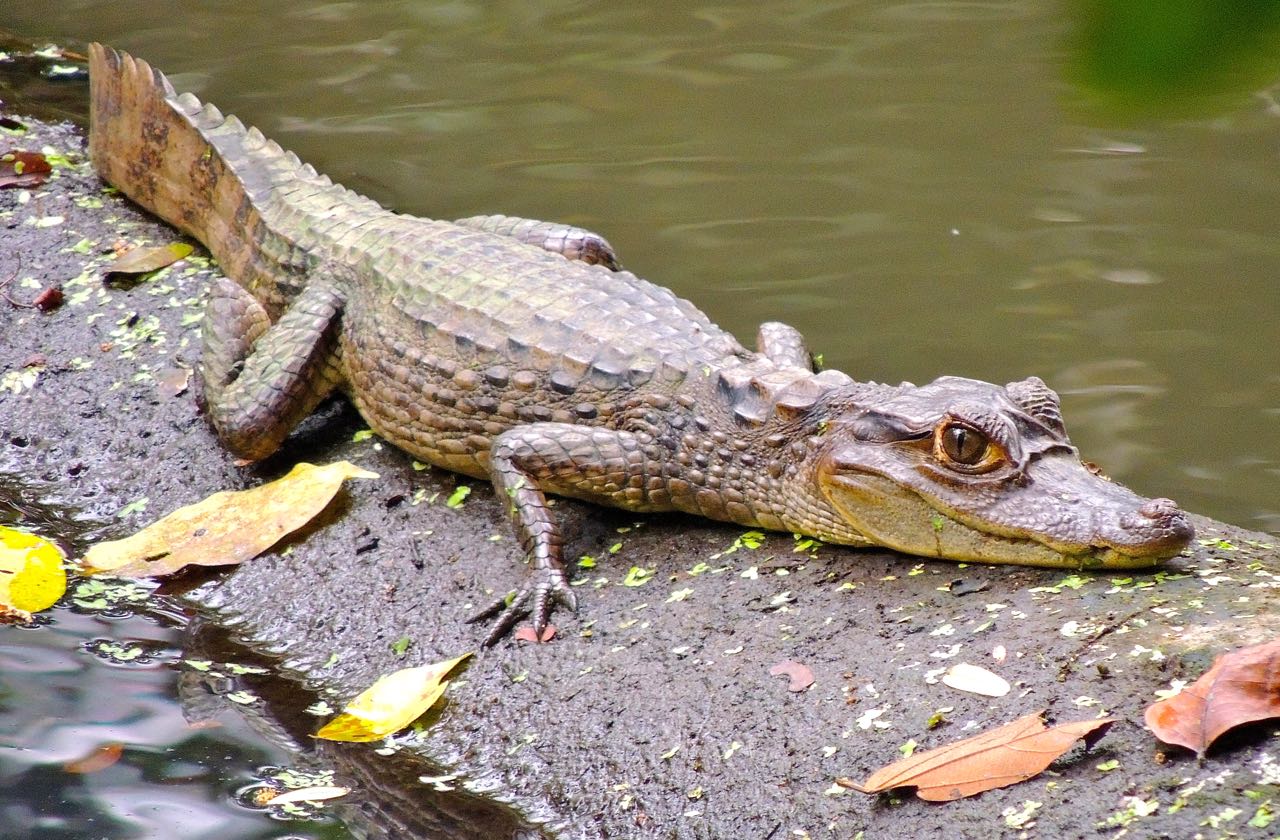 Spectacled Caiman - Photo by William Young
Spectacled Caiman - Photo by William YoungThis afternoon, we returned to the same location. We had to change our route, because once again, we encountered fires that made our intended area unsafe. We drove to an area what has a colony of Black Oropendolas. Like the jacamar, this species is found only in the Darien and parts of Colombia. They are large black birds who display by making a creaking sound as they appear to be about to fall off a branch before catching themselves. The Black Oropendola is one of the prettiest oropendolas. The male has inflatable blue cheeks and red at the top and the base of its black bill. Oropendolas build long hanging nests from the high branches of tall trees. Giant Cowbirds flew around the colony, hoping to lay eggs in the oropendola nests. We heard a Yellow-rumped Cacique, who is a skilled mimic. We had our best look yet at a White-headed Wren. I saw a flying male Blue Ground-Dove. I had seen a blue bird earlier and did not know what it was. It appeared to be the color of some bluebirds. As we drove home, we ran into about 10,000 migrating Mississippi Kites. In some places, the sky was full of them. They sometimes flew in a circle, and other times, they formed a huge soaring mass.
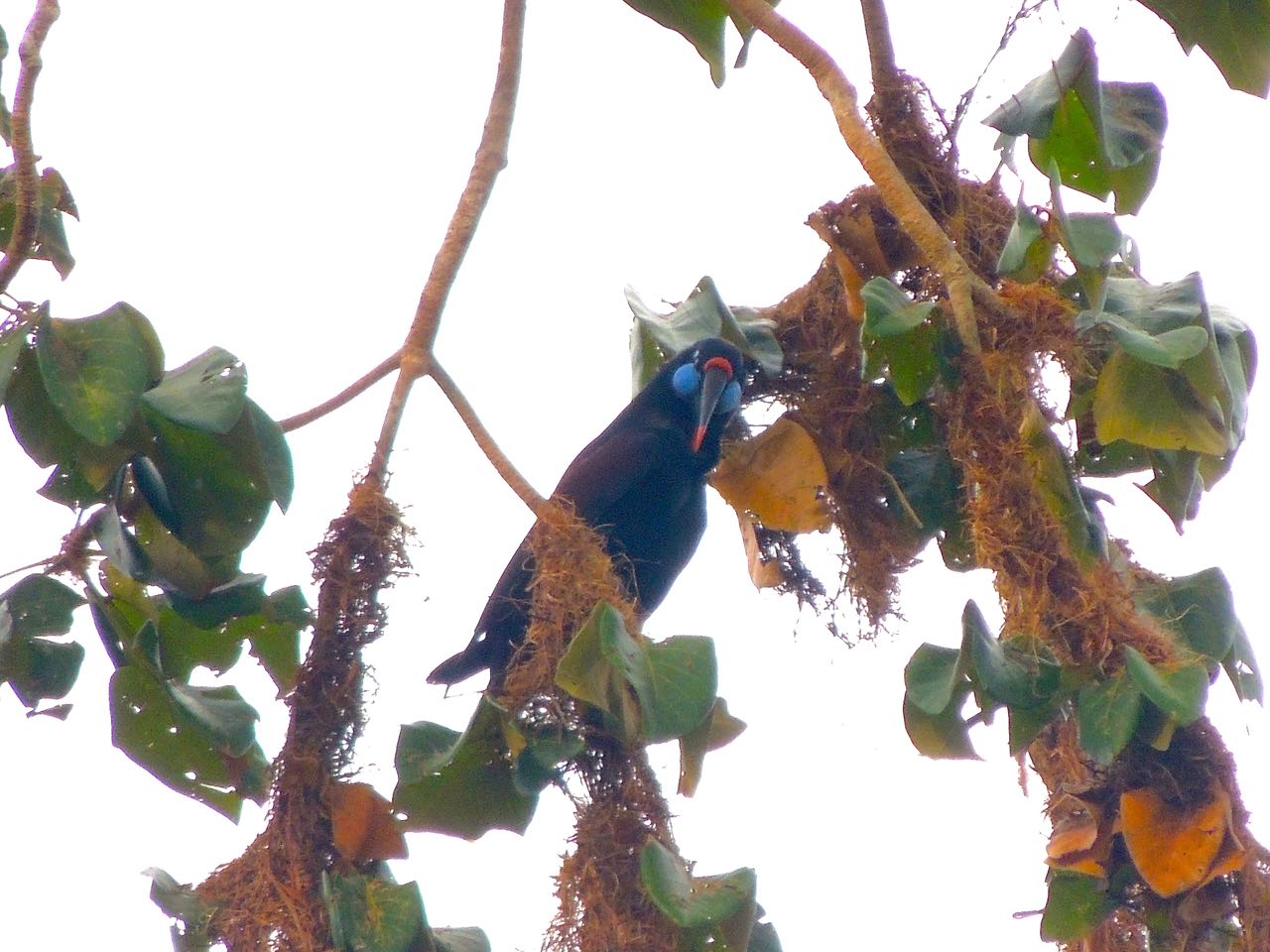 Black Oropendola - Photo by William Young
Black Oropendola - Photo by William Young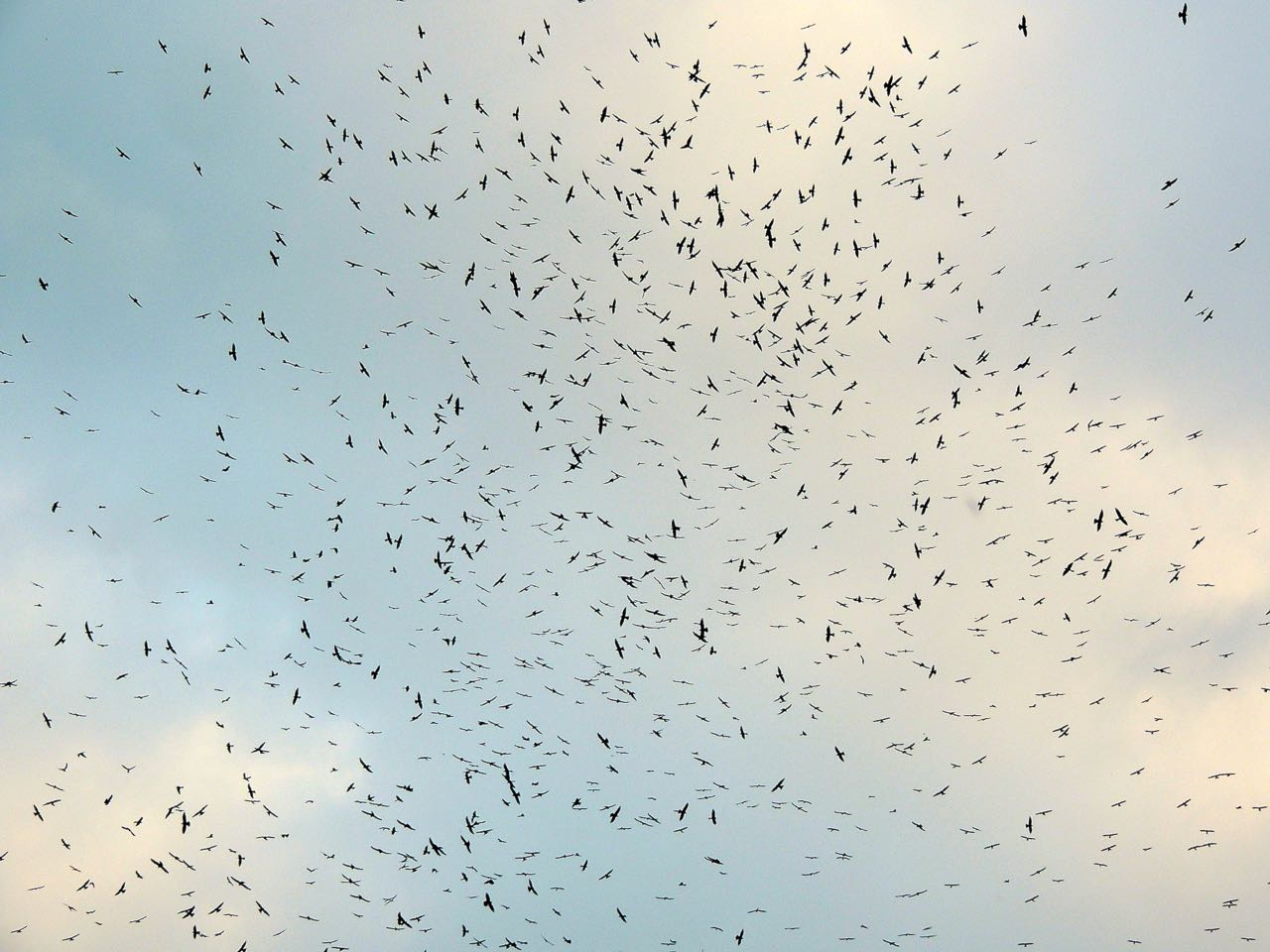 Mississippi Kites - Photo by William Young
Mississippi Kites - Photo by William Young
April 9We went to an area called Naach Pobor on lands owned by indigenous people. On the property is an active Harpy Eagle nest, which is in a wooded area about a mile and a half from the road. On the way, we saw an adult King Vulture in a tree and a young one nearby. The youngster was all black with a black head, and it looked like some of the vultures in Africa, who are not related to the New World vultures. We saw a pair of Great Jacamars, who are much bigger than the two species of jacamars we saw yesterday. The male has a white throat. I saw a perched Gray-chested Dove, and the colors on its back are different than the ones on the front.
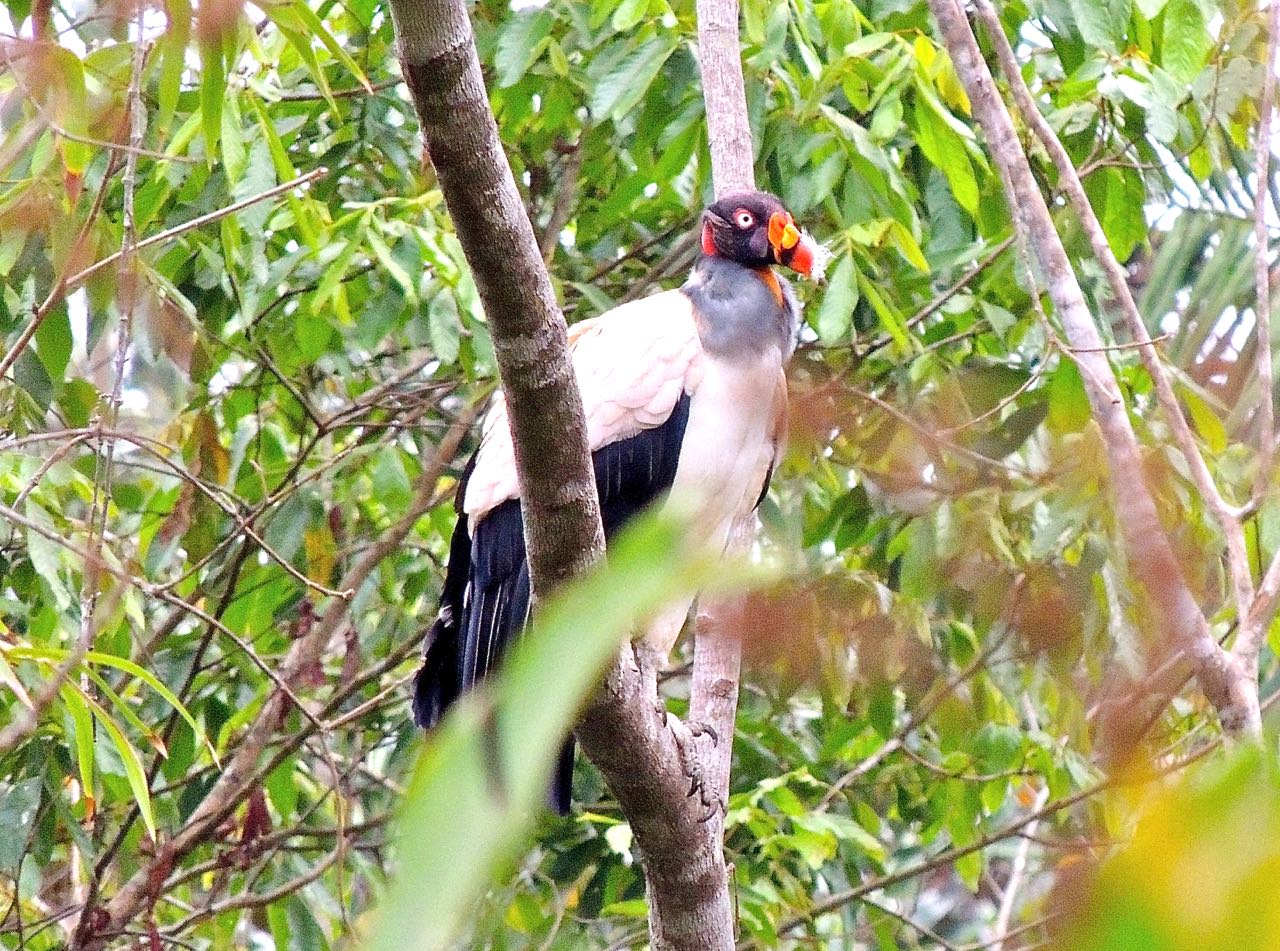 King Vulture - Photo by William Young
King Vulture - Photo by William Young Great Jacamar Female and Male - Photo by William Young
Great Jacamar Female and Male - Photo by William YoungWe reached the Harpy Eagle nest at about 10:30 after a difficult walk in very humid conditions. We saw a chick in the nest, but the adults were not there. The chick is all white with a dark bill. We could see its crest blowing in the wind. We stayed until 3, but the adults never showed up. This is a concern, because the chick is estimated to be about 4 months old, and at that age, they are usually fed fairly regularly. While we waited, we heard the call of the White-headed Wren, who sounds like a tityra. We heard a Red-billed Scythebill, but did not see one. A Red-throated Caracara perched on a branch, and I saw the red on the face. An Ornate Hawk-Eagle flew over and vocalized. It is mostly black with a white belly, and it is quite loud. We walked a different route back and saw a Sulphur-rumped Flycatcher, who is small and has a light spot on its back, similar to the Black-tailed. We saw a lot of burned areas, and some were not far from the nest site.
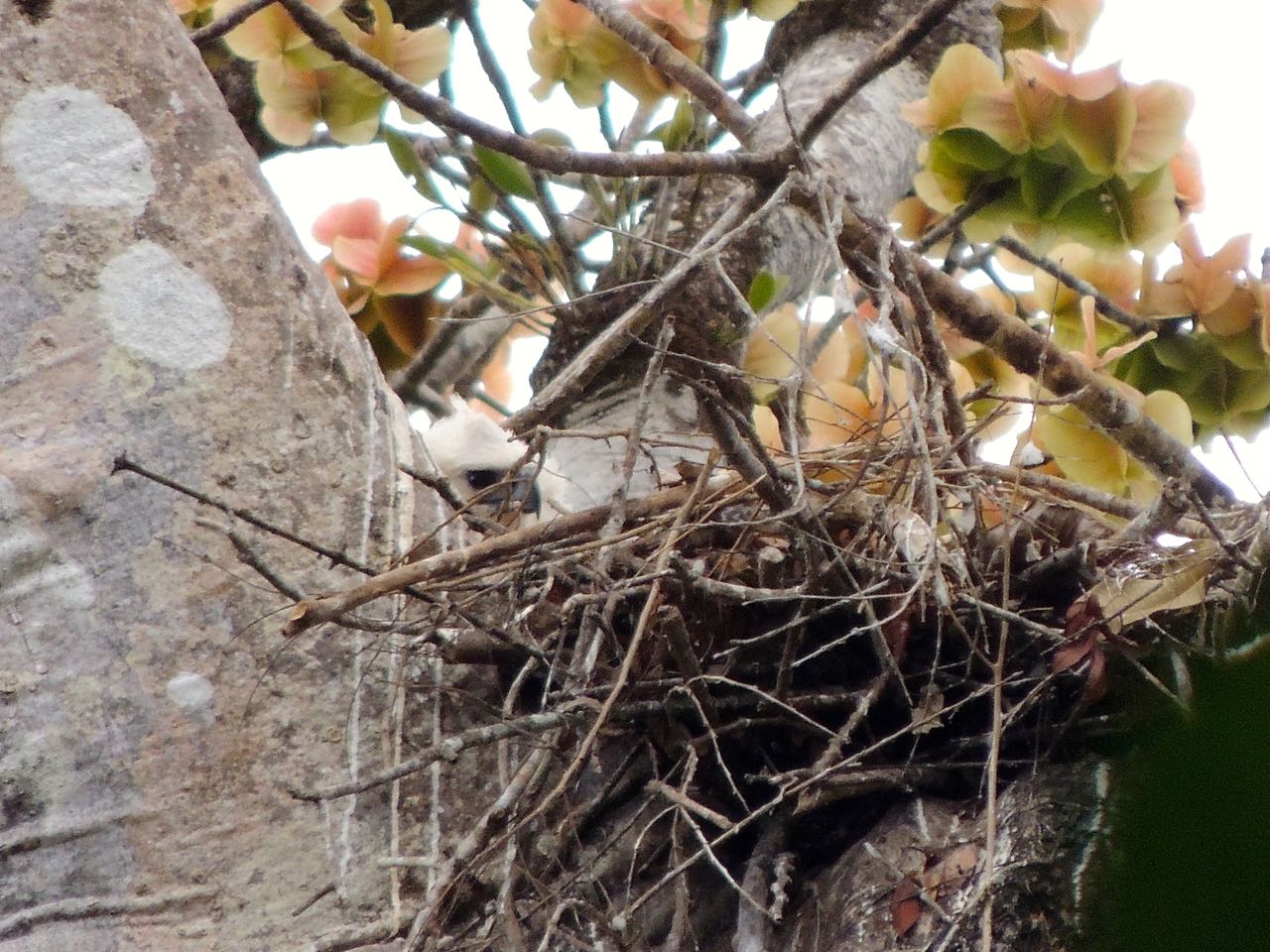 Harpy Eagle Nest with Chick - Photo by William Young
Harpy Eagle Nest with Chick - Photo by William Young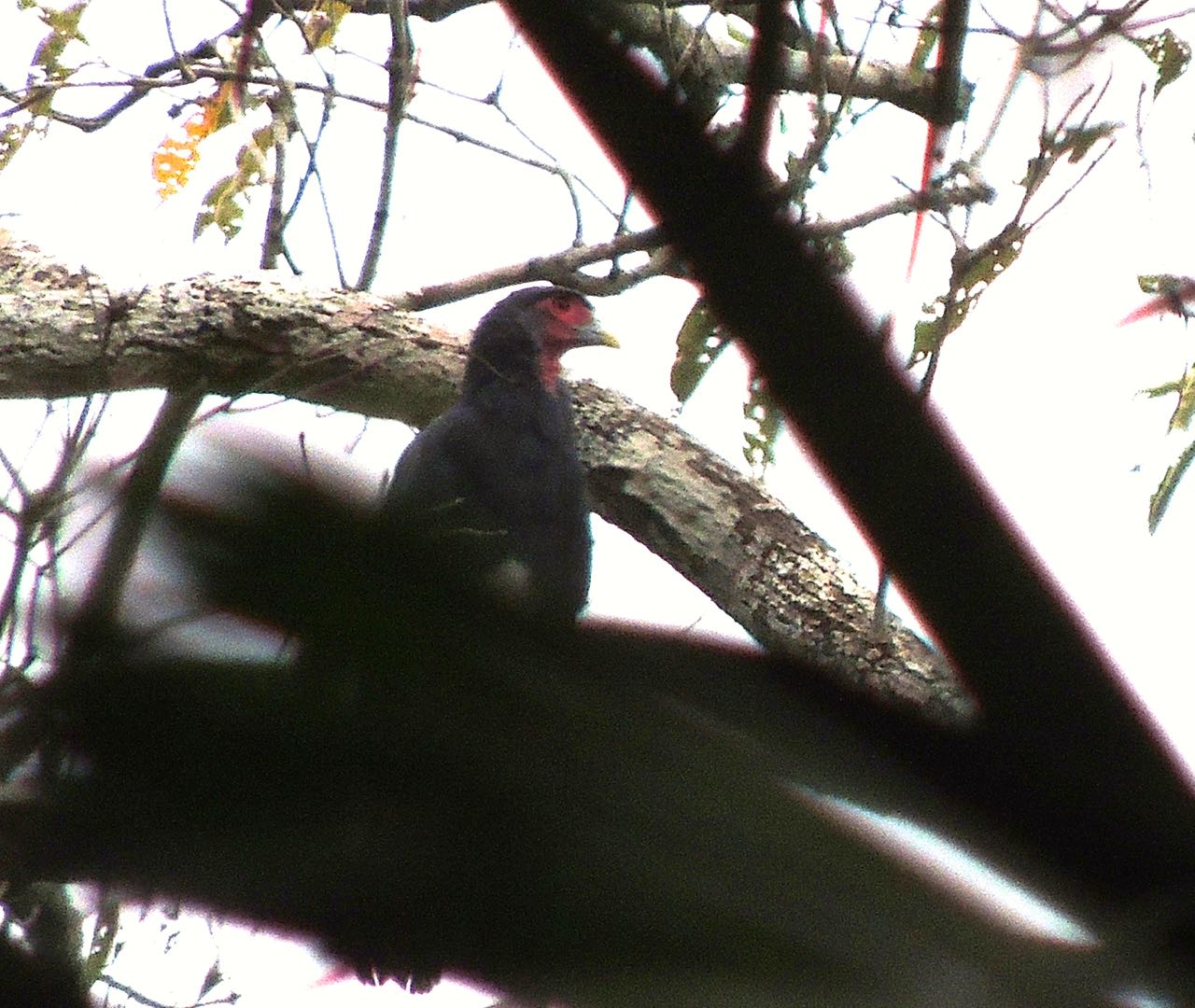 Red-throated Caracara - Photo by William Young
Red-throated Caracara - Photo by William Young
April 10We began our drive from the Canopy Camp to the Canopy Tower at 6. I saw a couple hundred Black Vultures along the way. There were also a lot of Gray-breasted Martins and Cattle Egrets. We stopped along the way at the San Francisco Reserve. We saw an American Crocodile, who might have been released rather than wild. A Blue Ground-Dove walked around nearby. One tree had a breeding plumage male Canada Warbler, a breeding plumage female American Redstart, and a winter plumage male Bay-breasted Warbler. We saw both a male Yellow Warbler and a Buff-rumped Warbler, who behaves like a waterthrush. We saw both Barred and Pied Puffbirds. I spotted a male Golden-collared Manakin, and I later saw a female. I had nice looks at a Black-striped Woodpecker and saw the black stripes on its upper back. A German Shepherd followed us the entire way. Once, we heard a Rufous Piha, whose loud song sounds like someone calling a dog, and the shepherd looked confused. I saw a lovely Slate-colored Grosbeak, who is slaty-gray, with a bright red bill. A flowering tree contained a lot of birds, including Bananaquits, a Blue Dacnis, and hummingbirds. One hummingbird was a Blue-throated Goldentail, who has a long red bill with a black tip. The plumage did not stand out as much as in the field guide. I saw a Ruddy-tailed Flycatcher, who is small and has tan underparts.
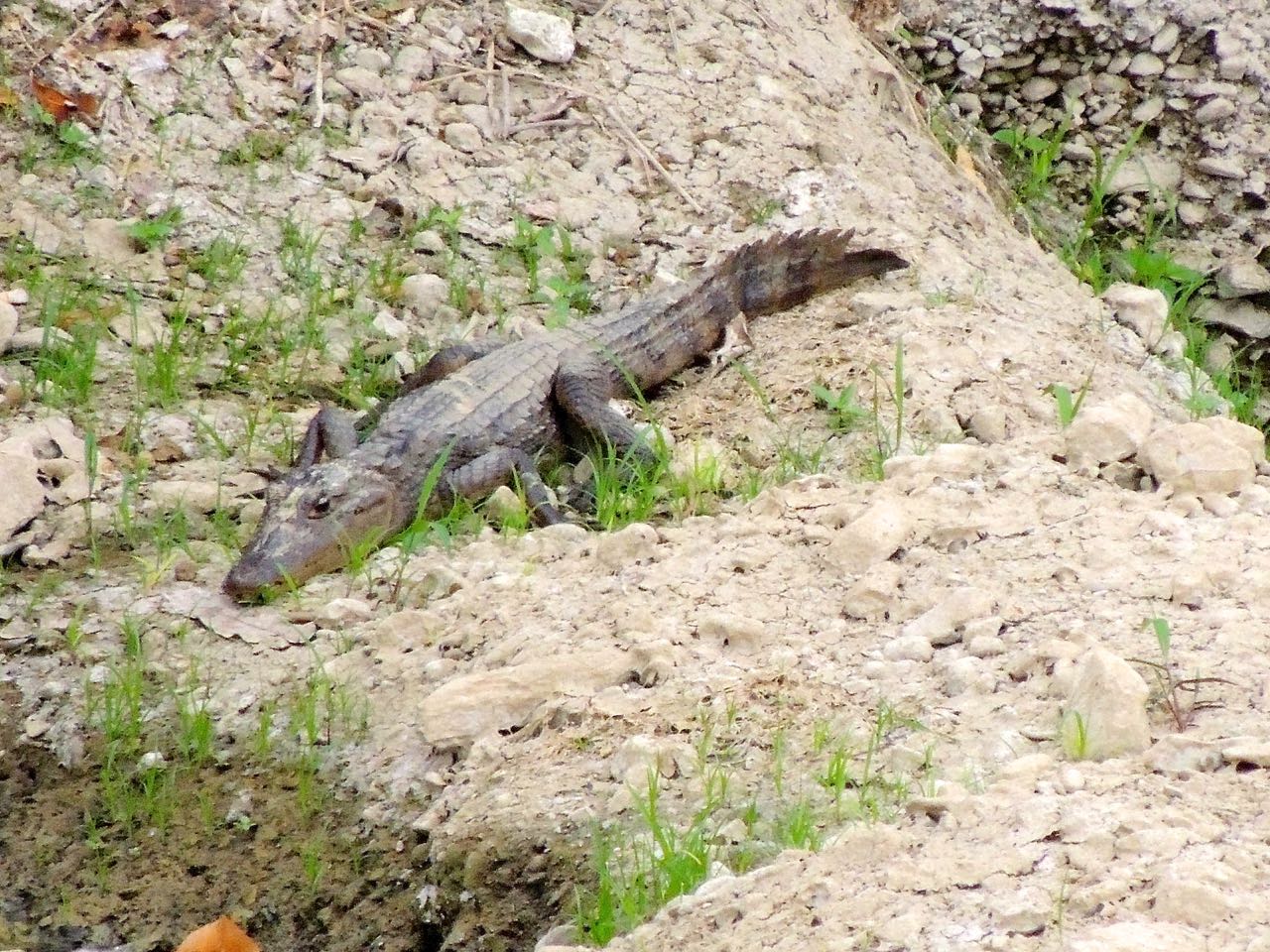 American Crocodile - Photo by William Young
American Crocodile - Photo by William Young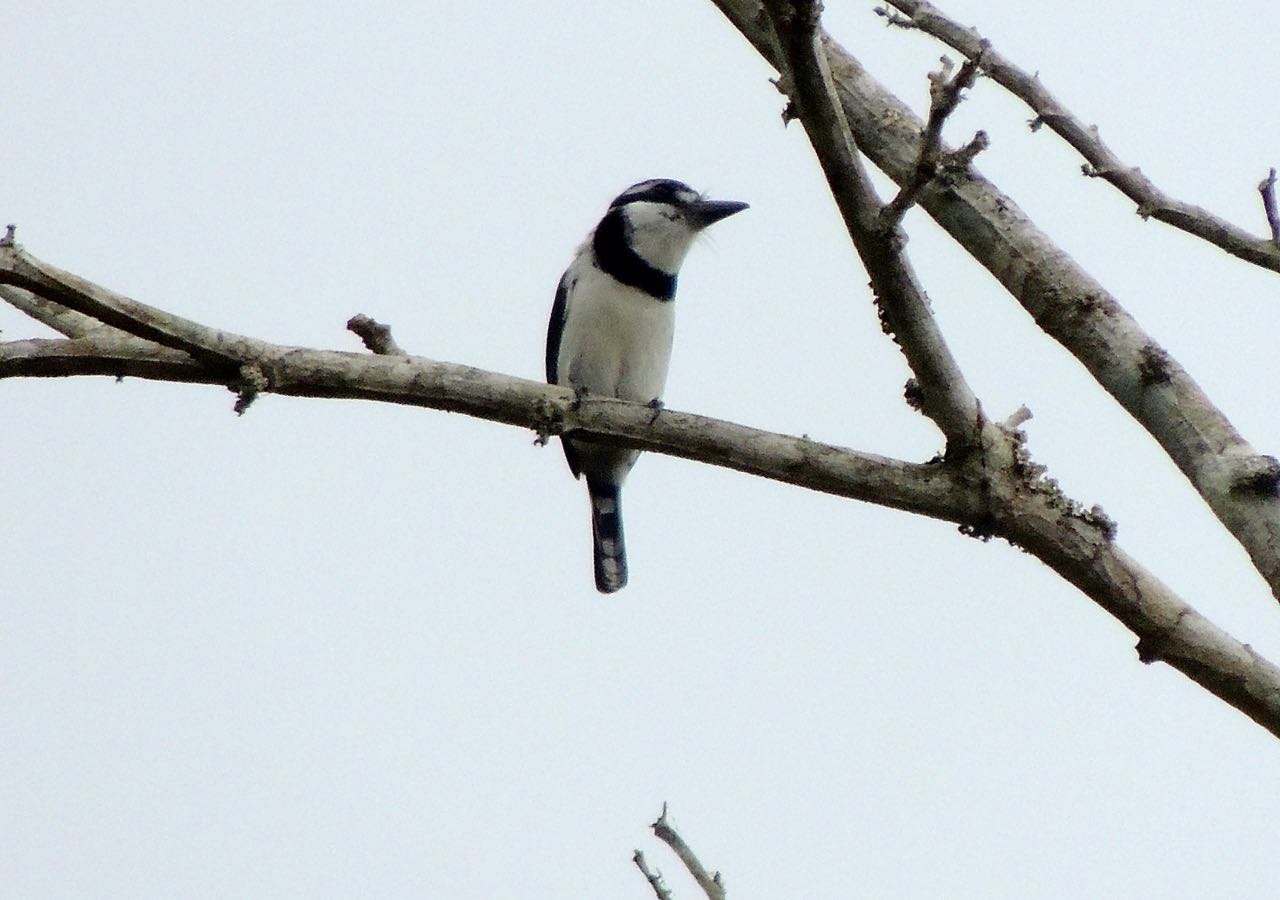 Pied Puffbird - Photo by William Young
Pied Puffbird - Photo by William Young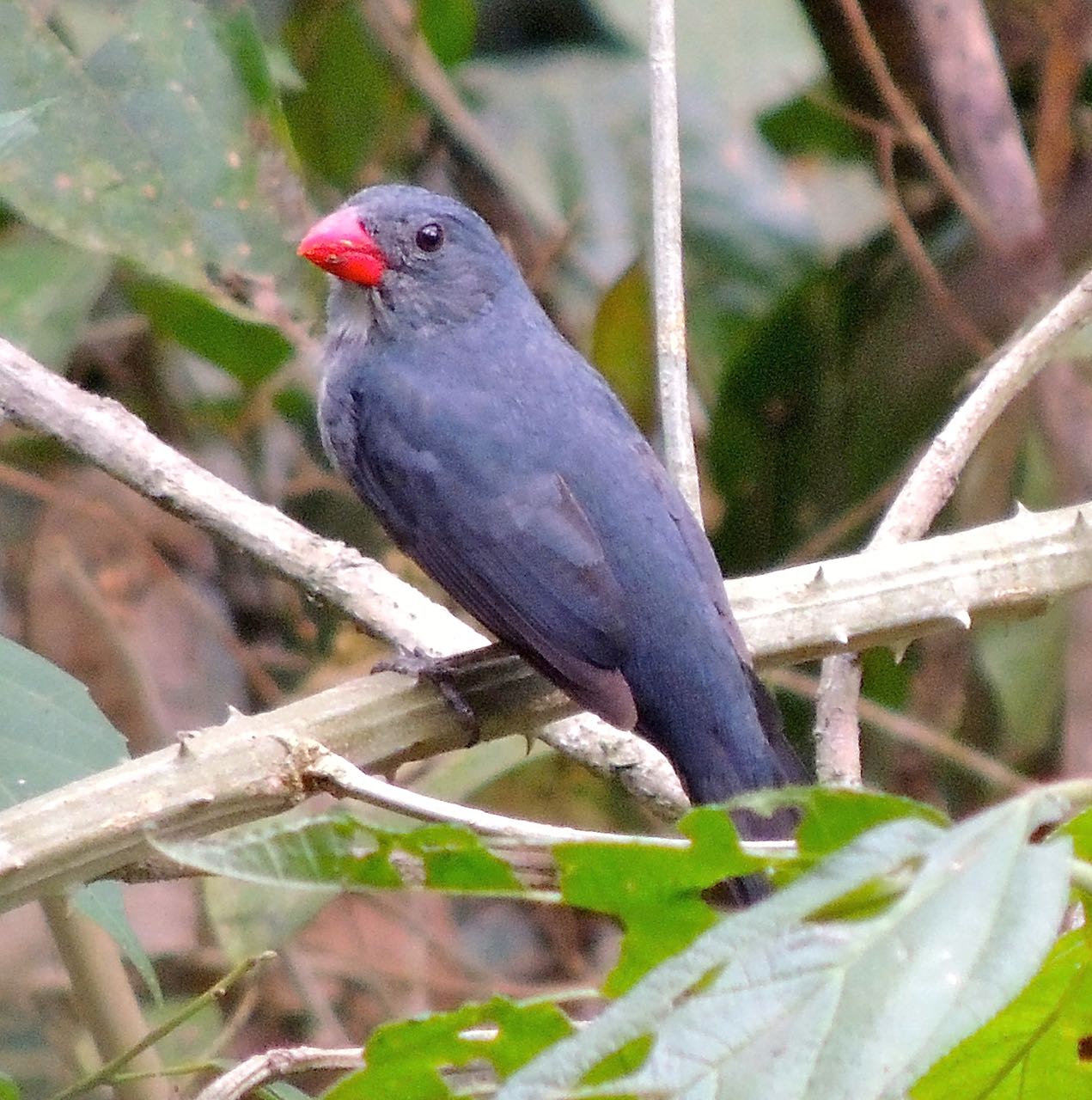 Slate-colored Grosbeak - Photo by William Young
Slate-colored Grosbeak - Photo by William YoungWe stopped for lunch in Torti, and two Scaly-breasted Hummingbirds faced off against each other at the feeders. We saw a lot of the same species we had seen when we stopped here on the way to Canopy Camp, including Black-throated Mangos. As we got nearer to Panama City, I saw some of my favorite pedestrian crossing signs &mdash: they feature a stick figure with a round bottom. We drove past the Summit Gardens, which was mobbed because today was Harpy Eagle Day 2016. We got to Canopy Tower at about 4, and the Howler Monkeys were howling. When I went up to the observation deck, I saw a Brown-throated Three-toed Sloth. I had not seen one during the week when I was here, and I was glad to see this male again. He did a lot of scratching.
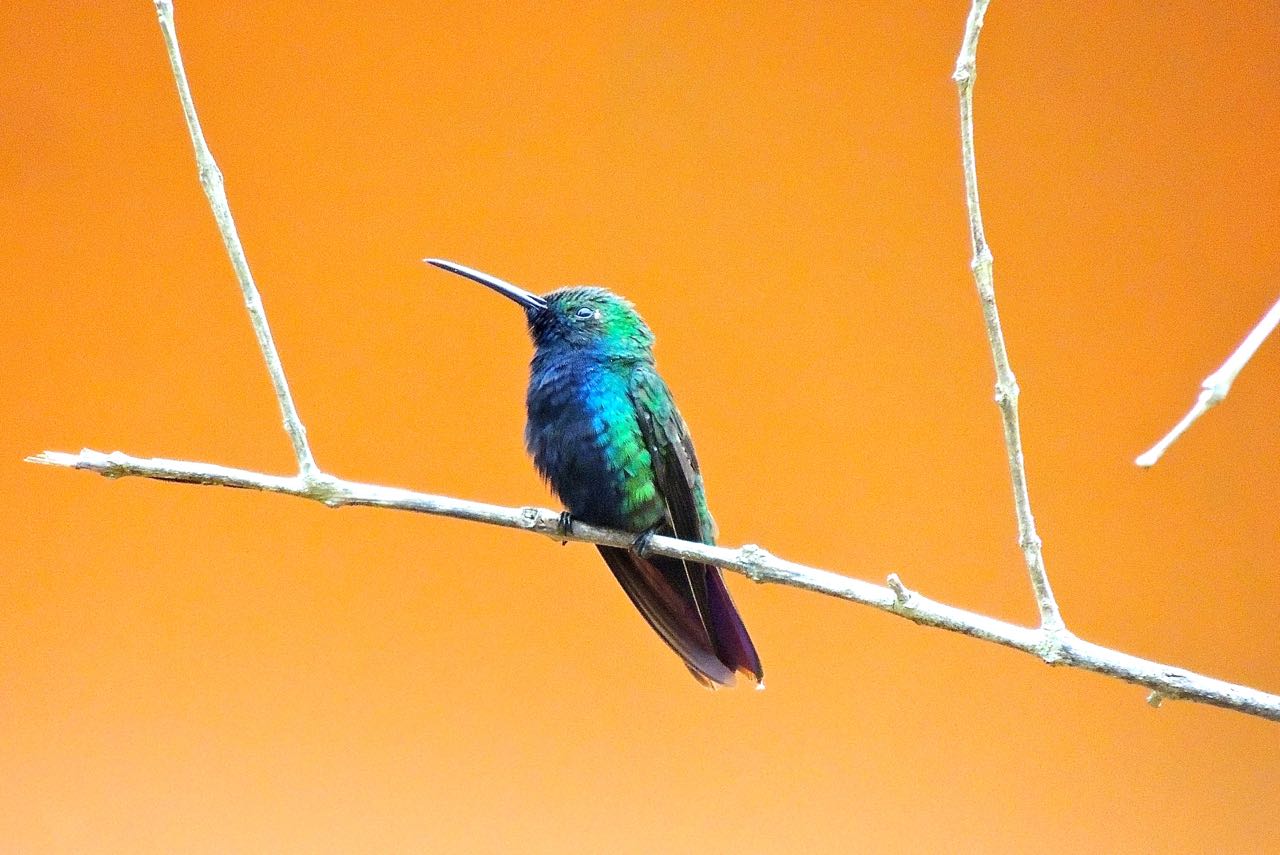 Black-throated Mango Male - Photo by William Young
Black-throated Mango Male - Photo by William Young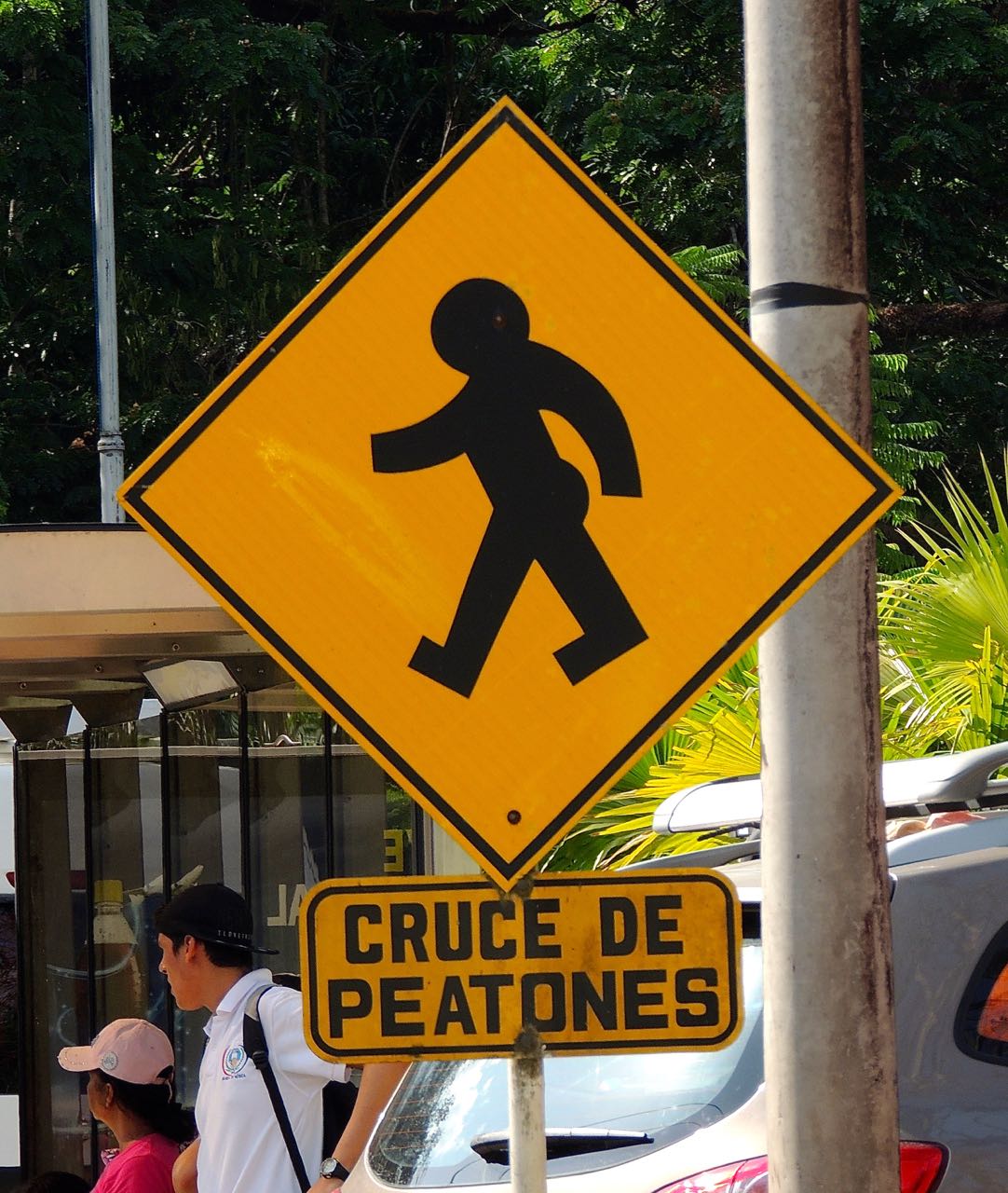 Pedestrian Crossing Sign - Photo by William Young
Pedestrian Crossing Sign - Photo by William Young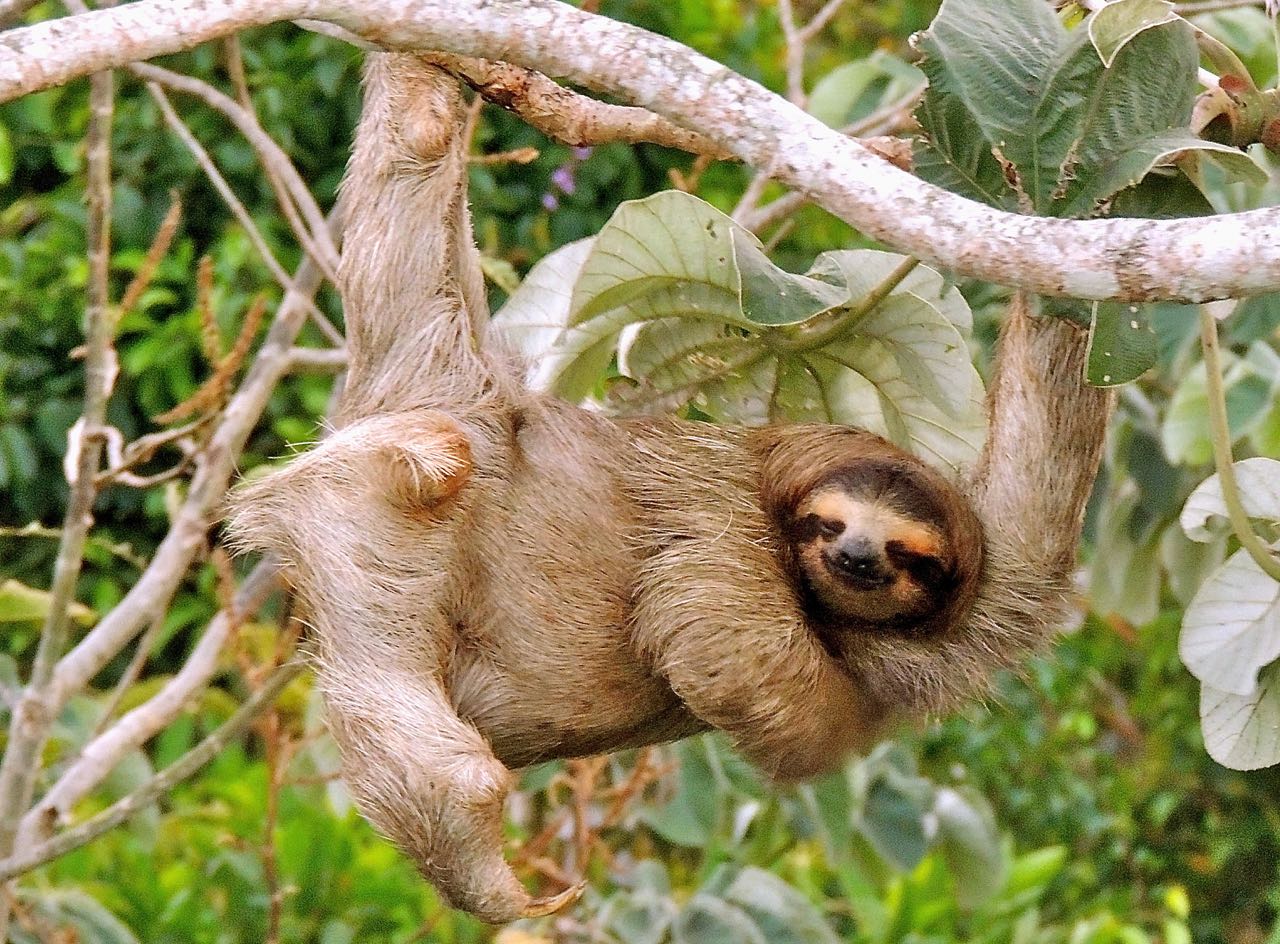 Brown-throated Three-toed Sloth - Photo by William Young
Brown-throated Three-toed Sloth - Photo by William Young
April 11A fitting way to spend my final full day in Panama was to go to the Pipeline Road with Michael Castro. We stopped at the Ammo Ponds on the way and saw a lot of birds, including three vocal and active Ringed Kingfishers. Two Black-bellied Whistling-Ducks flew over. On the Pipeline Road, we saw all five of the possible trogon species in the area: Gartered, White-tailed, Black-throated, Black-tailed, and Slaty-tailed. In one spot, we saw three of these species close together. One of the Black-throated Trogons was a young bird not in full adult plumage and still had a brown tail. The Black-tailed and the Slaty-tailed are large trogons, with the Black-tailed having a yellow bill, and the Slaty-tailed having a red bill. We also saw a Broad-billed Motmot. Michael spotted a Fer de Lance down near some water. We saw a large Spectacled and a fairly large Basilisk. Some Scarlet-rumped Caciques were in the trees, as were Purple-throated Fruitcrows. A Slate-colored Grosbeak sang incessantly, and we heard the mournful song of the Rufous Mourner. A Gray Elaenia was in the treetops. There were no ant swarms, but we saw a lot of different antbirds, including Spotted Antbird, Black-crowned Antshrike. Russet Antshrike, Spot-crowned Antvireo, White-flanked Antwren, and Dot-winged Antwren. We saw 4 warblers: Chestnut-sided, Bay-breasted, Black-and-white, and Northern Waterthrush. We also saw an Eastern Wood-Pewee, a Swainson’s Thrush, and a Red-eyed Vireo. I had a nice look at a Cinnamon Woodpecker. We ended the trip by looking at the Great Potoo and her little white chick.
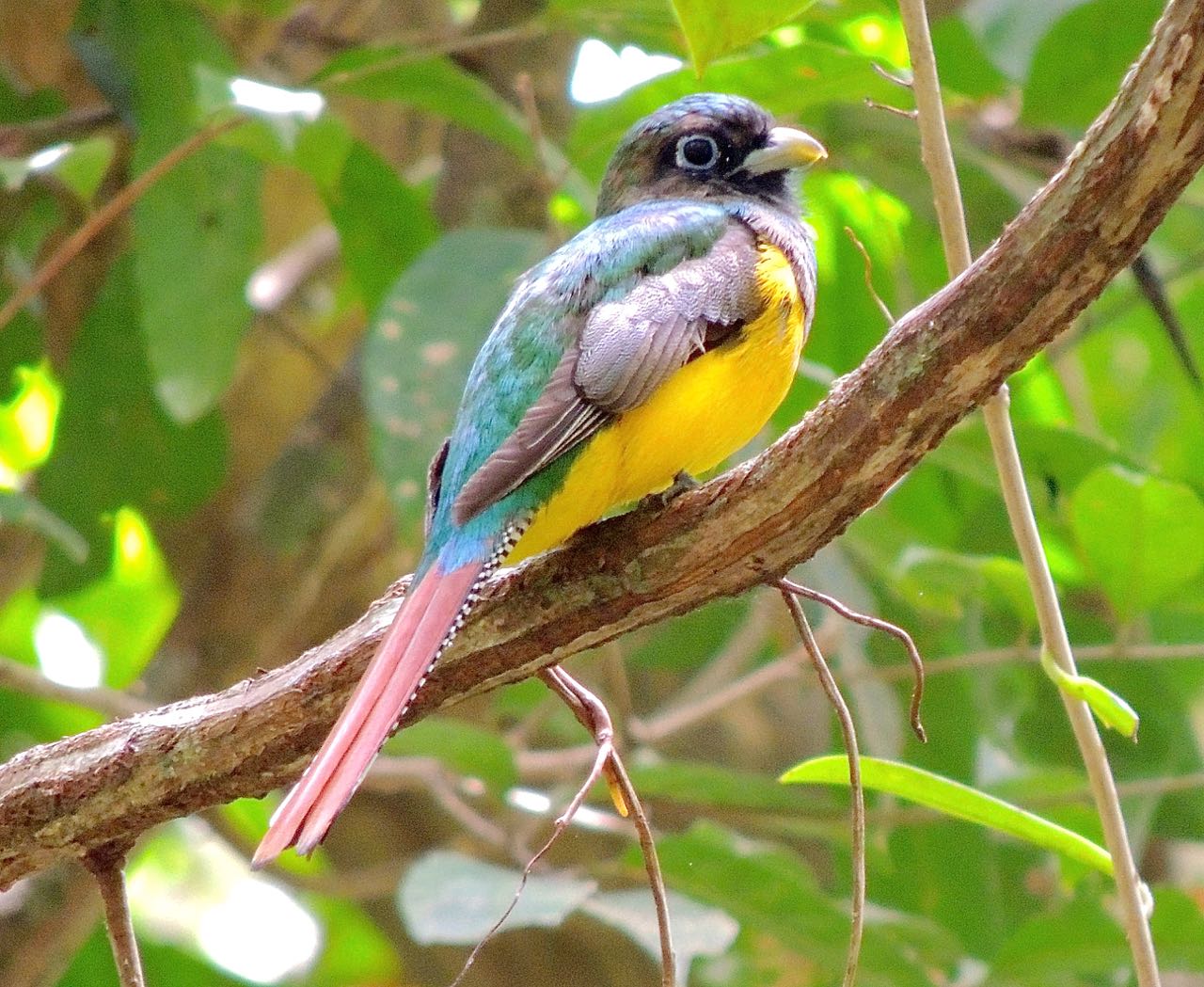 Black-throated Trogon - Photo by William Young
Black-throated Trogon - Photo by William Young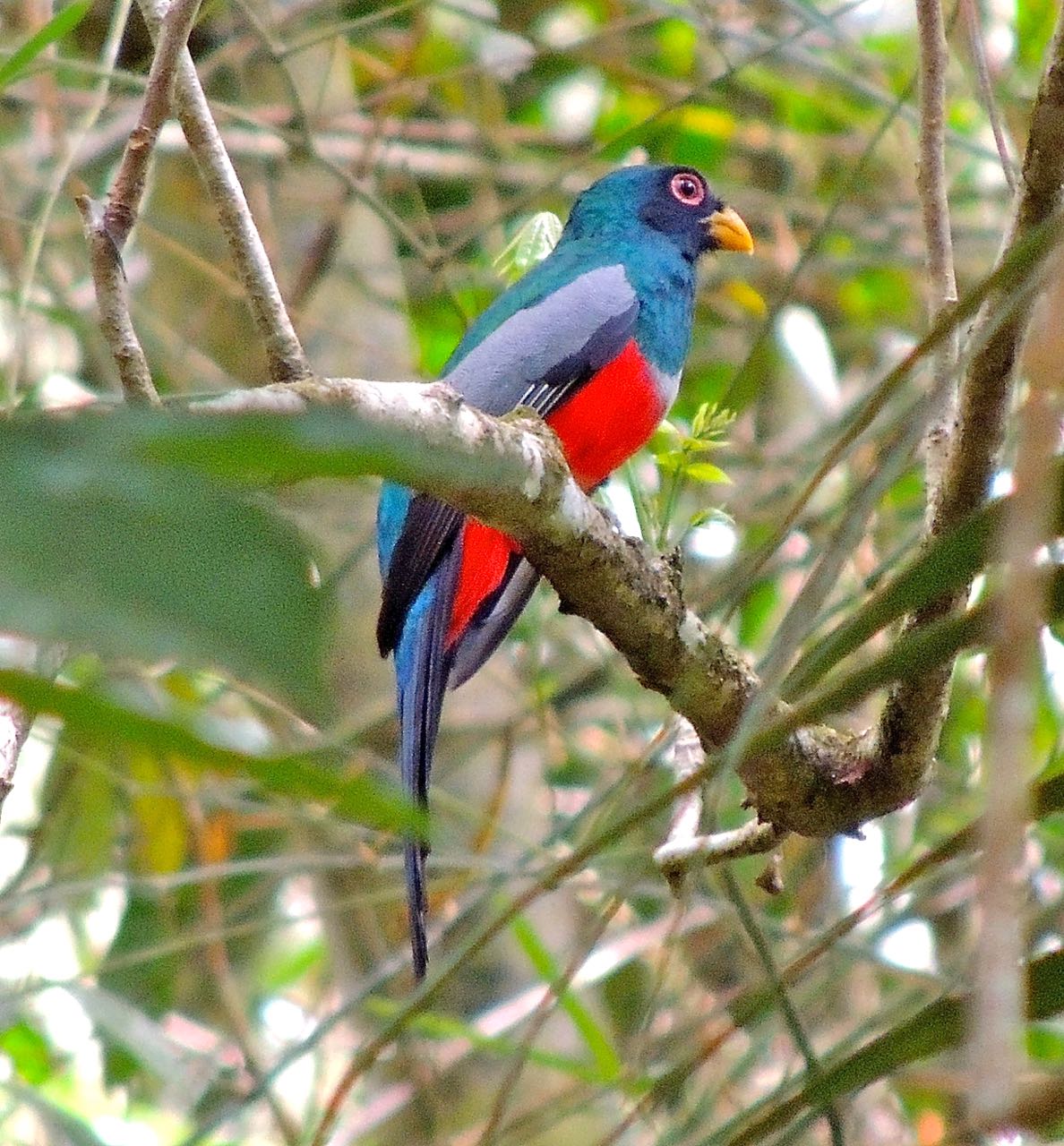 Black-tailed Trogon - Photo by William Young
Black-tailed Trogon - Photo by William Young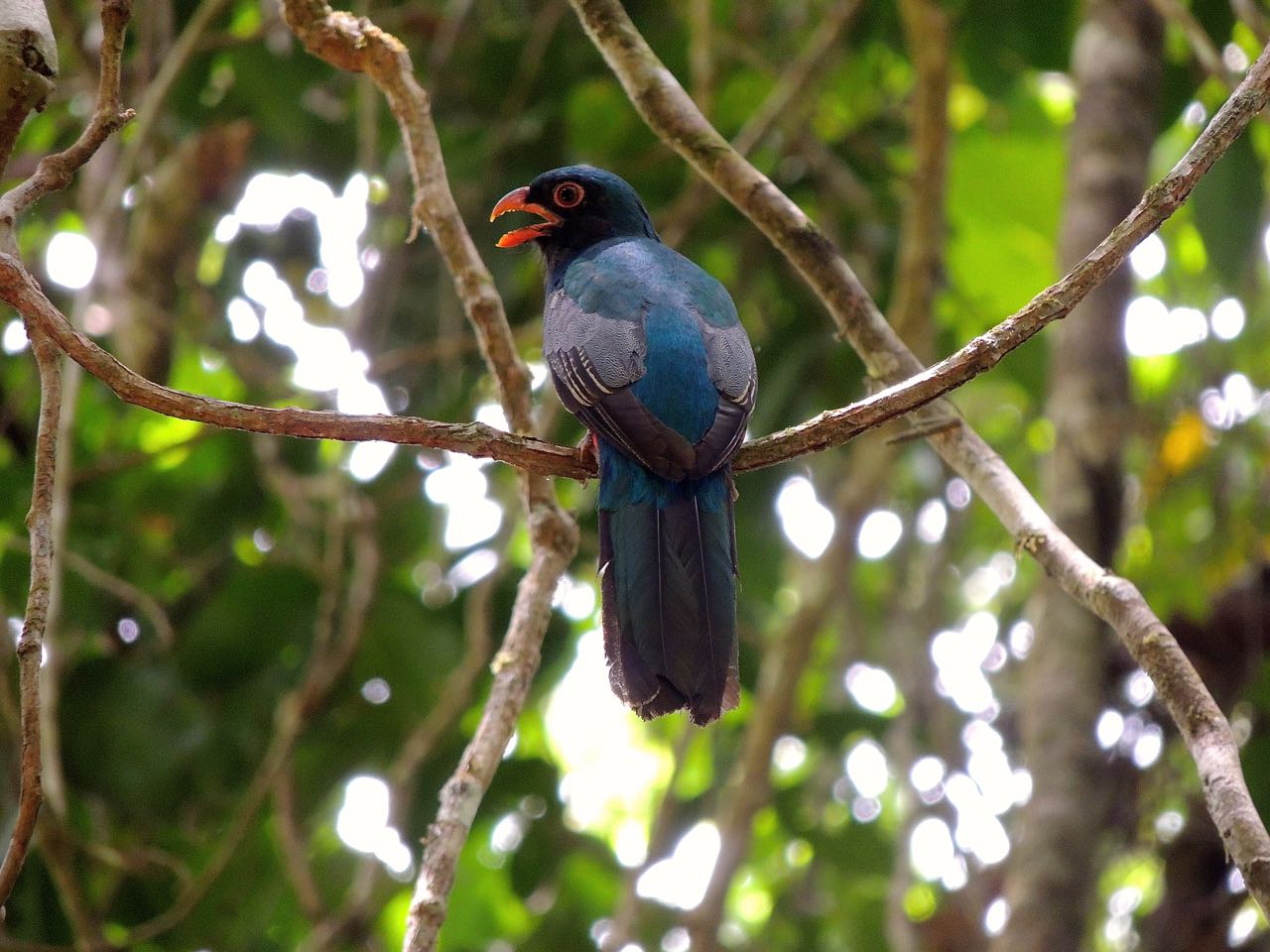 Slaty-tailed Trogon - Photo by William Young
Slaty-tailed Trogon - Photo by William Young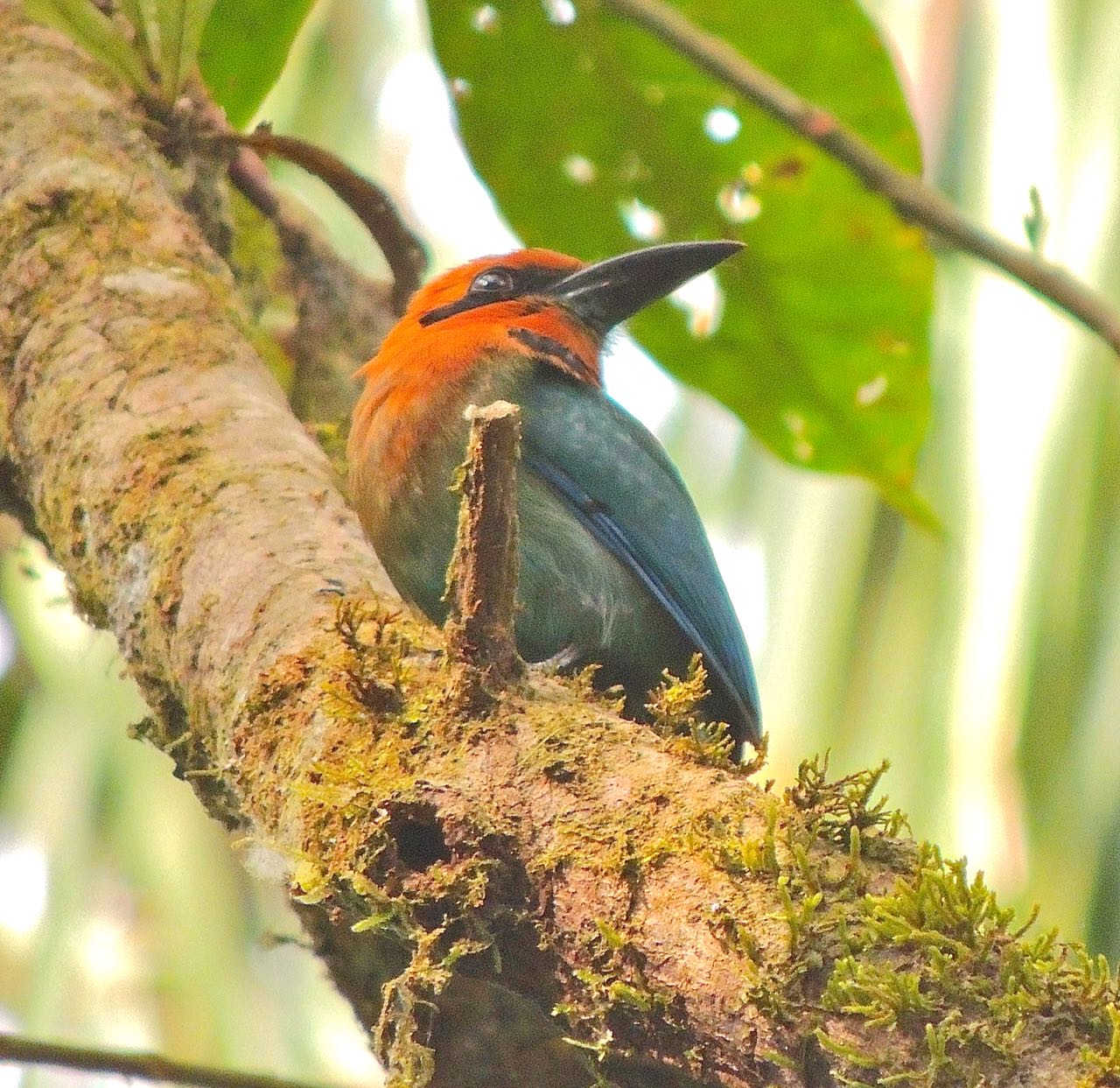 Broad-billed Motmot - Photo by William Young
Broad-billed Motmot - Photo by William Young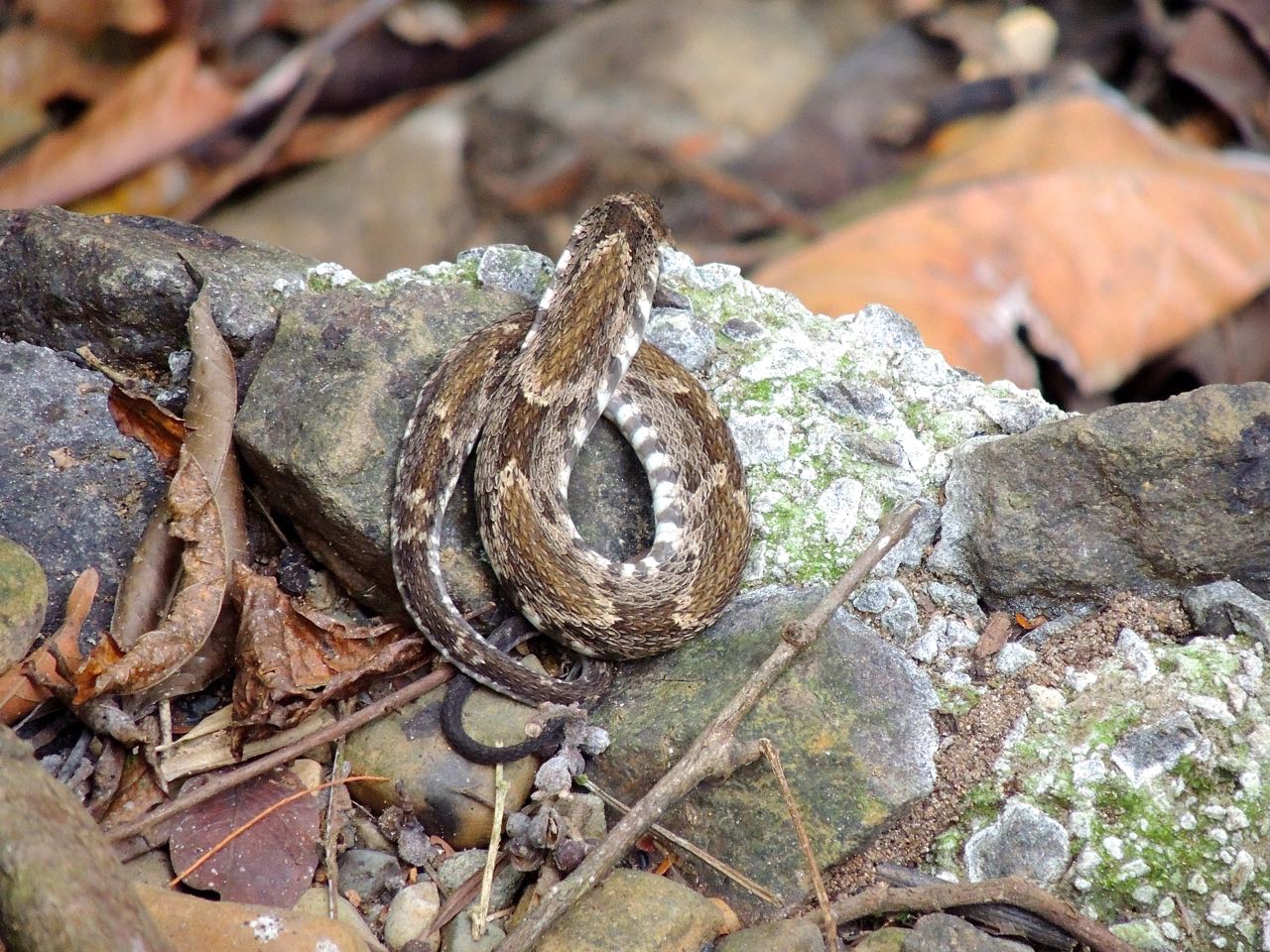 Fer de Lance - Photo by William Young
Fer de Lance - Photo by William Young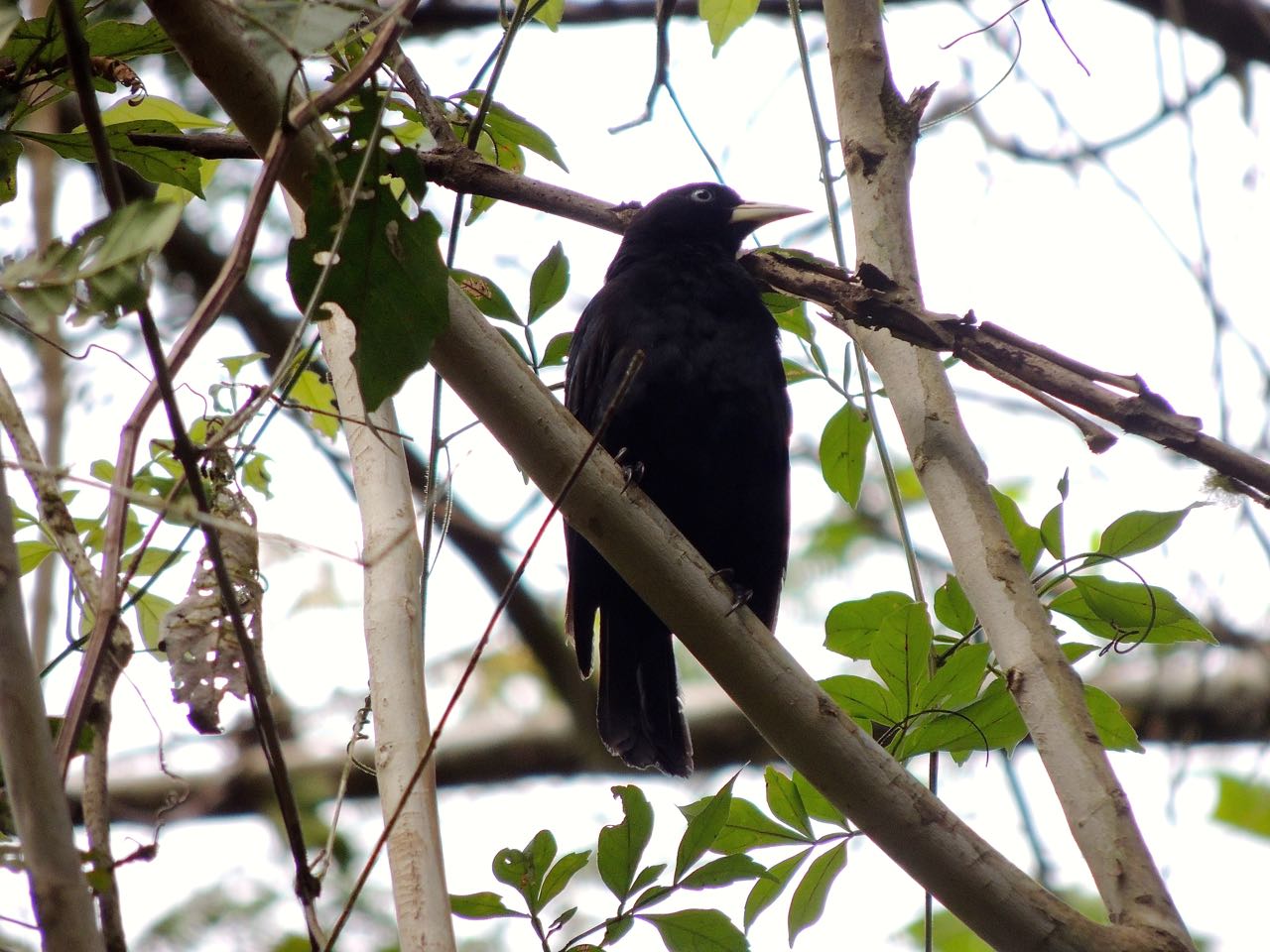 Scarlet-rumped Cacique - Photo by William Young
Scarlet-rumped Cacique - Photo by William Young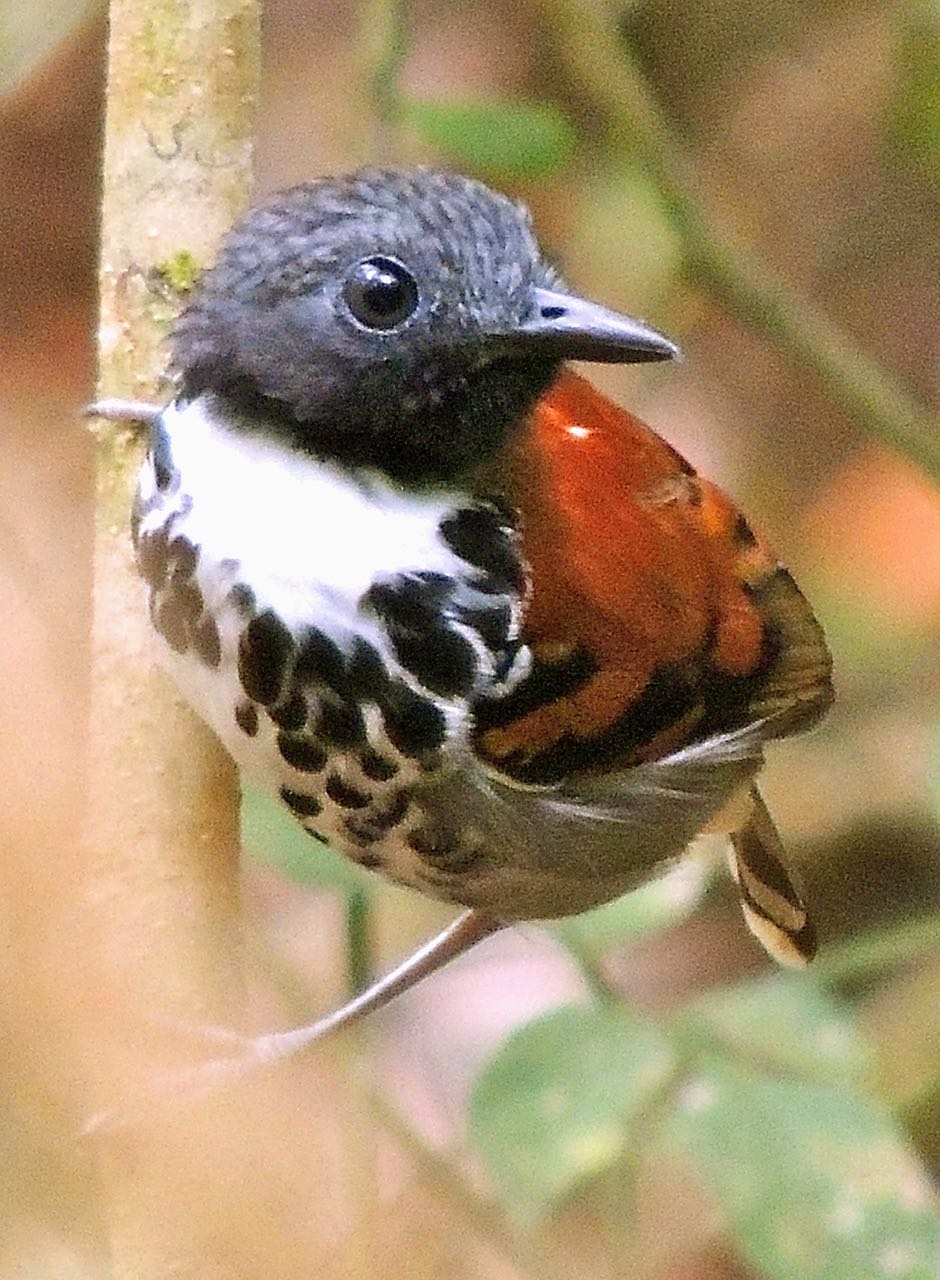 Spotted Antbird Male - Photo by William Young
Spotted Antbird Male - Photo by William Young
April 12I went to the observation deck at Canopy Tower for one final time. I saw a Lesser Greenlet, Keel-billed Toucan, and a Mealy Parrot. I left for the airport at 7:20. The traffic was not bad, and I arrived in plenty of time. Most of the plane was filled with members of the Panama cricket team. When I arrived in Belize, I was met by a pilot who flew me in a 6-seater plane to Chan Chich Lodge. We flew relatively low, and I saw about 10 different fires burning.
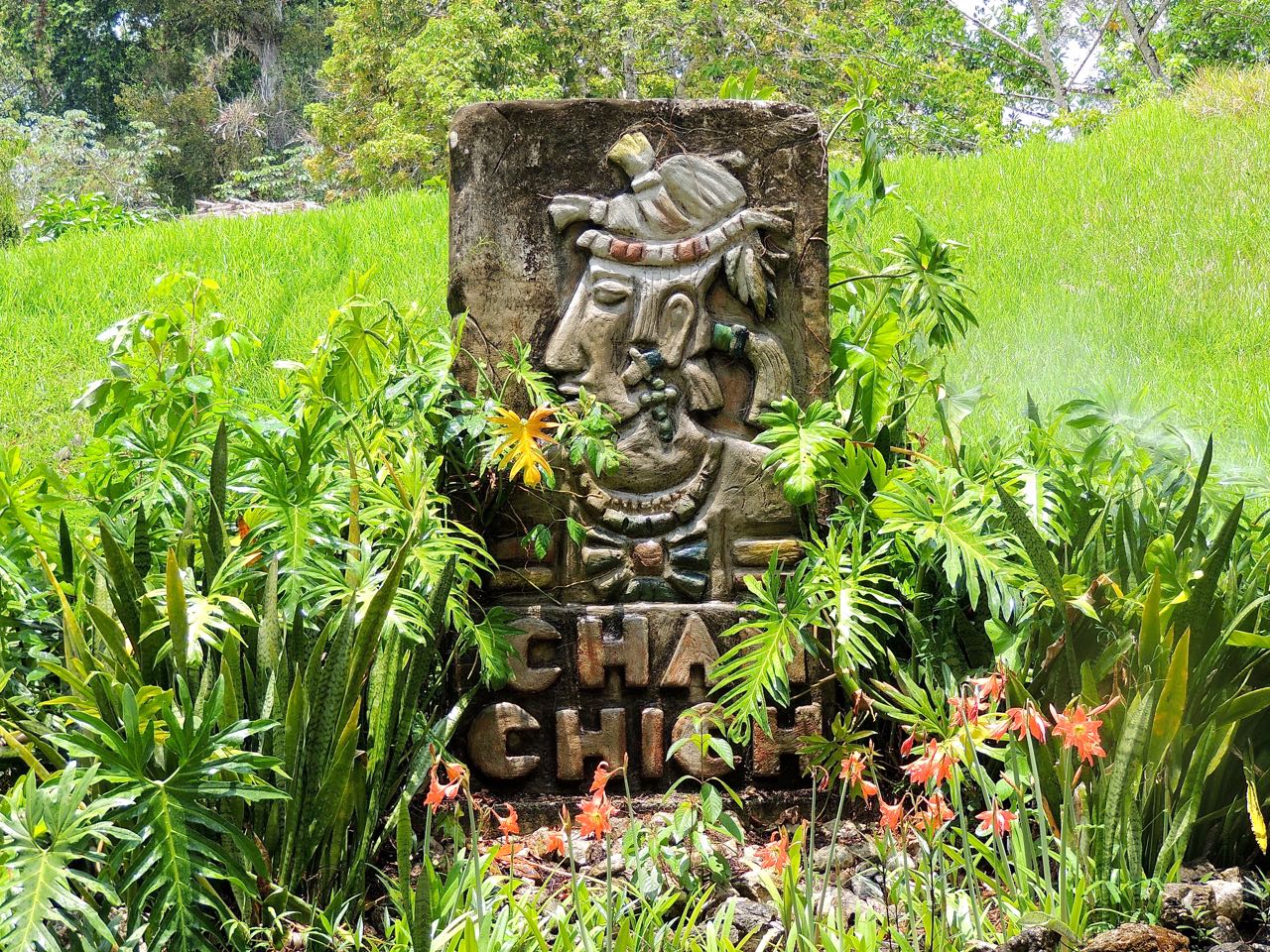 Chan Chich Lodge - Photo by William Young
Chan Chich Lodge - Photo by William YoungI dropped off my luggage in my room and immediately went birding with a guide named Luis at 3:30. We had a pleasant walk on the beautiful grounds here. A pair of Golden-hooded Tanagers was bathing in a fountain. On a lawn not far from the pool, I saw a male Blue Bunting; he is dark blue with black trim. A Red-lored Parrot was in a tree in the same area, eating the seeds out of a Cojoton fruit; the inside of the fruit is very sticky. A male and female Red-capped Manakin hopped on a branch, and nearby, a Plumbeous Kite perched high on a bare branch. I saw six species of warblers: Magnolia, Worm-eating, Yellow, Black-and-white, Hooded (male), and a Northern Waterthrush. The Worm-eater came down to bathe. Other migrants included Gray Catbird, Summer Tanager, Baltimore Oriole, and Yellow-bellied Flycatcher. I saw a pair of Black-cowled Orioles, who are yellow, with a black head. Melodious Blackbirds are about the size of a Rusty Blackbird. The Yellow-winged Tanager looks like a Plain-colored with a little yellow spot on its wing. One of the most endearing aspects of Chan Chich is that Ocellated Turkeys wander all over the grounds, and a group of them roosted near my room. Imagine one of our Wild Turkeys who has gone to a make-up artist and you'll have an idea what they look like. They have little warts on their head.
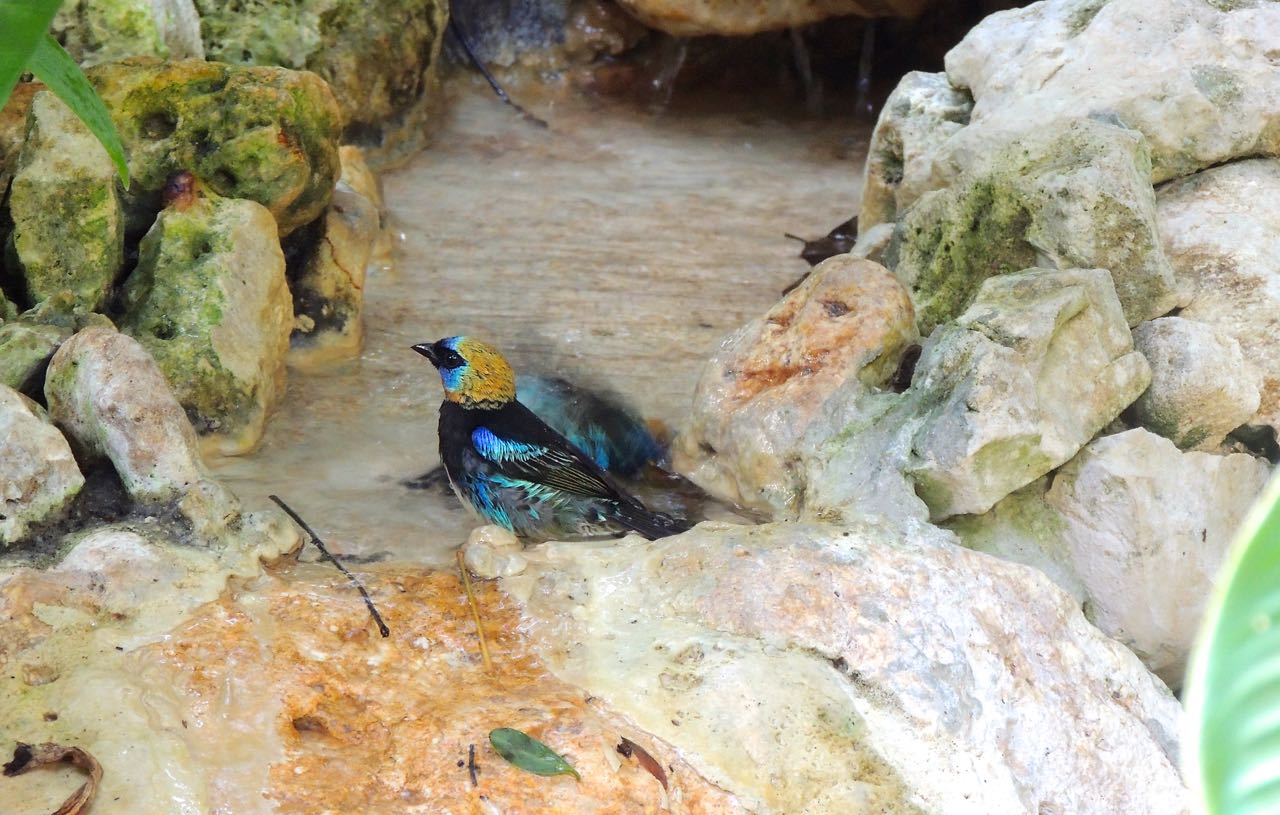 Golden-hooded Tanager - Photo by William Young
Golden-hooded Tanager - Photo by William Young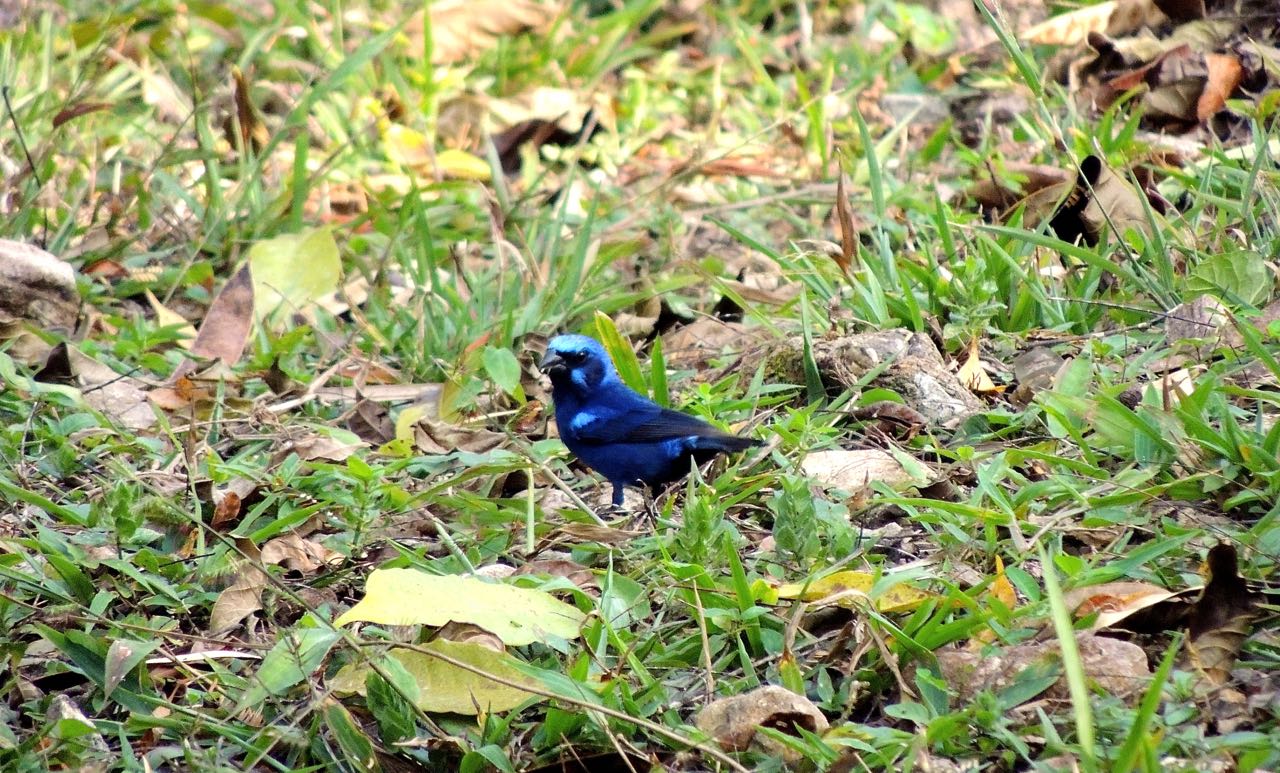 Blue Bunting - Photo by William Young
Blue Bunting - Photo by William Young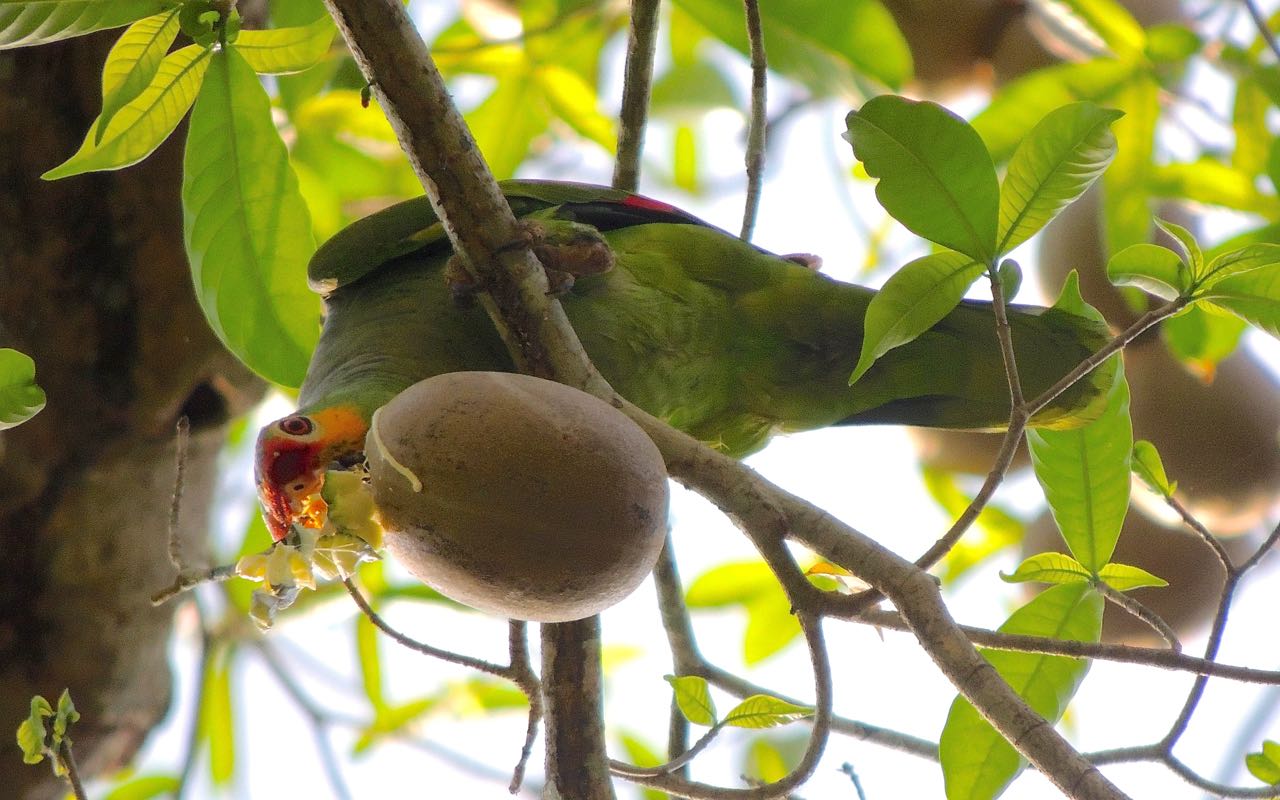 Red-lored Parrot Eating Cojoton Fruit - Photo by William Young
Red-lored Parrot Eating Cojoton Fruit - Photo by William Young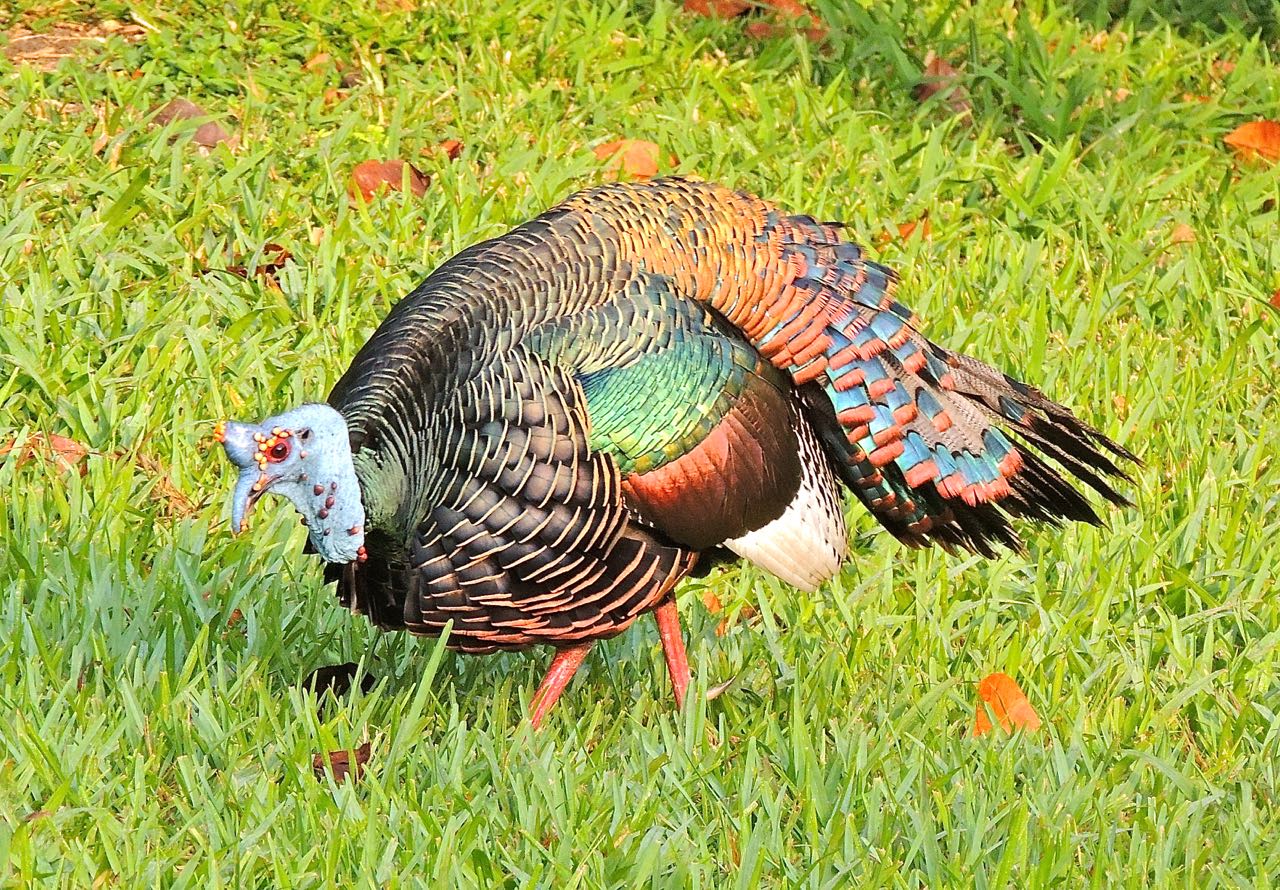 Ocellated Turkey - Photo by William Young
Ocellated Turkey - Photo by William Young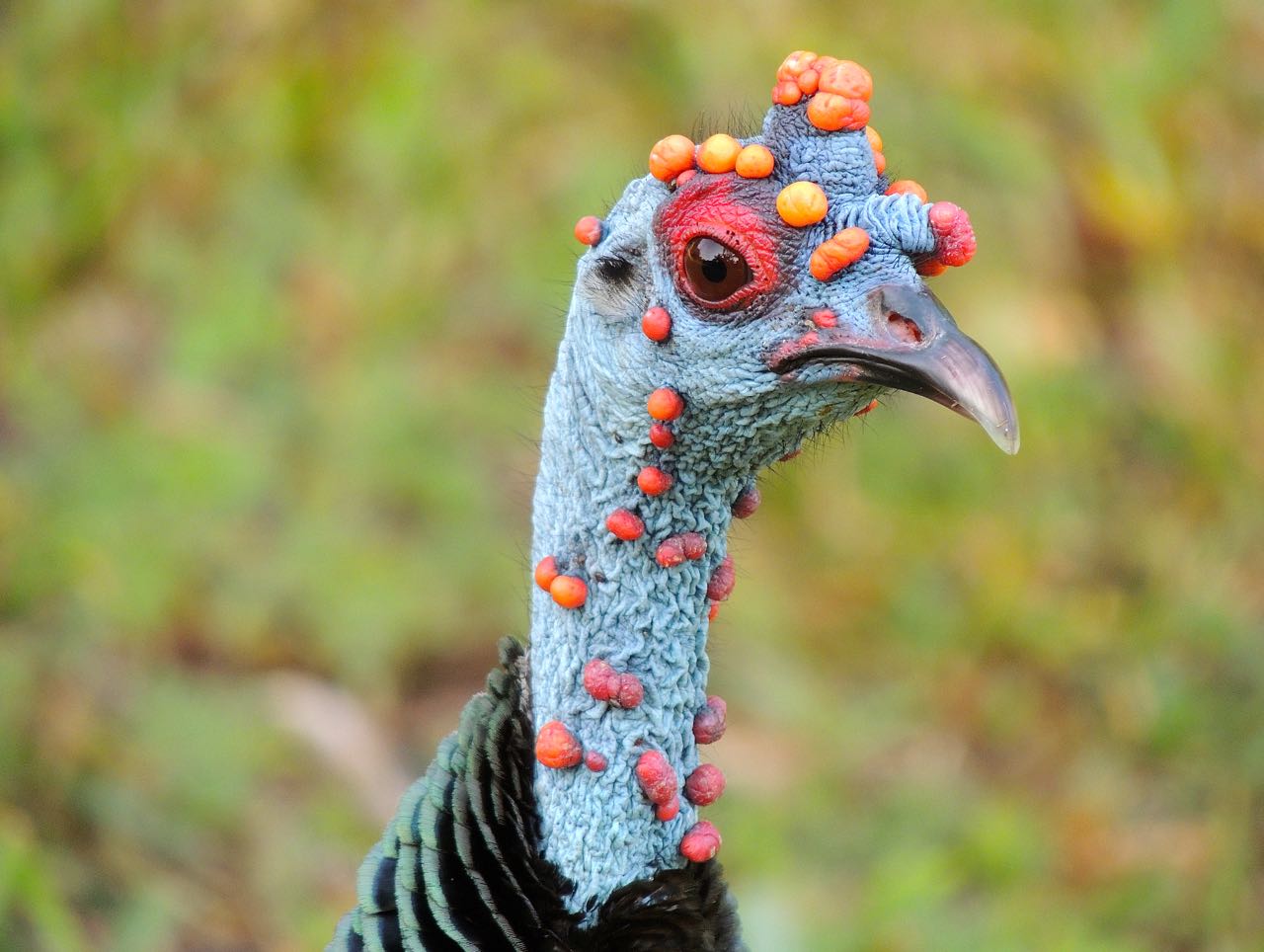 Ocellated Turkey - Photo by William Young
Ocellated Turkey - Photo by William YoungTonight we went spotlighting. Within about 2 minutes, we saw an Ocelot. It appeared to be about the size of a bobcat, with heavy spotting. We saw a Red-backed Tarantula, who was quite large, and a False Coral Snake, who has yellow stripes. Among the birds we saw were a pair of Northern Potoos, a Wood Thrush sleeping in a tree, a Brown Jay trying to do the same, a juvenile Yellow-crowned Night-Heron in a field, and a lot of Pauraques. We saw a Gray Fox behind a fence, and a lot of White-tailed Deer were in the fields.
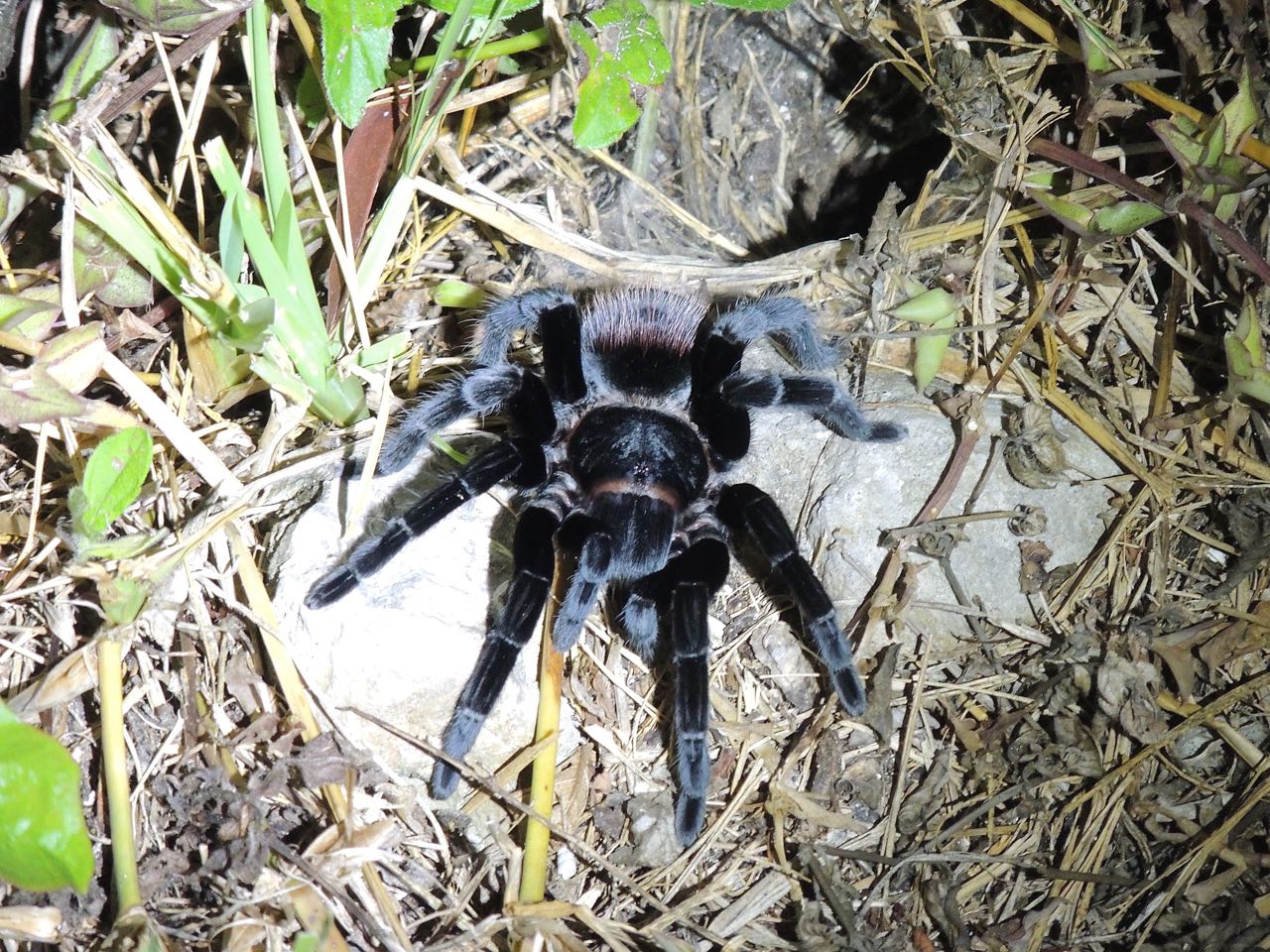 Red-backed Tarantula - Photo by William Young
Red-backed Tarantula - Photo by William Young
April 13Pauraques were right outside my room, and they call a lot throughout the night. This morning, I was awakened a bit after 5:30 by a male Ocellated Turkey displaying near my front door. I grabbed my camera and shot more than six minutes of video of a pair mating. The males and females have similar plumage, but the females are smaller. These birds have iridescent feathering and are gorgeous when seen in the right light. Throughout the morning, I heard the booming sound made by the males. I saw a pair of Crested Guans in a tree. They are more arboreal than the turkeys, who roost in trees at night, but spend most of their time on the ground. We found a pair of Gray-necked Wood-Rails, who foraged along the edge of some woods. Near the water, we saw a pair of Rufous-tailed Jacamars, who were flycatching. In the same area was a White-throated Thrush. One sat in a tree long enough for me to see the white throat and eyering. A pair of Yellow-olive Flycatchers were building a nest near where the jacamars were perched, and a Northern Waterthrush foraged near the water. A pair of Yellow-throated Euphonias were eating in a custard apple tree. We found a cojoton tree containing three species of woodpeckers. The Pale-billed is large and has an all red head. The Lineated is large and has a red crest. And the smaller Chestnut-colored is a lovely chestnut color with a tan crest. The cojoton is called the glue tree, because its fruit has a sticky substance that can be used as glue.
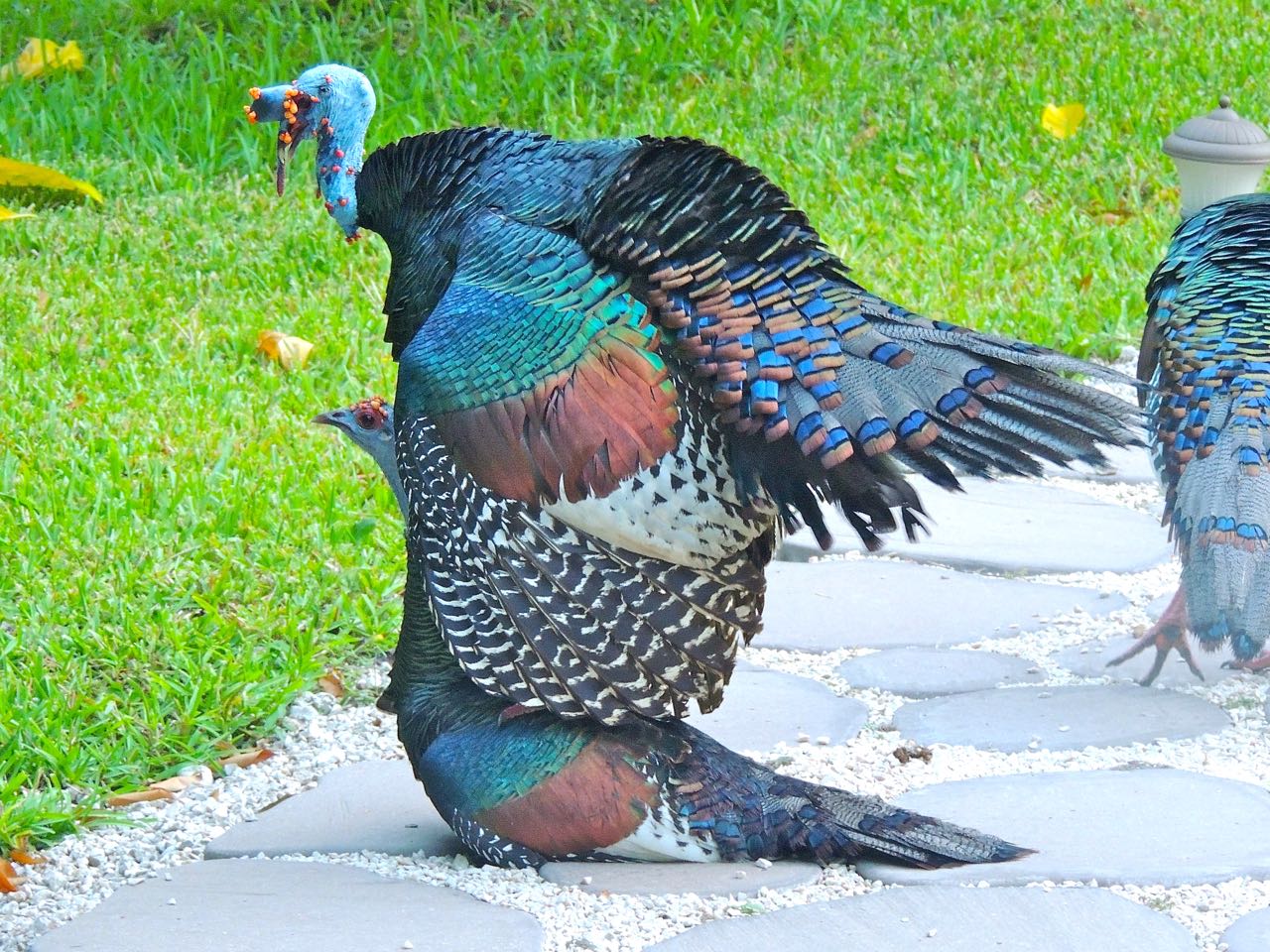 Ocellated Turkeys Mating - Photo by William Young
Ocellated Turkeys Mating - Photo by William Young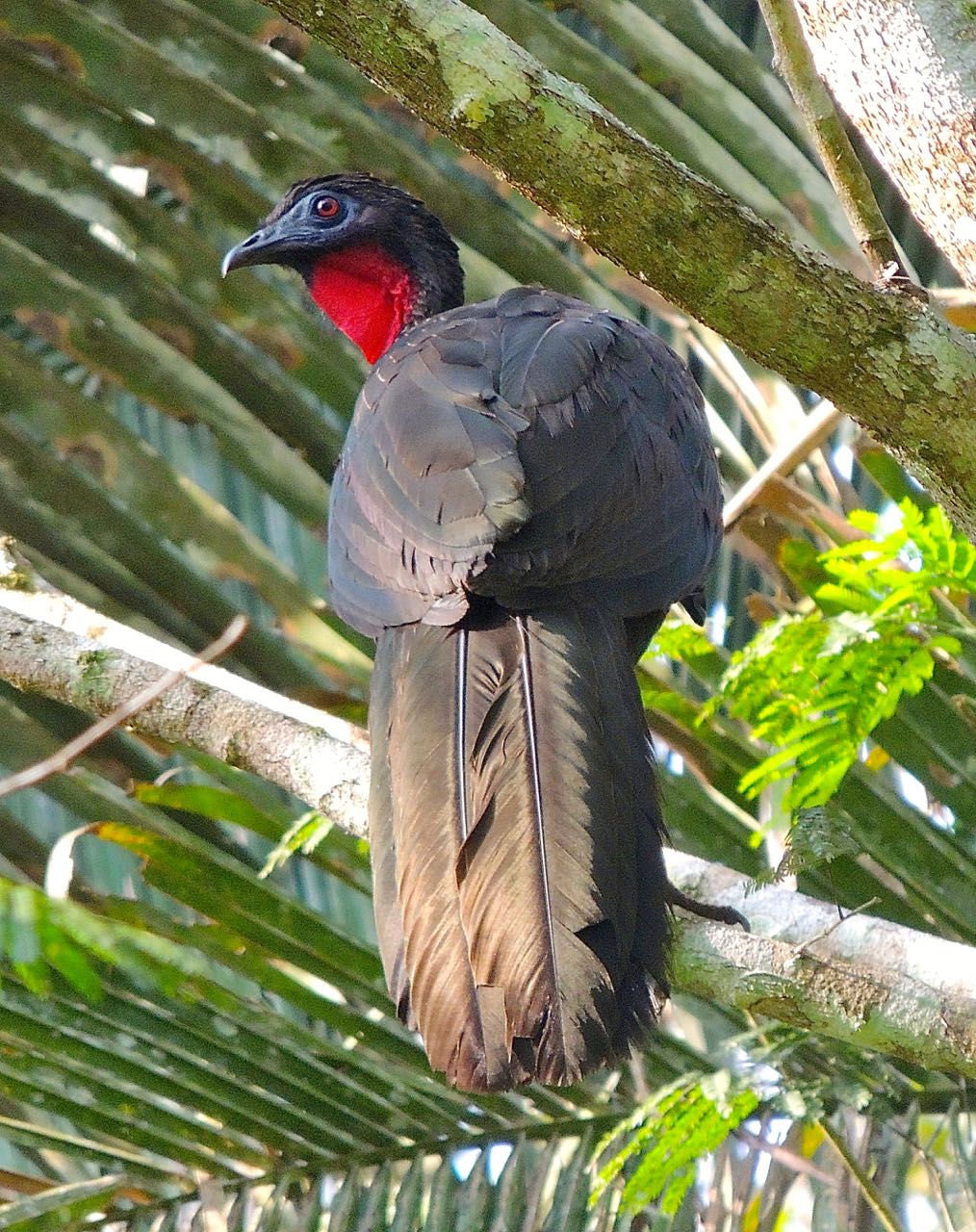 Crested Guan - Photo by William Young
Crested Guan - Photo by William Young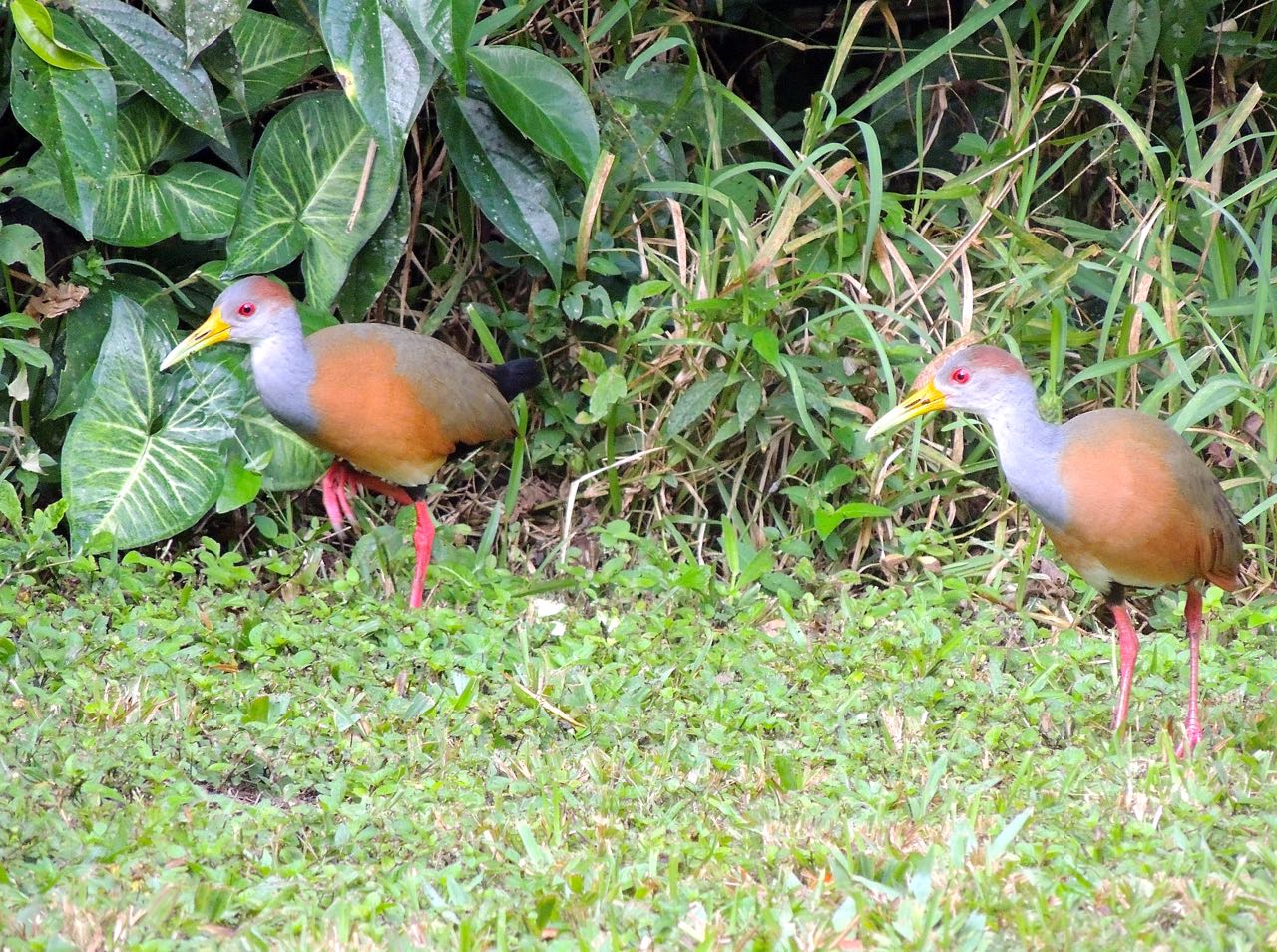 Gray-necked Wood-Rails - Photo by William Young
Gray-necked Wood-Rails - Photo by William Young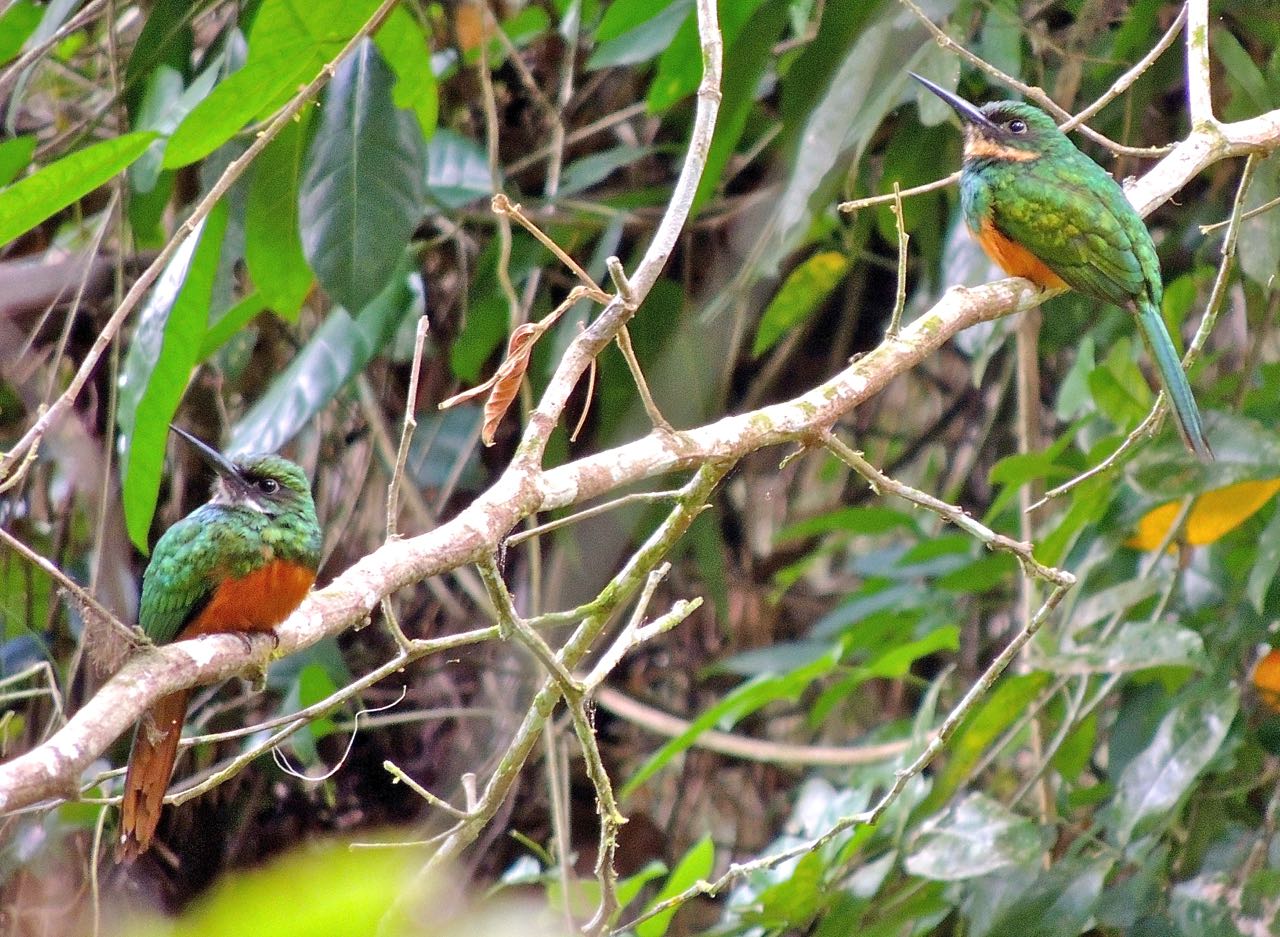 Rufous-tailed Jacamar Male and Female - Photo by William Young
Rufous-tailed Jacamar Male and Female - Photo by William Young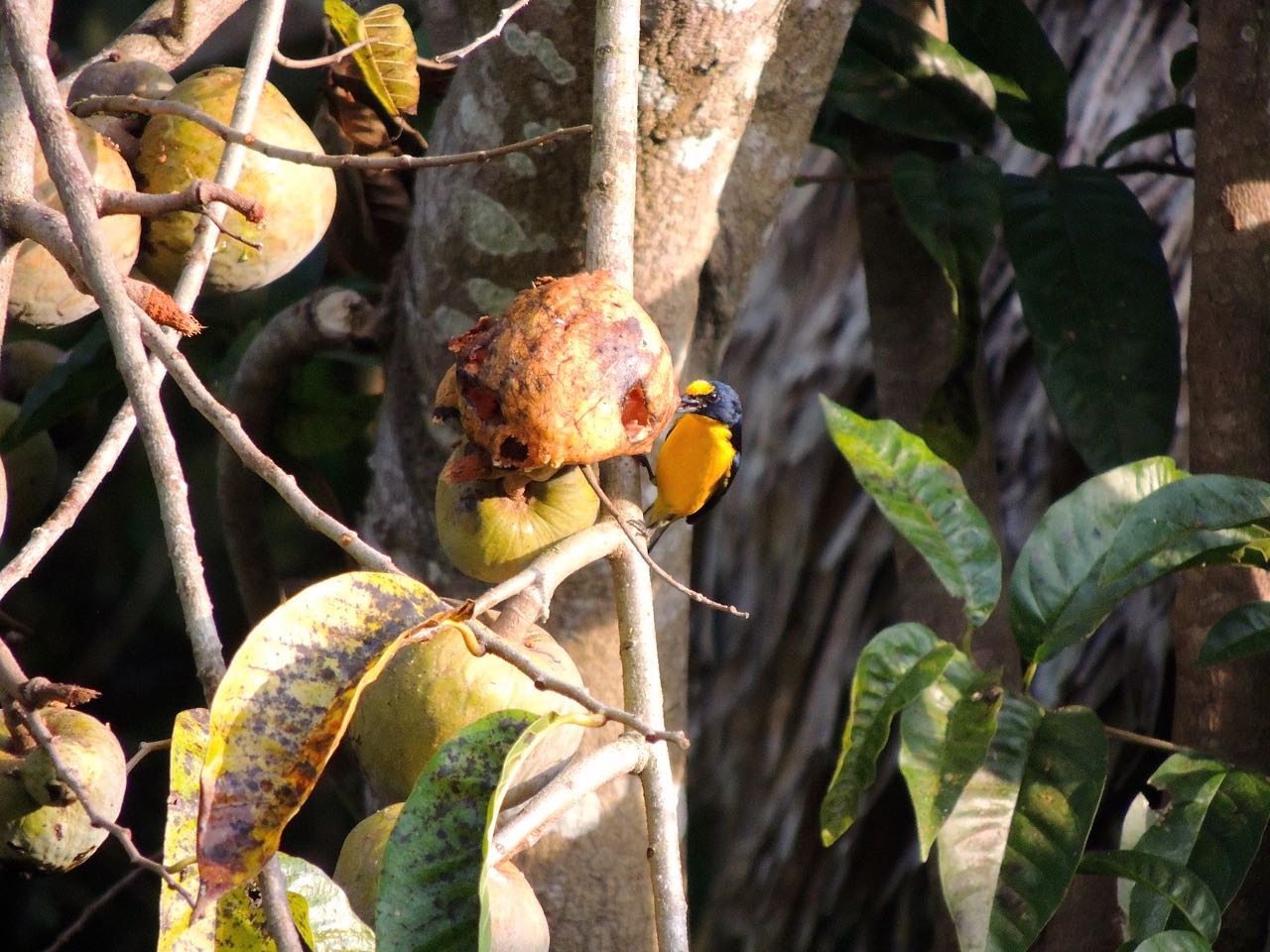 Yellow-throated Euphonia Eating Custard Apple - Photo by William Young
Yellow-throated Euphonia Eating Custard Apple - Photo by William Young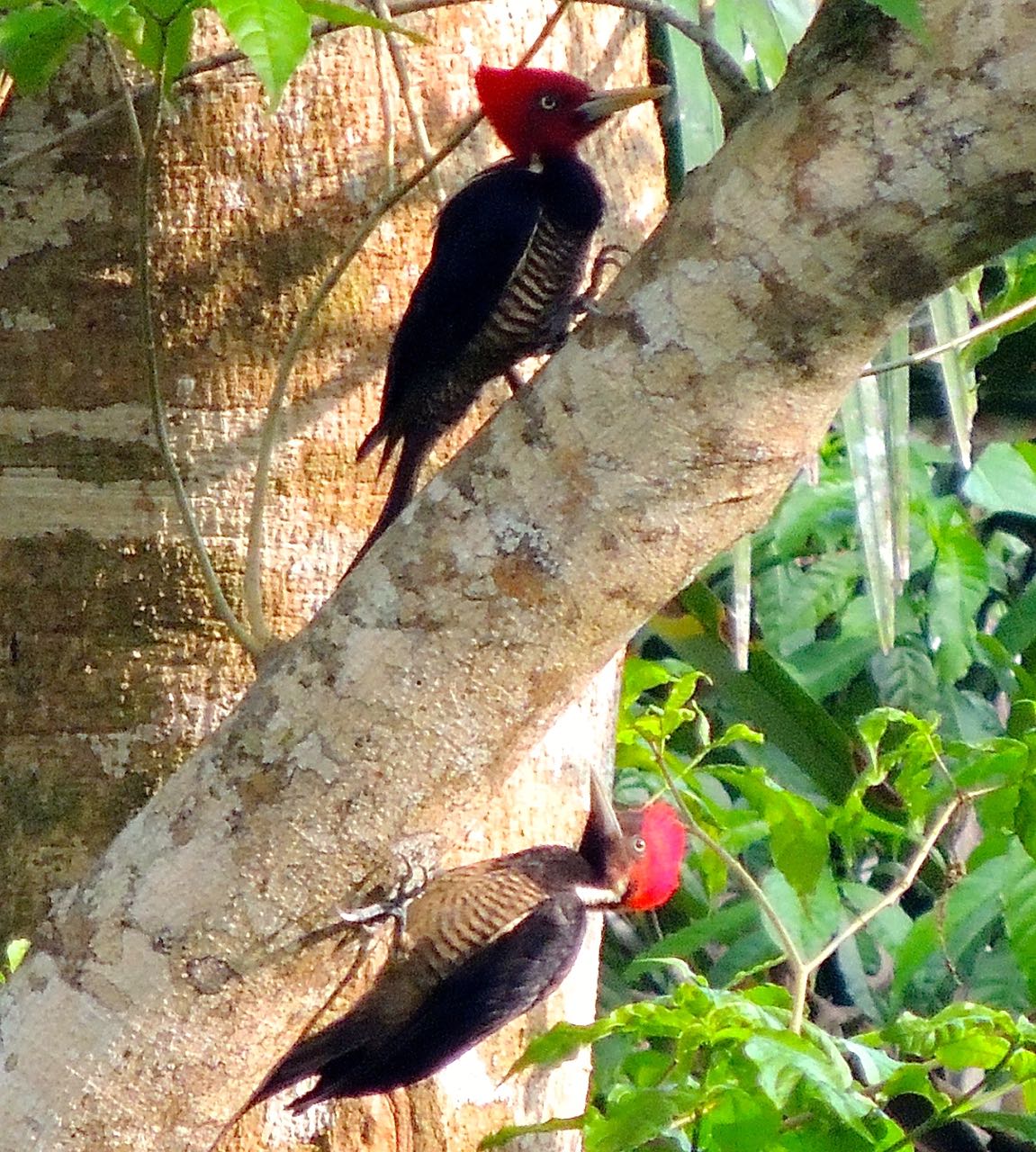 Pale-billed (top) and Lineated Woodpeckers - Photo by William Young
Pale-billed (top) and Lineated Woodpeckers - Photo by William YoungA pair of Melodious Blackbirds was on the ground. They sometimes rob nests of other birds. I saw the large Band-backed Wren. I heard Spot-breasted Wrens, but never had a good look at one. I saw quite a few Black-headed Saltators, who have a white throat. We heard the I feel so cool song of the Short-billed Pigeon. The Red-billed Pigeon had a yellow bill. The male White-collared Seedeater resembles the Variable. I had a nice look at a Tawny-winged Woodcreeper and could see the contrast of the wing color with the rest of the body. I saw a young male White-collared Manakin; he looked like a female, but he was doing the wing snaps and had a white spot under each eye. We had a nice look at a male Blue-black Grosbeak. Regarding butterflies, we saw Banded Peacocks and Tropical Whites.
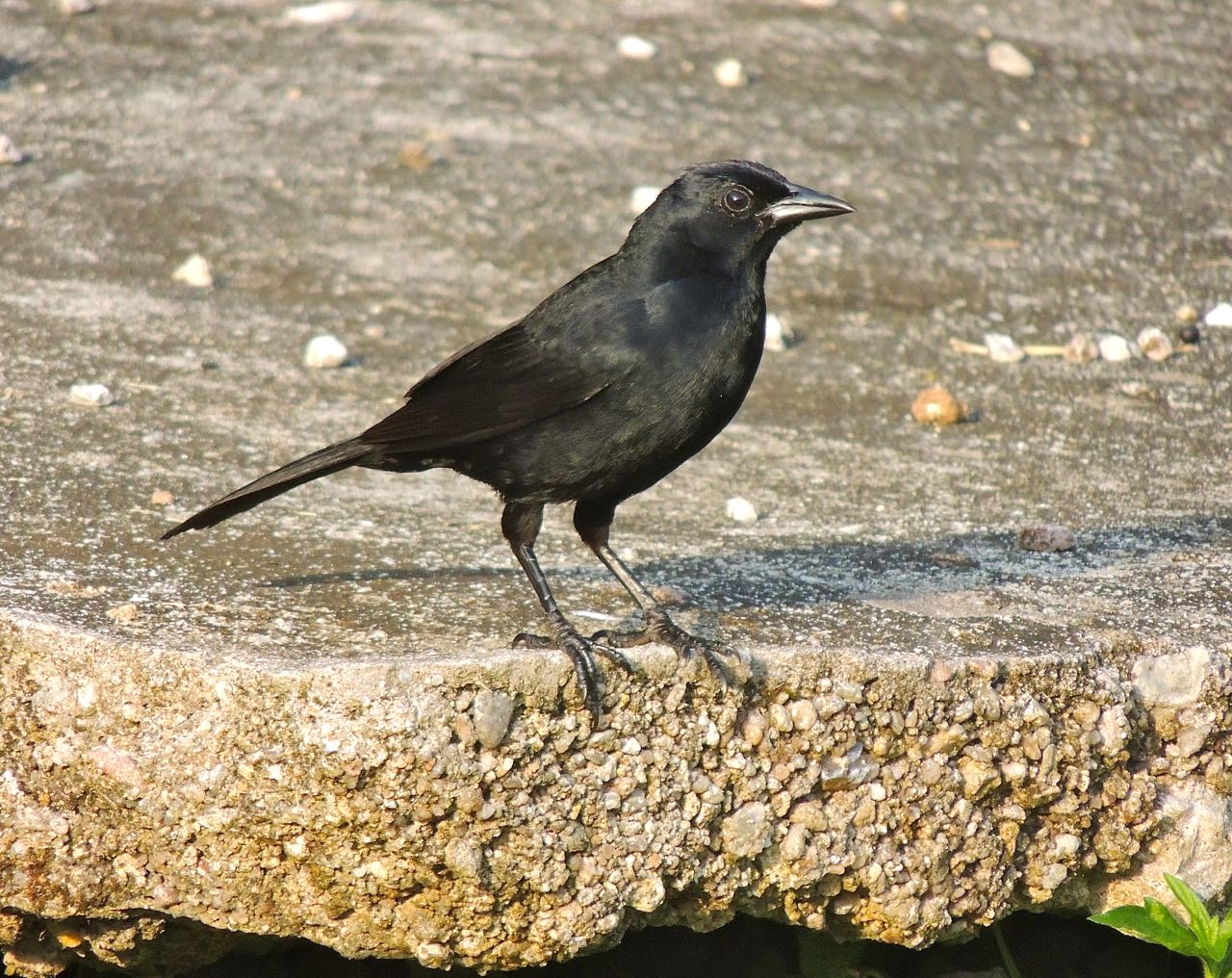 Melodious Blackbird - Photo by William Young
Melodious Blackbird - Photo by William YoungVery few guests are at Chan Chich right now. Because I am the only birder, I have been the only person doing the bird tours, so I have had a private guide. The lodge is surrounded by a series of trails through secondary subtropical moist broadleaf forest. These trails are filled with wildlife. The roads have "frog crossing" signs on them. In one place, I even saw some wood that looked very much like a bird. On this afternoon's walk, I saw an Ivory-billed Woodcreeper, as well as an Olivaceous Woodcreeper, who is the smallest woodcreeper in Belize and a fast climber. Migrants included an Ovenbird, Swainson's Thrush, and quite a few Northern Waterthrushes. The highlight of the afternoon was seeing two species of monkeys. White-bellied Spider Monkeys have long thin limbs. I saw an adult and a youngster. In the same area were about a half dozen Black Howler monkeys, including a mother with a baby on her back. The howlers have a bone in their throat that serves as an amplifier, like someone blowing over an empty bottle. Even though the howlers are louder, they are more docile. The spider monkeys are known to kill others of their kind who try to wander through the area of another group. After we saw the monkeys, I saw a Black-faced Grosbeak, who is yellow, with a black face. The Black-throated Shrike-Tanager is another yellow bird with a black throat. The Olive-backed Euphonia looks like a female euphonia. We also saw a Lesson's Motmot.
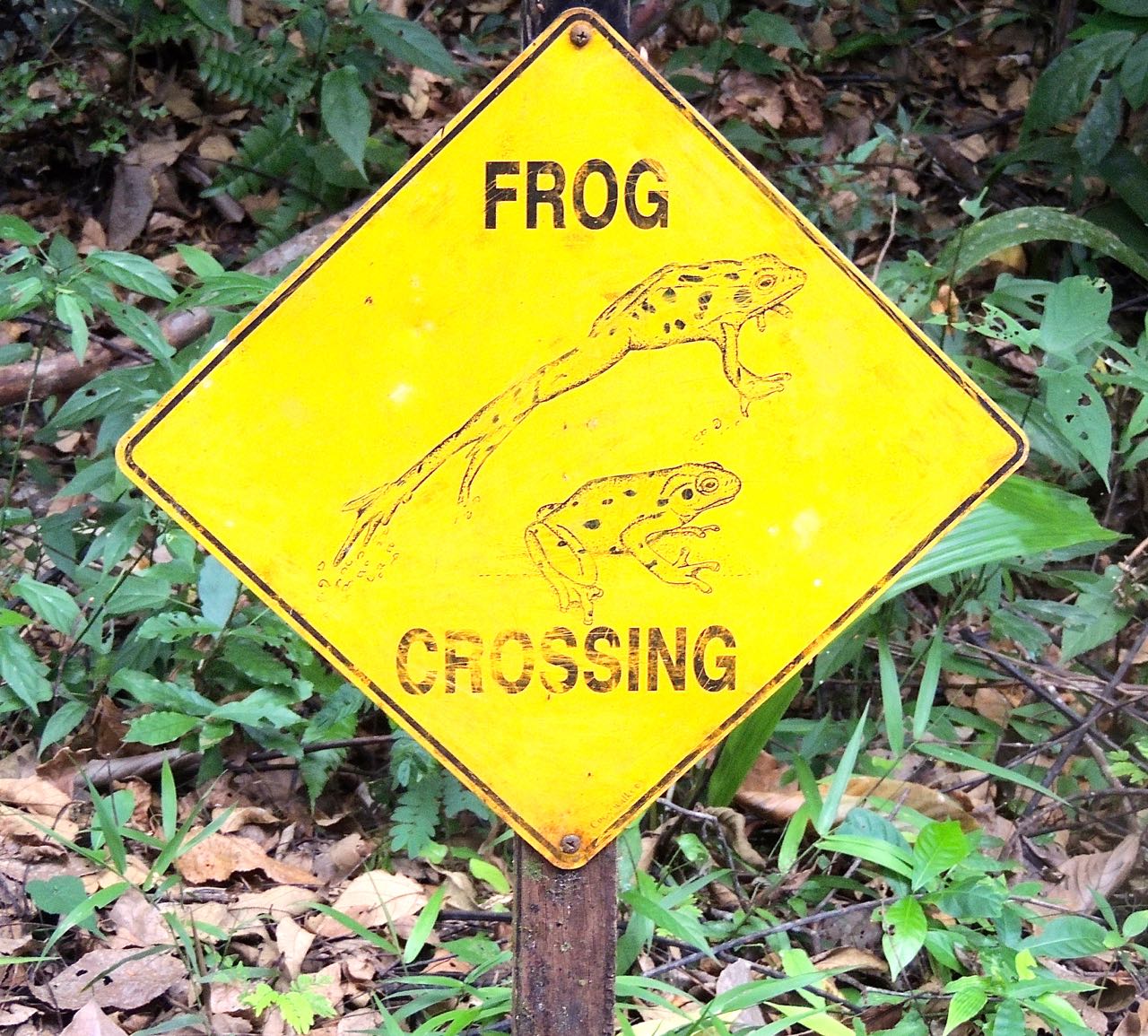 Frog Crossing Sign - Photo by William Young
Frog Crossing Sign - Photo by William Young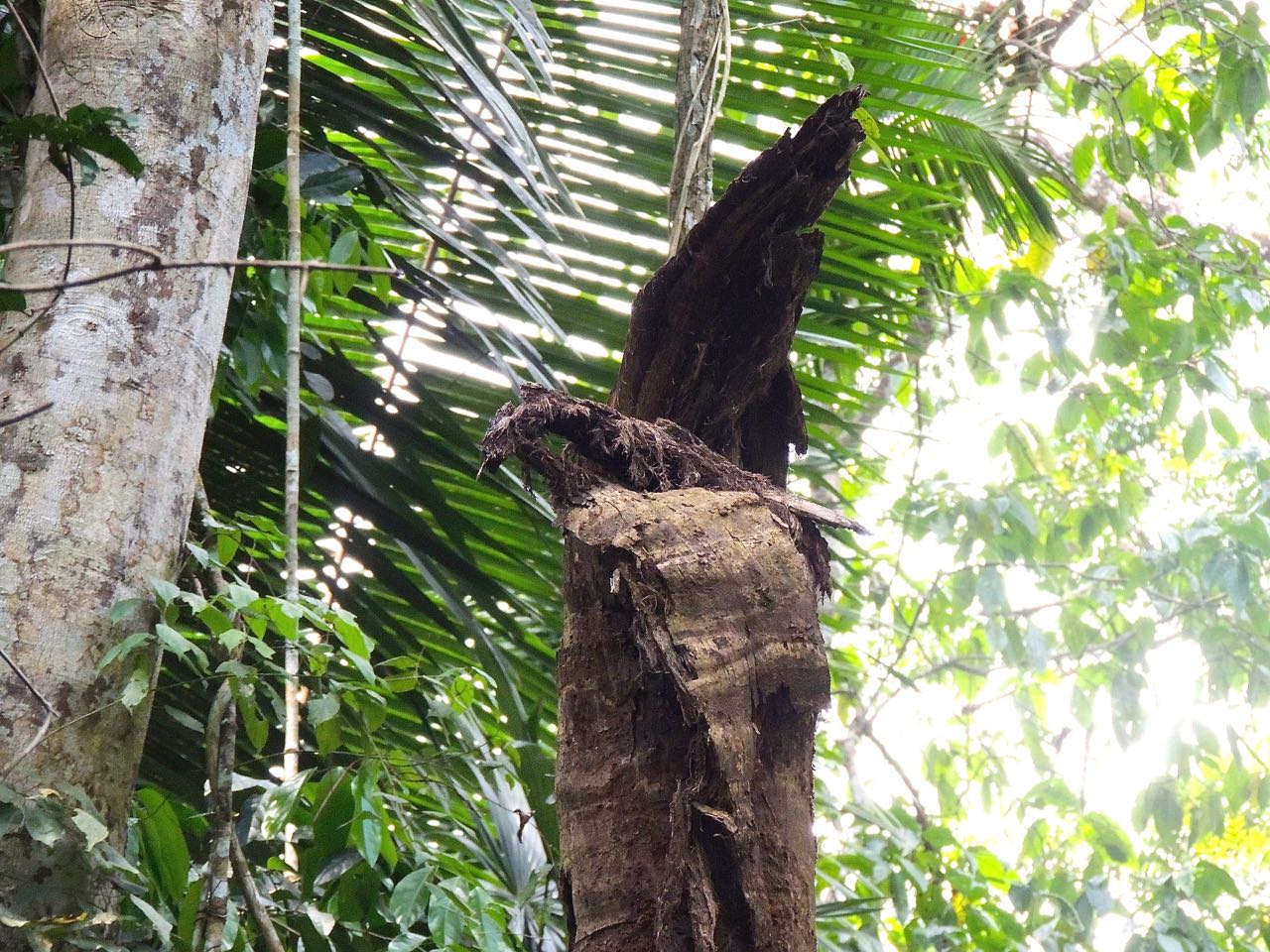 Bird Wood - Photo by William Young
Bird Wood - Photo by William Young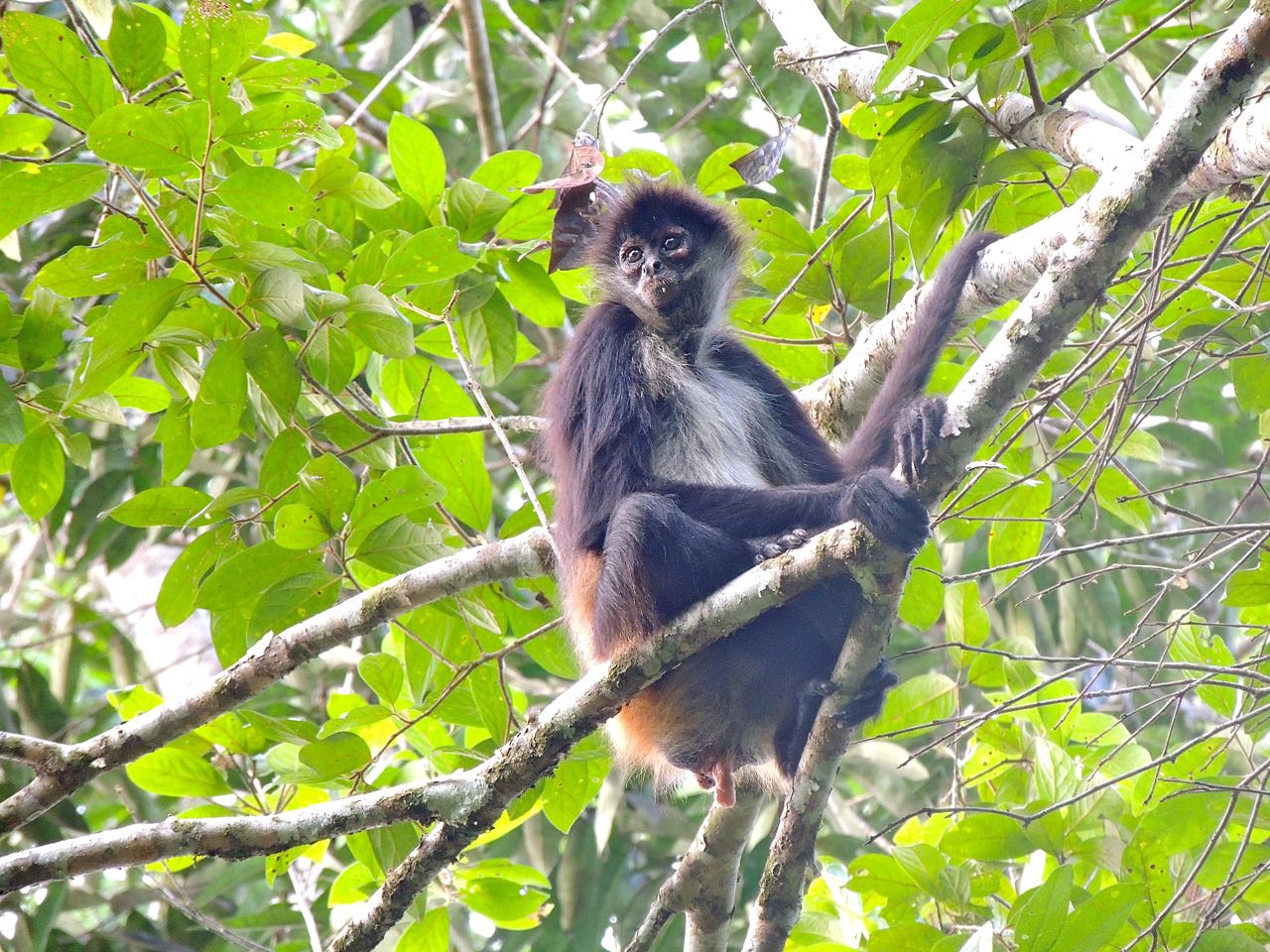 White-bellied Spider Monkey - Photo by William Young
White-bellied Spider Monkey - Photo by William Young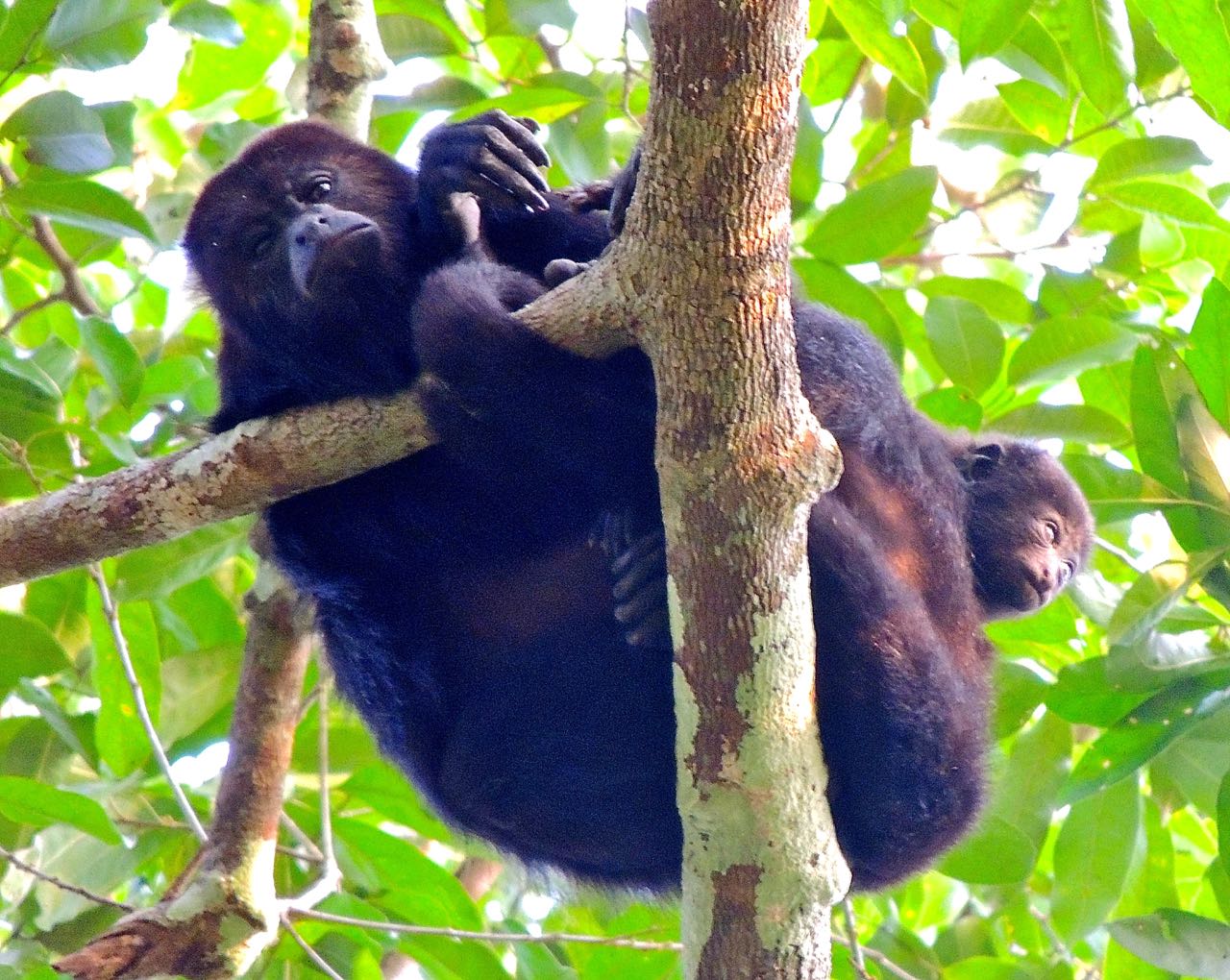 Black Howler with Offspring - Photo by William Young
Black Howler with Offspring - Photo by William Young
April 14When I woke up this morning, a mist hung over Chan Chich. At about 5, the howler monkeys began to roar. They sound like a large crowd of drunk fans cheering at a soccer game. None of the turkeys were mating outside my cabana, but 4 roosted in a nearby tree. I waited for them to come down, which they did at 5:30 by gliding to the ground. I could probably spend the entire week studying them. One of my favorite bird words is "carunclulated", or having little fleshy spots called caruncles. Ocellated Turkeys are one of the most carunculated species in the world. A way to tell the males and females apart is that the males have a nasty sharp spur on their feet for fighting, while the females do not. I walked down one of the paths and found a female Slaty-tailed Trogon and a Crested Guan.
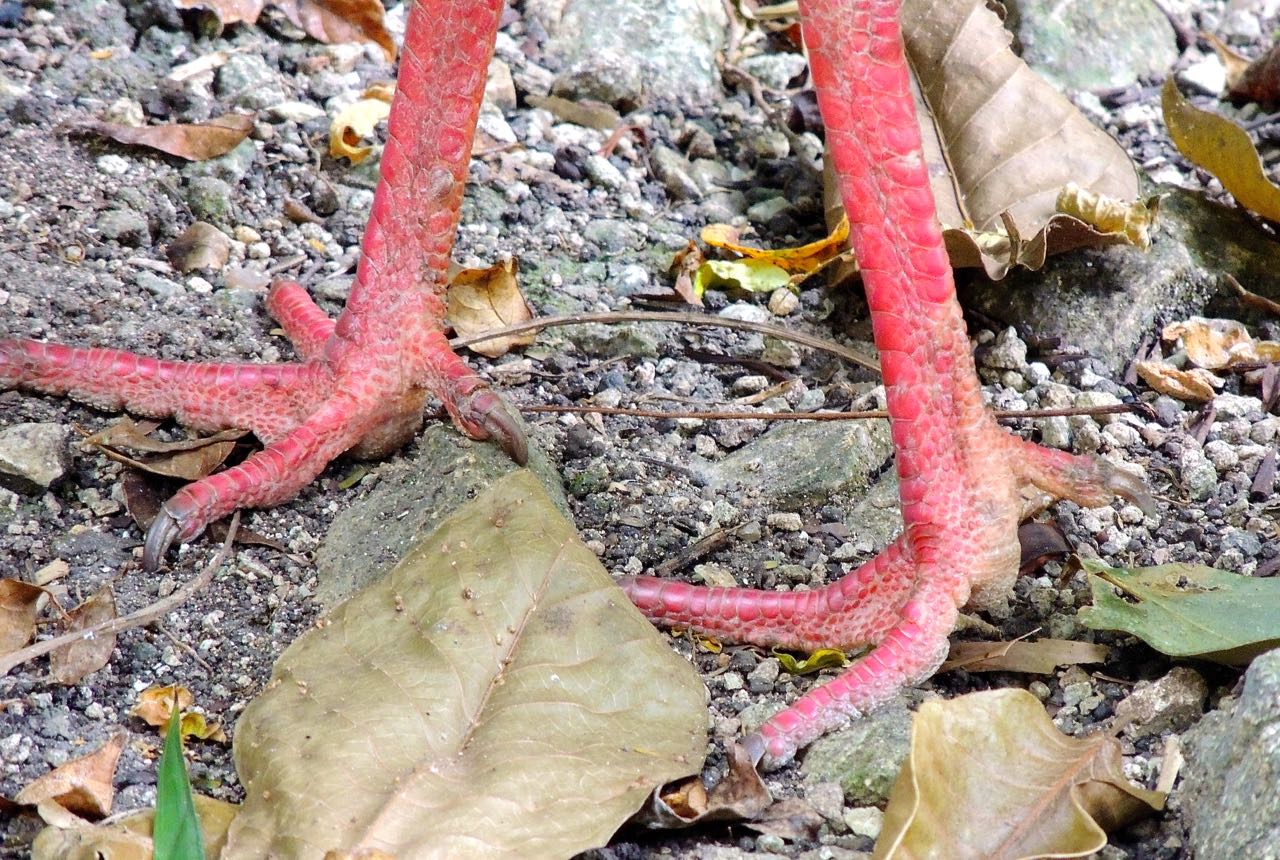 Female Ocellated Turkey's Feet - Photo by William Young
Female Ocellated Turkey's Feet - Photo by William Young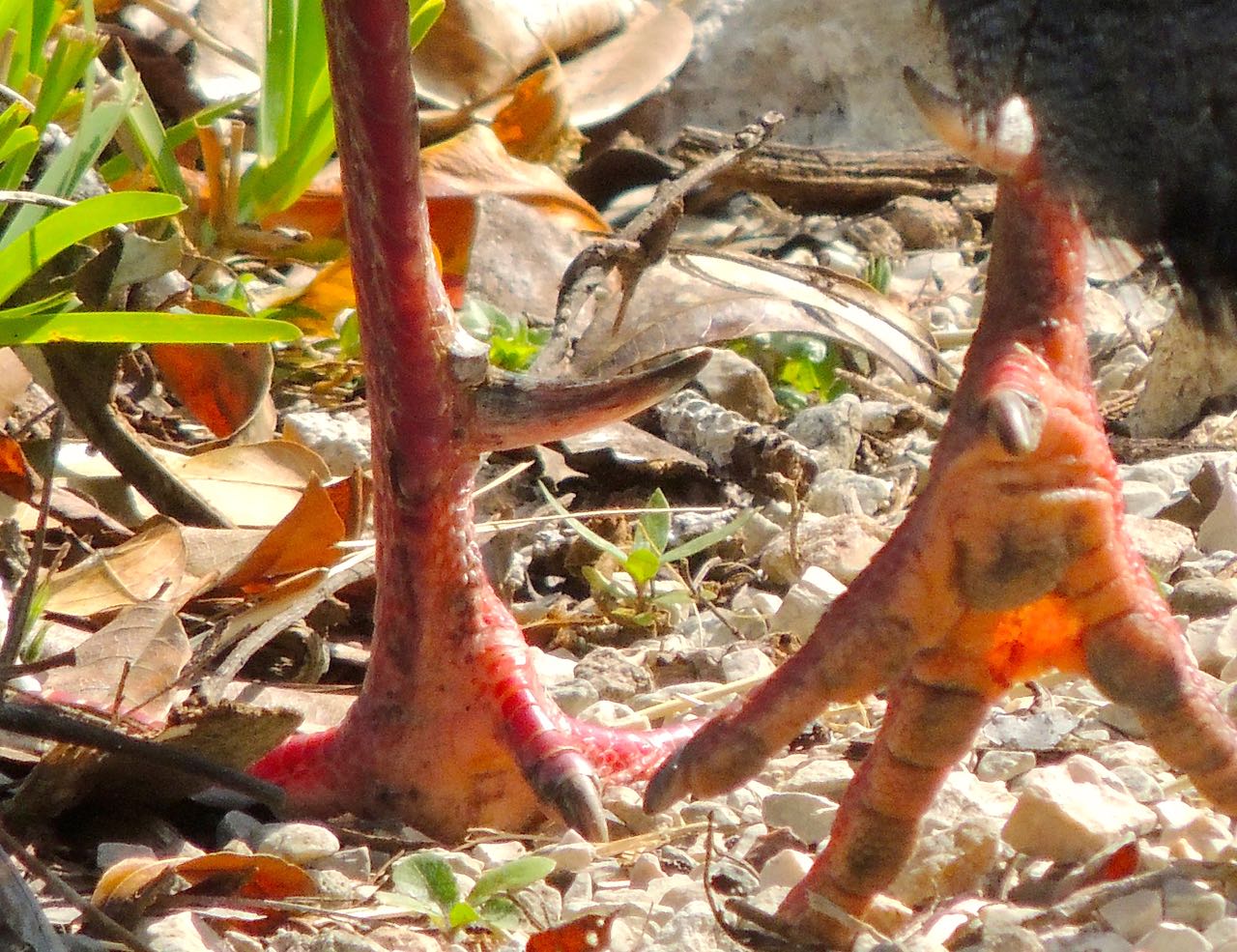 Male Ocellated Turkey's Feet - Photo by William Young
Male Ocellated Turkey's Feet - Photo by William YoungBefore breakfast, I went with Luis for a walk on some of the trails behind the lodge. We found a male and female Blue Bunting in a path. We also found a pair of Gray-headed Doves, whom Luis said were a split from the White-tipped Dove. They have a gray head and a dark eye, and their call is a very soft coo. We heard the whoop of a Lesson's Motmot. A Spot-breasted Wren hopped in the open. This species is commonly heard around the lodge, but can be a challenge to see. I finally got a look at the dark spots on its underparts, which from a distance make the underparts look grayish. Two of the wrens were duetting. The breeding season for Slaty-tailed Trogons has started, and about eight males clustered in a small area. I saw three in the same binocular field. I saw Black-headed Trogons, who are not found in Panama and look like a White-tailed. They have a blue back and yellow underparts, and the white on the tail appears to be divided into two rows of three, with little black showing. I saw an Olive-throated Parakeet in the scope in bad light. We found a female Chestnut-colored Woodpecker and a few Dusky-capped Flycatchers. A Plain Antvireo popped up over my head, and I saw the yellowish underparts.
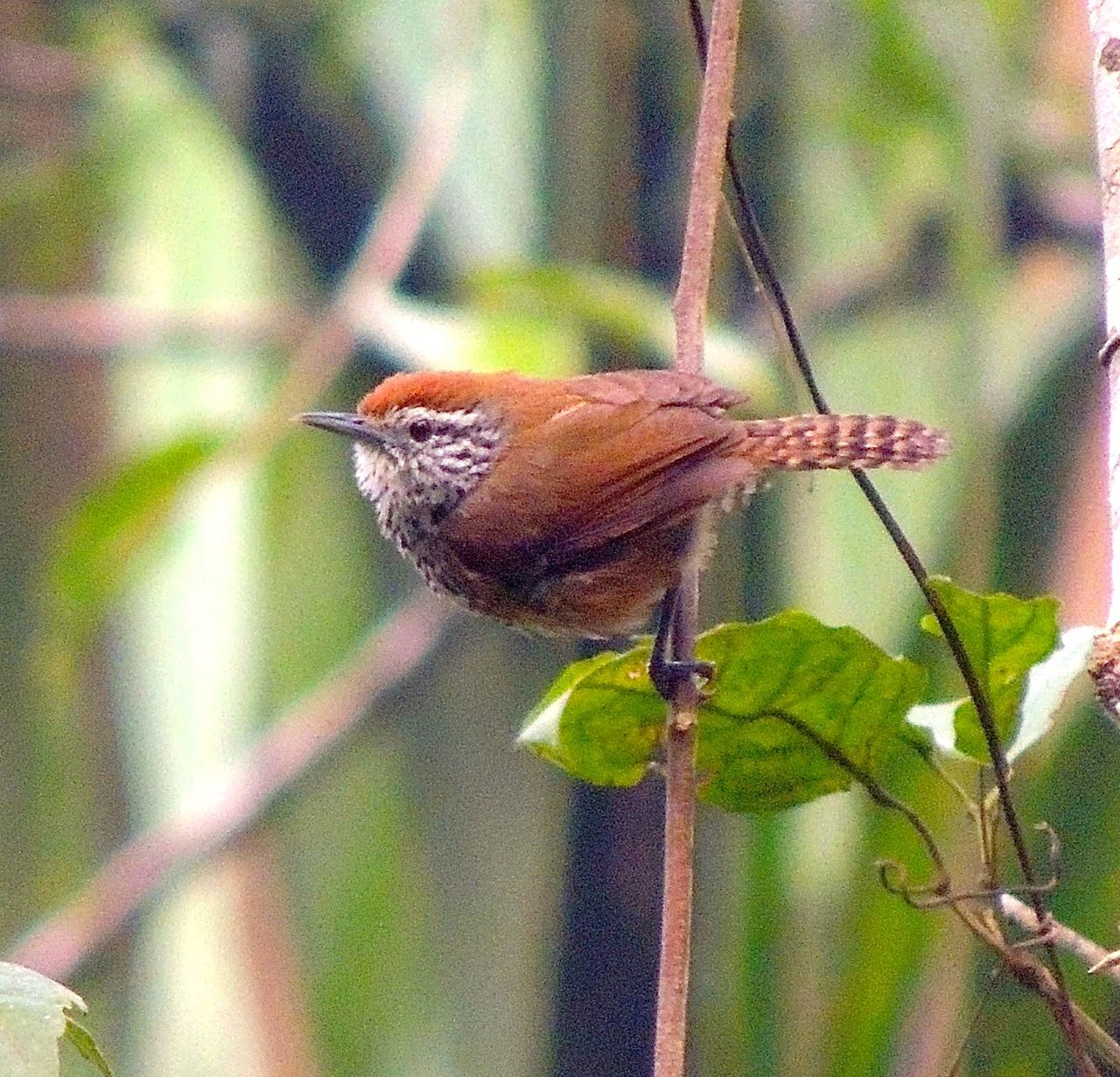 Spot-breasted Wren - Photo by William Young
Spot-breasted Wren - Photo by William Young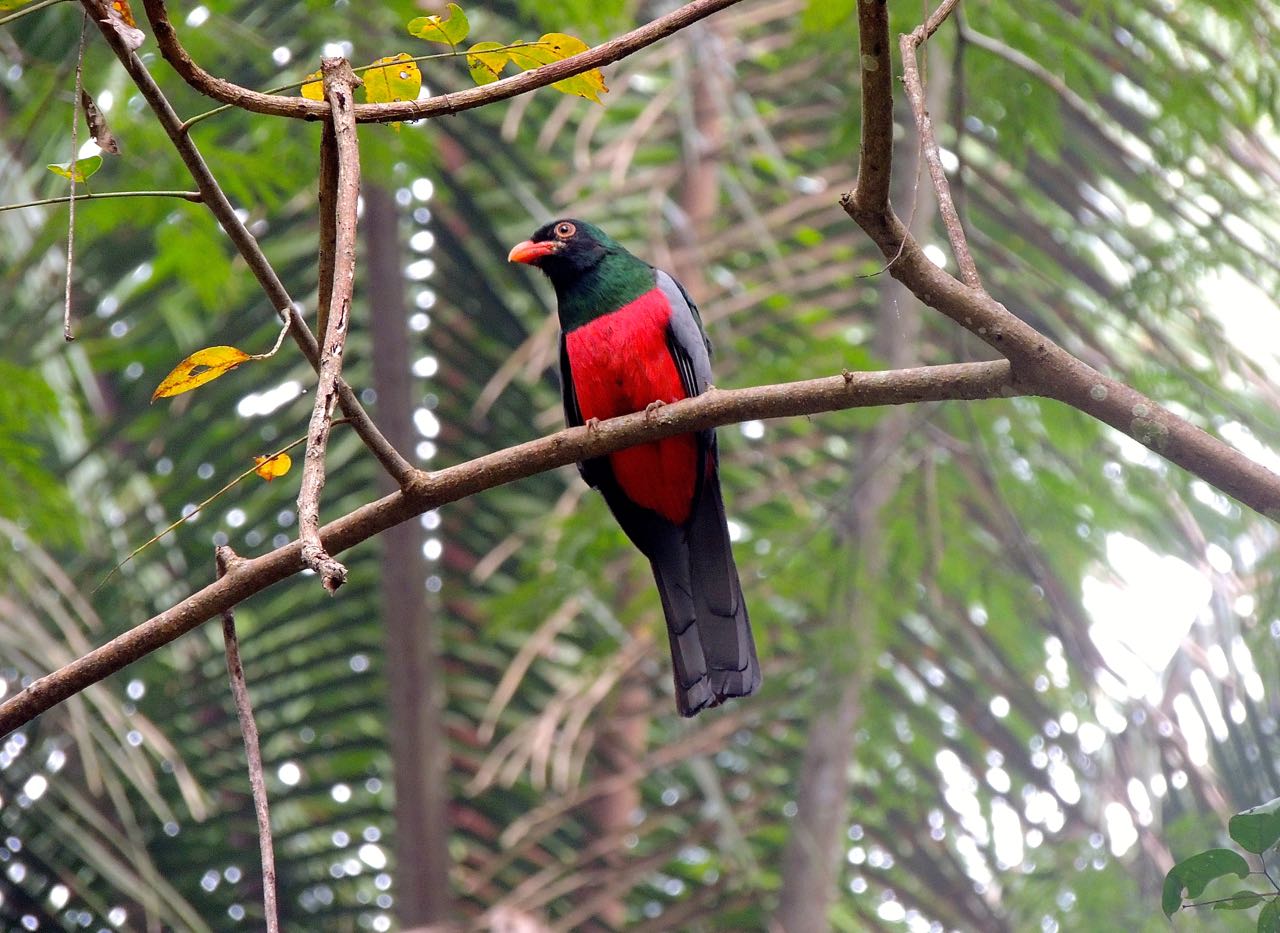 Slaty-tailed Trogon - Photo by William Young
Slaty-tailed Trogon - Photo by William YoungAfter breakfast, I took a walk with a guide named Gilberto, who has been at Chan Chich since it opened in the late 1980s. I saw more migrants, including two American Redstarts, a couple of Black-and-white Warblers, a few Northern Waterthrushes, an Ovenbird, a Gray Catbird, and a bunch of Red-eyed Vireos. I saw a male Red-crowned Ant-Tanager, who had a lot more red on him than I remember from Panama. We stopped by the water, and I had a close look at an Ochre-bellied Flycatcher. On the way back, we saw a pair Rose-throated Becards building a nest. The same tree had nests of other birds, including Social Flycatchers. A Piratic Flycatcher singing in a nearby tree. This species is so named because it takes over nests after other birds have built them — I think of them as Antisocial Flycatchers. Gilberto showed me Mahogany, Capok, and Cedar Trees. He also showed me the Bay Leaf Palm, and he said the roof of my cabana is made from 3,500 leaves from this tree. There were a lot of Florida White butterflies and a few species of dragonflies.
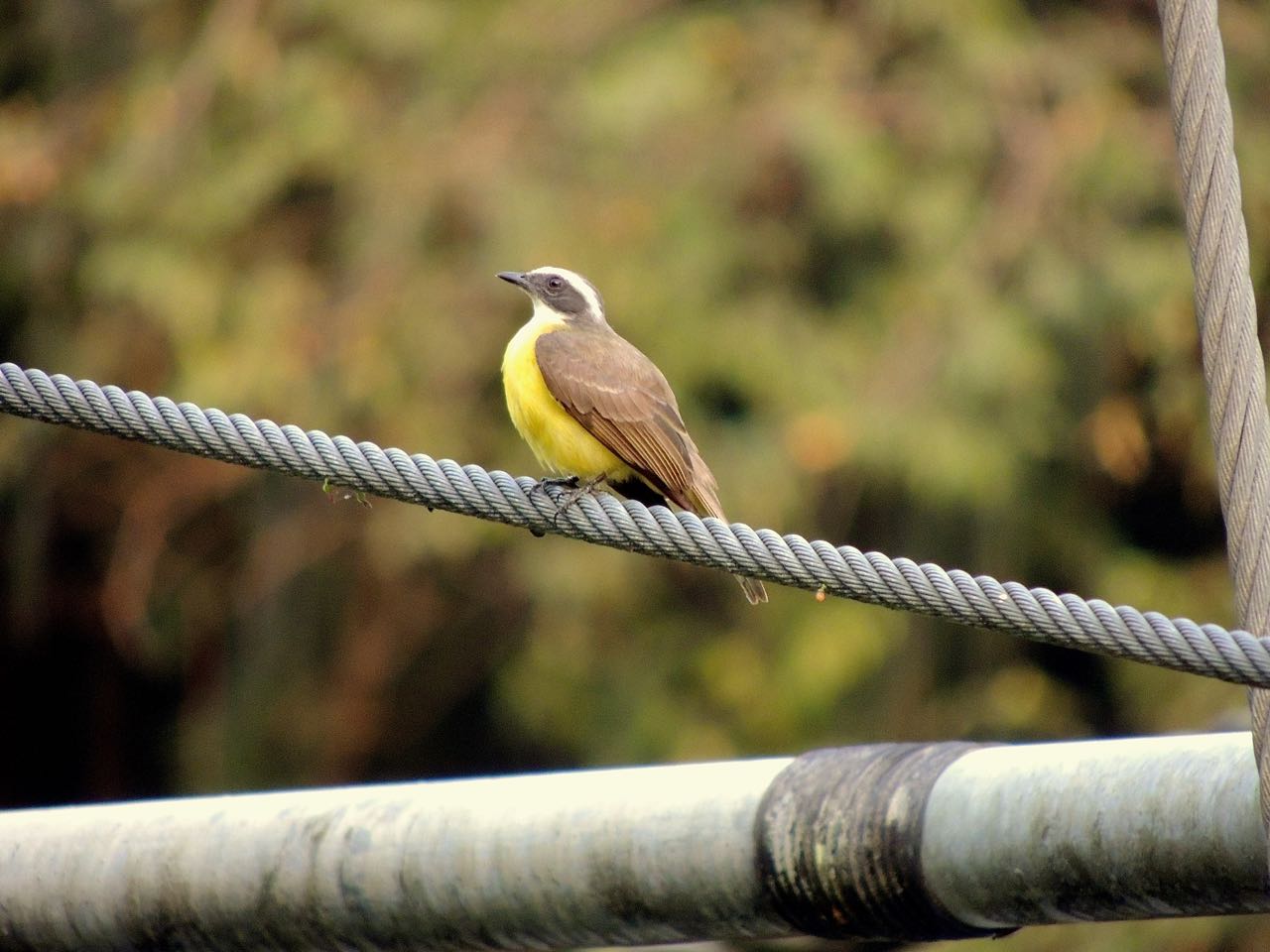 Social Flycatcher - Photo by William Young
Social Flycatcher - Photo by William Young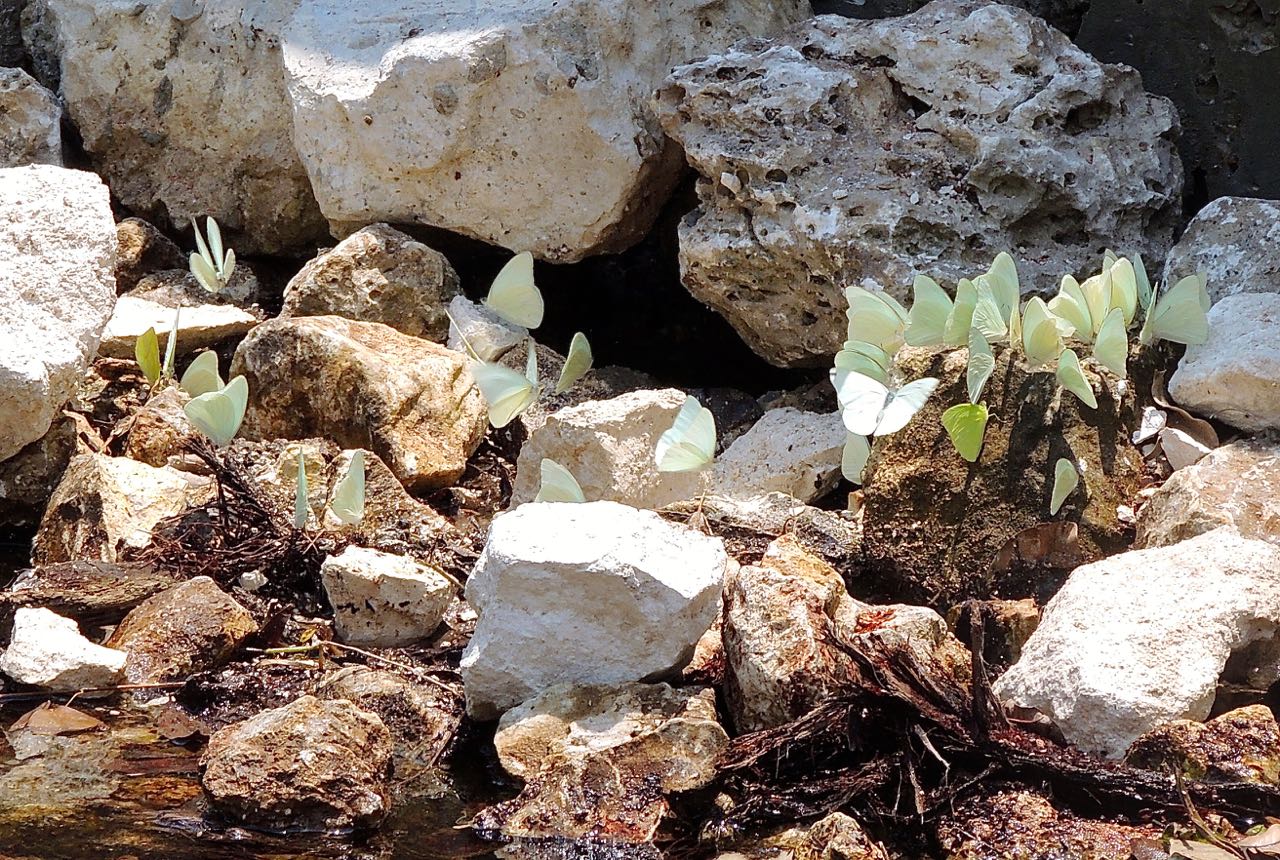 Florida Whites - Photo by William Young
Florida Whites - Photo by William YoungThis afternoon, I went for a drive around the Gallon Jug Estate on which Chan Chich Lodge is located. There are a lot of grazing cattle, with the accompanying Cattle Egrets. Eastern Meadowlarks perched on some of the fenceposts; some stay in Belize all year. An Eastern Kingbird perched near a Tropical Kingbird. Four Groove-billed Anis were in a field. Two King Vultures flew over. A number of Roadside Hawks were perched near the road. A White-tailed Kite perched on a fencepost, eating something it had just caught. This is the same species who had grabbed a White-throated Crake when I was in Panama. Brown Jays were being raucous; they have a white band on the end of their tail. Seventeen Keel-billed Toucans were in a tree with one Red-lored Parrot.
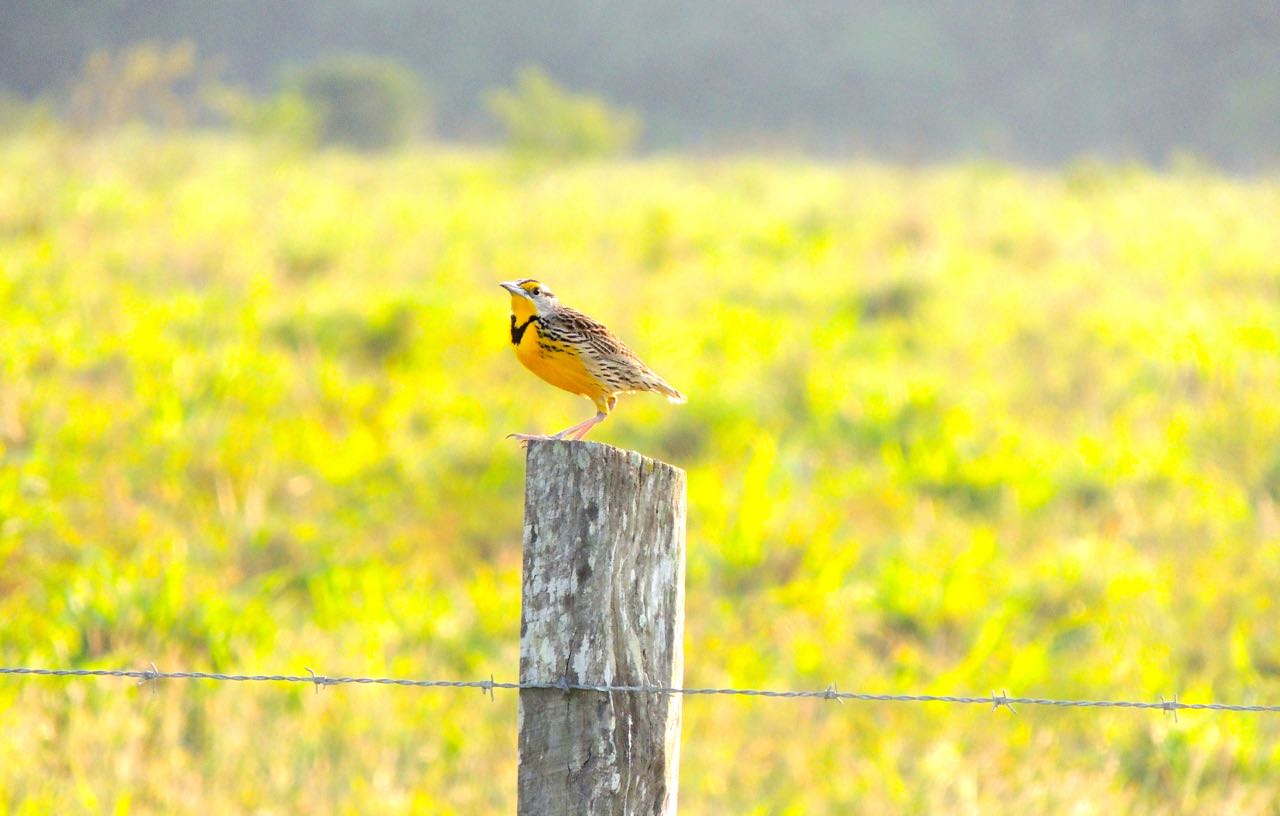 Eastern Meadowlark - Photo by William Young
Eastern Meadowlark - Photo by William Young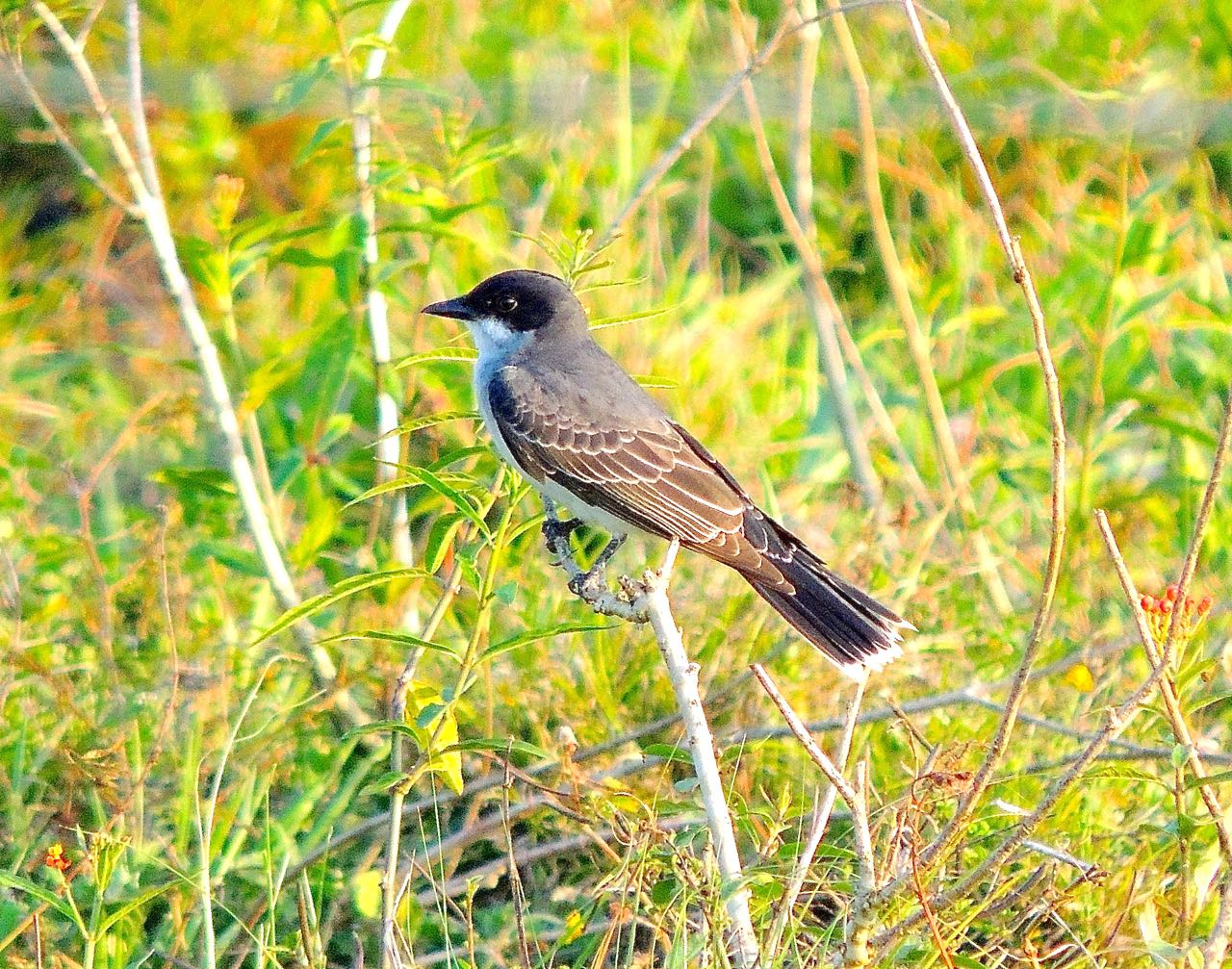 Eastern Kingbird - Photo by William Young
Eastern Kingbird - Photo by William Young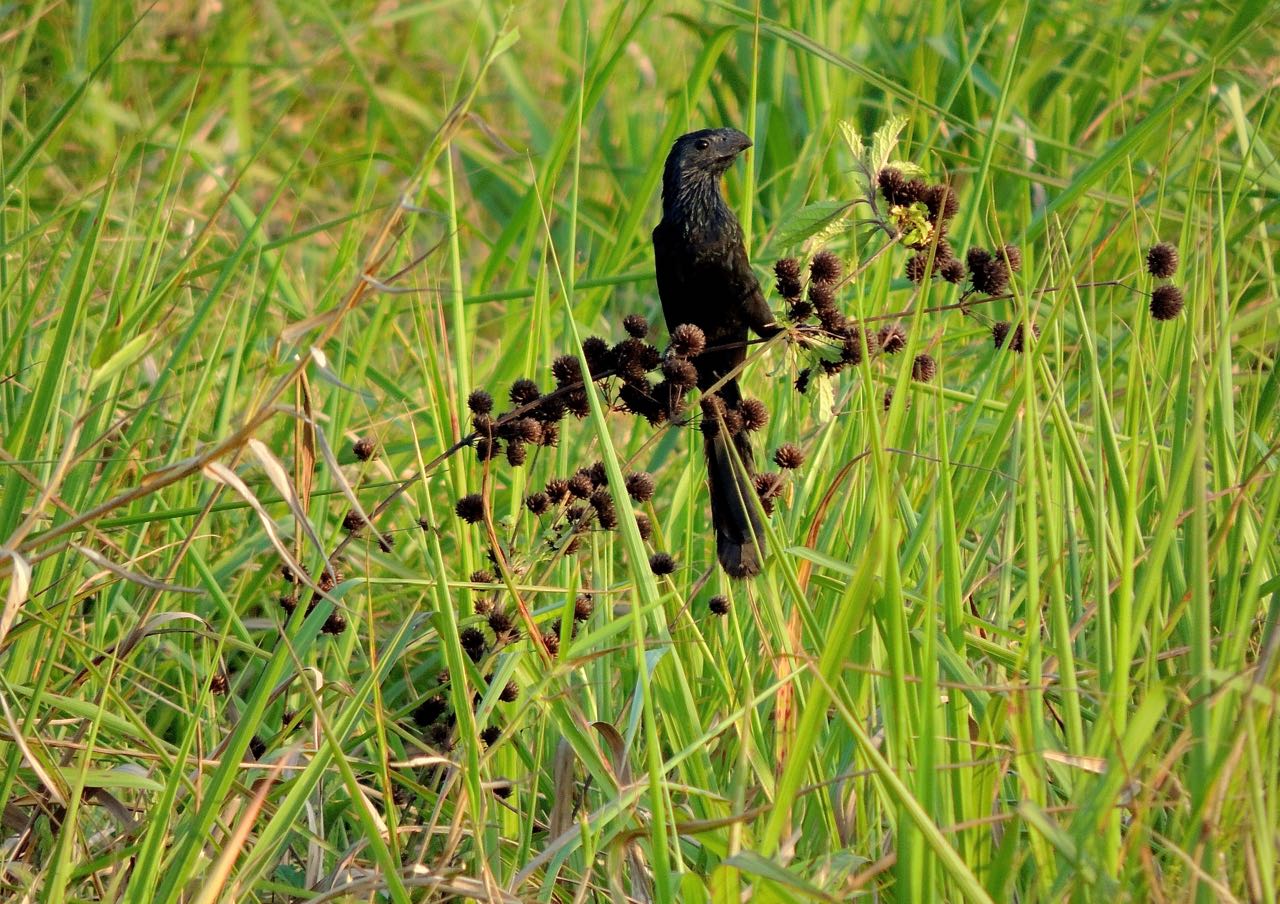 Groove-billed Ani - Photo by William Young
Groove-billed Ani - Photo by William Young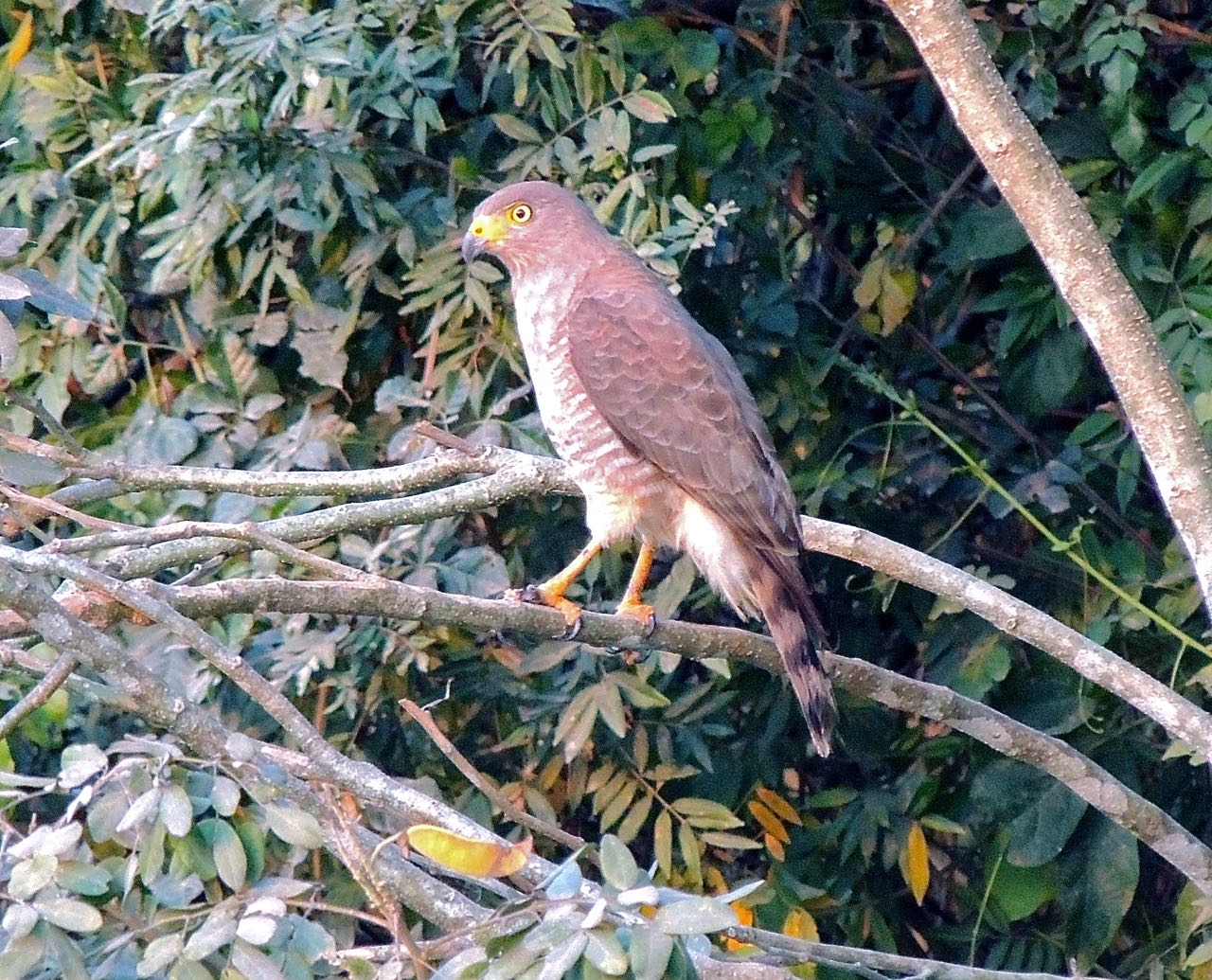 Roadside Hawk - Photo by William Young
Roadside Hawk - Photo by William YoungI ate dinner and went out for an evening walk in the forest. We were looking mostly for invertebrates. We found a number of wolf spiders, a tailless whip-scorpion, a hissing cockroach, a katydid, and a click beetle with two bioluminescent spots on its front. You can see the eyeshine on some spiders. There were thousands of leafcutter ants. They stay active during the night. We saw a lovely Nine-banded Gecko. There are house geckos in my cabana, and they sound as if they are blowing me kisses at night.
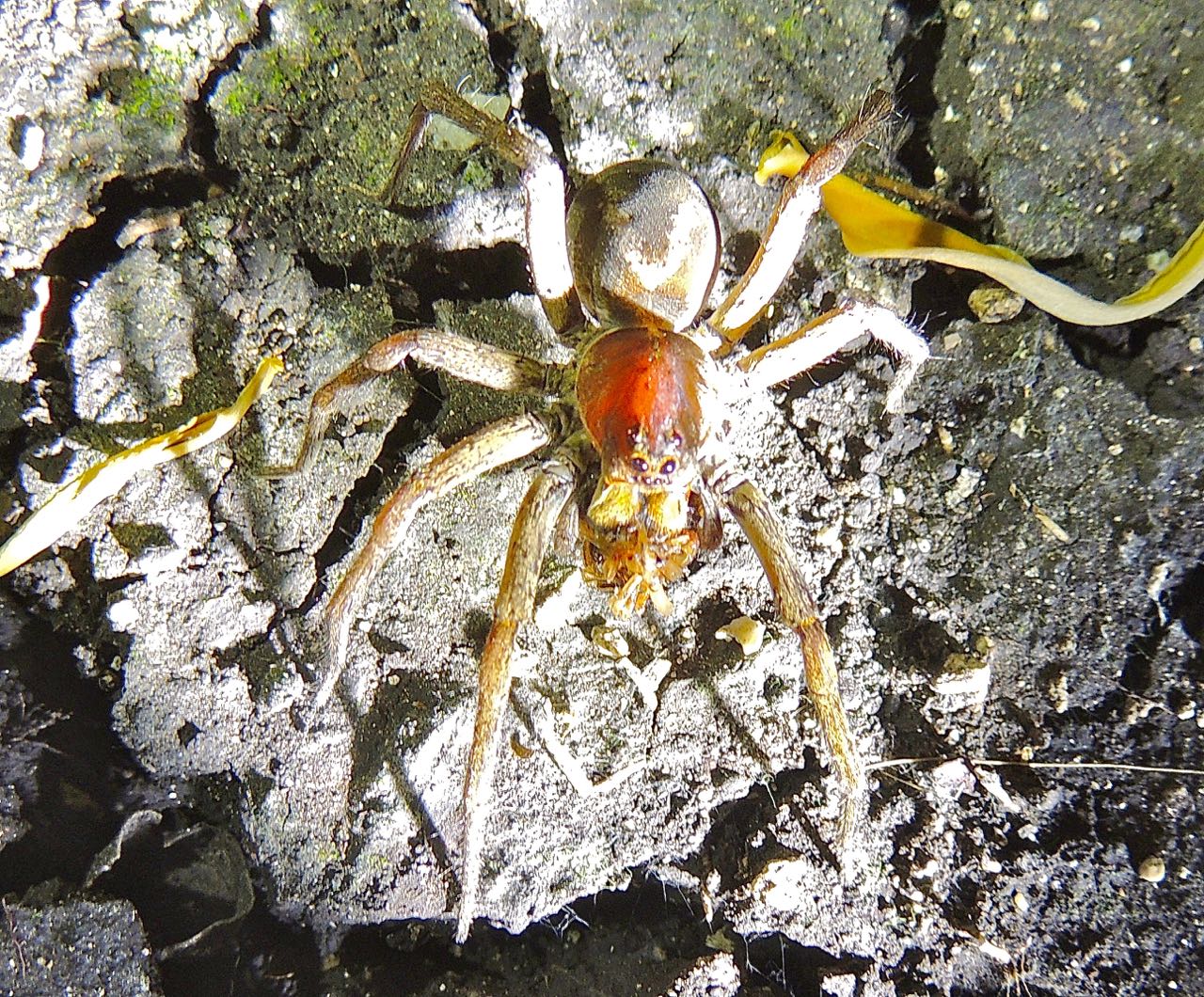 Wolf Spider - Photo by William Young
Wolf Spider - Photo by William Young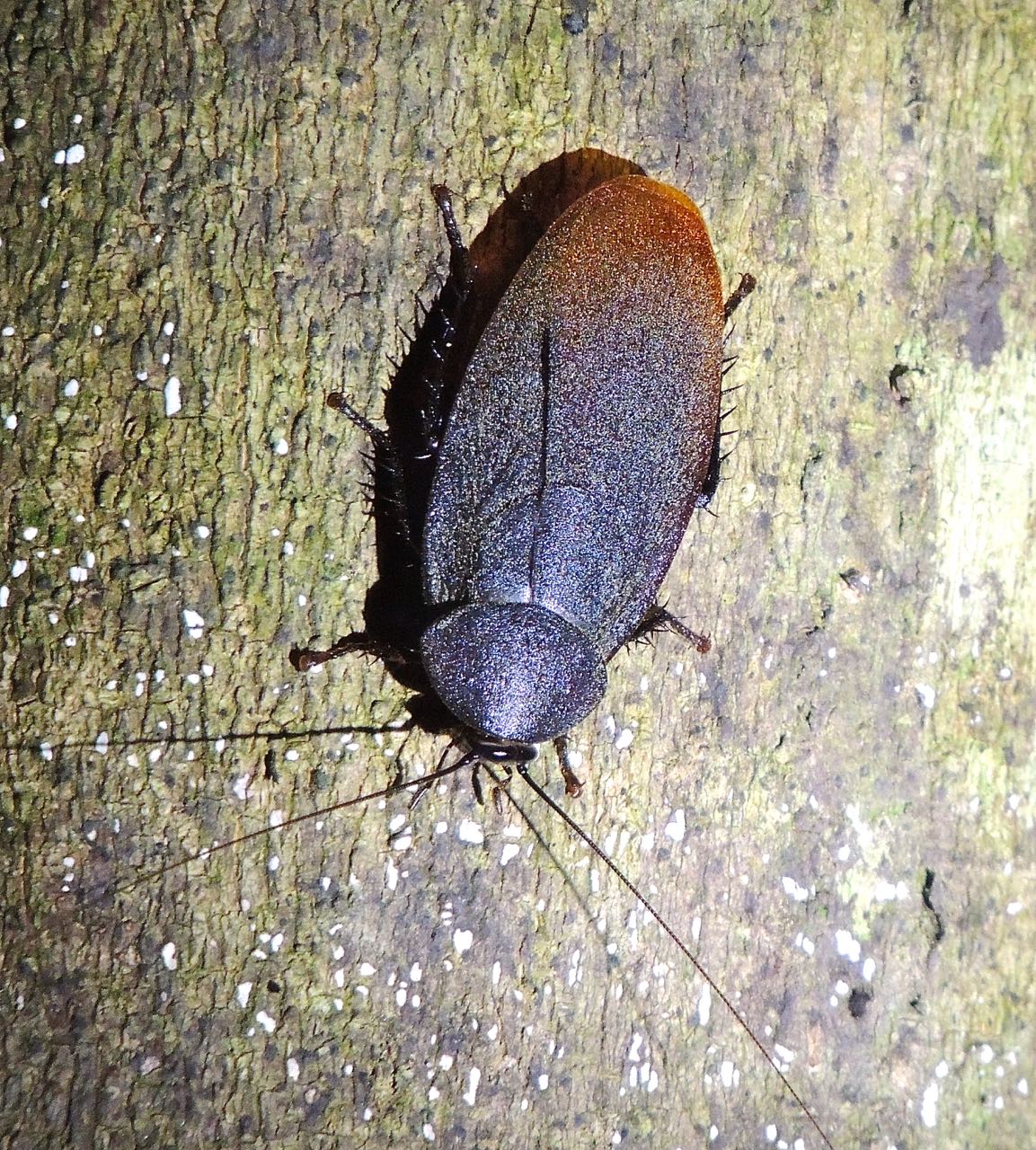 Hissing Cockroach - Photo by William Young
Hissing Cockroach - Photo by William Young Bioluminescent Click Beetle - Photo by William Young
Bioluminescent Click Beetle - Photo by William Young
April 15This morning before breakfast, I saw a female Blue-black Grassquit, who was buffy below and had a brown back with buffy wingbars. The Gray-headed Dove's tail has white tips. I saw a dark morph female Great Curassow by the edge of the woods with my naked eye before she disappeared into the foliage. She had a different profile than the turkeys. An Osprey was at Laguna Verde. I saw a flying Spotted Sandpiper and heard a Black-faced Antthrush. I saw a Swainson's Thrush and the green back and black-and-white crown stripes of a Green-backed Sparrow. A White-bellied Wren was gathering nesting material in the open at eye level. Trogons and Parakeets excavate nest holes in termite nests. We saw a pair of Olive-throated Parakeets mating in the top of a bare tree. I saw a Yellow-throated Vireo and breeding male Chestnut-sided, Magnolia, and Black-and-white Warblers. I heard the incessant singing of a Golden-crowned Warbler, and although I saw the bird, I never had a good view. A Black Hawk-Eagle flew over; it was dark, with tail bands. The Brown-crested Flycatcher sounds like the Great Crested. I saw a Common Tody-Flycatcher, who is not common here. We heard a lot of raucous Plain Chachalacas. I saw Furrowed Wood Turtle, who is small and brown.
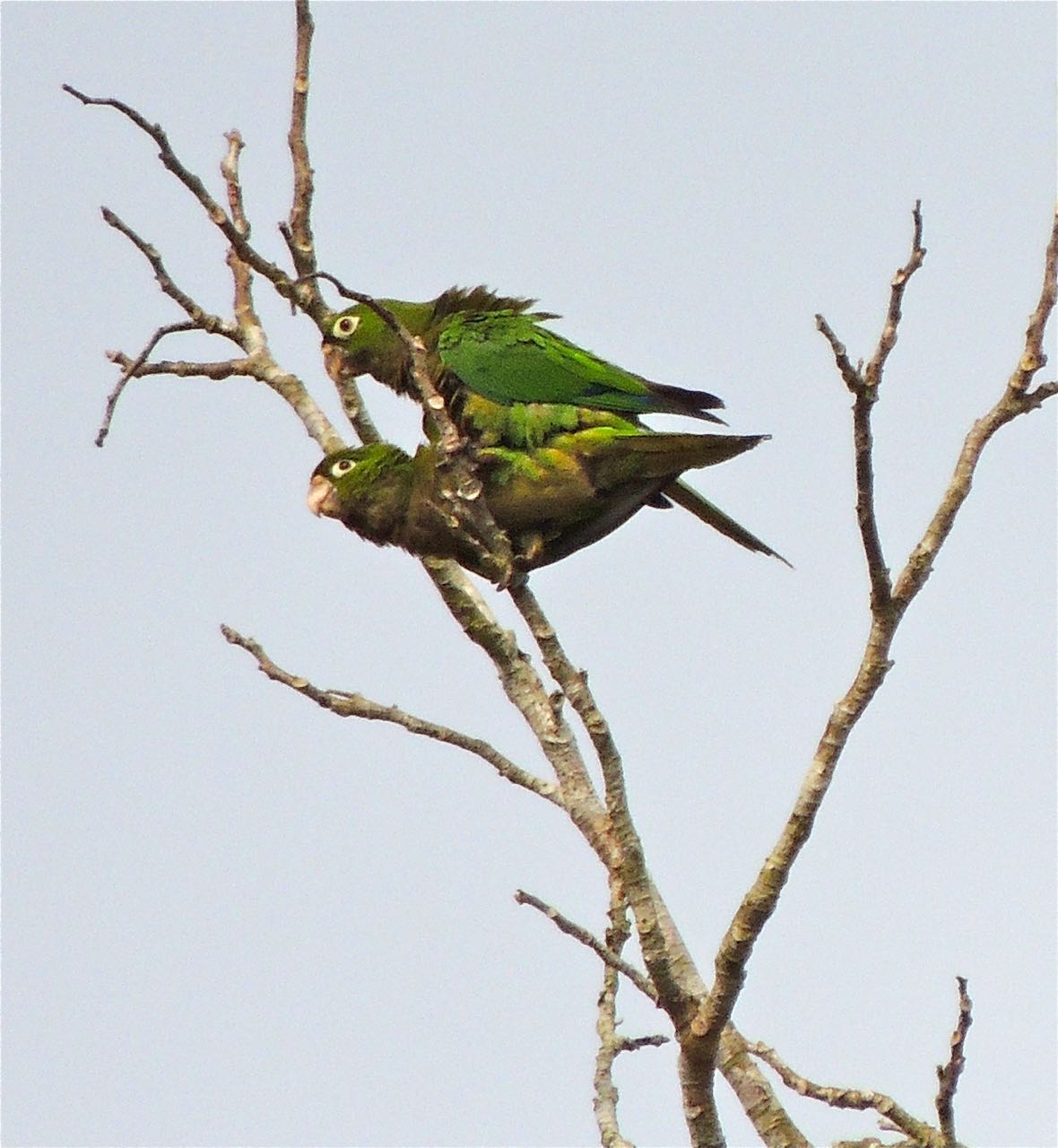 Olive-throated Parakeets Mating - Photo by William Young
Olive-throated Parakeets Mating - Photo by William Young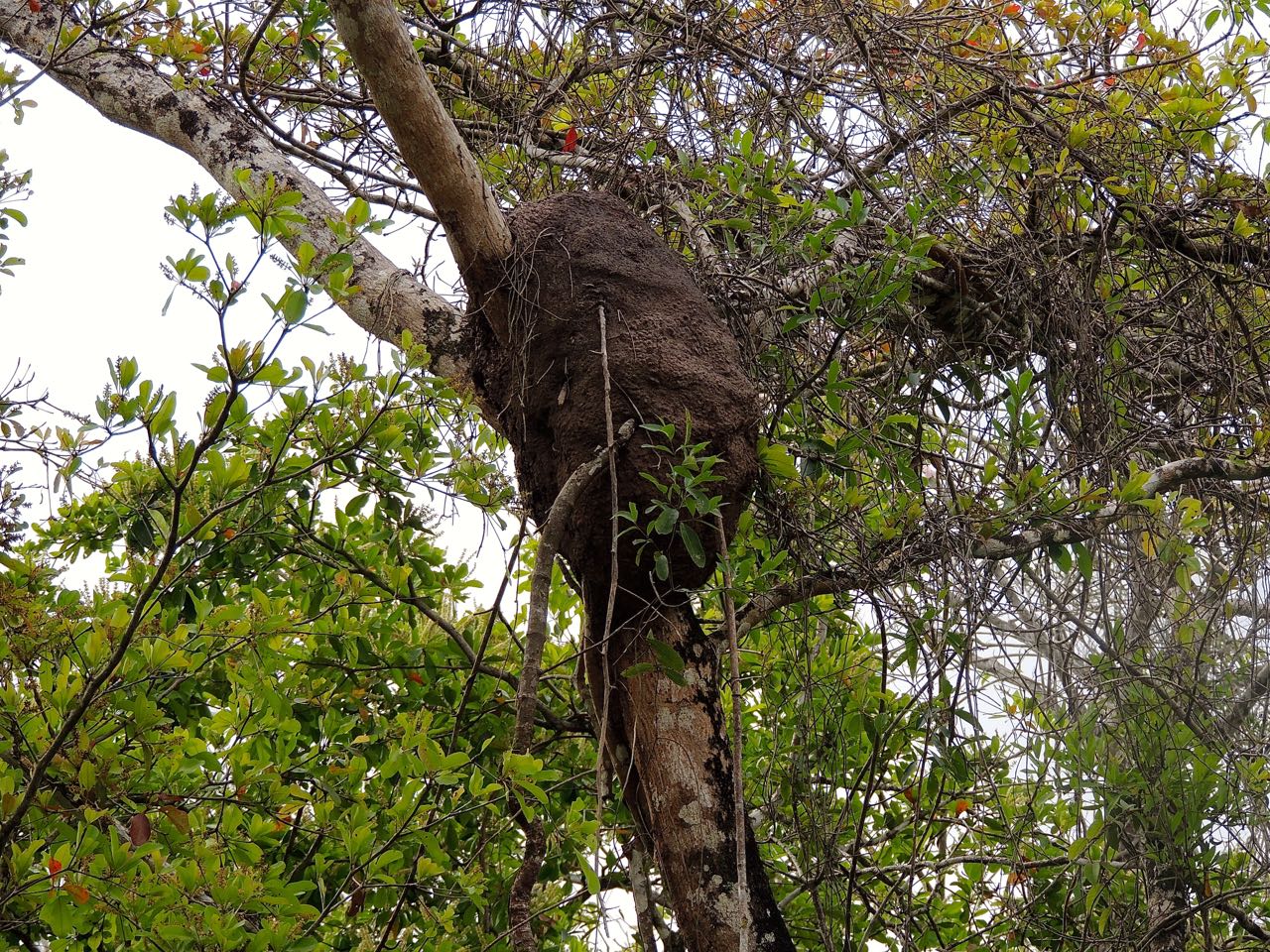 Olive-throated Parakeet Nest - Photo by William Young
Olive-throated Parakeet Nest - Photo by William Young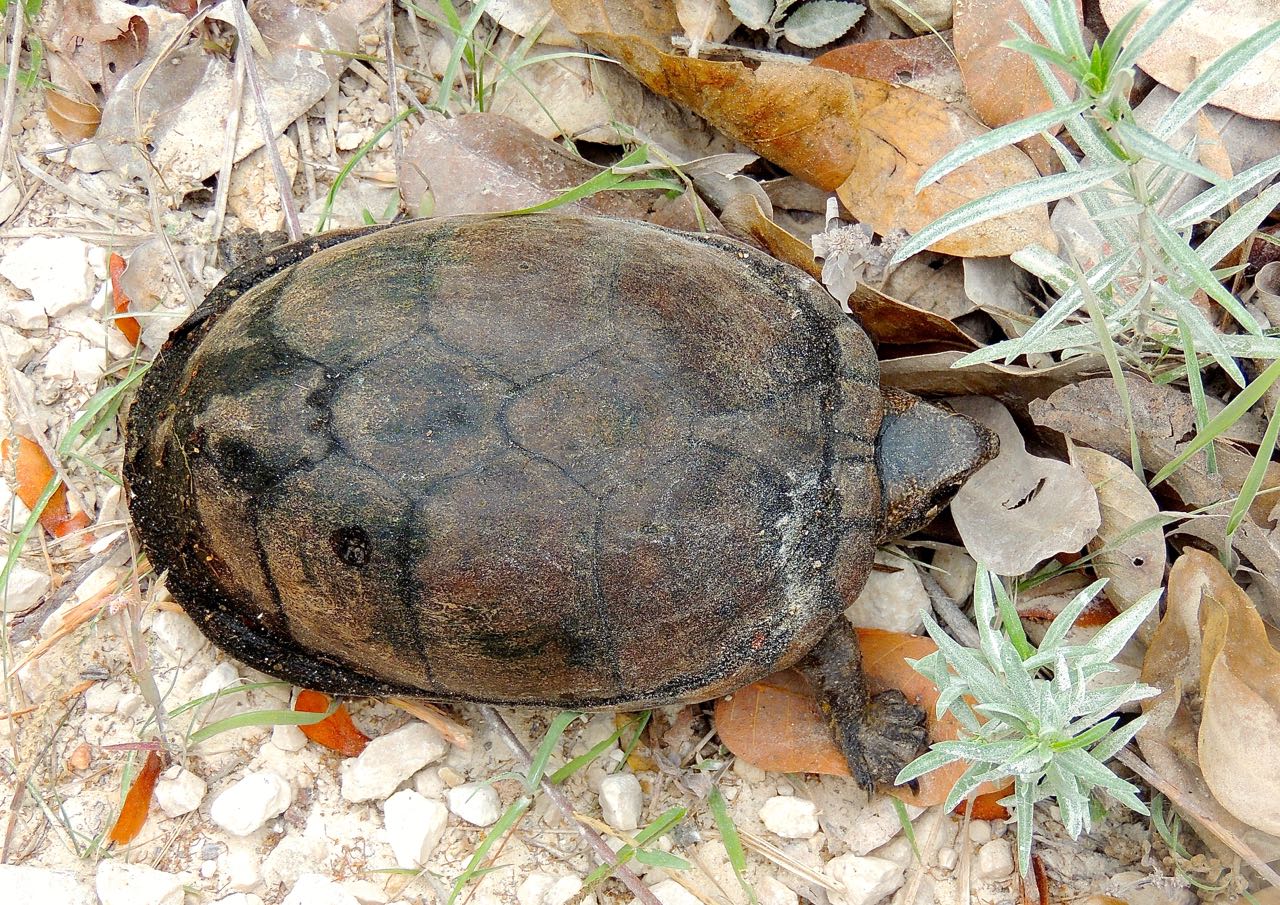 Furrowed Wood Turtle - Photo by William Young
Furrowed Wood Turtle - Photo by William YoungAfter breakfast, I saw a pair of Dot-winged Antwrens and heard a Tody Motmot and a Red-throated Ant-Tanager. The call of a White-throated Robin sounds like a frog. The Slaty-tailed Trogon does not open his mouth when he sings — I could see his throat vibrating when he vocalized. I saw a Yellow-bellied Elaenia, a flying Green Kingfisher, three flying Ruddy Quail-Doves, and a Plain-breasted Ground-Dove. We spent a long time looking at a Pale-billed Woodpecker just above us. An Ovenbird was walking on the path. At lunch, I sat near a small fountain where birds come in to bathe and drink. A female American Redstart went into the water. Later, a Black-cowled Oriole came in to bathe. He was bright yellow, with black trim.
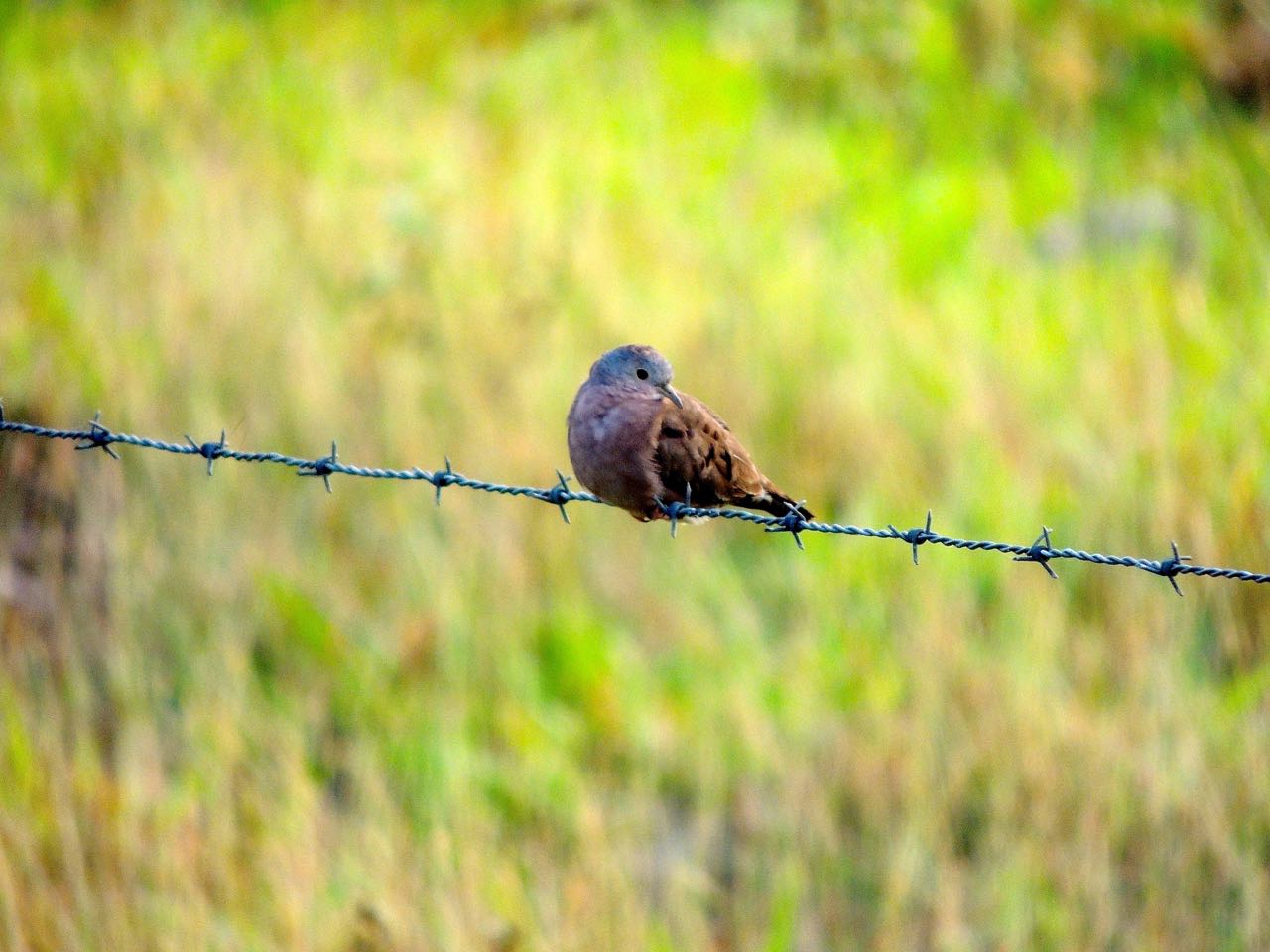 Plain-breasted Ground-Dove - Photo by William Young
Plain-breasted Ground-Dove - Photo by William Young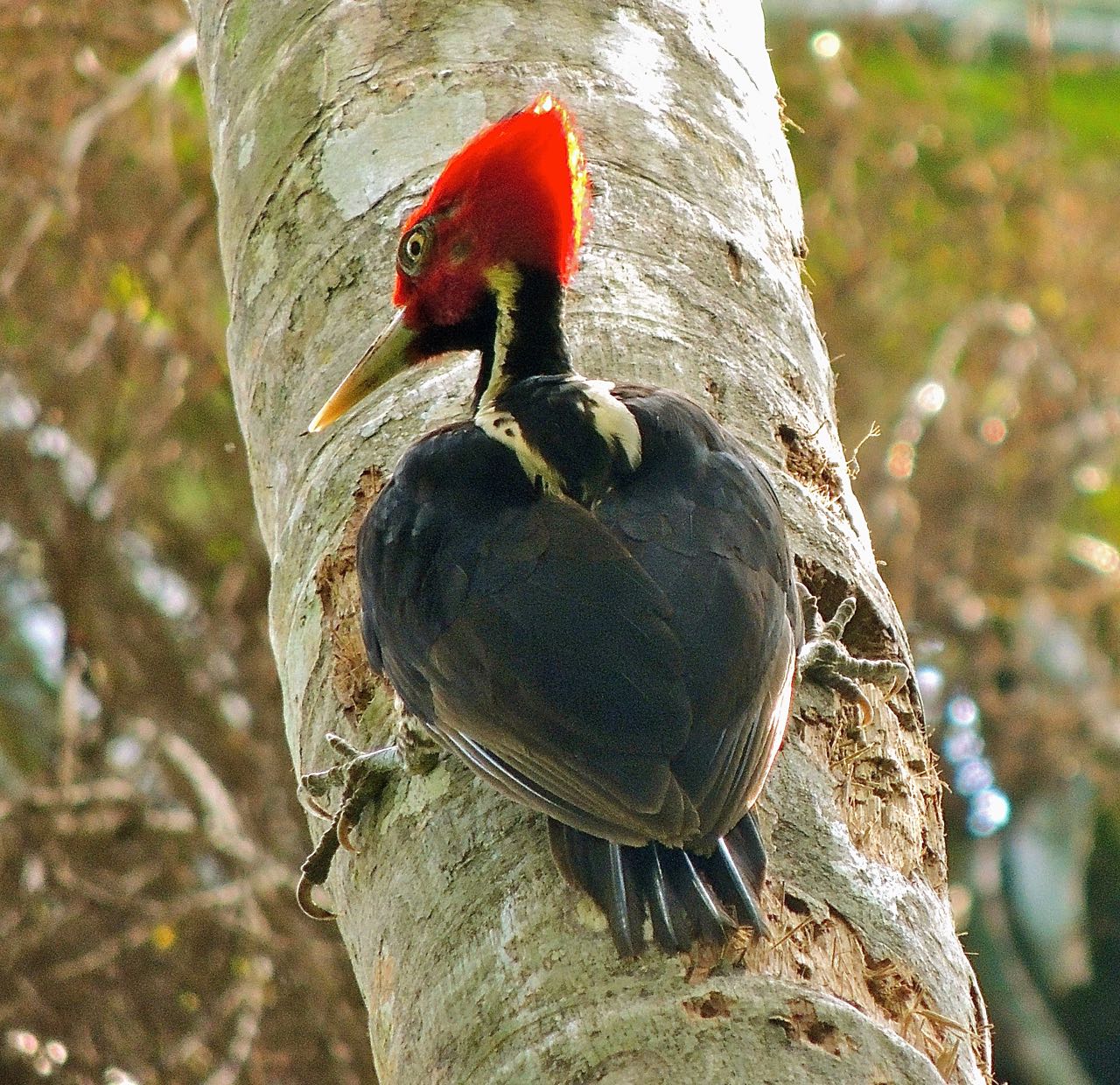 Pale-billed Woodpecker - Photo by William Young
Pale-billed Woodpecker - Photo by William Young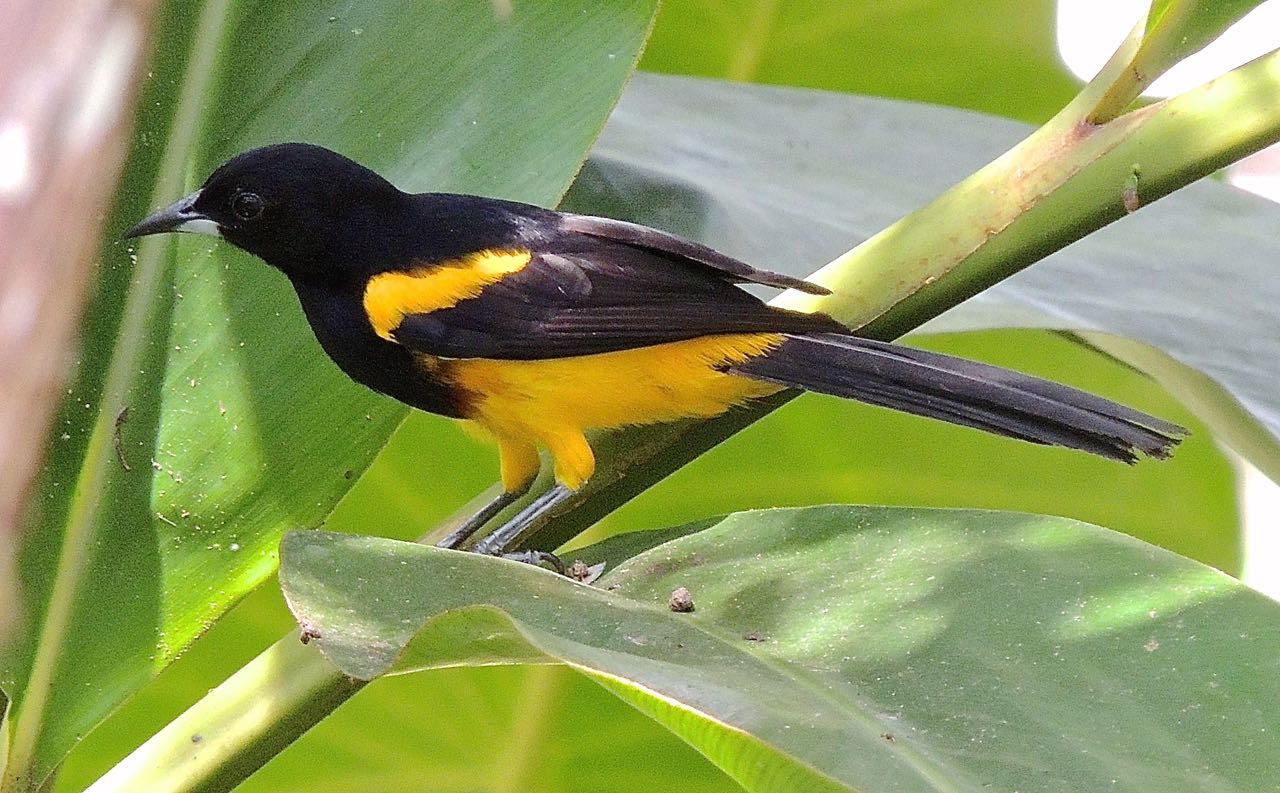 Black-cowled Oriole - Photo by William Young
Black-cowled Oriole - Photo by William YoungIn the late afternoon, we went to an area near the water which birds visit to drink and bathe. On the way down, we saw an Ovenbird and a Northern Waterthrush looking for food in the path. We saw a male Blue-black Grosbeak, whose body twitched each time he called. We arrived at the water at about 4:15 so that we would be in place when the show started. A Black-throated Shrike-Tanager perched over the water. When it left, its place was taken by a Gray-headed Tanager. A White-throated Thrush was nearby, along with a Gray Catbird. Hooded, Worm-eating, Chestnut-sided, and Black-and-white Warblers and a Northern Waterthrush were in the water as well. Two hummingbirds came down to drink — the Purple-crowned Fairy and the tiny Stripe-throated Hermit. We would have watched for a longer time, but the show was interrupted by a troupe of White-bellied Spider Monkeys crashing through the palm trees. They are remarkably acrobatic, using their long arms to swing on branches like trapeze artists. Each adult weighs about 17 pounds, about the same as one of the howler monkeys. A number of times, one of the spider monkeys stopped either directly above us or very close. We walked to the main road and looked at a Rose-throated Becard nest. Yesterday, it had been about half built. The becards must have been working hard during the past 24 hours, because the nest is now totally enclosed. It looks like a soccer ball covered with leaves.
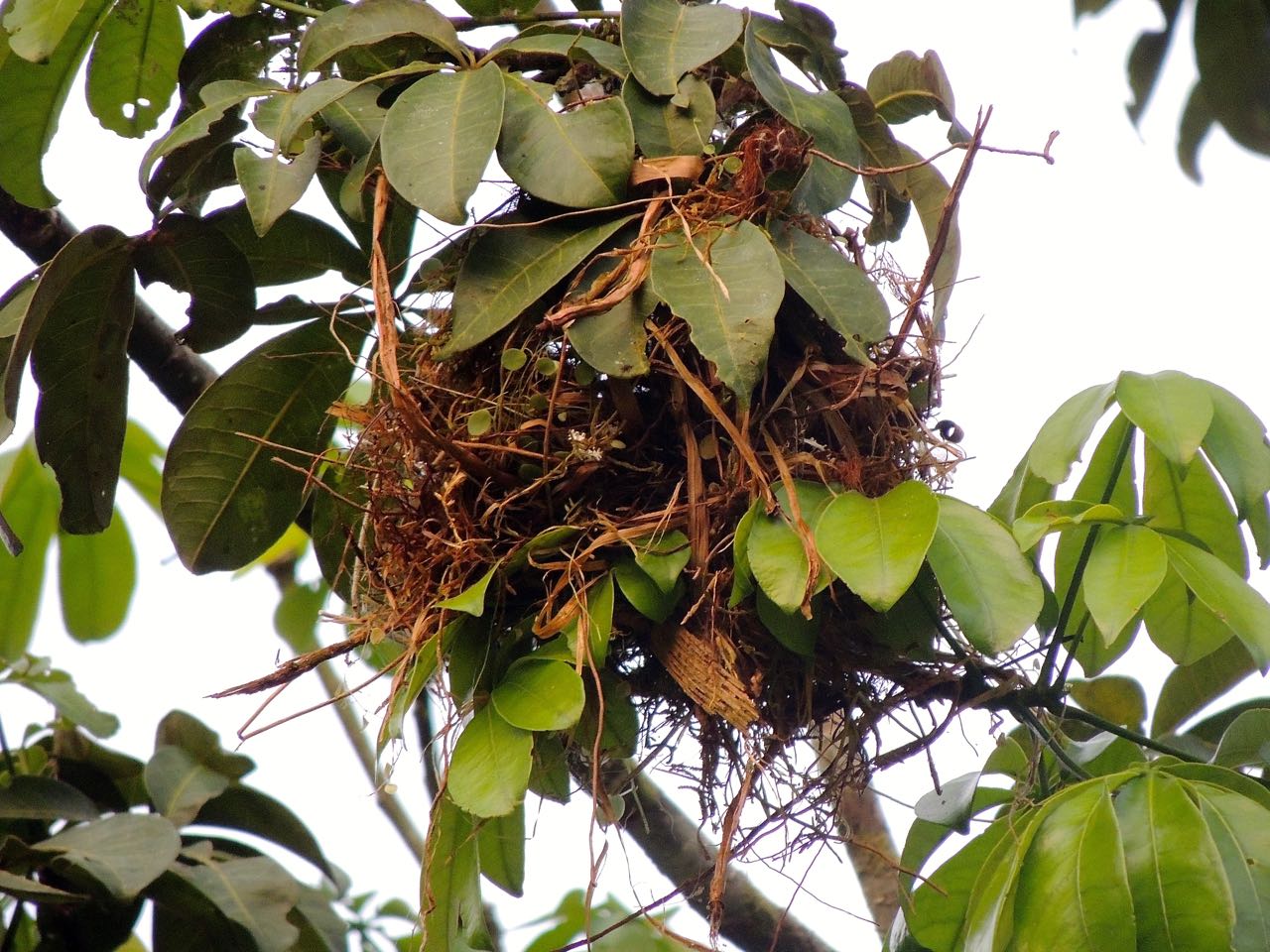 Rose-throated Becard Nest - Photo by William Young
Rose-throated Becard Nest - Photo by William YoungAfter dinner, we went spotlighting. Highlights were a Barn Owl sitting on a fencepost and a Bare-throated Tiger-Heron in a tree. We saw a Northern Potoo on a dead tree, lots of Pauraques on the road, and a Wood Thrush. The only two Wood Thrushes I have seen on the trip have been at night. The Northern Potoo used to be considered a subspecies of the Common, but now is considered a separate species. Other than the many White-tailed Deer in the fields, the only mammal we saw was a raccoon. When we got back, Pauraques were singing right outside the window of my cabana.
April 16This morning, I went with Luis to once again look for a Great Curassow. Conditions were foggy, and visibility was poor. We managed to find another dark morph female, and this one fed in the middle of the road for about three minutes before wandering into the woods. She walked slowly and deliberately, and she spread her tail the same way she does when protecting her young from the heat. We saw a perched Double-toothed Kite, who gets its name from a serration on its bill that looks like two teeth. The fog was burning off when we headed toward a Montezuma Oropendola colony. These nine-syllable birds were displaying and building nests. The nest is a large hanging sack that functions like an incubator. Leaves are in the bottom, and after the eggs are laid, the female does not spend much time sitting on them. The male has sky blue cheeks, pink wattles below the blue, and a black bill that is red toward the tip. Among the migrants we saw were a Yellow-billed Cuckoo, Eastern Wood-Pewee, and a lot of vocal Red-eyed Vireos. We saw a pair of Gartered Trogons mating. A Plumbeous Kite was perched in a tree, and its wing tips formed a V beyond its tail. It was standing on one leg, with its other red leg tucked up in its belly. I saw a couple more Ruddy Quail-Doves, but the only ones I have seen on this trip are fly-by's. I saw and heard a couple more raucous Brown Jays. A couple of White-tailed Deer were on one of the paths.
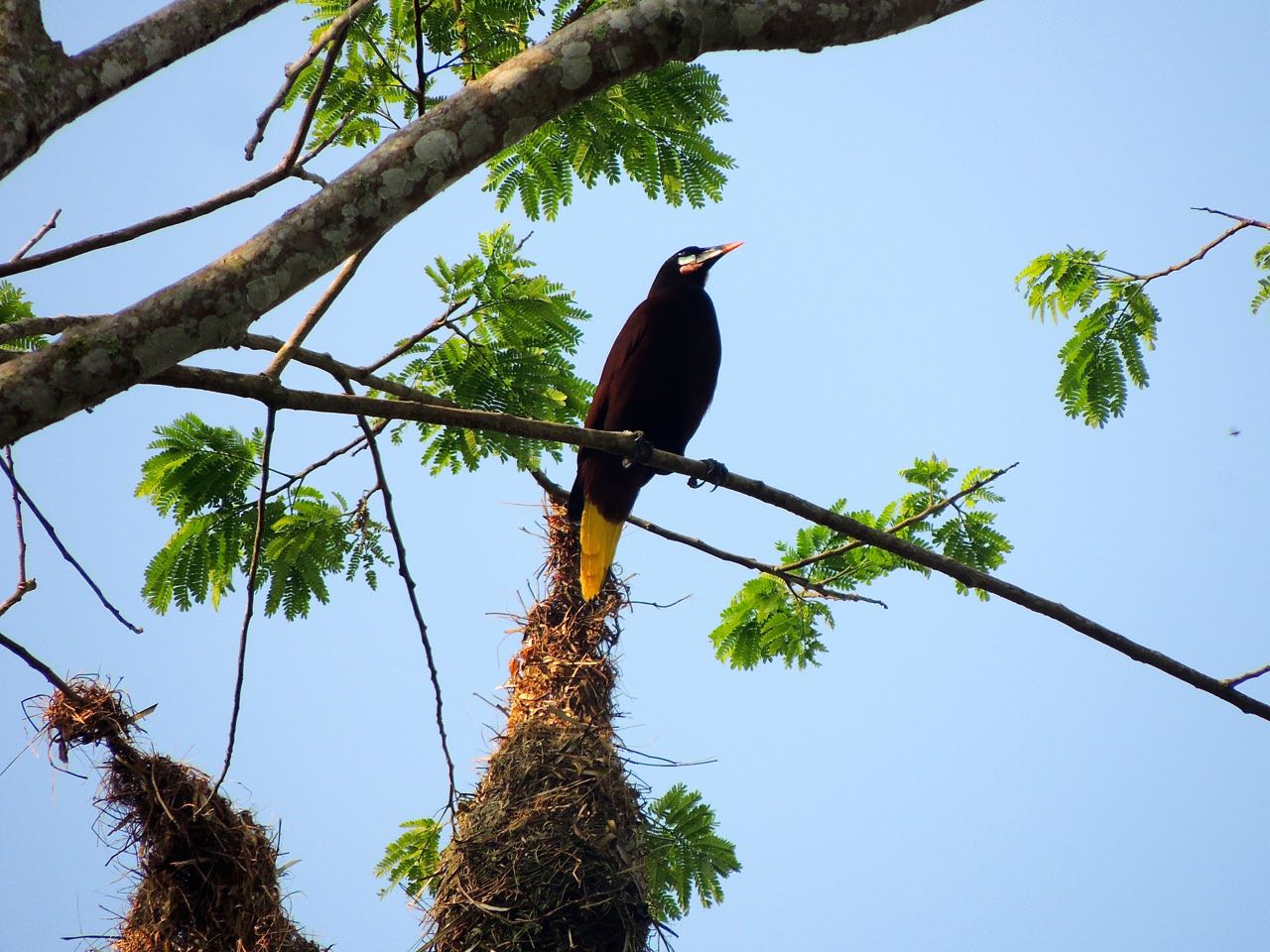 Montezuma Oropendola - Photo by William Young
Montezuma Oropendola - Photo by William Young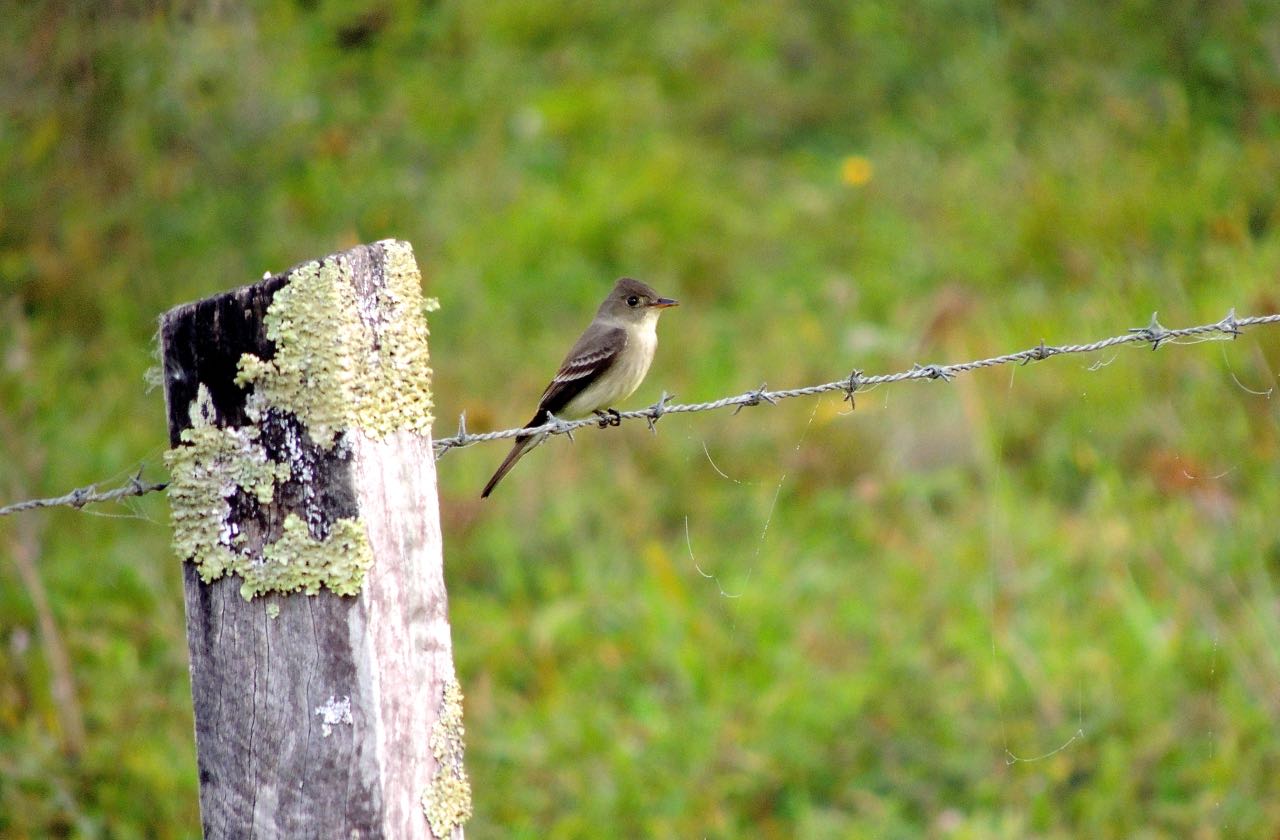 Eastern Wood-Pewee - Photo by William Young
Eastern Wood-Pewee - Photo by William Young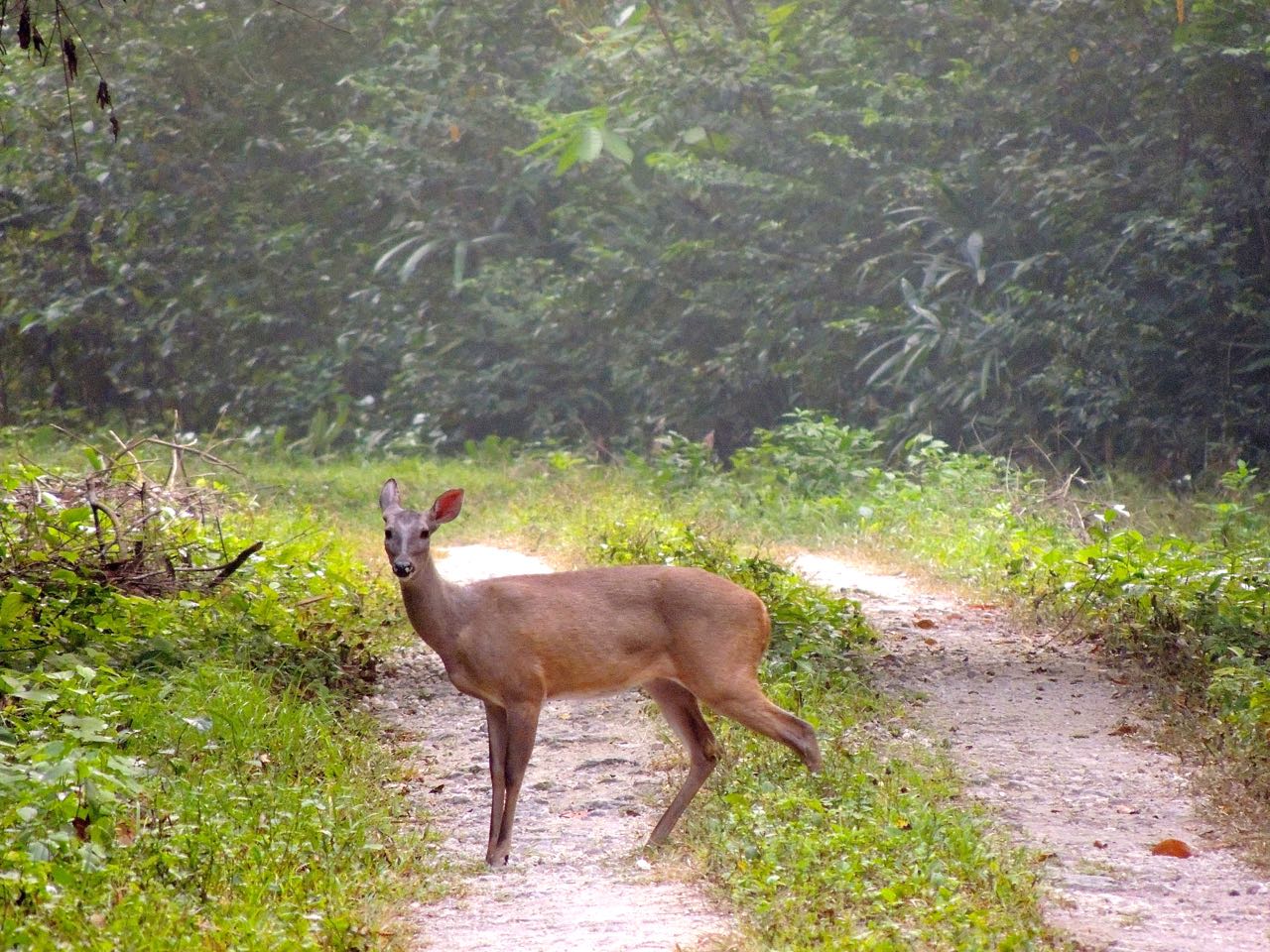 White-tailed Deer - Photo by William Young
White-tailed Deer - Photo by William YoungAfter breakfast, we stopped briefly to watch an Ocellated Turkey vocalizing. Another male we could not see responded every time the turkey near us vocalized. Luis said he knew where there was a nest of a Northern Royal Flycatcher. The crest on the male birds is round and red with black dots. I asked some of the guides if they have ever seen the crest erected, and most can count the number of times on one hand over the past couple of decades. This morning, Luis and I were looking at a perched male through our binoculars. The bird flew in our direction with his crest erected — an unforgettable moment. The area near the nest was productive. I watched a female Rufous-tailed Jacamar for about ten minutes in a telescope. I saw the bristles around her bill. I watched what she did while perched. Her eyes darted around a lot, and she occasionally sprang from the branch, grabbed a fly, and then returned to almost the same spot. In the same area was a Morelet's Crocodile, basking in the sun. A Black-and-white Warbler hopped around on a tree in front of us, while a Northern Waterthrush foraged near the bank of the stream. Before we went down to see these birds, we watched a pair of Brown-hooded Parrots.
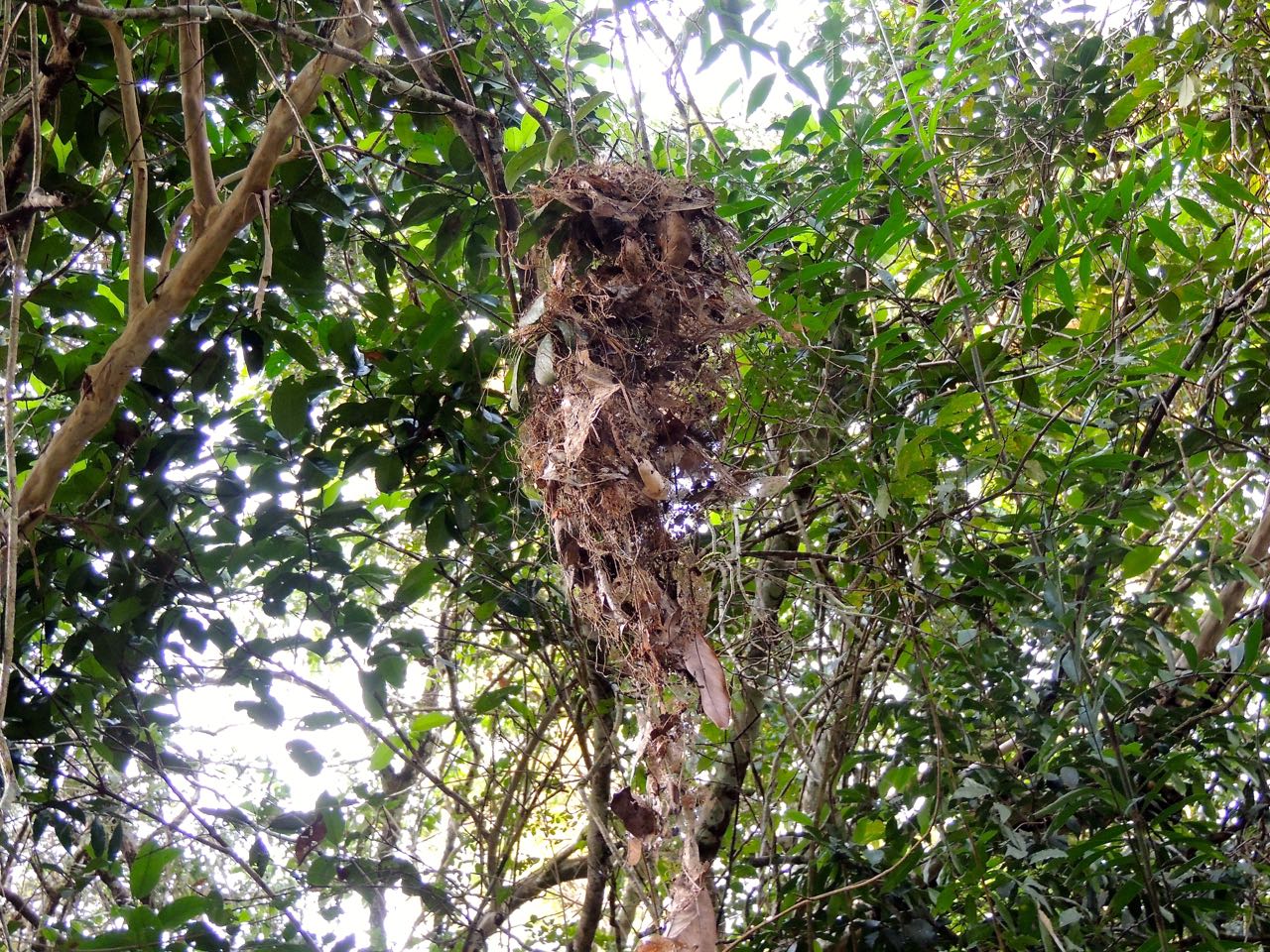 Northern Royal Flycatcher Nest - Photo by William Young
Northern Royal Flycatcher Nest - Photo by William Young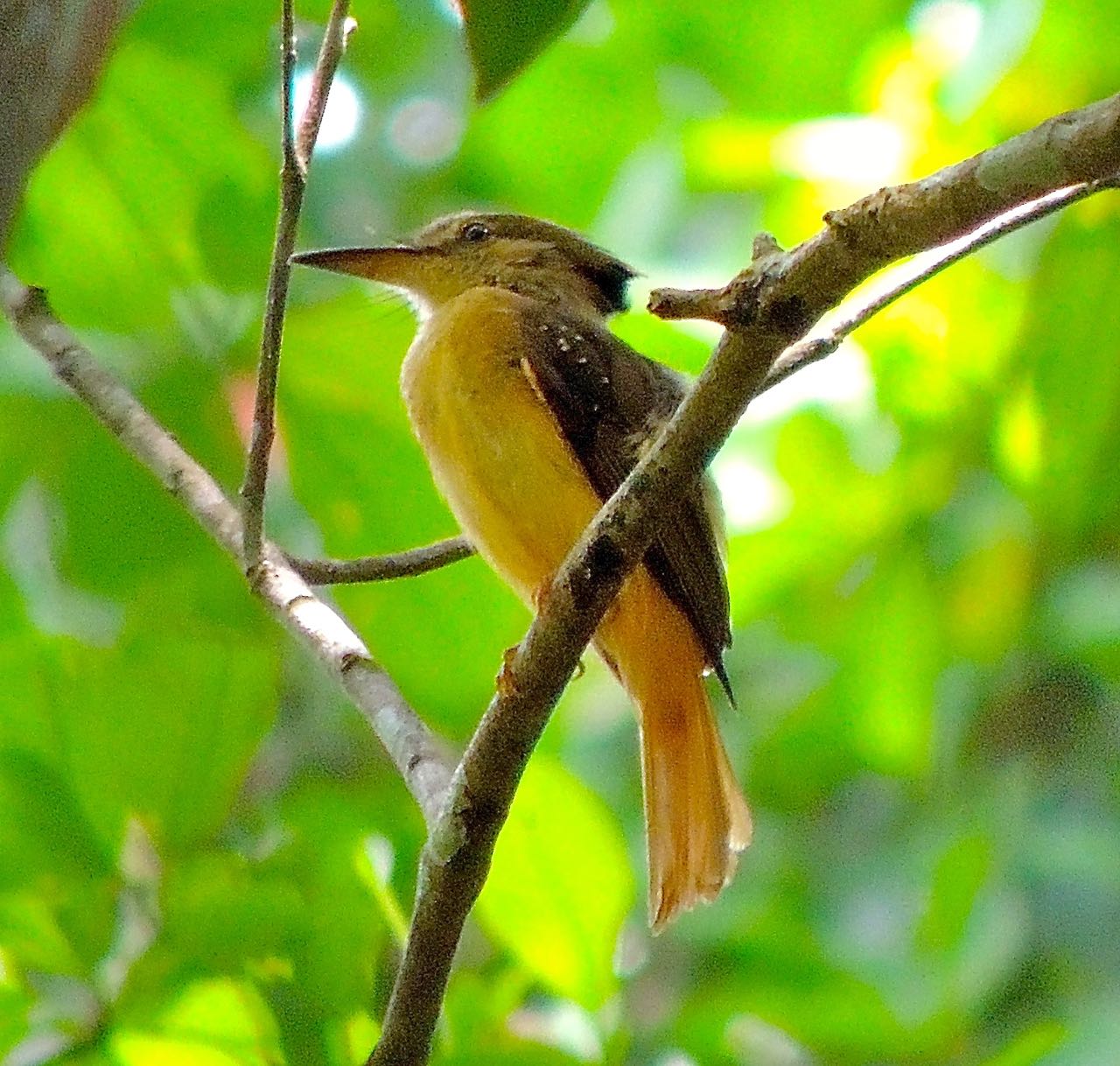 Northern Royal Flycatcher - Photo by William Young
Northern Royal Flycatcher - Photo by William Young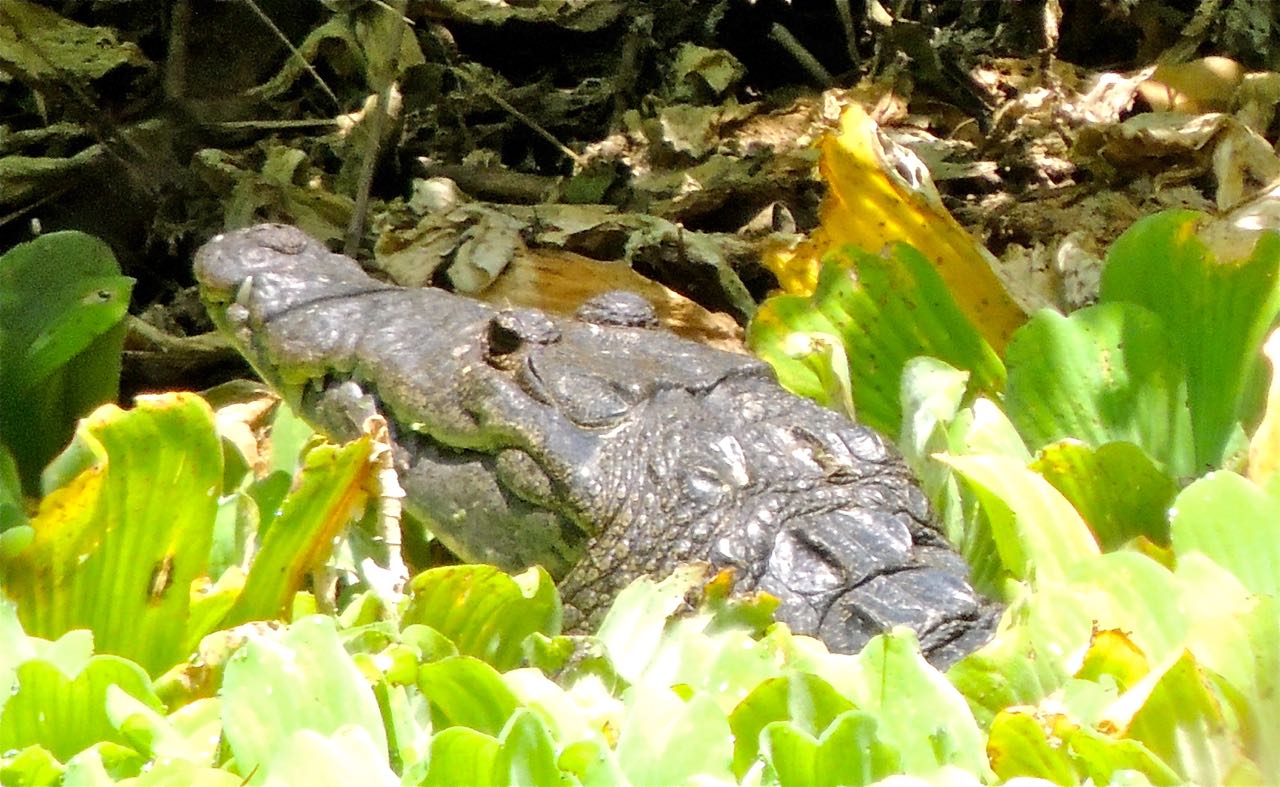 Morelet's Crocodile - Photo by William Young
Morelet's Crocodile - Photo by William YoungAt 3:30, I went with Gilberto to an area near a stream, but a different place from where we had gone yesterday. On the way, I saw a Golden-crowned Warbler hopping on a low branch less than ten feet away. I had not seen this species well yesterday, but today I saw the crown stripes and the yellow underparts. As we neared the water, we came upon a male and female Great Curassow who had just had a drink. The male is jet black. His bright yellow bill has a yellow knob on top. He also has a wild black crest. We then went to a bench and waited for birds to come. A female Black-and-white Warbler and a male American Redstart came first. Then a Wilson's Warbler popped into view, and he stuck around for about a half an hour, including a lot of time on bare branches right in front of us. A Kentucky Warbler and a female Hooded Warbler came down to bathe. Perhaps the highlight was seeing a male Red-capped Manakin on a branch displaying. I saw the bird moving on the branch, but I could not see the moonwalking with my naked eye. A young Roadside Hawk was streaked below and stayed on a branch over the water for awhile. I wonder if he was there to try to catch something that came down to drink. I am pretty sure I saw a Sepia-capped Flycatcher perched in front of us. It was a small flycatcher with a brown head contrasting its olive back. An Ochre-bellied Flycatcher stayed near the water for a long time, just like at Canopy Camp. I had a nice look at an Eye-ringed Flatbill and could see the eyering. A pair of Red-crowned Ant-Tanagers was in a bush, and they were joined by a Black-throated Shrike-Tanager. Toward the end of our big sit, a Purple-crowned Fairy came down to drink, and this elegant hummingbird appeared to be doing ballet over the water. As we were walking back to the main road, we saw and heard a Crested Guan in a tree.
April 17As I was getting ready to go out on my final morning trip, I heard amorous Ocellated Turkeys outside my cabana. I grabbed a shirt and my camera and ran out the door. I saw a male with his tail spread, showing the eyespots that are the basis of the species name. A male was mating with a female, but I had to leave about two minutes into the show so that I would not be late for my morning trip.
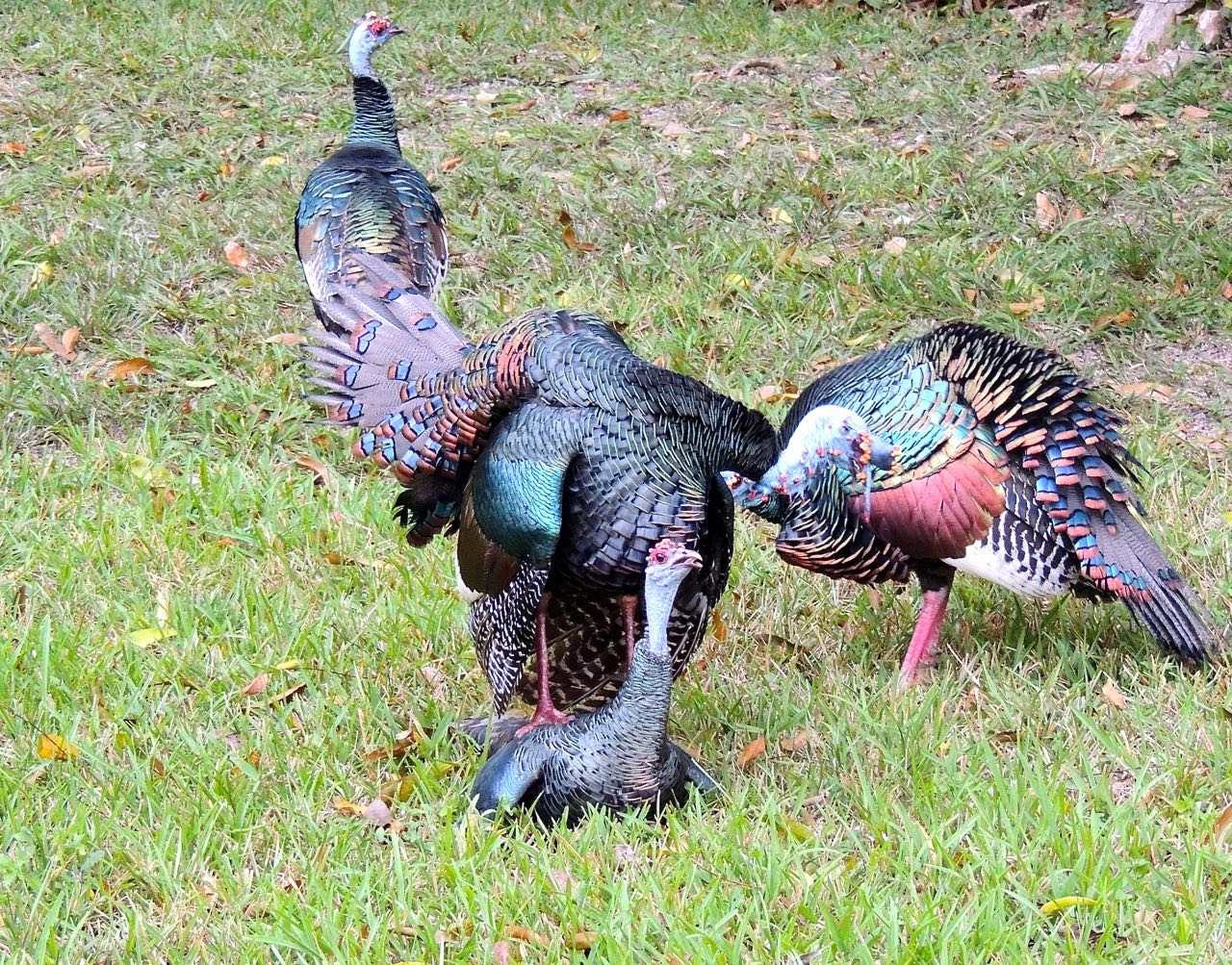 Ocellated Turkeys Mating - Photo by William Young
Ocellated Turkeys Mating - Photo by William YoungI took my final drive with Luis, who is very knowledgeable about many aspects of nature. Near the start of the drive, we saw a female Great Curassow and then a male and female. One often sees these birds right before they disappear into the woods, and that is how I saw all three this morning. We drove through the agricultural area, and Brown Jays were squawking loudly. They are larger than Blue Jays and have a white band on their tail. Cattle were grazing in the fields, and a lot of Cattle Egrets followed them. We stopped in an area where there was quite a bit of nesting activity. We saw two Gray-headed Dove chicks in a nest. A Boat-billed Flycatcher was building a nest in a tree that also had a pair of Rose-throated Becards building a nest, while a Masked Tityra was nearby. We later saw two nests of Northern Royal Flycatchers. We heard a Slaty-breasted Tinamou calling. Three Plain Chachalaca flew up off the road, and we saw another pair of Rufous-tailed Jacamars. I saw a Northern Bentbill, who looks and sounds like a Southern Bentbill. We heard a Rufous Piha.
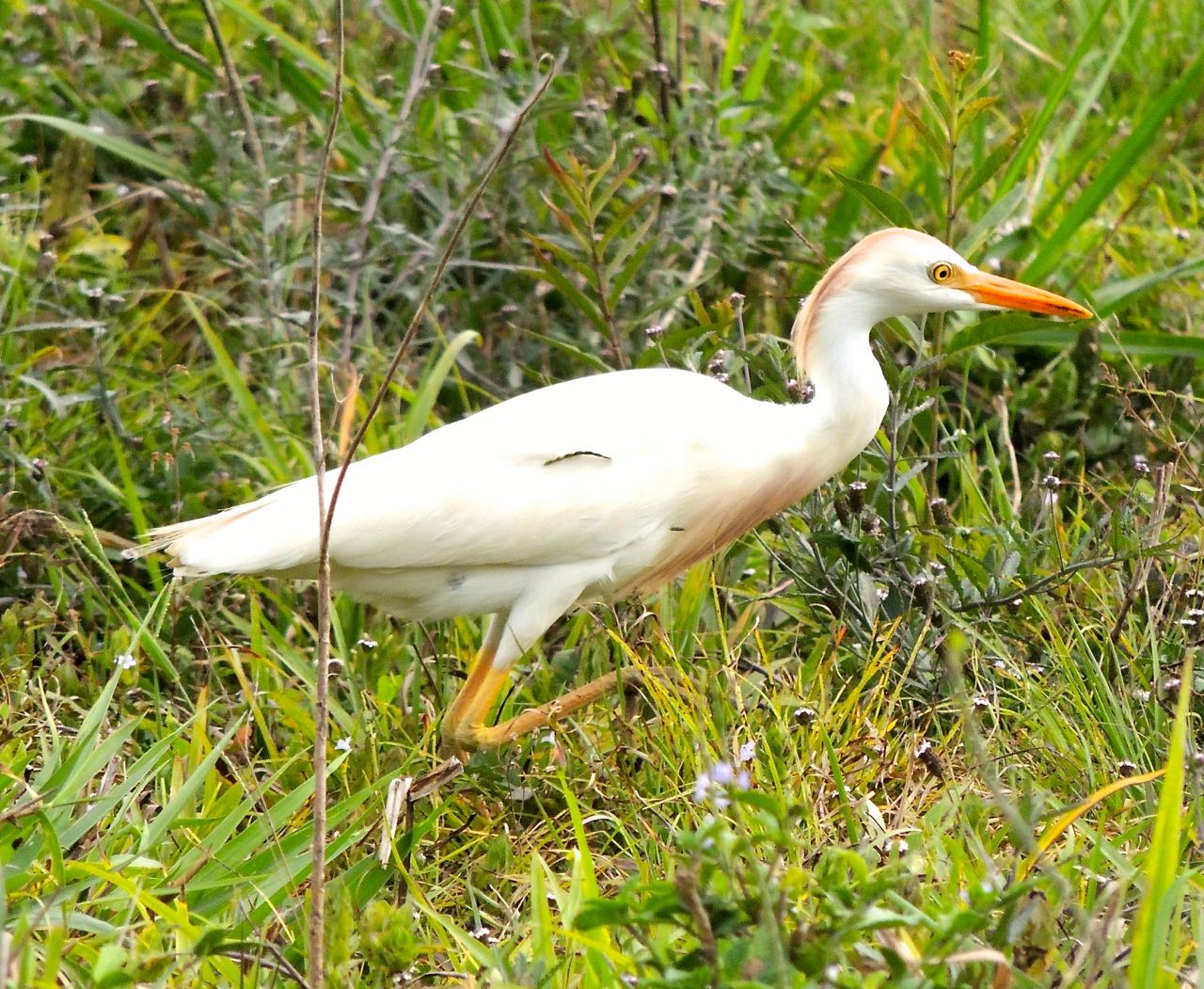 Cattle Egret - Photo by William Young
Cattle Egret - Photo by William YoungI ate breakfast quickly so that I could get back into the field. Some White-collared Seedeaters were in a flowering tree outside the main building. Luis took me to the place where I saw the bathing yesterday afternoon. While we were walking to the trail, we saw a male Hooded Warbler hopping not far from the road. We also found a Deppe's Squirrel trying to bite into a large nut. When we got to the water, we saw a male Northern Royal Flycatcher gathering nesting material. A Northern Waterthrush was looking for insects under leaves next to the water. We watched a Bright-rumped Attila bathing — they fly into the water and immediately fly back out, like the Red-eyed Vireos at Monticello Park. We saw a Green Shrike-Vireo and a Black-throated Shrike-Tanager. The latter species tends to be the leader in mixed flocks, so if one is around, you have a good chance of seeing other species. We found an Ivory-billed Woodcreeper, a species whose distinctive call I often heard. I have been trying to learn the Belize bird calls, and I probably can tell more than 50 percent of the calls I am hearing. A Double-toothed Kite was flying near the main road, and Luis showed me another in the scope. I saw the serration on the bill that is the basis for the name. When we headed back to the lodge for lunch, we passed the Hooded Warbler again. We saw a Tropical Rat Snake, who looks like a stick. And we saw an odd Striped Basilisk lizard who had a damaged tail. It grew a new tail, but most of the old tail was still attached, so he looked like he had a tuning fork on his back end.
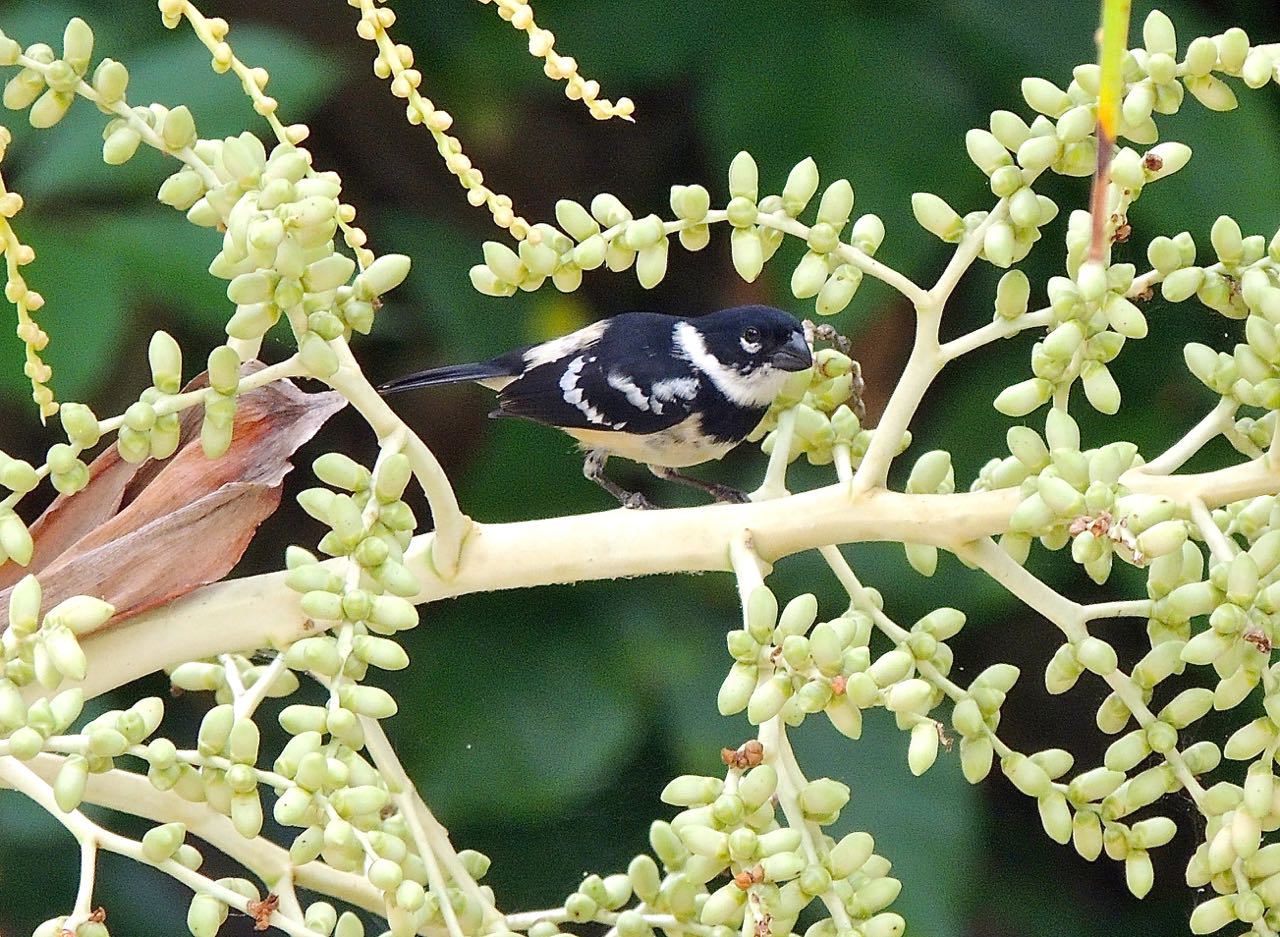 White-collared Seedeater - Photo by William Young
White-collared Seedeater - Photo by William Young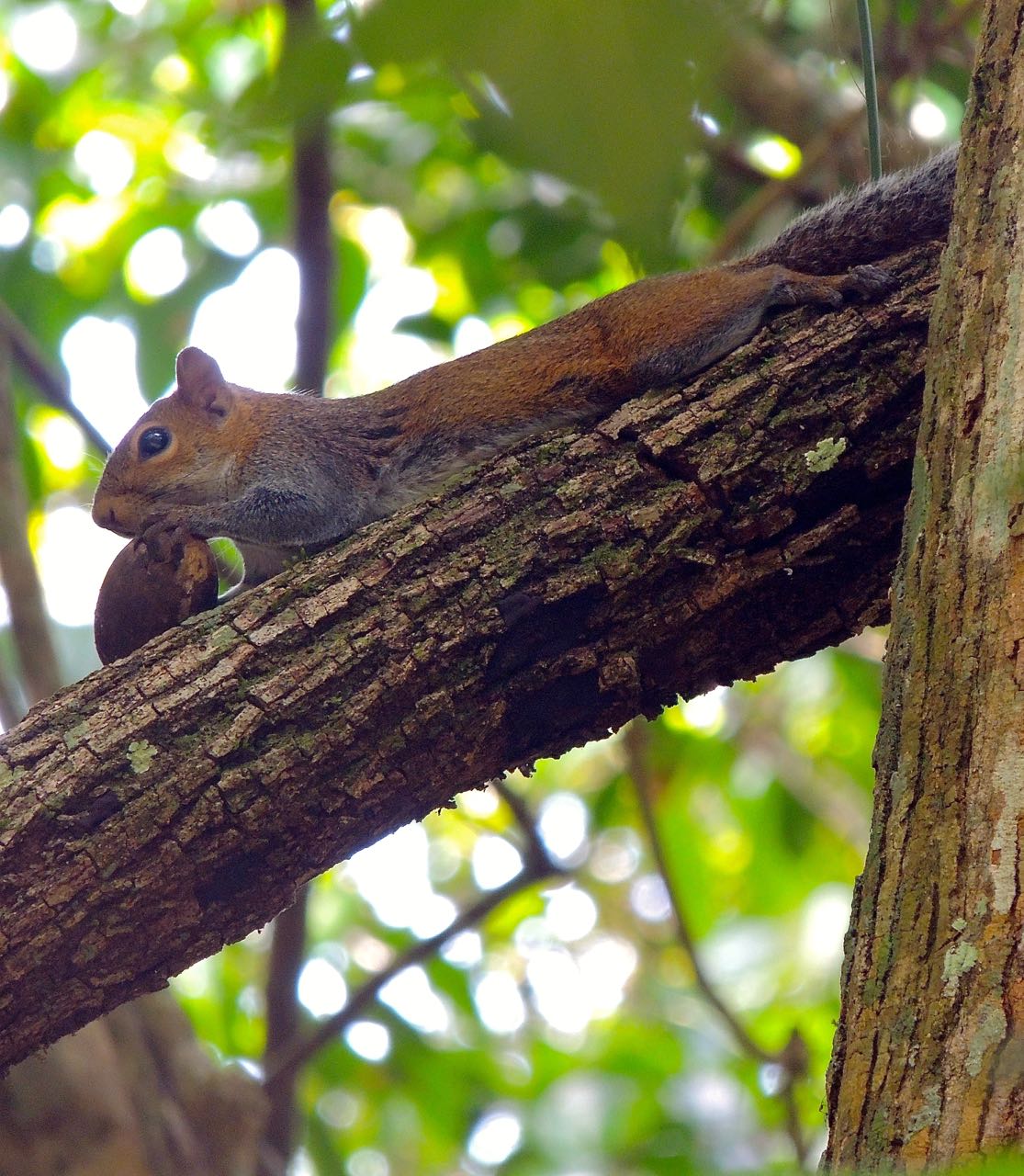 Deppe's Squirrel - Photo by William Young
Deppe's Squirrel - Photo by William Young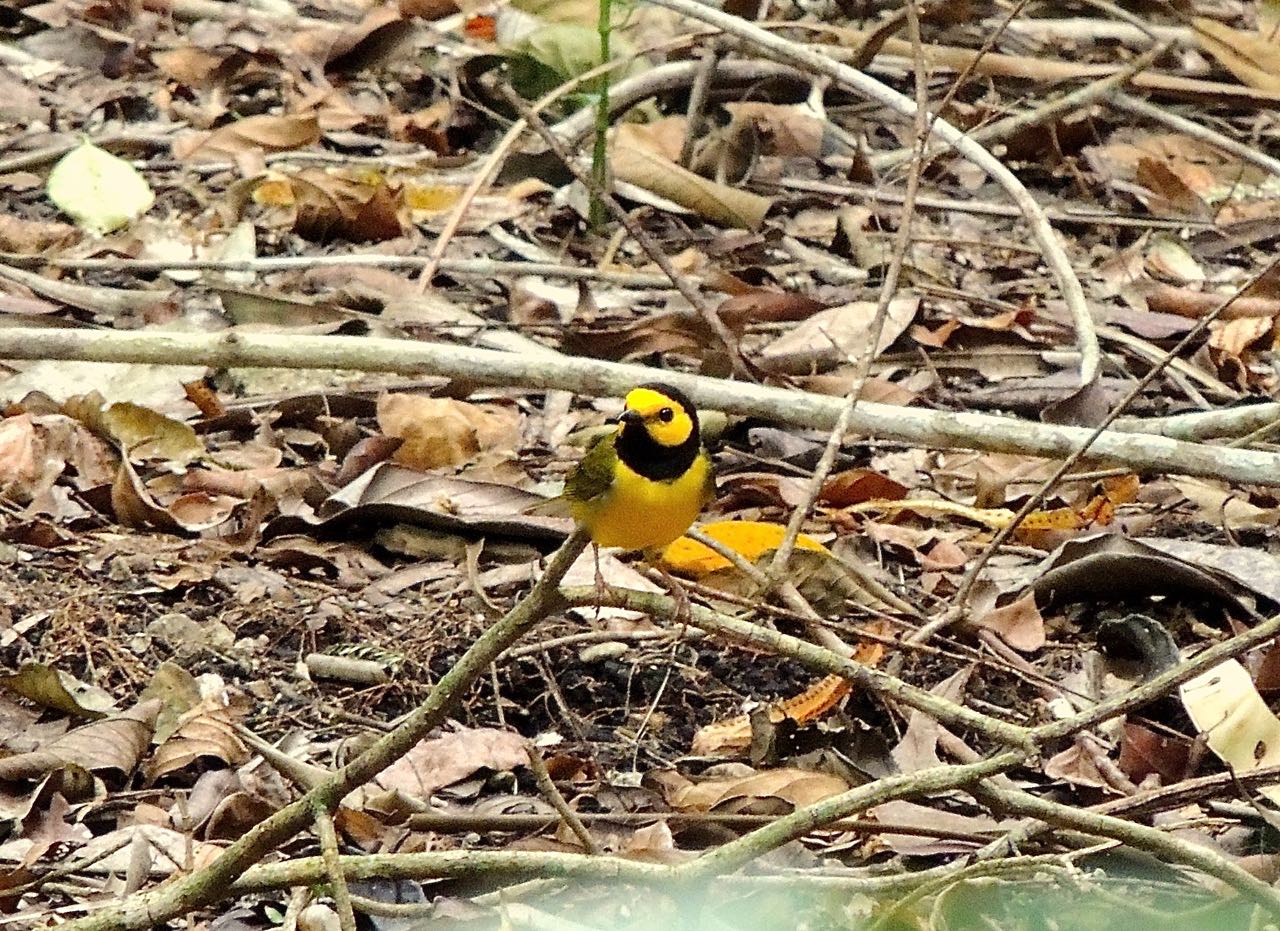 Hooded Warbler Male - Photo by William Young
Hooded Warbler Male - Photo by William Young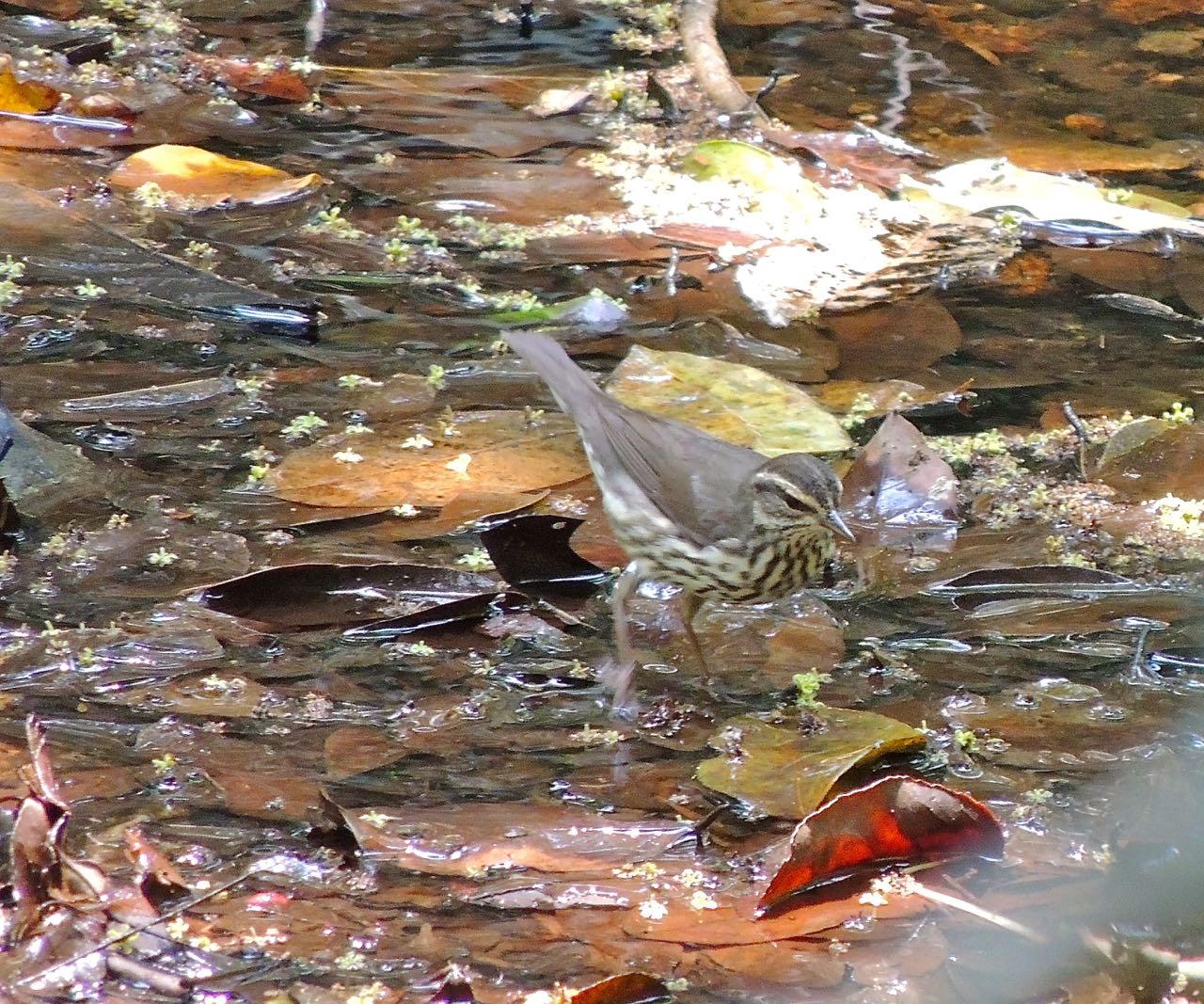 Northern Waterthrush - Photo by William Young
Northern Waterthrush - Photo by William Young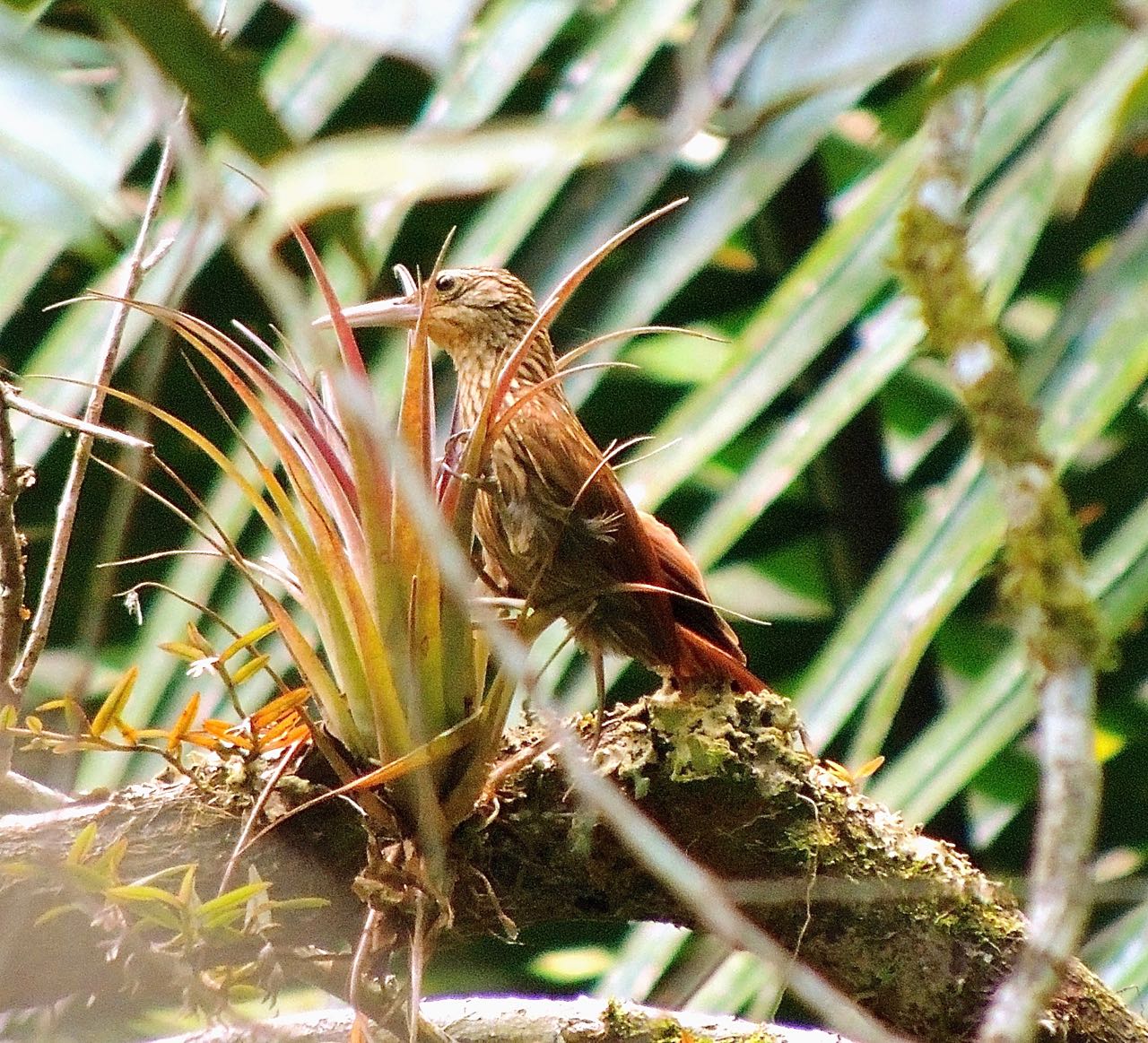 Ivory-billed Woodcreeper - Photo by William Young
Ivory-billed Woodcreeper - Photo by William Young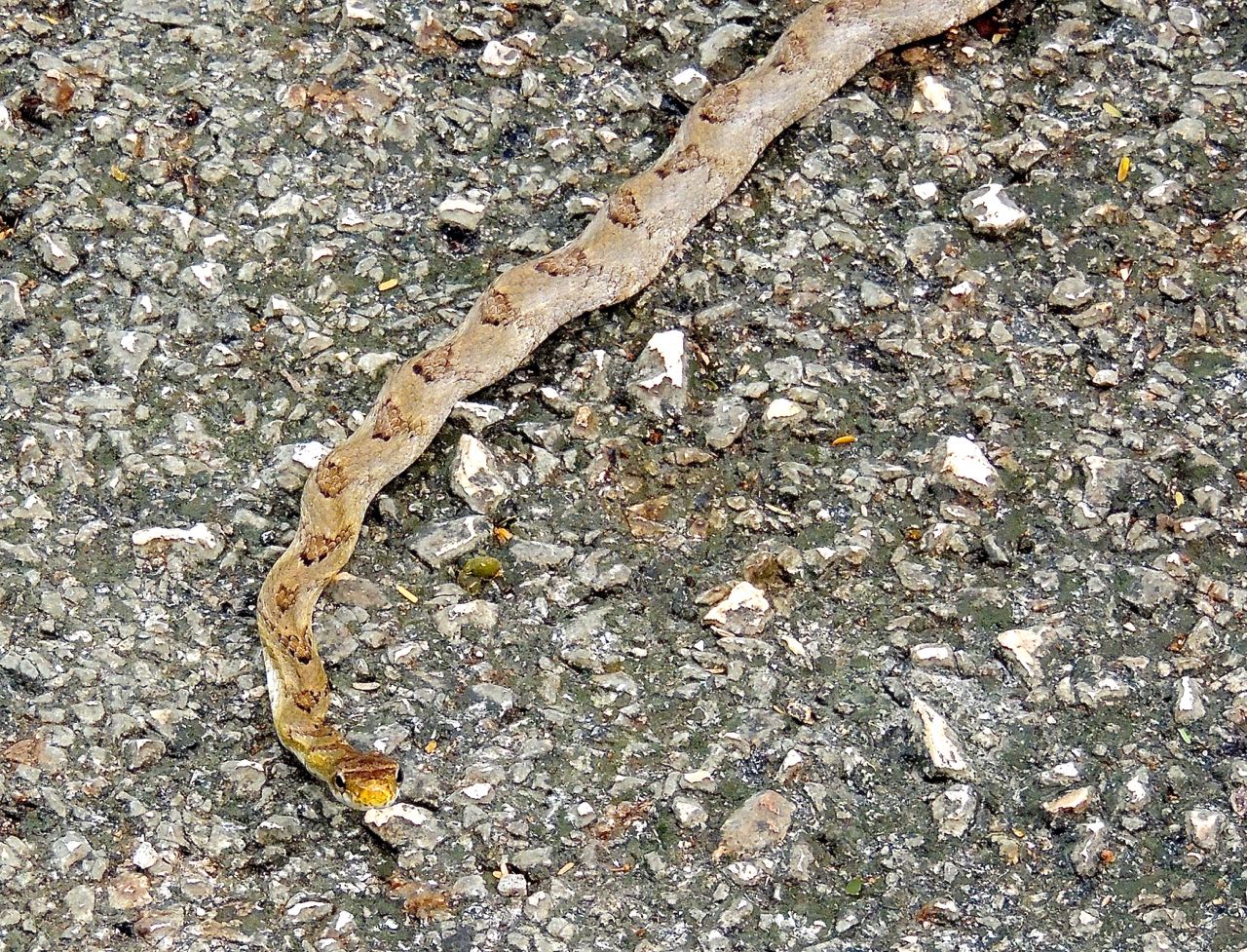 Tropical Rat Snake - Photo by William Young
Tropical Rat Snake - Photo by William Young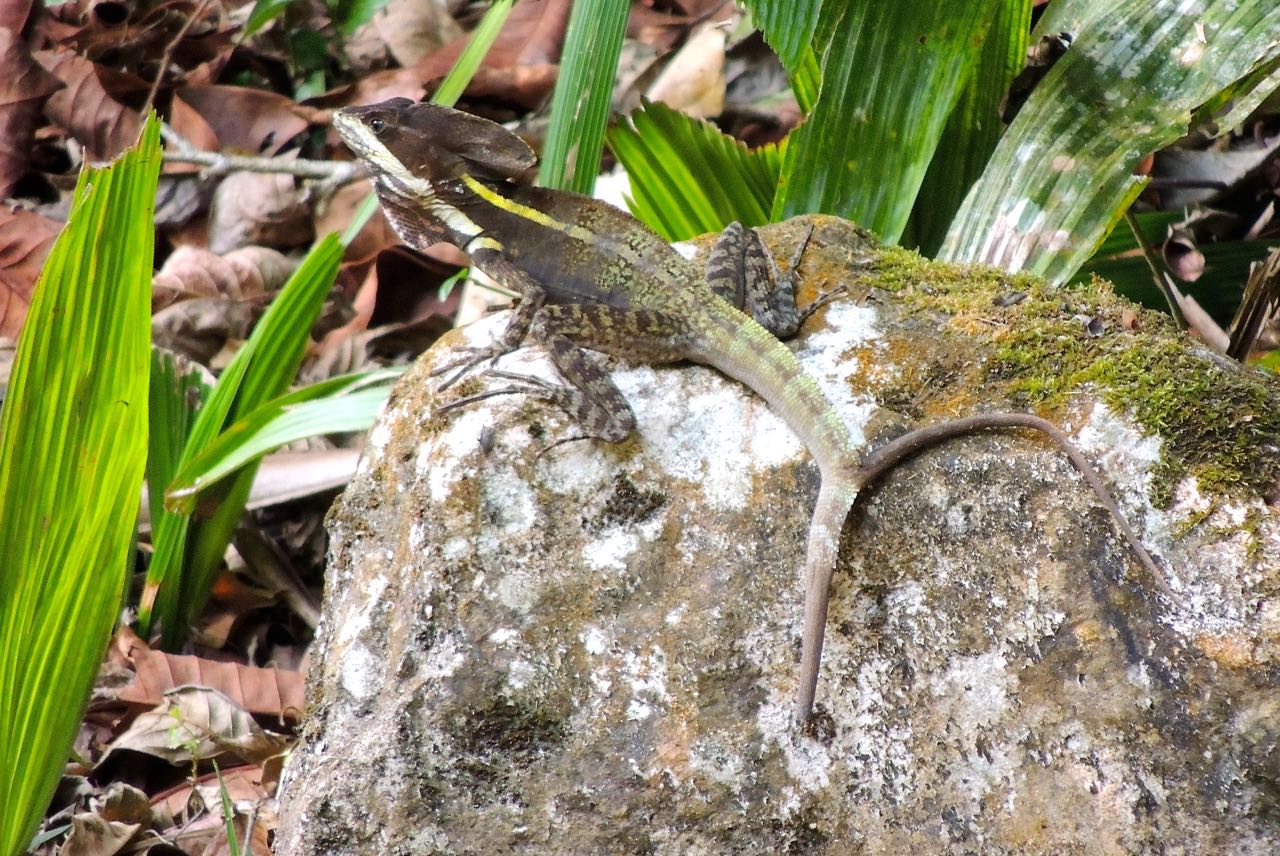 Striped Basilisk - Photo by William Young
Striped Basilisk - Photo by William YoungThis afternoon, I went back to the same spot that I had gone this morning and yesterday afternoon. A Green Kingfisher was by the road, and we later saw another one near where we were sitting. We saw a couple of White-crowned Parrots. The bathing took longer to begin than it did yesterday. A Kentucky Warbler came in for three separate baths. The female Hooded and male Wilson's Warblers also made a return appearance, as did the female Purple-crowned Fairy, who has a green head with no purple. An Ochre-bellied Flycatcher spent a lot of time near the water — they did that on Nando's Trail also. A Great Tinamou came very close, and I could hear how loud the call is. A pair of Red-crowned Ant-Tanagers came into the water. The female is brown, but the male is a lovely red. Just as the light was fading and we were about to leave, we heard a Scaly-throated Leaftosser, and I saw the bird fly. Sitting by the water was a very peaceful and relaxing way to spend my final excursion of this trip.
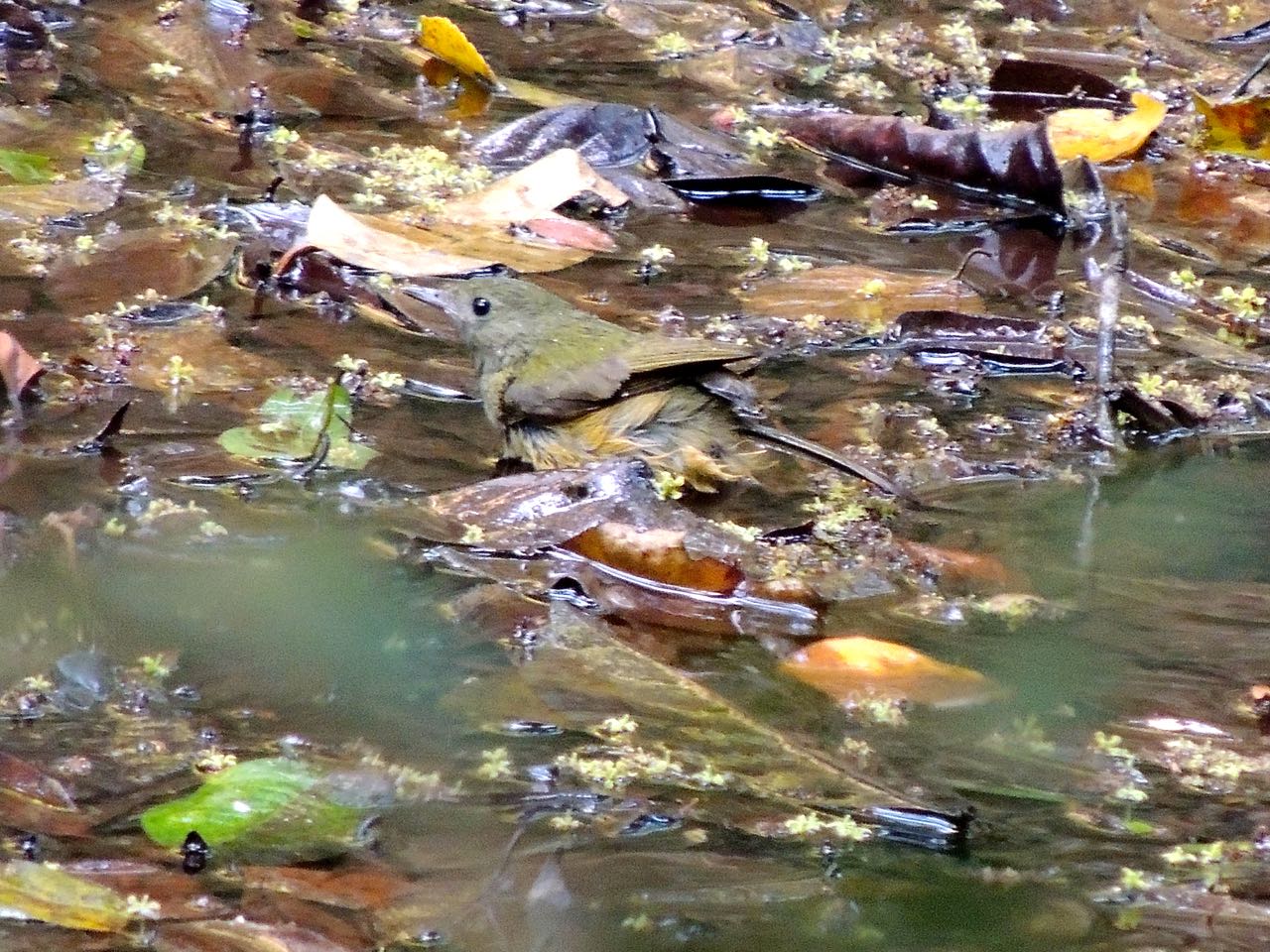 Ochre-bellied Flycatche - Photo by William Young
Ochre-bellied Flycatche - Photo by William YoungThe next morning, I would take a small plane to the airport in Belize City and catch my flight back to Washington, DC.